Litsea australis
Litsea reticulata
Livistona australis
Livistona benthamii
Livistona concinna
Livistona decora
Livistona drudei
Livistona fulva
Livistona humilis
Livistona inermis
Livistona lanuginosa
Livistona mariae
Livistona muelleri
Livistona nitida
Livistona rigida
Livistona victoriae
Lobelia anceps
Lobelia andrewsii
Lobelia gibbosa
Lobelia membranacea
Lobelia pedunculata
Lobelia purpurascens
Lobelia trigonocaulis
Logania albiflora
Logania pusilla
Lomandra banksii
Lomandra confertifolia
Lomandra elongata
Lomandra filiformis
Lomandra hystrix
Lomandra laxa
Lomandra leucocephala
Lomandra longifolia
Lomandra multiflora
Lomandra spicata
Lomatia arborescens
Lomatia fraseri
Lomatia silaifolia
Lophostemon confertus
Lophostemon suaveolens
Ludwigia octovalvis
Ludwigia peploides
Luffa aegyptiaca
Lumnitzera racemosa
Lunasia amara
Lycopodiella cernua
Lycopodiella lateralis
Lycopodiella serpentina
Lycopodium deuterodensum
Lycopus australis
Lygodium japonicum
Lygodium microphyllum
Lyperanthus suaveolens
Lysimachia japonica
Lythrum hyssopifolia
Lythrum salicaria

NCBG Coffs Harbour NSW
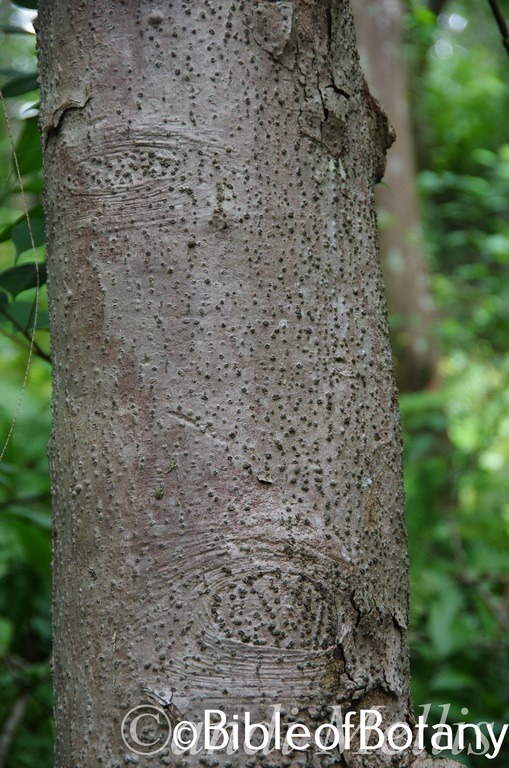
NCBG Coffs Harbour NSW
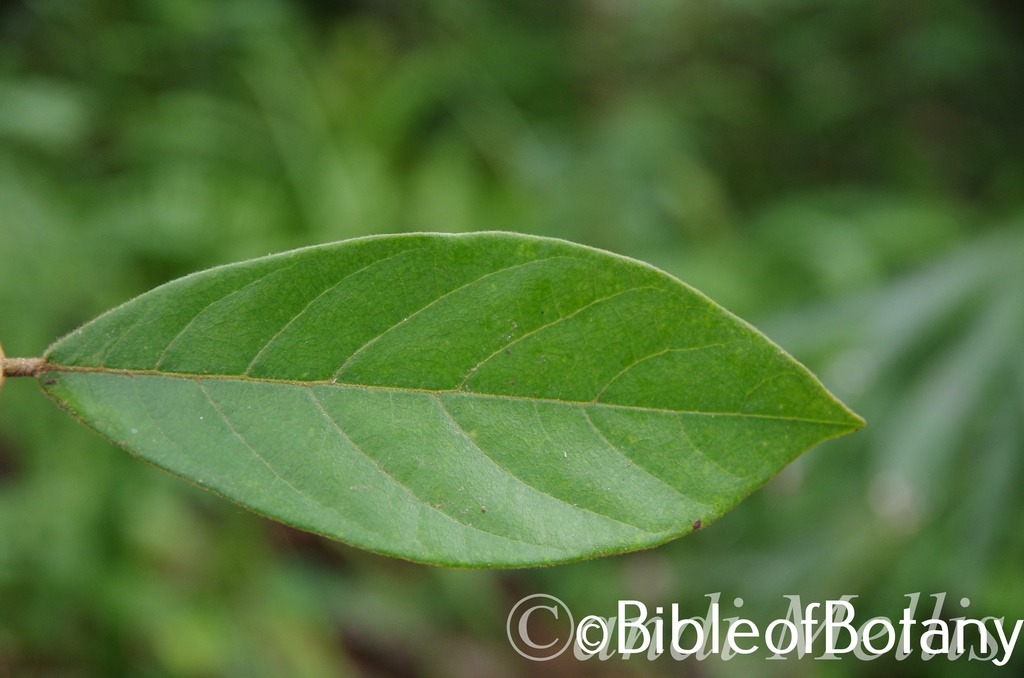
NCBG Coffs Harbour NSW
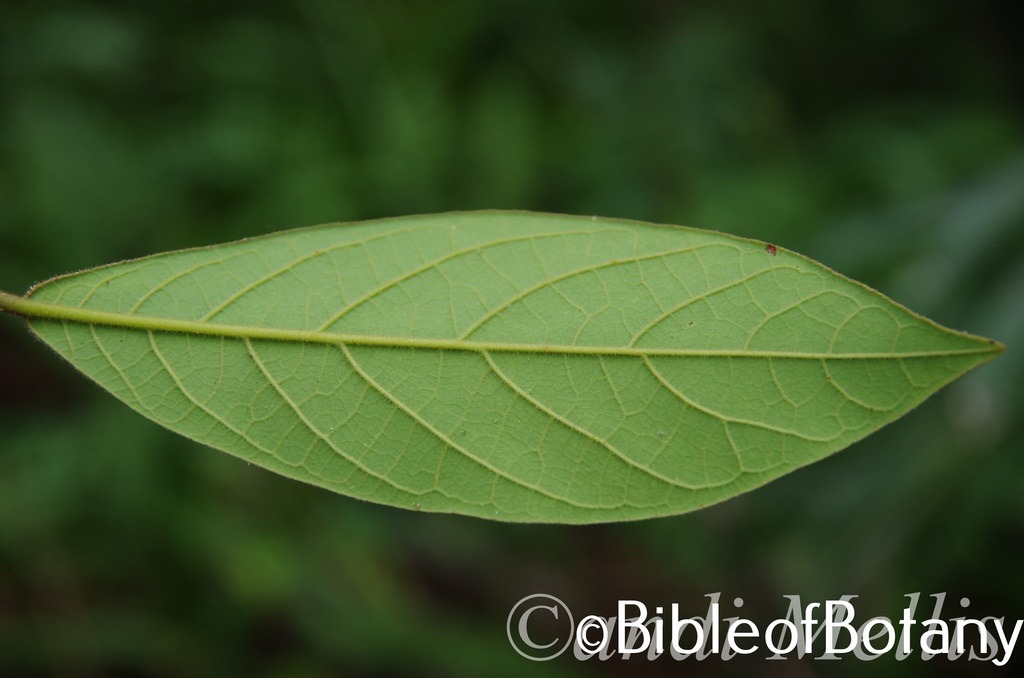
NCBG Coffs Harbour NSW
Litsea australis
Classification:
Unranked: Magnoliophyta
Class: Magnoliopsida
Order: Laurales
Family: Lauraceae
Genus: From Li, which is Latinized from the Chinese for xiao ? for small. However, from my association with Chinese (My wife and working in China) I consider that the Li ? here is Chinese for pretty or beautiful; unless from a, minority dialect, and Se ? could be for colour or Se ? not smooth or astringent to taste. It could refer to the beautiful patchwork bark with mosses and lichens found on wild trees or from the original named species like Litsea chinensis or Litsea cubeda which have beautiful pale yellow flowers, coupled with a magnificent scent of which I believe the latter is more accurate. If it is from small, it may refer to the beautiful faint scent on the small flowers.
Specie: From Terra Australis, which is Latin for land of the south. It refers to plants, which were first discovered from the land down under.
Sub species:
Common Name: Brown Bolly Gum.
Distribution:
Litsea australis is found east of the Great Dividing Range south from Fraser Island in central coastal Queensland to Foster in New South Wales.
https://avh.ala.org.au/occurrences/search?taxa=Litsea+australis#tab_mapView
Habitat Aspect Climate:
Litsea australis prefers full sun to partial shade. It grows in warmer well developed rainforests and littoral rainforests. The altitude ranges from 5 meters ASL to 250 meters ASL
The temperatures range from 1 degree in August to 38 degrees in January.
The rainfalls range from lows of 700mm to an average of 1600mm.
Soil Requirements:
Litsea australis prefers better quality loams to medium clays. The soils are derived from decomposed brown basalts or black basalts. The soils pH. ranges from 5.5pH to 7pH. It does not tolerate water logged soils. Non saline soils to moderately saline soils are tolerated.
Height & Spread:
Wild Plants: 15m to 20m by 6m to 8m.
Characteristics:
Litsea australis’s bark is scabrous, pale brown to grey-brown on the upper trunk and lower branches. The trunk has a scaly bark and is pitted and marked with small depressions. The trunk on older trees is slightly flanged at the base. The tan branchlets are glossy to semi glossy and covered in cream and tan lenticels. The buds and new growth are sparsely to moderately covered in rusty-brown hirtellous hairs.
Litsea australis’s alternate narrow elliptical to elliptical or oblanceolate leaves are variable on the one tree. They measure 60mm to 150mm in length by 20mm to 50mm in width. The petioles are sparsely to moderately covered in rusty-brown hirtellous hairs and measure 10mm to 15mm in length. The bases are broadly cuneate while the apexes are broadly acuminate. The discolourous laminas are mid green to deep sea-green and glabrous on the upper lamina while the lower lamina in paler and sparsely to moderately covered in rusty-brown hirtellous hairs. The hairs are denser along the main vein and lateral veins. The margins are entire, flat or curve slightly downwards from the mid vein and are undulating. The mid vein is strongly prominent on the lower lamina as are the lateral veins and is clearly visible on the upper lamina. The leaf margins are semi translucent.
The monoecious inflorescences of Litsea australis are born on short umbels from the leaf axils and along stems of the previous year’s leaf scars and measure 10mm to 20mm in length by 15mm to 25mm in diameter. The yellow-green bracts are cup shaped and sparsely to moderately covered in rusty-brown hirtellous hairs and measure 4mm to 5mm in length by 4mm to 5mm in width. The pedicels measure 3mm to 10mm in length.
The female flowers have yellow-green corollas and are covered in rusty-brown hirtellous hairs. They measure 3mm to 4mm in length by 1.5mm to 2mm in diameter near the apex. The 4 elliptical lobes have an acute apex and measure 3mm to 3.5mm in length by 1.5mm to 2mm in width. The yellow-green pistils measure 6mm to 7mm in length while the staminodes measure 1.5mm to 1.8mm in length.
The male flowers have yellow-green corollas and are covered in rusty-brown hirtellous hairs. They measure 2.5mm to 3.5mm in length by 2mm to 2.5mm in diameter near the apex. The 4 narrow elliptical lobes have an acute apex and measure 3.5mm to 4mm in length by 1.2mm to 1.7mm in width. The clavate stamens measure 2.2mm to 2.4mm in length including the 1.2mm to 1.4mm anthers.
Litsea australis’s fruit is an ellipsoidal drupe. Only one drupe will developed to maturity on each umbel. They measure 14mm to 17mm in length by 11mm to 14mm in diameter. The pale blue-green drupes turn a deep purple-black on ripening. The ellipsoidal grey-brown seeds measure 8mm to 9mm in length by 5mm to 6mm in diameter.
Wildlife:
Litsea australis’s flower’s nectar is sought after by numerous small nectar eating butterflies, native bees, native beetles, wasps and flies. The fruits are eaten by fruit eating doves and pigeons.
Cultivation:
Litsea australis should be more widely cultivated as it is an alternative food source for many fruit eating bird’s especially native pigeons. This would help eliminate the exotic privets which have become a real curse to farmers in coastal areas of northern New South Wales. They adapt well to riverine and riparian zones when mixed with Ligustrum australianum and Cryptocarya specie.
It is suitable for medium and large gardens close to the coast in warm temperate, sub tropical or tropical gardens. As garden subjects they will grow from 12 meters to 15 meters in height by 6 meters to 8 meters in diameter when grown in the open. It is cold tolerant to temperatures at least as low as minus 2 degrees once established.
They make very good park trees if given the chance having a dense canopy.
It is best placed in the background or planted centrally as a small feature tree in gardens surrounded by other small native shrubs. Placed at the rear of a bush garden it blends into the scene creating a forest scene in a few year from seed. It is relatively fast growing given a little moisture and a regular fertilizing program.
It is particularly suitable for growing in riparian zones where restoration work is needed urgently.
It is also very good bonsai plants or are very affective when highlighting the unusual trunk.
The branches of mature trees make good host plants for epiphytic ferns and orchids.
Propagation:
Seeds: Litsea australis seeds can be sown directly into a seed raising mix after roughing the sides with fine sandpaper to assist in germination. Cover the seeds with 15mm to 20mm of fine weed free mulch and keep moist. Place the tray in a warm sunny position. When the seedlings are 20mm to 30mm tall, prick them out and plant them into 50mm native tubes using a good organic mix.
Once the seedlings reach 100mm to 150mm in height they can be planted out into their permanent position.
Fertilize using seaweed, fish emulsion or organic chicken pellets soaked in water on an alternate basis. Fertilize every two months until the plants are established then twice annually in early September or March to maintain health, vitality and better flowering.
Further Comments from Readers:
“Hi reader, it seems you use The Bible of Botany a lot. That’s great as we have great pleasure in bringing it to you! It’s a little awkward for us to ask, but our first aim is to purchase land approximately 1,600 hectares to link several parcels of N.P. into one at The Pinnacles NSW Australia, but we need your help. We’re not salespeople. We’re amateur botanists who have dedicated over 30 years to saving the environment in a practical way. We depend on donations to reach our goal. If you donate just $5, the price of your coffee this Sunday, We can help to keep the planet alive in a real way and continue to bring you regular updates and features on Australian plants all in one Botanical Bible. Any support is greatly appreciated. Thank you.”
In the spirit of reconciliation we acknowledge the Bundjalung, Gumbaynggirr and Yaegl and all aboriginal nations throughout Australia and their connections to land, sea and community. We pay our respect to their Elders past, present and future for the pleasures we have gained.
Litsea reticulata
Classification:
Unranked: Magnoliophyta
Class: Magnoliopsida
Order: Laurales
Family: Lauraceae
Genus: From Li, which is Latinized from the Chinese for xiao? for small. However, from my association with Chinese (My wife and working in China) I consider that the Li?here is Chinese for pretty or beautiful; unless from a, minority dialect, and Se?could be for colour or Se ?not smooth or astringent to taste. It could refer to the beautiful patchwork bark with mosses and lichens found on wild trees or from the original named species like Litsea chinensis or Litsea cubeda which have beautiful pale yellow flowers, coupled with a magnificent scent of which I believe the latter is more accurate. If it is from small, it may refer to the beautiful faint scent on the small flowers.
Specie: From R?ticul?tum, which is Latin for a network. It refers to veins or nerves, which form a threadlike net between the main vein and lateral veins.
Sub species:
Common Name: Tall Bolly Gum.
Distribution:
Litsea reticulata is found in several disjunct populations on and east of the Great Dividing Range south from the Daintree National Park in far north eastern Queensland to Currowan State Forest in New South Wales.
https://avh.ala.org.au/occurrences/search?taxa=Litsea+reticulate#tab_mapView
Habitat Aspect Climate:
Litsea reticulata prefers full sun to partial shade. It grows in well-developed moist rainforests, moist littoral rainforests or moist riparian rainforests. The altitude ranges from 5 meters ASL to 600 meters ASL
The temperatures range from minus 2 degrees in August to 38 degrees in January.
The rainfalls range from lows of 700mm to an average of 3200mm.
Soil Requirements:
Litsea reticulata prefers to grow on better quality loams to medium clays. The soils are derived from decomposed sandstone, brown basalts or black basalts. The soils pH. ranges from 5pH to 7pH. It does not tolerate water logged soils. Non saline soils to moderately saline soils are tolerated.
Height & Spread:
Wild Plants: 30m to 40m by 8m to 10m.
Characteristics:
Litsea reticulata’s bark is scabrous, pinkish brown to grey-brown on the upper trunk and lower branches. The trunk has a glabrous bark which is pitted and marked with oval depressions. The trunk on older trees is slightly flanged at the base. The tan branchlets are glabrous. The buds and new growth are sparsely to moderately covered in rusty-brown hirtellous hairs.
Litsea reticulata’s alternate oblong-elliptical to oblong-obovate leaves are variable on the one tree. They measure 70mm to 100mm in length by 15mm to 40mm in width. The petioles are sparsely to moderately covered in rusty-brown hirtellous hairs and measure 5mm to 10mm in length. The bases are broadly cuneate to cuneate-rounded while the apexes are broadly obtuse. The concolourous laminas are mid olive green to deep sea-green and glabrous. The margins are entire and flat. The mid vein is prominent on the lower lamina while the lateral veins are slightly prominent on the lower lamina and are strongly reticulated. The leaf margins are semi translucent.
The monoecious inflorescences of Litsea reticulata are born on short umbels from the leaf axils or short panicles from the terminal shoots. The yellow-green bracts are cup shaped, glabrous and measure 4mm to 4.5mm in length by 4mm to 4.5mm in width. The bracts open expose male or female flowers. The pedicels measure 3mm to 8mm in length.
The female flowers have yellow-green corollas and are glabrous. They measure 2.5mm to 3mm in length by 1mm to 1.5mm in diameter near the apex. The 4 elliptical lobes have an acute apex and measure 2.5mm to 3mm in length by 1mm to 1.5mm in width. The yellow-green pistils measure 5mm to 6mm in length while the staminodes measure 1mm to 1.2mm in length.
The male flowers have yellow-green corollas and are covered in rusty-brown hirtellous hairs. They measure 2mm to 2.5mm in length by 1.8mm to 2mm in diameter near the apex. The 4 narrow elliptical lobes have an acute apex and measure 3mm to 3.5mm in length by 1mm to 1.2mm in width. The clavate stamens measure 2mm to 2.2mm in length including the 1mm to 1.2mm anthers.
Litsea reticulata’s fruit is an ellipsoidal drupe. Only one drupe, develops to maturity on each umbel. They measure 12mm to 14mm in length by 7mm to 9mm in diameter. The pale blue-green drupes turn a deep purple-black on ripening. The ellipsoidal grey-brown seeds measure 9mm to 11mm in length by 5mm to 6mm in diameter.
Wildlife:
Litsea reticulata’s nectar is sought after by numerous small nectar eating butterflies, native bees, native beetles, wasps and flies.
The fruits are eaten by fruit eating doves and pigeons.
Cultivation:
Litsea reticulata should be more widely cultivated as it is an alternative food source to the exotic privet for many fruit eating birds especially native pigeons. This would help eliminate the exotic privets which have become a real curse to farmers in coastal areas of northern New South Wales. It adapts well to riverine and riparian zones when mixed with Ligustrum australianum, Litsea australis and Cryptocarias specie.
It is suitable for large gardens close to the coast in warm temperate, sub tropical or tropical gardens. As garden subjects they will grow from 16 meters to 20 meters in height by 8 meters to 12 meters in diameter when grown in the open. It is cold tolerant to temperatures at least as low as minus 2 degrees once established.
It makes very good park trees if given the chance having a dense canopy.
It is best placed in the background or planted centrally as a small feature tree in gardens surrounded by other small native shrubs. Placed at the rear of a bush garden they will blend into the scene creating a forest scene in a few years from seed. It is relatively fast growing given a little moisture and a regular fertilizing program.
It would be particularly suitable for growing in riparian zones where restoration work is needed urgently.
It is also very good bonsai plants or is very affective when highlighting the unusual trunk.
Propagation:
Seeds: Litsea reticulata seeds can be sown directly into a seed raising mix after roughing the sides with fine sandpaper to assist in germination. Cover the seeds with 15mm to 20mm of fine weed free mulch and keep moist. Place the tray in a warm sunny position. When the seedlings are 20mm to 30mm tall, prick them out and plant them into 50mm native tubes using a good organic mix.
Once the seedlings reach 100mm to 150mm in height they can be planted out into their permanent position.
Fertilize using seaweed, fish emulsion or organic chicken pellets soaked in water on an alternate basis. Fertilize every two months until the plants are established then twice annually in early September or March to maintain health, vitality and better flowering.
Further Comments from Readers:
“Hi reader, it seems you use The Bible of Botany a lot. That’s great as we have great pleasure in bringing it to you! It’s a little awkward for us to ask, but our first aim is to purchase land approximately 1,600 hectares to link several parcels of N.P. into one at The Pinnacles NSW Australia, but we need your help. We’re not salespeople. We’re amateur botanists who have dedicated over 30 years to saving the environment in a practical way. We depend on donations to reach our goal. If you donate just $5, the price of your coffee this Sunday, We can help to keep the planet alive in a real way and continue to bring you regular updates and features on Australian plants all in one Botanical Bible. Any support is greatly appreciated. Thank you.”
In the spirit of reconciliation we acknowledge the Bundjalung, Gumbaynggirr and Yaegl and all aboriginal nations throughout Australia and their connections to land, sea and community. We pay our respect to their Elders past, present and future for the pleasures we have gained.
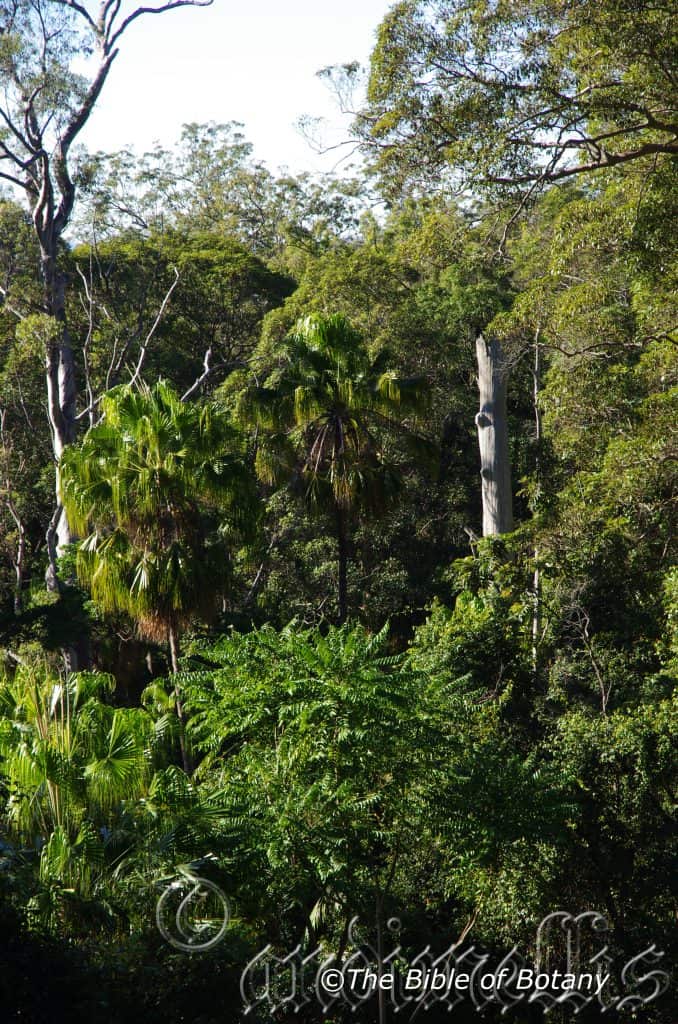
Ewingar State Forest NSW

Mount Nebo Qld.
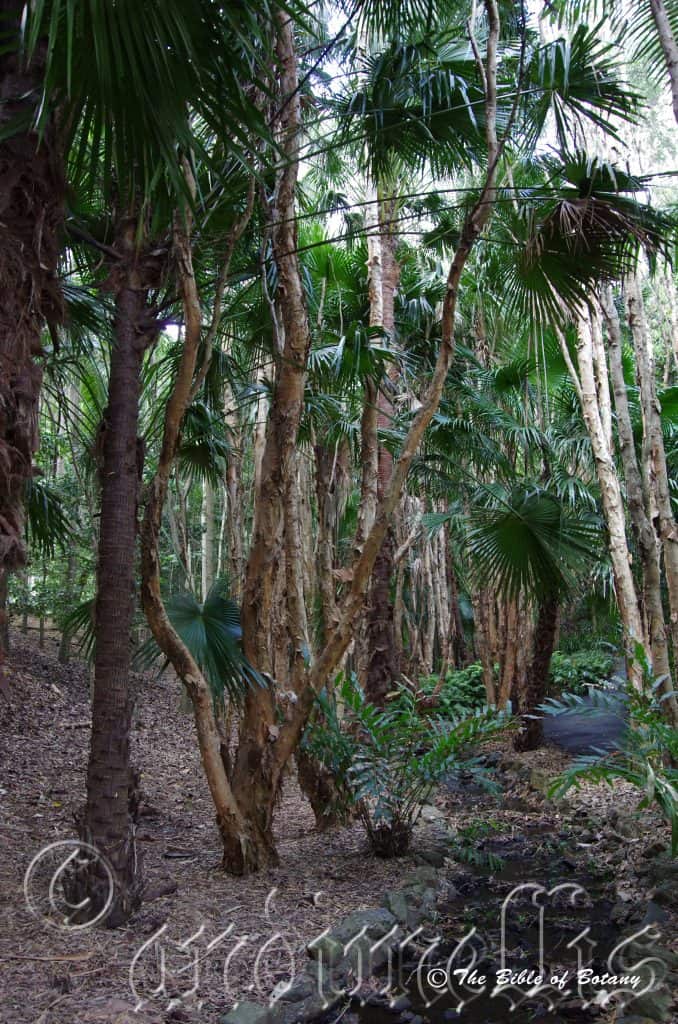
Mount Cootha Botanic Gardens Qld.

Rosser Gardens Benowa Qld.
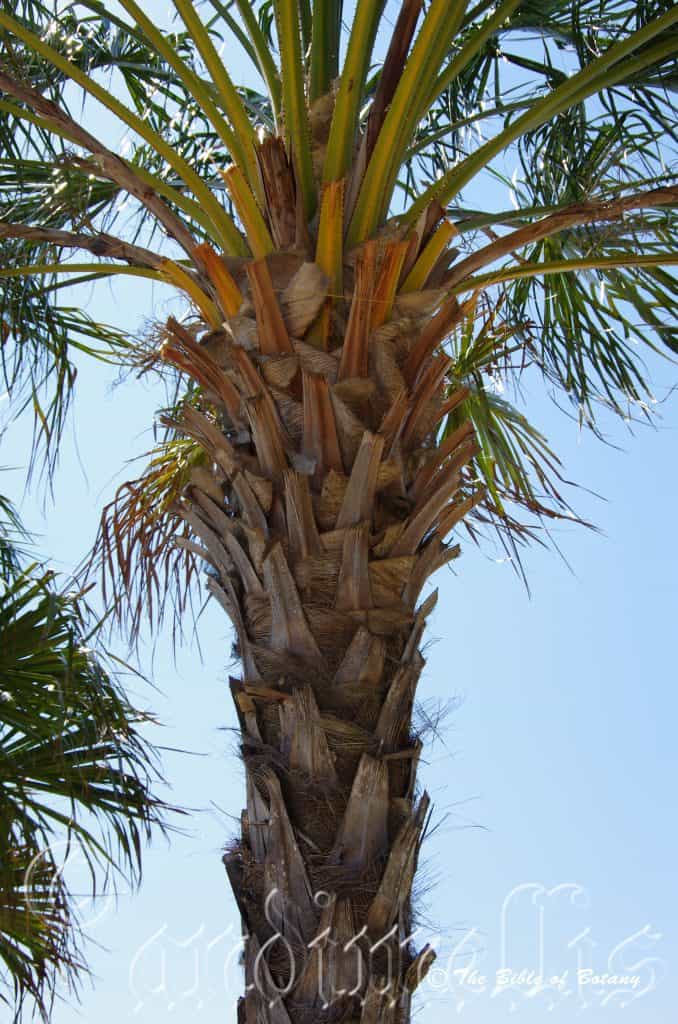
Wynumm Foreshore Qld.
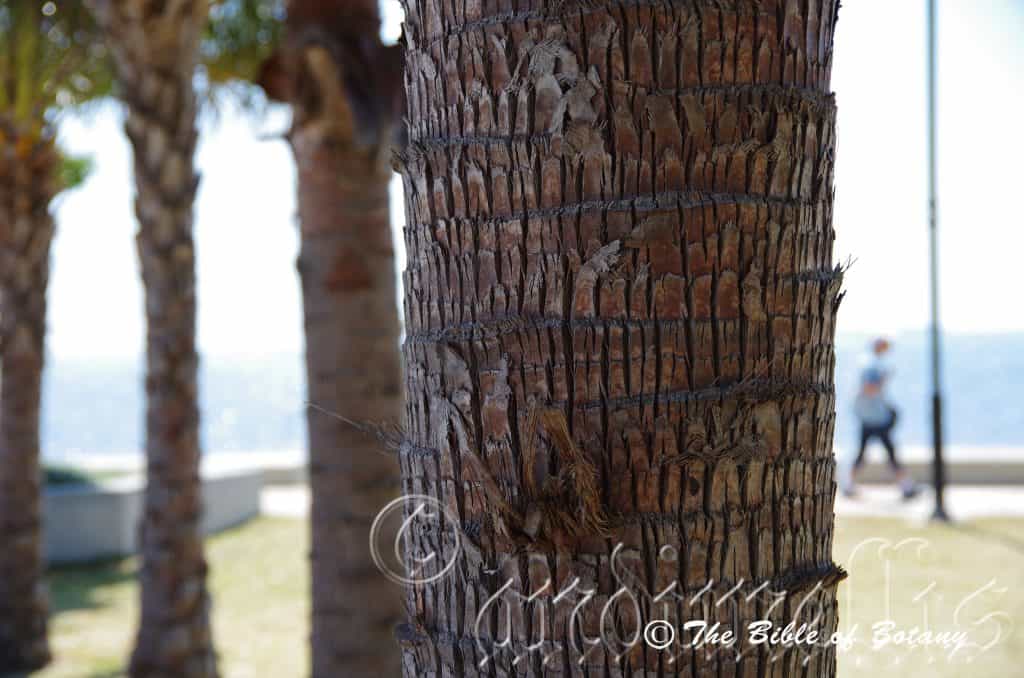
Wynumm Foreshore Qld.

Wynumm Foreshore Qld.
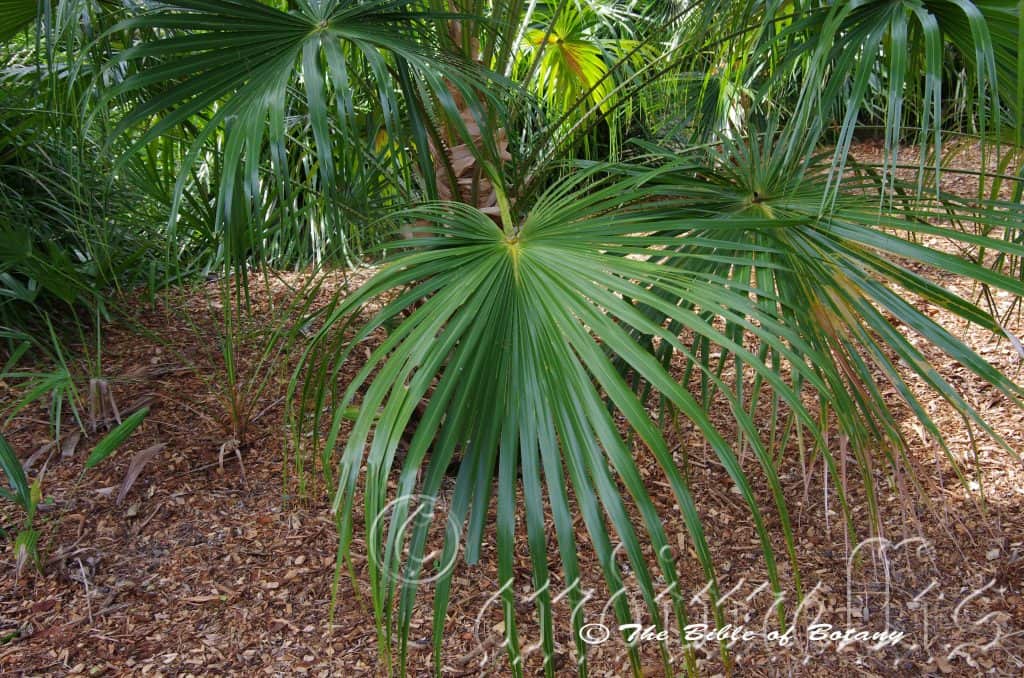
Rosser Gardens Benowa Qld.

2019 North Washpool National Park following Wildfires

Wynumm Foreshore Qld.
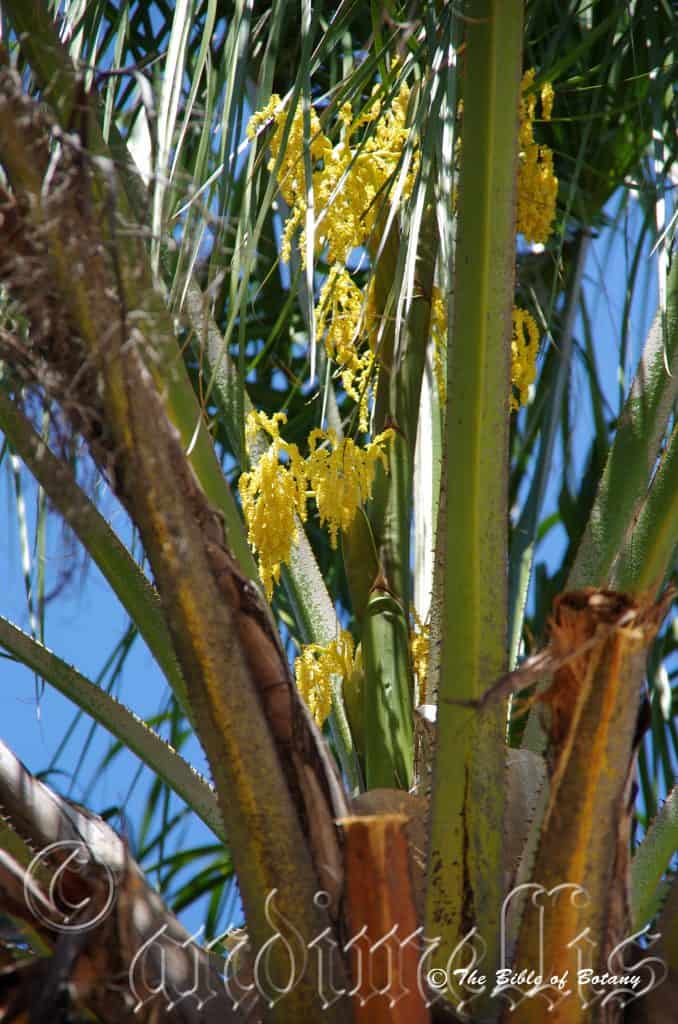
Wynumm Foreshore Qld.

Wynumm Foreshore Qld.
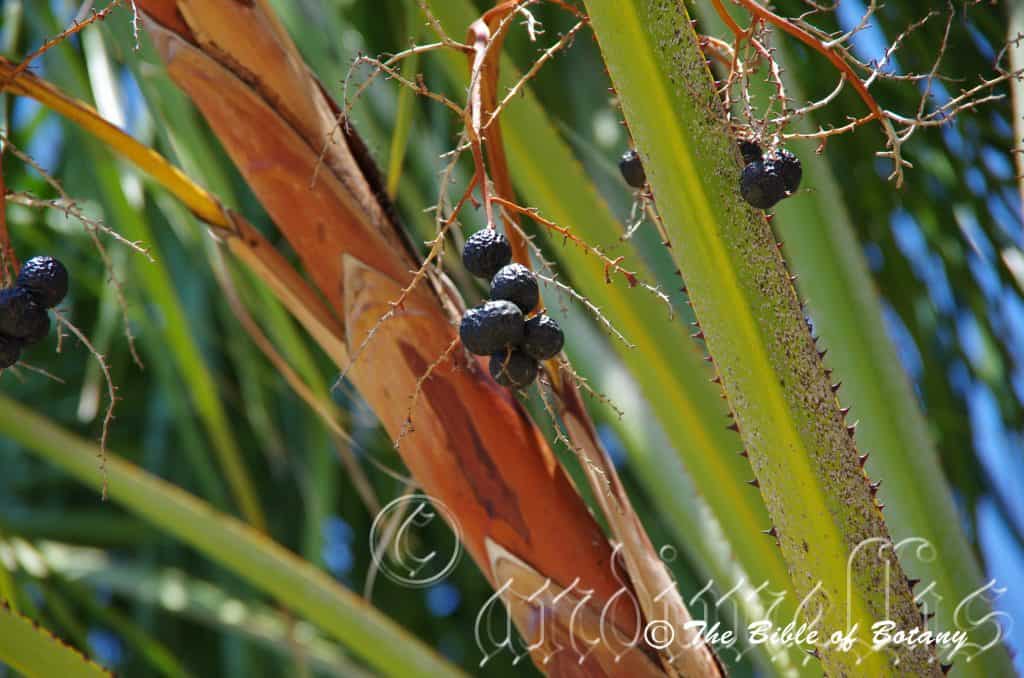
Wynumm Foreshore Qld.
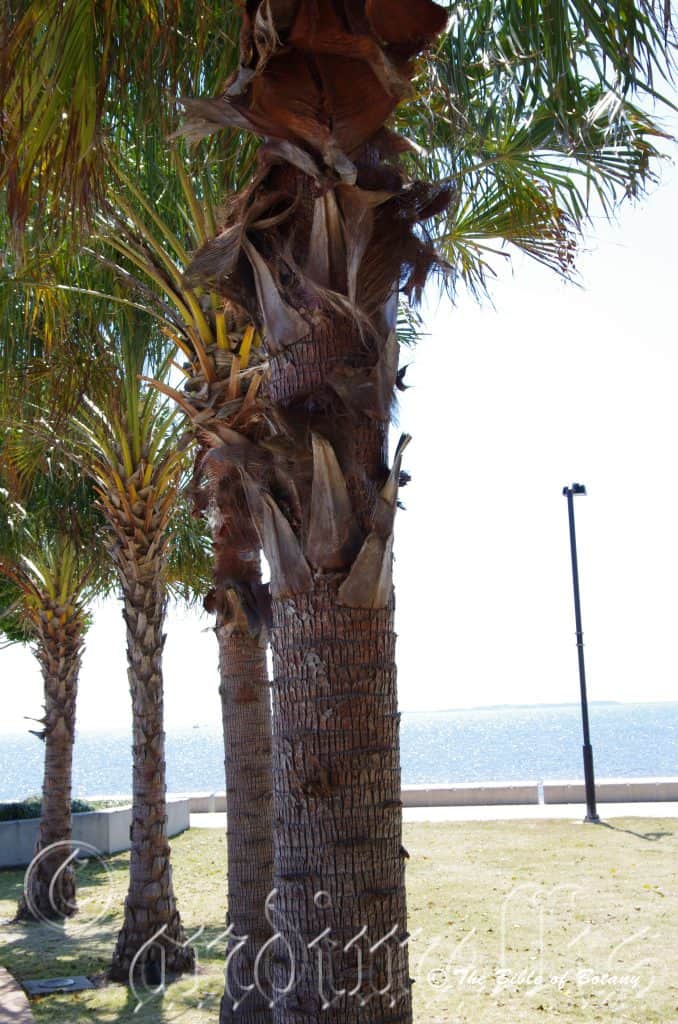
Wynumm Foreshore Qld.

Rosser gardens Benowa Qld.
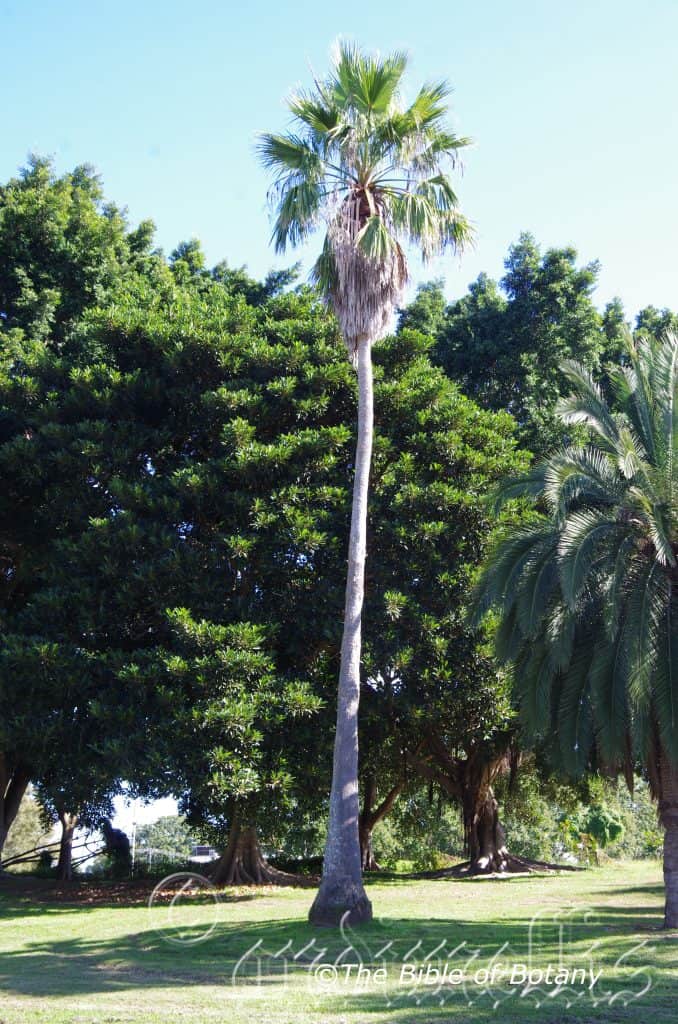
Grafton NSW
Livistona australis
Classification:
Unranked: Monocots
Unranked: Commelinids
Order: Arecales
Family: Arecaceae
Genus: Is named in honour of Patrick Murray; 1632-1671, was the Baron of Livingston Scotland who was an avid plant collector and gardener. It is believed that his garden became the Edinburgh Botanic gardens in 1680.
Specie: From Terra Australis, which is Latin for land of the south and Anum/Ensis, which is Latin for to originate from. It refers to plants, which were first discovered from the land down under.
Sub species:
Common Name: Australian Cabbage Palm.
The Aboriginal Gumbaynggirr clan know it as Wawarrga.
Distribution:
Livistona australis is found in several disjunct populations east of the Great Dividing Range south from the Paluma National Park in northern Queensland to the mouth of the Snowy River in Victoria.
https://avh.ala.org.au/occurrences/search?taxa=Livistona+australis#tab_mapView
Habitat Aspect Climate:
Livistona australis prefers full sun, light dappled shade to full shade. It grows in moist areas of open forest, rainforests, Melaleuca swamp forest, wet sclerophyll forests and moist gallery forests along permanent creek and stream riparian zones or at the base of cliffs. The altitude ranges from 400 meters ASL to 1000 meters ASL in the northern part of its range and 5 meters ASL to 700 meters ASL in the south part of its range.
The temperatures range from minus 4 degrees in August to 38 degrees in January.
The rainfalls range from lows of 800mm to an average of 3200mm however this is of little consequence as the palms grow on marshy flats.
Soil Requirements:
Livistona australis prefers to grow on better quality deep loams to medium clays and moist fatty stony screes. The soils are derived from decomposed sandstones, granites, brown basalts, black basalts, shales, metamorphic rocks, podsolic soils or accumulated beach sands. The soils pH. ranges from 4.5pH to 7pH. It tolerates seasonal water logged soils and seasonal high water tables where the plants are partly submerged for short periods. Non saline soils to very saline soils are tolerated as are salt laden winds.
Height & Spread:
Wild Plants: 24m to 26m by 6m to 8m.
Characteristics:
Livistona australis grows as a tall palm with a grey lower trunk that is covered in old leaf base scars and fine vertical furrows. The crown of dead leaves and old fruiting spikes persist for many years. The trunk measures 250mm to 400mm and swells at the base to 300mm to 500mm in diameter. The petiole leaf scars are slightly raised while the internodes broad with fine and prominent longitudinal fissures. The petiole stubs are retained in the lower 2 meters to 2.5 meters and are self-cleaning above that line.
There are 35 to 60 leaves in a mature globose crown. The deep green, arching petioles measure 1500mm to 2500mm by 10mm to 20mm in diameter. The upper surface of the petioles are flat while the lower surface is obtusely ridged. The margins have a single row of curved deep chocolate–brown glossy prickles that measure 4mm to 16mm in length on the proximal section almost to the base. The basal section and apical quarter are smooth. The leaf base fibres are moderately prominent, coarse to fine and sheet like and are persistent.
The costapalmate thick chartaceous leaves are regularly segmented and are circular. They measure 900mm to 1650mm in length by 1000mm to 1700mm in width. The discolourous leaves are green, glabrous and glossy on the upper laminas while the lower laminas are a mid-green to deep green. The laminas divided into 80 to 100 rigid, equal segments for 49mm to 69mm of their length. The depth of the apical cleft 50mm to 63mm of the segment length while the apical lobes are acute and pendulous. The 16 parallel veins are slightly prominent and are transverse by obscure lateral veins.
The inflorescences of Livistona australis are not sexually dimorphic and are formed on rachises which are unbranched near the base and do not extend beyond the leaves. The sheaths measure 1400mm to 2500mm in length but do not extend beyond the crown leaves. The rachises are branched to the second order. The partial inflorescences have 6 to 9 branches.
The perpendicular bract is lacking on this species. The cylindrical rachis bracts are chartaceous, glabrous and are densely covered in white cottony to floccose hairs. The rachilla are glabrous and measure 50mm to 120mm in length. The conical flowers are usually in small clusters of 2 to 4.The fleshy, white or pastel cream to pale yellow, triangular sepals have acute apexes and measure 1.2mm to 2mm in length. The fleshy, white or pastel cream to pale yellow, broad triangular to ovate petals have obtuse to obtuse-acute apexes and measure 2mm to .5mm in length.
The pale yellow filaments measure 2.4mm to 2.7mm in length while the anthers are bright pale yellow. The flowers appear throughout the year with a peak from September to January.
Livistona australis’s fruits are globose nuts. The deep reddish-brown or black are usually glabrous or at times glaucous measure 13mm to 24mm in length by 12mm to 22mm in diameter. The epicarp is sparsely covered in lenticular pores while the suture line extends for almost the full length of the fruit. The mesocarp and endocarp are sparsely covered in fine papillose lumps. The pedicels measure 2mm to 3mm in length. The globose seeds measure 11mm to 18mm in length and 10mm to 16mm in diameter. The fruits appear throughout the year with a peak from November to March.
Wildlife:
Livistona australis’s flowers are very popular amongst various insects including native bees, beetles, pollen flies and wasps.
Cultivation:
Livistona australis are beautiful tall palms with a dense bushy crown that grow particularly well on moisture problem soils or adjacent to swampy ground. It is suitable for small, medium and large gardens close to the coast or high in the mountains in temperate sub tropical or tropical gardens. As garden subjects they will grow from 12 meters to 15 meters in height by 6 meters to 8meters in diameter. It is cold tolerant to temperatures at least as low as 4 degree once established.
Livistona australis is a great palm for park scenarios or for planting in new rainforest gardens as they can grow in full sun. They have very rigid sharp spines so care should be taken when pruning old undiscarded leaves from the palms. Best kept away from where children play. It is exceptionally hardy and versatile in all situations however care should be taken if it is being planted in shallow heavy clay soils in exposed situations as they can be blown over. Most plants blown over will survive with the crown growing vertical as time passes to give unusual shapes to the trunks.
It is very good in very wet waterlogged soils along the coast or along riverine flats. When grown in full shade or partial shade the trunks are ideal for growing Platycerium ferns and Asplenium nidus in the north or Asplenium australis further south.
The plants quickly form a large dome on the ground before forming a trunk which can take 15 years to form even a meter high trunk. The should be planted at least 2 meters back from paths and away from where children play because of the rigid spines on the leaf rachis.
Propagation:
Seeds: Livistona australis seeds can be sown directly into a seed raising mix after roughing the sides with fine sandpaper to assist in germination. Cover the seeds with 5mm to 10mm of fine weed free mulch and keep moist. Place the tray in a warm sunny position. When the seedlings are 30mm to 50mm tall, prick them out and plant them into 50mm native tubes using a good organic mix.
Once the seedlings reach 100mm to 150mm in height they can be planted out into their permanent position.
Fertilize using seaweed, fish emulsion or organic chicken pellets soaked in water on an alternate basis. Fertilize every two months until the plants are established then twice annually in early September or March to maintain health, vitality and better flowering.
Further Comments from Readers:
“Hi reader, it seems you use The Bible of Botany a lot. That’s great as we have great pleasure in bringing it to you! It’s a little awkward for us to ask, but our first aim is to purchase land approximately 1,600 hectares to link several parcels of N.P. into one at The Pinnacles NSW Australia, but we need your help. We’re not salespeople. We’re amateur botanists who have dedicated over 30 years to saving the environment in a practical way. We depend on donations to reach our goal. If you donate just $5, the price of your coffee this Sunday, We can help to keep the planet alive in a real way and continue to bring you regular updates and features on Australian plants all in one Botanical Bible. Any support is greatly appreciated. Thank you.”
In the spirit of reconciliation we acknowledge the Bundjalung, Gumbaynggirr and Yaegl and all aboriginal nations throughout Australia and their connections to land, sea and community. We pay our respect to their Elders past, present and future for the pleasures we have gained.

Palmatum Gardens Townsville Qld.
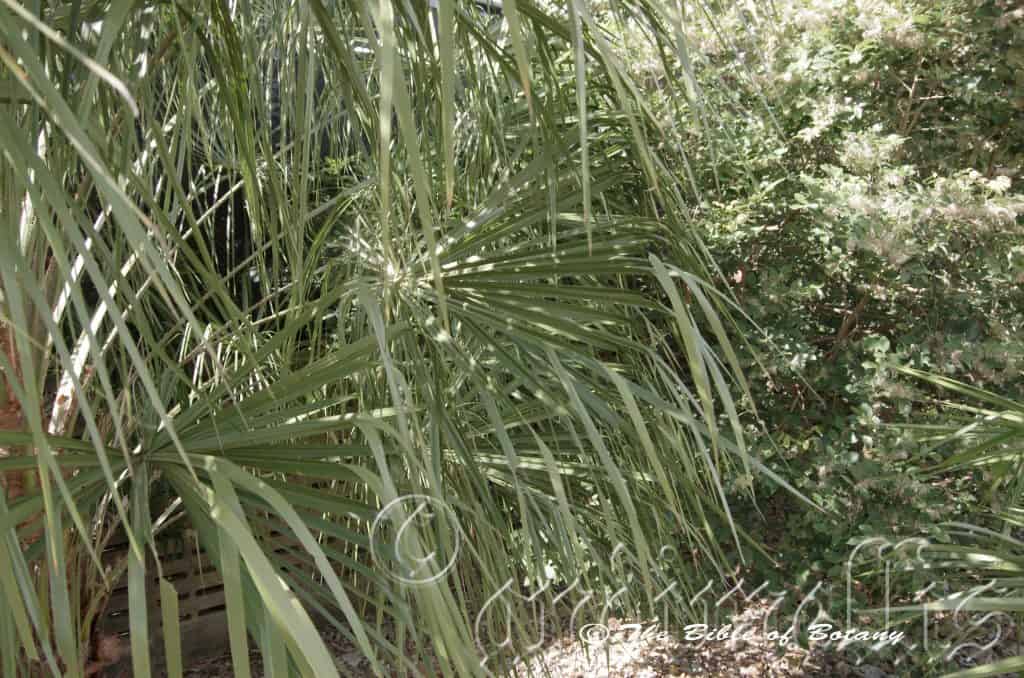

Townsville Botanic Gardens Qld.

Townsville Botanic Gardens Qld.
Livistona benthamii
Classification:
Unranked: Monocots
Unranked: Commelinids
Order: Arecales
Family: Arecaceae
Genus: Is named in honour of Patrick Murray; 1632-1671, was the Baron of Livingston Scotland who was an avid plant collector and gardener. It is believed that his garden became the Edinburgh Botanic gardens in 1680.
Specie: Is named in honour of George Bentham; 1800-1884, who was an English botanist who undertook the reclassification of seed plants into families.
Sub species:
Common Name: Cooktown Cabbage Palm.
Distribution:
Livistona benthamii is found in several disjunct populations in the Northern Territory and Queensland. In the Northern Territory it is found east from around Darwin in the west of Kakadu National Park in the north and Howard Island and possibly near Gallwinku on Echo Island.
https://avh.ala.org.au/occurrences/search?taxa=Livistona+benthamii#tab_mapView
Habitat Aspect Climate:
Livistona benthamii prefers full sun, light dappled shade to full shade. It grows in swampy forests especially coastal Melaleuca swamps, on alluvial flats, on the land ward side of mangroves, in moist to wet areas in monsoonal thickets or wet gallery forests. The altitude ranges from 5 meters ASL to 110 meters ASL
The temperatures range from 12 degrees in August to 40 degrees in January.
The rainfalls range from lows of 1800mm to an average of 3200mm however this is of little consequence as the palms grow in marshy flats.
Soil Requirements:
Livistona benthamii prefers better quality deep loams to medium muddy clays or medium muddy silts to heavy muddy silts. The soils are derived from decomposed sandstone, granite, brown basalt, black basalt, shale or metamorphic rocks, podsolic soils, accumulated beach sands or alluvial silts. The soils pH. ranges from 4.5pH to 7pH. It tolerates water logged soils and prefers seasonal water logged soils where the plants are partly submerged for short periods. Non saline soils to moderately saline soils are tolerated.
Height & Spread:
Wild Plants: 17m to 20m by 5m to 6m.
Characteristics:
Livistona benthamii grows as a palm with a pale grey to mid grey lower trunk is grey which is covered in old leaf base scars and vertical furrows. Below the crown dead leaves and old fruiting spikes persist for many years. The trunk measures 130mm to 200mm and swells at the base to 200mm to 300mm in diameter. The petiole stubs are long extensions of the petiole bases and petioles which abscissile at about the middle of the petiole. The petiole stubs are persistent on the trunk for most of its length unless removed by fire or over many years by age.
There are 30 to 50 leaves in a mature globose crown. The deep green, arching petioles measure 1200mm to 2000mm by 10mm to 19mm in diameter. The upper surface of the petioles are flat while the lower surface is obtusely ridged. The margins have a single row of curved black prickles that measure 4mm to 10mm in length on the proximal section. The basal section and apical third are smooth. The leaf base fibres are moderately prominent, coarse and persistent.
The costapalmate thick chartaceous leaves are regularly segmented and are circular. They measure 900mm to 1650mm in length by 1000mm to 1700mm in width. The discolourous leaves are mid green to deep green, glabrous and glossy on the upper laminas while the lower laminas are a deep green. The laminas divided into 50 to 80 rigid, equal segments for 60mm to 75mm of their length. The depth of the apical cleft 60mm to 75mm of the segment length while the apical lobes are acute and pendulous. The 12 to 18 parallel veins are slightly prominent and are transverse by obscure lateral veins.
The inflorescences of Livistona benthamii are not sexually dimorphic and are formed on rachises which are unbranched near the base and do not extend beyond the leaves. The sheaths measure 1200mm to 2100mm in length but do not extend beyond the crown leaves. The rachises are branched to the second order. The partial inflorescences have 7 to 9 branches.
The perpendicular bract is lacking on this species. The cylindrical rachis bracts are chartaceous, glabrous and are sparsely covered in silvery scurfy life scales. The rachilla are covered in white patches of pulverulent hairs and measure 50mm to 120mm in length. The narrow tubular flowers are usually singular or paired or at times in small clusters of 3.The pastel cream to pale yellow, triangular sepals have acute apexes and measure 0.8mm to 2mm in length. The pastel cream to pale yellow, broad triangular, fleshy petals have acute apexes and measure 1mm to 1.3mm in length.
The pastel yellow filaments measure 1mm to 1.2mm in length while the anthers are bright yellow. The flowers appear from September to January.
Livistona benthamii s fruits are globose to obovoidal or pyriform nuts. The deep purple-black nuts are pruinose and measure 9mm to 13mm in length by 9mm to 11mm in diameter. The epicarp is smooth while the suture line extends for the full length of the fruit. The mesocarp is covered in moist, spongy fibres while the endocarps are thick to 0.2mm in thickness and brittle. The pedicels measure 2mm to 3mm in length. The ovoidal seeds measure 8mm to 9mm in length and 8mm to 9mm in diameter. The fruits appear from December to April.
Wildlife:
Livistona benthamii’s flowers are very popular amongst various insects including native bees, beetles, pollen flies and wasps.
Cultivation:
Livistona benthamii are beautiful tall palms with a dense bushy crown that grow particularly well on moisture problem soils or adjacent to swampy ground. It is suitable for small, medium and large gardens close to the coast or high in the mountains in temperate sub tropical or tropical gardens. As garden subjects they will grow from 12 meters to 15 meters by 6 meters to 8 meters wide when grown in the open. It is cold tolerant to temperatures at least as low as 4 degree once established.
Livistona concinna is a great palm for park scenarios or for planting in new rainforest gardens as they can grow in full sun. They have very rigid sharp spines near the leaf bases so care should be taken when pruning old undiscarded leaves from the palms. Best kept away from where children play. It is exceptionally hardy and versatile in all situations however care should be taken if it is being planted in shallow soils in exposed situations as they can be blown over. Most plants blown over will survive and straighten up giving unusual shapes to the trunks.
It is very good in very wet waterlogged soils along the coast or along riverine flats. When grown in full shade or partial shade the trunks are ideal for growing Platycerium ferns and Asplenium nidus in the north or Asplenium australis in the south where it is cooler.
The plants quickly form a large dome on the ground before forming a trunk which can take 15 years to form even a meter high trunk. The should be planted at least 2 meters back from paths and away from where children play because of the rigid spines on the leaf rachis.
Propagation:
Seeds: Livistona benthamii seeds can be sown directly into a seed raising mix after roughing the sides with fine sandpaper to assist in germination. Cover the seeds with 5mm to 10mm of fine weed free mulch and keep moist. Place the tray in a warm sunny position. When the seedlings are 30mm to 50mm tall, prick them out and plant them into 50mm native tubes using a good organic mix.
Once the seedlings reach 100mm to 150mm in height they can be planted out into their permanent position.
Fertilize using seaweed, fish emulsion or organic chicken pellets soaked in water on an alternate basis. Fertilize every two months until the plants are established then twice annually in early September or March to maintain health, vitality and better flowering.
Further Comments from Readers:
“Hi reader, it seems you use The Bible of Botany a lot. That’s great as we have great pleasure in bringing it to you! It’s a little awkward for us to ask, but our first aim is to purchase land approximately 1,600 hectares to link several parcels of N.P. into one at The Pinnacles NSW Australia, but we need your help. We’re not salespeople. We’re amateur botanists who have dedicated over 30 years to saving the environment in a practical way. We depend on donations to reach our goal. If you donate just $5, the price of your coffee this Sunday, We can help to keep the planet alive in a real way and continue to bring you regular updates and features on Australian plants all in one Botanical Bible. Any support is greatly appreciated. Thank you.”
In the spirit of reconciliation we acknowledge the Bundjalung, Gumbaynggirr and Yaegl and all aboriginal nations throughout Australia and their connections to land, sea and community. We pay our respect to their Elders past, present and future for the pleasures we have gained.
Livistona concinna
Classification:
Unranked: Monocots
Unranked: Commelinids
Order: Arecales
Family: Arecaceae
Genus: Is named in honour of Patrick Murray; 1632-1671, who was the Baron of Livingston Scotland and an avid plant collector and gardener. It is believed that his garden became the Edinburgh Botanic Gardens in 1680.
Specie: From Con, which is Latin for to come together and Cinn?tus, which is Latin for skilfully joined, well made or very neatly done. It refers to plants, which are neat and tidy and have an overall beauty.
Sub species:
Common Name:
Distribution:
Livistona concinna is found in 3 disjunct populations east of the Great Dividing Range in Queensland from near Cooktown, the Lakefield National Park and Flinders Island National Park. There is also a possibility that it could be found in the Cape Melville National Park.
https://avh.ala.org.au/occurrences/search?taxa=Livistona+concinna#tab_mapView
Habitat Aspect Climate:
Livistona concinna prefers full sun, light dappled shade to full shade. It grows along creek beds, on marshy flats and adjacent to warm rainforests on water logged terrain.The altitude ranges from 5 meters ASL to 100 meters ASL
The temperatures range from 12 degrees in August to 38 degrees in January.
The rainfalls range from lows of 1800mm to an average of 2600mm.
However this is of little consequence as the palms grow in marshy flats.
Soil Requirements:
Livistona concinna prefers to grow on better quality deep loams to medium clays. The soils are derived from decomposed sandstone, granite or accumulated beach sands. The soils pH. ranges from 4.5pH to 7pH. It tolerates water logged soils and prefers seasonal water logged soils or seasonal high water tables where the plants are partly submerged for short periods. Non saline soils to moderately saline soils are tolerated.
Height & Spread:
Wild Plants: 25m to 32m by 4m to 4.5m.
Characteristics:
Livistona concinna’s lower trunk is grey and is covered in raised nodes from old leaves. The internodes measure 50mm to 120mm in width. Below the crown dead leaves and old fruiting spikes degenerate to fibre which is persist for a short period of time. The trunk measures 250mm to 350mm in diameter and swells at the base to 900mm to 1000mm in diameter.
There are 50 to 65 leaves in a mature crown. Livistona concinna’s leaves are costapalmate, orbicular and measure 1550mm to 1650mm in length by 2000mm in diameter. The leaves measure 2900mm to 4900mm in length including the 1200mm to 3000mm petiole. The petiole’s margins near the base is crowded with stiff recurved glossy black spines which measure 3mm to 5mm in length. The triangular petiole measures 50 to 110mm wide at the base and 22 to 35mm from the mid-point to the costa. The concolourous laminas are deep grass-green, glossy and glabrous. The lamina divides into 60 to 78 segments. The base of the segments measure 55mm to 65mm wide and taper to a point at the apex. The segments are free for 60mm to 65mm of their length and further divide into two linear lobes which taper to a narrow point for 16mm to 20mm of the free section. There are 9 or 10 faintly visible longitudinal veins.
The monoecious inflorescence of Livistona concinna is formed on an unbranched rachis. The sheaths measure 300mm to 500mm in length. The male flowers are born on a long panicle from amongst the leaves and measures 120mm to 180mm in length.
The female flowers are born on a long panicle from amongst the leaves and measures 160mm to 250mm in length. The flowers appear singularly or in small clusters of 2 to 4 along the panicle. The triangular outer sepals are cream to pale yellow and measure 1mm to 1.2mm in length. The narrow triangular to oblong inner petals are creamy yellow to yellow and measure 2mm to 2.2mm in length. The inserted stamens measure 1mm in length while the 1mm style is 3 lobed.
Livistona concinna’s fruits are globose berry. The berries measure 9mm to 12mm in diameter. The stigma is persistent on the berries. The green berries turn glossy black with fine lenticels on ripening. The hard cream, ovate seed measures 7mm to 9mm in diameter.
Wildlife:
The flowers are very popular amongst various insects including native bees, beetles, flies and wasps.
Cultivation:
Livistona concinna are beautiful tall palms with a dense bushy crown that grow particularly well on moisture problem soils or adjacent to swampy ground. It is suitable for small, medium and large gardens close to the coast or high in the mountains in temperate sub tropical or tropical gardens. As garden subjects they will grow from 12 meters to 15 meters by 6 meters to 8 meters wide when grown in the open. It is cold tolerant to temperatures at least as low as 4 degree once established.
Livistona concinna is a great palm for park scenarios or for planting in new rainforest gardens as they can grow in full sun. They have very rigid sharp spines near the leaf bases so care should be taken when pruning old undiscarded leaves from the palms. Best kept away from where children play. It is exceptionally hardy and versatile in all situations however care should be taken if it is being planted in shallow soils in exposed situations as they can be blown over. Most plants blown over will survive and straighten up giving unusual shapes to the trunks.
When grown in full shade or partial shade the trunks are ideal for growing Platycerium ferns and Asplenium nidus or Asplenium australis.
The plants quickly form a large dome on the ground before forming a trunk which can take 15 years to form even a meter high trunk. The should be planted at least 2 meters back from paths and away from where children play because of the rigid spines on the leaf rachis.
Propagation:
Seeds: Livistona concinna seeds can be sown directly into a seed raising mix after roughing the sides with fine sandpaper to assist in germination. Cover the seeds with 5mm to 10mm of fine weed free mulch and keep moist. Place the tray in a warm sunny position. When the seedlings are 30mm to 50mm tall, prick them out and plant them into 50mm native tubes using a good organic mix.
Once the seedlings reach 100mm to 150mm in height they can be planted out into their permanent position.
Fertilize using seaweed, fish emulsion or organic chicken pellets soaked in water on an alternate basis. Fertilize every two months until the plants are established then twice annually in early September or March to maintain health, vitality and better flowering.
Further Comments from Readers:
“Hi reader, it seems you use The Bible of Botany a lot. That’s great as we have great pleasure in bringing it to you! It’s a little awkward for us to ask, but our first aim is to purchase land approximately 1,600 hectares to link several parcels of N.P. into one at The Pinnacles NSW Australia, but we need your help. We’re not salespeople. We’re amateur botanists who have dedicated over 30 years to saving the environment in a practical way. We depend on donations to reach our goal. If you donate just $5, the price of your coffee this Sunday, We can help to keep the planet alive in a real way and continue to bring you regular updates and features on Australian plants all in one Botanical Bible. Any support is greatly appreciated. Thank you.”
In the spirit of reconciliation we acknowledge the Bundjalung, Gumbaynggirr and Yaegl and all aboriginal nations throughout Australia and their connections to land, sea and community. We pay our respect to their Elders past, present and future for the pleasures we have gained.
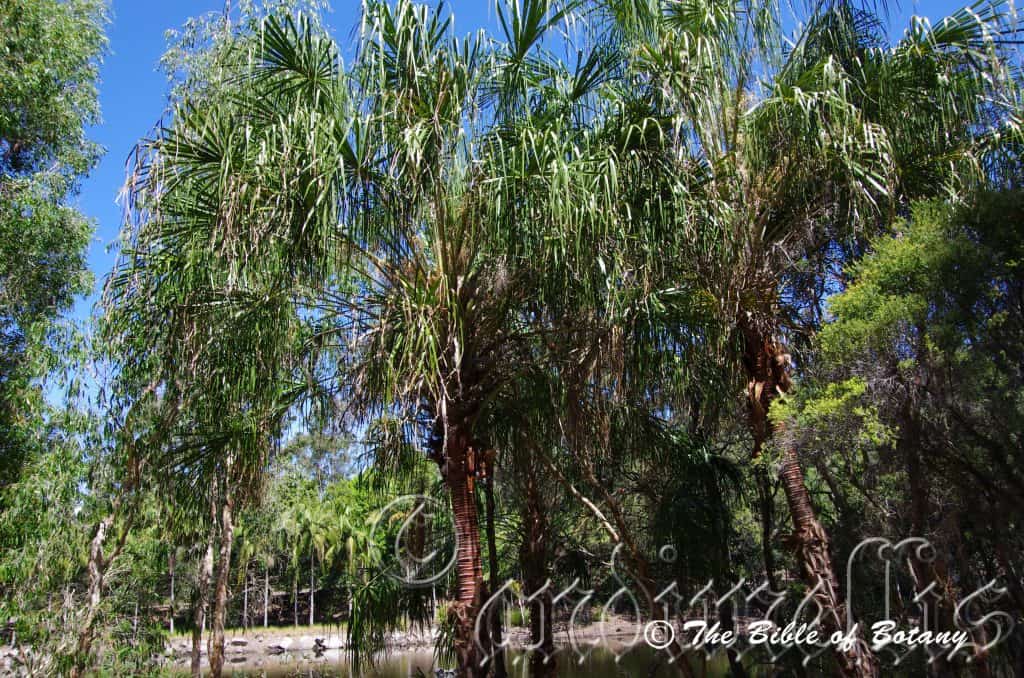
Mount Cootha Botanic Gardens Qld.

Mount Cootha Botanic Gardens Qld.
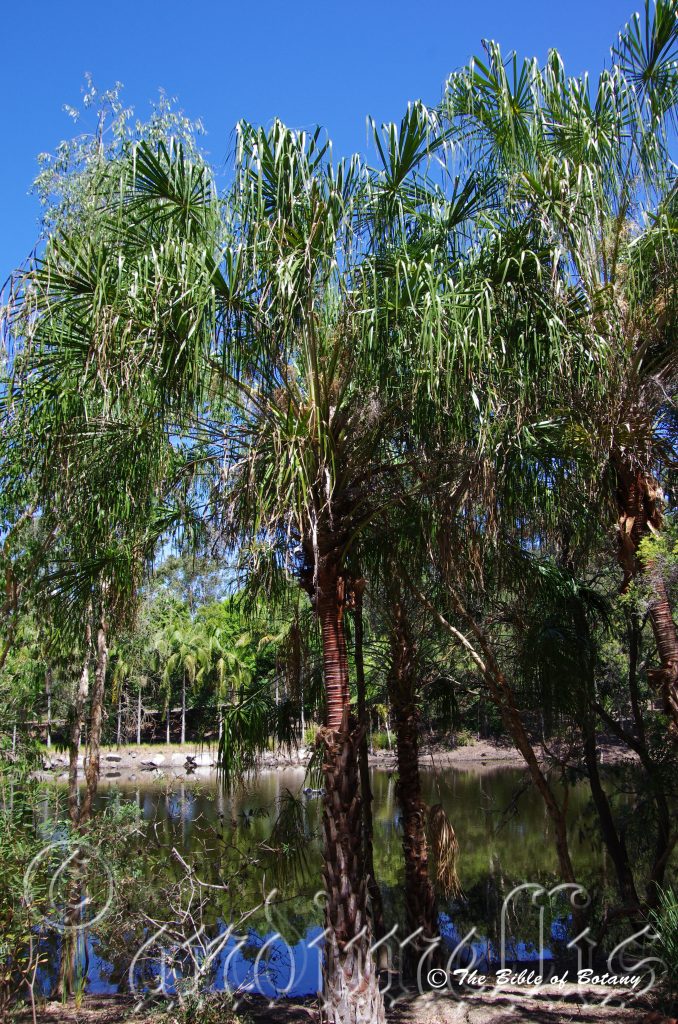
Mount Cootha Botanic Gardens Qld.
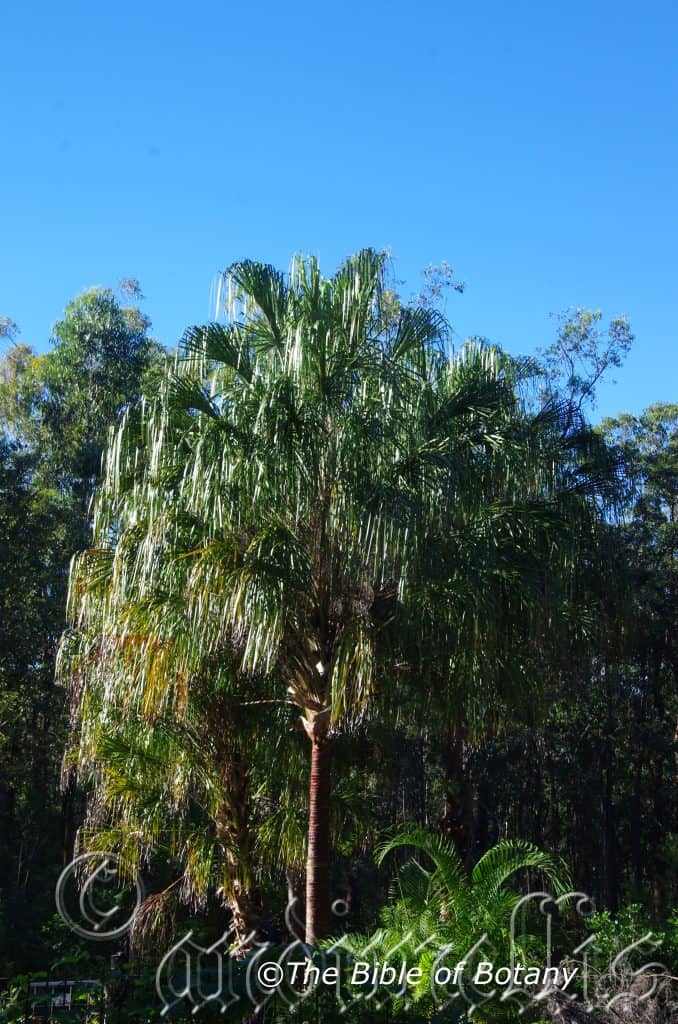
Author’s Garden The Pinnacles NSW
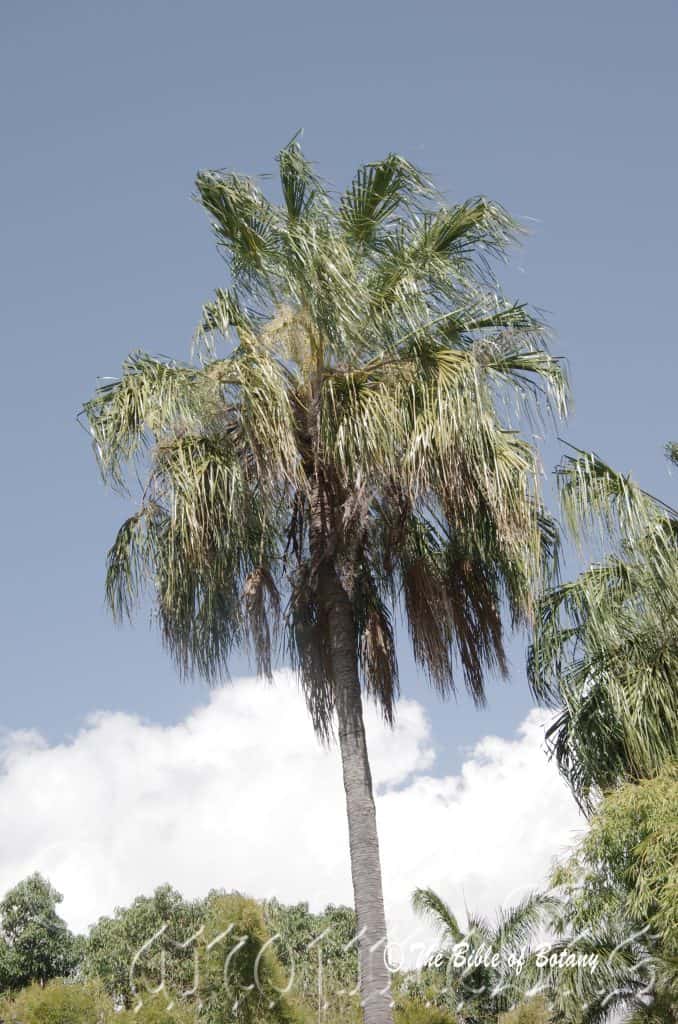
Anderson Gardens Townsville Qld.
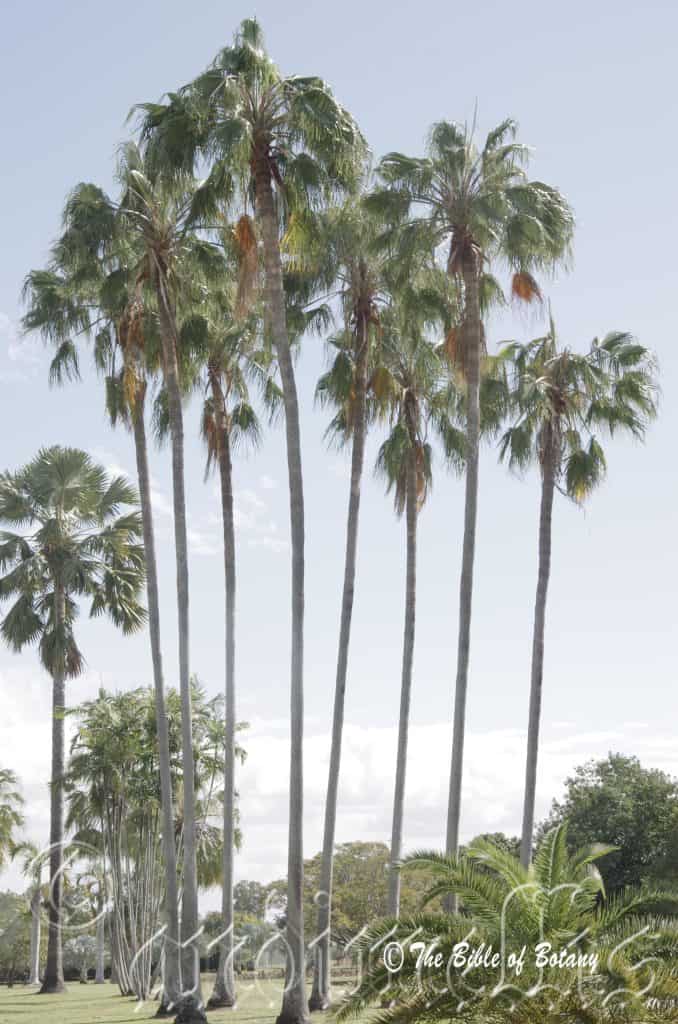
Anderson Gardens Townsville Qld.

Anderson Gardens Townsville Qld.

Mount Cootha Botanic Gardens Qld.

Mount Cootha Botanic Gardens Qld.

Anderson Gardens Townsville Qld.
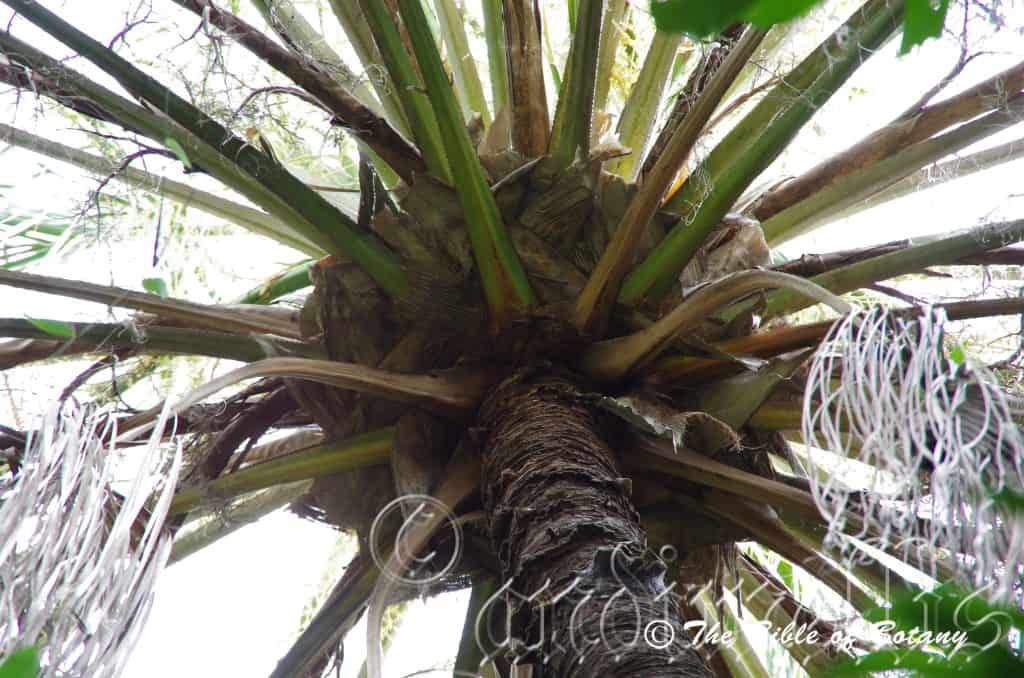
Anderson Gardens Townsville Qld.
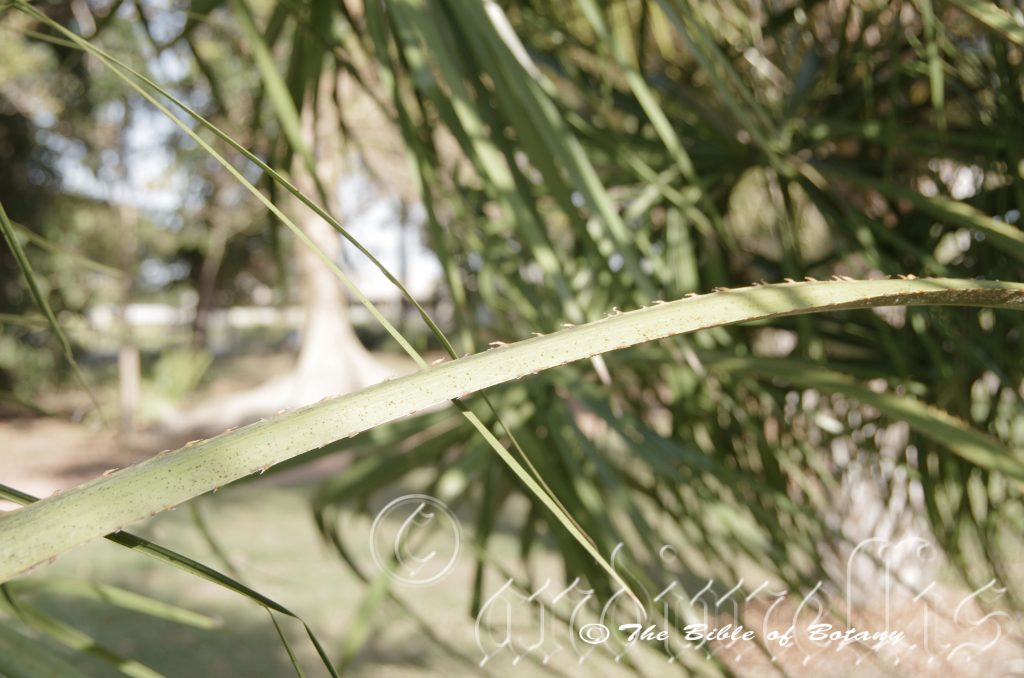
Anderson Gardens Townsville Qld.
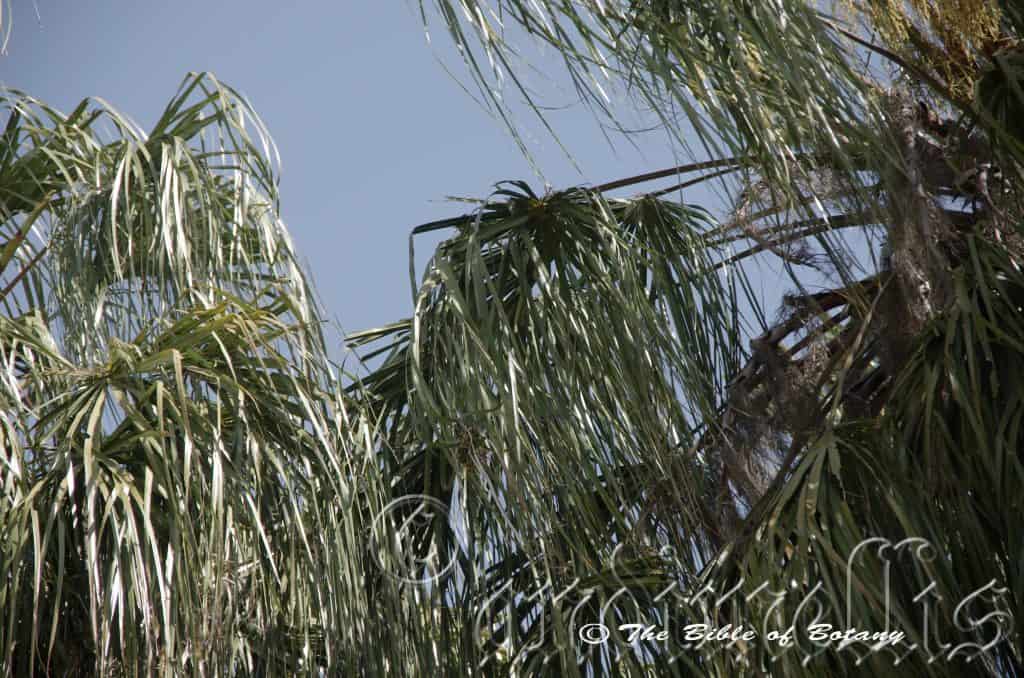
Anderson Gardens Townsville Qld.
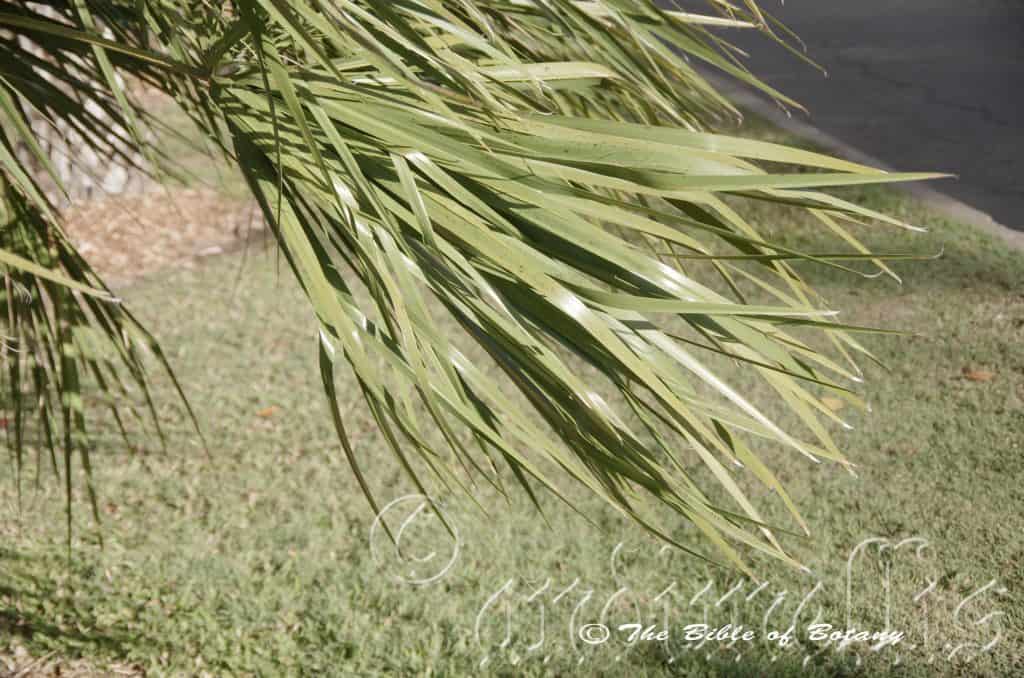
Anderson Gardens Townsville Qld.
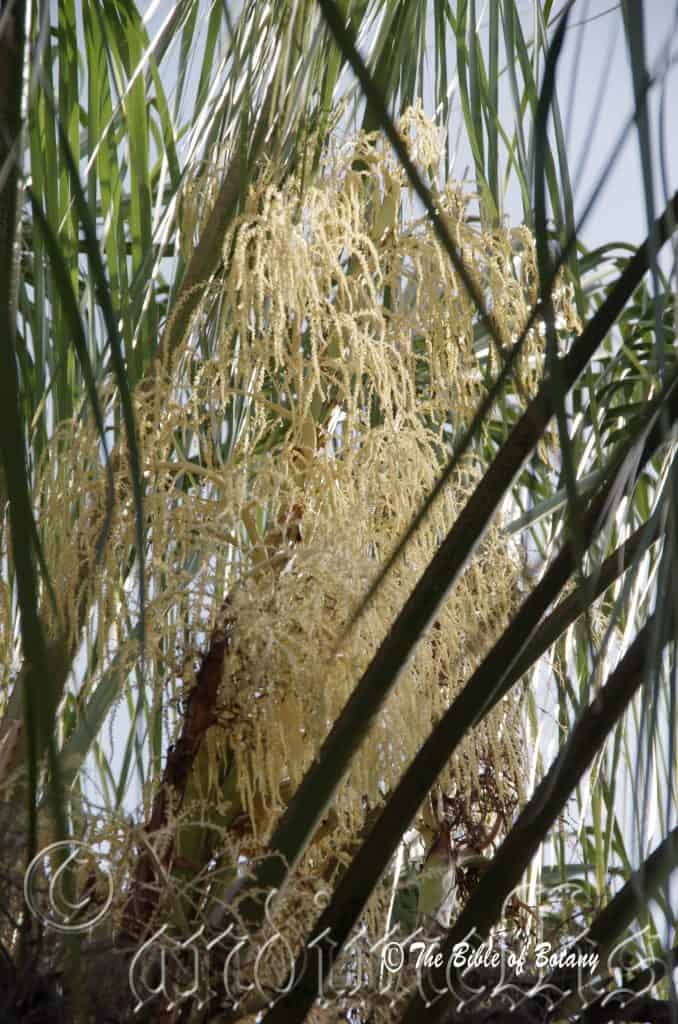
Anderson Gardens Townsville Qld.
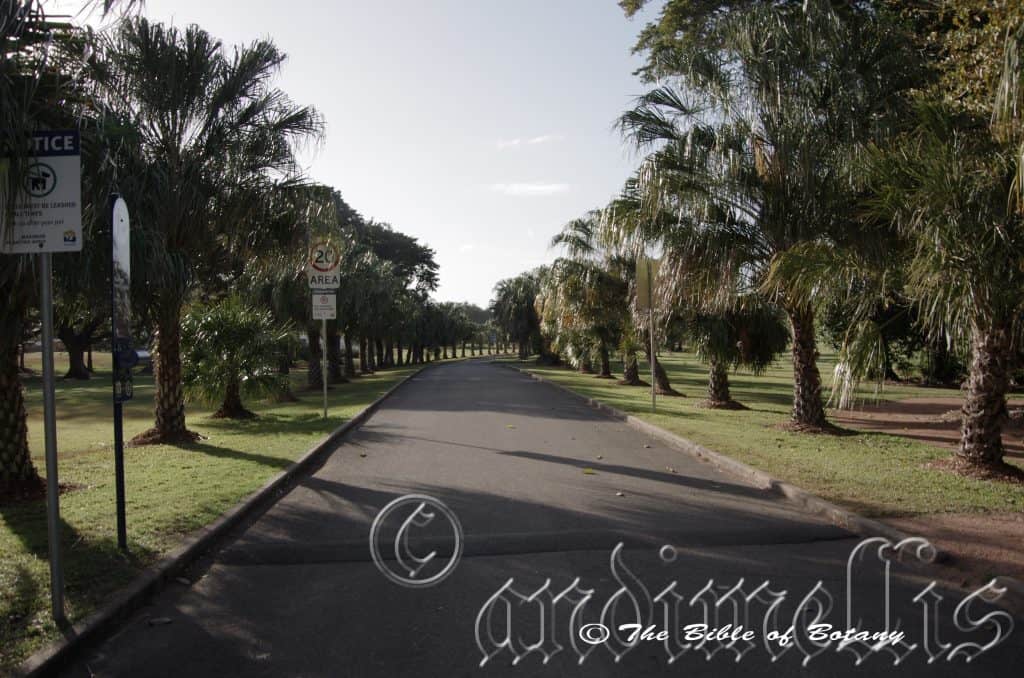
Anderson Gardens Townsville Qld.

Anderson Gardens Townsville Qld.
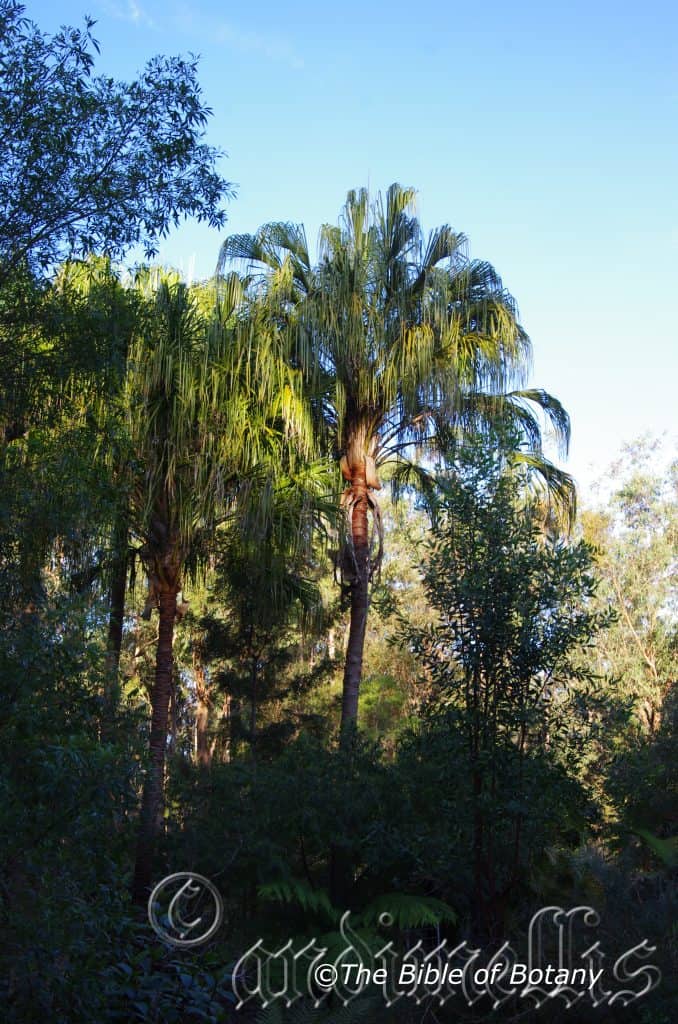
Author’s Garden The Pinnacles NSW
Livistona decora
Classification:
Unranked: Monocots
Unranked: Commelinids
Order: Arecales
Family: Arecaceae
Genus: Is named in honour of Patrick Murray; 1632-1671, who was the Baron of Livingston Scotland and an avid plant collector and gardener. It is believed that his garden became the Edinburgh Botanic Gardens in 1680.
Specie: From Decora, which is Latinized from the French word decor to be decorative. It refers to plants, which have an overall decorative appeal.
Sub species:
Common Name: Weeping Cabbage Palm.
Distribution:
Livistona decora is found along the coastal strip south from the Paluma National Park to Agnes Waters in central coastal Queensland.
https://avh.ala.org.au/occurrences/search?taxa=Livistona+decora#tab_mapView
Habitat Aspect Climate:
Livistona decora prefers full sun, light dappled shade. It grows along creek beds, on marshy flats, adjacent to warm coastal rainforests or wet gallery forests. The altitude ranges from 2 meters ASL to 60 meters ASL
The temperatures range from 5 degrees in August to 38 degrees in January.
The rainfalls range from lows of 800mm to an average of 1550mm however this is of little consequence as the palms grow in marshy flats.
Soil Requirements:
Livistona decora prefers better quality deep loams to heavy silts. The soils are usually derived from alluvial silts or from decomposed granites, brown basalt, black basalt or accumulated sands. The soils pH. ranges from 4.5pH to 6pH. It tolerates seasonal water logged soils for short periods provided the soils are well drained. Non saline soils to very saline soils are tolerated.
Height & Spread:
Wild Plants: 18m to 20m by 5m to 6m.
Characteristics:
Livistona decora’s lower trunk is grey and is covered in old leaf base scars and vertical furrows. Below the crown dead leaves and old fruiting spikes are discarded in the same year. The trunk measures 250mm to 300mm and swells at the base to 400mm to 550mm in diameter. The leaf scars are narrow while the internodes measure 100mm to 300mm in length with fine longitudinal fissures between. The trunk is smooth with noticeable scarring and retains the bright burgundy colour.
There are 30 to 60 leaves in a mature globose crown. The bases of the petioles are frequently attached to the trunk for many years. The deep green, arching petioles measure 1500mm to 2800mm petiole by 18mm to 24mm in width. The upper surface of the petioles are flat to shallowly concave while the margins have a single row of recurved black prickles that measure 8mm to 20mm in length on the proximal section. The basal section is smooth. The leaf base fibres are moderately prominent, coarse and quickly disintegrate. The costapalmate coriaceous leaves are regularly segmented and are circular. They measure 1200mm to 1850mm in length by 1200mm to 1850mm in width. The discolourous leaves are mid green to mid green glossy while the lower laminas are a deeper green and glabrous. The segments extended along the costa. The laminas divided into 24 to 48 rigid, equal segments for 82mm to 88mm of their length. The depth of the apical cleft 44mm to 54mm of the segment length while the apical lobes are acute and pendulous. The 12 to 14 parallel veins are slightly prominent and are transverse by obscure lateral veins.
The inflorescences of Livistona decora are not sexually dimorphic and are formed on rachises which are unbranched near the base and do not extend beyond the leaves. The sheaths measure 1000mm to 3500mm in length but do not extend beyond the crown leaves. The rachises are branched to the fourth order. The partial inflorescences have 8 to 14 branches.
The woody, glabrous prophyll measure 330mm to 370mm in length by 110mm to 160mm in width. The perpendicular bract is lacking on this species. The cylindrical rachis bracts are chartaceous, glabrous and are sparsely covered in papillate fine lumps. The primary rachis bract is loosely sheathing with lacerated apex. The papillose rachilla measure 5mm to 20mm in length. The funnel form flowers are usually in clusters of 2 to 6 or at times are born singularly and measure 1.5mm to 2mm in length. The yellow, ovate to triangular sepals are membranous with an obtuse apex and measure 1.2mm to 1.5mm in length. The yellow, broadly ovate petals are apiculate and measure 1.5mm to 1.8mm in length.
The pastel yellow filaments measure 1.4mm to 1.7mm in length while the anthers are bright yellow. The flowers appear from July to December.
Livistona decora’s fruits are globose nuts. The glossy, black nuts measure 14mm to 20mm in length by 12mm to 18mm in diameter. The epicarp is sparsely covered in lenticular lumps while the suture line extends for 50mm of the length of the fruit. The mesocarp is covered in moist, spongy fibres while the endocarps are thin and brittle. The globose seeds measure 10mm to 11mm in length and 9mm to 10mm in diameter. The eophyll has 5 ribs. The fruits appear from December to April.
Wildlife:
Livistona decora flowers are very popular amongst various insects including native bees, beetles, pollen flies and wasps.
Cultivation:
Livistona decora are beautiful tall palms with a dense, bushy, weeping crown that grow particularly well on drier or moisture problem soils provided good drainage is available. It is suitable for small, medium and large gardens close to the coast or high in the mountains or semi-arid areas in temperate sub-tropical or tropical gardens. As garden subjects they will grow from 18 meters to 22 meters by 6 meters to 8 meters wide. It is cold tolerant to temperatures at least as low as minus 4 degree once established.
The leaflets on the leaves are very narrow, pendula and give the palm a weeping appearance. It is a great palm for park scenarios or for planting in new rainforest gardens as they can grow in full sun. They have very rigid sharp spines so care should be taken when pruning old undiscarded leaves from the palms. Best kept away from where children play. It is exceptionally hardy and versatile in all situations however care should be taken if it is being planted in shallow soils in exposed situations as they can be blown over. Most plants blown over will survive and straighten up giving unusual shapes to the trunks.
This palm prefers freely draining soil. It handles full sun even when young. It’s drought tolerant, but will look better and grow faster if adequate water can be provided forming a 6 to 8 meter high trunk in around 10 years. It should be planted at least 2 meters back from paths and away from where children play because of the rigid spines on the leaf rachis.
It is compatible with most garden soils even pure sand. It is a Longevity palm and will attain a life span of over 150 years.
Propagation:
Seeds: Livistona decora seeds can be sown directly into a seed raising mix after roughing the sides with fine sandpaper to assist in germination. Cover the seeds with 5mm to 10mm of fine weed free mulch and keep moist. Place the tray in a warm sunny position. When the seedlings are 30mm to 50mm tall, prick them out and plant them into 50mm native tubes using a good organic mix.
Seeds usually germinate in 4 to 14 weeks. Once the seedlings reach 100mm to 150mm in height, they can be planted out into their permanent position. While our plants have produced flowers we have not had any seeds produced even after 16 years.
Fertilize using seaweed, fish emulsion or organic chicken pellets soaked in water on an alternate basis. Fertilize every two months until the plants are established then twice annually in early September or March to maintain health, vitality and better flowering.
Further Comments from Readers:
“Hi reader, it seems you use The Bible of Botany a lot. That’s great as we have great pleasure in bringing it to you! It’s a little awkward for us to ask, but our first aim is to purchase land approximately 1,600 hectares to link several parcels of N.P. into one at The Pinnacles NSW Australia, but we need your help. We’re not salespeople. We’re amateur botanists who have dedicated over 30 years to saving the environment in a practical way. We depend on donations to reach our goal. If you donate just $5, the price of your coffee this Sunday, We can help to keep the planet alive in a real way and continue to bring you regular updates and features on Australian plants all in one Botanical Bible. Any support is greatly appreciated. Thank you.”
In the spirit of reconciliation we acknowledge the Bundjalung, Gumbaynggirr and Yaegl and all aboriginal nations throughout Australia and their connections to land, sea and community. We pay our respect to their Elders past, present and future for the pleasures we have gained.
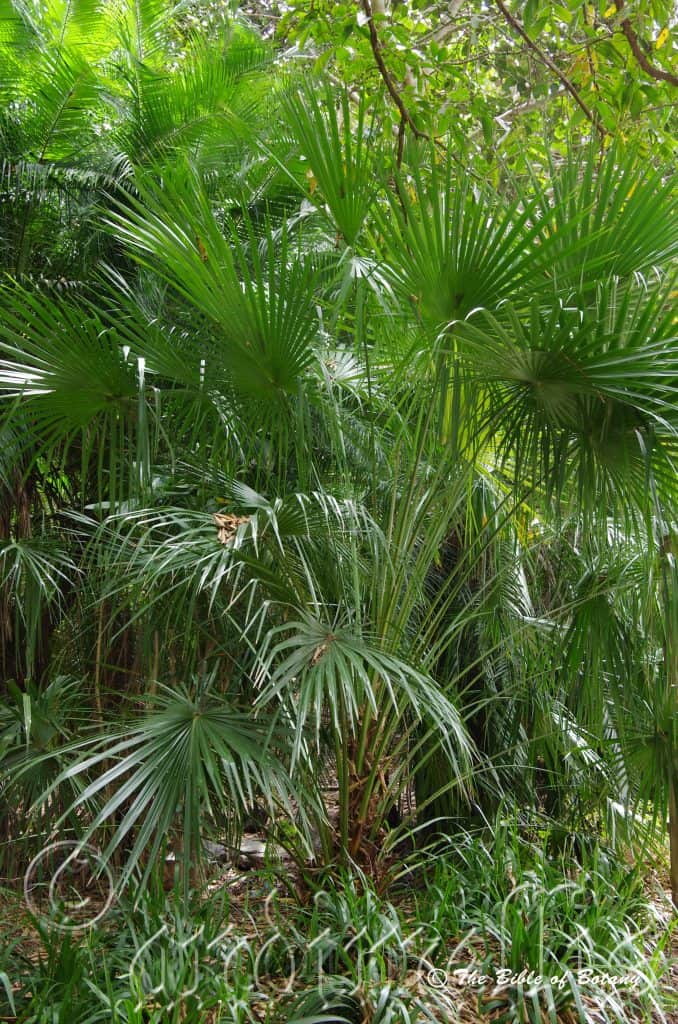
Mount Cootha Botanic Gardens Qld.
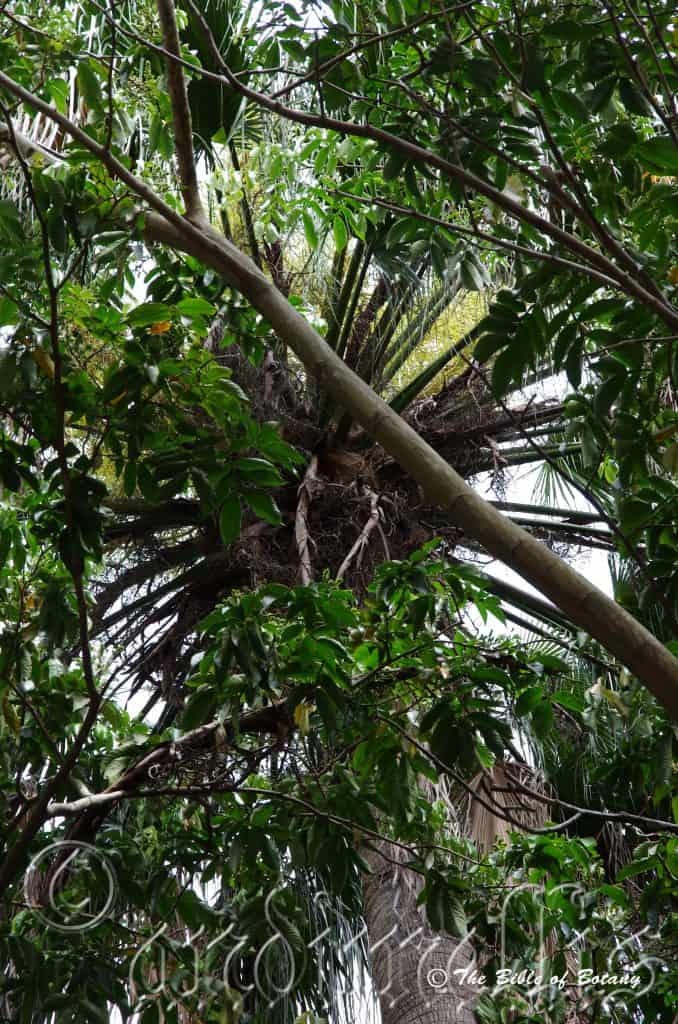
Anderson Gardens Townsville Qld.

Anderson Gardens Townsville Qld.

Anderson Gardens Townsville Qld.

Anderson Gardens Townsville Qld.
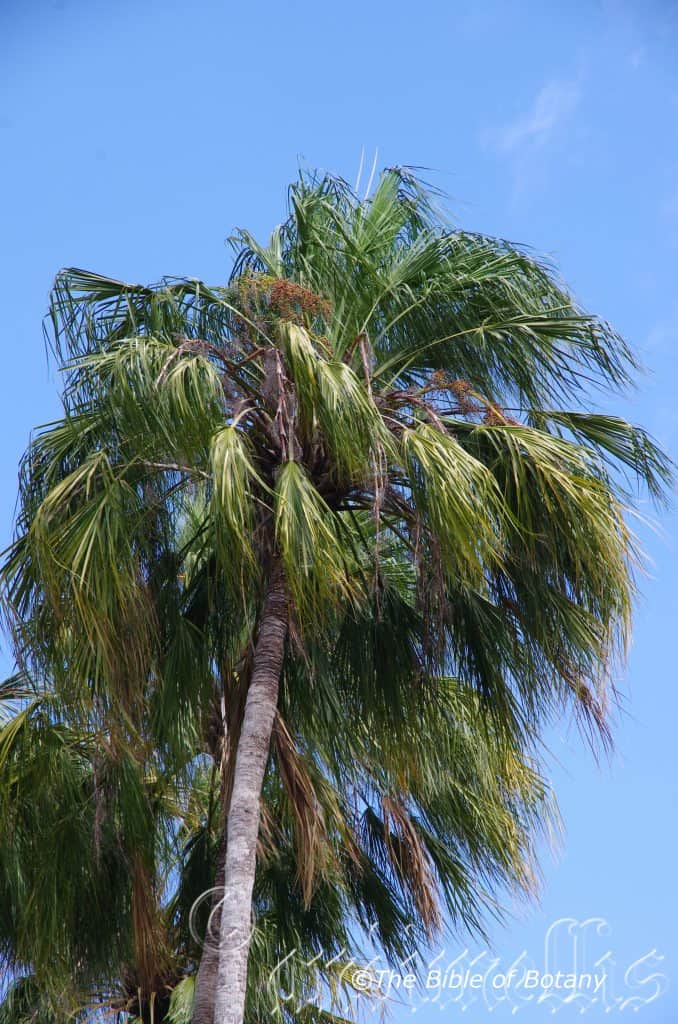
Anderson Gardens Townsville Qld.

Anderson Gardens Townsville Qld.

Anderson Gardens Townsville Qld.
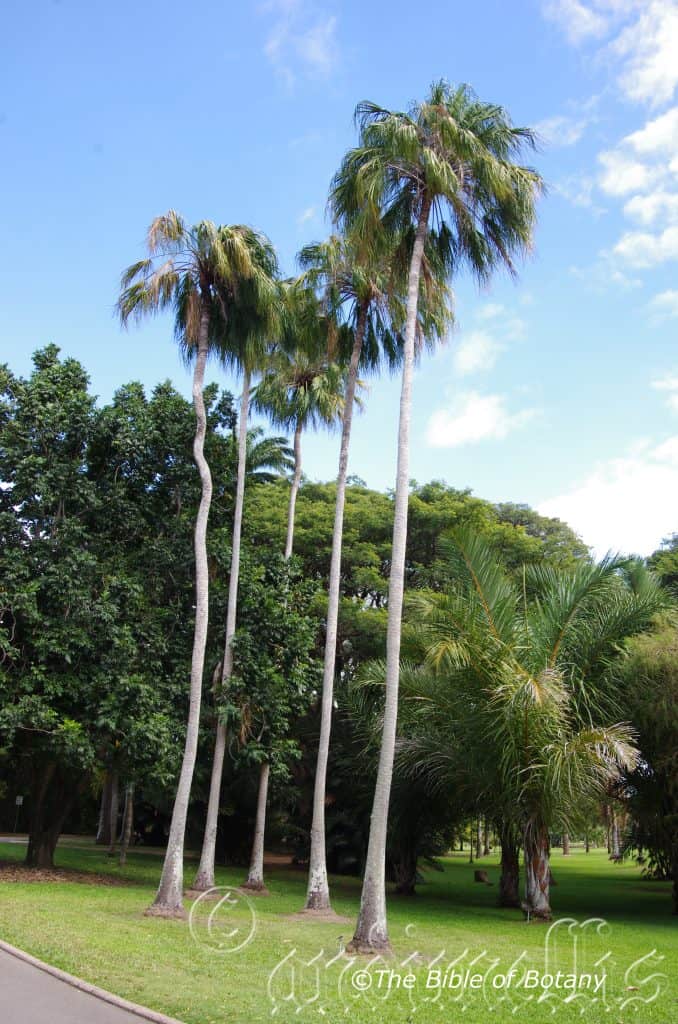
Anderson Gardens Townsville Qld.
Livistona drudei
Classification
Unranked: Monocots
Unranked: Commelinids
Order: Arecales
Family: Arecaceae
Genus: Is named in honour of Patrick Murray; 1632-1671, who was the Baron of Livingston Scotland and an avid plant collector and gardener. It is believed that his garden became the Edinburgh Botanic Gardens in 1680.
Specie: Is named in honour of Carl Georg Oscar Drude; 1852-1933, who was a German botanist who was best known for his research in the field of plant geography. This included the mapping of the world’s different floristic zones with Adolf Engler (1844-1930), in Die Vegetation der Erde 1896-1928.
Sub species:
Common Name: Tulley Cabbage Palm.
Distribution:
Livistona drudei is found east of the Great Dividing Range in northern Queensland south from Tulley to Conway Beach.
https://avh.ala.org.au/occurrences/search?taxa=Livistona+drudei#tab_mapView
Habitat Aspect Climate:
Livistona drudei prefers full sun to light dappled shade. It grows on the landward side of mangroves, in back dune swales, open forest, swampy heath forest on coastal deltas, along the margins of streams or tidal estuaries at low elevations adjacent to Melaleuca swamps. The altitude ranges from 2 meters ASL to 100 meters ASL
The temperatures range from 8 degrees in August to 38 degrees in January.
The rainfalls range from lows of 900mm to an average of 2050mm however this is of little consequence as the palms grow in marshy flats.
Soil Requirements:
Livistona drudei prefers better quality deep loams to medium clays. The soils are usually derived from decomposed sandstones, granites, brown basalts, black basalts, shales, metamorphic rocks or accumulated beach sands. The soils pH. ranges from 5.5pH to 7pH. It tolerates water logged soils and prefers seasonal water logged soils where the plants are partly submerged for short periods. Non saline soils to extremely saline soils are tolerated.
Height & Spread:
Wild Plants: 25m to 28m by 6m to 8m.
Characteristics:
Livistona drudei’s lower trunk is grey and is covered in the raised old leaf base scars. Below the crown dead the leaves and old fruiting spikes persist for many years. The trunk measures 150mm to 200mm and swells at the base to 200mm to 260mm in diameter. The leaf scars are narrow while the internodes fine longitudinal fissures between.
There are 30 to 60 leaves in a mature globose to conical crown. The deep green, arching petioles are purple near the base and measure 1500mm to 2300mm by 15mm to 25mm in diameter. The upper surface of the petioles are ridged to obtuse while the margins have a single row of recurved deep reddish-brown prickles that measure 1mm to 6mm in length on the proximal section becoming smooth on the apical quarter. The leaf base fibres are moderately prominent, coarse and persistent.
The costapalmate coriaceous leaves are regularly segmented and are circular. They measure 1000mm to 1500mm in length by 1100mm to 1600mm in width. The discolourous leaves are mid green to deep green, glabrous and glossy while the lower laminas are a deep green. The thick chartaceous segments radiate from the end of the petiole. The laminas divided into 60 to 80 rigid, equal segments for 60mm to 70mm of their length. The depth of the apical cleft 60mm to 65mm of the segment length while the attenuate apical lobes are pendulous. The 14 parallel veins are slightly prominent and are transverse by obscure lateral veins.
The inflorescences of Livistona drudei are not sexually dimorphic and are formed on rachises which are unbranched near the base and do not extend well beyond the leaves. The rachises are branched to the third order. The partial inflorescences have 7 or 8 lateral branches. The inflorescences measure 1500mm to 3000mm in length.
The prophyll is glabrous. The single perpendicular bract is tightly tubular and glabrous. The cylindrical rachis bracts are tight, chartaceous with acuminate apexes. The rachilla is moderately covered in white pubescent hairs and measures 10mm to 80mm in length. The conical flowers are usually in clusters of 2 to 5 or at times are singular and measure 1.7mm to 2.2mm in length. The cream to yellow, narrow triangular sepals have obtuse-acute apexes and measure 1.4mm to 1.5mm in length. The thick, cream to yellow, broad ovate petals have obtuse acute and measure 1.7mm to 2mm in length.
The pastel yellow filaments measure 1.4mm to 1.6mm in length while the anthers are bright yellow. The flowers appear from September to December.
Livistona drudei’s fruits are globose to pyriforme nuts. The semi glossy, deep purple-black nuts measure 10mm to 12mm in length by 10mm to 11mm in diameter. The epicarp is sparsely covered in lenticular pores while the suture line extends for half the length of the fruit. The mesocarp is thin and fibrous while the endocarps are thin and brittle. The ellipsoidal seeds measure 8mm to 9mm in length and 7mm to 8mm in diameter. The eophyll has 5 ribs. The pedicels measure 1mm to 2mm in length. The fruits appear from November to May.
Wildlife:
The flowers are very popular amongst various insects including native bees, beetles, flies and wasps.
Cultivation:
Livistona drudei are beautiful tall palms with a dense, bushy, semi weeping crown that grow particularly well on moisture problem soils or adjacent to swampy ground. It is suitable for small, medium and large gardens close to the coast or high in the mountains in temperate sub tropical or tropical gardens. As garden subjects they will grow from 16 meters to 18 meters by 8 meters to 10 meters wide. It is cold tolerant to temperatures at least as low as minus 4 degree once established.
Livistona drudei is a great palm for park scenarios or for planting in new rainforest gardens as they can grow in full sun. They have very rigid sharp spines so care should be taken when pruning old undiscarded leaves from the palms. Best kept away from where children play. It is exceptionally hardy and versatile in all situations especially where soils are continuously wet from seepages or low lying and covered in water for long periods over the year. Care should be taken if it is being planted in shallow soils in exposed situations as they can be blown over. Most plants blown over will survive and straighten up giving unusual shapes to the trunks.
It is very good in very wet waterlogged soils along the coast or along riverine flats. When grown in full shade or partial shade the trunks are ideal for growing Platycerium ferns and Asplenium nidus in the north or Asplenium australis further south.
The plants quickly form a large elongated dome on the ground before forming a trunk which can take 15 years to form even a meter high trunk. The should be planted at least 2 meters back from paths and away from where children play because of the rigid spines on the leaf rachis.
Propagation:
Seeds: Livistona drudei seeds can be sown directly into a seed raising mix after roughing the sides with fine sandpaper to assist in germination. Cover the seeds with 5mm to 10mm of fine weed free mulch and keep moist. Place the tray in a warm sunny position. When the seedlings are 30mm to 50mm tall, prick them out and plant them into 50mm native tubes using a good organic mix.
Once the seedlings reach 100mm to 150mm in height they can be planted out into their permanent position.
Fertilize using seaweed, fish emulsion or organic chicken pellets soaked in water on an alternate basis. Fertilize every two months until the plants are established then twice annually in early September or March to maintain health, vitality and better flowering.
Further Comments from Readers:
“Hi reader, it seems you use The Bible of Botany a lot. That’s great as we have great pleasure in bringing it to you! It’s a little awkward for us to ask, but our first aim is to purchase land approximately 1,600 hectares to link several parcels of N.P. into one at The Pinnacles NSW Australia, but we need your help. We’re not salespeople. We’re amateur botanists who have dedicated over 30 years to saving the environment in a practical way. We depend on donations to reach our goal. If you donate just $5, the price of your coffee this Sunday, We can help to keep the planet alive in a real way and continue to bring you regular updates and features on Australian plants all in one Botanical Bible. Any support is greatly appreciated. Thank you.”
In the spirit of reconciliation we acknowledge the Bundjalung, Gumbaynggirr and Yaegl and all aboriginal nations throughout Australia and their connections to land, sea and community. We pay our respect to their Elders past, present and future for the pleasures we have gained.

Mount Cootha Botanic Gardens Qld.
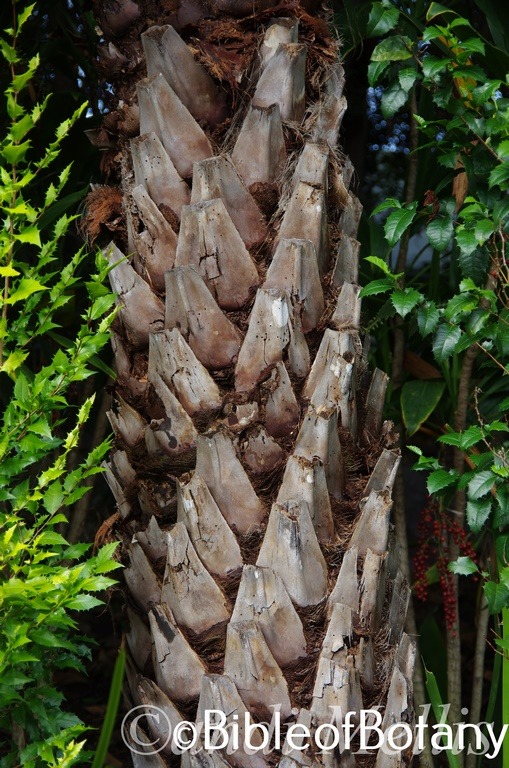
Mount Cootha Botanic Gardens Qld.
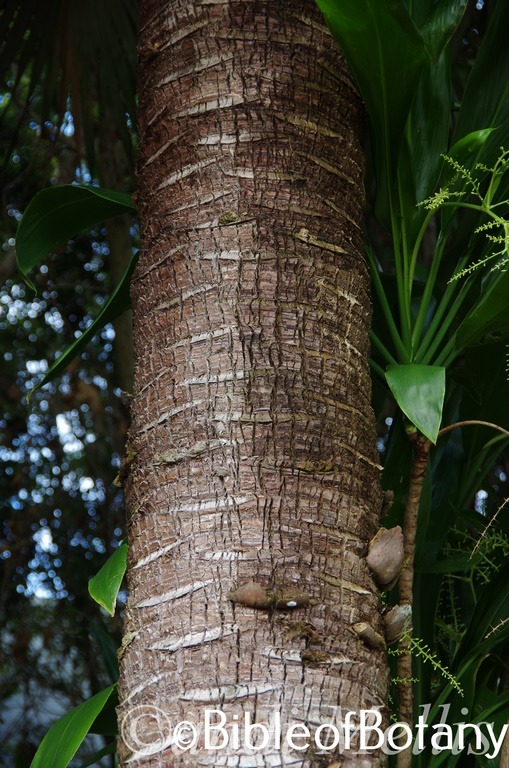
Mount Cootha Botanic Gardens Qld.

Mount Cootha Botanic Gardens Qld.

Mount Cootha Botanic Gardens Qld.

Mount Cootha Botanic Gardens Qld.
Livistona fulva
Classification:
Unranked: Monocots
Unranked Commelinids
Order: Arecales
Family: Arecaceae
Genus: Is named in honour of Patrick Murray; 1632-1671, who was the Baron of Livingston Scotland and an avid plant collector and gardener. It is believed that his garden became the Edinburgh Botanic Gardens in 1680.
Specie: From Fulvidus which is for fawn, yellowish or reddish-yellow a blonde. It refers to the colour of a structure or organ on a plant usually the flowers. Here it refers to the lower laminas being fawnish-yellow.
Sub species:
Common Name: Palm.
Distribution:
Livistona fulva is found a small area on the Blackdown Tablands east of Emerald in eastern central Queensland.
Habitat Aspect Climate:
Livistona fulva prefers full sun to light dappled shade. It grows in moist sites in tall open Eucalyptus forests, particularly in gullies and gorges near streams and waterfalls and at the bases of cliffs. The altitude ranges from 400 meters ASL to 900 meters ASL
The temperatures range from 8 degrees in August to 38 degrees in January.
The rainfalls range from lows of 900mm to an average of 2050mm however this is of little consequence as the palms grow in marshy flats.
Soil Requirements:
Livistona fulva prefers better quality deep loams to course sands. The soils are derived from decomposed sandstones. The soils pH. ranges from 5.5pH to 6.5pH. It tolerates seasonal water logged soils where the plants are partly submerged for short periods. Non saline soils to mildly saline soils are tolerated.
Height & Spread:
Wild Plants: 12m to 16m by 5m to 6m.
Characteristics:
Livistona fulva’s grey to grey-brown trunk measures 10 metres to 13 metres in length by 200mm to 250mm in diameter DBH. The leaf scars are raised with narrow internodes.
There are 25 to 35 leaves in a mature globose crown. The deep green, arching petioles measure 1500mm to 2300mm by 12mm to 15mm in diameter. The upper surface of the petioles are ridged to obtuse while the basal margins are armed with single, curved black spines. The leaf base fibres are moderately prominent, coarse and persistent.
The costapalmate lamina is regularly segmented, circular in outline and measures 900mm to 1000mm in diameter. The discolourous leaves are greyish green to glaucous, glabrous on the upper lamina, while the lower lamina is coppery brown and sparsely covered in fawnish floccose to tomentose hairs. The laminas divided into 50 to 55% of their length with 60-66 segments. The rigid leaflets have 8 to 9 parallel veins each side of midrib, while the lateral veins are thinner than parallel veins. The segments apexes are acute.
The inflorescences of Livistona fulva are unbranched at the base and not sexually dimorphic. They measure 1 metre to 2.3 metres in length. The rachises are branched to the third order. The partial inflorescences have 7 or 8 lateral branches. The inflorescences measure 1500mm to 3000mm in length.
The prophyll is glabrous. The single perpendicular bract is loosely sheathing, with orange-brown scales. The cylindrical rachis bracts are tight, chartaceous with acuminate apexes. The rachilla is moderately covered in white papillose hairs and measures 5mm to 16mm in length. The conical flowers are born singularly or in loose clusters of 2 to 3 funnel-shaped which, measure 1.6mm to 2mm in length. The narrowly triangular sepals measure 1mm to 1.3mm in length. The broadly ovate, yellow petals measure 1.6mm to 2mm in length.
The pastel yellow filaments measure 1.4mm to 1.6mm in length while the anthers are bright yellow. The flowers appear from September to February.
The stamens measure 1.6mm to 1.8mm in length.
Livistona fulva’s fruits are globose nuts. The semi glossy, pruinose, black nuts measure 12mm to 16mm in diameter. The globose 5 ribbed seeds measure 10mm to 13mm in diameter.
Wildlife:
The flowers are very popular amongst various insects including native bees, beetles, flies and wasps.
Cultivation:
Livistona fulva is a beautiful tall palm with a dense, bushy, semi weeping crown that grows particularly well on deep moisture problem soils or adjacent to swampy ground. It is suitable for small, medium and large gardens close to the coast or high in the mountains in temperate sub tropical or tropical gardens. As garden subjects it will grow from 10 meters to 12 meters by 5 meters to 6 meters wide.
Livistona fulva is a great palm for park scenarios or for planting in new rainforest gardens as it can grow in full sun. It has very rigid sharp spines so care should be taken when pruning old undiscarded leaves from the palms and is best kept away from where children play. It is exceptionally hardy and versatile in all situations especially where soils are continuously moist from seepages or low lying and covered in water for short periods over the year. Care should be taken if it is being planted in shallow soils in exposed situations as it can be blown over. Most plants blown over will survive and straighten up giving unusual shapes to the trunks.
It is very good in very wet waterlogged soils along the coast or along riverine flats. When grown in full shade or partial shade the trunks are ideal for growing Platycerium ferns and Asplenium nidus in the north or Asplenium australis further south where adequate shade is supplied.
The plants quickly form a large circular dome on the ground before forming a trunk which can take 15 years to form even a meter high trunk. It is proving itself to be very adaptable to a large variety of garden situations. Mass plantings are best done at 6 to 8 meter centres.
Propagation:
Seeds: Livistona fulva seeds can be sown directly into a seed raising mix after roughing the sides with fine sandpaper to assist in germination. Cover the seeds with 5mm to 10mm of fine weed free mulch and keep moist. Place the tray in a warm sunny position. When the seedlings are 30mm to 50mm tall, prick them out and plant them into 50mm native tubes using a good organic mix.
Once the seedlings reach 100mm to 150mm in height they can be planted out into their permanent position.
Fertilize using seaweed, fish emulsion or organic chicken pellets soaked in water on an alternate basis. Fertilize every two months until the plants are established then twice annually in early September or March to maintain health, vitality and better flowering.
Further Comments from Readers:
“Hi reader, it seems you use The Bible of Botany a lot. That’s great as we have great pleasure in bringing it to you! It’s a little awkward for us to ask, but our first aim is to purchase land approximately 1,600 hectares to link several parcels of N.P. into one at The Pinnacles NSW Australia, but we need your help. We’re not salespeople. We’re amateur botanists who have dedicated over 30 years to saving the environment in a practical way. We depend on donations to reach our goal. If you donate just $5, the price of your coffee this Sunday, We can help to keep the planet alive in a real way and continue to bring you regular updates and features on Australian plants all in one Botanical Bible. Any support is greatly appreciated. Thank you.”
In the spirit of reconciliation we acknowledge the Bundjalung, Gumbaynggirr and Yaegl and all aboriginal nations throughout Australia and their connections to land, sea and community. We pay our respect to their Elders past, present and future for the pleasures we have gained.
Livistona humilis
Classification:
Unranked: Monocots
Unranked Commelinids
Order: Arecales
Family: Arecaceae
Genus: Is named in honour of Patrick Murray; 1632-1671, who was the Baron of Livingston Scotland and an avid plant collector and gardener. It is believed that his garden became the Edinburgh Botanic Gardens in 1680.
Specie: From Humilius, which is Latin for to be humble or the lowest. It refers to plants, which are low growing or do not gain attention.
Sub species:
Common Name: Sand Palm.
Distribution:
Livistona humilis is found in the top end of the Northern Territory east from Darwin to the north east coast west of Groote Eyelandt.
https://avh.ala.org.au/occurrences/search?taxa=Livistona+humilis#tab_mapView
Habitat Aspect Climate:
Livistona humilis prefers full sun, light dappled shade. It grows on sandy plains in open woodlands or short Eucalyptus forests. The altitude ranges from 2 meters ASL to 250 meters ASL
The temperatures range from 12 degrees in August to 40 degrees in January.
The rainfalls range from lows of 800mm to an average of 2050mm.
Soil Requirements:
Livistona humilis prefers better quality deep sandy loams to light fatty clays. The soils are usually derived from decomposed sandstone or alluvial river meanders. The soils pH. ranges from 5.5pH to 6.5pH. It does not tolerate water logged soils however seasonal flooding for short periods is tolerated. Non saline soils to moderately saline soils are tolerated.
Height & Spread:
Wild Plants: 5m to 7m by 3.5m to 5m.
Characteristics:
Livistona humilis’s lower trunk is grey and is covered in the raised old leaf base scars. Below the crown dead leaves and old fruiting spikes persist for many years. The trunk measures 50mm to 85mm and swells at the base to 50mm to 110mm in diameter. The leaf scars are narrow while the internodes measure 300mm in length with fine longitudinal fissures between.
There are 8 to 15 leaves in a mature globose crown. The petiole stubs are persistent or caduceous. The deep green, arching petioles measure 400mm to 700mm petiole by 2mm to 14mm in width. The upper surface of the petioles are flat while the margins have a single row of recurved yellowish to reddish-brown prickles that measure 1mm to 4mm in length on the proximal section. The basal and apical sections are smooth. The leaf base fibres are moderately prominent, coarse and persistent.
The costapalmate coriaceous leaves are regularly segmented and are circular. They measure 300mm to 500mm in length by 350mm to 600mm in width. The discolourous leaves are mid green and glossy while the lower laminas are a deep green and glabrous. The chartaceous segments radiate from the end of the petiole. The laminas divided into 30 to 44 rigid, equal segments for 60mm to 87mm of their length. The depth of the apical cleft 35mm to 89mm of the segment length while the apical lobes are acute and pendulous. The 12 parallel veins are slightly prominent and are transverse by obscure lateral veins.
The inflorescences of Livistona humilis are not sexually dimorphic and are formed on rachises which are unbranched near the base and extend well beyond the leaves. The rachises are branched to the third order. The partial inflorescences has a single lateral branch.
The male inflorescences measure 1000mm to 1800mm in length.
The female inflorescences measure 1250mm to 2300mm in length.
The perpendicular bract is lacking on this species. The cylindrical rachis bracts are thick chartaceous, scurfy and are sparsely covered in white puberulent hairs. The scurfy rachilla is sparsely covered in white puberulent hairs and measures 30mm to 120mm in length. The globose flowers are usually in clusters of 2 to 4 and measure 1.5mm to 1.8mm in length. The yellow, broadly ovate sepals are membranous and cuspidate and measure 1mm to 1.3mm in length. The yellow, broadly ovate petals are acute and measure 1.5mm to 1.8mm in length.
The pastel yellow filaments measure 1.2mm to 1.5mm in length while the anthers are bright yellow. The flowers appear from May to December.
Livistona humilis’s fruits are ellipsoidal to pyriform nuts. The glossy, deep purple to deep purple-black nuts measure 11mm to 19mm in length by 8mm to 12.5mm in diameter. The epicarp is sparsely covered in lenticular pores while the suture line extends for the full length of the fruit. The mesocarp is fleshy while the endocarps are thin. The ellipsoidal seeds measure 7mm to 9mm in length and 5mm to 6mm in diameter. The eophyll has 3 ribs. The pedicels measure 0.5mm to 1mm in length. The fruits appear from November to May.
Wildlife:
Livistona humilis flowers are very popular amongst various insects including native bees, beetles, flies and wasps.
Cultivation:
Livistona humilis are beautiful shorter fan palms with a dense bushy crown that grow particularly well on drier sandstones or sandy soils. It is suitable for small, medium and large gardens close to the coast or in semi-arid, tropical and monsoonal. As garden subjects they will grow from 6 meters to 8 meters by 3 meters to 4 meters wide. It is cold tolerant to temperatures at least as low as 2 degrees but have rarely been propagated.
Livistona humilis is a great palm for park scenarios or for planting in a larger desert oasis scene in full sun. It is exceptionally hardy and versatile in all situations however care should be taken if it is being planted in shallow soils in exposed situations as they can be blown over. Most plants blown over will not survive.
The plants quickly form a large dome on the ground before forming a trunk which can take 15 years to form even a meter high trunk. The should be planted at least 2 meters back from paths and away from where children play because of the rigid spines on the leaf rachis.
The palms will flower once the trunks attain a height of 500mm to 700mm in height.
Propagation:
Seeds: Livistona humilis is not an easy palm to transplant and great care is needed when moving it to its new home. It is best to plant the seeds directly in the ground in their permanent position. Seeds need to be treated first. First rough the sides of the washed seeds with fine sandpaper. Secondly place the seeds in a litre of water that has had a desert spoon of vinegar added and soak for 24 hours. Sow the freshly treated seeds directly into 75mm native tubes with a seed raising mix. Cover the seeds with 5mm to 10mm of fine weed free mulch and keep moist. Place the tray in a warm sunny position. Once the seedlings reach 250mm to 300mm in height they can be planted out into their permanent position. Be very careful as this specie resents root disturbance in the early stages of development.
Another method is to place the seeds after treating into a seed raising mix and once the first seed emerges plant the others out into their permanent position in the garden A few seeds will be sacrificed but at least the other seeds will not suffer from root disturbance and will have a better chance of survival.
The other method is to use large Jiffy pots or milk cartons that can be planted out directly into the ground.
Melaleuca bark, Stapler, Tie wire, Potting mix.
This is an old method that has lost favour and would be very successful. This method requires really no effort. To make bottomless, decomposable tube use Melaleuca bark. This is done by cutting a slab of bark 150mm to 180mm in length by 300mm to 330mm in width.
Make a hollow cylinder by rolling the bark around a 30mm t0 50mm diameter pipe or tube itself.
Staple the ends together and remove the pipe.
Now use tie wire to tie the bark in position around the middle and at each end.
Fill the tube with a porous sandy, peat mix.
Place a treated seed or 2 in each tube.
The cylinder will be 150mm to 180mm in height by 40mm to 55mm in diameter. When planting the palms out leave them in the bark tube. Roots that have already started to penetrate the bark will move into the surrounding soils quickly without disturbance.
Fertilize using seaweed, fish emulsion or organic chicken pellets soaked in water on an alternate basis. Fertilize every two months until the plants are established then twice annually in early September or March to maintain health, vitality and better flowering.
Further Comments from Readers:
“Hi reader, it seems you use The Bible of Botany a lot. That’s great as we have great pleasure in bringing it to you! It’s a little awkward for us to ask, but our first aim is to purchase land approximately 1,600 hectares to link several parcels of N.P. into one at The Pinnacles NSW Australia, but we need your help. We’re not salespeople. We’re amateur botanists who have dedicated over 30 years to saving the environment in a practical way. We depend on donations to reach our goal. If you donate just $5, the price of your coffee this Sunday, We can help to keep the planet alive in a real way and continue to bring you regular updates and features on Australian plants all in one Botanical Bible. Any support is greatly appreciated. Thank you.”
In the spirit of reconciliation we acknowledge the Bundjalung, Gumbaynggirr and Yaegl and all aboriginal nations throughout Australia and their connections to land, sea and community. We pay our respect to their Elders past, present and future for the pleasures we have gained.
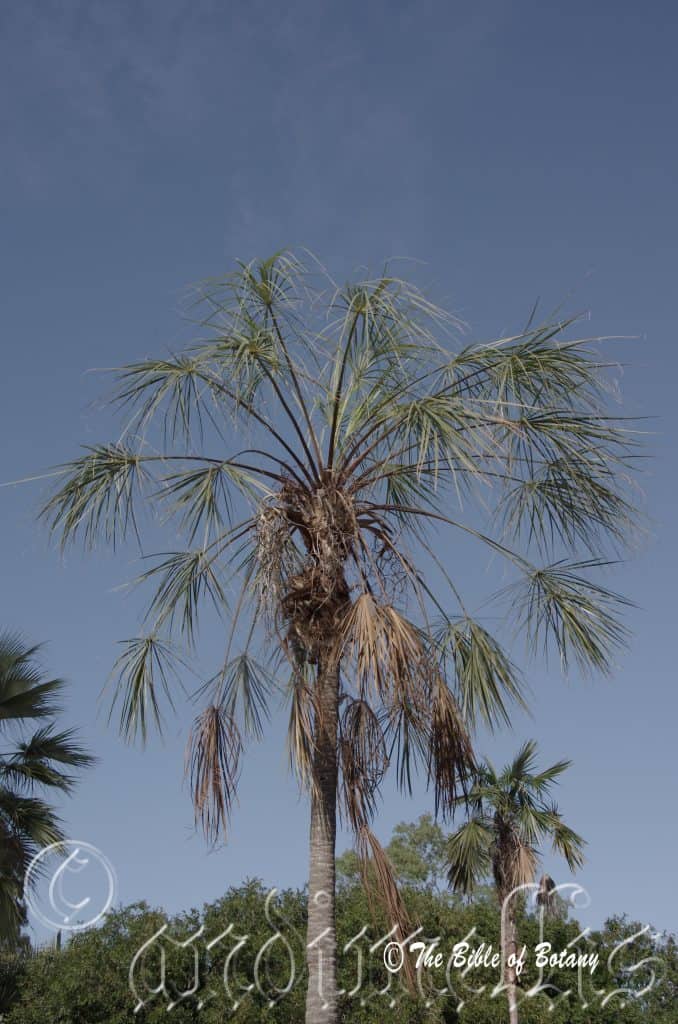
Palmatum Gardens Townsville Qld

Palmatum Gardens Townsville Qld
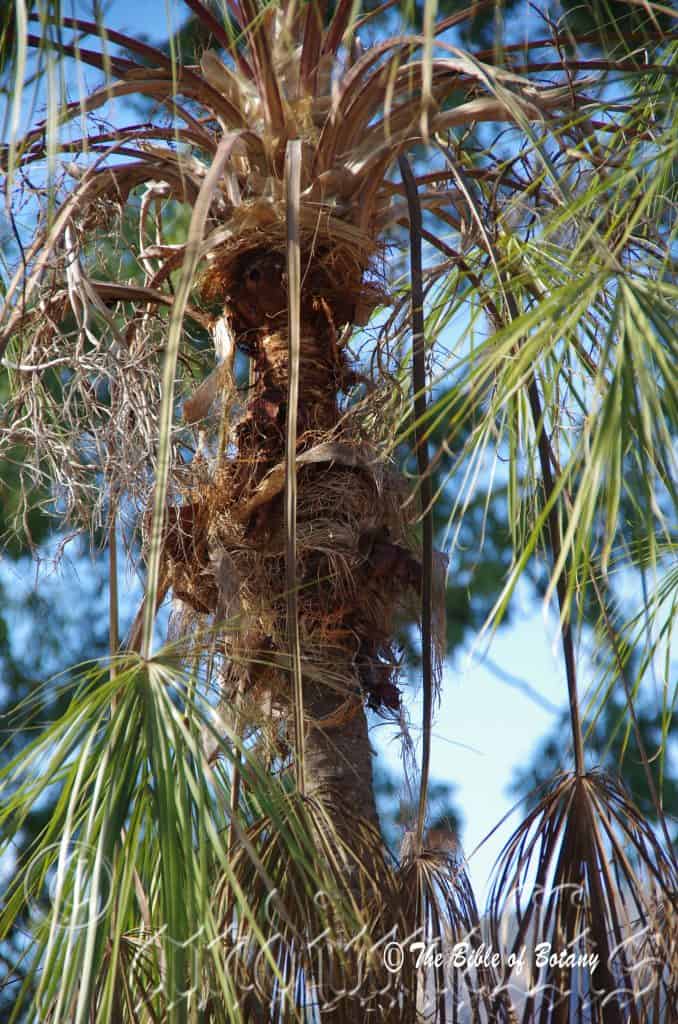
Palmatum Gardens Townsville Qld

Palmatum Gardens Townsville Qld

Palmatum Gardens Townsville Qld

Palmatum Gardens Townsville Qld
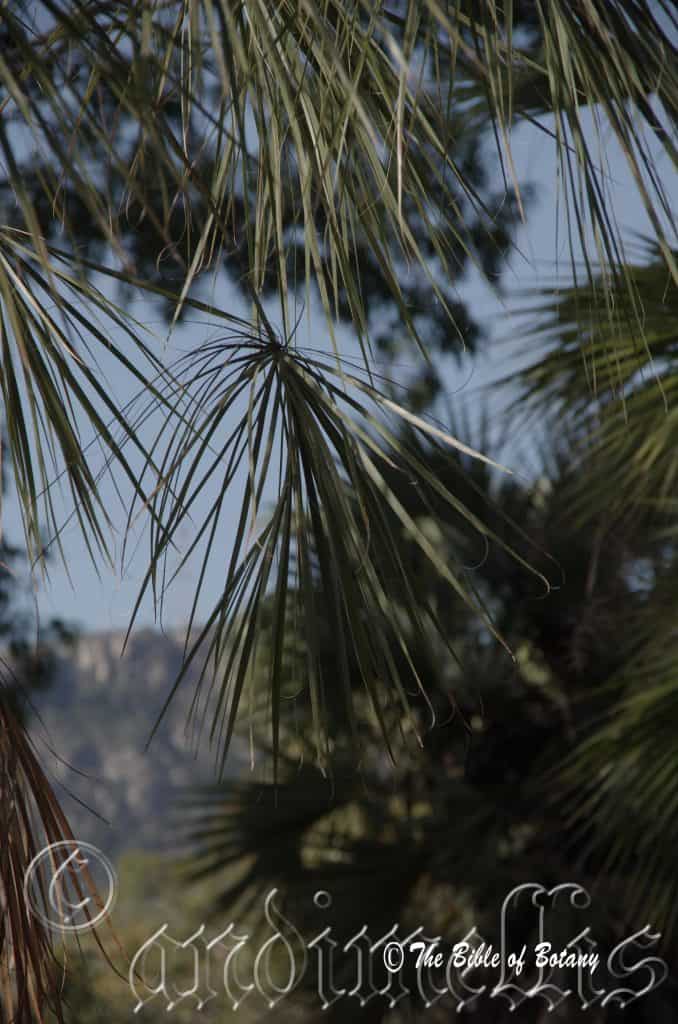
Palmatum Gardens Townsville Qld
Livistona inermis
Classification:
Unranked: Monocots
Unranked: Commelinids
Order: Arecales
Family: Arecaceae
Genus: Is named in honour of Patrick Murray; 1632-1671, who was the Baron of Livingston Scotland and an avid plant collector and gardener. It is believed that his garden became the Edinburgh Botanic Gardens in 1680.
Specie: From Inermis, which is Latin for without spines or unarmed. It refers to plants, which do not have spines or relatively few spines compared to other species within the genus.
Sub species:
Common Name: Wispy Fan Palm.
Distribution:
Livistona inermis is found in several disjunct populations in the Northern Territory including many of the eastern rivers or Kakadu National Park. There is also an outlying population on the Gregory River North West of Mount Isa extending to Boodjamulla National Park (Lawn Hill).
https://avh.ala.org.au/occurrences/search?taxa=Livistona+inermis#tab_mapView
Habitat Aspect Climate:
Livistona inermis prefers full sun, light dappled shade. It grows along creek beds, on marshy flats and adjacent to well-developed warm rainforests and on river meanders. The altitude ranges from 2 meters ASL to 300 meters ASL
The temperatures range from 8 degrees in August to 40 degrees in January.
The rainfalls range from lows of 800mm to an average of 1750mm.
Soil Requirements:
Livistona inermis prefers to grow on better quality deeper sandy loams to medium silts. The soils are usually derived from decomposed sandstone, shale or mud stone often over lime. The soils pH. ranges from 5pH to 6pH. It tolerates seasonally water logged soils. Non saline soils to moderately saline soils are tolerated.
Height & Spread:
Wild Plants: 8m to 10m by 2m to 2.5m.
Characteristics:
Livistona inermis’s lower trunk is grey and is covered in old leaf base scars and vertical furrows. Below the crown dead leaves and old fruiting spikes persist for many years. The trunk measure 60mm to 100mm and swells at the base to 100mm to 150mm in diameter.
There are 10 to 30 leaves in a mature globose crown. The arching petioles measure 600mm to 900mm. The upper surface of the petioles are flat or shallowly concave while the margins have small recurved deep reddish-brown to black prickles that measure 2mm to 5mm in length on the proximal section. The basal section is smooth while the apical section, the disjunct spines become smooth deep reddish-brown to black calli that measure 1 mm long. The leaf base fibres are moderately prominent, coarse and persistent.
The costapalmate coriaceous leaves regularly segmented, circular to sub circular, and measure 300mm to 700mm in length by 400mm to 900mm in width. The discolourous leaves are mid green to mid greenish-grey, glossy and pruinose while the lower laminas are deeper greenish-grey pruinose. The segments extended along the costa. The laminas divided into 24 to 48 equal segments for 80 to 97mm of their length. The depth of the apical cleft 70 to 84mm of the segment length while the apical lobes are acuminate to filiform, rigid to semi pendulous. The 16 to 20 parallel slightly prominent veins are transverse by obscure lateral veins.
The monoecious inflorescences of Livistona inermis are formed on rachises which are unbranched near the base and do not extend beyond the leaves. The sheaths measure 400mm to 900mm in length. The rachises are branched to the third order. The partial inflorescences have 3 to 5 erect to semi erect lateral branches.
The coriaceous, glabrous prophyll measure 120mm to 280mm in length by 20mm to 30mm in width. The pedunculare bract is lacking on this species. The cylindrical rachis bracts are chartaceous glabrous and sparsely covered in white or cream puberulent hairs on the apical third. The rudimentary bracts are subtending the distal inflorescences. The glabrous rachilla measure 10mm to 90mm in length. The flowers are usually in clusters of 2 or 3 or at times are born singularly are funnel form and measure 1.5mm to 2.3mm in length. The white to cream or yellow, narrow triangular sepals are acute and measure 0.7mm to 1.4mm in length. The membranous, white to cream or yellow, broadly ovate petals are apiculate and measure 1.5mm to 1.9mm in length.
The pastel yellow filaments measure 1.5mm to 1.6mm in length while the anthers are bright yellow. The flowers appear from August to March.
Livistona inermis’s fruits are obovoid to pyriform nuts. The glossy, black nuts measure 10mm to 13mm in length by 6mm to 7mm in diameter. The epicarp is smooth while the suture line extends the length of the fruit and is marked with lip like structures. The mesocarp is fleshy while the endocarps are thin. The ellipsoidal seeds measure 8mm to 9mm in length. The eophyll has 3 ribs. The fruits ripen from June to September.
Wildlife:
Livistona inermis’s flowers are very popular amongst various insects including native bees, beetles, flies and wasps.
Cultivation:
Livistona inermis are beautiful tall palms with a dense bushy crown that grow particularly well on moisture problem soils or adjacent to swampy ground. It is suitable for small, medium and large gardens close to the coast or high in the mountains in temperate sub tropical or tropical gardens. It is cold tolerant to temperatures at least as low as 4 degree once established.
Livistona inermis is an excellent small palm for small rainforest gardens or park scenarios or for planting in new rainforest gardens as they can grow in full sun. It is exceptionally hardy and versatile in all situations however care should be taken if it is being planted in shallow soils in exposed situations as they can be blown over. Most plants blown over will survive with the apex straightening as it reshoots.
The plants quickly form a large dome on the ground before forming a trunk which can take 15 years to form even a meter high trunk. It should be planted at least 2 meters back from paths to allow them room to spread without interfering with pedestrians.
Propagation:
Seeds: Livistona inermis is not an easy palm to transplant and great care is needed when moving it to its new home. It is best to plant the seeds directly in the ground in their permanent position. Seeds need to be treated first. First rough the sides of the washed seeds with fine sandpaper. Secondly place the seeds in a litre of water that has had 1 desert spoon of vinegar added and soak for 24 hours. Sow the freshly treated seeds directly into 75mm native tubes with a seed raising mix. Cover the seeds with 5mm to 10mm of fine weed free mulch and keep moist. Place the tray in a warm sunny position. Once the seedlings reach 250mm to 300mm in height they can be planted out into their permanent position. Be very careful as this specie resents root disturbance in the early stages of development.
Another method is to place the seeds after treating into a seed raising mix and once the first seed emerges plant the others out into their permanent position in the garden A few seeds will be sacrificed but at least the other seeds will not suffer from root disturbance and will have a better chance of survival.
The other method is to use large Jiffy pots or milk cartons that can be planted out directly into the ground.
Melaleuca bark, Stapler, Tie wire, Potting mix.
This is an old method that has lost favour and would be very successful. This method requires really no effort. To make bottomless, decomposable tube use Melaleuca bark. This is done by cutting a slab of bark 150mm to 180mm in length by 300mm to 330mm in width.
Make a hollow cylinder by rolling the bark around a 30mm t0 50mm diameter pipe or tube itself.
Staple the ends together and remove the pipe.
Now use tie wire to tie the bark in position around the middle and at each end.
Fill the tube with a porous sandy, peat mix.
Place a treated seed or 2 in each tube.
The cylinder will be 150mm to 180mm in height by 40mm to 55mm in diameter. When planting the palms out leave them in the bark tube. Roots that have already started to penetrate the bark will move into the surrounding soils quickly without disturbance.
Fertilize using seaweed, fish emulsion or organic chicken pellets soaked in water on an alternate basis. Fertilize every two months until the plants are established then twice annually in early September or March to maintain health, vitality and better flowering.
Further Comments from Readers:
“Hi reader, it seems you use The Bible of Botany a lot. That’s great as we have great pleasure in bringing it to you! It’s a little awkward for us to ask, but our first aim is to purchase land approximately 1,600 hectares to link several parcels of N.P. into one at The Pinnacles NSW Australia, but we need your help. We’re not salespeople. We’re amateur botanists who have dedicated over 30 years to saving the environment in a practical way. We depend on donations to reach our goal. If you donate just $5, the price of your coffee this Sunday, We can help to keep the planet alive in a real way and continue to bring you regular updates and features on Australian plants all in one Botanical Bible. Any support is greatly appreciated. Thank you.”
In the spirit of reconciliation we acknowledge the Bundjalung, Gumbaynggirr and Yaegl and all aboriginal nations throughout Australia and their connections to land, sea and community. We pay our respect to their Elders past, present and future for the pleasures we have gained.

Palmatum Gardens Townsville Qld

Palmatum Gardens Townsville Qld
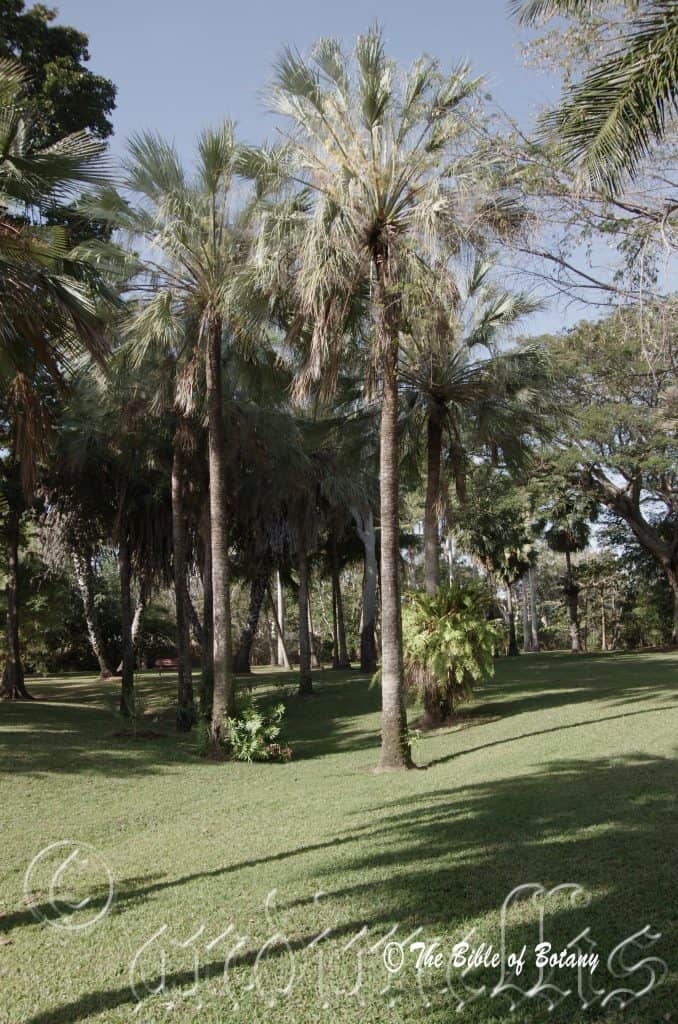
Palmatum Gardens Townsville Qld.
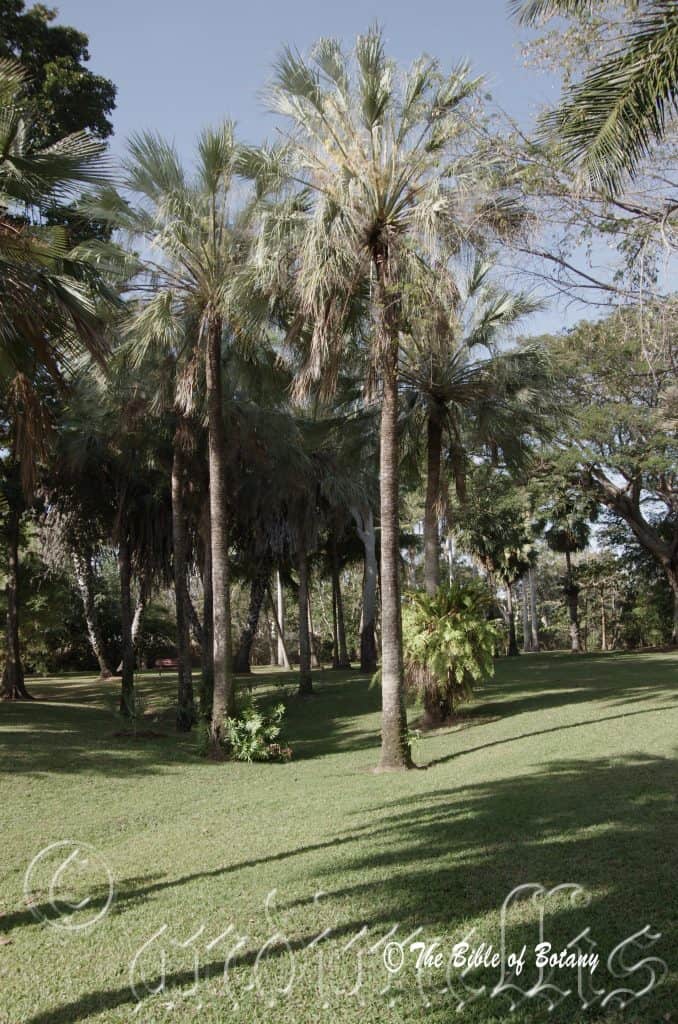
Palmatum Gardens Townsville Qld.
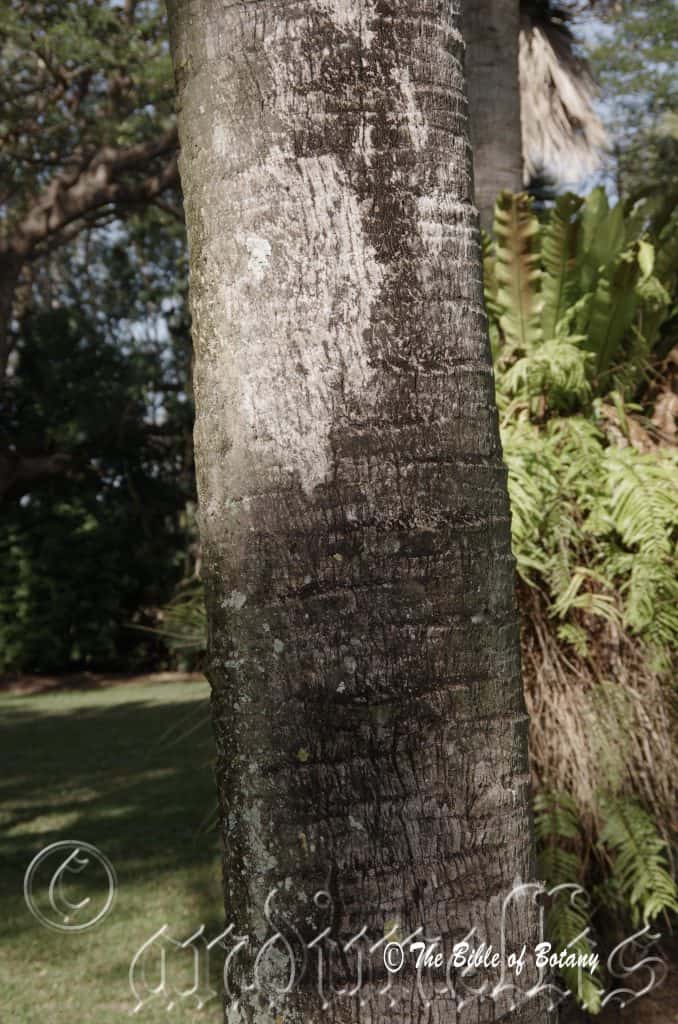
Palmatum Gardens Townsville Qld.
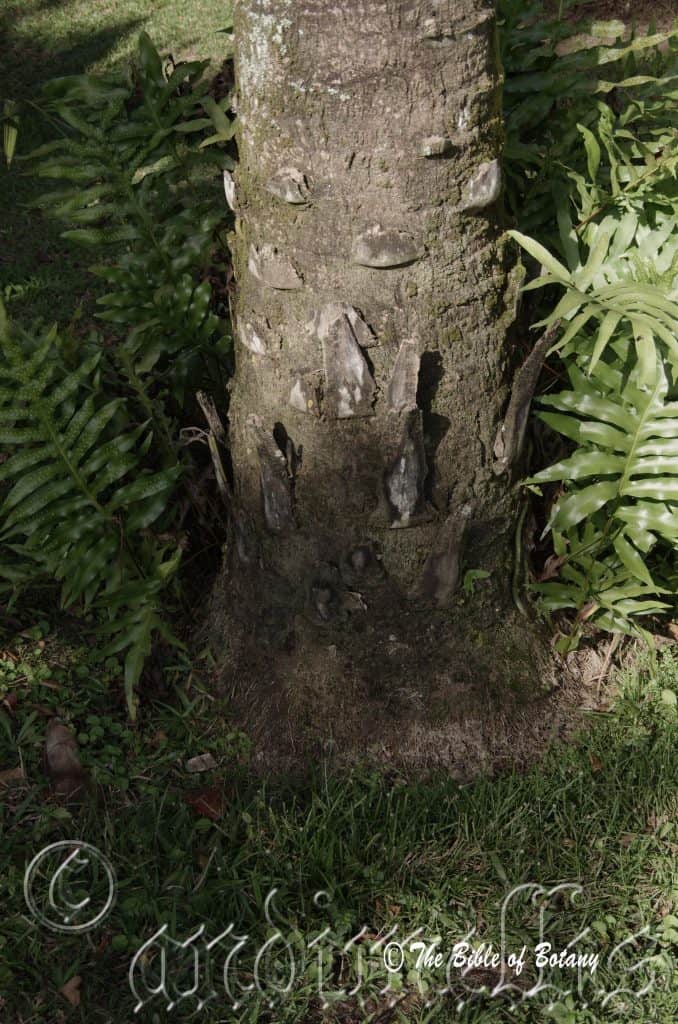
Palmatum Gardens Townsville Qld.

Palmatum Gardens Townsville Qld.

Palmatum Gardens Townsville Qld.
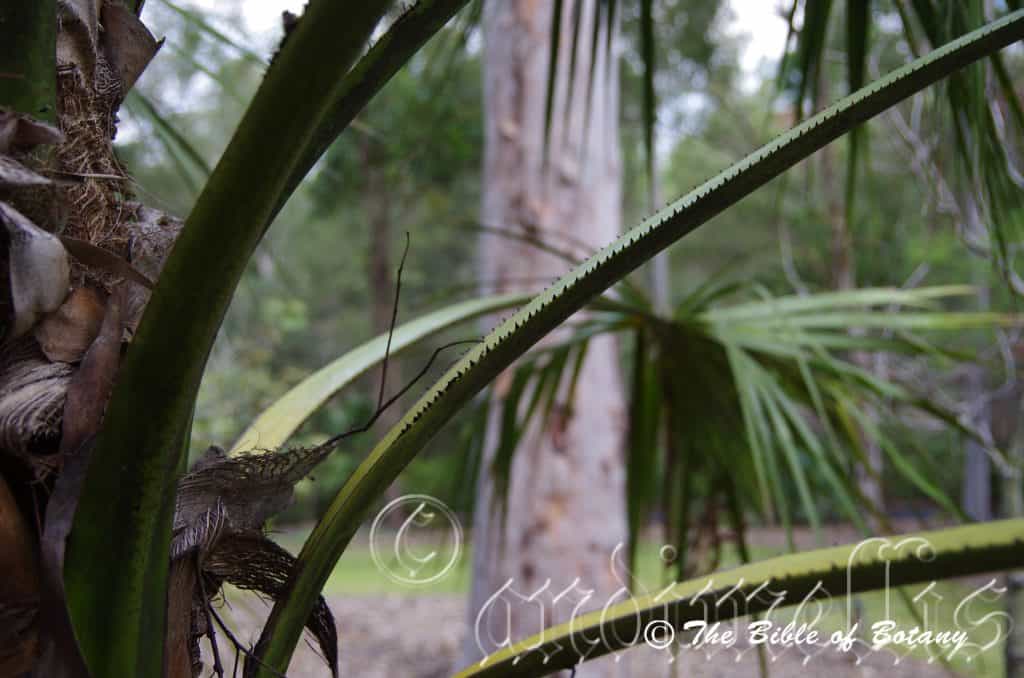
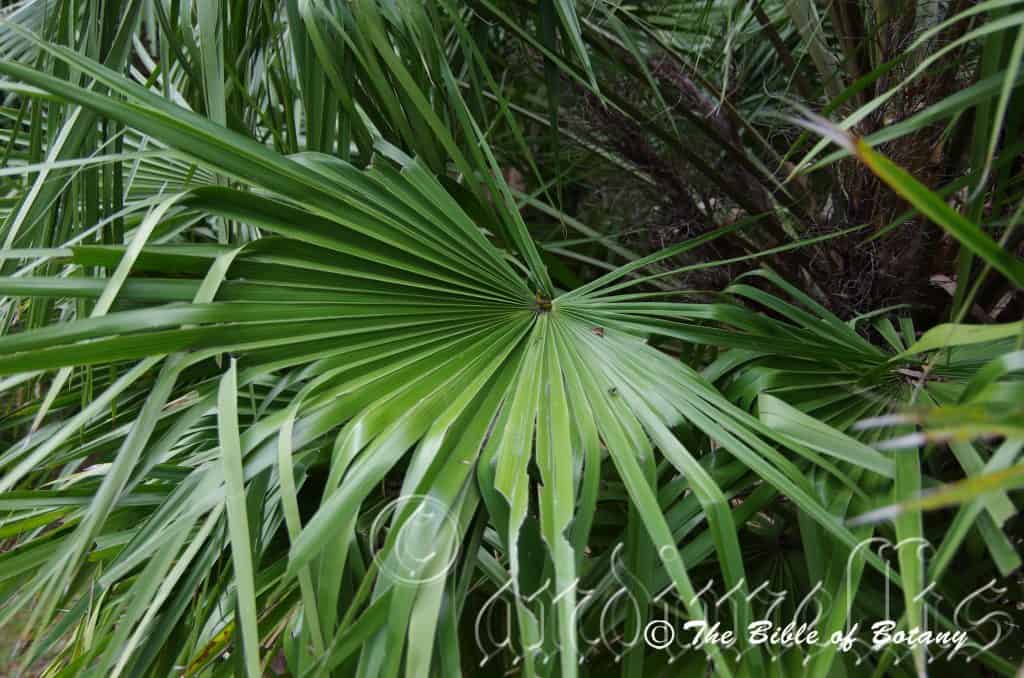
Mount Cootha Botanic Gardens Qld.
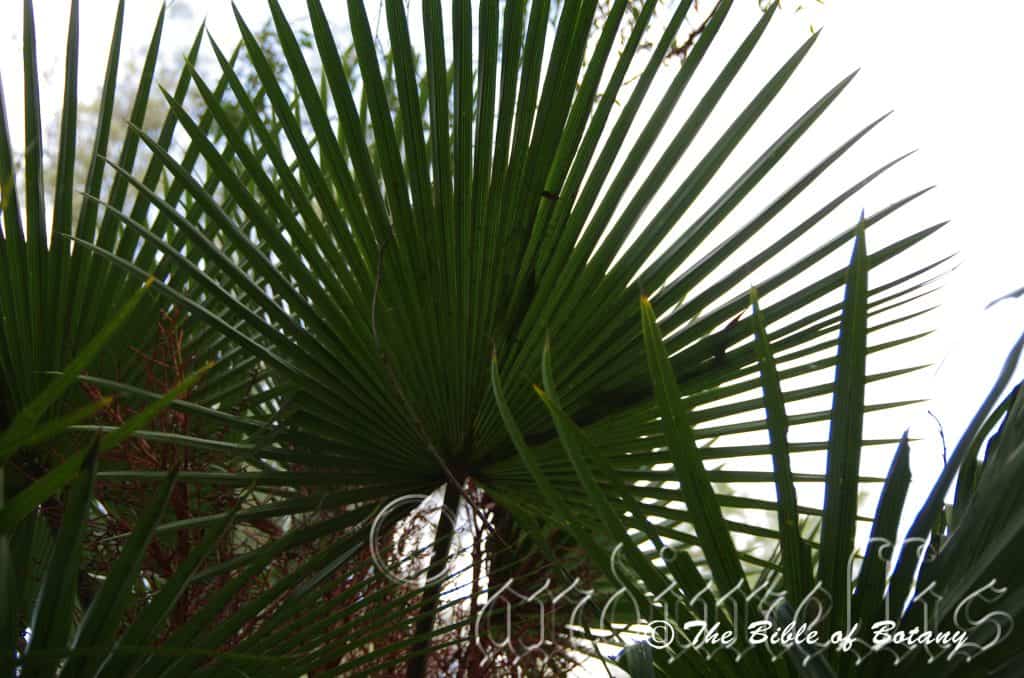
Mount Cootha Botanic Gardens Qld.

Palmatum Gardens Townsville Qld.
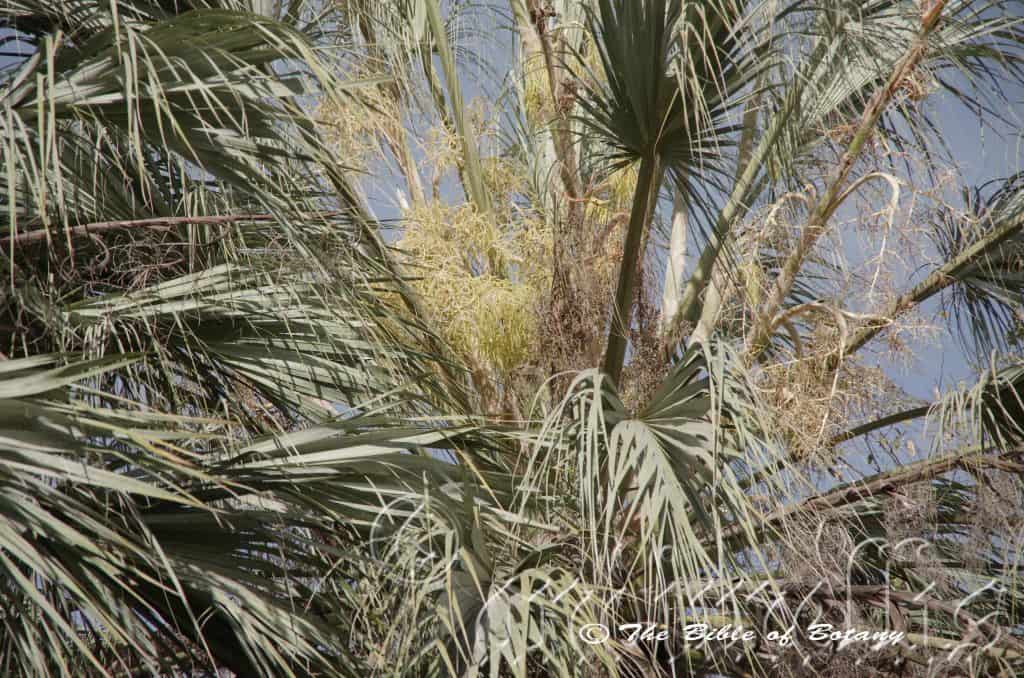
Palmatum Gardens Townsville Qld.
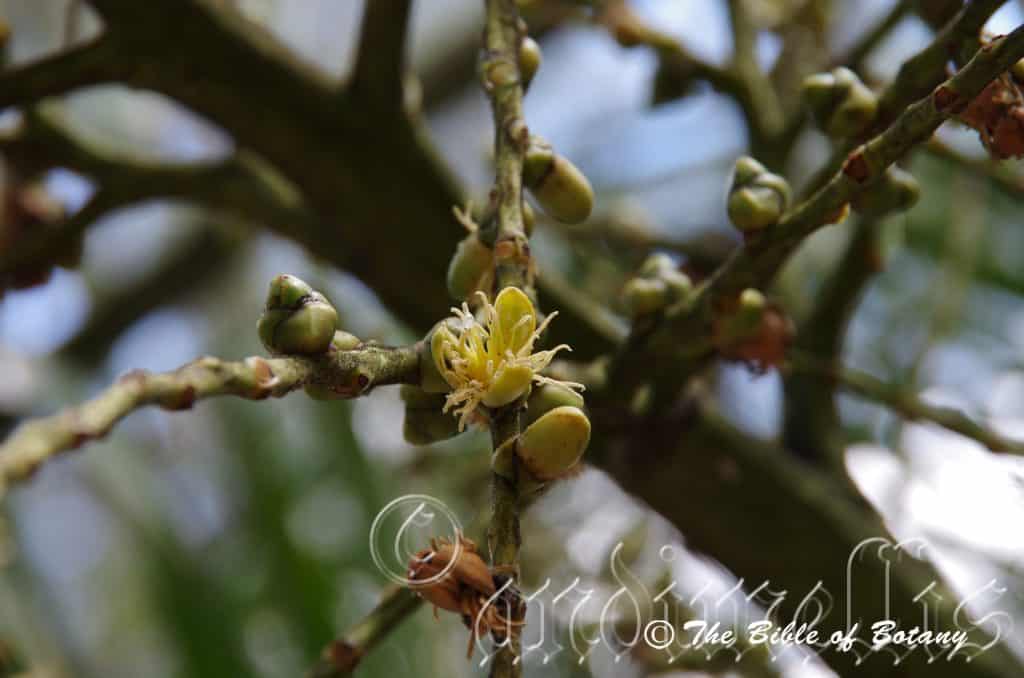
Mount Cootha Botanic Gardens Qld.
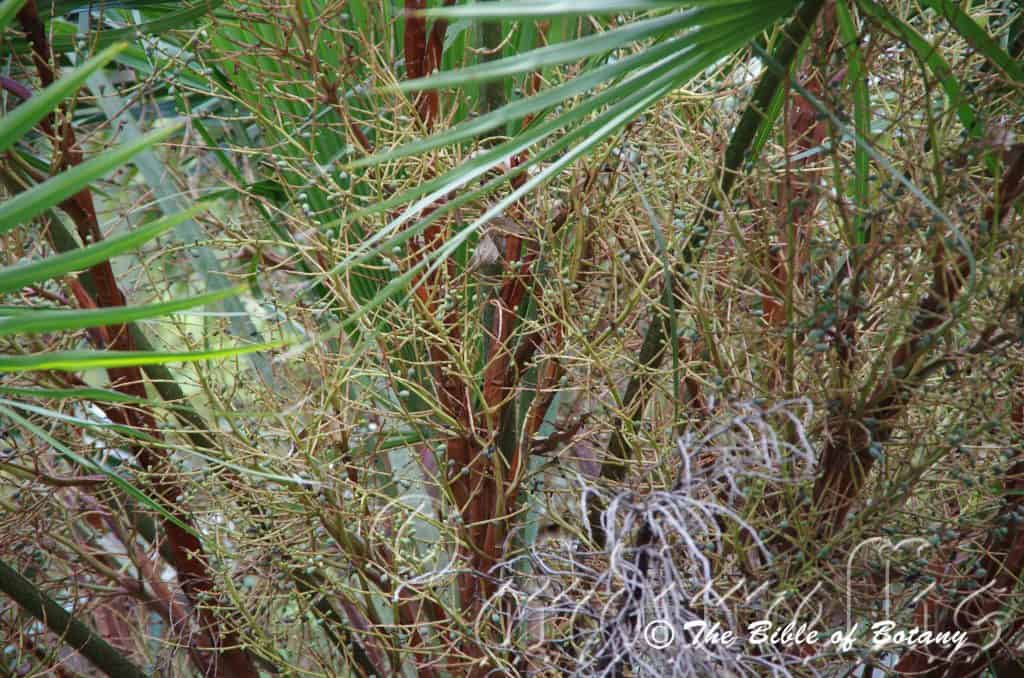
Mount Cootha Botanic Gardens Qld.
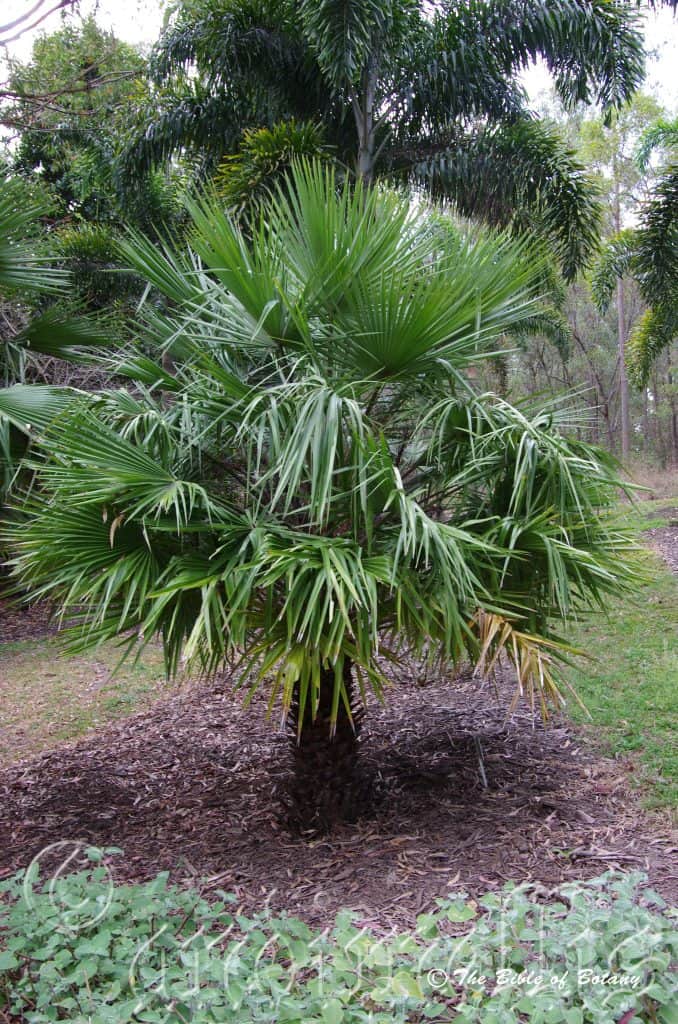
Mount Cootha Botanic Gardens Qld.

Mount Cootha Botanic Gardens Qld.
Livistona lanuginosa
Classification:
Unranked: Monocots
Unranked: Commelinids
Order: Arecales
Family: Arecaceae
Genus: Is named in honour of Patrick Murray; 1632-1671, who was the Baron of Livingston Scotland and an avid plant collector and gardener. It is believed that his garden became the Edinburgh Botanic Gardens in 1680.
Specie: From L?n?gin?sus, which is Latin for woolly. It refers to plants, which are covered in very long woolly hairs.
Sub species:
Common Name:
Distribution:
Livistona lanuginosa is restricted to the upper reaches of the Cape Campaspe River, the Burdekin River, and The Belyando River with its tributaries and Rolleston.
https://avh.ala.org.au/occurrences/search?taxa=Livistona+lanuginosa#tab_mapView
Habitat Aspect Climate:
Livistona lanuginose prefers semi shade to full sun. It grows in riparian zones particularly seasonal gullies, floodplains with high water tables and river meanders. The altitude ranges from 140 meters ASL to 270 meters ASL.
The temperatures range from 2 degrees in August to 40 degrees in January.
The rainfalls range from lows of 400mm to an average of 850mm however the palms derive additional moisture through capillary action from water lying below the dry creek beds and flats.
Soil Requirements:
Livistona lanuginosa prefers to grow on better quality deep loams to medium clays. The soils are derived from decomposed sandstone. The soils pH. ranges from 5.5pH to 6pH. It tolerates water logged soils and prefers seasonal water logged soils where the plants are partly submerged for short periods. Non saline soils to moderately saline soils are tolerated.
Fertilize using Seaweed, fish emulsion or a half strength solution of organic chicken pellets soaked in water on an alternate basis. Fertilize every 2 months until the plants are well established then in spring or autumn for better vitality, healthier plants.
Height & Spread:
Wild Plants: 16m to 18m by 6m to 8m.
Characteristics:
Livistona lanuginosa’s lower trunk is grey and is covered in the raised old leaf base scars and vertical furrows. Below the crown dead leaves and old fruiting spikes persist for many years. The trunk measure 250mm to 350mm and swells at the base to 300mm to 450mm in diameter. The base is covered with persistent old petiole stubs.
There are 35 to 45 leaves in a mature globose crown. The semi erect petioles measure 1500mm to 2000mm. The upper surface of the petioles are flat while the margins have small recurved deep black prickles that measure 2mm to 4mm in length on the proximal section of the petiole. The basal and apical sections are smooth. The leaf base fibres are moderately prominent, coarse and persistent.
The costapalmate leaves are arcuate, coriaceous, regularly segmented, and circular and measure 1300mm to 1900mm in length by 1500mm to 2100mm in width. The discolourous leaves are pale grey-green and glossy while the lower laminas are a slightly deeper grey-green, dull and strongly pruinose. The segments extended along the costa. The laminas are divided into 70 to 92 segments for 30mm to 36mm of their length. The depth of the apical cleft 20 to 35mm of the segment length while the apical lobes are acuminate, rigid to semi pendulous. The 16 parallel slightly prominent veins are transverse by obscure lateral veins.
The inflorescences of Livistona lanuginosa are not sexually dimorphic and are formed on rachises which are unbranched near the base and do not extend beyond the leaves. The inflorescences measure 1400mm to 2200mm in length. The rachises are branched to the fourth order. The partial inflorescences have 8 to 12 erect to semi erect lateral branches.
The coriaceous prophyll are densely covered in white lanate hairs. The 1 or 2 pedunculare bracts are loosely sheathing persistent until it disintegrate and are densely covered in white lanate hairs. The glabrous rachilla measure 30mm to 120mm in length. The conical flowers are born singularly or in pairs and measure 2.8mm to 3mm in length. The cream to yellow, narrow, triangular sepals have an acuminate or aristate apex and measure 1.5mm to 1.6mm in length. The thick, cream or yellow, triangular petals have an acute apex and measure 2.8mm to 3mm in length.
The pastel yellow filaments measure 1.8mm to 2.2mm in length while the anthers are bright yellow. The flowers appear from March to November.
Livistona lanuginosa’s fruits are globose nuts. The glossy deep purple-brown to glossy black nuts are sparsely covered in white dots and small streaks and measure 27mm to 38mm in length by 25mm to 36mm in diameter. The epicarp is covered in relatively large lenticular pores while the suture line extends for half the length of the fruit and is marked with lip like structures. The mesocarp is dry and fibrous while the endocarps are relatively thick and measure 2mm to 3mm in thickness. The globose seeds measure 18mm to 22mm in diameter. The eophyll has 5 ribs. The pedicels measure 0.5mm to 1mm in length. The fruits ripen from June to September.
Wildlife:
Livistona lanuginosa’s flowers are very popular amongst various insects including native bees, beetles, pollen flies and wasps.
Cultivation:
Livistona lanuginosa are beautiful tall palms with a dense bushy crown that grow particularly well on drier soils or adjacent to swampy ground. It is suitable for small, medium and large gardens close to the coast or high in the mountains in temperate sub tropical or tropical gardens. As garden subjects they will grow from 15 meters to 16 meters by 6 meters to 8 meters in diameter. It is cold tolerant to temperatures at least as low as 3 degree once established.
Livistona lanuginosa is a great palm for park scenarios or for planting in new rainforest gardens as they can grow in full sun. They have very rigid sharp spines so care should be taken when pruning old undiscarded leaves from the palms. Best kept away from where children play. It is exceptionally hardy and versatile in all situations however care should be taken if it is being planted in shallow soils in exposed situations as they can be blown over. Most plants blown over will survive and straighten up giving unusual shapes to the trunks.
It is very good in very wet waterlogged soils along the coast or along riverine flats. When grown in full shade or partial shade the trunks are ideal for growing Platycerium ferns and Asplenium nidus or Asplenium australis.
The plants quickly form a large dome on the ground before forming a trunk which can take 12 years to form even a meter high trunk. The should be planted at least3 meters back from paths and away from where children play because of the rigid spines on the leaf rachis.
Propagation:
Seeds: Livistona lanuginosa seeds can be sown directly into a seed raising mix after roughing the sides with fine sandpaper to assist in germination. Cover the seeds with 5mm to 10mm of fine weed free mulch and keep moist. Place the tray in a warm sunny position. When the seedlings are 50mm to 70mm tall, prick them out and plant them into 50mm native tubes using a good organic mix.
Once the seedlings reach 120mm to 200mm in height they can be planted out into their permanent position.
Fertilize using seaweed, fish emulsion or organic chicken pellets soaked in water on an alternate basis. Fertilize every two months until the plants are established then twice annually in early September or March to maintain health, vitality and better flowering.
Further Comments from Readers:
“Hi reader, it seems you use The Bible of Botany a lot. That’s great as we have great pleasure in bringing it to you! It’s a little awkward for us to ask, but our first aim is to purchase land approximately 1,600 hectares to link several parcels of N.P. into one at The Pinnacles NSW Australia, but we need your help. We’re not salespeople. We’re amateur botanists who have dedicated over 30 years to saving the environment in a practical way. We depend on donations to reach our goal. If you donate just $5, the price of your coffee this Sunday, We can help to keep the planet alive in a real way and continue to bring you regular updates and features on Australian plants all in one Botanical Bible. Any support is greatly appreciated. Thank you.”
In the spirit of reconciliation we acknowledge the Bundjalung, Gumbaynggirr and Yaegl and all aboriginal nations throughout Australia and their connections to land, sea and community. We pay our respect to their Elders past, present and future for the pleasures we have gained.
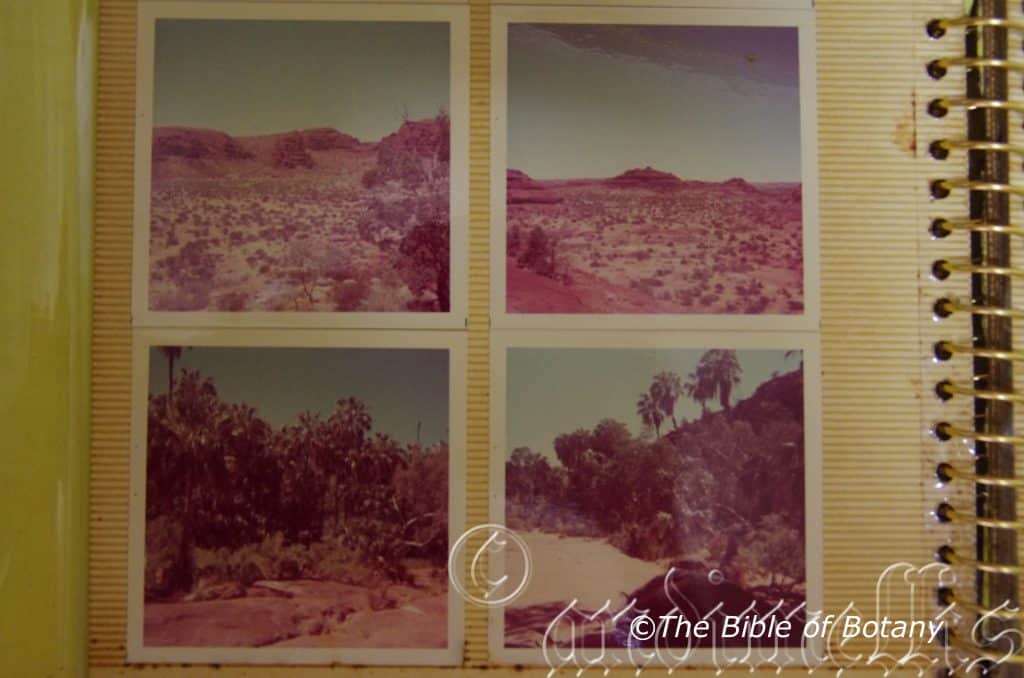

Anderson Botanic Gardens Qld.
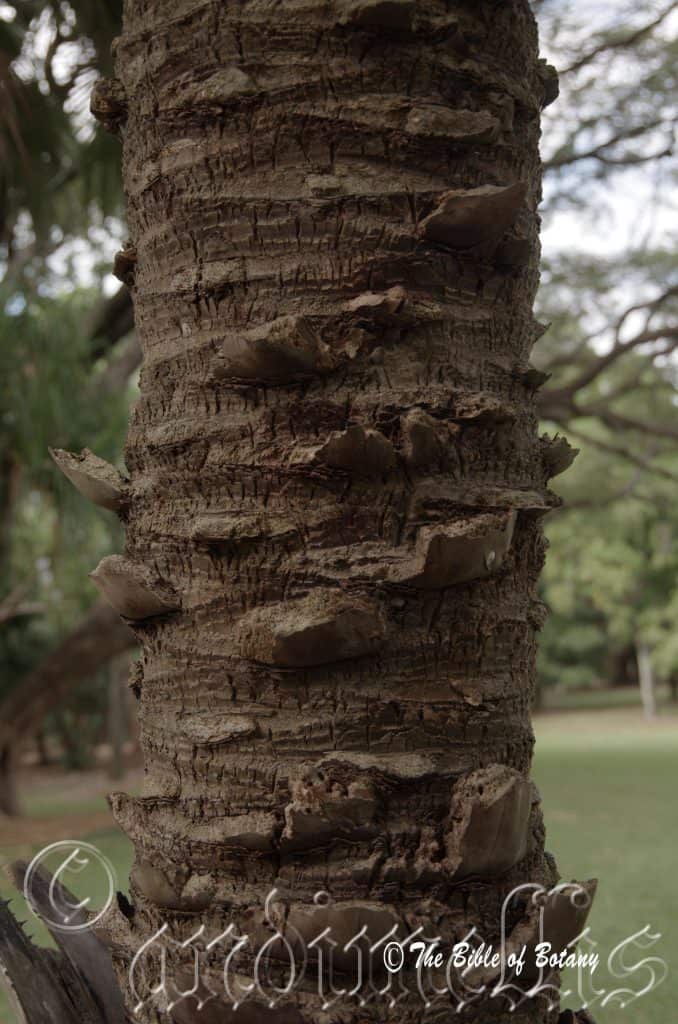
Anderson Botanic Gardens Qld.

Anderson Botanic Gardens Qld.
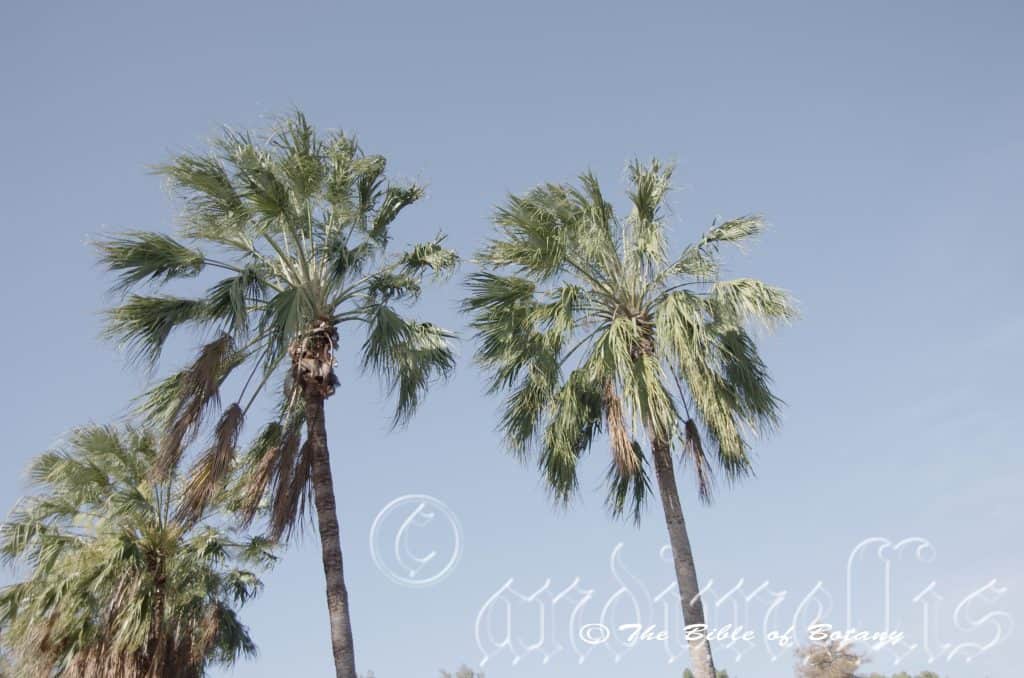
Anderson Botanic Gardens Qld.
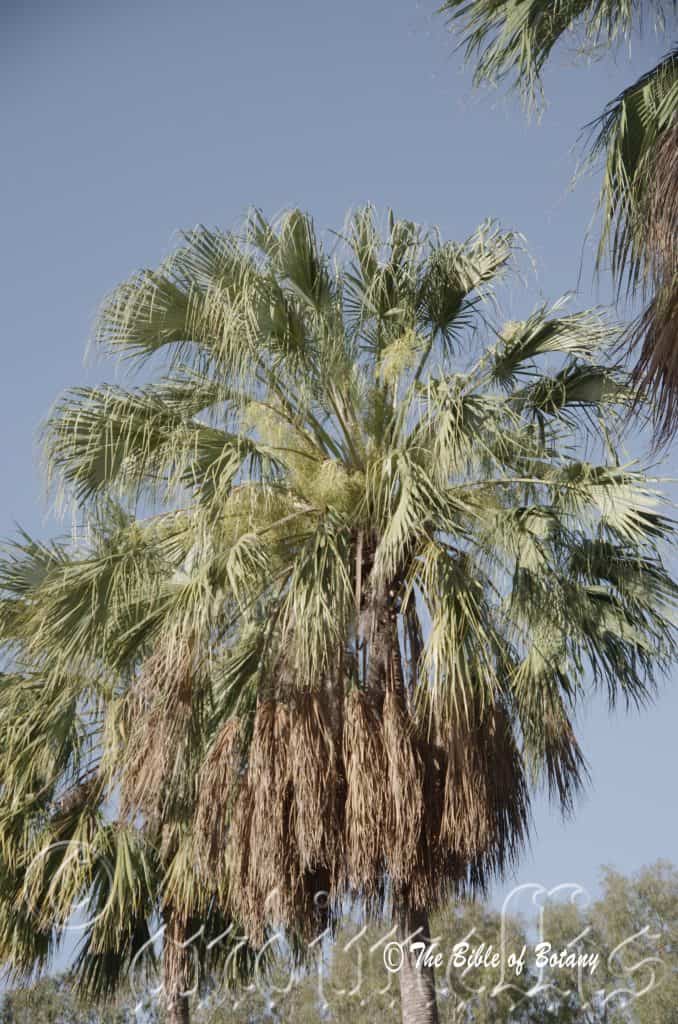
Anderson Botanic Gardens Qld.
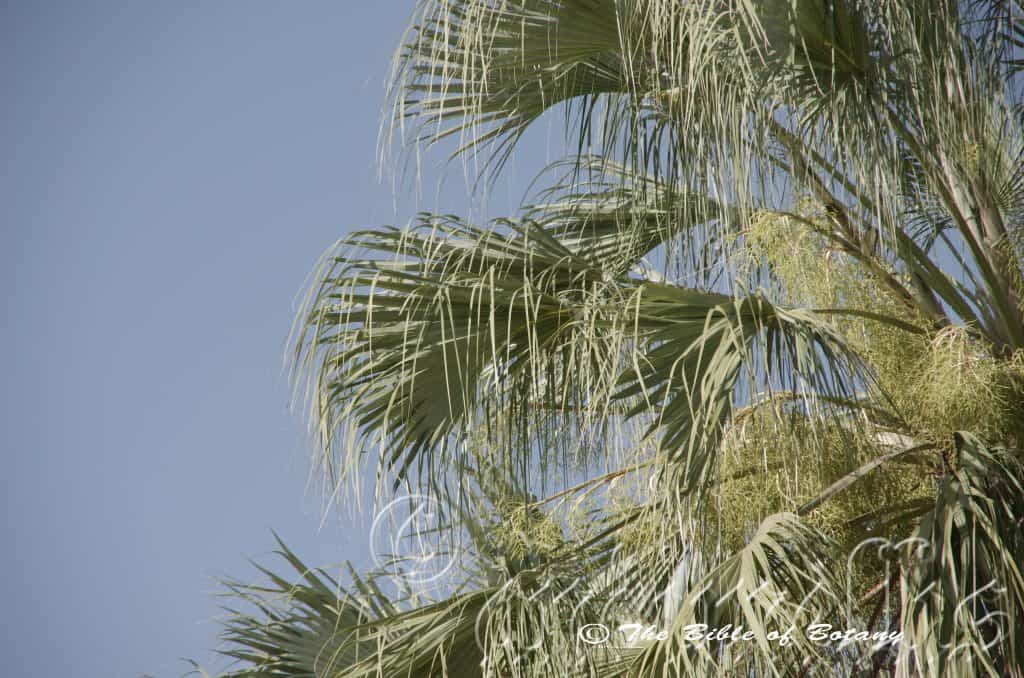
Anderson Botanic Gardens Qld.

Anderson Botanic Gardens Qld.
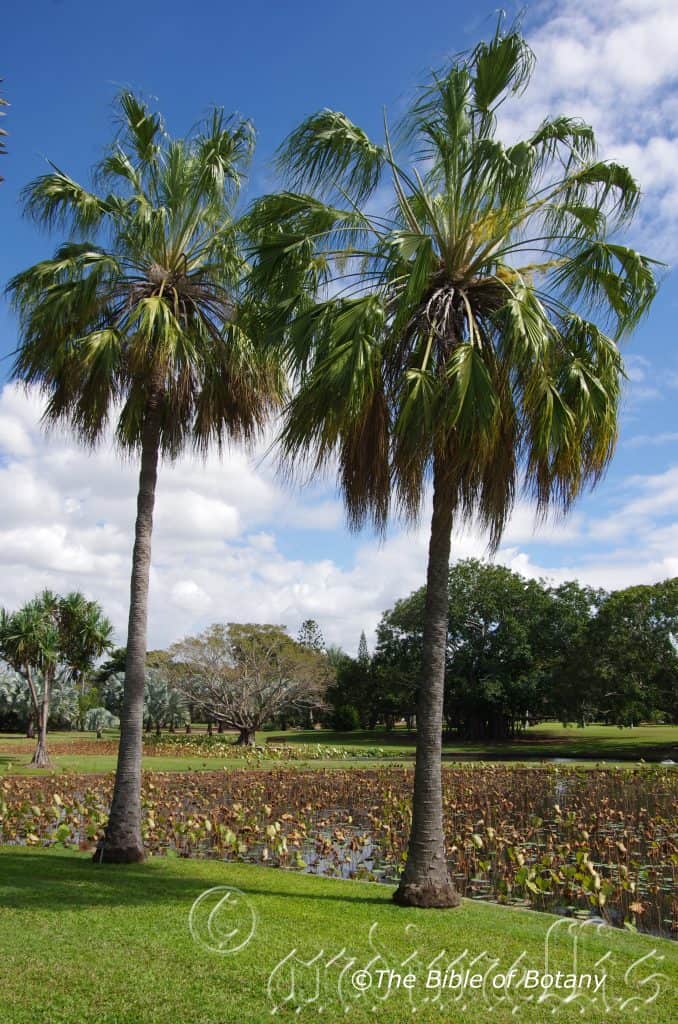
Anderson Botanic Gardens Qld.
Livistona mariae
Classification:
Unranked: Monocots
Unranked: Commelinids
Order: Arecales
Family: Arecaceae
Genus: Is named in honour of Patrick Murray; 1632-1671, who was the Baron of Livingston Scotland and an avid plant collector and gardener. It is believed that his garden became the Edinburgh Botanic Gardens in 1680.
Specie: Is named in honour of the grand duchess of Marie Alexandrovna; 1853-1920 who was the beautiful daughter of the Tsar Alexander the second of Russia.
Sub species: There is some discussion and confusion on whether Livistona rigida is a specie in its own right or should it be classed as Livistona mariae subsp. rigida. I am dealing with it here as separate specie under Livistona rigida however without reading the latest report, which now appears that the DNA indicates a very close relationship between the 2 isolated populations. They may in fact have only been separated for as little as 40 thousand years thus may be in a state of divergent evolution dur to environmental factors.
Common Name: Finke River Cabbage Palm or Red Cabbage Palm.
Distribution:
Livistona mariae is found along the Finke River in southern Northern Territory near Hermannsburg.
https://avh.ala.org.au/occurrences/search?taxa=Livistona+mariae#tab_mapView
Habitat Aspect Climate:
Livistona mariae prefers full sun, light dappled shade. It grows along dry creek beds or seasonally marshy flats adjacent to dry creek beds. The altitude ranges from 611 meters ASL to 640 meters ASL.
The temperatures range from 2 degrees in August to 40 degrees in January.
The rainfalls range from lows of 200mm to an average of 450mm however the palms derive additional moisture through capillary action from water lying deeper below the dry creek beds and marshes.
Soil Requirements:
Livistona mariae prefers better quality deep loams to medium gritty clays. The soils are usually derived from decomposed sandstone. The soils pH. ranges from 5.5pH to 6pH. It tolerates water logged soils and prefers seasonal water logged soils where the plants are partly submerged for short periods. Non saline soils to moderately saline soils are tolerated.
Height & Spread:
Wild Plants: 25m to 32m by 6m to 8m.
Characteristics:
Livistona mariae’s lower trunk is grey and is covered in old leaf base scars and vertical furrows. Below the crown dead leaves and old fruiting spikes persist for many years. The trunk measures 250mm to 300mm and swells at the base to 450mm to 550mm in diameter.
The lower trunk is grey and is covered in old leaf base scars and vertical furrows. Below the crown dead leaves and old fruiting spikes persist for many years. The trunk measure 250mm to 350mm and swells at the base to 300mm to 450mm in diameter.
There are 10 to 30 leaves in a mature globose crown. The arching petioles measure 600mm to 900mm petiole. The upper surface of the petioles are flat or shallowly concave while the margins have small curved deep reddish-brown to black prickles that measure 2mm to 5 mm in length on the proximal section. The basal section is smooth while the apical section, the disjunct spines become smooth deep reddish-brown to black calli that measure 1 mm long. The leaf base fibres are moderately prominent, coarse and persistent. The costapalmate coriaceous leaves regularly segmented, circular to sub circular, and measure 300mm to 700mm in length by 300mm to 700mm in length. The discolourous leaves are mid green to mid greenish-grey, glossy and pruinose while the lower laminas are deeper greenish-grey pruinose. The segments extended along the costa. The laminas divided into 24 to 48 equal segments for 80-97mm of their length. The depth of the apical cleft is 70 to 84mm of the segment lengths while the apical lobes are acuminate to filiform and rigid to semi pendulous. The 16 to 20 parallel slightly prominent veins are transverse by obscure lateral veins.
The inflorescences of Livistona mariae are not sexually dimorphic and are formed on rachises which are unbranched near the base and do not extend beyond the leaves. The sheaths measure 400mm to 900mm in length. The rachises are branched to the third order. The partial inflorescences have 10 to 14 erect to semi erect lateral branches.
The thick chartaceous, glabrous prophyll measure 120mm to 280mm in length by 20mm to 30mm in width. The pedunculare bract is lacking on this species. The cylindrical rachis bracts are chartaceous glabrous and sparsely covered in white or cream puberulent hairs on the apical third. The rudimentary bracts are subtending the distal inflorescences. The glabrous rachillae measure 10mm to 90mm in length. The flowers are usually in clusters of 2 or 3 or at times are born singularly are funnel form and measure 1.5mm to 2.3mm in length. The white to cream or yellow, narrow triangular sepals are acute and measure 0.7mm to 1.4mm in length. The membranous, white to cream or yellow, broadly ovate petals are apiculate and measure 1.5mm to 1.9mm in length.
The pastel yellow filaments measure 1.5mm to 1.6mm in length while the anthers are bright yellow. The flowers appear from August to March.
Livistona mariae’s fruits are obovoid to pyriform nuts. The glossy, black nuts measure 10mm to 13mm in length by 6mm to 7mm in diameter. The epicarp is smooth while the suture line extends the length of the fruit and is marked with lip like structures. The mesocarp is fleshy while the endocarps are thin. The ellipsoidal seeds measure 8mm to 9mm in length. The eophyll has 5 ribs. The fruits ripen from June to September.
Livistona mariae’s fruits are globose nuts. The nuts measure 12mm to 14mm in length by 13mm to 16mm in diameter. The stigma is persistent on the berries. The green berries turn glossy black when ripe. The hard pale red-brown, flattened spherical seeds measures 8mm to 9mm in length by 10.5mm to 12mm in length by 11mm to 13mm in diameter.
Wildlife:
The flowers are very popular amongst various insects including native bees, beetles, flies and wasps.
Cultivation:
Livistona mariae has a special place in my life. It was the first plant I become interested in to the point of notating the differences with my local Livistona australis and Livistona decora. Further or should I say later on my honeymoon I encountered Livistona ridida and thus my interest in botany never dwained. Our honeymoon was spent sleeping under the stars in many out back locations in South Australia, the Northern Territory and far north western Queensland. Living from hand to mouth and enjoying what Australia had to offer. This was also the first plant I successfully grew and if the plants at Zipf Road Redland Bay are still there would now be 49 years old from seed as I write. The seeds were collected by us at Hermannsburg Mission in September/October 1972. It would be another 10 years before they were finally planted in the ground. Our third daughter’s name ‘Maree’ was inspired by the beauty within this palm. Tall, slim, upright and with a beautiful (purple) blush.
Livistona mariae is a beautiful tall palm with a dense bushy crown that grow particularly well on drier soils on steep slopes or dry rocky ground. It is suitable for small, medium and large gardens close to the coast or high in the mountains in temperate sub tropical or tropical gardens. As garden subjects they will grow from 12 meters to 15 meters by 6 meters to 8 meters in diameter. It is cold tolerant to temperatures at least as low as 2 degree once established.
A plant we grew at the south end of Redland Bay off Zipf Road was doing exceptionally well in a sheltered position, on heavy clay at the top of a 3 meter bank overlooking the dam and was never watered in the 8 years that we were residing there. This palm if it is still there would be one of the first to be grown in cultivation being sown as a seedling in 1975 and planted out in 1980 from a 200mm pot. It was used as an indoor plant for many years.
Livistona mariae is a great palm for park scenarios or for planting in new rainforest gardens as they can grow in full sun. They have very rigid sharp spines so care should be taken when pruning old undiscarded leaves from the palms. Best kept away from where children play. It is exceptionally hardy and versatile in all situations however care should be taken if it is being planted in shallow soils in exposed situations as they can be blown over. Most plants blown over will survive and straighten up giving unusual shapes to the trunks.
It is very good in very wet waterlogged soils along the coast or along riverine flats. When grown in full shade or partial shade the trunks are ideal for growing Platycerium ferns and Asplenium nidus or A. australis.
The plants quickly form a large dome on the ground before forming a trunk which can take 15 years to form even a meter high trunk. The should be planted at least 1.5 meters back from paths and away from where children play because of the rigid spines on the leaf rachis.
Propagation:
Seeds: Livistona mariae seeds can be sown directly into a seed raising mix after roughing the sides with fine sandpaper to assist in germination. Cover the seeds with 5mm to 10mm of fine weed free mulch and keep moist. Place the tray in a warm sunny position. When the seedlings are 30mm to 50mm tall, prick them out and plant them into 50mm native tubes using a good organic mix.
Once the seedlings reach 100mm to 150mm in height they can be planted out into their permanent position.
Fertilize using seaweed, fish emulsion or organic chicken pellets soaked in water on an alternate basis. Fertilize every two months until the plants are established then twice annually in early September or March to maintain health, vitality and better flowering.
Further Comments from Readers:
“Hi reader, it seems you use The Bible of Botany a lot. That’s great as we have great pleasure in bringing it to you! It’s a little awkward for us to ask, but our first aim is to purchase land approximately 1,600 hectares to link several parcels of N.P. into one at The Pinnacles NSW Australia, but we need your help. We’re not salespeople. We’re amateur botanists who have dedicated over 30 years to saving the environment in a practical way. We depend on donations to reach our goal. If you donate just $5, the price of your coffee this Sunday, We can help to keep the planet alive in a real way and continue to bring you regular updates and features on Australian plants all in one Botanical Bible. Any support is greatly appreciated. Thank you.”
In the spirit of reconciliation we acknowledge the Bundjalung, Gumbaynggirr and Yaegl and all aboriginal nations throughout Australia and their connections to land, sea and community. We pay our respect to their Elders past, present and future for the pleasures we have gained.
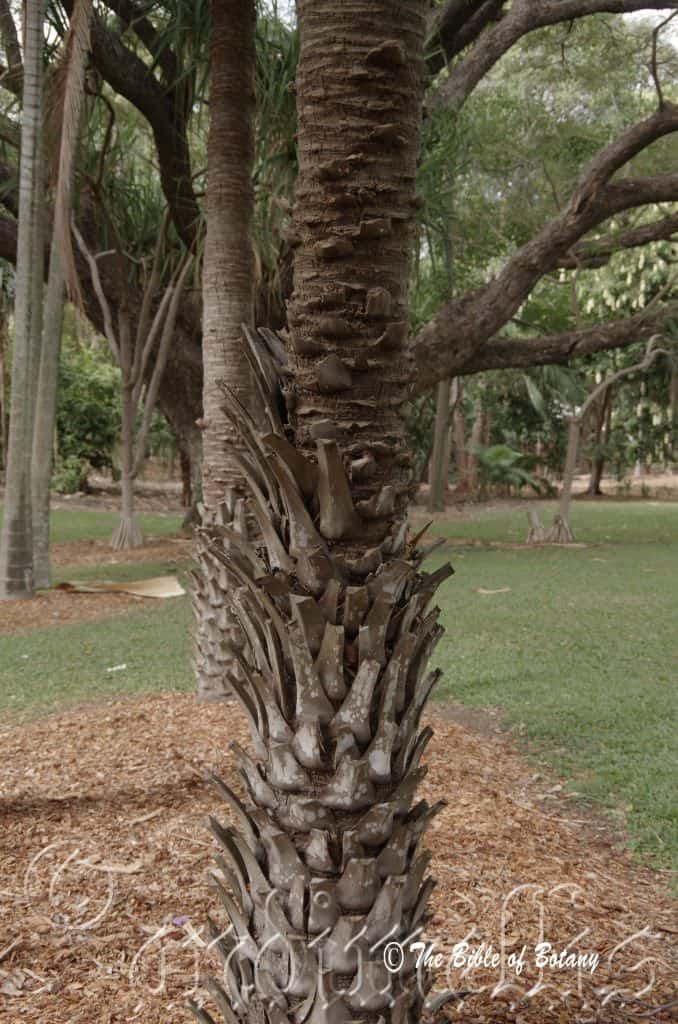
Mount Cootha Botanic Gardens Qld.
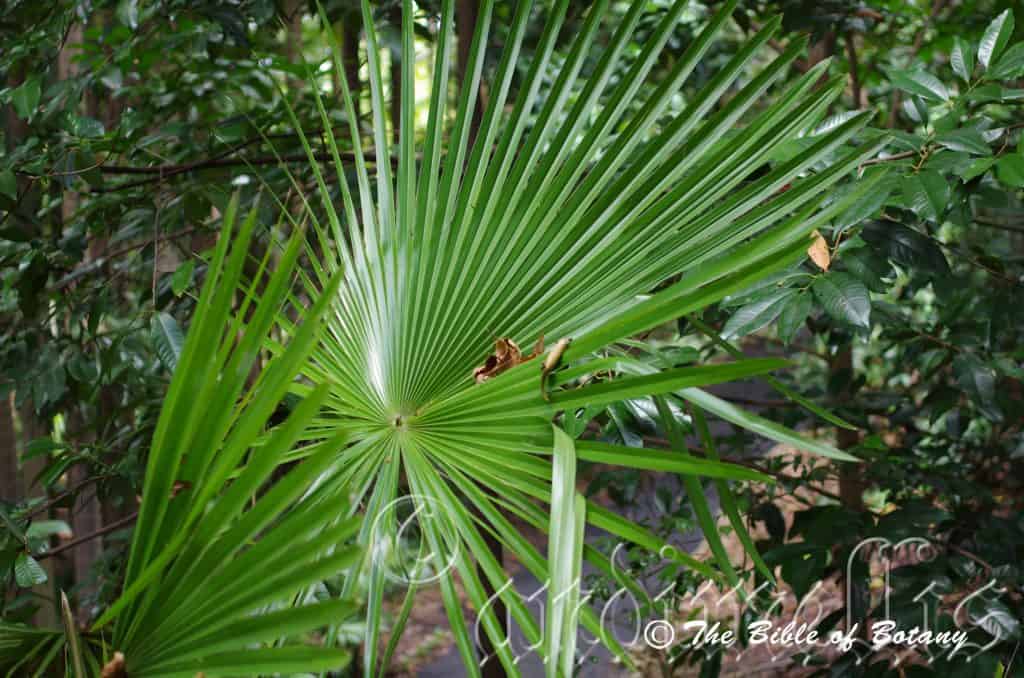
Mount Cootha Botanic Gardens Qld.
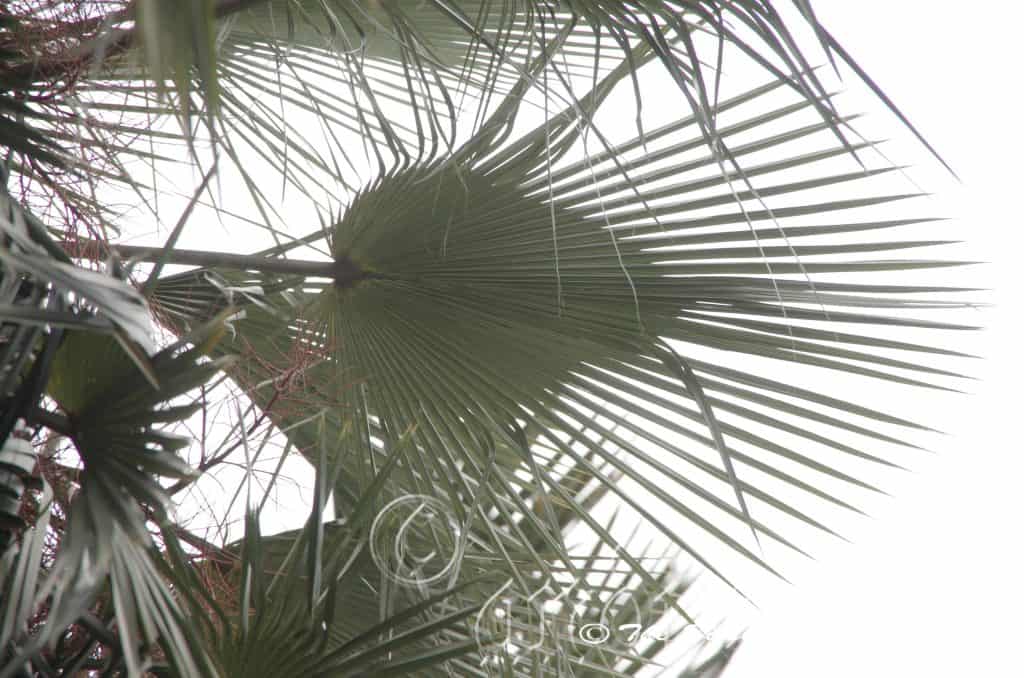
Mount Cootha Botanic Gardens Qld.
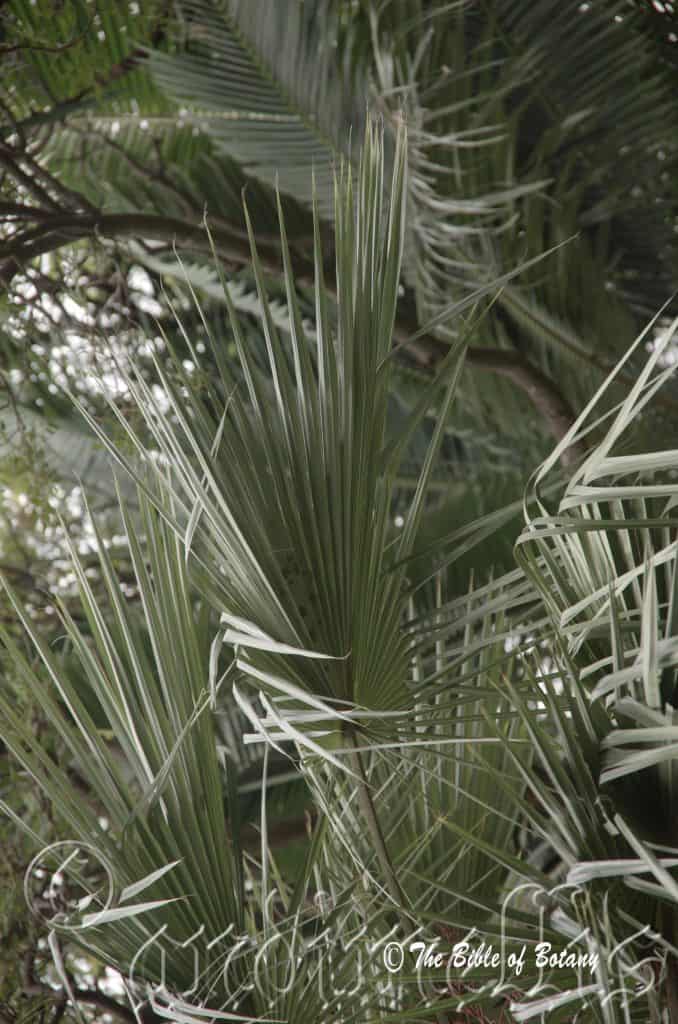
Mount Cootha Botanic Gardens Qld.
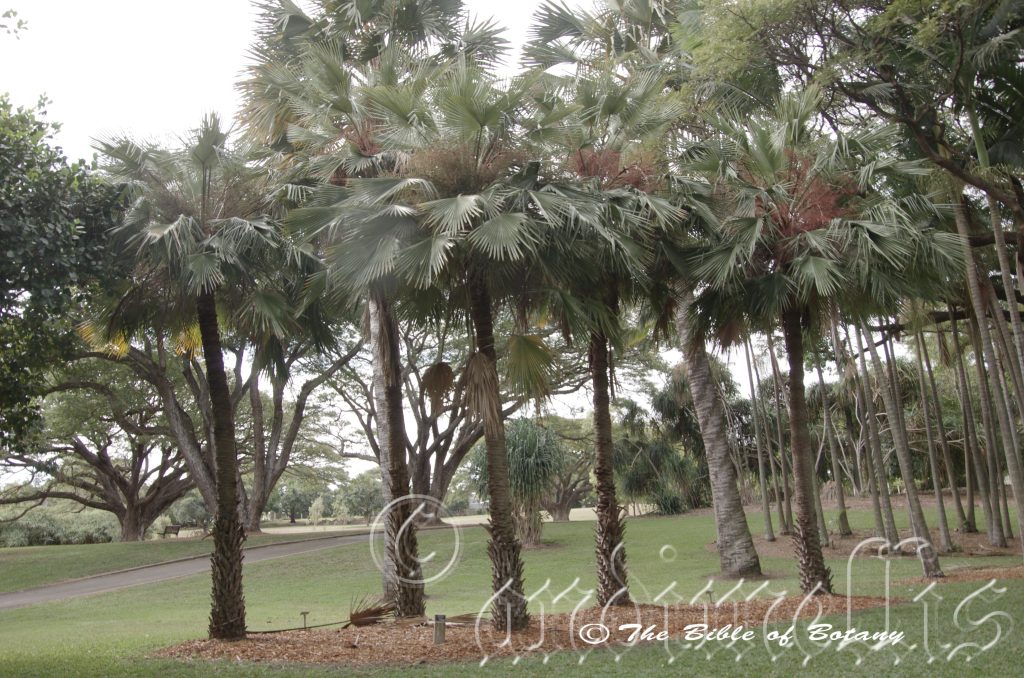
Mount Cootha Botanic Gardens Qld.
Livistona muelleri
Classification:
Unranked: Monocots
Unranked: Commelinids
Order: Arecales
Family: Arecaceae
Genus: Is named in honour of Patrick Murray; 1632-1671, who was the Baron of Livingston Scotland and an avid plant collector and gardener. It is believed that his garden became the Edinburgh Botanic Gardens in 1680.
Specie: Is named in honour of Ferdinand Von Mueller; 1825-1896, who was a German born Australian Botanist who named over 2000 new species and was director of the Melbourne Botanic Gardens.
Sub species:
Common Name: Cape York Cabbage Palm.
Distribution:
Livistona muelleri is found south from the tip of Cape York Peninsular to Townsville. It is probably wide spread throughout the Cape.
https://avh.ala.org.au/occurrences/search?taxa=Livistona+muelleri#tab_mapView
Habitat Aspect Climate:
Livistona muelleri prefers full sun, light dappled shade to full shade. It grows in grassy open forest, open woodlands, moist open sclerophyll forest or adjacent to monsoonal vine thickets. The altitude ranges from 10 meters ASL to 280 meters ASL
The temperatures range from 8 degrees in August to 40 degrees in January.
The rainfalls range from lows of 900mm to an average of 2800mm
Soil Requirements:
Livistona muelleri prefers deep sandy loams to medium clays. The soils are usually derived from decomposed sandstone, brown basalt, shale, conglomerate rocks or flat podsolic soils. The soils pH. ranges from 4.5pH to 6pH. It tolerates seasonal water logged soils. Non saline soils to moderately saline soils are tolerated.
Height & Spread:
Wild Plants: 8m to 10m by 3.8m to 4.2m.
Characteristics:
Livistona muelleri’s lower trunk is grey and is covered in old leaf base scars and vertical furrows. Below the crown dead leaves and old fruiting spikes persist for many years. The trunk measures 150mm to 250mm in diameter and swells at the base to 200mm to 300mm in diameter.
There are 25 to 35 leaves in a mature crown. Livistona muelleri’s leaves are costapalmate, orbicular and measure 700mm to 900mm in length by 1000mm in diameter. The leaves measure 1400mm to 1900mm in length including the 700mm to 1000mm petiole by 40mm to 60mm wide at the base and 8mm to 20mm from the mid-point to the costa. The petioles are concave to flatten triangular. The margins near the base are crowded with stiff forward curved glossy yellowish spines which measure 3mm to 7mm in length becoming shorter as they approach 50mm of the length of the rachis.
The discolourous laminas are deep olive green to grey-green glossy and glabrous on the upper lamina while the lower lamina is blue-green. The lamina divides into 28 to 30 segments. The largest base segments measure 25mm to 32mm wide and taper to a point at the apex. The segments are free for 50mm to 62mm of their length and further divide into two linear lobes which taper to a narrow point for 5mm to 14mm of the free section. There are 16 or 18 faintly visible longitudinal veins.
The inflorescences of Livistona muelleri are not sexually dimorphic and are formed on rachises which are unbranched near the base and do not extend beyond the base of the leaves. The inflorescences measure 800mm to 1600mm in length. The rachises are branched to the fourth order. The partial inflorescences have 5 to 10 erect to semi erect lateral branches.
The coriaceous prophyll are densely covered in white lanate hairs. The pedunculare bracts are absent on this species. The glabrous rachis bracts are roughly tubular and densely covered in silvery scales. The bracts margins are entire, split when mature then disintegrate. The maroon to reddish rachilla is covered in papillose lumps and measure 20mm to 130mm in length. The conical flowers are born in small clusters of 2 or 3 individual flowers and measure 1.3mm to 1.6mm in length. The thick, maroon, broad, triangular sepals have an acuminate cuspidate apex and measure 0.8mm to 1mm in length. The bright yellow, triangular petals have an acute apex and measure 1.3mm to 1.6mm in length.
The pastel yellow filaments measure 1.3mm to 1.6mm in length while the anthers are bright yellow. The carpels are pink to maroon. The flowers appear from September to April.
Livistona muelleri’s fruits are ellipsoidal nuts. The nuts measure 10mm to 12mm in length by 8.5mm to 10mm in diameter. The stigma is persistent on the nuts. The green berries turn deep powdery navy-blue, deep reddish or black, smooth and pruinose when ripe. The suture line extends for full length of the fruit and is marked with lip like structure while the mesocarp is thin and dry. The endocarp is very thin and brittle. The pedicel measures 0.5mm to 1mm in length. The seeds are globose and measure 8mm to 9mm in diameter. The eophyll has 3 ribs.
Wildlife:
The flowers are very popular amongst various insects including native bees, beetles, flies and wasps.
Cultivation:
Livistona muelleri are beautiful tall palms with a dense bushy crown that grow particularly well on moist to dry flat soils. It is suitable for small, medium and large gardens close to the coast, flats or on plains in sub tropical, tropical or monsoonal gardens. As garden subjects they will grow from 8 meters to 9 meters by 3 meters to 4 meters in diameter when grown in the open. It is cold tolerant to temperatures at least as low as 4 degree once established.
Livistona muelleri is a great palm for park scenarios or for planting in new rainforest gardens as they can grow in full sun. They have very rigid sharp spines so care should be taken when pruning old discarded leaves from the palms.
It is very good on drier soils along the coast or along riverine flats. When grown in full shade or partial shade the trunks are ideal for growing Platycerium ferns and Asplenium nidus or Asplenium australis.
The plants quickly form a large dome on the ground before forming a trunk which can take 15 years to form even a meter high trunk. The should be planted at least 2 meters back from paths and away from where children play because of the rigid spines on the leaf rachis.
Propagation:
Seeds: Livistona muelleri seeds can be sown directly into a seed raising mix after roughing the sides with fine sandpaper to assist in germination. Cover the seeds with 5mm to 10mm of fine weed free mulch and keep moist. Place the tray in a warm sunny position. When the seedlings are 60mm to 90mm tall, prick them out and plant them into 50mm native tubes using a good organic mix.
Once the seedlings reach 100mm to 150mm in height they can be planted out into their permanent position.
Fertilize using seaweed, fish emulsion or organic chicken pellets soaked in water on an alternate basis. Fertilize every two months until the plants are established then twice annually in early September or March to maintain health, vitality and better flowering.
Further Comments from Readers:
“Hi reader, it seems you use The Bible of Botany a lot. That’s great as we have great pleasure in bringing it to you! It’s a little awkward for us to ask, but our first aim is to purchase land approximately 1,600 hectares to link several parcels of N.P. into one at The Pinnacles NSW Australia, but we need your help. We’re not salespeople. We’re amateur botanists who have dedicated over 30 years to saving the environment in a practical way. We depend on donations to reach our goal. If you donate just $5, the price of your coffee this Sunday, We can help to keep the planet alive in a real way and continue to bring you regular updates and features on Australian plants all in one Botanical Bible. Any support is greatly appreciated. Thank you.”
In the spirit of reconciliation we acknowledge the Bundjalung, Gumbaynggirr and Yaegl and all aboriginal nations throughout Australia and their connections to land, sea and community. We pay our respect to their Elders past, present and future for the pleasures we have gained.

National Botanic Gardens ACT

Mount Cootha Botanic Gardens Qld.

National Botanic Gardens ACT

National Botanic Gardens ACT
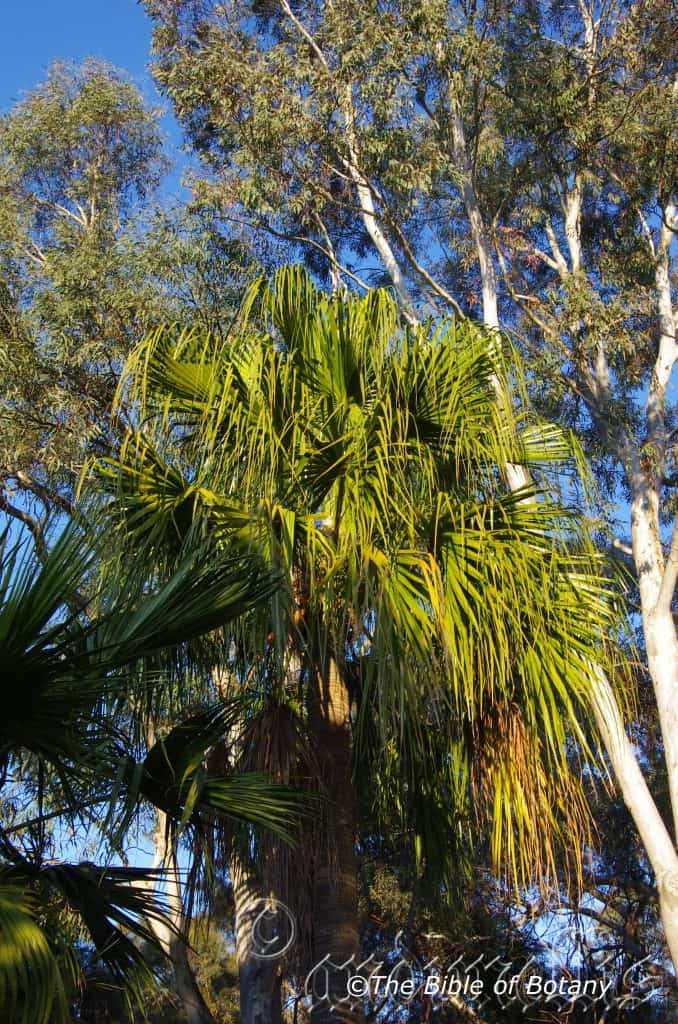
National Botanic Gardens ACT
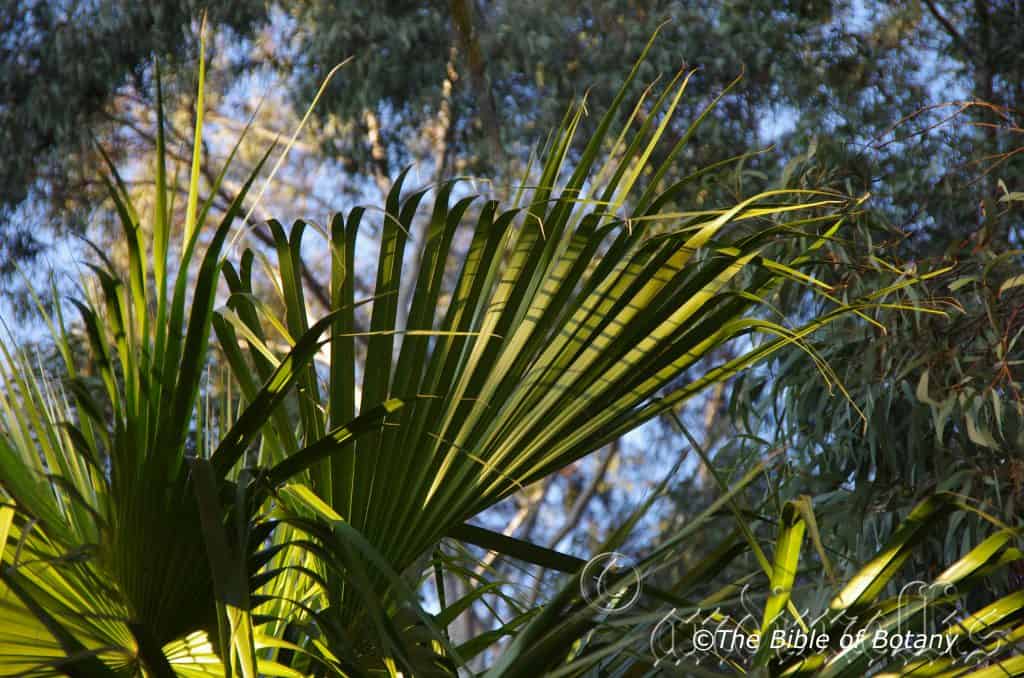
National Botanic Gardens ACT

Mount Cootha Botanic Gardens Qld.
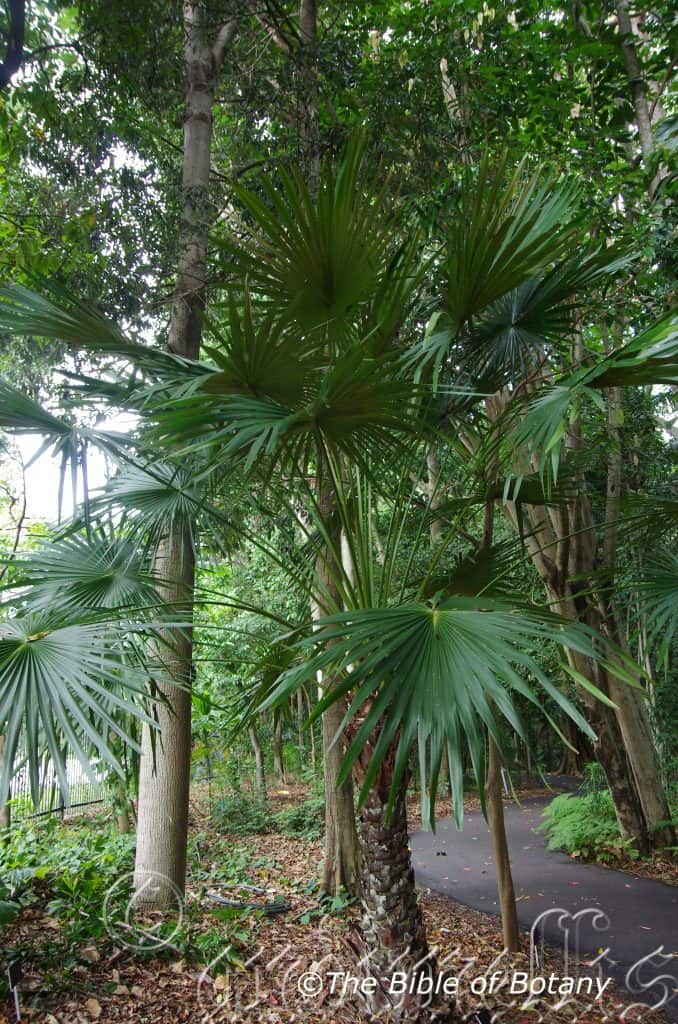
Mount Cootha Botanic Gardens Qld.
Livistona nitida
Classification:
Unranked: Monocots
Unranked: Commelinids
Order: Arecales
Family: Arecaceae
Genus: Is named in honour of Patrick Murray; 1632-1671, who was the Baron of Livingston Scotland and an avid plant collector and gardener. It is believed that his garden became the Edinburgh Botanic Gardens in 1680.
Specie: From Nitida, which is Latin for shinny or glistening. It refers to an organ or structure, which is shinny or glistens profusely in sunlight. Here it refers to the jet black glossy fruits.
Sub species:
Common Name: Glossy Fruit Cabbage Palm.
Distribution:
Livistona nitida is found east from the Central Highlands to near Banana in central Eastern Queensland including Carnarvon Gorge.
https://avh.ala.org.au/occurrences/search?taxa=Livistona+nitida#tab_mapView
Habitat Aspect Climate:
Livistona nitida prefers full sun, light dappled shade to full shade. It grows in grassy open forest, open woodlands, moist open sclerophyll forest or adjacent to monsoonal vine thickets. The altitude ranges from 130 meters ASL to 445 meters ASL
The temperatures range from minus 4 degrees in August to 45 degrees in January.
The rainfalls range from lows of 300mm to an average of 655mm.
Soil Requirements:
Livistona nitida prefers deep sandy loams to medium sandy clays. The soils are usually derived from decomposed sandstones or at times screes. The soils pH. ranges from 5pH to 6pH. It tolerates seasonal water logged soils. Non saline soils to moderately saline soils are tolerated.
Height & Spread:
Wild Plants: 15m to 20m or rarely taller to 35m by 8m to 9m.
Characteristics:
Livistona nitida grows as a single trunk fan palm. The lower trunk is grey and is covered in old leaf base scars and vertical furrows. Below the crown dead leaves and old fruiting spikes persist for many months. The trunk measures 250mm to 400mm in diameter ABH and tapers to the base. The petiole stubs persistent in the basal 1meter to 1.3 meters otherwise deciduous.
There are 35 to 50 leaves in a mature globose crown. The near semi-circular in cross section with an adaxially ridged, petioles measure 1700mm to 2000mm in length by 20mm to 26mm in width. The margins are distally smooth, while proximally with single, curved, deep red prickles. The leaf-base fibres moderately prominent, coarse, disintegrating over a period of time.
Livistona nitida’s costapalmate laminas are ovate in outline and measure 1600mm to 1900mm in diameter. The coriaceous leaves measure 1400mm to 1900mm in length including the 700mm to 1000mm
The discolourous laminas are deep green and glabrous on the upper lamina while the lower lamina is paler. The lamina divides into 68 to 80 segments. The largest base segments measure 35mm to 40mm wide and taper to a point at the apex. The segments are free for 30mm to 37mm of their length with the apical lobes being pendulous. There are 7 parallel veins either side of the midrib, with the transverse veins being thinner than parallel veins.
The inflorescences of Livistona nitida are not sexually dimorphic and are formed on rachises which are unbranched near the base and do not extend beyond the base of the leaves. The inflorescences measure 800mm to 1600mm in length. The rachises are branched to the fourth order. The partial inflorescences have 5 to 10 erect to semi erect lateral branches.
The inflorescences are unbranched at the base and are not sexually dimorphic. The rachis measures 1500mm to 2000mm in length and do not extend beyond the limit of the crown and are branched to the fourth order. The 8 to 12 partial inflorescences lack bracts and are pedunculate. The main rachis bract is loosely sheathing and densely covered in white scales. The rachillae is glabrous to sparsely covered in papillose hairs and measures 50mm to 200mm in length.
The cream to yellow, funnel shaped flowers are usually solitary or are in clusters of 2 to 5 and measure 2mm to 3.2mm in length. The 3 fleshy, subacute, deltoid sepals measure 1.3mm to 1.6mm in length. The 3 thick, fleshy, acute petals are broadly ovate and measure 2.0mm to 2.2mm in length. The stamens measure 1.5mm to 1.6mm in length. The flowers appear from September to December.
Livistona nitida’s globose fruits measure 13mm to 20mm in diameter. The stigma is persistent on the nuts. The green berries turn glossy jet black when ripe. The epicarp with scattered lenticellular pores, while the suture line extends for 50mm of the length of the fruit. The mesocarp is dry and fibrous, while the endocarp is brittle. The pedicel measures 0.4mm to 0.6mm in length. The globose seeds measure 10mm to 12mm in diameter. The eophyll has 3 ribs. The fruits mature appear from November to March.
Wildlife:
The flowers of Livistona nitida are very popular amongst various insects including native bees, beetles, flies and wasps.
Cultivation:
Livistona nitida is a beautiful tall cabbage palm with a dense bushy crown that grows particularly well on wet, moist to dry soils on flat terraines. It is suitable for medium and large gardens close to the coast, flats or on plains in subtropical, tropical or monsoonal gardens. As a garden subject it will probably grow from 28 meters to 30 meters by 8 meters to 10 meters in diameter when grown in the open. It is cold tolerant to temperatures at least as low as 6 degree once established.
Livistona nitida is a great palm for park scenarios or for planting in new rainforest gardens as it can grow in full sun. It has few to no prickles so has a distinct advantage over other cabbage palms.
It is very good along riverine flats or riparian zones where additional moisture is available deep down. Whether growing in full shade or partial shade the trunks are ideal for growing Platycerium ferns and Asplenium nidus or Asplenium australis.
The plants quickly form a large dome on the ground before forming a trunk which can take 5 to 8 years to form even a meter high trunk. It should be planted at least 5 meters back from paths and away from where children play because of the leaves that are discarded as the palm matures.
Propagation:
Seeds: Livistona nitida seeds can be sown directly into a seed raising mix after roughing the sides with fine sandpaper to assist in germination. Cover the seeds with 5mm to 10mm of fine weed free mulch and keep moist. Place the tray in a warm sunny position. When the seedlings are 60mm to 90mm tall, prick them out and plant them into 50mm native tubes using a good organic mix.
Once the seedlings reach 100mm to 150mm in height they can be planted out into their permanent position.
Fertilize using seaweed, fish emulsion or organic chicken pellets soaked in water on an alternate basis. Fertilize every two months until the plants are established then twice annually in early September or March to maintain health, vitality and better flowering.
Further Comments from Readers:
“Hi reader, it seems you use The Bible of Botany a lot. That’s great as we have great pleasure in bringing it to you! It’s a little awkward for us to ask, but our first aim is to purchase land approximately 1,600 hectares to link several parcels of N.P. into one at The Pinnacles NSW Australia, but we need your help. We’re not salespeople. We’re amateur botanists who have dedicated over 30 years to saving the environment in a practical way. We depend on donations to reach our goal. If you donate just $5, the price of your coffee this Sunday, We can help to keep the planet alive in a real way and continue to bring you regular updates and features on Australian plants all in one Botanical Bible. Any support is greatly appreciated. Thank you.”
In the spirit of reconciliation we acknowledge the Bundjalung, Gumbaynggirr and Yaegl and all aboriginal nations throughout Australia and their connections to land, sea and community. We pay our respect to their Elders past, present and future for the pleasures we have gained.

Mount Cootha Botanic Gardens Qld.

Mount Cootha Botanic Gardens Qld.
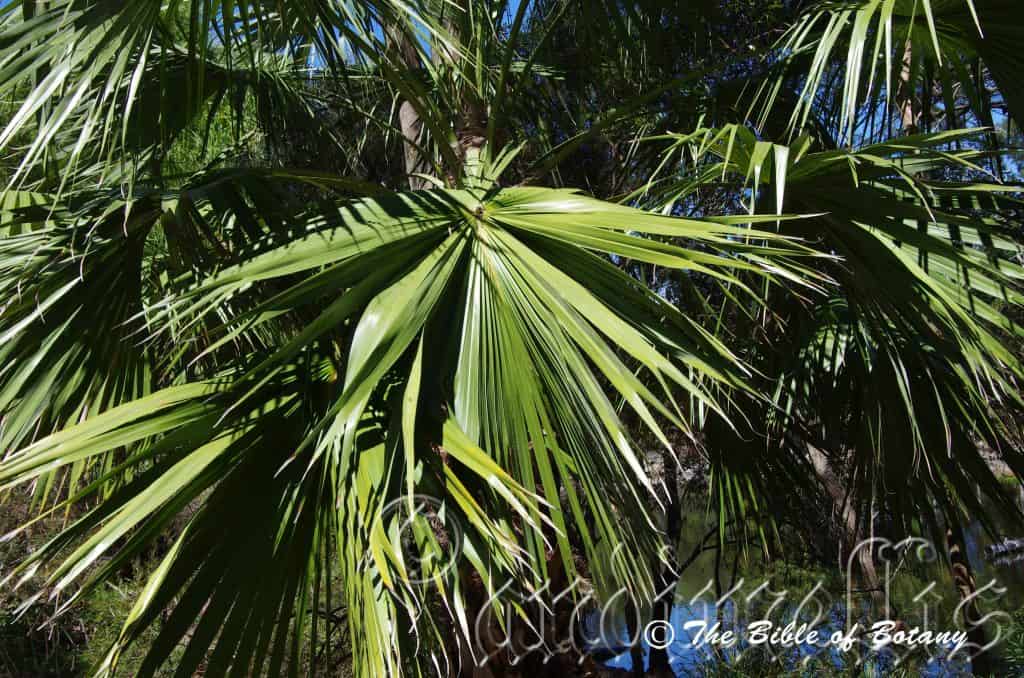
Mount Cootha Botanic Gardens Qld.
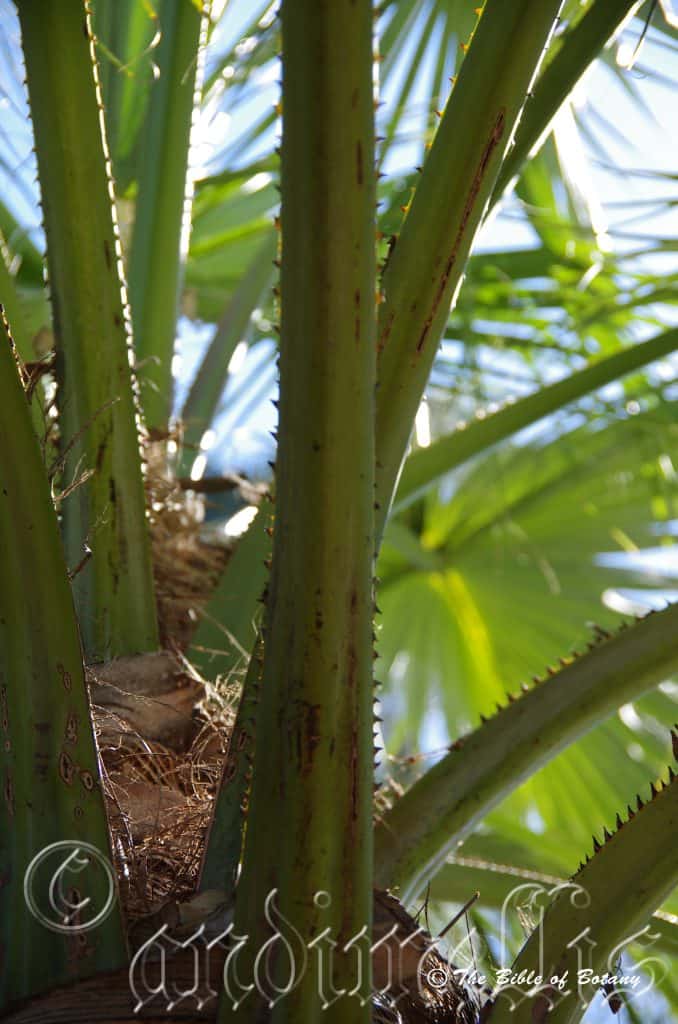
Mount Cootha Botanic Gardens Qld.
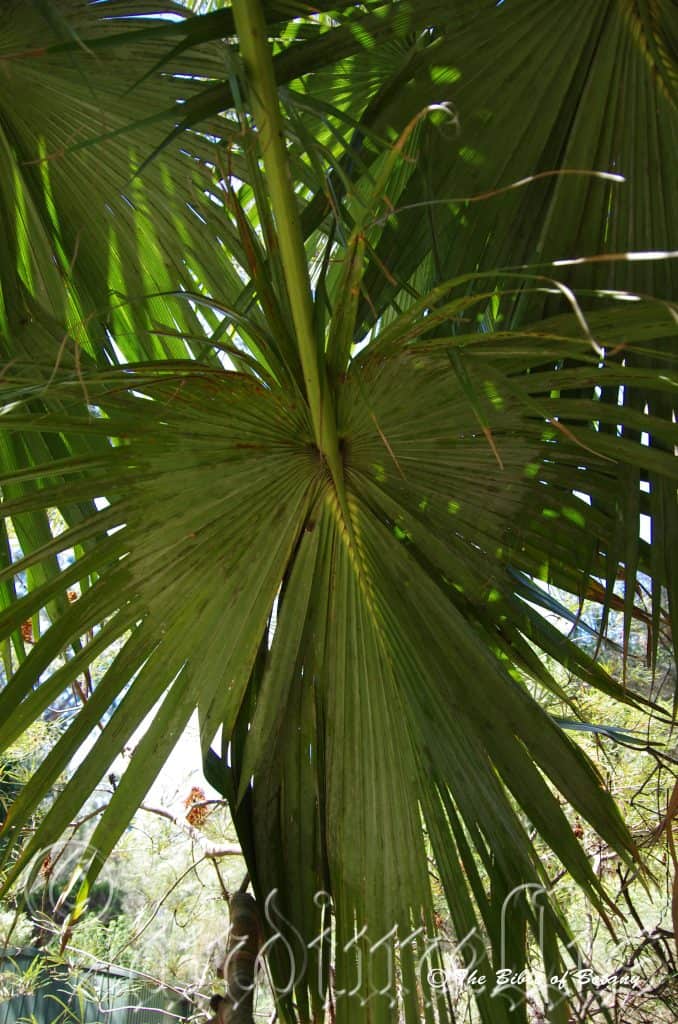
Mount Cootha Botanic Gardens Qld.
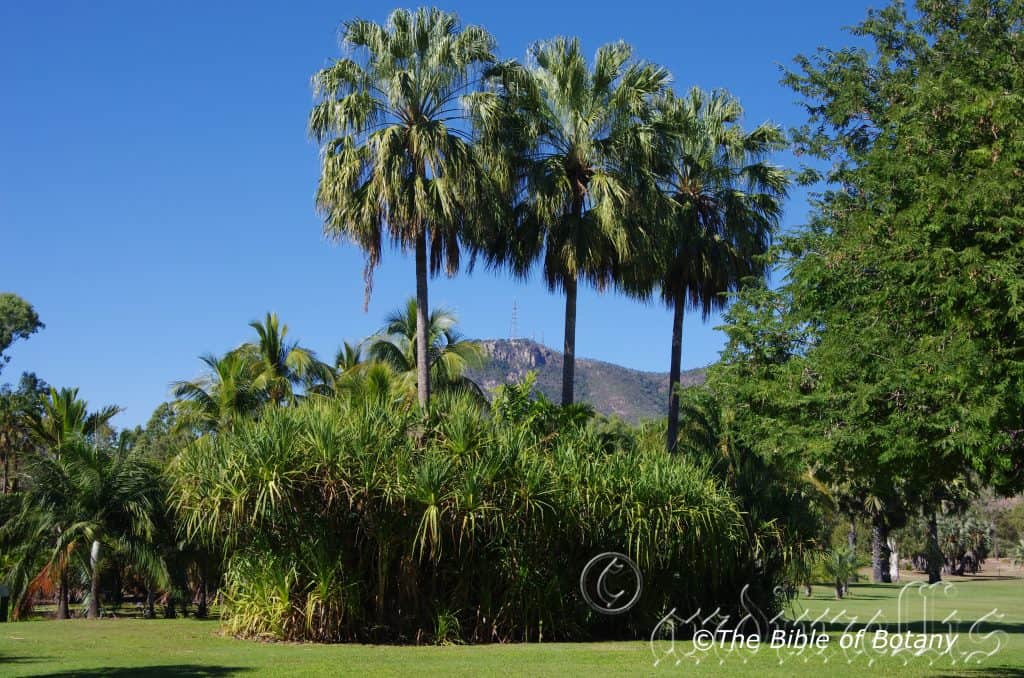
Mount Cootha Botanic Gardens Qld.
Livistona rigida
Classification:
Unranked: Monocots
Unranked: Commelinids
Order: Arecales
Family: Arecaceae
Genus: Is named in honour of Patrick Murray; 1632-1671, who was the Baron of Livingston Scotland and an avid plant collector and gardener. It is believed that his garden became the Edinburgh Botanic Gardens in 1680.
Specie: From Rig?ns, which is Latin for stiff, unbending or unyielding. It refers to organs usually the stems, which are stiff and unyielding to movement.
Sub species: There is some discussion and confusion on whether Livistona rigida is a specie in its own right or should it be classed as Livistona mariae subsp. rigida. I am dealing with it here as separate specie under Livistona rigida however without reading the latest report, which now appears that the DNA indicates a very close relationship between the 2 isolated populations. They may in fact have only been separated for as little as 40 thousand years.
Common Name: Home Hill Cabbage Palm.
Distribution:
Livistona rigida is found in 3 disjunct populations in north western Queensland. The first population is located on the Leichardt River north of Mount Isa and the second is in the Boodjamulla National Park (Lawn Hill) along the Gregory River. There is a third population in the Northern Territory on the Roper River near Matarnka.
https://avh.ala.org.au/occurrences/search?taxa=Livistona+rigida#tab_mapView
Habitat Aspect Climate:
Livistona rigida prefers full sun, light dappled shade. It usually grows along permanent creeks or at times around billabongs. The altitude ranges from 2 meters ASL to 400 meters ASL
The temperatures range from 3 degrees in August to 41 degrees in January.
The rainfalls range from lows of 400mm to an average of 850mm however this is of little consequence as the palms grow in dry creek beds where the sands have a loose capillary action drawing water deep under the creeks to near the surface so the plants can utilize it.
Soil Requirements:
Livistona rigida prefers deeper sandy loams to light gritty clays or light fatty clays or meander river silts. The soils are usually derived from decomposed sandstone or alluvial silty flats. The soils pH. ranges from 4.5pH to 7pH. It tolerates seasonally water logged soils for short periods. Non saline soils to moderately saline soils are tolerated.
Height & Spread:
Wild Plants: 25m to 28m by 6m to 8m.
Characteristics:
Livistona rigida’s lower trunk is grey and is covered in the old raised leaf base scars with fine longitudinal furrows. Below the crown dead leaves and old fruiting spikes persist for many years. The petiole stubs are persistent at the basal and at times to 1.2m above the ground. The trunk measure 300mm to 400mm and swells at the base to 350mm to 450mm in diameter.
There are 30 to 50 leaves in a mature globose crown. The erect to arching petioles measure 1500mm to 2500mm by 25mm to 35mm in diameter. The upper surface of the petioles are flat to concave while the margins are covered in a single row of deep reddish-brown to reddish-black prickles that measure 2mm to 6mm in length on the basal two thirds. The apical section is scabrous. The leaf base fibres are moderately prominent, coarse and persistent.
The costapalmate coriaceous leaves regularly segmented, circular to sub circular, and measure 1250mm to 1700mm in length by 1000mm to 1500mm in width. The discolourous coriaceous leaves are pale to mid glaucous green on the upper laminas while the lower laminas are mid glaucous greenish. The laminas divided into 50 to 78 equal segments for 50 to 55mm of their length. The depth of the apical clefts are 30mm to 63mm of the segment length while the rigid apical lobes are acuminate or semi pendulous. The 10 to 4 parallel slightly prominent veins transverse the obscure lateral veins.
The inflorescences of Livistona rigida are not sexually dimorphic and are formed on rachises which are unbranched near the base and do not extend beyond the leaves. The partial inflorescences have 9 to 14 lateral branches. The sheaths measure 1000mm to 2500mm in length.
The rachises are branched to the fourth order. The thick chartaceous, glabrous prophyll measure 250mm to 380mmm in length by 80mm to 90mm in width. The single pedunculare bract is loosely tubular and is moderate to dense covered in off white to pale grey scales. The cylindrical rachis bracts are loosely tubular and are sparsely covered in white scales. The globose flowers are born in clusters of 3 or 8 and measure 3.5mm to 4mm in diameter. The cream to yellow, broad ovate, chartaceous sepals have an obtuse apex and measure 1.9mm to 2.2mm in length. The cream to yellow, triangular petals have obtuse apexes and measure 1mm to 1.5mm in length.
The pastel yellow filaments measure 1mm to 1.2mm in length while the anthers are bright yellow. The flowers appear from July to December.
Livistona rigida’s fruits are globose nuts. The semi glossy, black nuts measure 13mm to 16mm in length by 12mm to 14mm in diameter. The epicarp is sparsely covered in lenticular pores while the suture line extends half of the length of the fruits and are marked with lip like structures. The mesocarp is fibrous while the endocarp is thin. The globose seeds measure 9mm to 11mm in diameter. The pedicels measure 1.8mm to 2.3mm in length. The eophyll has 5 ribs. The fruits ripen from November to May.
Wildlife:
Livistona rigida’s flowers are very popular amongst various insects including native bees, beetles, flies and wasps.
Cultivation:
Livistona rigida are beautiful tall palms with a dense bushy crown that grow particularly well on moisture problem soils or adjacent to swampy ground. It is suitable for small, medium and large gardens close to the coast or high in the mountains in temperate sub tropical or tropical gardens. As garden subjects they will grow from 12 meters to 15 meters by 6 meters to 8meters wide. It is cold tolerant to temperatures at least as low as 4 degree once established.
Livistona rigida is a great palm for park scenarios or for planting in new rainforest gardens as they can grow in full sun. They have very rigid sharp spines so care should be taken when pruning old undiscarded leaves from the palms. Best kept away from where children play. It is exceptionally hardy and versatile in all situations however care should be taken if it is being planted in shallow soils in exposed situations as they can be blown over. Most plants blown over will survive and straighten up giving unusual shapes to the trunks.
It is very good in very wet waterlogged soils along the coast or along riverine flats. When grown in full shade or partial shade the trunks are ideal for growing Platycerium ferns and Asplenium nidus or A. australis.
The plants quickly form a large dome on the ground before forming a trunk which can take 15 years to form even a meter high trunk. The should be planted at least 1.5 meters back from paths and away from where children play because of the rigid spines on the leaf rachis.
Propagation:
Seeds: Livistona rigida seeds can be sown directly into a deep seed raising mix after roughing the sides with fine sandpaper to assist in germination. Cover the seeds with 5mm to 10mm of fine weed free mulch and keep moist. Place the tray in a warm sunny position. When the seedlings are 30mm to 50mm tall, prick them out and plant them into 50mm native tubes using a good organic mix.
Once the seedlings reach 100mm to 150mm in height they can be planted out into their permanent position.
Fertilize using seaweed, fish emulsion or organic chicken pellets soaked in water on an alternate basis. Fertilize every two months until the plants are established then twice annually in early September or March to maintain health, vitality and better flowering.
Further Comments from Readers:
“Hi reader, it seems you use The Bible of Botany a lot. That’s great as we have great pleasure in bringing it to you! It’s a little awkward for us to ask, but our first aim is to purchase land approximately 1,600 hectares to link several parcels of N.P. into one at The Pinnacles NSW Australia, but we need your help. We’re not salespeople. We’re amateur botanists who have dedicated over 30 years to saving the environment in a practical way. We depend on donations to reach our goal. If you donate just $5, the price of your coffee this Sunday, We can help to keep the planet alive in a real way and continue to bring you regular updates and features on Australian plants all in one Botanical Bible. Any support is greatly appreciated. Thank you.”
In the spirit of reconciliation we acknowledge the Bundjalung, Gumbaynggirr and Yaegl and all aboriginal nations throughout Australia and their connections to land, sea and community. We pay our respect to their Elders past, present and future for the pleasures we have gained.
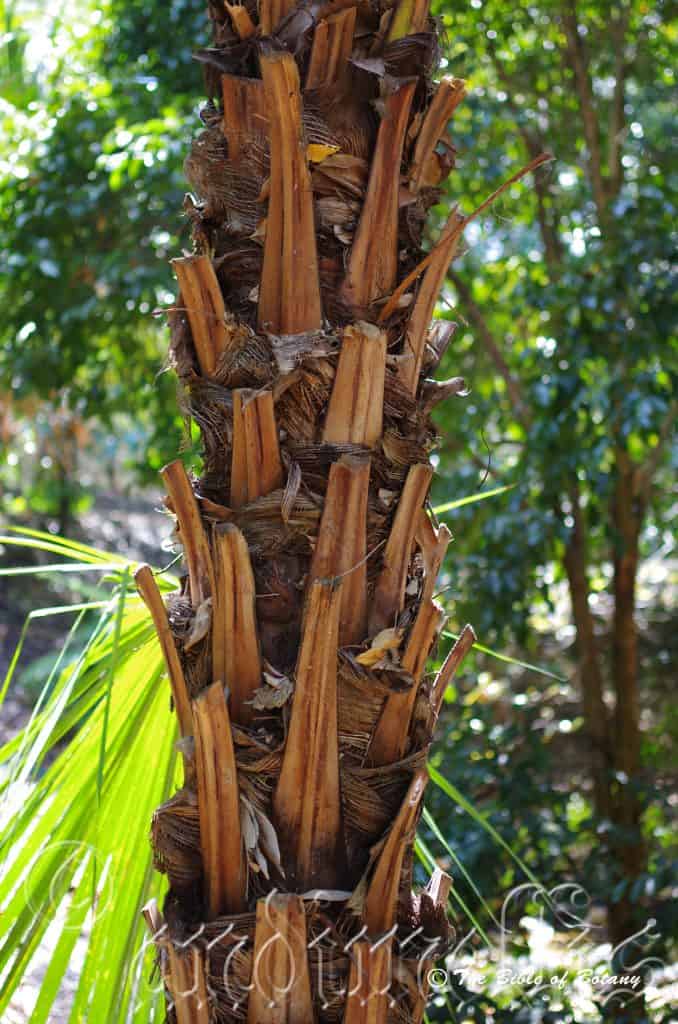
Mount Cootha Botanic Gardens Qld.
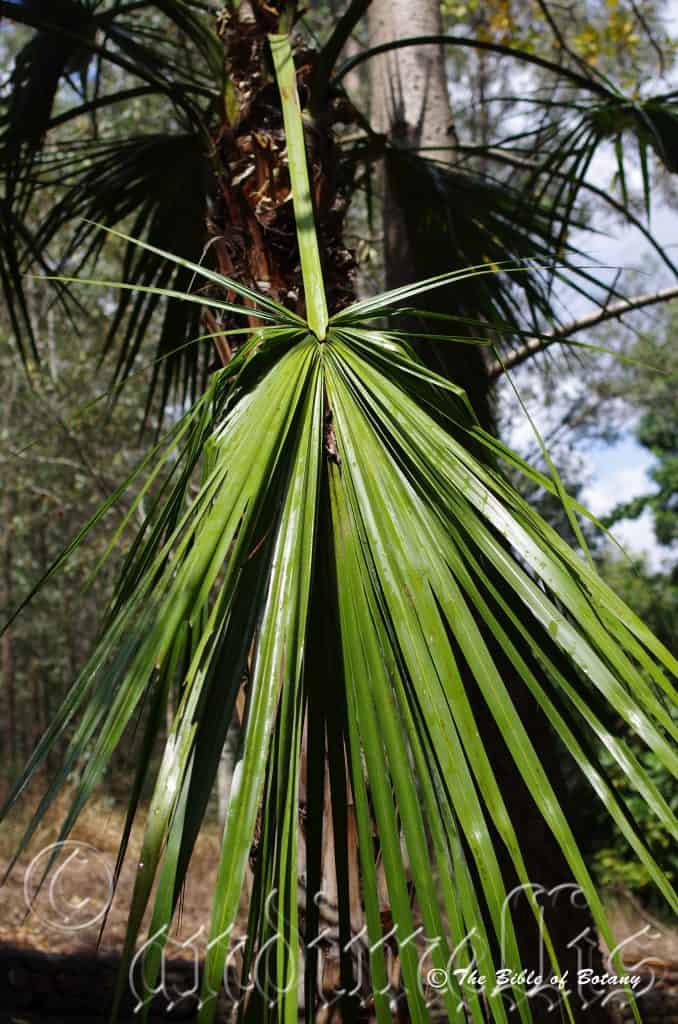
Mount Cootha Botanic Gardens Qld.
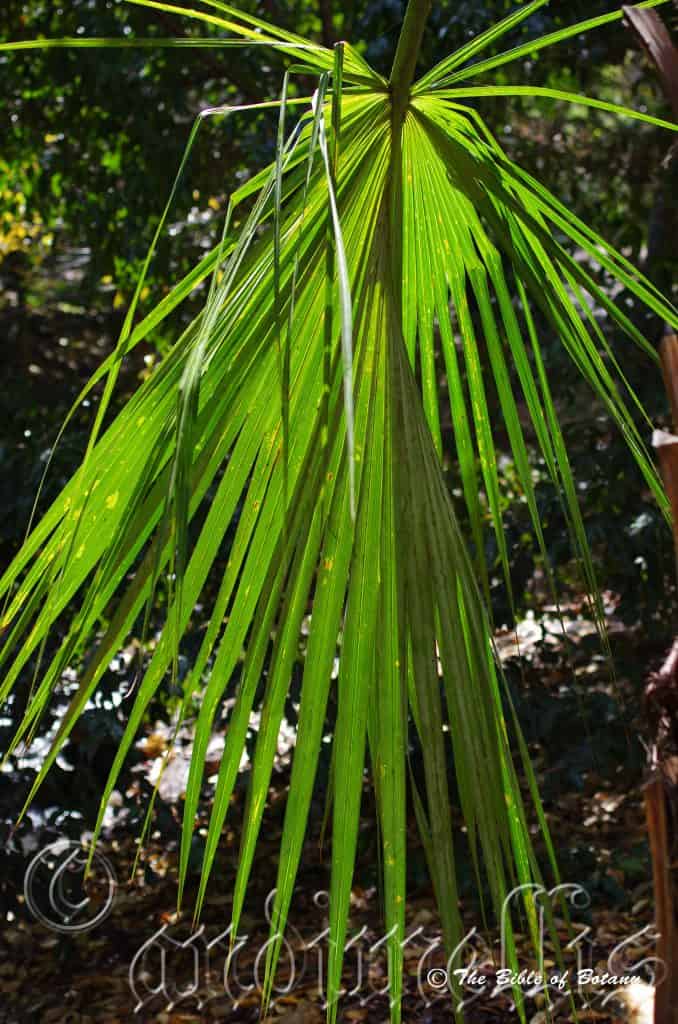
Mount Cootha Botanic Gardens Qld.
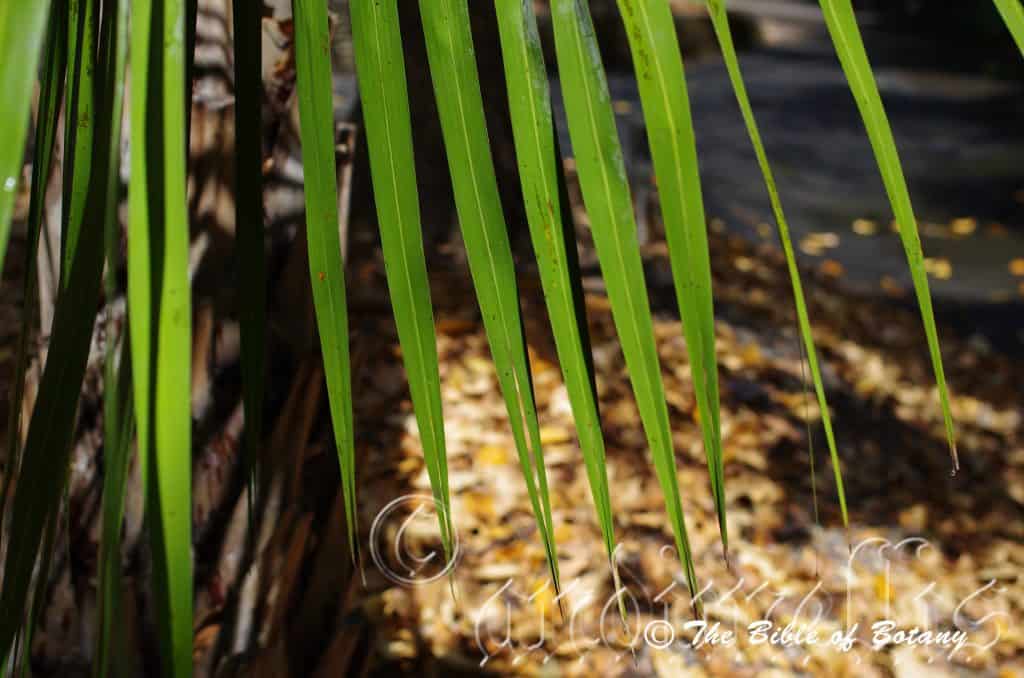
Mount Cootha Botanic Gardens Qld.
Livistona victoriae
Classification:
Unranked: Monocots
Unranked: Commelinids
Order: Arecales
Family: Arecaceae
Genus: Is named in honour of Patrick Murray; 1632-1671, who was the Baron of Livingston Scotland and an avid plant collector and gardener. It is believed that his garden became the Edinburgh Botanic Gardens in 1680.
Specie: Is named in honour of Alexandrina Victoria; 1819-1901, who was better known as Queen Victoria.
Sub species:
Common Name:
Distribution:
Livistona victoriae is found in several disjunct populations in north eastern Western Australia and north western Northern Territory from the Victoria River basin through to the Bungle Bungles and the Gibb River Gorges.
https://avh.ala.org.au/occurrences/search?taxa=Livistona+victoriae#tab_mapView
Habitat Aspect Climate:
Livistona victoriae prefers full sun, light dappled shade. It grows in open forests in gorges, beneath escarpments in, cliff bases and along streams and intermittent watercourses where there is permanent subterranean water. The altitude ranges from 50 meters ASL to 320 meters ASL.
The temperatures range from 8 degrees in August to 40 degrees in January.
The rainfalls range from lows of 750mm to an average of 1250mm
Soil Requirements:
Livistona victoriae prefers to grow on deeper sandy loams, medium clays, light fatty clays and sandstone screes at the base of cliffs. The soils are usually derived from decomposed sandstone or alluvial silty flats. The soils pH. ranges from 5.5pH to 7pH. It does not tolerate water logged soils however water is usually found below the surface and rises through capillary action and permeates quickly during prolonged wet periods. Non saline soils to moderately saline soils are tolerated.
Height & Spread:
Wild Plants: 15m to 17m by 4m to 5m.
Characteristics:
Livistona victorine’s lower trunk is grey with fine longitudinal furrows. The leaf scars are narrow with the It is usually a self-cleaning palm. The trunk measure 300mm to 400mm and swells at the base to 150mm to 300mm in diameter.
There are 25 to 40 leaves in a mature globose crown. The erect to arching, pruinose petioles measure 800mm to 2000mm by 25mm to 35mm in diameter. The upper surface of the petioles are flat while the margins are covered in a single row of black blunt recurves prickles that measure 1mm to 3mm in length on the proximal two thirds. The apical section is scabrous. The leaf base fibres are moderately prominent, fine and persistent.
The costapalmate coriaceous leaves regularly segmented, sub circular and measure 800mm to 1000mm in length by 1000mm to 1300mm in width. The concolourous coriaceous leaves are grey-green or bluish-green, strongly pruinose and dull. The laminas divided into 40 to 56 equal segments for 55mm to 65mm of their length. The depth of the apical clefts are 55mm to 70mm of the segment length while the rigid apical lobes are acuminate or semi pendulous. The 18 to 22 parallel prominent veins are transverse by obscure lateral veins.
The inflorescences of Livistona rigida are not sexually dimorphic and are formed on rachises which are unbranched near the base and do not extend beyond the leaves. The rachises are branched to the fourth order. The partial inflorescences have 5 to 9 erect to semi erect lateral branches. The sheaths measure 500mm to 1500mm in length.
The thick chartaceous, glabrous prophyll measure 250mm to 380mmm in length by 80mm to 90mm in width. The single pedunculare bract is loosely sheathing and is densely covered in off white to pale grey tomentose hairs. The bract disintegrates into a fibrous mass with age. The cylindrical rachis bracts are loosely tubular and are sparsely covered in white tomentose hairs. The conical flowers are born in pairs or at times are solitary and measure 5mm to 6mm in diameter. The cream to pale yellow, membranous, triangular sepals have an acute apex and measure 0.7mm to 0.9mm in length. The cream to pale yellow, narrow ovate petals have an acute apexes and measure 1.2mm to 1.5mm in length.
The pastel yellow filaments measure 0.9mm to 1mm in length while the anthers are bright yellow. The flowers appear from March to December.
Livistona rigida’s fruits are globose to ellipsoidal nuts. The dull, deep reddish brown to black nuts measure 8mm to 15mm in length by 10mm to 12mm in diameter. The epicarp is smooth while the suture line extends for almost the entire length of the fruits. The mesocarp is thin and fibrous while the endocarp is thin and brittle. The globose seeds measure 9mm to 10mm in diameter. The pedicels measure 0.5mm to 1mm in length. The eophyll has 3 ribs. The fruits ripen from November to May.
Wildlife:
Livistona victorine’s flowers are very popular amongst various insects including native bees, beetles, pollen flies and wasps.
Cultivation:
Livistona victoriae is a beautiful tall palm with a dense bushy crown that grow particularly well on moist to dry areas in full sun. It is suitable for small, medium and large gardens close to the coast or high in semi-arid to arid locations in warm frost free temperate zones, sub tropical, tropical or monsoonal gardens. As garden subjects they will grow from 12 meters to 15 meters by 4 meters to 5 meters in diameter. It is cold tolerant to temperatures at least as low as 4 degree once established.
Livistona victoriae is a great palm for park scenarios or for planting in new rainforest gardens as they can grow in full sun. As they only bear short blunt prickles close to the base of the petioles some care should be taken when pruning old undiscarded leaves from the palms. It is exceptionally hardy and versatile in all situations.
It is very good in very hot dry soils along the coast or along dry riverine flats in exposed areas.
Propagation:
Seeds: Livistona victoriae seeds can be sown directly into a seed raising mix after roughing the sides with fine sandpaper to assist in germination. Cover the seeds with 5mm to 10mm of fine weed free mulch and keep moist. Place the tray in a warm sunny position. When the seedlings are 30mm to 50mm tall, prick them out and plant them into 50mm native tubes using a good organic mix.
Once the seedlings reach 100mm to 150mm in height they can be planted out into their permanent position.
Fertilize using seaweed, fish emulsion or organic chicken pellets soaked in water on an alternate basis. Fertilize every two months until the plants are established then twice annually in early September or March to maintain health, vitality and better flowering.
Further Comments from Readers:
“Hi reader, it seems you use The Bible of Botany a lot. That’s great as we have great pleasure in bringing it to you! It’s a little awkward for us to ask, but our first aim is to purchase land approximately 1,600 hectares to link several parcels of N.P. into one at The Pinnacles NSW Australia, but we need your help. We’re not salespeople. We’re amateur botanists who have dedicated over 30 years to saving the environment in a practical way. We depend on donations to reach our goal. If you donate just $5, the price of your coffee this Sunday, We can help to keep the planet alive in a real way and continue to bring you regular updates and features on Australian plants all in one Botanical Bible. Any support is greatly appreciated. Thank you.”
In the spirit of reconciliation we acknowledge the Bundjalung, Gumbaynggirr and Yaegl and all aboriginal nations throughout Australia and their connections to land, sea and community. We pay our respect to their Elders past, present and future for the pleasures we have gained.
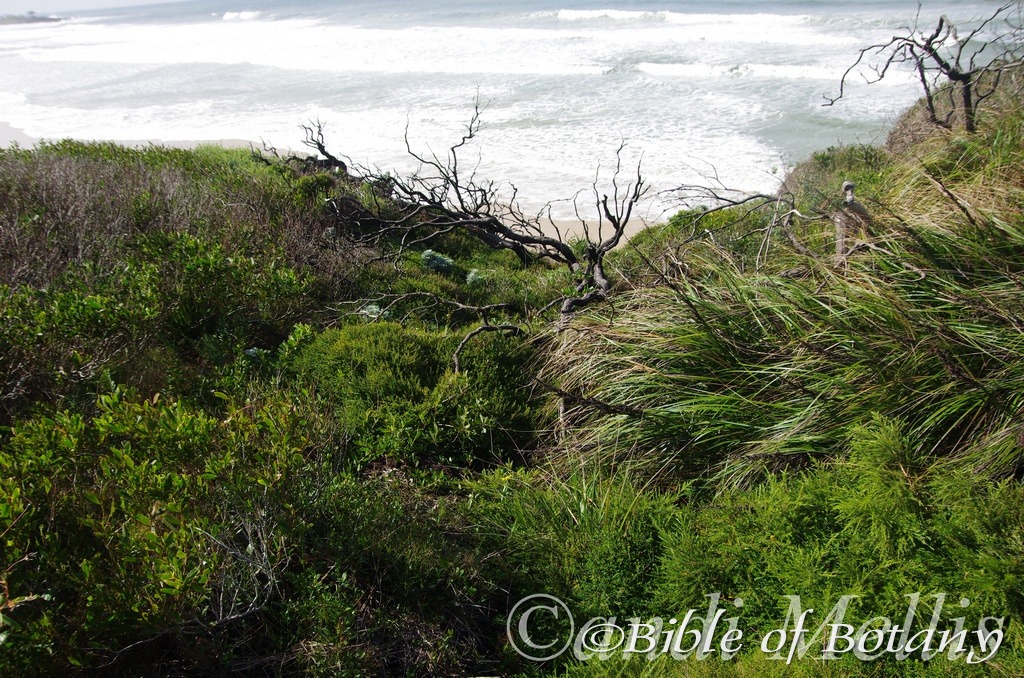
North Yuraygir National Park NSW

North Yuraygir National Park NSW
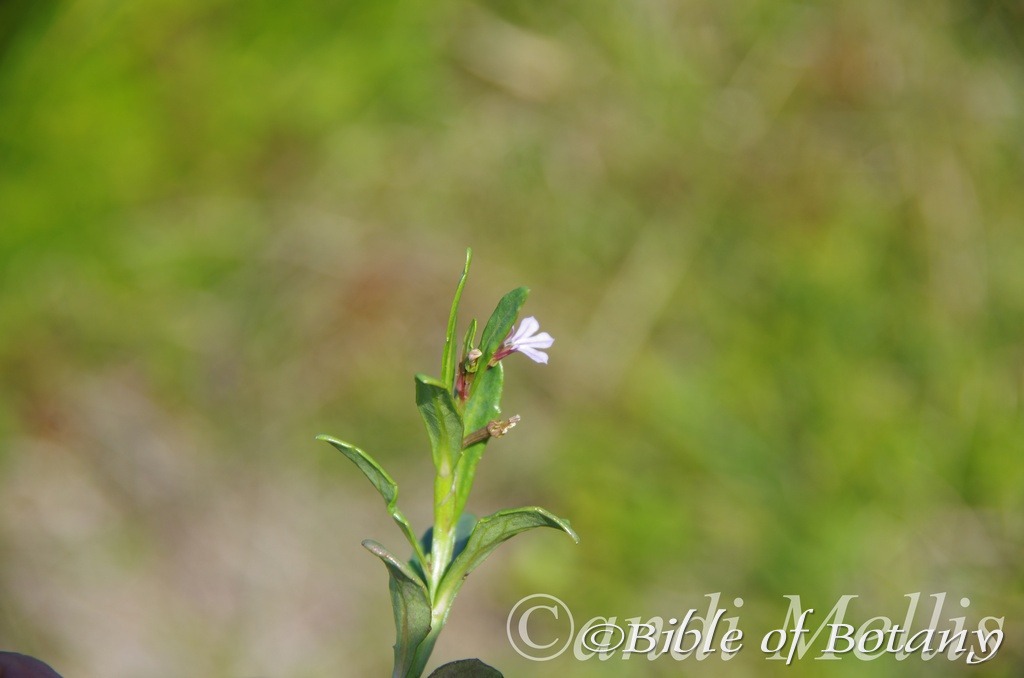
North Yuraygir National Park NSW
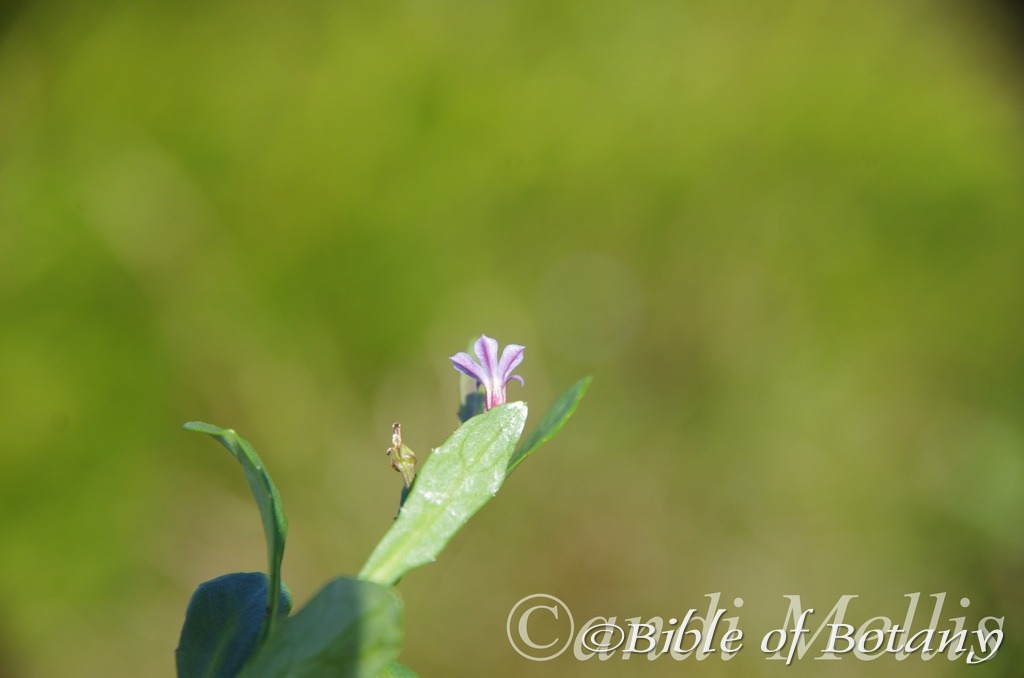
North Yuraygir National Park NSW
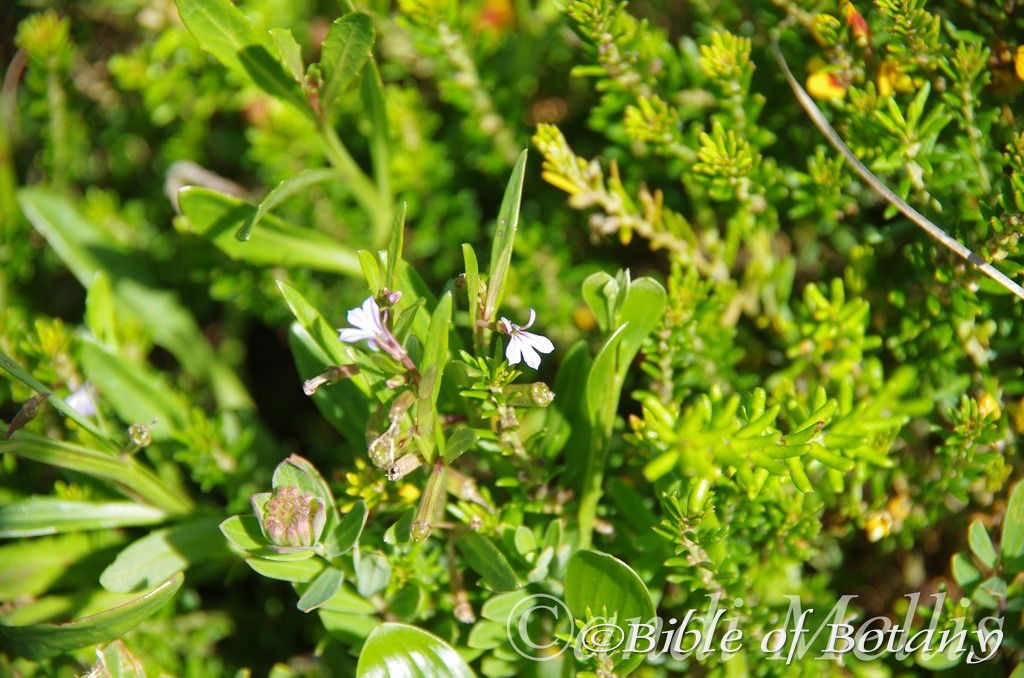
North Yuraygir National Park NSW
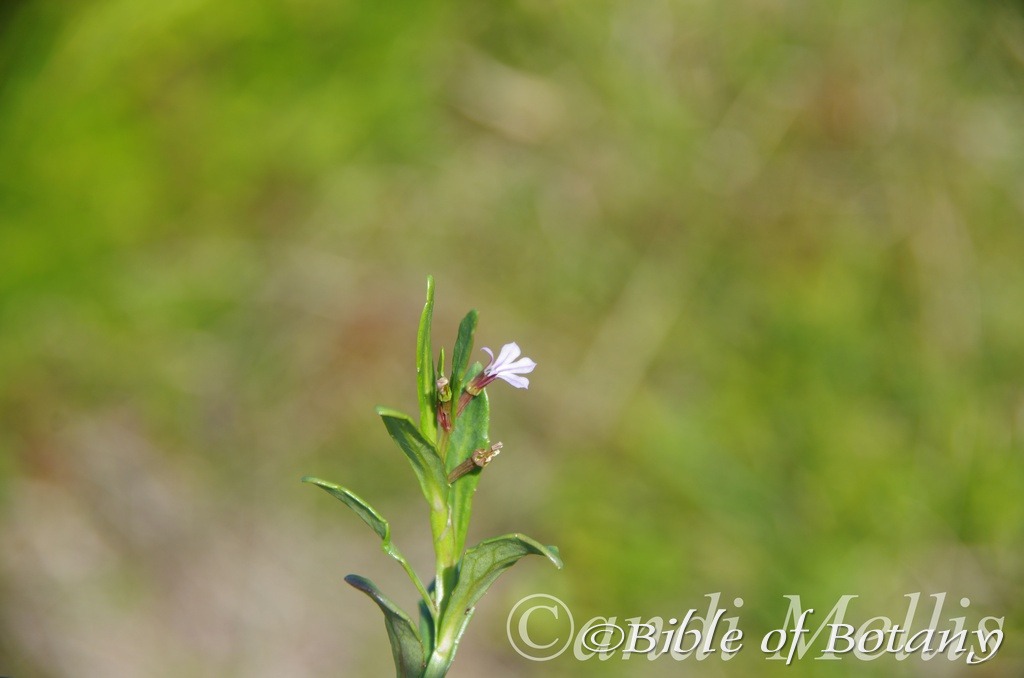
North Yuraygir National Park NSW
Lobelia anceps
Classification:
Unranked: Eudicots
Unranked: Asterids
Order: Asterales
Family: Campanulaceae
Subfamily: Lobeliodeae
Genus: Is named in honour of Mathias de Lobel; 1538-1616, who was a Flemish botanist who deduced that botany was an exact science of observation.
Specie: From Anceps, which is Latin for two edges or uncertain. It refers to organs, which have two edges or plants, which display characteristics that are not reliable in placing it in a specific genus or species.
Sub species:
Common Name:
Distribution:
Lobelia anceps is found south from Kalbarri in western coastal Western Australia to Point Dover to the western edge of the Great Australian Bight. It is usually found within 200 kilometres of the coast except for Mount Lyndsey in the Great Victoria Desert and further north on Middle Island between Barrow Island and the coast.
In the east it is found from south Three Rivers Beach near Shoalwater in central coastal Queensland to Blanchetown in southern South Australia including Kangaroo Island. It is also found south from Mount Abrupt near Wilpena to Gladstone and from Sheringa to Kirby Island on southern Eyre Peninsular.
It is found on the Bass Straight Islands and circumnavigates Tasmania, Lord Howe Island and Norfolk Island.
https://avh.ala.org.au/occurrences/search?taxa=Lobelia+anceps#tab_mapView
Habitat Aspect Climate:
Lobelia anceps prefers light dappled shade to full shade. It usually grows in brackish marshes and swampy heaths especially behind the mangroves, and along tidal creeks, tidal streams and tidal rivers. It is widespread and often locally common in its habitat.
The altitude ranges from 0 meters ASL to 960 meters ASL
The temperatures range from minus 5 degrees in August to 38 degrees in January.
The rainfalls range from lows of 320mm to an average of 2000mm.
Soil Requirements:
Lobelia anceps prefers to grow on sandy loams to medium clays or light to heavy silts. The soils are derived from decomposed sandstone, granite, shale, brown basalt, black basalt or metamorphic rocks which are usually laid down as alluvial silts or at times accumulated beach. The soils pH. ranges from 4.5pH to 7pH. It tolerates water logged soils to very wet soils. Non saline soils to extremely saline soils are tolerated.
Height & Spread:
Wild Plants: 200mm to 500mm by 1000mm to several meters.
Characteristics:
Lobelia anceps is an ascending to procumbent herb with grass-green stems. The internodes measure 20mm to 80mm in length. It often branches at the nodes and at times will root at the nodes. The angled or slightly winged by decurrent leaf bases are often reddish or purplish.
The long linear-elliptical or rarely spathulate leaves measure 20mm to 80mm in length by 2mm to 20mm in width. The bases are tapering to cuneate especially on the basal leaves while the apexes are acuminate. The concolourous laminas are mid grass-green, semi glossy or dull and glabrous. The laminas are flat to slightly recurve upwards from the mid vein to the margins while the margins are undulating and sparsely toothed. The mid vein is prominent on the lower lamina and obscure to clear visible on the upper lamina.
The inflorescences are born solitary in leaf like bracts from the leaf axils. The pedicels measure 2mm to 12mm in length. The calyxes are deeply incised with narrow linear lobes that have acute apexes. The lobes measure 1mm to 2mm in length. The corolla and lobes are glabrous or have a few long hirsute hairs running down the mid vein or are sparsely covered in white hirsute hairs near the throat of the corolla. The corolla and lobes are bluish lavender or at times white. The corolla usually measures 5mm to 10mm in length. The 2 upper lobes are erect, narrow linear, decurve gently backwards and measure 7mm to 11mm in length while the lower 3 lobes are divaricate, oblong to narrow spathulate and measure 9mm to 14mm in length.
The upper 2 anthers are densely covered in long white hirsute hairs while the lower 3 anthers are sparsely covered in short white hirtellous hairs. The ovaries measure 3mm to 4mm in length. The pastel olive-green to pastel lilac pistil gently curves downwards and measures 3mm to 5mm in length. The plants commence flowering when it is quite small with the flowers appearing from November to July.
The fruits are narrow conical capsules which are surrounded by the persistent bracts. The capsules measure 5mm to 15mm in length by 1.5mm to 4mm in diameter at the bases and near the apexes. The pale green capsules turn fawnish-yellow when ripe.
Wildlife:
Lobelia anceps appears not to have any predators on a regular basis though I would expect them to be host to several small butterflies similar to other species.
Cultivation:
Lobelia anceps makes an excellent rockery or bank stabilizer plant. It always looks green and fresh especially where adequate ground moisture is retained whether it is grown in shade or full sun. It is very suitable on water logged acid soils. It is most suitable for small, medium and large gardens close to the coast in sub tropical gardens or tropical gardens and would be worthwhile trying in semi-arid zones where saline soils exist. As garden subjects they will grow from 400m to 500mm by 1000mm to 1500mm wide. It would be best to maintain it in an enclosed situation where it can be easily controlled in case it becomes weedy similar to Pratia pedunculata.
If it is placed around a pool, courtyards or other confined spaces then plant them in groups where it completely covers the ground. Here it will soften hard lines created with paving bricks fences and walls. Using rocks and small boulders can make the pool or any water feature appear like an oasis.
If companion plants are sought then the choice of plants to use either side is limited only by size of the area to be landscaped and the size of the other plants as they should be no more than 500mm in height to emphasize the fine linear lines of Lobelia anceps.
It is a great choice to break up horizontal lines along driveways and it can be used to great affect where a moist creek bed is the theme by using them to mark out the banks. It can be used to stabilize banks along creeks and streams or to help soak up water in wet areas.
Propagation:
Seeds: Lobelia anceps seeds can be sown directly into a seed raising mix. Cover the seeds with 5mm to 10mm of fine weed free mulch and keep moist. Place the tray in a warm sunny position. When the seedlings are 30mm to 50mm tall, prick them out and plant them into 50mm native tubes using a good organic mix.
Once the seedlings reach 100mm to 150mm in height they can be planted out into their permanent position.
Division: Division is a good method to grow small numbers of plants which mature very quickly. When growing from divisions remove the plant from the soil and just cut it into 3 or 4 equal parts, first down the middle then halve those sections again. Remove unwanted dead leaves and any old small clumps that look weak or dead. Plants can be divided further but ensure each division has a several strong shoot and healthy rhizomes attached to the tuff. Replant ensuring the soil is at the same level as before. Cut the leaves back to about 100mm in length then give a good soaking with our recommended native organic fertilizers. New shoots will appear within two weeks.
Fertilize using seaweed, fish emulsion or organic chicken pellets soaked in water on an alternate basis. Fertilize every two months until the plants are established then twice annually in early September or March to maintain health, vitality and better flowering.
Further Comments from Readers:
“Hi reader, it seems you use The Bible of Botany a lot. That’s great as we have great pleasure in bringing it to you! It’s a little awkward for us to ask, but our first aim is to purchase land approximately 1,600 hectares to link several parcels of N.P. into one at The Pinnacles NSW Australia, but we need your help. We’re not salespeople. We’re amateur botanists who have dedicated over 30 years to saving the environment in a practical way. We depend on donations to reach our goal. If you donate just $5, the price of your coffee this Sunday, We can help to keep the planet alive in a real way and continue to bring you regular updates and features on Australian plants all in one Botanical Bible. Any support is greatly appreciated. Thank you.”
In the spirit of reconciliation we acknowledge the Bundjalung, Gumbaynggirr and Yaegl and all aboriginal nations throughout Australia and their connections to land, sea and community. We pay our respect to their Elders past, present and future for the pleasures we have gained.

Whiteman’s Creek The Pinnacles NSW
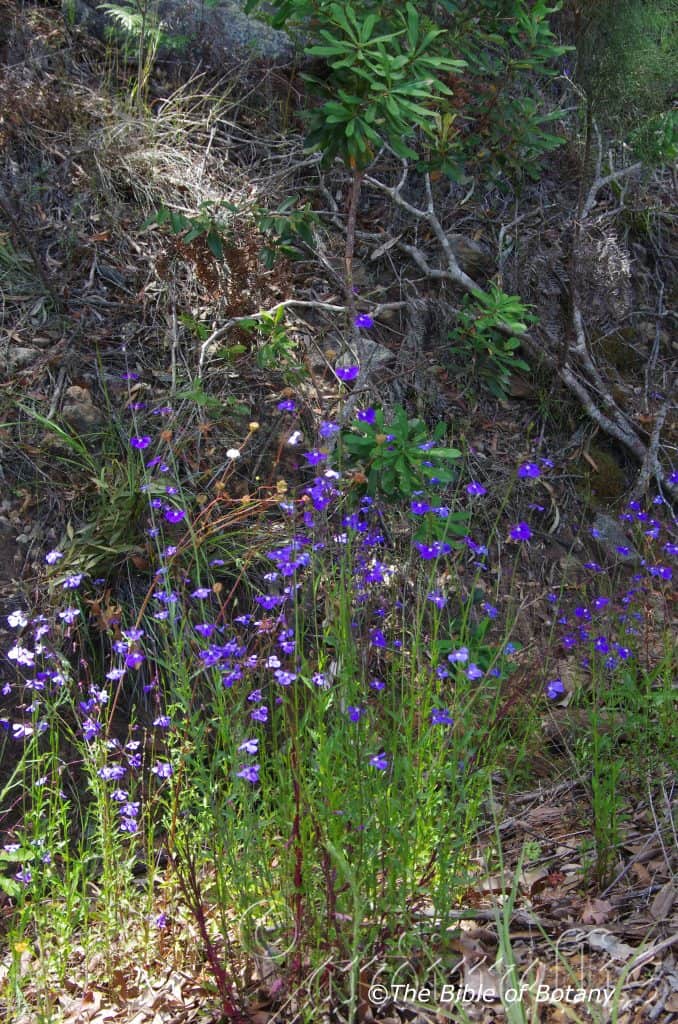
Whiteman’s Creek The Pinnacles NSW

Whiteman’s Creek The Pinnacles NSW

Whiteman’s Creek The Pinnacles NSW

Whiteman’s Creek The Pinnacles NSW

Whiteman’s Creek The Pinnacles NSW

Whiteman’s Creek The Pinnacles NSW
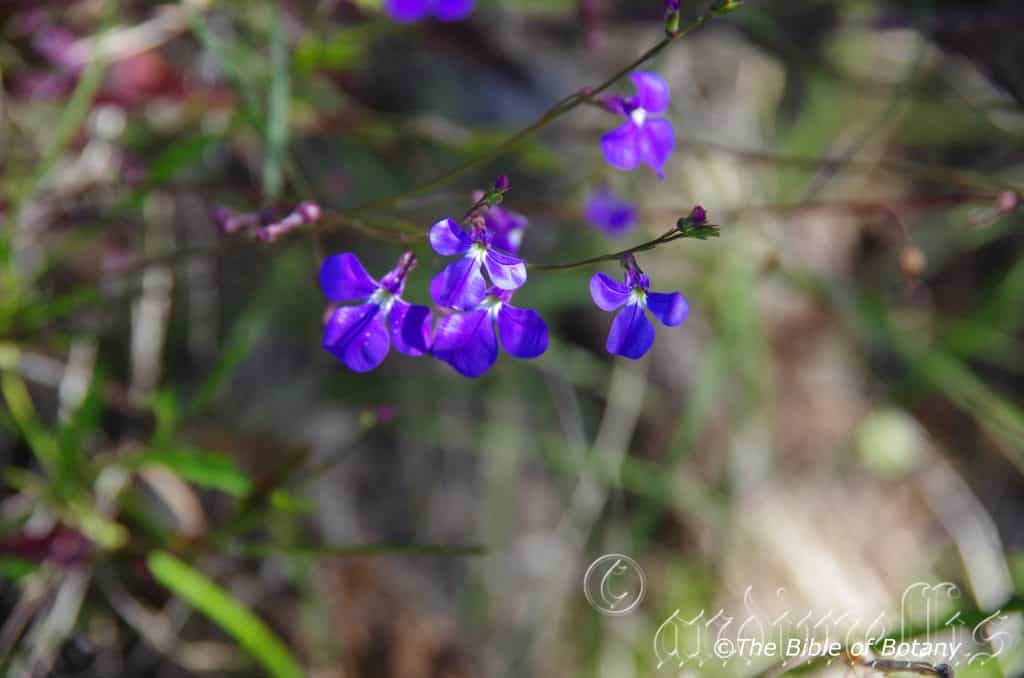
Whiteman’s Creek The Pinnacles NSW

Whiteman’s Creek The Pinnacles NSW
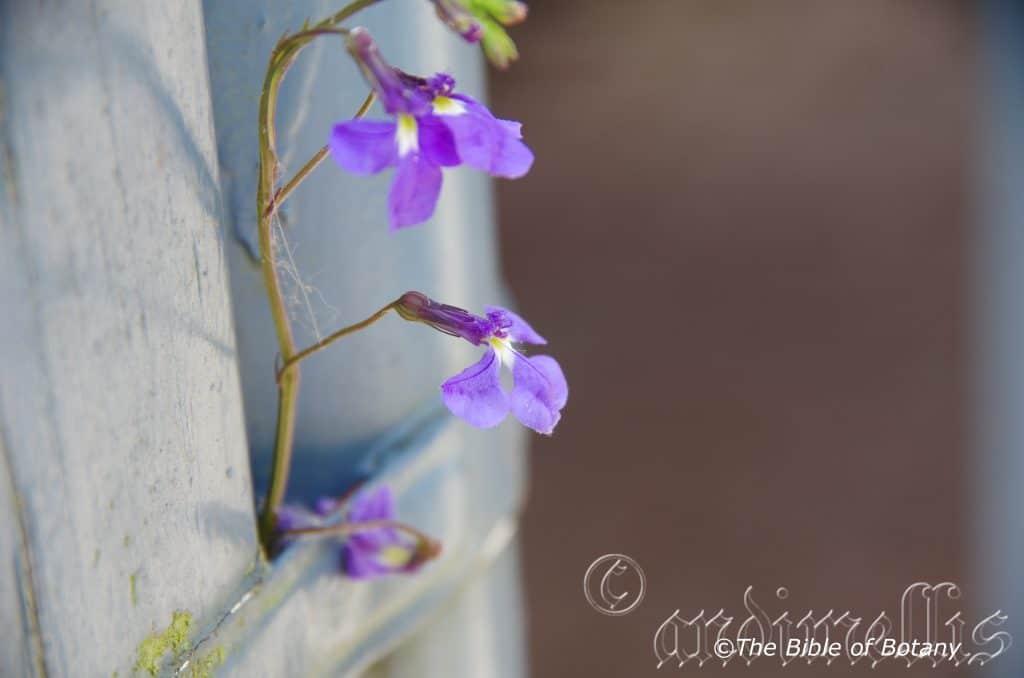
Whiteman’s Creek The Pinnacles NSW

Whiteman’s Creek The Pinnacles NSW

Whiteman’s Creek The Pinnacles NSW
Lobelia andrewsii
Classification:
Unranked: Eudicots
Unranked: Asterids
Order: Asterales
Family: Campanulaceae
Subfamily: Lobeliodeae
Genus: Is named in honour of Mathias de Lobel; 1538-1616, who was a Flemish botanist who deduced that botany was an exact science of observation.
Specie: Is named in honour of Ernest Clayton Andrews; 1870-1948, who was a New South Wales geologist and botanist.
Sub species:
Common Name: Trailing Lobelia.
Distribution:
Lobelia andrewsii is found in several widely disjunct populations south from the Blackdown Tablelands in central eastern Queensland to the Lane Cove River and Appin in central coastal New South Wales.
https://avh.ala.org.au/occurrences/search?taxa=Lobelia+andrewsii#tab_mapView
Habitat Aspect Climate:
Lobelia andrewsii prefers light dappled shade to full shade. It grows particularly common in moisture holding rock crevices in forest or open woodland heaths. The altitude ranges from 100 meters ASL to 1356 meters ASL
The temperatures range from minus 5 degrees in August to 38 degrees in January.
The rainfalls range from lows of 900mm to an average of 4000mm.
Soil Requirements:
Lobelia andrewsii prefers to grow on course sands, fine sands to light fatty gritty clays. The soils are usually derived from decomposed sandstones, granites or at times black basalts. The soils pH. ranges from 5pH to 6pH. It does not tolerate water logged soils. Non saline soils to moderately saline soils are tolerated.
Height & Spread:
Wild Plants: 200mm to 300mm by 900mm to 1800mm.
Characteristics:
Lobelia andrewsii is an erect to decumbent herb with grass-green stems. The terete stems are glabrous.
The basal leaves are petiolate ovate and measure 10mm to 30mm in length by 2mm to 12mm in width. The upper leaves are linear, broad spathulate, lanceolate or pinnatifid. The leaves measure 12mm to 55mm in length by 2mm to 12mm in width. The bases are attenuate on the basal leaves and sessile on the upper leaves while the apexes are obtuse on the basal leaves becoming acute on the apical leaves. The concolourous laminas are deep green semi glossy or dull and glabrous. The laminas are flat while the margins are entire to irregularly tooth. The mid vein is prominent on the lower lamina and obscure to clear visible on the upper lamina.
The inflorescences are born on long disjunct racemes from the leaf axils. The single sided racemes have 2 to 12 individual flowers. The pedicels measure 5mm to 20mm in length following anthesis. The calyxes are deeply incised with narrow linear lobes that have acute apexes. The calyx lobes measure 3mm to 5mm in length. The corolla and lobes are glabrous externally while the upper lobes are sparsely covered in long white pilose hairs internally and at the throat of the corolla tube. The corolla and lobes are bluish lavender, deep blue to violet. The corolla usually measures 8mm to 12mm in length. The 2 upper lobes are shorter and curve strongly backwards and measure 4mm to 5mm in length while the lower middle lobe is divaricate, strongly obovate and measures 12mm to 15mm in length by 12mm to 16mm in width. The 2 lateral lobes are oblong to oblong-obovate and measure 12mm to 16mm in length by 10mm to 14mm in width
All the anthers are moderately covered in long white pilose hairs. The flowers appear from November to July.
The fruits are oblique, ovoidal capsules on an erect stout pedicel. The capsules measure 3.5mm to 4mm in length by 3.5mm to 4mm in diameter. The lime-green capsules turn straw fawnish-yellow when ripe.
Wildlife:
Lobelia andrewsii appears not to have any predators on a regular basis though I would expect them to be host to several butterflies similar to the southern species.
Cultivation:
Lobelia andrewsii makes an excellent rockery or bank stabilizer plant. It always looks green and fresh especially where adequate ground moisture is retained whether it is grown in shade or full sun. It is very suitable on water logged acid soils. It is most suitable for small, medium and large gardens close to the coast in sub tropical gardens or tropical gardens and would be worthwhile trying in semi-arid zones where some moisture can be provided. As garden subjects they will grow from 200m to 250mm by 300mm to 400mm in diameter.
If it is placed around a pool, courtyards or other confined spaces then plant them in groups where it completely covers the ground. Here it will soften hard lines created with paving bricks fences and walls. Using rocks and small boulders can make the pool or any water feature appear like an oasis.
If companion plants are sought then the choice of plants to use either side is limited only by size of the area to be landscaped and the size of the other plants as they should be no more than 300mm in height to emphasize the fine linear lines of Lobelia anceps.
It is a great choice to break up horizontal lines along driveways and it can be used to great affect where a moist creek bed is the theme by using them to mark out the banks. It can be used to stabilize banks along dry creek and stream riparian zones.
Propagation:
Seeds: Lobelia andrewsii seeds can be sown directly into a seed raising mix. Cover the seeds with 2mmm to 5mm of fine weed free mulch and keep moist. Place the tray in a warm sunny position. When the seedlings are 30mm to 50mm tall, prick them out and plant them into 50mm native tubes using a good organic mix.
Once the seedlings reach 100mm to 150mm in height they can be planted out into their permanent position.
Division: Division is a good method to grow small numbers of plants which mature very quickly. When growing from divisions remove the plant from the soil and just cut it into 3 or 4 equal parts, first down the middle then halve those sections again. Remove unwanted dead leaves and any old small clumps that look weak or dead. Plants can be divided further but ensure each division has a several strong shoot and healthy rhizomes attached to the tuff. Replant ensuring the soil is at the same level as before. Cut the leaves back to about 100mm in length then give a good soaking with our recommended native organic fertilizers. New shoots will appear within two weeks.
Fertilize using seaweed, fish emulsion or organic chicken pellets soaked in water on an alternate basis. Fertilize every two months until the plants are established then twice annually in early September or March to maintain health, vitality and better flowering.
Further Comments from Readers:
“Hi reader, it seems you use The Bible of Botany a lot. That’s great as we have great pleasure in bringing it to you! It’s a little awkward for us to ask, but our first aim is to purchase land approximately 1,600 hectares to link several parcels of N.P. into one at The Pinnacles NSW Australia, but we need your help. We’re not salespeople. We’re amateur botanists who have dedicated over 30 years to saving the environment in a practical way. We depend on donations to reach our goal. If you donate just $5, the price of your coffee this Sunday, We can help to keep the planet alive in a real way and continue to bring you regular updates and features on Australian plants all in one Botanical Bible. Any support is greatly appreciated. Thank you.”
In the spirit of reconciliation we acknowledge the Bundjalung, Gumbaynggirr and Yaegl and all aboriginal nations throughout Australia and their connections to land, sea and community. We pay our respect to their Elders past, present and future for the pleasures we have gained.

Yuryaigir National Park NSW
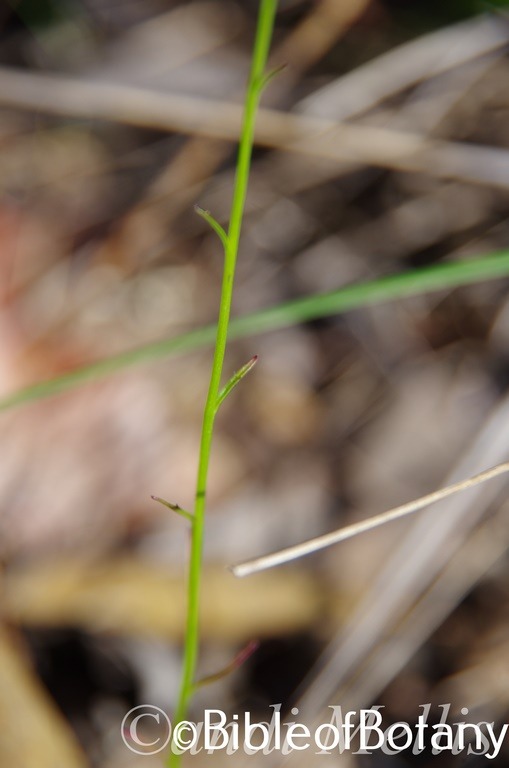
Yuryaigir National Park NSW
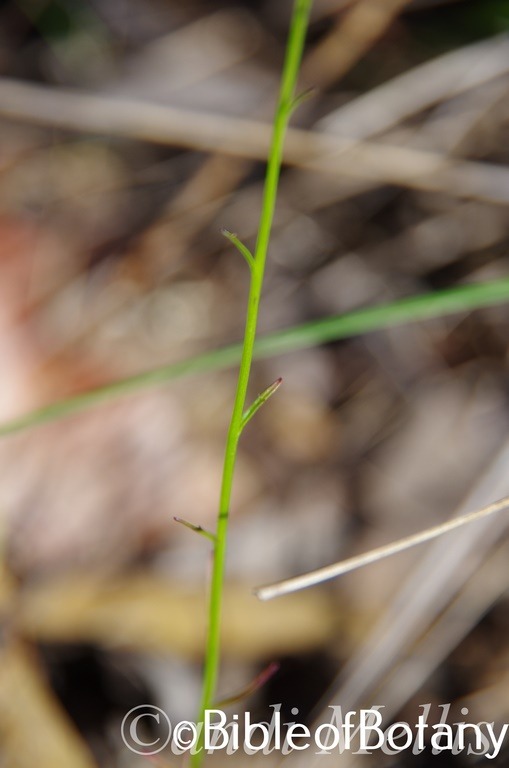
Yuryaigir National Park NSW
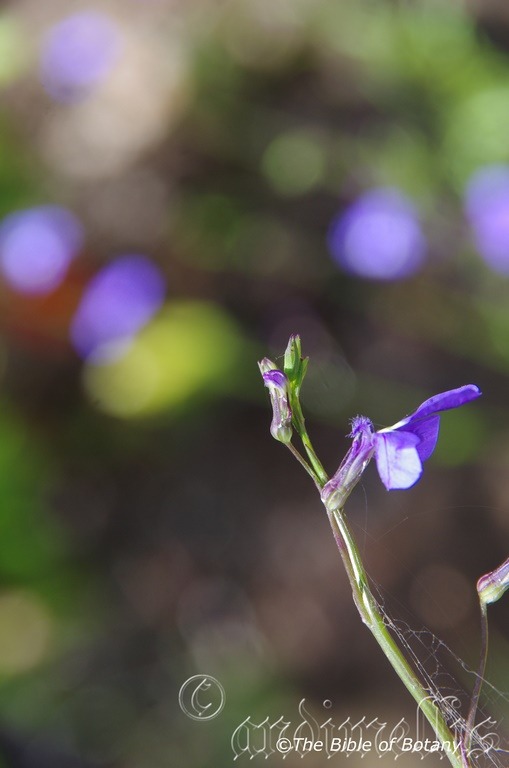
Yuryaigir National Park NSW
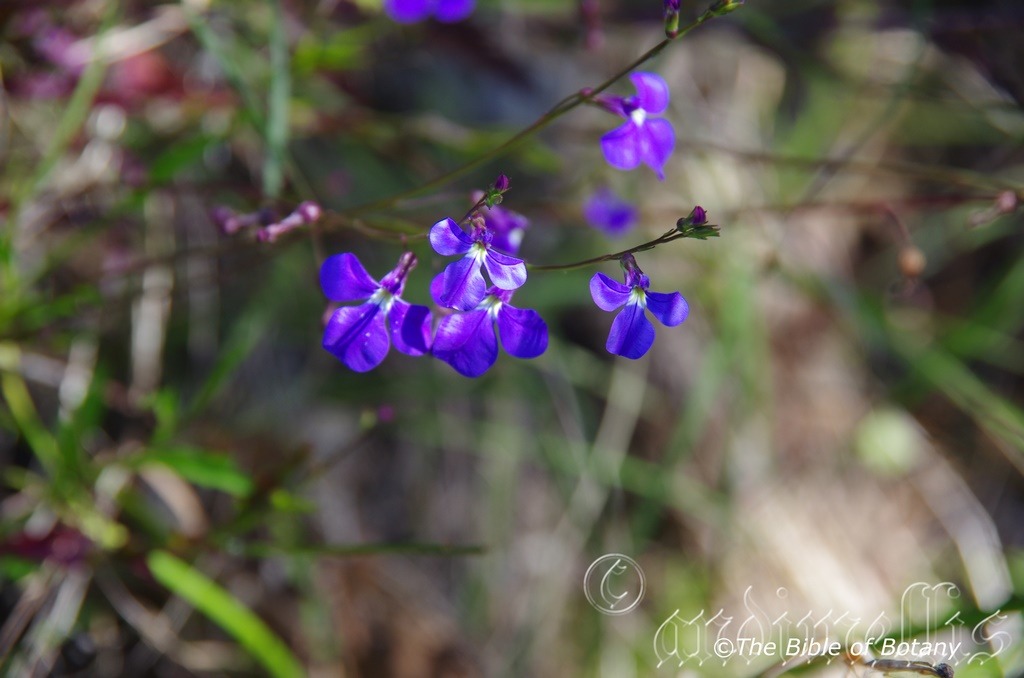
Yuryaigir National Park NSW
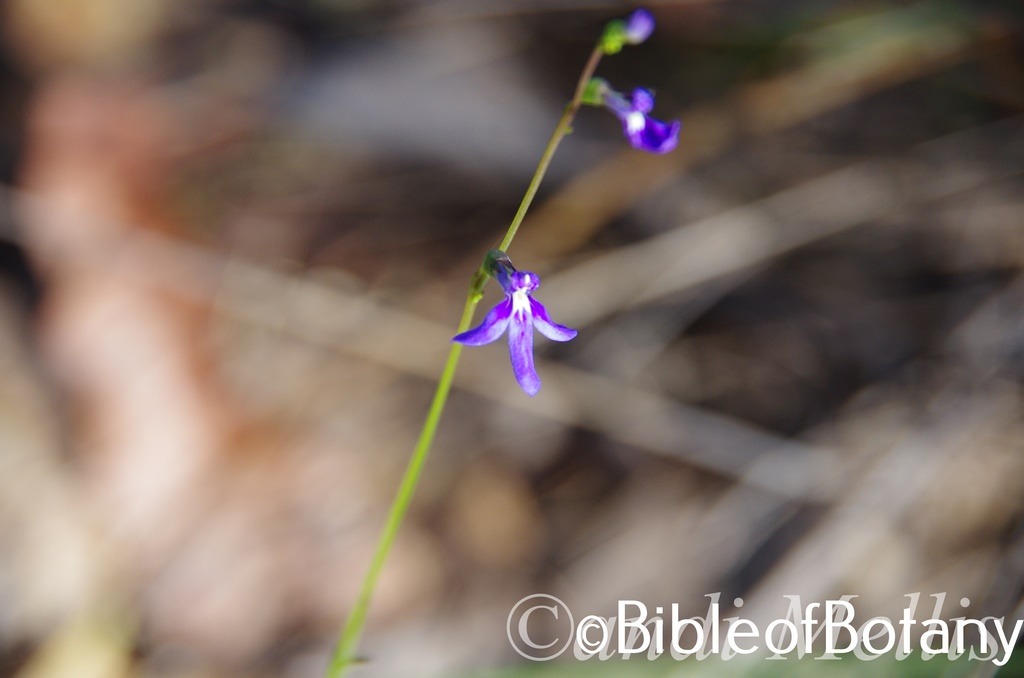
Yuryaigir National Park NSW
Lobelia gibbosa
Classification:
Unranked: Eudicots
Unranked: Asterids
Order: Asterales
Family: Campanulaceae
Subfamily: Lobeliodeae
Genus: Is named in honour of Mathias de Lobel; 1538-1616, who was a Flemish botanist who deduced that botany was an exact science of observation.
Specie: From Gibba/Gibbosus, which is for swollen on one side. It refers to the flowers or fruits, which have a distinct convex shape or swelling on one side.
Sub species:
Common Name: Tall Lobelia or False Orchid.
Distribution:
Lobelia gibbosa is found scattered throughout Australia and surrounding Islands .
https://avh.ala.org.au/occurrences/search?taxa=Lobelia+gibbosa#tab_mapView
Habitat Aspect Climate:
Lobelia gibbosa prefers light dappled shade to full shade. It occurs on well-drained sites in heathland, woodland and dry and moist sclerophyll forests. The altitude ranges from 1 meter ASL to 1356 meters ASL, in sub alpine areas.
The temperatures range from minus 0 degrees in August to 38 degrees in January.
The rainfalls range from lows of 500mm to an average of 3000mm.
Soil Requirements:
Lobelia gibbosa prefers to grow on course sands, fine sands to light fatty gritty clays or pebbly clays. The soils are usually derived from decomposed sandstones, granites or at times black basalts. The soils pH. ranges from 5pH to 7.5pH. It does not tolerate water logged soils. Non saline soils to moderately saline soils are tolerated.
Height & Spread:
Wild Plants: 100mm to 650mm by 50mm to 80mm.
Characteristics:
Lobelia gibbosa is an erect, slender herb with grass-green or occasionally reddish-brown stems especially on the apical third. The terete stems are glabrous.
The few sessile leaves are linear to narrow-lanceolate, rarely narrow-elliptic and measure 10mm to 65mm in length by 1mm to 3.5mm in width. margins entire; ± sessile. The apexes are obtuse with a fine mucronate tip linear to narrow-lanceolate, rarely narrow-elliptic, 1–7 cm long, 1–3.5 mm wide, margins entire; ± sessile. The concolouruos laminas are grass green semi glossy and glabrous. The lower lamina is rounded while the upper lamina has a distinct furrow. The mid vein is not visible while the margins are entire.
The inflorescences are born on long, slender raceme derived from the apex of the vertical stem. The single sided racemes have 2 to 7 individual flowers. The pedicels measure 1.5mm to 9mm in length following anthesis. There are two linear leaflets at the base of the petiole. The longer clasping leaflet measures 5mm to 8mm in length, while the shorter one at right angles clasping the stem measures 3mm to 5.5mm in length. The calyxes are deeply incised with narrow linear lobes that have acute apexes. The calyx lobes measure 3mm to 5mm in length. The two lipped corolla is pale blue to deep violet throat is to sparsely covered in white, pilose hairs and measures 10mm to 20mm in length. The longer lower median lobe measures 4mm to 9mm in length, while the two upper recurved lobes are about as long as tube.
The flowers appear from October through to July.
The fruits are oblique, ovoidal capsules, which are swollen on upper side. The capsules measure 5mm to 12mm in length by 3.5mm to 4mm in diameter. The lime-green capsules turn reddish-brown when ripe. The seeds are brown, are irregularly angular and have a smooth to reticulate surface.
Wildlife:
Lobelia gibbosa is unknown.
Cultivation:
Lobelia gibbosa would make an excellent small rockery herb if mass planted. It always looks green and fresh especially where adequate ground moisture is retained particularly where semi shade or full sun is variable throughout the year. Garden subjects need to be planted at around 100mm centres.
If it is placed around a pool, courtyards or other confined spaces then again plant them in groups where it completely covers the ground.
If companion plants are sought then the choice of plants to use either side is limited only by size of the area to be landscaped and the size of the other plants as they should be no more than 300mm in height to emphasize the fine linear lines of Lobelia anceps.
Propagation:
Seeds: Lobelia gibbosa seeds can be sown directly into a seed raising mix. Cover the seeds with 2mm to 5mm of fine weed free mulch and keep moist. Place the tray in a warm sunny position. When the seedlings are 30mm to 50mm tall, prick them out and plant them into 50mm native tubes using a good organic mix.
Once the seedlings reach 150mm to 60mm in height they can be planted out into their permanent position.
Fertilize using seaweed, fish emulsion or organic chicken pellets soaked in water on an alternate basis. Fertilize every two months until the plants are established then twice annually in early September or March to maintain health, vitality and better flowering.
Further Comments from Readers:
“Hi reader, it seems you use The Bible of Botany a lot. That’s great as we have great pleasure in bringing it to you! It’s a little awkward for us to ask, but our first aim is to purchase land approximately 1,600 hectares to link several parcels of N.P. into one at The Pinnacles NSW Australia, but we need your help. We’re not salespeople. We’re amateur botanists who have dedicated over 30 years to saving the environment in a practical way. We depend on donations to reach our goal. If you donate just $5, the price of your coffee this Sunday, We can help to keep the planet alive in a real way and continue to bring you regular updates and features on Australian plants all in one Botanical Bible. Any support is greatly appreciated. Thank you.”
In the spirit of reconciliation we acknowledge the Bundjalung, Gumbaynggirr and Yaegl and all aboriginal nations throughout Australia and their connections to land, sea and community. We pay our respect to their Elders past, present and future for the pleasures we have gained.
Lobelia membranacea
Classification:
Unranked: Eudicots
Unranked: Asterids
Order: Asterales
Family: Campanulaceae
Subfamily: Lobeliodeae
Genus: Is named in honour of Mathias de Lobel; 1538-1616, who was a Flemish botanist who deduced that botany was an exact science of observation.
Specie: From Membr?n?ceum, which is Latin for skin like. It refers to organs, which have thin, soft and pliable outer membrane.
Sub species:
Common Name:
Distribution:
Lobelia membranacea is found several disjunct populations south from Mount Surprise in far north Queensland to north of Maclean in north eastern New South Wales. There is a further disjunct population at the tip of Cape York Peninsular and an isolated population on the Gregory River crossing near Riversleigh Station. It is mainly found on and east of the Great Dividing Range.
https://avh.ala.org.au/occurrences/search?taxa=Lobelia+membranacea#tab_mapView
Habitat Aspect Climate:
Lobelia membranacea prefers light dappled shade to full shade. It grows on the edges of lakes, pools and slow-moving creeks or streams. The altitude ranges from 7 meters ASL to 350 meters ASL
The temperatures range from 0 degrees in August to 38 degrees in January.
The rainfalls range from lows of 950mm to an average of 3200mm.
Soil Requirements:
Lobelia membranacea prefers to grow on sandy loams to medium silts. The soils are derived from decomposed sandstone, granite or brown basalt. The soils pH. ranges from 5pH to 6.5pH. It tolerates water logged soils preferring to grow close to or adjacent to permanent water. Non saline soils to moderately saline soils are tolerated.
Height & Spread:
Wild Plants: 900mm to 1300mm by 900mm to 1800mm.
Characteristics:
Lobelia membranacea is a prostrate mat forming ground covering herb with pale grass-green stems. The plants will root from the nodes
The oblong to elliptical leaves measure 4mm to 18mm in length by 4mm to 12mm in width. The petioles are sparsely covered in minute white puberulent hairs which may extend onto the base of the leaves. The petioles measure 1mm to 4mm in length. The bases are truncate, obtuse or slightly cordate while the apexes are tapering obtuse to acuminate. The concolourous or discolourous laminas are grass-green semi glossy and glabrous on the upper lamina while the lower laminas are slightly paler and dull. The laminas are flat or are slightly convex between the main vein and main lateral veins while the margins are usually regularly toothed or rarely entire. The mid vein and main lateral veins are prominent on the lower lamina and distinctly visible on the upper lamina.
The inflorescences are born singularly from the leaf axils. The long filiform pedicels usually measure 20mm to 60mm in length but can reach 140mm in length. The calyxes are deeply incised with narrow linear lobes that have acute apexes. The calyx lobes are densely covered in minute, white pulverulent hairs and measure 1.5mm to 3mm in length. The corolla and lobes are densely covered in minute, white pulverulent hairs externally and internally near the throat. The corolla and lobes are white tinged purple to pale blue or mauve. The corolla usually measures 4mm to 9mm in length. The 2 upper lobes are erect, oblong and measure 4mm to 8mm in length while the 3 lower lobes are divaricate, oblong and measure 4mm to 8mm in length.
The long, white filiform filaments measure 4mm to 5mm in length. The lower anthers have a short apical bristle. The ovary is tuberculate. The flowers appear from November to May.
The fruits are indehiscent and ellipsoidal to globose capsules. The capsules measure 2mm to 4mm in length by 2mm to 4mm in diameter. The lime-green capsules turn straw pale grey when ripe while the calyx lobes are persistent at the apex.
Wildlife:
Lobelia membranacea appears not to have any predators on a regular basis though I would expect them to be host to several butterflies similar to the southern species.
Cultivation:
Lobelia membranacea makes an excellent rockery or bank stabilizer plant. It always looks green and fresh especially where adequate ground moisture is retained whether it is grown in shade or full sun. It is very suitable on water logged acid soils. It is most suitable for small, medium and large gardens close to the coast in sub tropical gardens or tropical gardens and would be worthwhile trying in semi-arid zones where saline soils exist. As garden subjects they will grow from 400m to 500mm by 1000mm to 1500mm wide. It would be best to maintain it in an enclosed situation where it can be easily controlled in case it becomes weedy similar to Pratia pedunculata.
If it is placed around a pool, courtyards or other confined spaces then plant them in groups where it completely covers the ground. Here it will soften hard lines created with paving bricks fences and walls. Using rocks and small boulders can make the pool or any water feature appear like an oasis.
If companion plants are sought then the choice of plants to use either side is limited only by size of the area to be landscaped and the size of the other plants as they should be no more than 500mm in height to emphasize the fine linear lines of Lobelia anceps.
It is a great choice to break up horizontal lines along driveways and it can be used to great affect where a moist creek bed is the theme by using them to mark out the banks. It can be used to stabilize banks along creeks and streams or to help soak up water in wet areas.
Propagation:
Seeds: Lobelia membranacea seeds can be sown directly into a seed raising mix. Cover the seeds with 5mm to 10mm of fine weed free mulch and keep moist. Place the tray in a warm sunny position. When the seedlings are 30mm to 50mm tall, prick them out and plant them into 50mm native tubes using a good organic mix.
Once the seedlings reach 100mm to 150mm in height they can be planted out into their permanent position.
Division: Division is a good method to grow small numbers of plants which mature very quickly. When growing from divisions remove the plant from the soil and just cut it into 3 or 4 equal parts, first down the middle then halve those sections again. Remove unwanted dead leaves and any old small clumps that look weak or dead. Plants can be divided further but ensure each division has a several strong shoot and healthy rhizomes attached to the tuff. Replant ensuring the soil is at the same level as before. Cut the leaves back to about 100mm in length then give a good soaking with our recommended native organic fertilizers. New shoots will appear within two weeks.
Fertilize using seaweed, fish emulsion or organic chicken pellets soaked in water on an alternate basis. Fertilize every two months until the plants are established then twice annually in early September or March to maintain health, vitality and better flowering.
Further Comments from Readers:
“Hi reader, it seems you use The Bible of Botany a lot. That’s great as we have great pleasure in bringing it to you! It’s a little awkward for us to ask, but our first aim is to purchase land approximately 1,600 hectares to link several parcels of N.P. into one at The Pinnacles NSW Australia, but we need your help. We’re not salespeople. We’re amateur botanists who have dedicated over 30 years to saving the environment in a practical way. We depend on donations to reach our goal. If you donate just $5, the price of your coffee this Sunday, We can help to keep the planet alive in a real way and continue to bring you regular updates and features on Australian plants all in one Botanical Bible. Any support is greatly appreciated. Thank you.”
In the spirit of reconciliation we acknowledge the Bundjalung, Gumbaynggirr and Yaegl and all aboriginal nations throughout Australia and their connections to land, sea and community. We pay our respect to their Elders past, present and future for the pleasures we have gained.
Lobelia pedunculata
Classification:
Unranked: Eudicots
Unranked: Asterids
Order: Asterales
Family: Campanulaceae
Subfamily: Lobeliodeae
Genus: Is named in honour of Mathias de Lobel; 1538-1616, who was a Flemish botanist who deduced that botany was an exact science of observation.
Specie: From Pous, which is Ancient Greek or Pes/Pedi, which is Latin for a foot or feet. It refers to flowers, which have a peduncle and pedicel. The primary or main stalk which all the pedicels are derived.
Sub species:
Common Name: Matted Pratia or Trailing Pratia.
Distribution:
Lobelia pedunculata is found south from Mount Colliery near Warwick in southern Queensland to Mount Gambier in south eastern South Australia. It is also found further west in South Australia near Mylor in the Flinders Ranges while in Tasmania it is found over most of the state except the south western highlands.
https://avh.ala.org.au/occurrences/search?taxa=Lobelia+pedunculata#tab_mapView
Habitat Aspect Climate:
Lobelia pedunculata prefers light dappled shade to full sun. It grows in swampy places on damp ground on the margins of rivers, billabongs lakes, dams or in wet sclerophyll forest along drainage lines.The altitude ranges from 200m meters ASL to 1400 meters ASL.
The temperatures range from minus 6 degree in August to 33 degrees in January.
The rainfall ranges from lows of 350mm to an average of 2400mm.
Soil Requirements:
Lobelia pedunculata prefers to grow on light sandy clays to medium clays. The soils are usually derived from decomposed granites. The soils pH ranges from 4.5pH to 6pH. It tolerates water logged soils. Non saline soils to moderately saline soils are tolerated.
Height & Spread:
Wild Plants: 0.05m to 0.15mm by 0.75m to several square meters.
Characteristics:
Lobelia pedunculata grows as a small prostrate herb with ascending stems often forming dense mats. The stems are deep grass-green often tinged deep purple. The stems are sparsely to moderately covered in fine, soft white pulverulent hairs. The plants are easily distinguished by their clean white rhizomes with fine adventitious roots.
The alternate, distichous, and ovate to lanceolate leaves measure 4mm to 12mm in length by 3mm to 7mm in width. The petioles are pale green and sparsely covered in soft, white puberulent hairs and measure 0mm to 0.5mm in length. The bases are asymmetric, obtuse or subcordate while the apexes are obtuse. The discolourous laminas are bright pale green to mid grass-green and glabrous on the upper laminas while the lower laminas are similar or slightly paler and sparsely covered in white puberulent hairs. The laminas are flat while the margins are irregularly and finely toothed. The mid vein is slightly prominent on the lower lamina and is not visible on the upper lamina.
The inflorescences are unisexual and are born singularly from the leaf axis and measure 6mm to 8.5mm in diameter. The pedicels are pale green and sparsely covered in soft, white puberulent hairs and measure 15mm to 50mm in length. The calyx and lobes measure 1.5mm to 2.5mm in length. The white or pale bluish-mauve corolla measures 5mm to 8mm in length. The 5 lobes are linear-oblanceolate, spreading and nearly equal. They measure 2mm to 3.5mm in length.
The male flowers anthers are purplish to purplish-blue. The upper pair has a single slender bristle with a tuft of shorter, white, hirsute hairs immediately below the bristle. The lower 3 anthers are glabrous. The female flowers have 5 pastel sterile anthers, a rudimentary ovary that measures 1mm to 1.5mm in length. The flowers appear from late October to January.
The fruit is a small globose fleshy capsule. The capsules measure 3mm to 10mm in length by 3mm to 6mm in diameter. The pale green capsules turn deep purple-green on ripening before drying from the apex towards the base. The minute flat, oval to ovate seeds are hard and tan. The capsules are dehiscent over a number of days splitting into two longitudinal halves and measure 4mm to 10mm in length by 4mm to 6mm in diameter.
Wildlife:
Lobelia pedunculata’s wildlife is unknown to the author.
Cultivation:
Lobelia pedunculata is a good ground cover which gives good dense coverage. It always looks green and fresh especially where adequate ground moisture is retained throughout the year. It is most suitable for small, medium and large gardens close to the coast or high in the mountains in cool temperate or sub tropical gardens. Keep it away from other similar growing prostrate plants as they can be very invasive under ideal conditions. The flowers are produced in profusion over a very long period which makes them a beautiful addition to the garden.
It will spread over the surface between rocks and pavers and can be troublesome when planted outside its normal habitat and this has definitely proven the case in North America.
It makes an excellent low maintenance lawn in light traffic areas that have moisture problems and vary greatly in day light hours during the course of a year.
Propagation:
Seeds:
Lobelia pedunculata are best grown from sections. Just dig a section or sod up and move it to the new position in the garden. Water and fertilize with our recommended native fertilizer. Within a few weeks new shoots will appear.
Fertilize using seaweed, fish emulsion or organic chicken pellets soaked in water on an alternate basis as a foliar spray. Fertilize every two months until the plants are established then twice annually in early September and March to maintain better colour, health, vitality and flowering.
Further Comments from Readers:
“Hi reader, it seems you use The Bible of Botany a lot. That’s great as we have great pleasure in bringing it to you! It’s a little awkward for us to ask, but our first aim is to purchase land approximately 1,600 hectares to link several parcels of N.P. into one at The Pinnacles NSW Australia, but we need your help. We’re not salespeople. We’re amateur botanists who have dedicated over 30 years to saving the environment in a practical way. We depend on donations to reach our goal. If you donate just $5, the price of your coffee this Sunday, We can help to keep the planet alive in a real way and continue to bring you regular updates and features on Australian plants all in one Botanical Bible. Any support is greatly appreciated. Thank you.”
In the spirit of reconciliation we acknowledge the Bundjalung, Gumbaynggirr and Yaegl and all aboriginal nations throughout Australia and their connections to land, sea and community. We pay our respect to their Elders past, present and future for the pleasures we have gained.
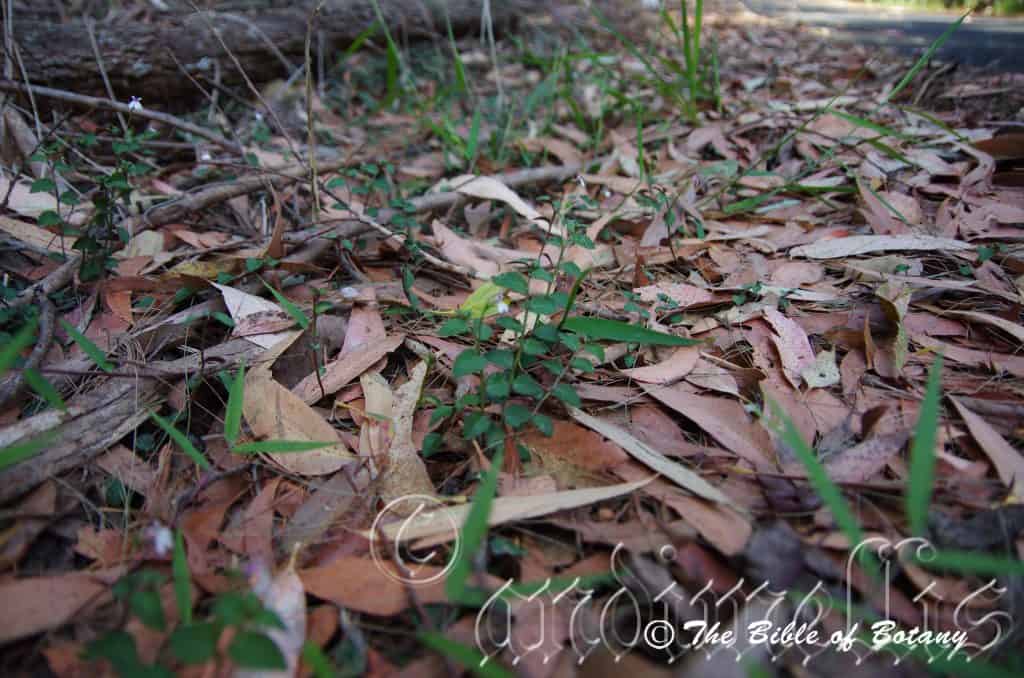
North Brother National Park NSW

North Brother National Park NSW
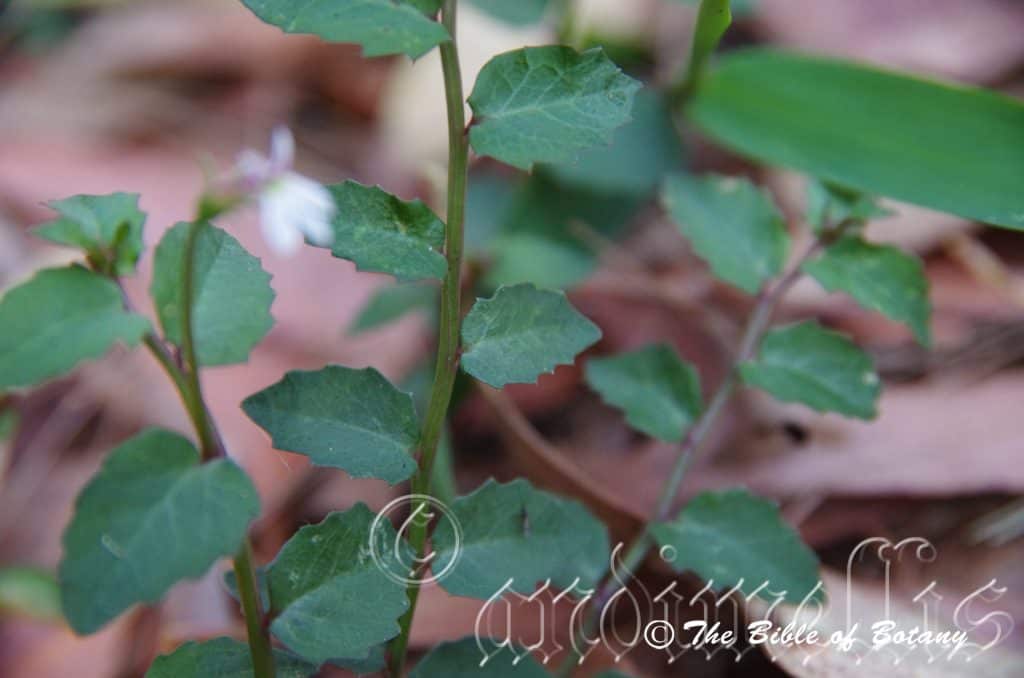
North Brother National Park NSW

North Brother National Park NSW
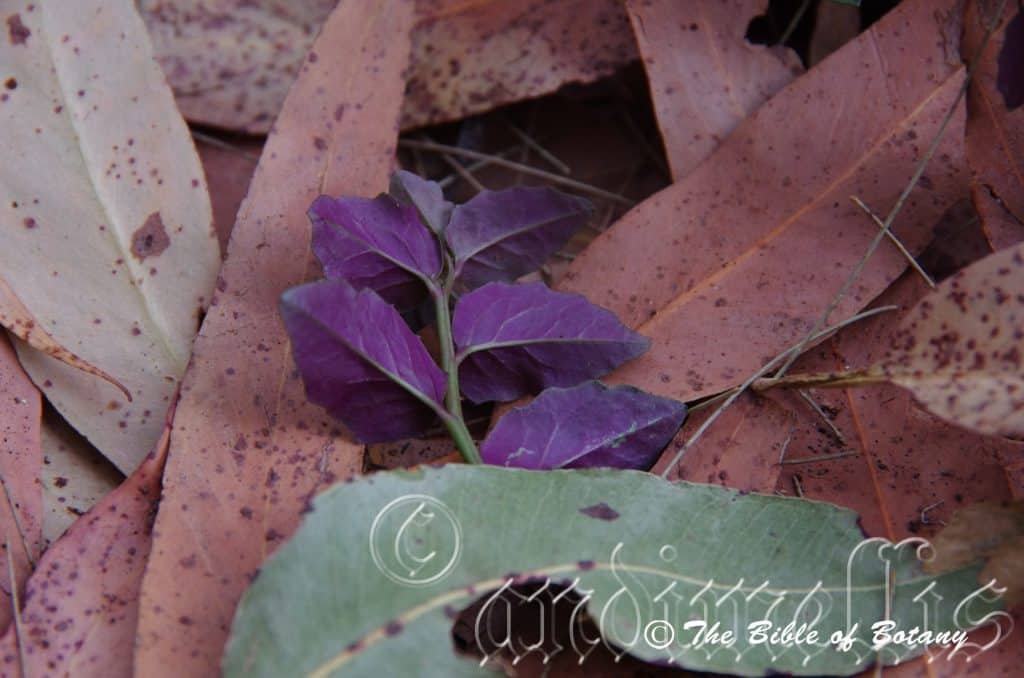
North Brother National Park NSW
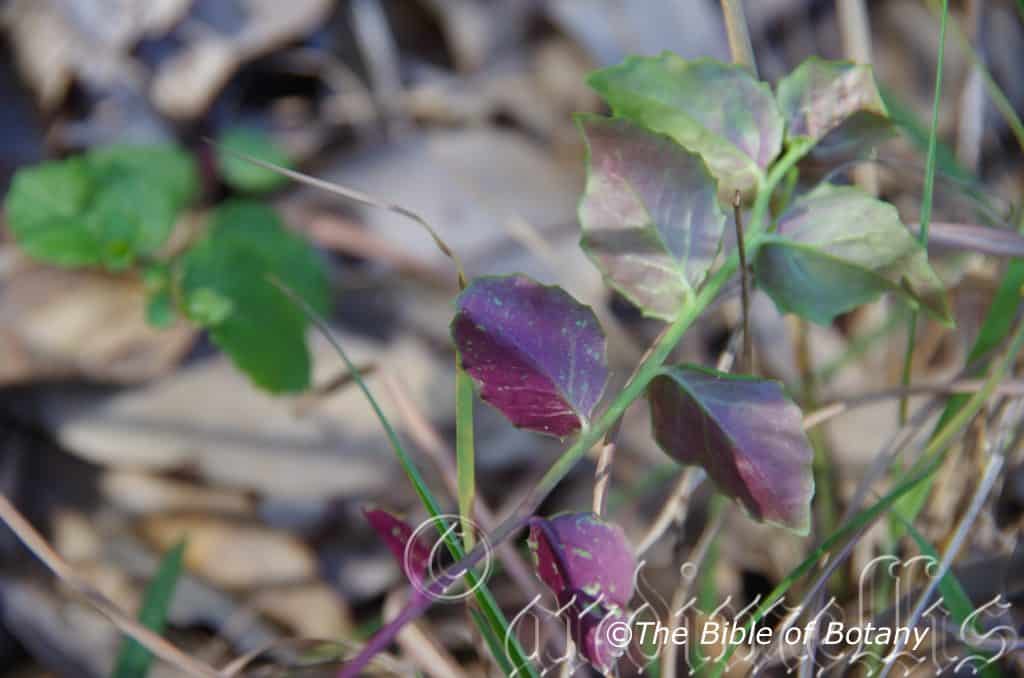
The Pinnacles NSW

North Brother National Park NSW

North Brother National Park NSW

North Brother National Park NSW

North Brother National Park NSW

The Pinnacles NSW
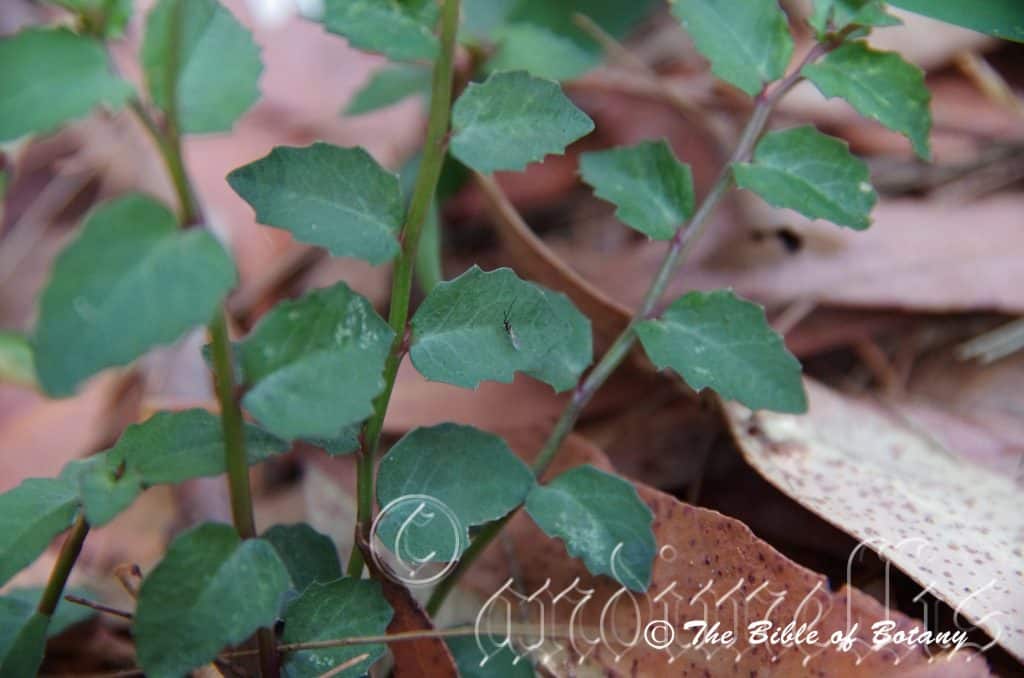
North Brother National Park NSW
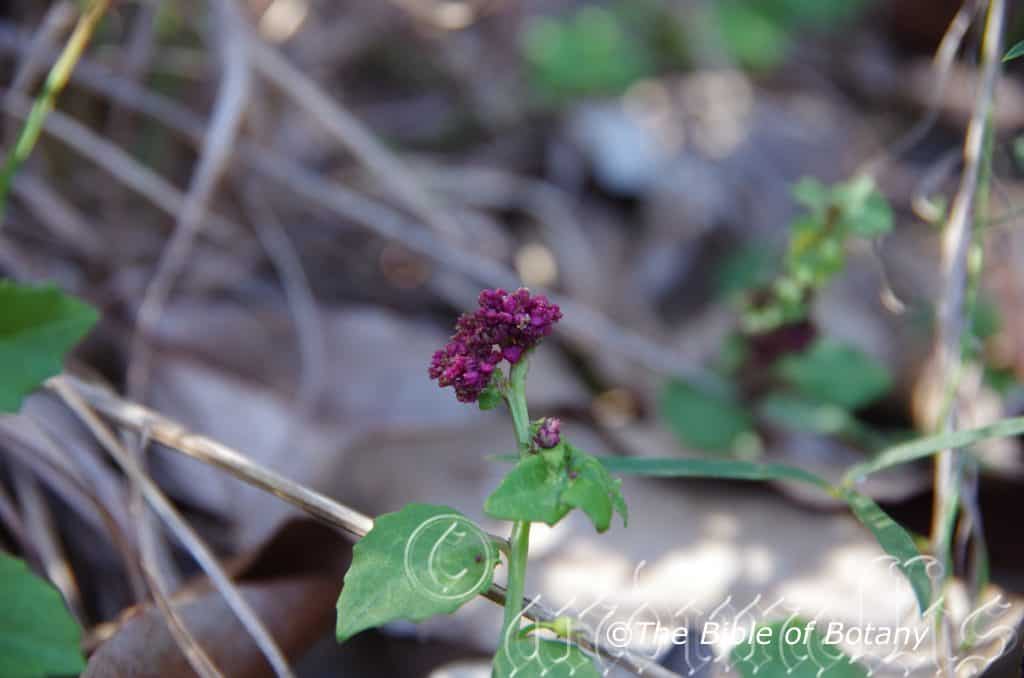
Lobelia purpurascens
Classification:
Unranked: Eudicots
Unranked: Asterids
Order: Asterales
Family: Campanulaceae
Subfamily: Lobeliodeae
Genus: Is named in honour of Mathias de Lobel; 1538-1616, who was a Flemish botanist who deduced that botany was an exact science of observation.
Specie: From Purpurea, which is Latin for purple. It refers to structures or organs, which have a distinct purplish, deep reddish-purple or purple colour or sheen.
Sub species:
Common Name: Whiteroot.
Distribution:
Lobelia purpurescens is found in 2 disjunct populations from the Fitzroy River and around Rockhampton in central coastal Queensland and then south from Caloundra in south east coastal Queensland to north of Orbost in far north eastern Victorian.
https://avh.ala.org.au/occurrences/search?taxa=Lobelia+purpurascens#tab_mapView
Habitat Aspect Climate:
Lobelia purpurascens is known in different state under the two names. It prefers light dappled shade to full shade. It grows along creeks alluvial plains in most types of moist open forests.The altitude ranges from 5m meters ASL to 600 meters ASL.
The temperatures range from minus 2 degree in August to 36 degrees in January.
The rainfalls range from lows of 700mm to an average of 1600mm.
Soil Requirements:
Lobelia purpurescens prefers to grow on light sandy clays to medium clays often with copious quantities of leaf litter. The soils are usually derived from decomposed brown basalt, black basalts, sandstones, shale, alluvial flats or podsolic soils. The soils pH ranges from 4.5pH to 7pH. It tolerates water logged soils. Non saline soils to moderately saline soils are tolerated.
Height & Spread:
Wild Plants: 0.05m to 0.15mm by 0.75m to several square meters.
Characteristics:
Lobelia purpurescens grows as a small procumbent plant with ascending stems. The stems are deep green often tinged deep purple to 300mm in length. The plants are easily distinguished by their clean white rhizomes.
The alternate, ovate to lanceolate leaves measure 10mm to 20mm in length by 4mm to 10mm in width. The base is cuneate to rounded, sessile or with a short petiole to 1mm in length while the apex is acute to acuminate. The discolourous laminas are deep grey sea-green to deep grey-green semi glossy and glabrous on the upper laminas while the lower laminas are paler with a purple sheen. The margins are toothed and curve slightly upwards from the midvein. The mid vein is prominent on the lower lamina and is clearly visible on the upper lamina.
The inflorescence are unisexual and are born in singularly from the leaf axis and measure 6mm to 8.5mm in diameter. The pedicels measure 10mm to 65mm in length. The calyx lobes measure 1.5mm to 3.5mm in length by 1mm to 1.5mm in width for half their length. Then it is narrow tapering to the apex. It is often toothed at the point where they begin to taper. The white, pale pink, pale blue or pale lilac corolla is 8mm to 10mm long. The 5 lobes are unequal with the two upper lobes being erect, linear, acuminate and inflexed. They measure 3mm to 3.5mm in length. The three lower lobes are narrow lanceolate with mucronate apexes and measure 4mm to 5mm in length by 1.5mm to 2.5mm in width. The deep purple style is centrally located on the rudimentary ovary which measures 2mm to 4mm in length. The female flowers have shorter sterile anthers than the male flowers. The fertile anthers on the male flowers are deep purple and glabrous except for the lower two which have two distinct apical bristles. The flowers appear from late August to late April with some flowers appearing throughout the year.
The fruit is a small globose capsule. The capsules measure 3mm to 10mm in length by 3mm to 6mm in diameter. The pale green capsules turn deep purple-green on ripening before drying from the apex towards the base. The seeds are hard, brown to black and are oval to ovate. They measure 0.5mm to 0.6mm in diameter. The capsules are dehiscent over a number of days splitting into two longitudinal halves.
Wildlife:
Lobelia purpurescens appears not to have any predators on a regular basis. I have witnessed an unknown smooth black caterpillar on the plants on very rare occasions and the damage is superficial.
Cultivation:
Lobelia purpurescens is a good ground cover which gives good dense coverage in partial shaded areas. It always looks green and fresh especially where adequate ground moisture is retained. I have spent years trying to eliminate it at our first nursery and found in the end it was far better to work with it as it was a losing battle. I have mown over it similar to a lawn once established on poor soils where it respond very quickly recovering in a matter of days. It does not need mowing, which is a great attraction. It is very suitable on water logged acid soils. It is most suitable for small, medium and large gardens close to the coast or high in the mountains in warm temperate or sub tropical gardens. It does well beneath tall trees including Tristania species and Eucalyptus species. Keep them away from other similar growing prostrate plants as it can be very invasive under ideal conditions. The flowers are produced in profusion over a very long period which makes them a beautiful addition to the garden. Flowering seems to be enhanced or stimulated following fertilizing
Propagation:
Seeds:
Lobelia purpurescens are best grown from sections. Just dig a section or sod up and move it to the new position in the garden. Water and fertilize with our recommended native fertilizer. Within a few weeks new shoots will appear.
Fertilize using seaweed, fish emulsion or organic chicken pellets soaked in water on an alternate basis. Fertilize every two months until the plants are established then twice annually in early September and March to maintain better colour, health, vitality and flowering.
Further Comments from Readers:
“Hi reader, it seems you use The Bible of Botany a lot. That’s great as we have great pleasure in bringing it to you! It’s a little awkward for us to ask, but our first aim is to purchase land approximately 1,600 hectares to link several parcels of N.P. into one at The Pinnacles NSW Australia, but we need your help. We’re not salespeople. We’re amateur botanists who have dedicated over 30 years to saving the environment in a practical way. We depend on donations to reach our goal. If you donate just $5, the price of your coffee this Sunday, We can help to keep the planet alive in a real way and continue to bring you regular updates and features on Australian plants all in one Botanical Bible. Any support is greatly appreciated. Thank you.”
In the spirit of reconciliation we acknowledge the Bundjalung, Gumbaynggirr and Yaegl and all aboriginal nations throughout Australia and their connections to land, sea and community. We pay our respect to their Elders past, present and future for the pleasures we have gained.
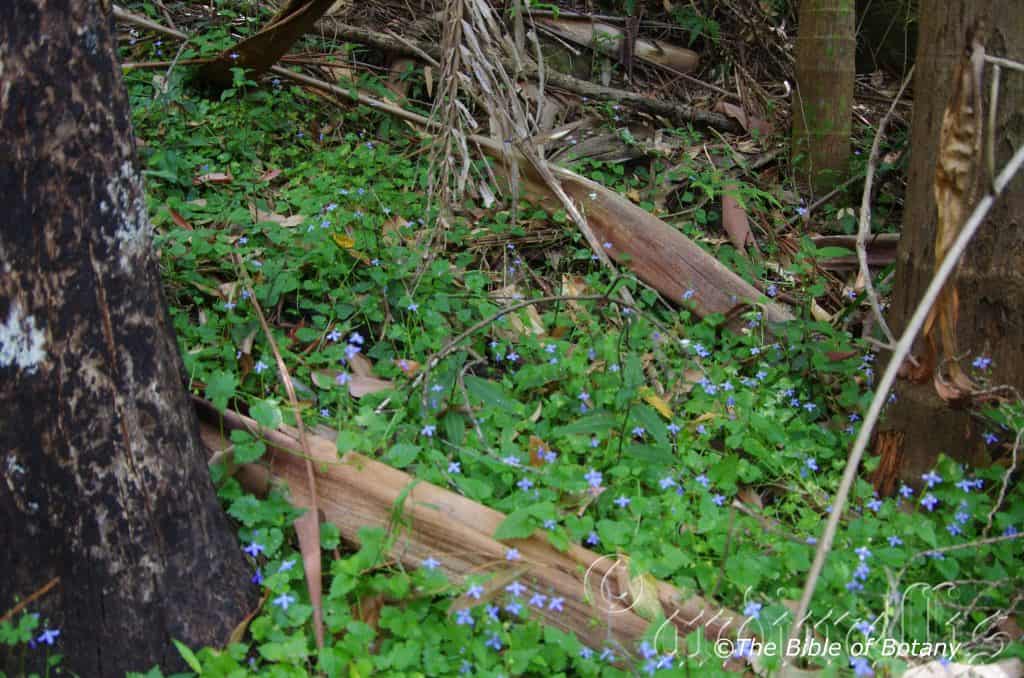
Cangai National Park NSW

Cangai National Park NSW

Cangai National Park NSW
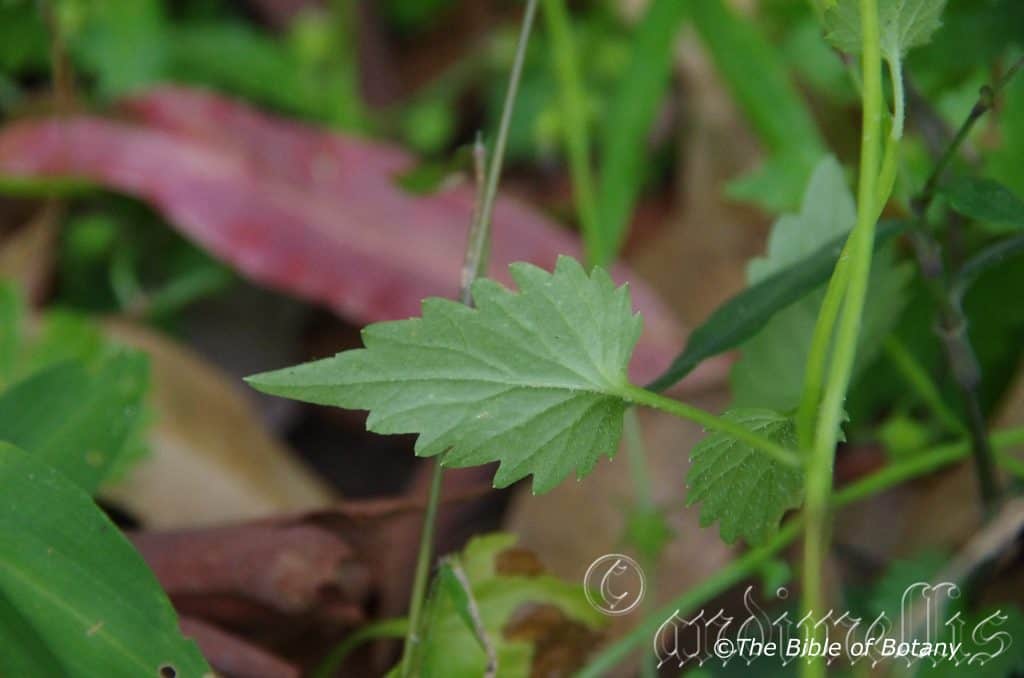
Cangai National Park NSW

Cangai National Park NSW
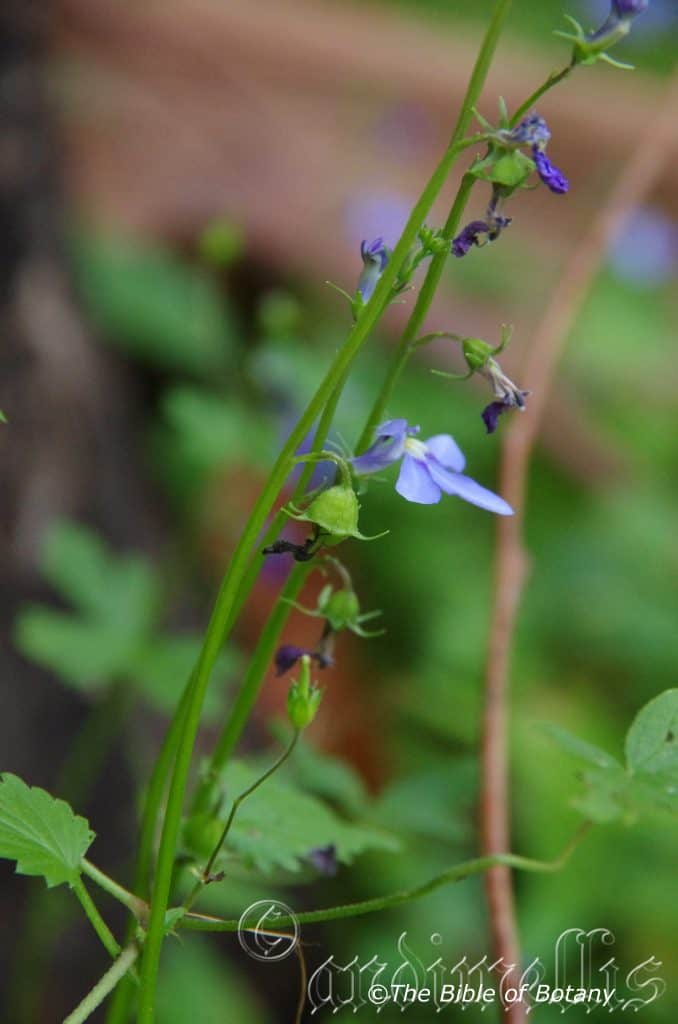
Cangai National Park NSW
Lobelia trigonocaulis
Classification:
Unranked: Eudicots
Unranked: Asterids
Order: Asterales
Family: Campanulaceae
Subfamily: Lobeliodeae
Genus: Is named in honour of Mathias de Lobel; 1538-1616, who was a Flemish botanist who deduced that botany was an exact science of observation.
Specie: From Treîs/Tría, which are Ancient Greek or Tri, which is Latin for three, Gonos, which is Ancient Greek for an angle and Kaulos, which is Ancient Greek or Caulus, which is Latin for a twig or stem or branch. It refers to twigs or stems, which have a triangular cross section.
Sub species:
Common Name: Forest Lobelia.
Distribution:
Lobelia trigonocaulis is found in 3 distinct disjunct populations south from Jigol to the lower catchments of the Russell River in far north eastern coastal Queensland and bounded by the Expedition Range, Carnarvon National Park and Monto west of the Great Dividing Range and from Fraser Island to Wyong in central coastal New South Wales.
https://avh.ala.org.au/occurrences/search?taxa=Lobelia+trigonocaulis#tab_mapView
Habitat Aspect Climate:
Lobelia trigonocaulis prefers light dappled shade to full shade. It grows in shady moist areas in sclerophyll forest, in rainforest especially near creeks, streams and rivers. The altitude ranges from 10 meters ASL to 450 meters ASL
The temperatures range from minus 4 degrees in August to 38 degrees in January.
The rainfalls range from lows of 650mm to an average of 3200mm.
Soil Requirements:
Lobelia trigonocaulis prefers to grow on sandy loams to medium clays. The soils are derived from decomposed sandstone, granite, shale, brown basalt, black basalt, metamorphic rocks or accumulated beach sands. The soils pH. ranges from 6pH to 7pH. It tolerates water logged soils though seasonal water logged soils are tolerated where the plants maybe submerged or partly submerged for short periods. Non saline soils to moderately saline soils are tolerated.
Height & Spread:
Wild Plants: 50mm to 100mm by 900mm to 1800mm.
Characteristics:
Lobelia trigonocaulis’s is a weak trailing ground covering herb with pale grass-green stems. The flattened stems are sparsely covered in white hirsute hairs. The branches usually grow from 300mm to 500mm in length.
The lower leaves are circular while the upper leaves are ovate and measure 10mm to 55mm in length by 10mm to 45mm in width. The bases are truncate or obtuse to cordate while the apexes are obtuse. The concolourous laminas are grass-green semi glossy and glabrous. The laminas are flat or are raised between the main vein and main lateral veins while the margins are coarsely to bluntly toothed or crenate to sinuate. The mid vein and main lateral veins are prominent on the lower lamina and distinctly visible on the upper lamina. The petioles are sparsely covered in white hirsute hairs which may extend onto the base of the leaves. The petioles measure 1mm to 4mm in length.
The inflorescences are born on a long raceme from the leaf axils. There are 3 to 6 individual flowers on the 60mm to 120mm long raceme. The raceme and pedicels are sparsely covered in minute white puberulent hairs. The maroon pedicels measure 1mm to 2mm in length. The calyx lobes are divaricate and narrow triangular. The calyx lobes are glabrous or sparsely covered in minute, white puberulent hairs externally and measure 2mm to 4mm in length. The corolla is glabrous externally and moderately covered in long, white pilose hairs internally near the throat. The corolla and lobes are white mauve, mauve-blue or pale pink to deep pink. The corolla usually measures 10mm to 12mm in length. The 2 upper lobes strongly recurve backwards are oblong and are glabrous externally and are moderately covered in long white pilose hairs internally near the throat and sparsely covered in long white hairs on the apical half. The oblong upper lobes measure 2mm to 5mm in length. The 3 oblong lower lobes are divaricate and measure 10mm to 15mm in length.
The anthers have a tuft of short bristles on the apical end and are united forming a short tube around the style. The style has 2 stigmas or a single stigma with a 2 lobes and measures 6mm to 7.5mm in length. The ovary is glabrous and measures 1.5mm to 2.5mm in length. The flowers appear from November to May.
The fruits are globose capsules. The capsules measure 3.5mm to 6mm in length by 3mm to 6mm in diameter. The lime-green capsules turn straw pale grey when ripe while the calyx lobes are persistent at the apex. The hemispherical seeds measure 0.8mm to 1mm in diameter.
Wildlife:
Lobelia trigonocaulis appears not to have any predators however the tiny blue butterfly Zizina labradus has been seen foraging over the flowers.
Cultivation:
Lobelia trigonocaulis makes an excellent rockery or bank stabilizer plant. It always looks green and fresh especially where adequate ground moisture is retained whether it is grown in shade or full sun. It is very suitable on water logged acid soils. It is most suitable for small, medium and large gardens close to the coast in sub tropical gardens or tropical gardens and would be worthwhile trying in semi-arid zones where saline soils exist. As garden subjects they will grow from 400m to 500mm by 1000mm to 1500mm wide. It would be best to maintain it in an enclosed situation where it can be easily controlled in case it becomes weedy similar to Pratia pedunculata.
If it is placed around a pool, courtyards or other confined spaces then plant them in groups where it completely covers the ground. Here it will soften hard lines created with paving bricks fences and walls. Using rocks and small boulders can make the pool or any water feature appear like an oasis.
If companion plants are sought then the choice of plants to use either side is limited only by size of the area to be landscaped and the size of the other plants as they should be no more than 500mm in height to emphasize the fine linear lines of Lobelia anceps.
It is a great choice to break up horizontal lines along driveways and it can be used to great affect where a moist creek bed is the theme by using them to mark out the banks. It can be used to stabilize banks along creeks and streams or to help soak up water in wet areas.
Propagation:
Seeds: Lobelia trigonocaulis seeds can be sown directly into a seed raising mix. Cover the seeds with 5mm to 10mm of fine weed free mulch and keep moist. Place the tray in a warm sunny position. When the seedlings are 30mm to 50mm tall, prick them out and plant them into 50mm native tubes using a good organic mix.
Once the seedlings reach 100mm to 150mm in height they can be planted out into their permanent position.
Division: Division is a good method to grow small numbers of plants which mature very quickly. When growing from divisions remove the plant from the soil and just cut it into 3 or 4 equal parts, first down the middle then halve those sections again. Remove unwanted dead leaves and any old small clumps that look weak or dead. Plants can be divided further but ensure each division has a several strong shoot and healthy rhizomes attached to the tuff. Replant ensuring the soil is at the same level as before. Cut the leaves back to about 100mm in length then give a good soaking with our recommended native organic fertilizers. New shoots will appear within two weeks.
Fertilize using seaweed, fish emulsion or organic chicken pellets soaked in water on an alternate basis. Fertilize every two months until the plants are established then twice annually in early September or March to maintain health, vitality and better flowering.
Further Comments from Readers:
“Hi reader, it seems you use The Bible of Botany a lot. That’s great as we have great pleasure in bringing it to you! It’s a little awkward for us to ask, but our first aim is to purchase land approximately 1,600 hectares to link several parcels of N.P. into one at The Pinnacles NSW Australia, but we need your help. We’re not salespeople. We’re amateur botanists who have dedicated over 30 years to saving the environment in a practical way. We depend on donations to reach our goal. If you donate just $5, the price of your coffee this Sunday, We can help to keep the planet alive in a real way and continue to bring you regular updates and features on Australian plants all in one Botanical Bible. Any support is greatly appreciated. Thank you.”
In the spirit of reconciliation we acknowledge the Bundjalung, Gumbaynggirr and Yaegl and all aboriginal nations throughout Australia and their connections to land, sea and community. We pay our respect to their Elders past, present and future for the pleasures we have gained.
Logania albiflora
Classification:
Unranked: Eudicots
Unranked: Asterids
Order: Genetianales
Family: Loganiaceae
Subfamily: Lobeliodeae
Genus: Is named in honour of James Logan; 1674-1751, who was an Irish botanist.
Specie: From Albus, which is Latin for white and Fl?ris which is Latin for a flower or Fl?s which is the Roman goddess for spring and flowers. It refers to flowers, which are pure white.
Sub species:
Common Name:
Distribution:
Logania albiflora is found on the eastern half of Queensland, New South Wales and Victoria, south from White Mountain near Hughenden to Wilson Promontory.
https://avh.ala.org.au/occurrences/search?taxa=Logania+albiflora#tab_mapView
Habitat Aspect Climate:
Logania albiflora prefer light dappled shade to full shade. It grows in in wet open sclerophyll forest, adjacent to rainforests and open woodland. The altitude ranges from 10 meters ASL to 1200 meters ASL
The temperatures range from minus 4 degrees in August to 40 degrees in January.
The rainfalls range from lows of 500mm to an average of 2000mm.
Soil Requirements:
Logania albiflora prefer to grow on sandy loams to medium clays. The soils are derived from decomposed sandstone, granite, shale, brown basalt, black basalt or metamorphic rocks. The soils pH. ranges from 5pH to 6.5pH. It does not tolerate water logged soils. Non saline soils to moderately saline soils are tolerated.
Height & Spread:
Wild Plants: 1m to 2m by 0.9mm to 1.8mm.
Characteristics:
Logania albiflora’s are erect shrubs with angular olive–brown stems. The new growth and young stems are mid olive-green and glabrous or sparsely covered in off white hirsute hairs.
The opposite linear to lanceolate leaves measure 15mm to 55mm in length by 2mm to 15mm in width. The petiole measures 3mm to 5mm in length. The bases are tapering to attenuate while the apexes are tapering to narrow acute or narrow acuminate. The discolourous laminas are deep green, semi glossy or dull and glabrous on the upper laminas while the lower laminas are white and densely covered in fine white papillose lumps. The laminas gently curve from the mid vein to the margins where they decurve strongly downwards. The margins are entire while the mid vein is strongly prominent and often tan on the lower lamina and is clearly visible from the upper Lamina. The lateral veins are obscure on the lower lamina and are not visible from the upper lamina.
The inflorescences are dioecious and are born on short panicles from the leaf axils. The panicles measures 20mm to 50mm in length. There are 3 to 24 individual flowers on a panicle. The corolla tube and lobes are densely covered in fine, white papillose lumps. The white corolla measures 2mm to 3mm in length. The corolla tubes measure 1.5mm to 2.5mm in length while the 5 broad ovate to circular lobes measure 1.2mm to 2.2mm in length.
The 5 inserted stamens are centrally positioned in the corolla tube and are opposite the lobes. The inserted pistil is pastel yellowish-green. The flowers appear from September to November.
The fruits are small globular capsules. The green capsules turn grey when ripe. The capsules measure 5mm to 9mm in length.
Wildlife:
Logania albiflora’s wildlife is unknown to the author.
Cultivation:
Logania albiflora are magnificent small erect shrubs that grow particularly well on dry or moisture retentive but well drained soils. This is especially the case when it is in full bloom and surrounded by plants with strong coloured flowers that bloom at the same time. It is suitable for small, medium and large gardens close to the coast or high in the mountains in warm temperate, sub tropical or tropical gardens. As garden subjects they will grow from 1.5 meter to 2 meters in height by 1 meter to 1.5 meters in diameter when grown in the open. It is cold tolerant to temperatures at least as low as minus 4 degrees once established.
It can be lightly tip pruned if a smaller bushier shrub is required in the earlier stages of growth. Light tip pruning on a regular basis will encourage a bushier shrub which will produce more flowers in the following spring.
It is best used as an understory shrub in cool moist Eucalyptus gardens where there is plenty of ground light or moist to dry heaths. Placed in the midground or foreground on the lower side of a path or mass planted centrally as a feature offer quick coverage while adding interest. Surrounded by other small native shrubs with small, deep red or deep purple flowers really do make for great talking points. Here I immediately think of Hovea acutifolia, Hovea similis, Graptophyllum excelsum and Graptophyllum illicifolium.
When mass or group planting Logania albiflora use curves and irregular patterns so they can be viewed from different angles around the garden. The flowers are really highlighted against the deep sea green leaves so place them where it is highly visible.
The plants make excellent tub specimens for the patio, veranda or sunny court yard.
Propagation:
Seeds: Logania albiflora seeds can be sown directly into a seed raising mix. Cover the seeds with 5mm to 10mm of fine weed free mulch and keep moist. Place the tray in a warm sunny position. When the seedlings are 30mm to 50mm tall, prick them out and plant them into 50mm native tubes using a good organic mix.
Once the seedlings reach 100mm to 150mm in height they can be planted out into their permanent position.
Cuttings: Use 80mm to 100mm long half ripened material when growing from cuttings from the present season’s growth. Take them in warmer months of the year. Remove half the leaves from the bottom section being careful not to tear the bark.
1 Prepare the cutting mix by adding one third sharp clean river sand, one third peat and one third perlite. These ingredients are sterilize,
2 Select good material from non diseased plants,
3 Select semi green stems for cuttings. Look for a stem with two or three nodes,
4 Place the cutting on a flat, hard surface, and make a clean cut down one side of the cutting at the base for 10mm with a sharp sterile knife or razor blade. – This scarification of the node will increase the chances of roots emerging from this spot. Now remove all but one or two the leaves, leaving the apex leaves in tact. If the leaves are very large in proportion to the stem, cut off the apical halves.
5 Fill a saucer with water, and place a little medium strength rooting hormone into another container like a milk bottle top. Dip the node end of the cutting into the water and then into the rooting hormone. Tap off any excess hormone,
6 Use a small dipple stick or old pencil to poke a hole into the soilless potting mix. Ensure the hole is slightly larger than the stem diameter and be careful not to wipe the rooting hormone off the cuttings base, place the cuttings in a pattern ensuring the cuttings are not touching each other,
7 I like to place the pots in Plastic bags to help maintain temperature and moisture. Place in a semi shaded place like under 50mm shade cloth.
8 When the cuttings have struck, open the bag to allow air circulation for a few days to a week,
9 Once hardened off remove the cuttings from the bag and allow to further hardening for a few more days,
10 Transplant into a good potting mix to grow on.
Fertilize using seaweed, fish emulsion or organic chicken pellets soaked in water on an alternate basis. Fertilize every two months until the plants are established then twice annually in early September or March to maintain health, vitality and better flowering.
Further Comments from Readers:
“Hi reader, it seems you use The Bible of Botany a lot. That’s great as we have great pleasure in bringing it to you! It’s a little awkward for us to ask, but our first aim is to purchase land approximately 1,600 hectares to link several parcels of N.P. into one at The Pinnacles NSW Australia, but we need your help. We’re not salespeople. We’re amateur botanists who have dedicated over 30 years to saving the environment in a practical way. We depend on donations to reach our goal. If you donate just $5, the price of your coffee this Sunday, We can help to keep the planet alive in a real way and continue to bring you regular updates and features on Australian plants all in one Botanical Bible. Any support is greatly appreciated. Thank you.”
In the spirit of reconciliation we acknowledge the Bundjalung, Gumbaynggirr and Yaegl and all aboriginal nations throughout Australia and their connections to land, sea and community. We pay our respect to their Elders past, present and future for the pleasures we have gained.
Logania pusilla
Classification:
Unranked: Eudicots
Unranked: Asterids
Order: Genetianales
Family: Loganiaceae
Subfamily: Lobeliodeae
Genus: Is named in honour of James Logan; 1674-1751, who was an Irish botanist.
Specie: From Pusilla, which is Latin for insignificant or weak. It refers to this species, which is insignificant compared to other species in the genus.
Sub species:
Common Name:
Distribution:
Logania pusilla is found south from Widgee Mountain in southern Queensland to Davis Creek near Mallacoota in north eastern Victoria. There is a disjunct population on the Blackdown Tableland National Park.
https://avh.ala.org.au/occurrences/search?taxa=Logania+pusilla#tab_mapView
Habitat Aspect Climate:
Logania pusilla prefers light dappled shade to full shade. It grows in shady moist areas in sclerophyll forest, in rainforest especially near creeks, streams or rivers. The altitude ranges from 10 meters ASL to 900 meters ASL
The temperatures range from minus 4 degrees in August to 38 degrees in January.
The rainfalls range from lows of 650mm to an average of 3200mm.
Soil Requirements:
Logania pusilla prefers to grow on sandy loams to medium clays. The soils are derived from decomposed sandstones, granites, shale, brown basalt, black basalt, metamorphic rocks or accumulated beach sands. The soils pH. ranges from 6pH to 7pH. It tolerates water logged soils though seasonal water logged soils are tolerated where the plants maybe submerged or partly submerged for short periods. Non saline soils to moderately saline soils are tolerated.
Height & Spread:
Wild Plants: 90mm to 150mm by 900mm to 1500mm.
Characteristics:
Logania pusilla’s are erect shrubs with angular olive–brown stems. The new growth and young stems are mid olive-green, with 2 longitudinal wings. The stems are glabrous.
The narrow elliptical to narrow obovate or oblong leaves measure 6mm to 12mm in length by 3mm to 6mm in width. The petiole measures 1mm to 3mm in length. The bases are cuneate to attenuate and partially decurrent while the apexes are obtuse to acute. The concolourous laminas are deep green, semi glossy or dull, smooth and glabrous. The laminas gently curve from the mid vein to the margins where they decurve downwards. The margins are entire while the mid vein is strongly prominent on the lower lamina and is clearly visible from the upper Lamina. The lateral veins are obscure on the lower lamina and are not visible from the upper lamina.
The inflorescences are monoecious and are born singularly from the leaf axils. The green calyx tube measures 3mm to 5mm in length while the 5 lobes are narrow ovate and measure 1.5mm to 3mm in length. The corolla tube and lobes are glabrous externally and are sparsely covered in short white pilose to tomentose hairs. The white corolla measures 4mm to 8mm in length. The corolla tubes measure 3mm to 4.8mm in length while the 5 broad ovate, elliptical or obtuse lobes measure 1.2mm to 3.5mm in length. The lobes are glabrous externally and are densely covered in short white pilose to tomentose hairs internally.
The 5 inserted stamens are positioned in the corolla tube just below the mouth and are opposite the lobes. The inserted pistil is pastel yellowish-green. The flowers appear from September to November.
The fruits are small globular capsules. The green capsules turn grey when ripe. The capsules measure 5mm to 9mm in length.
Wildlife:
Logania pusilla’s wildlife is unknown to the author.
Cultivation:
Logania pusilla are magnificent small erect shrubs that grow particularly well on dry or moisture retentive but well drained soils. This is especially the case when it is in full bloom and surrounded by plants with strong coloured flowers that bloom at the same time. It is suitable for small, medium and large gardens close to the coast or high in the mountains in warm temperate, sub tropical or tropical gardens. As garden subjects they will probably grow from 100mm to 150mm in height by 1 meter to 1.5 meters in diameter when grown in the open. It is cold tolerant to temperatures at least as low as minus 4 degrees once established.
It can be lightly tip pruned if a smaller bushier shrub is required in the earlier stages of growth. Light tip pruning on a regular basis will encourage a bushier shrub which will produce more flowers in the following spring.
It is best used as an understory shrub in cool moist Eucalyptus gardens where there is plenty of ground light or moist to dry heaths. Placed in the midground or foreground on the lower side of a path or mass planted centrally as a feature offer quick coverage while adding interest. Surrounded by other small native shrubs with small, deep red or deep purple flowers really do make for great talking points. Here I immediately think of Hovea acutifolia, Hovea similis, Graptophyllum excelsum and Graptophyllum illicifolium.
When mass or group planting Logania pusilla use curves and irregular patterns so they can be viewed from different angles around the garden. The flowers are really highlighted against the deep sea green leaves so place them where it is highly visible.
The plants make excellent tub specimens for the patio, veranda or sunny court yard.
Propagation:
Seeds: Logania pusilla seeds can be sown directly into a seed raising mix. Cover the seeds with 5mm to 10mm of fine weed free mulch and keep moist. Place the tray in a warm sunny position. When the seedlings are 30mm to 50mm tall, prick them out and plant them into 50mm native tubes using a good organic mix.
Once the seedlings reach 100mm to 150mm in height they can be planted out into their permanent position.
Cuttings: Use 80mm to 100mm long half ripened material when growing from cuttings from the present season’s growth. Take them in warmer months of the year. Remove half the leaves from the bottom section being careful not to tear the bark.
1 Prepare the cutting mix by adding one third sharp clean river sand, one third peat and one third perlite. These ingredients are sterilize,
2 Select good material from non diseased plants,
3 Select semi green stems for cuttings. Look for a stem with two or three nodes,
4 Place the cutting on a flat, hard surface, and make a clean cut down one side of the cutting at the base for 10mm with a sharp sterile knife or razor blade. – This scarification of the node will increase the chances of roots emerging from this spot. Now remove all but one or two the leaves, leaving the apex leaves in tact. If the leaves are very large in proportion to the stem, cut off the apical halves.
5 Fill a saucer with water, and place a little medium strength rooting hormone into another container like a milk bottle top. Dip the node end of the cutting into the water and then into the rooting hormone. Tap off any excess hormone,
6 Use a small dipple stick or old pencil to poke a hole into the soilless potting mix. Ensure the hole is slightly larger than the stem diameter and be careful not to wipe the rooting hormone off the cuttings base, place the cuttings in a pattern ensuring the cuttings are not touching each other,
7 I like to place the pots in Plastic bags to help maintain temperature and moisture. Place in a semi shaded place like under 50mm shade cloth.
8 When the cuttings have struck, open the bag to allow air circulation for a few days to a week,
9 Once hardened off remove the cuttings from the bag and allow to further hardening for a few more days,
10 Transplant into a good potting mix to grow on.
Fertilize using seaweed, fish emulsion or organic chicken pellets soaked in water on an alternate basis. Fertilize every two months until the plants are established then twice annually in early September or March to maintain health, vitality and better flowering.
Further Comments from Readers:
“Hi reader, it seems you use The Bible of Botany a lot. That’s great as we have great pleasure in bringing it to you! It’s a little awkward for us to ask, but our first aim is to purchase land approximately 1,600 hectares to link several parcels of N.P. into one at The Pinnacles NSW Australia, but we need your help. We’re not salespeople. We’re amateur botanists who have dedicated over 30 years to saving the environment in a practical way. We depend on donations to reach our goal. If you donate just $5, the price of your coffee this Sunday, We can help to keep the planet alive in a real way and continue to bring you regular updates and features on Australian plants all in one Botanical Bible. Any support is greatly appreciated. Thank you.”
In the spirit of reconciliation we acknowledge the Bundjalung, Gumbaynggirr and Yaegl and all aboriginal nations throughout Australia and their connections to land, sea and community. We pay our respect to their Elders past, present and future for the pleasures we have gained.
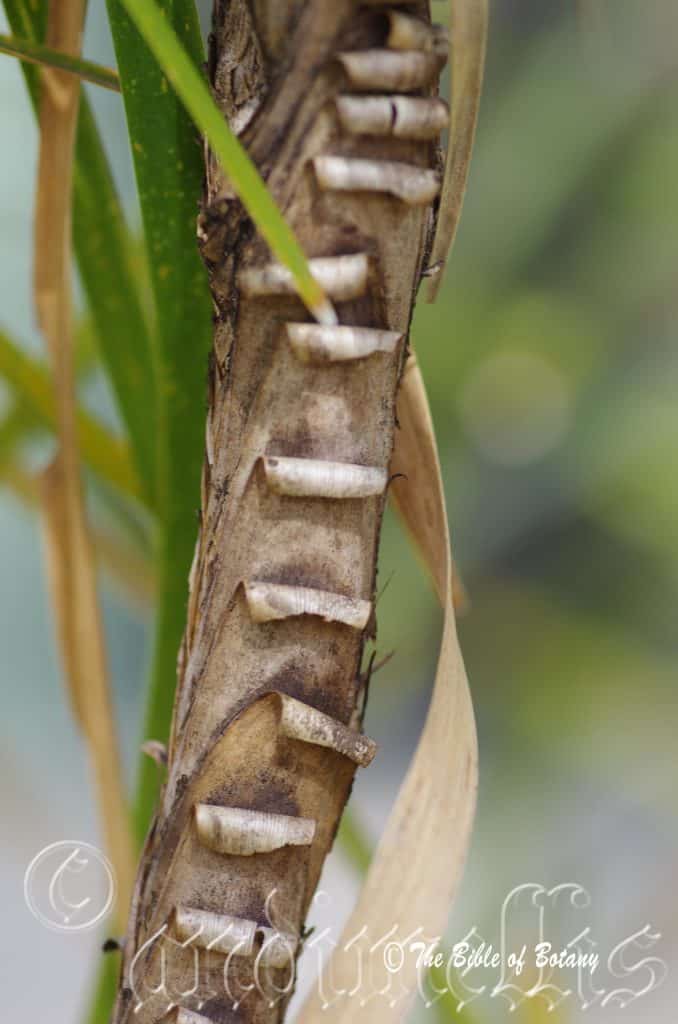
Palmatum Gardens Townsville Qld.
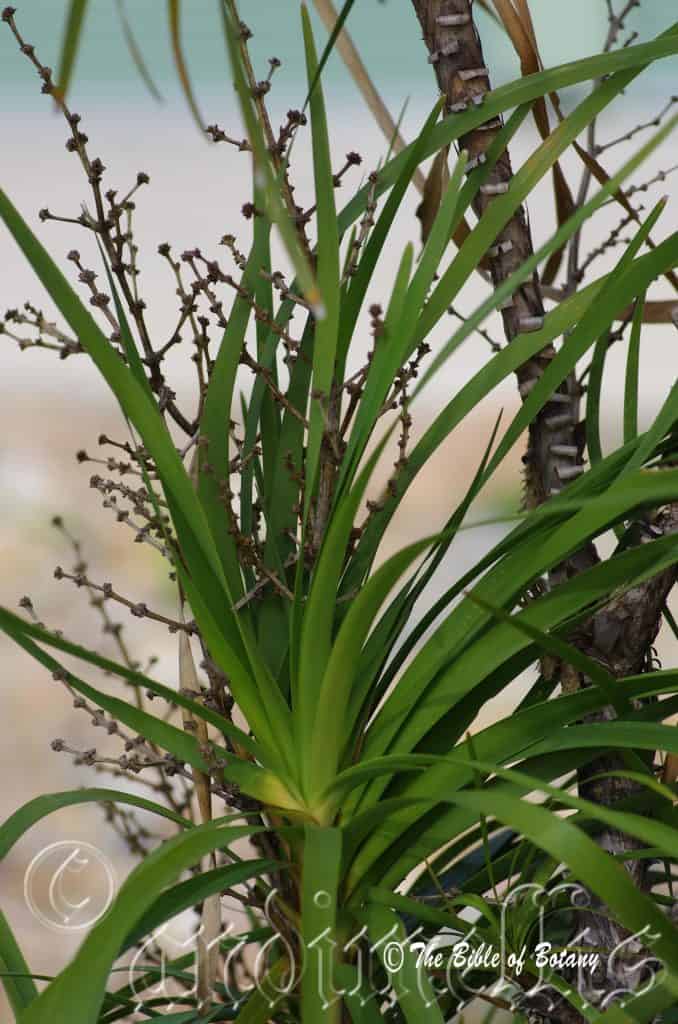
Palmatum Gardens Townsville Qld.
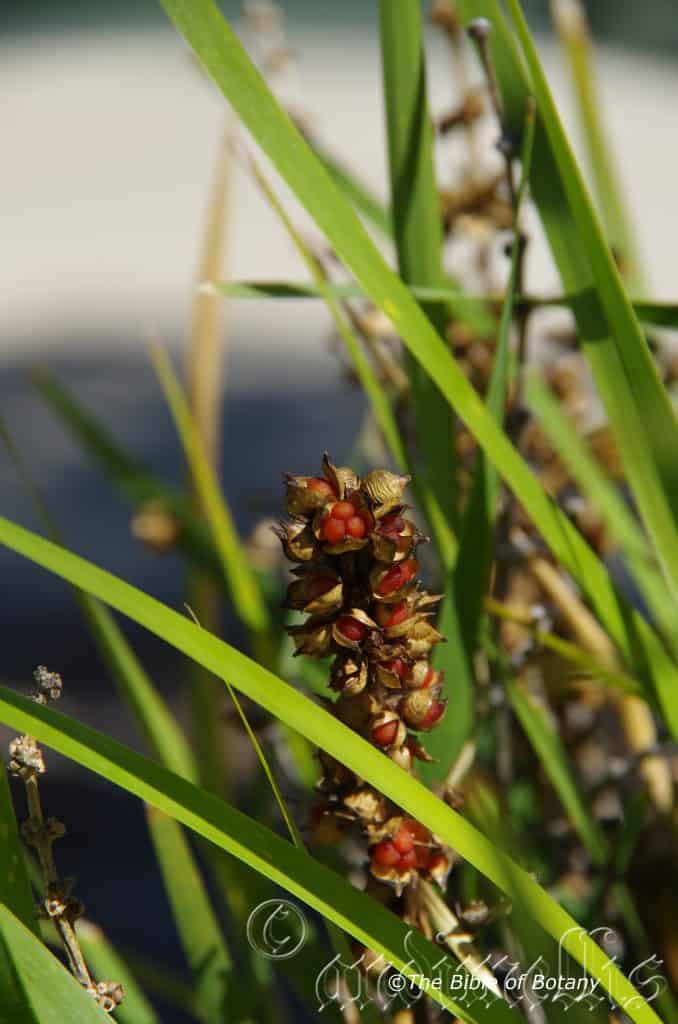
Palmatum Gardens Townsville Qld.

Palmatum Gardens Townsville Qld.
Lomandra banksii
Classification:
Unranked: Traceobionta
Division: Magnoliophyta
Class: Magnoliopsidas
Sub Class: Liliidalae
Order: Asparagales
Family: Laxmanniaceae
Genus: From Loma, which is Ancient Greek for on the edge or border and Andros, which is Ancient Greek for a man. It refers to a fringed ring around the anthers in the flowers.
Specie: Is named in honour of Sir Joseph Banks; 1743-1820, who was an English Naturalist and patron of botany who travelled with Captain Cook on the Endeavour to explore the east coast of Australia.
Sub species:
Common Name: Tall Mat Rush.
Distribution:
Lomandra banksii is found south from the tip of Cape York Peninsular to south of Cooktown in far north Queensland.
https://avh.ala.org.au/occurrences/search?taxa=Lomandra+banksii#tab_mapView
Habitat Aspect Climate:
Lomandra banksii prefers light dappled shade to full shade. It grows along creeks alluvial plains in most types of open littoral forests. The altitude ranges from 2 meters ASL to 55 meters ASL
The temperatures range from 10 degrees in August to 37 degrees in January.
The rainfalls range from lows of 1600mm to an average of 3200mm.
Soil Requirements:
Lomandra banksii prefers sandy loams to medium clays. The soils are usually derived from decomposed sandstones, granites, shales, podsolics or metamorphic rocks. The soils pH. ranges from 5.5pH to 7pH. It tolerates water logged soils and prefers seasonal water logged soils where the plants are partly submerged for short periods. Non saline soils to moderately saline soils are tolerated.
Height & Spread:
Wild Plants: 900mm to 1000mm by 750mm to 1000mm.
Characteristics:
Lomandra banksii’s is a tufted perennial, with plants are easily distinguished by the leaves being produced in a whorl that measure 300mm in length.
Lomandra banksii’s whorled, long, falcate linear leaves measure 200mm to 300mm in length by 6mm to 8.5mm in width. The base forms a sheath around the short stems, while the apex is truncate. The concolourous laminas are mid grass green, semi glossy and glabrous. The margins are entire or very finely toothed. The midvein is absent. There are 20 to 40 fine longitudinal veins.
The inflorescence of Lomandra banksii are unisexual and are born singularly from the apex of the leaf sheath they measure 320mm to 355mm in length including the 80mm to 100mm peduncle. Individual flowers are sessile. The flowers measure 2mm to 2.5mm in diameter. The 3 outer tepals measure 2.4mm to 2.6mm in length while the 3 inner tepals are slightly shorter.
There are three versatile stamens on long filaments and three non-versatile stamens on shorter filaments. The filaments measure 1mm to 1.5mm in length. The cream filaments have bright yellow-orange anthers. The female flowers have a 3 locular ovary which is surrounded by six staminodes of equal length. The stigma is sessile that is there is no style. The plants commence flowering when it is quite small with the flowers appearing throughout the year.
Lomandra banksii’s fruits are ovate to triquetra membranous capsules. The capsules measure 9mm to 11mm in length by 5mm to 7mm in diameter. The pale green capsules turn straw yellow on ripening before they dry completely and split. They measure 13mm to 17mm in diameter when fully opened with the red aril covered seeds held in the centre. The capsule valves are transversly rugose on the outer surface.
Wildlife:
Lomandra banksii is unaffected by predators.
Cultivation:
Lomandra banksii should make an excellent rockery plant. It always looks green and fresh especially where adequate ground moisture is retained in monsoonal, tropical and sub tropical gardens. As garden subjects they will grow from 900m to 1000mm in height by 1000mm to 1200mm in diameter. It is cold tolerant to temperatures at least as low as 3 degree once established. This Lomandra is slower growing than Lomandra hystrix and Lomandra longifolia however the unusual stems with the leaf whorls and red arils around the seeds make them an interesting addition to the garden.
It is very suitable on water logged acid soils. It is most suitable for small, medium and large gardens close to the coast in. They do well beneath tall trees including Tristania and Eucalyptus. Flowering seems to be enhanced or stimulated following heavy pruning.
It is most suitable for use around shaded swimming pools, courtyards, besides pathways, shady rockeries, along sandy clay banks or along drive ways or adjacent to natural bush gardens. Mass plantings of 5 or more plants even in small areas; really do the plants justification especially when it is in fruit. Larger fish or frog ponds will benefit from Lomandra banksii. When mass planting the perfume from the male flowers is very powerful, especially in areas where the scent can linger or waft through the house. Cut flowers last for long periods indoors as does the scent and they can be used in dried arrangements to great effect. I have tried on many occasions to have the flower/ fruits of this Lomandra species introduced to the floral trade without success.
If it is placed around a pool, courtyards or other confined spaces then plant them in small groups or scatter plant them for a more informal natural look against walls to help soften them. Using rocks and small boulders can make the pool or any water feature appear like an oasis. The leaves and flowers can make a great start for the larger wallum, mangrove or swamp setting.
If companion plants are sought then the choice of plants to use either side is limited only by size of the area to be landscaped and the size of the other plants as they should be no more than 200mm in height to emphasize the Lomandra or plant them below trees for a natural bush setting.
It is great to break up horizontal lines along driveways. It can be used to great affect where a dry creek bed is the theme by using them to mark out the banks. They can be used to stabilize banks along creeks and streams or to help soak up water in wet areas.
Propagation:
Seeds: Lomandra banksii seeds can be sown directly into a seed raising mix following treatment. Lightly sandpaper the seeds or place them in a calico bag with some clean, sharp sand and place them in the weekly wash. Cover the seeds with 5mm to 10mm of fine weed free mulch and keep moist. Place the tray in a warm sunny position.
When the seedlings are 30mm to 50mm tall, prick them out and plant them into 50mm native tubes using a good organic mix.
Once the seedlings reach 100mm to 150mm in height they can be planted out into their permanent position.
Division: Division is a good method to grow small numbers of plants which mature very quickly.
1. Do not water before you start.
2. Cut back foliage to around 70mm to 100mm in length,
3. Use a garden fork or shovel to dig around the clump you want to divide (about 100mm to 150mm greater circumference than the bulbs),
4. Lift the whole of the root ball out of the ground,
5. Remove excess soil by shaking. If the soil is hard allow to sit in a container of water for 15 minutes to half an hour. Repeat the shaking in the water and hose off excess soil,
6. Once the roots can be seen clearly it is easier to pry and split the clump apart.
7. Leave a small number of clumps in each new division,
8. Replant in the prepared bed using half a hand full of blood and bone in the hole and mix,
9. Level off at the same level the bulbs were at the start.
10. Fertilize using seaweed, fish emulsion or organic chicken pellets soaked in water on an alternate basis. Fertilize every two months until the plants are established then twice annually in early September or March to maintain health, vitality and better flowering.
Further Comments from Readers:
“Hi reader, it seems you use The Bible of Botany a lot. That’s great as we have great pleasure in bringing it to you! It’s a little awkward for us to ask, but our first aim is to purchase land approximately 1,600 hectares to link several parcels of N.P. into one at The Pinnacles NSW Australia, but we need your help. We’re not salespeople. We’re amateur botanists who have dedicated over 30 years to saving the environment in a practical way. We depend on donations to reach our goal. If you donate just $5, the price of your coffee this Sunday, We can help to keep the planet alive in a real way and continue to bring you regular updates and features on Australian plants all in one Botanical Bible. Any support is greatly appreciated. Thank you.”
In the spirit of reconciliation we acknowledge the Bundjalung, Gumbaynggirr and Yaegl and all aboriginal nations throughout Australia and their connections to land, sea and community. We pay our respect to their Elders past, present and future for the pleasures we have gained.
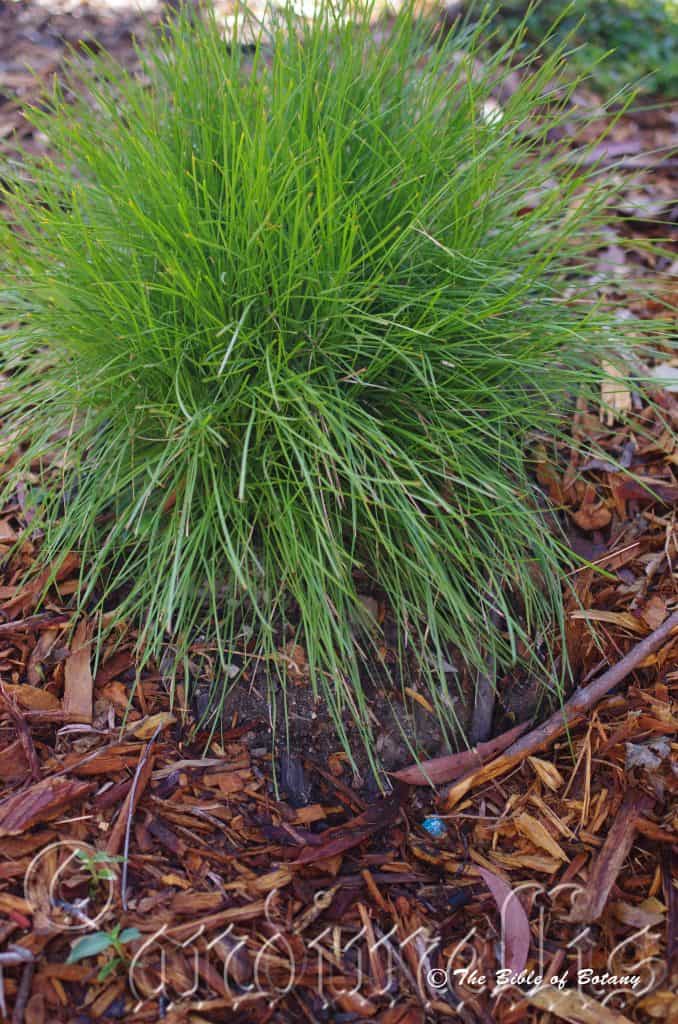
Griffith University Qld.

Southport Spit Qld.
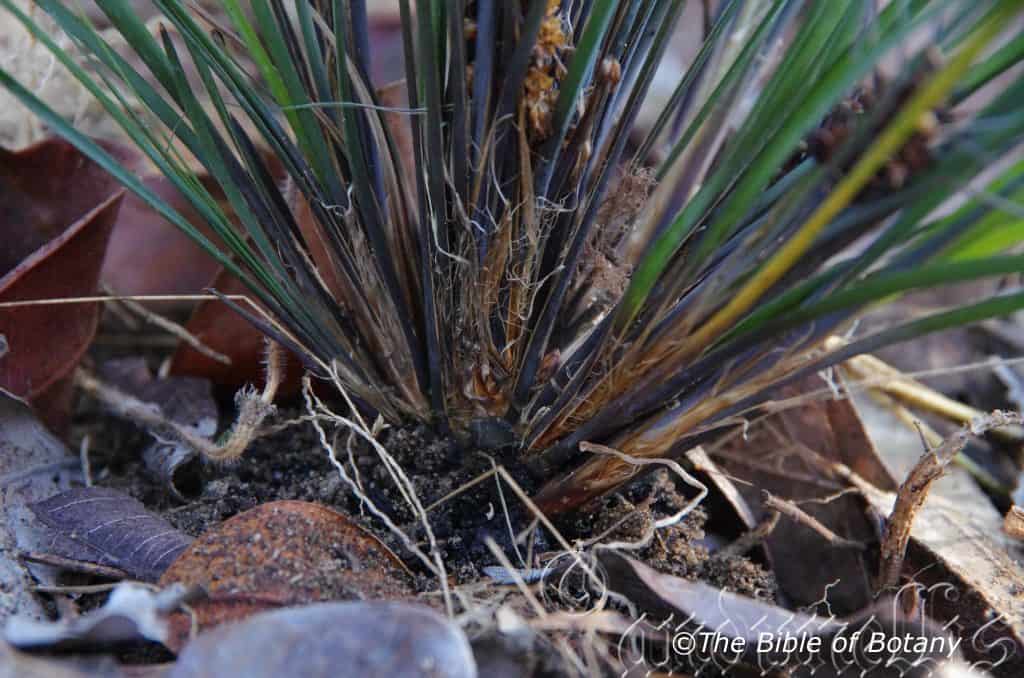
Author’s Garden The Pinnacles NSW
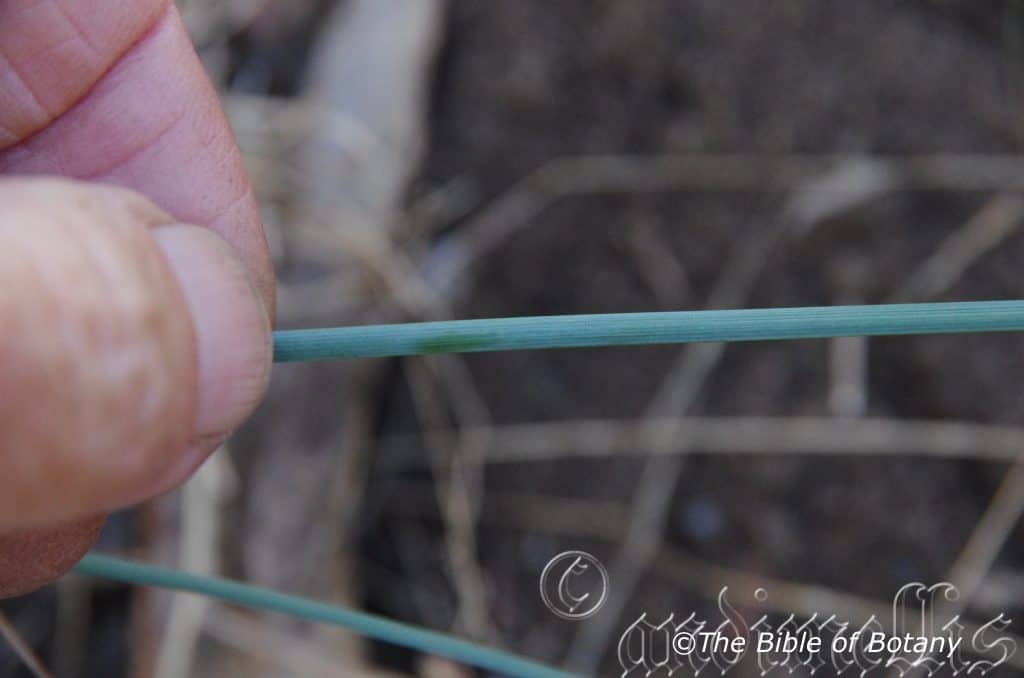
Author’s Garden The Pinnacles NSW
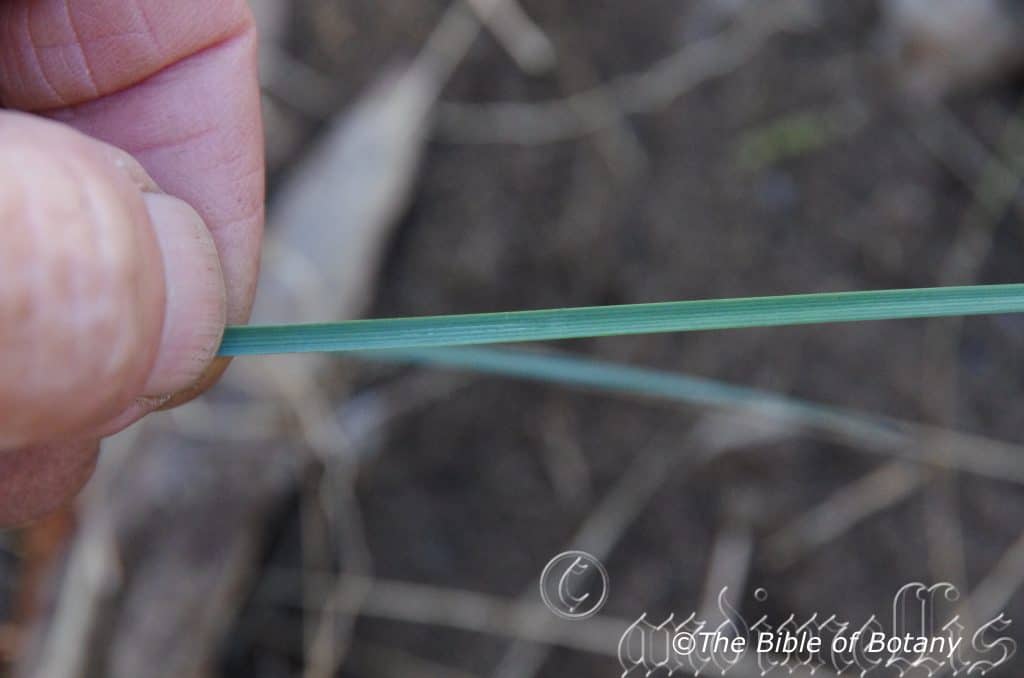
Author’s Garden The Pinnacles NSW
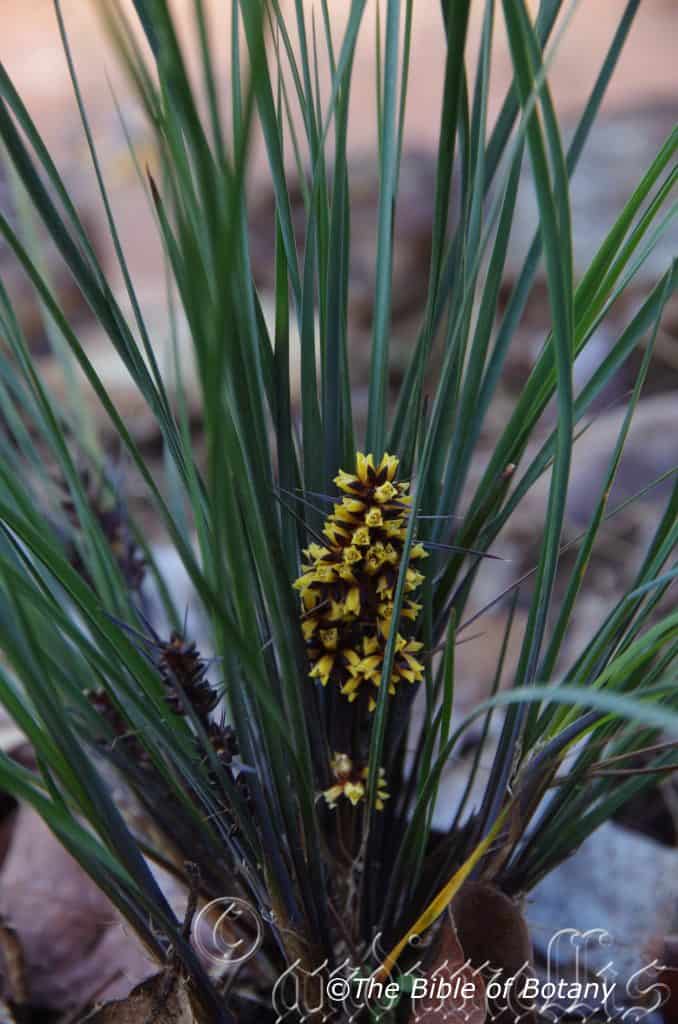
Author’s Garden The Pinnacles NSW
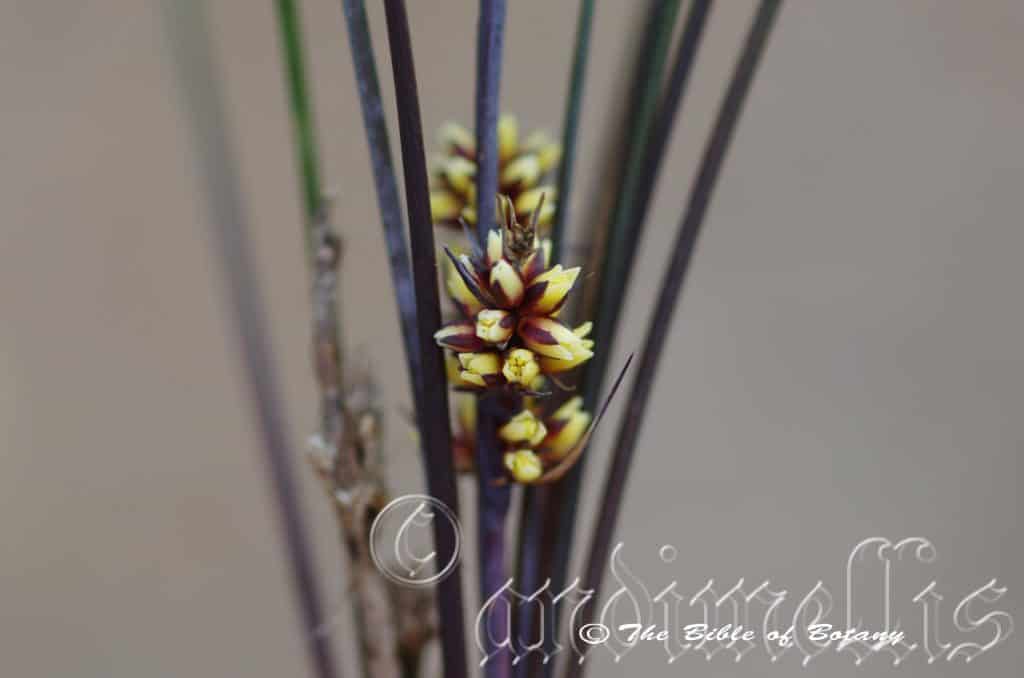
Nerang Qld.

Nerang Qld.

South Port Spit Qld.
Lomandra confertifolia
Classification:
Unranked: Traceobionta
Division: Magnoliophyta
Class: Magnoliopsidas
Sub Class: Liliidalae
Order: Asparagales
Family: Laxmanniaceae
Genus: From Loma, which is Ancient Greek for on the edge or border and Andros, which is Ancient Greek for a man. It refers to a fringed ring around the anthers in the flowers.
Specie: From Confertum, which is Latin for crowding together and Folium, which is Latin for foliage. It refers to leaves, which are crowded together near the apexes of the stems.
Sub species: Lomandra confertifolia subsp. confertifolia. From Confertum, which is Latin for crowding together and Folium, which is Latin for foliage. It refers to leaves, which are crowded together near the apexes of the stems.
Sub species: Lomandra confertifolia subsp. leptostachya. From Leptós, which is Ancient Greek for delicate, fine or slender and Stakos, which is Ancient Greek for a spike. It refers to plants, which have long, delicate spikes.
Sub species: Lomandra confertifolia subsp. pallida. From Pallida, which is Latin for deficient or waning in colour and Fusca, which is Latin for Brownish-yellow. It refers to structures or organs, which are pale Brownish-yellow in colour.
Sub species: Lomandra confertifolia subsp. rubignosa. From Rubiginosus, which is Latin for rusty-red. It refers to an organ usually the leaves, stems or fruits which have a rusty-red colour.
Sub species: Lomandra confertifolia subsp. similis. From Simili, which is Ancient Greek for alike or similar to. It refers to structures or organs, which have the appearance that is similar or very typical of another species or genus.
Common Name: Mat Rush.
Distribution:
Lomandra confertifolia subsp. confertifolia is found south of the Isaac River to Esk in south eastern Queensland on and east of the Great Dividing Range. There is an isolated population around Mallacoota inlet in north eastern Victoria.
Lomandra confertifolia subsp. leptostachya is found south of Shoalhaven in New South Wales to Mount Murrungower in eastern Victoria. There is an isolated population further north in the Blue Mountains in New South wales and further west on Growlers Creek in Lind National park in Victoria.
Lomandra confertifolia subsp. pallida is found south from Cairns in far north Queensland to just north of Sydney in New South Wales. It is found on the Western Slopes, on and east of the Great Dividing Range.
Lomandra confertifolia subsp. rubignosa is found south of Gloucester Buckets to the Nadgee Nature reserve on and east of the Great Dividing Range in New South Wales.
Lomandra confertifolia subsp. similis is restricted to an área between Shallow crossing stae Forest and the Bega Valley on and east of the Great Dividing Range in New South Wales. There is an disjunct population further north in the Great Lakes district.
https://avh.ala.org.au/occurrences/search?taxa=Lomandra+confertifolia#tab_mapView
Habitat Aspect Climate:
Lomandra confertifolia prefers light dappled shade to full shade. It grows in open dry sclerophyll forests, open moist sclerophyll forests or open coastal woodlands. The altitude ranges from 2 meters ASL to 850 meters ASL
The temperatures range from minus 4 degrees in August to 37 degrees in January.
The rainfalls range from lows of 400mm to an average of 3200mm.
Soil Requirements:
Lomandra confertifolia prefers to grow on sands, sandy loams to medium clays. The soils are usually derived from decomposed sandstones, granites, shale, brown basalt, black basalt, metamorphic rocks, accumulated peaty beach sands or accumulated coral sands. The soils ph ranges from 5pH to 7pH. It does not tolerate water logged soils. Non saline soils to very saline soils are tolerated as are salt laden winds.
Height & Spread:
Wild Plants: 200mm to 550mm by 350mm to 900mm.
Characteristics:
Lomandra confertifolia is a small tufted, perennial rush with erect or decumbent culms. The grass-green, olive-green to blue-green stems are glabrous and elongated.
Lomandra confertifolia’s linear leaves measure 35mm to 700mm in length by 0.3mm to 2.5mm in width. The bases form sheaths around the short stems, while the apexes are acute with 2 or 3 teeth. The concolourous or discolourous laminas are mid grass green, olive green to blue-green semi glossy, dull and glabrous on the upper laminas while the lower laminas are similar or glaucous paler or tinged in purple or grey. The laminas are flat to convex on the upper laminas while the margins are very finely scabrous. The midvein is absent parallel veins are obscure.
The inflorescence of Lomandra confertifolia are unisexual and are born in loose panicles from the lower leaf sheaths and measure 35mm to 320mm in length including the 10mm to 80mm peduncle. Individual flowers are sessile.
The flowers are in whorled clusters or few in alternate clusters. The cluster bracts are linear with long, sub pungent, acute apexes that are conspicuous or inconspicuous. The outer and inner bracts are shorter than the flowers. The brown to pastel fawn sessile bracts are elliptical to oblong-elliptical with acute apexes.
The pale purplish or yellow often tinged purple outer tepals are scarious and semi glossy while the yellow to cream inner tepals are fleshy and dull.
The male inflorescences are branched or unbranched with flattened scapes. The individual flowers measure 3mm to 3.5mm in length.
The female inflorescences are often much smaller and usually concealed amongst the leaf bases. It is often unbranched. The individual female flowers measure 4mm to 5mm in length. The sweetly scented flowers appear from throughout the year.
Lomandra confertifolia’s fruits are ovate to triquetra membranous capsules. The capsules measure 4.5mm to 5mm in length by 3.5mm to 4.5mm in diameter. The pale green capsules turn straw yellow on ripening before they completely dry and split. They measure 10mm to 12mm in diameter when fully opened with the deep reddish-brown aril covered seeds held in the centre. The capsules valves are rugose on the outer surface.
Subspecie Differences:
Lomandra confertifolia subsp. confertifolia as described above.
Lomandra confertifolia subsp. leptostachya’s leaves are concavo to convex or channelled, straight and stiff. The leaves measure 300mm to 700mm in length by 0.5mm to 1.5mm in width. The lacerated, sheath margins are pale brown or off white. The inflorescence stems are usually elongated or at times erect to spreading, or occasionally decumbent. The male and female inflorescences are similar, unbranched or with short alternate or opposite branches and measure 120mm to 300mm in length. The scapes are much longer than rachis. The clustered flowers are in whorls or are solitary. The fawnish-yellow cluster bracts are small but longer than flowers throughout or only in basal part of inflorescence. The inner bracts are brown or pale brown.
Lomandra confertifolia subsp. pallida’s are short tuft perennials. The concavo to convex or channelled leaves are usually flat or at times in rolled and measure 300mm to 700mm in length by 1mm to 2.5mm in width. The whitish or at times reddish-brown sheath margins are entire or lacerated. The bracts are brown. The leaf sheath margins usually whitish, occasionally reddish brown. The male inflorescences are usually branched with opposite or alternate branches and measure 70mm to 200mm in length. The scapes are concealed amongst the foliage or slightly exserted and are usually equal in length to the rachises. The flower clusters are in whorls. The unbranched female inflorescences are smaller than the leaves and are concealed. The off white cluster bracts are much longer than the flowers while the inner bracts are off white to pale fawn.
Lomandra confertifolia subsp. rubignosa’s concavo to convex or channelled leaves measure 150mm to 500mm in length by 0.3mm to 1.5mm in width. The lacerated sheath margins are deep brown or reddish-brown. The slender inflorescence stems are elongated and measure 3mm to 4mm in diameter. The unbranched or few short alternate branches on the male inflorescences are exposed and measure 35mm to 250mm in length. The clustered flowers are in whorls or in small alternate clusters. The unbranched female inflorescences are on short exposed scapes. The cluster bracts measure 5mm to 4mm in length and are slightly shorter or slightly longer than the individual flowers while the inner bracts are brown.
Lomandra confertifolia subsp. similis’s flat, flaccid leaves, are curved, and measure 80mm to 250mm in length by 0.5mm to 1.5mm in width. The red-brown leaf sheath margins are slightly to strongly lacerate. The slender stems are erect and slender. The few alternate branched male inflorescences are in clustered whirls and measure 30mm to 80mm in length. The scape is shorter than the rachis and is usually exposed or at times concealed by the foliage. The female inflorescence is shorter and is usually, almost concealed among leaf bases. The cluster bracts are inconspicuous, finely pointed and are longer than flowers. The cluster bracts and inner bracts are brown to golden-brown.

Wildlife:
Lomandra confertifolia’s wildlife includes the Southern Silver Ochre butterfly (Trapezites praxedes).
www.lepidoptera.butterflyhouse.com.au
Cultivation:
Lomandra confertifolia should make an excellent rockery plant. It always looks green and fresh especially where adequate ground moisture is retained in monsoonal, tropical and sub tropical gardens. As garden subjects they will grow from 900m to 1000mm in height by 1000mm to 1200mm in diameter. It is cold tolerant to temperatures at least as low as 3 degree once established. This Lomandra is slower growing than Lomandra hystrix and Lomandra longifolia however the unusual stems with the leaf whorls and red arils around the seeds make them an interesting addition to the garden.
It is very suitable on water logged acid soils. It is most suitable for small, medium and large gardens close to the coast in. They do well beneath tall trees including Tristania and Eucalyptus. Flowering seems to be enhanced or stimulated following heavy pruning.
It is most suitable for use around shaded swimming pools, courtyards, besides pathways, shady rockeries, along sandy clay banks or along drive ways or adjacent to natural bush gardens. Mass plantings of 5 or more plants even in small areas; really do the plants justification especially when it is in fruit. Larger fish or frog ponds will benefit from Lomandra confertifolia. When mass planting the perfume from the male flowers is very powerful, especially in areas where the scent can linger or waft through the house. Cut flowers last for long periods indoors as does the scent and they can be used in dried arrangements to great effect. I have tried on many occasions to have the flowers of this Lomandra introduced to the floral trade without success.
If it is placed around a pool, courtyards or other confined spaces then plant them in small groups or scatter plant them for a more informal natural look against walls to help soften them. Using rocks and small boulders can make the pool or any water feature appear like an oasis. The leaves and flowers can make a great start for the larger wallum, mangrove or swamp setting.
If companion plants are sought then the choice of plants to use either side is limited only by size of the area to be landscaped and the size of the other plants as they should be no more than 200mm in height to emphasize the Lomandra or plant them below trees for a natural bush setting.
It is great to break up horizontal lines along driveways. They can be used to great affect where a dry creek bed is the theme by using them to mark out the banks. They can be used to stabilize banks along creeks and streams or to help soak up water in wet areas.
Propagation:
Seeds: Lomandra confertifolia seeds can be sown directly into a seed raising mix following treatment. Lightly sandpaper the seeds or place them in a calico bag with some clean, sharp sand and place them in the weekly wash. Cover the seeds with 5mm to 10mm of fine weed free mulch and keep moist. Place the tray in a warm sunny position.
When the seedlings are 30mm to 50mm tall, prick them out and plant them into 50mm native tubes using a good organic mix.
Once the seedlings reach 100mm to 150mm in height they can be planted out into their permanent position.
Division: Division is a good method to grow small numbers of plants which mature very quickly.
1. Do not water before you start.
2. Cut back foliage to around 70mm to 100mm in length,
3. Use a garden fork or shovel to dig around the clump you want to divide (about 100mm to 150mm greater circumference than the bulbs),
4. Lift the whole of the root ball out of the ground,
5. Remove excess soil by shaking. If the soil is hard allow to sit in a container of water for 15 minutes to half an hour. Repeat the shaking in the water and hose off excess soil,
6. Once the roots can be seen clearly it is easier to pry and split the clump apart.
7. Leave a small number of clumps in each new division,
8. Replant in the prepared bed using half a hand full of blood and bone in the hole and mix,
9. Level off at the same level the bulbs were at the start.
10. Fertilize using seaweed, fish emulsion or organic chicken pellets soaked in water on an alternate basis. Fertilize every two months until the plants are established then twice annually in early September or March to maintain health, vitality and better flowering.
Further Comments from Readers:
“Hi reader, it seems you use The Bible of Botany a lot. That’s great as we have great pleasure in bringing it to you! It’s a little awkward for us to ask, but our first aim is to purchase land approximately 1,600 hectares to link several parcels of N.P. into one at The Pinnacles NSW Australia, but we need your help. We’re not salespeople. We’re amateur botanists who have dedicated over 30 years to saving the environment in a practical way. We depend on donations to reach our goal. If you donate just $5, the price of your coffee this Sunday, We can help to keep the planet alive in a real way and continue to bring you regular updates and features on Australian plants all in one Botanical Bible. Any support is greatly appreciated. Thank you.”
In the spirit of reconciliation we acknowledge the Bundjalung, Gumbaynggirr and Yaegl and all aboriginal nations throughout Australia and their connections to land, sea and community. We pay our respect to their Elders past, present and future for the pleasures we have gained.
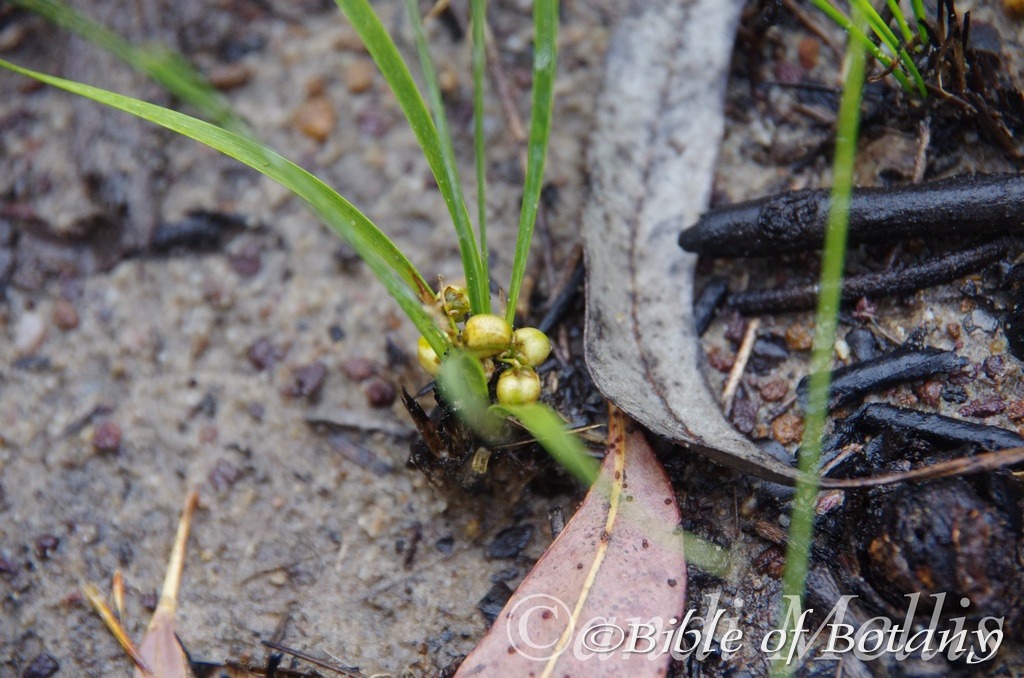

Lomandra elongata
Classification:
Unranked: Traceobionta
Division: Magnoliophyta
Class: Magnoliopsidas
Sub Class: Liliidalae
Order: Asparagales
Family: Laxmanniaceae
Genus: From Loma, which is Ancient Greek for on the edge or border and Andros, which is Ancient Greek for a man. It refers to a fringed ring around the anthers in the flowers.
Specie: From Elongatus, which is Latin for to draw out or lengthen. It usually refers to the shape or form of the plants leaves being somewhat linear with parallel margins.
Sub species:
Common Name:
Distribution:
Lomandra elongata is found in an area bounded by the Deep Water National Park to Banana, Augathella and Dalby in southern Queensland to Narrabri and Kempsey in central coastal New South Wales. There are 2 isolated populations further north and south, one on the Skardon River in far north western Cape York Peninsular and the other at Gunningbland in central western New South Wales.
https://avh.ala.org.au/occurrences/search?taxa=Lomandra+elongata#tab_mapView
Habitat Aspect Climate:
Lomandra elongata prefers light dappled shade to full shade. It grows in dry heaths or dry more open type sclerophyll forests. The altitude ranges from 2 meters ASL to 55 meters ASL
The temperatures range from minus 4 degrees in August to 39 degrees in January.
The rainfalls usually range from lows of 500mm to an average of 2000mm however the 2 isolated populations are found in 400mm and 3200mm rainfall zones.
Soil Requirements:
Lomandra elongata prefers to grow on sandy loams to light fatty clays. The soils are usually derived from decomposed sandstones, granites or at times reddish-grey podsolic soils or black basalts. The soils pH. ranges from 5.5pH to 7pH. It tolerates water logged soils and prefers seasonal water logged soils where the plants are partly submerged for short periods. Non saline soils to moderately saline soils are tolerated.
Height & Spread:
Wild Plants: 200mm to 700mm by 350mm to 1000mm.
Characteristics:
Lomandra elongata is a perennial tussock type small rush with short stems. The blue-green stems are glabrous.
Lomandra elongata’s plano-convex to semi terete leaves are erect, and usually measure 250mm to 400mm in length or rarely to 700mm by1mm to 1.2mm in width. The pale pink to pinkish brown sheath’s margins are abruptly acute near the apexes and are finely lacerated. The bases form a sheath around the short stems, while the apexes are acute. The concolourous laminas are mid grey-green, semi glossy and glabrous. The margins are entire or very finely toothed. The midvein is absent while the 8 parallel veins are obscure.
The inflorescence of Lomandra elongata are unisexual and are born in loose racemes (male) or tightly compact racemes (female) from the lower leaf sheaths and measure 35mm to 320mm in length including the 10mm to 60mm peduncle. Individual flowers are sessile.
The cluster bracts are narrow linear, pale golden brown and obscured by flowers. The yellow flowers are often tinged purple-maroon.
The deep maroon-purple outer tepals are oblong and semi glossy with yellowish-purple margins while the yellow to deep yellow inner tepals are fleshy and dull.
The male inflorescences are unbranched loose racemes born from the tufts. The scapes are terete to slightly flatten. The flowers are in tightly packed disjunct regular spaced clusters along the racemes. The scape and racemes are about one fifth of the length of the leaves and measure 15mm to 30mm in length and 50mm to 80mm in length respectively. The individual flowers measure 4.5mm to 6mm in length.
The female inflorescence are often much smaller compact racemes concealed amongst the leaf bases. The racemes measure 35mm to 50mm in length by 10mm to 15mm in diameter including the 10mm to 15mm scape. The individual yellow female flowers measure 3mm to 4.5mm in length. The sweetly scented flowers appear from September to November.
Lomandra elongata’s fruits are ovate to triquetra membranous capsules. The capsules measure 4.5mm to 5mm in length by 3.5mm to 4.5mm in diameter. The pale green capsules turn straw yellow on ripening before they completely dry and split. They measure 10mm to 12mm in diameter when fully opened with the deep reddish-brown aril covered seeds held in the centre. The capsules valves are rugose on the outer surface.
Specie Differences:
Lomandra glauca has shorter leaves and longer, branched, male inflorescences.
Wildlife:
Lomandra elongata appears not to have any predators on a regular basis though I would expect them to be host to several butterflies similar to the southern species.
Cultivation:
Lomandra elongata should make an excellent rockery plant. It always looks green and fresh especially where adequate ground moisture is retained in monsoonal, tropical and sub tropical gardens. As garden subjects they will grow from 400m to 500mm in height by 750mm to 900mm in diameter. It is cold tolerant to temperatures at least as low as 3 degree once established. This Lomandra is slower growing than Lomandra hystrix and Lomandra longifolia however it still adds interest to the garden.
It is very suitable on dry hard slopes soils making it ideal for banks. It is most suitable for small, medium and large gardens close to the coast. It does well beneath tall trees including Tristania specie and Eucalyptus specie.
It is most suitable for use around semi shaded swimming pools, courtyards, besides pathways, shady rockeries, along sandy clay banks or along drive ways or adjacent to natural bush gardens. Mass plantings of 5 or more plants even in small areas; really do the plants justification especially when it is in fruit. Larger fish or frog ponds will benefit from Lomandra elongata. When mass planting the perfume from the male flowers is very powerful, especially in areas where the scent can linger or waft through the house. Cut flowers last for long periods indoors as does the scent and they can be used in dried arrangements to great effect.
If it is placed around a pool, courtyards or other confined spaces then plant them in small groups or scatter plant them for a more informal natural look against walls to help soften them. Using rocks and small boulders can make the pool or any water feature appear like an oasis. The leaves and flowers can make a great start for the larger wallum, mangrove or swamp setting.
If companion plants are sought then the choice of plants to use either side is limited only by size of the area to be landscaped and the size of the other plants as they should be no more than 200mm in height to emphasize the Lomandra or plant them below trees for a natural bush setting.
It is a great little plant at the edge of forest paths when mass planted to break up horizontal lines of paving bricks and smaller edging rocks. It can be used to great affect where a dry creek bed is the theme by using them to mark out the banks. They can be used to stabilize banks along creeks and streams or to help soak up water in wet areas.
Propagation:
Seeds: Lomandra elongata seeds can be sown directly into a seed raising mix following treatment. Lightly sandpaper the seeds or place them in a calico bag with some clean, sharp sand and place them in the weekly wash. Cover the seeds with 5mm to 10mm of fine weed free mulch and keep moist. Place the tray in a warm sunny position.
When the seedlings are 30mm to 50mm tall, prick them out and plant them into 50mm native tubes using a good organic mix.
Once the seedlings reach 100mm to 150mm in height they can be planted out into their permanent position.
Division: Division is a good method to grow small numbers of plants which mature very quickly.
1. Do not water before you start.
2. Cut back foliage to around 70mm to 100mm in length,
3. Use a garden fork or shovel to dig around the clump you want to divide (about 100mm to 150mm greater circumference than the bulbs),
4. Lift the whole of the root ball out of the ground,
5. Remove excess soil by shaking. If the soil is hard allow to sit in a container of water for 15 minutes to half an hour. Repeat the shaking in the water and hose off excess soil,
6. Once the roots can be seen clearly it is easier to pry and split the clump apart.
7. Leave a small number of clumps in each new division,
8. Replant in the prepared bed using half a hand full of blood and bone in the hole and mix,
9. Level off at the same level the bulbs were at the start.
10. Fertilize using seaweed, fish emulsion or organic chicken pellets soaked in water on an alternate basis. Fertilize every two months until the plants are established then twice annually in early September or March to maintain health, vitality and better flowering.
Further Comments from Readers:
“Hi reader, it seems you use The Bible of Botany a lot. That’s great as we have great pleasure in bringing it to you! It’s a little awkward for us to ask, but our first aim is to purchase land approximately 1,600 hectares to link several parcels of N.P. into one at The Pinnacles NSW Australia, but we need your help. We’re not salespeople. We’re amateur botanists who have dedicated over 30 years to saving the environment in a practical way. We depend on donations to reach our goal. If you donate just $5, the price of your coffee this Sunday, We can help to keep the planet alive in a real way and continue to bring you regular updates and features on Australian plants all in one Botanical Bible. Any support is greatly appreciated. Thank you.”
In the spirit of reconciliation we acknowledge the Bundjalung, Gumbaynggirr and Yaegl and all aboriginal nations throughout Australia and their connections to land, sea and community. We pay our respect to their Elders past, present and future for the pleasures we have gained.

Wombat Creek Conservation Park NSW
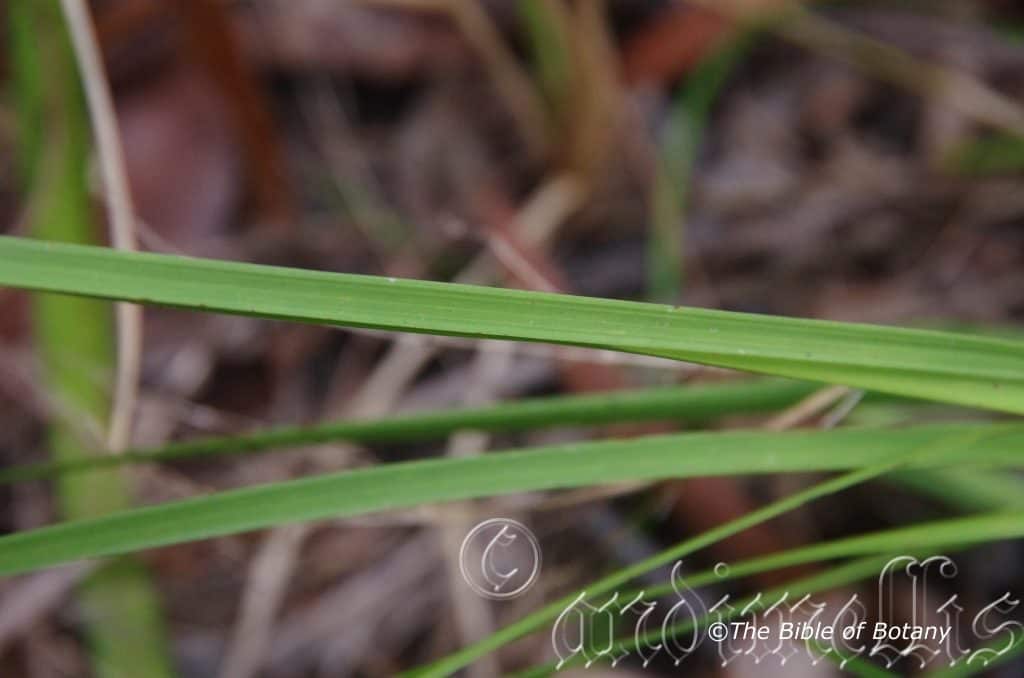
Pillar Valley NSW

The Pinnacles NSW

Pillar Valley NSW

Wombat Creek Conservation Park NSW
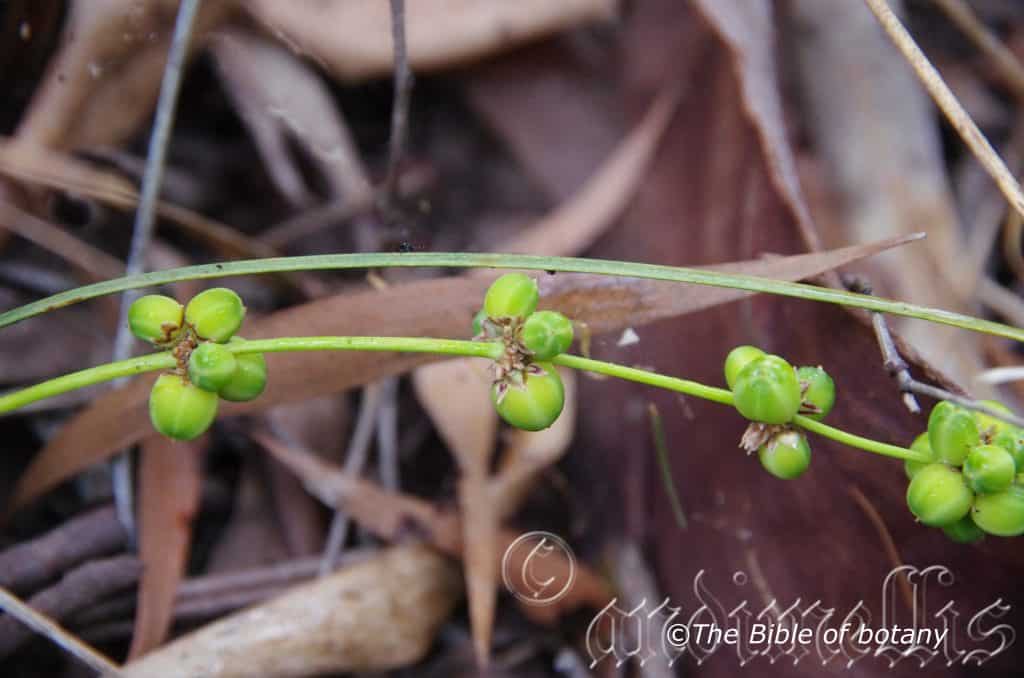
The Pinnacles NSW

Wombat Creek Conservation Park NSW
Lomandra filiformis
Classification:
Unranked: Traceobionta
Division: Magnoliophyta
Class: Magnoliopsidas
Sub Class: Liliidalae
Order: Asparagales
Family: Laxmanniaceae
Genus: From Loma, which is Ancient Greek for on the edge or border and Andros, which is Ancient Greek for a man. It refers to a fringed ring around the anthers in the flowers.
Specie: From Filum, which is Latin for a thread or a thin cord and Forme, which is Latin for to take the shape or form of. It refers to a structure or organ, which is thread like.
Sub species: Lomandra filiformis subsp. coriacea. From Coriceous, which is Latin for like leather or leathery. It refers to leaves, phyllodes and fronds which are thick and leathery to touch.
Sub species: Lomandra filiformis subsp. filiformis. From Filum, which is Latin for a thread or a thin cord and Forme, which is Latin for to take the shape or form of. It refers to a structure or organ, which is thread like.
Sub species: Lomandra filiformis subsp. flavior. From Fl?vior, which is Latin for yellower or more golden. It refers to structures or organs, which have a stronger, richer yellow or golden yellow colour than other species in the genus or sub species.
Common Name: Wattle Mat Rush.
Distribution:
Lomandra filiformis subsp. coriacea is found south of Kingaroy in Queensland to Mount Gambier in South Australia on the Western Slopes, on and east of the Great Dividing Range.
There are isolated populations further north in far north Queensland on the tip of Cape York Peninsular and between Chewco and Rockingham Bay and further west in South Australia on St. Vincents Gulf.
Lomandra filiformis subsp. filiformis is found in two distinct disjunct populations. In the Northern Territory it is found from the Tiwi Islands in the west to Lake Evilla in the east while in the east it is found from the tip of Cape York Peninsular down the Western Slopes, on and east of the Great Dividing Range then west to Glenelg in far western Victoria.
There is an isolated population in the Adelaide Hills in South Australia.
Lomandra filiformis subsp. flavior is found in several disjunct populations south from Redland Bay in south east Queensland to Canberra in the ACT and west as far as the Bloomfield Track in New South Wales.
https://avh.ala.org.au/occurrences/search?taxa=Lomandra+filiformis#tab_mapView
Habitat Aspect Climate:
Lomandra filiformis prefers light dappled shade to full shade or full sun. It grows along creeks alluvial plains in most types of open sclerophyll forests, monsoonal forests or dense moist woodlands. The altitude ranges from 2 meters ASL to 1250 meters ASL
The temperatures range from minus 5 degrees in August to 40 degrees in January.
The rainfalls range from lows of 400mm to an average of 3200mm.
Soil Requirements:
Lomandra filiformis prefers to grow on sand, sandy loams, light fatty clays to heavy clays. The soils are usually derived from decomposed sandstone, granites, gritty shale, podsolics, gritty sandy metamorphic rocks, brown basalts, black basalts and accumulated sands and alluvial slits. The soils pH. ranges from 4.5pH to 7pH. It tolerates short seasonal water logged soils but prefers well drained sloping sites. Non saline soils to very saline soils are tolerated as are salt laden winds.
Height & Spread:
Wild Plants: 180mm to 250mm by 150mm to 300mm.
Characteristics:
Lomandra filiformis is a perennial tussock rush that forms sparse or dense tufts. It spreads by long underground creeping rhizomes which also act as a starch reserve in lean times of drought and will re-establish itself quickly once things improve from these rhizomes or immediately after fire.
Lomandra filiformis’s linear leaves are erect to pendulant and are straight to sickle shaped measure 250mm to 500mm in length by 3mm to 6mm in width. The purplish-pink to purplish-brown sheath usually have lacerated margins or rarely are the margins intact. The bases form a sheath around the short stems, while the apexes are obtuse. The concolourous laminas are mid grey-green to mid blue-green dull and glabrous. The laminas are flat while the margins are entire. The midvein is absent while the 8 parallel veins are obscure.
The inflorescences of Lomandra filiformis are unisexual and are born on panicles from the apex of the leaf sheath. The racemes are smooth, glabrous, papillose or scabrid. The 3 outer tepals measure 2.4mm to 2.6mm in length while the 3 inner tepals are slightly shorter.
The ovate outer bracts measure 1mm to 2mm in length. The inner bracts are similar to the outer bracts when present. The 6 tepals are yellow.
The male inflorescences are alternately branched loose panicles born from the tufts. The scapes are terete to slightly flatten. The flowers are in loosely, irregularly and disjunct spaced along the panicles. The scape and panicles are about one third to one half the length of the leaves. The individual flowers measure 2mm to 3mm in length. The yellow outer tepals are broad elliptic to circular and shorter and more membranous than the inner tepals. The thick inner tepals are elliptical. The pedicels measure 2mm to 3mm in length.
The female inflorescences are often much smaller compact panicles born from the base on short peduncles. The individual yellow female flowers measure 3mm to 3.5mm in length. The pedicels measure 0.2mm to 0.5mm in length. The sweetly scented flowers appear from September to December.
Lomandra filiformis’s fruit is a small ovate to triquetra capsule. The capsules measure 9mm to 11mm in length by 5mm to 7mm in diameter. The pale green capsules turn straw yellow on ripening before drying and splitting. Each locule husk spreads at right angles to reveal the 3 bright ovate red seeds. The red arils cover a white testa which has a deep brown-black spot on one end. They measure 3.5mm to 4.5mm in diameter including the aril. The capsules are dehiscent over a week to 10 days depending upon the weather. They first open from the base to the apex.
Subspecie Differences:
Lomandra filiformis subsp. filiformis’s very fine, channelled; folded, in rolled or rarely flat leaves are usually flexible. The leaves measure 100mm to 280mm in length by 0.5mm to 5mm in width. The margins are smooth glabrous or at times scaberulous. The apex has 1 to 3 minute acute points at the apex. The unbranched to strongly branched male inflorescences usually measure 20mm to 100mm in length. The axes are smooth or slightly covered in small papillose lumps especially on the apical section. The scape usually measure 45mm to 120mm in length. The female inflorescence measure 15mm to 80mm in length.
Lomandra filiformis subsp. coriacea’s coriaceous leaves are flat or nearly so. The apexes are usually, entire and measures 150mm to 350mm in length by 2.5mm to 4.5mm in width. The axes of the male inflorescence are strongly scabrous. The few branches of the male inflorescence are whirled and measure 65mm to 160mm in length. The male axes scape is shorter than rachis and often yellowish. The female inflorescences are slightly scabrous to moderately scabrous and measure 50mm to 100mm in length.
Lomandra filiformis subsp. flavior’s rolled or flat, usually very tough, leaves are smooth to scabrous and measure 300mm to 400mm in length by 2mm to 3mm in width. The apexes have 1 to 3 minute acute points. The branched male inflorescence measure 80mm to 120mm in length. The axis is smooth to scabrous. The scapes are shorter than their rachis and are usually exposed. The bracts are subtending branches of inflorescence. The female inflorescences are more condensed than the male inflorescences and measure 45mm to 80mm in length.
Confusing Species:
Lomandra laxa’s flowers appear from mid-March to August where as Lomandra filiformis’s flowers appear from October to November. The regularly whorled and very fine inflorescence axes of Lomandra laxa and thin flat leaves will assist in separating the 2 species. Lomandra laxa’s tepals are thinner and have shorter pedicels.
Wildlife:
Lomandra filiformis appears not to have any predators on a regular basis though I would expect them to be host to several butterflies similar to the southern species.
Cultivation:
Lomandra filiformis should make an excellent rockery plant. It always looks green and fresh especially where adequate ground moisture is retained in monsoonal, tropical and sub tropical gardens. As garden subjects they will grow from 300m to 450mm in height by 600mm to 700mm in diameter. It is cold tolerant to temperatures at least as low as 3 degree once established. It is slower growing than other Lomandra however the shorter more bluish strap leaves makes it an interesting addition. Its slow growth makes it an ideal container plant for the veranda and its drought tolerance makes it ideal for hanging baskets.
It is a stunning and versatile when mass planted in garden beds or used as borders mixed with native annuals. It is particularly useful in small garden courtyards as a design feature and can be planted to enhance small native annuals or prostrate plants like Viola hederacea or tufted perennials like Viola betonicifolia.
It is drought resistant and adapts to heavy clay soils. It is most suitable for small, medium and large gardens close to the coast in. It does well beneath tall trees including Tristania and Eucalyptus. Flowering is definitely enhanced with a regular or annual fertilizing regime.
It is most suitable for use around shaded swimming pools, courtyards, besides pathways, shady rockeries, along sandy clay banks or along drive ways or adjacent to natural bush gardens. Mass plantings of 5 or more plants even in small areas; really do the plants justification especially when it is in fruit. Larger fish or frog ponds will benefit from Lomandra filiformis. When mass planted the perfume from the male flowers is very powerful, especially in areas where the scent can linger or waft through the house. Cut flowers last for long periods indoors as does the scent and they can be used in dried arrangements to great effect.
If companion plants are sought then the choice of plants to use either side is limited only by size of the area to be landscaped and the size of the other plants as they should be no more than 200mm in height to emphasize the Lomandra or plant them below trees for a natural bush setting.
It is great to break up horizontal lines along driveways. They can be used to great affect where a dry creek bed is the theme by using them to mark out the banks. They can be used to stabilize banks along creeks and streams or to help soak up water in wet areas. It is a very low maintenance plant that responds to heavy pruning which encourages better flowering in the following flowering season.
Propagation:
Seeds: Lomandra filiformis seeds are difficult to collect as seeds dispersal is quick especially in warm weather making collection difficult. The seeds need to be sown as soon as possible after collecting and need to be treated. Soak the seeds in warm water for 24 hours. Germination may be improved with the addition of a half a teaspoon of vinegar to a litter of water.
Rinse the freshly treated seeds in fresh water and sow them directly into a seed raising mix. Cover the seeds with 2mm to 6mm of fine weed free mulch and keep moist. Place the tray in a warm sunny position. When the seedlings are 30mm to 50mm tall, prick them out and plant them into 50mm native tubes using a good organic mix with a little extra clay. The germination rate is both erratic and slow taking between 4 to 16 weeks to emerge.
Once the seedlings reach 100mm to 150mm in height they can be planted out into their permanent position.
Division: Division is a good method to grow small numbers of plants which mature very quickly.
1. Do not water before you start.
2. Cut back foliage to around 70mm to 100mm in length,
3. Use a garden fork or shovel to dig around the clump you want to divide (about 100mm to 150mm greater circumference than the bulbs),
4. Lift the whole of the root ball out of the ground,
5. Remove excess soil by shaking. If the soil is hard allow to sit in a container of water for 15 minutes to half an hour. Repeat the shaking in the water and hose off excess soil,
6. Once the roots can be seen clearly it is easier to pry and split the clump apart.
7. Leave a small number of clumps in each new division,
8. Replant in the prepared bed using half a hand full of blood and bone in the hole and mix,
9. Level off at the same level the bulbs were at the start.
10. Fertilize using seaweed, fish emulsion or organic chicken pellets soaked in water on an alternate basis. Fertilize every two months until the plants are established then twice annually in early September or March to maintain health, vitality and better flowering.
Further Comments from Readers:
“Hi reader, it seems you use The Bible of Botany a lot. That’s great as we have great pleasure in bringing it to you! It’s a little awkward for us to ask, but our first aim is to purchase land approximately 1,600 hectares to link several parcels of N.P. into one at The Pinnacles NSW Australia, but we need your help. We’re not salespeople. We’re amateur botanists who have dedicated over 30 years to saving the environment in a practical way. We depend on donations to reach our goal. If you donate just $5, the price of your coffee this Sunday, We can help to keep the planet alive in a real way and continue to bring you regular updates and features on Australian plants all in one Botanical Bible. Any support is greatly appreciated. Thank you.”
In the spirit of reconciliation we acknowledge the Bundjalung, Gumbaynggirr and Yaegl and all aboriginal nations throughout Australia and their connections to land, sea and community. We pay our respect to their Elders past, present and future for the pleasures we have gained.
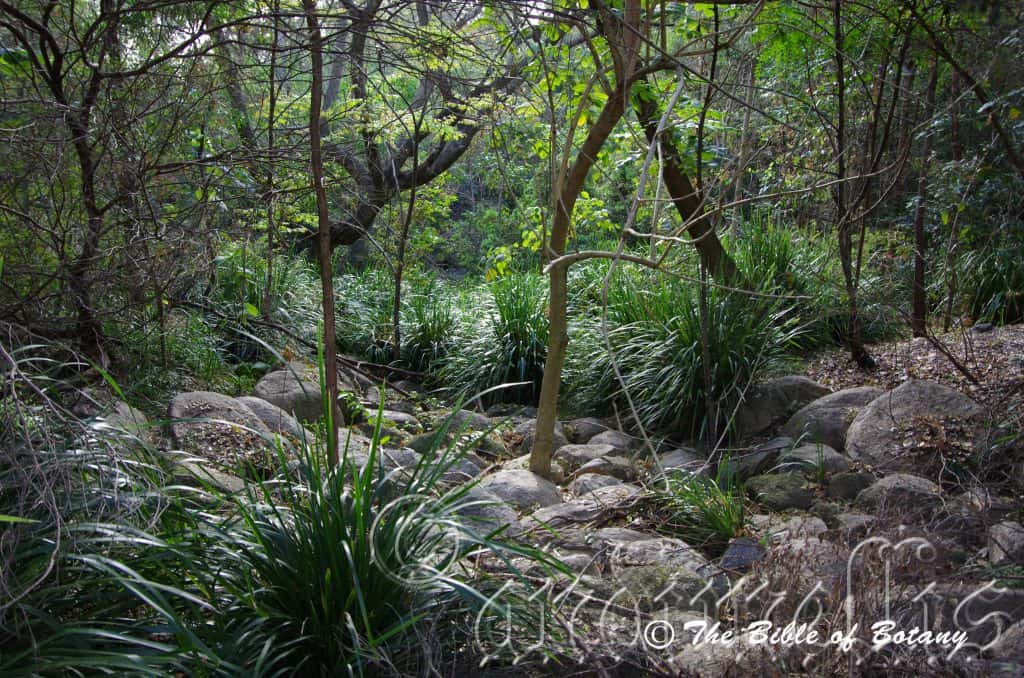
Kedron Brook Qld.

Kedron Brook Qld.
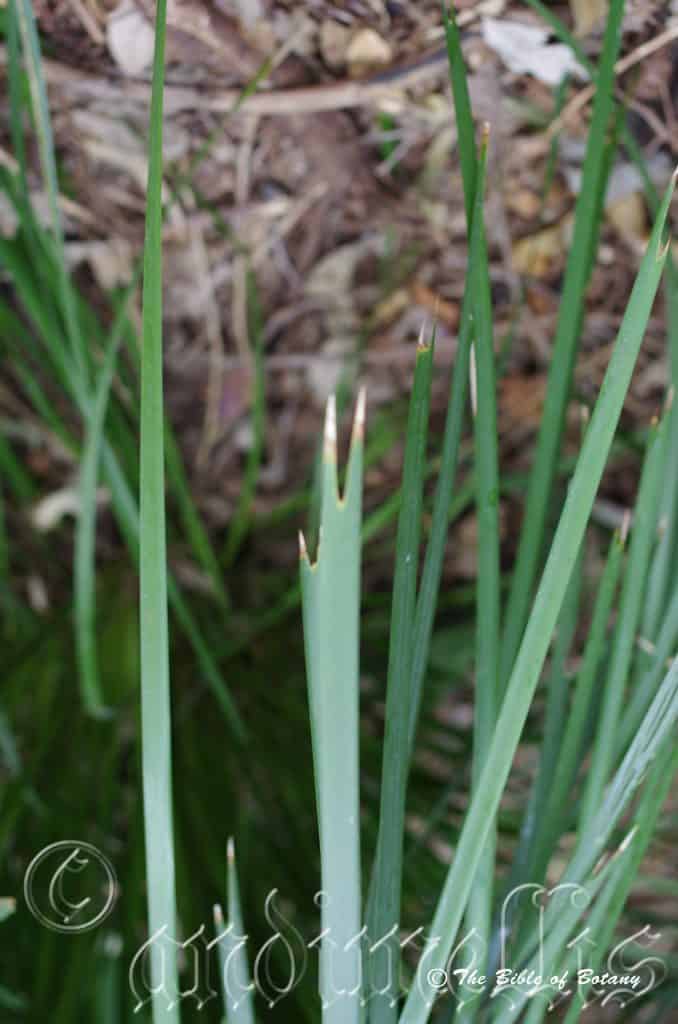
Kedron Brook Qld.
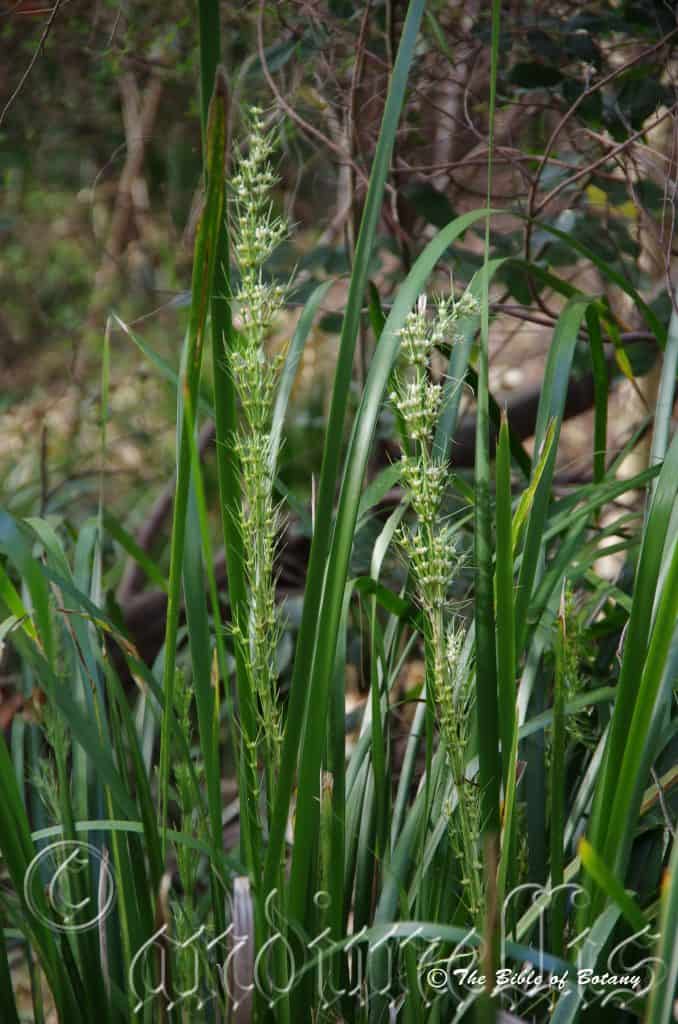
Kedron Brook Qld.

The Pinnacles NSW

Kedron Brook Qld.
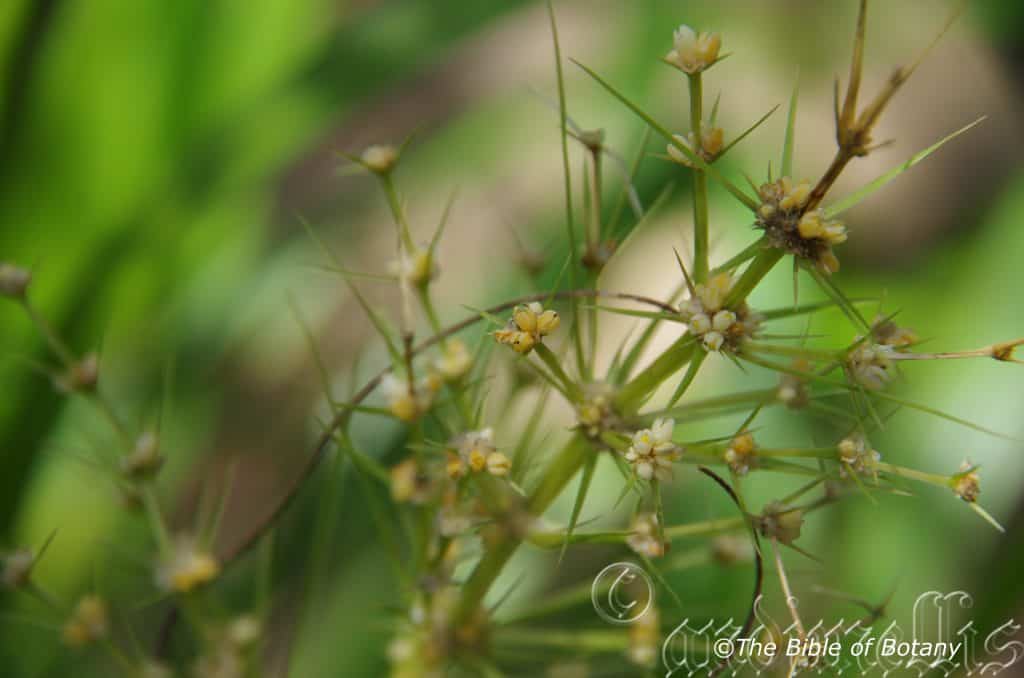
Author’s Garden The Pinnacles NSW
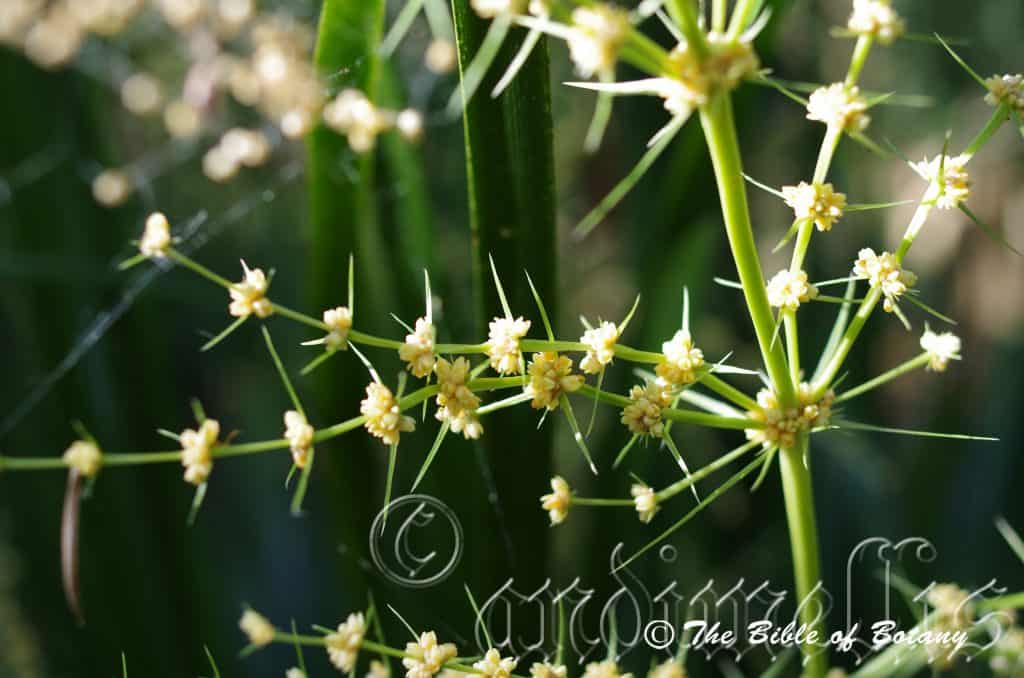
Greening Australia Norman Park Qld.
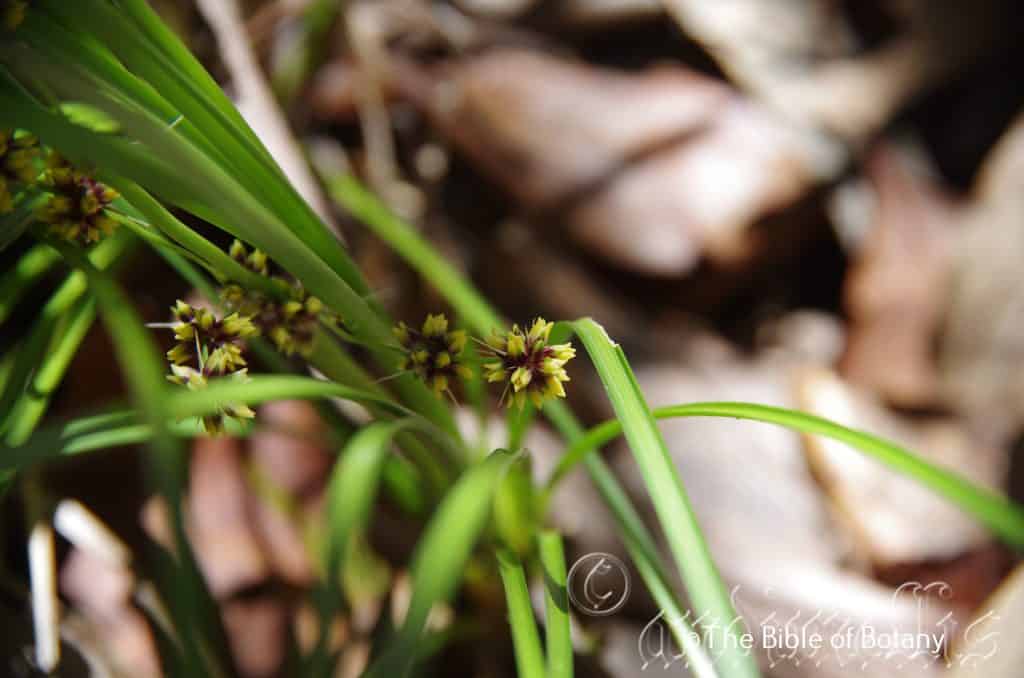
Pillar Valley NSW

Greening Australia Norman Park Qld.

Kedron Brook Qld.
Lomandra hystrix
Classification:
Unranked: Traceobionta
Division: Magnoliophyta
Class: Magnoliopsidas
Sub Class: Liliidalae
Order: Asparagales
Family: Laxmanniaceae
Genus: From Loma, which is Ancient Greek for on the edge or border and Andros, which is Ancient Greek for a man. It refers to a fringed ring around the anthers in the flowers.
Specie: From Hystrix, which is Ancient Greek for a hedgehog or porcupine. It refers to flowering spikes, which are covered in long course bristles or spines.
Sub species:
Common Name:
Distribution:
Lomandra hystrix is found south from Cooktown to near Innisfail in far north Queensland and from Brisbane and Redland in south east Queensland to the border and in two disjunct areas in New South Wales. One area is between Grafton and Coffs Harbour and the other from Kempsey south to Taree.
https://avh.ala.org.au/occurrences/search?taxa=Lomandra+hystrix#tab_mapView
Habitat Aspect Climate:
Lomandra hystrix prefers light dappled shade to full shade. It grows along creeks alluvial plains in most types of open moist forests. The altitude ranges from 25 meters ASL to 1500 meters ASL
The temperatures range from 2 degrees in August to 36 degrees in January.
The rainfalls range from lows of 900mm to an average of 3000mm
Soil Requirements:
Lomandra hystrix prefers to grow on sand and light course silts. The soils are usually derived from decomposed sandstone, granite, brown basalt, black basalt, shale or metamorphic rocks laid down as alluvial deposits on river meanders. The soils pH. ranges from 5.5pH to 6.5pH. It tolerates water logged soils and seasonal flooding where the plants are partly submerged for short periods. Non saline soils to moderately saline soils are tolerated.
Height & Spread: Wild Plants: 900mm to 1300mm by 900mm to 1800mm.
Characteristics:
Lomandra hystrix’sis a small tufted, perennial rush with erect or decumbent culms. The grass-green, olive-green culms are glabrous and elongated and measure 300mm in length.
Lomandra hystrix’s long linear leaves measure 900mm to 1300mm in length by 6mm to 11mm in width. The base forms a white, occasionally brown or red-brown scarious sheath. The sheath is intact while the apex is acute with 2 to 4 lateral teeth extending down one side and 1 larger tooth lower down on the other side. The margins are entire. The apex of the leaves have 3 teeth of which the longest is the apex tooth. There is a 4th tooth below the upper three on the same side as the long apex tooth. The concolourous laminas are mid grass-green, semi glossy or dull and glabrous. The mid vein is absent. There are 12 to 20 very fine longitudinal veins.
The inflorescences of Lomandra hystrix are monoecious and are born on a long 900mm to 1300mm spike including the 300mm to 600mm peduncle. The spike measures 55mm to 66mm of the total length. The spikes measure 100mm to 150mm in diameter. The clustered outer bracts are pungent and measure 20mm to 95mm in length by 2.5mm to 5mm in width. The inner bracts are shorter than the flowers.
Individual flowers are clustered in whorls, sessile. The cylindrical or ellipsoidal male flowers measure 3mm to 3.5mm in length while the cylindrical or ellipsoidal female flowers measure 4.5mm to 5mm in length. The outer tepals on the male flowers measure 3mm to 3.5mm in length while the inner tepals are slightly shorter. The six stamens are attached to the tepals. The filaments measure 1mm and 1.5mm in length. The filaments are white while the anthers are yellow. The male flowers are sweetly perfumed. The 4.5mm diameter female flowers have a 3 locular ovary which is surrounded by six dimorphic staminodes. The shorter 3 stamens are alternate to the inner tepals while the longer 3 are opposite the inner tepals. The 3 locular stigma is green and glabrous. The outer tepals on both the male and female flowers are glossy purple or yellow while the inner tepals are dull cream to yellow. The plants commence flowering when it is quite small with the flowers appearing from late August through to mid-February.
Lomandra hystrix’s fruit is a small globular to triquetra capsule which is surrounded by a persistent spiny bracts. The bracts measure 1mm to 4mm in length. The capsules measure 4mm to 5mm in length by 4mm to 5mm in diameter. The pale green capsules turn straw yellow on ripening before drying and splitting. Each locule husk spreads at right angles to reveal the 3 bright ovate red seeds. The cream arils cover a cream testa which has a black spot on one end. They measure 3.5mm to 4.5mm in diameter including the aril. The capsules are dehiscent over several weeks. They first open from the base to the apex.

Wildlife:
Lomandra hystrix appears not to have any predators on a regular basis though I would expect them to be host to several butterflies similar to the southern species.
Cultivation:
At first glance this species is easily confused with Lomandra longifolia however the leaf apexes are very different. Note the diagram plus it is larger and the leaves are broader. I have exaggerated the elongation in the diagram to emphasize the multiple teeth along one side.
Lomandra hystrix makes an excellent rockery or bank stabilizer plants. They always look green and fresh especially where adequate ground moisture is retained whether it is grown in shade or full sun. It is very suitable on water logged acid soils. It is most suitable for small, medium and large gardens close to the coast in sub tropical gardens or tropical gardens and would be worthwhile trying in semi-arid zones. As garden subjects they will grow from 1000m to 1300mm by 1000mm to 1400mm wide. It is cold tolerant to temperatures at least as low as minus 5 degrees once established.
It is most suitable for use around shaded swimming pools, courtyards, besides pathways, shady rockeries, along sandy clay banks or along drive ways or adjacent to natural bush gardens. Mass plantings of 5 or more plants even in small areas; really do the plants justification especially when it is in fruit. Larger fish or frog ponds will benefit from Lomandra hystrix. When mass planting the perfume from the male flowers is very powerful, especially in areas where the scent can linger or waft through the house. Cut flowers last for long periods indoors as does the scent and they can be used in dried arrangements to great effect. I have tried on many occasions to have the flowers of this Lomandra introduced to the floral trade without success.
If it is placed around a pool, courtyards or other confined spaces then plant them in small groups or scatter plant them for a more informal natural look against walls to help soften them. Using rocks and small boulders can make the pool or any water feature appear like an oasis. The leaves and flowers can make a great start for the larger wallum, mangrove or swamp setting.
If companion plants are sought then the choice of plants to use either side is limited only by size of the area to be landscaped and the size of the other plants as they should be no more than 200mm in height to emphasize the Lomandra or plant them below trees for a natural bush setting.
It is great to break up horizontal lines along driveways. They can be used to great affect where a dry creek bed is the theme by using them to mark out the banks. They can be used to stabilize banks along creeks and streams or to help soak up water in wet areas.
Propagation:
Seeds: Lomandra hystrix seeds are difficult to collect as seeds dispersal is quick especially in warm weather making collection difficult. The seeds need to be sown as soon as possible after collecting and need to be treated. Soak the seeds in warm water for 24 hours. Germination may be improved with the addition of a half a teaspoon of vinegar to a litter of water.
Rinse the freshly treated seeds in fresh water and sow them directly into a seed raising mix. Cover the seeds with 2mm to 6mm of fine weed free mulch and keep moist. Place the tray in a warm sunny position. When the seedlings are 30mm to 50mm tall, prick them out and plant them into 50mm native tubes using a good organic mix with a little extra clay. The germination rate is both erratic and slow taking between 4 to 16 weeks to emerge.
Division: Division is a good method to grow small numbers of plants which mature very quickly.
1. Do not water before you start.
2. Cut back foliage to around 70mm to 100mm in length,
3. Use a garden fork or shovel to dig around the clump you want to divide (about 100mm to 150mm greater circumference than the bulbs),
4. Lift the whole of the root ball out of the ground,
5. Remove excess soil by shaking. If the soil is hard allow to sit in a container of water for 15 minutes to half an hour. Repeat the shaking in the water and hose off excess soil,
6. Once the roots can be seen clearly it is easier to pry and split the clump apart.
7. Leave a small number of clumps in each new division,
8. Replant in the prepared bed using half a hand full of blood and bone in the hole and mix,
9. Level off at the same level the bulbs were at the start.
10. Fertilize using seaweed, fish emulsion or organic chicken pellets soaked in water on an alternate basis. Fertilize every two months until the plants are established then twice annually in early September or March to maintain health, vitality and better flowering.
Further Comments from Readers:
“Hi reader, it seems you use The Bible of Botany a lot. That’s great as we have great pleasure in bringing it to you! It’s a little awkward for us to ask, but our first aim is to purchase land approximately 1,600 hectares to link several parcels of N.P. into one at The Pinnacles NSW Australia, but we need your help. We’re not salespeople. We’re amateur botanists who have dedicated over 30 years to saving the environment in a practical way. We depend on donations to reach our goal. If you donate just $5, the price of your coffee this Sunday, We can help to keep the planet alive in a real way and continue to bring you regular updates and features on Australian plants all in one Botanical Bible. Any support is greatly appreciated. Thank you.”
In the spirit of reconciliation we acknowledge the Bundjalung, Gumbaynggirr and Yaegl and all aboriginal nations throughout Australia and their connections to land, sea and community. We pay our respect to their Elders past, present and future for the pleasures we have gained.
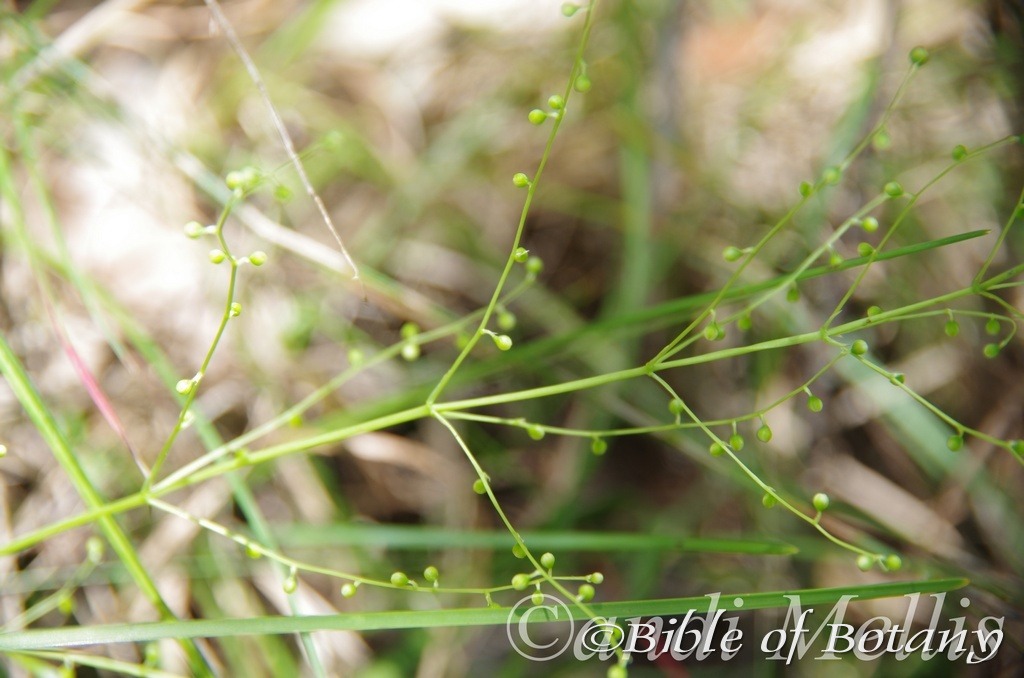
Fortis Creek National Park NSW
Lomandra laxa
Classification:
Unranked: Traceobionta
Division: Magnoliophyta
Class: Magnoliopsidas
Sub Class: Liliidalae
Order: Asparagales
Family: Laxmanniaceae
Genus: From Loma, which is Ancient Greek for on the edge or border and Andros, which is Ancient Greek for a man. It refers to a fringed ring around the anthers in the flowers.
Specie: From Laxus, which is Latin for loose or slack. It refers structures or organs, which open in habit, as in not compact.
Sub species:
Common Name:
Distribution:
Lomandra laxa is found in several disjunct populations from south from the Daintree National Park to Conway National Park on the coastal ranges then in Carnarvon Gorge National Park on the western side of the Range in northern and central Queensland with a population much further north on the Skardon River. Further south it is found on the Three Peaks Range to Chinchilla and Inglewood in southern Queensland to the Bellinger River near Bellingen in New South Wales.
https://avh.ala.org.au/occurrences/search?taxa=Lomandra+laxa#tab_mapView
Habitat Aspect Climate:
Lomandra laxa prefers light dappled shade to full shade. It grows in moist closed Eucalyptus forests, adjacent to rainforests or in littoral rainforests. The altitude ranges from 25 meters ASL to 750 meters ASL
The temperatures range from minus 4 degrees in August to 36 degrees in January.
The rainfalls range from lows of 500mm to an average of 2000mm
Soil Requirements:
Lomandra laxa prefers to grow on sand to heavy coarse silts. The soils are usually derived from decomposed sandstone, granite and accumulated beach sands or at times lighter decomposed black basalt, metamorphic rocks. The soils pH. ranges from 5.5pH to 7pH. It does not tolerate water logged soils tough seasonal wet soils are tolerated for short periods. Non saline soils to moderately saline soils are tolerated.
Height & Spread:
Wild Plants: 0.3m to 0.4m by 0.5m to 0.6m.
Characteristics:
Lomandra laxa is a perennial tussock rush with short, glabrous stems.
Lomandra laxa’s long linear leaves measure 350mm to 450mm in length by 2mm to 4mm in width or with extended, decumbent stems that measure 150mm to 250mm in length by 1mm to 4mm in width. The off white sheaths have pale brownish, intact margins that are intact or slightly lacerated with age. The bases form a paler green while the apexes are obtuse-acute to obtuse-truncate. The concolourous flat laminas are mid grass-green, semi glossy or dull and glabrous. The mid vein is absent. There are 6 to 8 very broad but fine longitudinal veins.
The inflorescences of Lomandra laxa are monoecious and are born on a long 300mm to 400mm spike including the 150mm to 200mm peduncle. The spike measures about 50mm of the total length. The outer bracts are ovate and measure 1mm to 2mm in length. The flowers are cream to white.
The male inflorescences are on short loose, opposite or whorled branches. The flowers measure 2mm to 2.5mm in length. The pedicels are spreading to recurved measure 2mm to 2.5mm in length.
The inner bracts when present are ovate and measure 1mm to 2mm in length. Female inflorescences are not branched and measure 4mm to 6mmin length. The pedicels measure 0.4mm to 0.6mm in length. The outer tepals are broad elliptic to circular, shorter and more membranous than the thick inner tepals.
Lomandra laxa’s fruit is a small globular to triquetra capsule which is surrounded by a persistent spiny bracts. The bracts measure 1mm to 4mm in length. The capsules measure 4mm to 5mm in length by 4mm to 5mm in diameter. The pale green capsules turn straw yellow on ripening before drying and splitting. Each locule husk spreads at right angles to reveal the 3 bright ovate red seeds. The cream arils cover a cream testa which has a black spot on one end. They measure 3.5mm to 4.5mm in diameter including the aril. The capsules are dehiscent over several weeks. They first open from the base to the apex.
Confusing Species:
Lomandra laxa flowers from October to November while the leaves have an acute apex with a fine hyaline edge.
Lomandra filiformis flowers from mid-March to August while the leaves have an obtuse apex with a thicker deeper coloured edge on the apex.

Wildlife:
Lomandra laxa’s wildlife includes the Southern Silver Ochre butterfly (Trapezites praxedes). www.lepidoptera.butterflyhouse.com.au
Cultivation:
Lomandra laxa makes an excellent rockery or bank stabilizer plants. It always looks green and fresh especially where adequate ground moisture is retained whether it is grown in shade or full sun. It is very suitable on dry acidic soils. It is suitable for small, medium and large gardens close to the coast in sub tropical gardens or tropical gardens and would be worthwhile trying in semi-arid zones. As garden subjects it grows from 300m to 400mm by 500mm to 600mm wide. It is cold tolerant to temperatures at least as low as minus 5 degrees once established.
It is most suitable for use around sunny to partially shaded swimming pools, courtyards, besides pathways, rockeries, along sandy clay banks, along drive ways or adjacent to natural bush gardens. Mass plantings of 5 or more plants even in small areas; really do the plants justification especially when it is in flower. Medium to large fish or frog ponds will benefit from Lomandra laxa. When mass planted the perfume from the flowers is faint but divine. Cut flowers last for long periods indoors as does the scent and they can be used in dried arrangements to great effect.
If it is placed around a pool, courtyards or other confined spaces then plant them in small groups or scatter plant them for a more informal natural look against walls to help soften them. Using rocks and small boulders can make the pool or any water feature appear like an oasis.
If companion plants are sought then the choice of plants to use either side is limited only by size of the area to be landscaped and the size of the other plants as they should be no more than 200mm in height to emphasize the Lomandra or plant them below trees for a natural bush setting.
It is great to break up horizontal lines along driveways. IT can be used to great affect where a dry creek bed is the theme by using them to mark out the banks. It can be used to stabilize banks along creeks and streams or to help soak up water in wet areas.
Propagation:
Seeds: Lomandra laxa seeds are difficult to collect as seeds dispersal is quick especially in warm weather making collection difficult. The seeds need to be sown as soon as possible after collecting and need to be treated. Soak the seeds in warm water for 24 hours. Germination may be improved with the addition of a half a teaspoon of vinegar to a litter of water.
Rinse the freshly treated seeds in fresh water and sow them directly into a seed raising mix. Cover the seeds with 2mm to 6mm of fine weed free mulch and keep moist. Place the tray in a warm sunny position. When the seedlings are 30mm to 50mm tall, prick them out and plant them into 50mm native tubes using a good organic mix with a little extra clay. The germination rate is both erratic and slow taking between 4 to 16 weeks to germinate.
Division: Division is a good method to grow small numbers of plants which mature very quickly.
1. Do not water before you start.
2. Cut back foliage to around 70mm to 100mm in length,
3. Use a garden fork or shovel to dig around the clump you want to divide (about 100mm to 150mm greater circumference than the bulbs),
4. Lift the whole of the root ball out of the ground,
5. Remove excess soil by shaking. If the soil is hard allow to sit in a container of water for 15 minutes to half an hour. Repeat the shaking in the water and hose off excess soil,
6. Once the roots can be seen clearly it is easier to pry and split the clump apart.
7. Leave a small number of clumps in each new division,
8. Replant in the prepared bed using half a hand full of blood and bone in the hole and mix,
9. Level off at the same level the bulbs were at the start.
10. Fertilize using seaweed, fish emulsion or organic chicken pellets soaked in water on an alternate basis. Fertilize every two months until the plants are established then twice annually in early September or March to maintain health, vitality and better flowering.
Further Comments from Readers:
“Hi reader, it seems you use The Bible of Botany a lot. That’s great as we have great pleasure in bringing it to you! It’s a little awkward for us to ask, but our first aim is to purchase land approximately 1,600 hectares to link several parcels of N.P. into one at The Pinnacles NSW Australia, but we need your help. We’re not salespeople. We’re amateur botanists who have dedicated over 30 years to saving the environment in a practical way. We depend on donations to reach our goal. If you donate just $5, the price of your coffee this Sunday, We can help to keep the planet alive in a real way and continue to bring you regular updates and features on Australian plants all in one Botanical Bible. Any support is greatly appreciated. Thank you.”
In the spirit of reconciliation we acknowledge the Bundjalung, Gumbaynggirr and Yaegl and all aboriginal nations throughout Australia and their connections to land, sea and community. We pay our respect to their Elders past, present and future for the pleasures we have gained.
Lomandra leucocephala
Classification:
Unranked: Traceobionta
Division: Magnoliophyta
Class: Magnoliopsidas
Sub Class: Liliidalae
Order: Asparagales
Family: Laxmanniaceae
Genus: From Loma, which is Ancient Greek for on the edge or border and Andros, which is Ancient Greek for a man. It refers to a fringed ring around the anthers in the flowers.
Specie: From Leukós, which is Ancient Greek for white and Kephal? or much later Cephalos which are Ancient Greek for a head. It refers to flowers, which form in little white heads along the branches.
Sub species: Lomandra leucocephala subsp. leucocephala. From Leukós, which is Ancient Greek for white and Kephal? or much later Cephalos which are Ancient Greek for a head. It refers to flowers, which form in little white heads along the branches.
Sub species: Lomandra leucocephala subsp. robusta. From R?bustum, which is Latin for strong and hard as in Oak. It refers to timbers, trunks, branches or stems which are hard and strong.
Varieties: Lomandra leucocephala var. robusta. From R?bustum, which is Latin for strong and hard as in Oak. It refers to timbers, trunks, branches or stems which are hard and strong.
Common Name: Woolly Mat Rush or Iron Mat rush.
Distribution:
Lomandra leucocephala subsp. leucocephala is a widespread species and is common in areas where it is found but it is never the dominant specie. It is found south from Mount Sturgeon in north Queensland to Wyalong in central western New South Wales.
There are two disjunct populations near the New South Wales, South Australia border at Pooncarie and Scotia Sanctuary and further south at Yanak in western Victoria.
Lomandra leucocephala subsp. robusta is a wide spread species throughout central mainland Australia.
Lomandra leucocephala var. robusta is restricted to just three isolated populations at north of kalgoorlie in Western Australia, the junction of Hamilton Creek with Bitchera Creek in northern South Australia and Numbucurra in far south western New South Wales.
https://avh.ala.org.au/occurrences/search?taxa=Lomandra+leucocephala#tab_mapView
Habitat Aspect Climate:
Lomandra leucocephala prefers light dappled shade to full shade. It grows along creeks alluvial plains in most types of open forests or beneath mallee trees. The altitude ranges from 110 meters ASL to 750 meters ASL
The temperatures range from minus 3 degrees in August to 42 degrees in January.
The rainfalls range from lows of 150mm to an average of 750mm however the palms derive additional moisture through capillary action from water lying deeper below the dry creek beds and marshes.
Soil Requirements:
Lomandra leucocephala prefers to grow on deeper coarse silty loams to heavy silts. The soils are usually derived from decomposed sandstone, shale, alluvial deposits, alluvial river meanders on rivers streams or creeks. The soils pH. ranges from 5.5pH to 6.5pH. It tolerates seasonally water logged soils. Non saline soils to moderately saline soils are tolerated.
Height & Spread:
Wild Plants: Lomandra leucocephala sub sp. leucocephala 300mm to 400mm by 200mm to 500mm.
Lomandra leucocephala sub sp. robusta 400mm to 600mm by 200mm to 700mm.
Characteristics:
Lomandra leucocephala tufts are mid green to 100mm in length. The plants are easily distinguished by the leaves having an obtuse apex.
Lomandra leucocephala sub sp. leucocephala’s long linear leaves measure 150mm to 200mm in length by 1.5mm to 2mm in width. The base forms a long white smooth sheath. The leaf sheaths disintegrate into loose woolly to silky threads while the apex is obtuse with 6 to 8 small crenate lobes. The concolourous laminas are mid blue green to deep blue green, dull and glabrous. The margins are entire. The mid vein and longitudinal veins are absent.
Lomandra leucocephala sub sp. robusta’s long linear leaves measure 200mm to 600mm in length by 1.5mm to 5mm in width. The base forms a yellowish to orange-brown smooth sheath. The leaf sheaths disintegrate into few woolly to fibrous fragments while the apex is acute. The concolourous laminas are mid blue green to deep blue green, dull and glabrous. The margins are entire. The mid vein and longitudinal veins are absent.
The inflorescence is unisexual and is born on a peduncle which is much shorter than the leaves. The spike is born singularly from the leaf sheath. The densely clustered flower spikes measure 100mm to 300mm in length by 20mm to 40mm in diameter including the pedicel.
The inflorescence of Lomandra leucocephala sub sp. leucocephala are born in 1, 2 or 3 segments along the pedicel.
The inflorescence of Lomandra leucocephala sub sp. robusta are born in 4 or more segments along the pedicel.
The bracts are clustered beneath the flowers. The flowers are either cylindrical or ellipsoidal and are held on to by a 2mm to 3mm pedicle. The outer tepals on the male flowers measure 6mm to 7mm in length while the inner tepals are slightly shorter. The six stamens are attached to the tepals. The filaments measure 5mm to 6mm in length. The filaments are white while the anthers are yellow. The male and female flowers are sweetly perfumed. The 6mm to 7mm long tepals on the female flowers have a 3 locular ovary which is surrounded by six staminodes. The shorter 3 staminodes are alternate to the inner tepals while the longer 3 are opposite the inner tepals. The 3 locular stigmas are green while the outer tepals on both the male and female flowers are glossy creamy purple or yellow and the inner tepals are dull cream to dull yellow. The plants commence flowering when it is quite small with the flowers appearing from July to September.
The fruits are small globular to triangular, thinly skinned capsules.
Wildlife:
Lomandra leucocephala is unknown to the author.
Cultivation:
Lomandra leucocephala makes an excellent rockery plant. They always look green and fresh especially where adequate ground moisture is retained whether it is grown in light shade or full sun. It is very suitable on sandy soils. It is most suitable for small, medium and large gardens close to the coast in temperate, sub tropical, tropical or arid gardens. As garden subjects they will grow from 500m to 600mm by 600mm to 700mm wide. It is cold tolerant to temperatures at least as low as minus 3 degrees once established.
It is most suitable for use around semi shaded swimming pools, courtyards, besides pathways, shady rockeries, along sandy clay banks or along drive ways or adjacent to natural bush gardens. Mass plantings of 5 or more plants even in small areas; really do the plants justification especially when it is in flower. Medium fish or frog ponds will benefit from Lomandra leucocephala. When mass planting the perfume from the flowers is very powerful, especially in areas where the scent can linger or waft through the house. Cut flowers last for long periods indoors as does the scent and they can be used in dried arrangements to great effect. I have also tried on many occasions to have the flowers of this Lomandra specie introduced to the floral trade without success.
If it is placed around a pool, courtyards or other confined spaces then plant them in small groups or scatter plant them for a more informal natural look against walls to help soften them. Using rocks and small boulders can make the pool or any water feature appear like an oasis. The leaves and flowers can make a great start for the larger heath or desert setting. When making a desert scene using Lomandra leucocephala use either large rocks with few to many plants or in a sandy desert plant it sparingly with them becoming more densely planted adjacent to the water. Be careful not to over plant as they will look out of place and weedy.
If companion plants are sought then the choice of plants to use either side is limited only by size of the area to be landscaped and the size of the other plants as they should be no more than 150mm in height to emphasize the Lomandra specie. Beneath a mallee tree they can be mass planted for a natural bush setting.
It is great to break up horizontal lines along driveways. They can be used to great affect where a dry creek bed is the theme by using them to mark out the banks.
Propagation:
Seeds: Lomandra leucocephala seeds are difficult to collect as seeds dispersal is quick especially in warm weather making collection difficult. The seeds need to be sown as soon as possible after collecting and need to be treated. Soak the seeds in warm water for 24 hours. Germination may be improved with the addition of a half a teaspoon of vinegar to a litter of water.
Rinse the freshly treated seeds in fresh water and sow them directly into a seed raising mix. Cover the seeds with 2mm to 6mm of fine weed free mulch and keep moist. Place the tray in a warm sunny position. When the seedlings are 30mm to 50mm tall, prick them out and plant them into 50mm native tubes using a good organic mix with a little extra clay. The germination rate is both erratic and slow taking between 4 to 16 weeks to germinate.
Division: Division is a good method to grow small numbers of plants which mature very quickly.
1. Do not water before you start.
2. Cut back foliage to around 70mm to 100mm in length,
3. Use a garden fork or shovel to dig around the clump you want to divide (about 100mm to 150mm greater circumference than the bulbs),
4. Lift the whole of the root ball out of the ground,
5. Remove excess soil by shaking. If the soil is hard allow to sit in a container of water for 15 minutes to half an hour. Repeat the shaking in the water and hose off excess soil,
6. Once the roots can be seen clearly it is easier to pry and split the clump apart.
7. Leave a small number of clumps in each new division,
8. Replant in the prepared bed using half a hand full of blood and bone in the hole and mix,
9. Level off at the same level the bulbs were at the start.
10. Fertilize using seaweed, fish emulsion or organic chicken pellets soaked in water on an alternate basis. Fertilize every two months until the plants are established then twice annually in early September or March to maintain health, vitality and better flowering.
Further Comments from Readers:
“Hi reader, it seems you use The Bible of Botany a lot. That’s great as we have great pleasure in bringing it to you! It’s a little awkward for us to ask, but our first aim is to purchase land approximately 1,600 hectares to link several parcels of N.P. into one at The Pinnacles NSW Australia, but we need your help. We’re not salespeople. We’re amateur botanists who have dedicated over 30 years to saving the environment in a practical way. We depend on donations to reach our goal. If you donate just $5, the price of your coffee this Sunday, We can help to keep the planet alive in a real way and continue to bring you regular updates and features on Australian plants all in one Botanical Bible. Any support is greatly appreciated. Thank you.”
In the spirit of reconciliation we acknowledge the Bundjalung, Gumbaynggirr and Yaegl and all aboriginal nations throughout Australia and their connections to land, sea and community. We pay our respect to their Elders past, present and future for the pleasures we have gained.
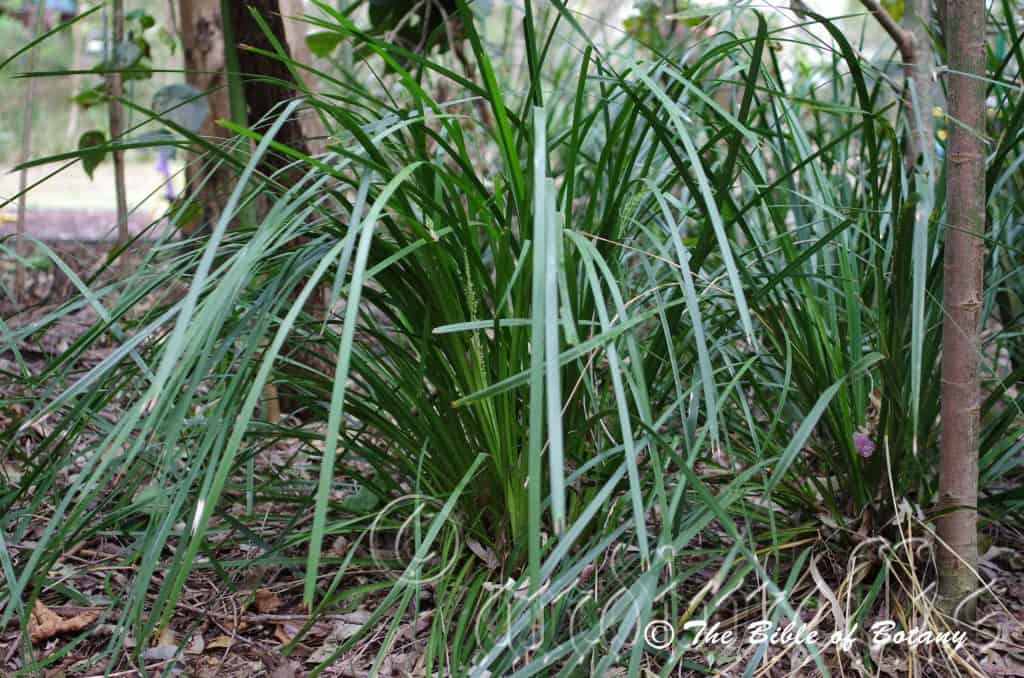
Kedron Brook Qld.
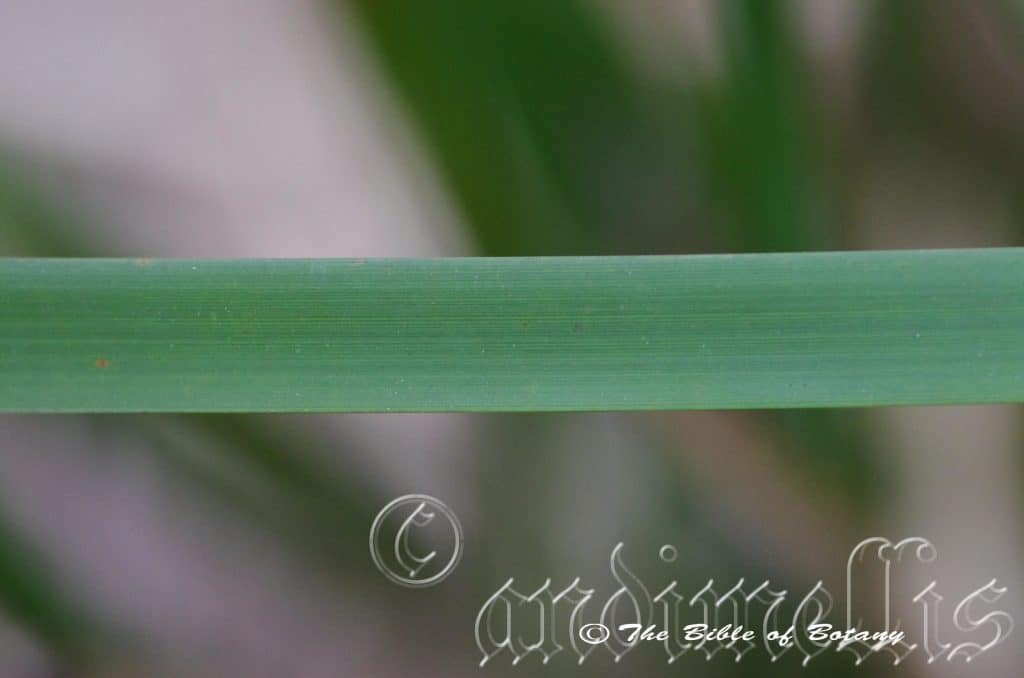
NCBG Coffs Harbour NSW

NCBG Coffs Harbour NSW
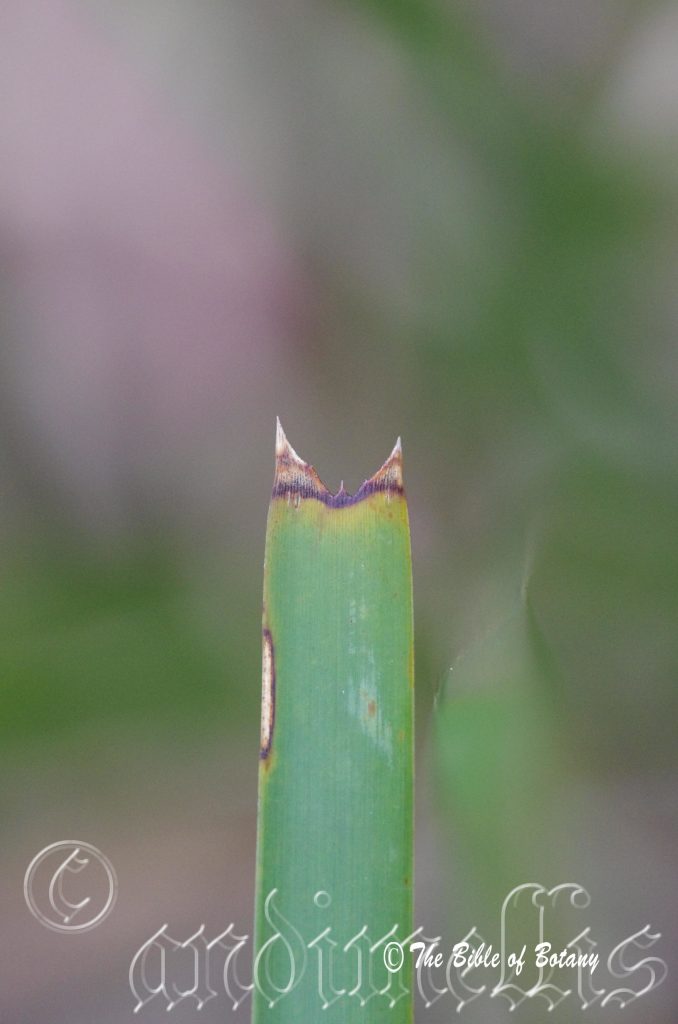
NCBG Coffs Harbour NSW
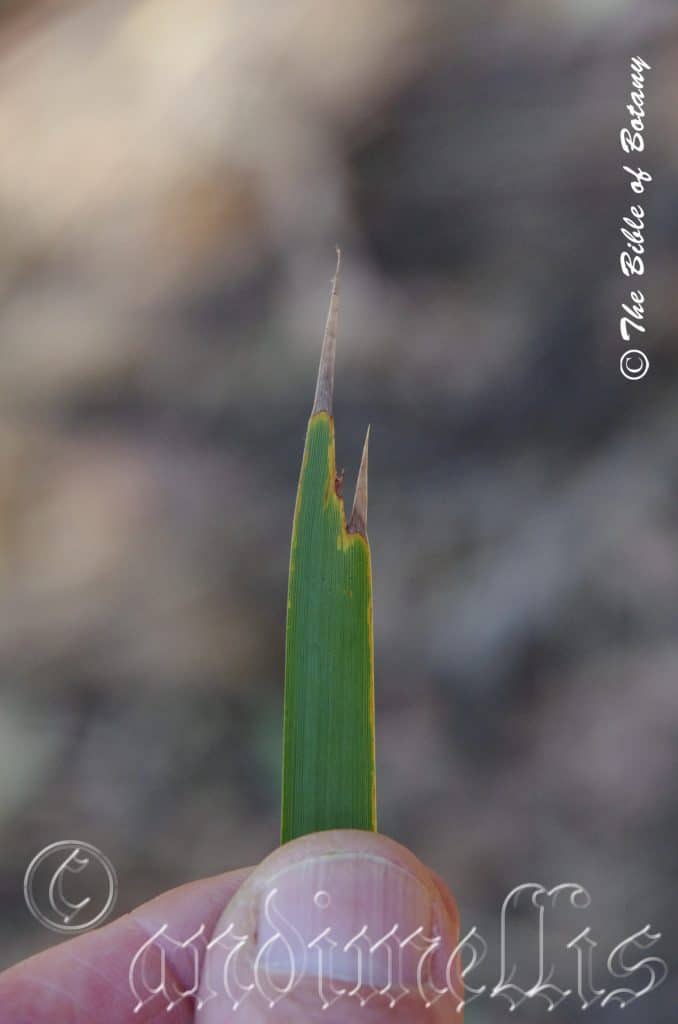
Mount Cootha Botanic Gardens Qld.
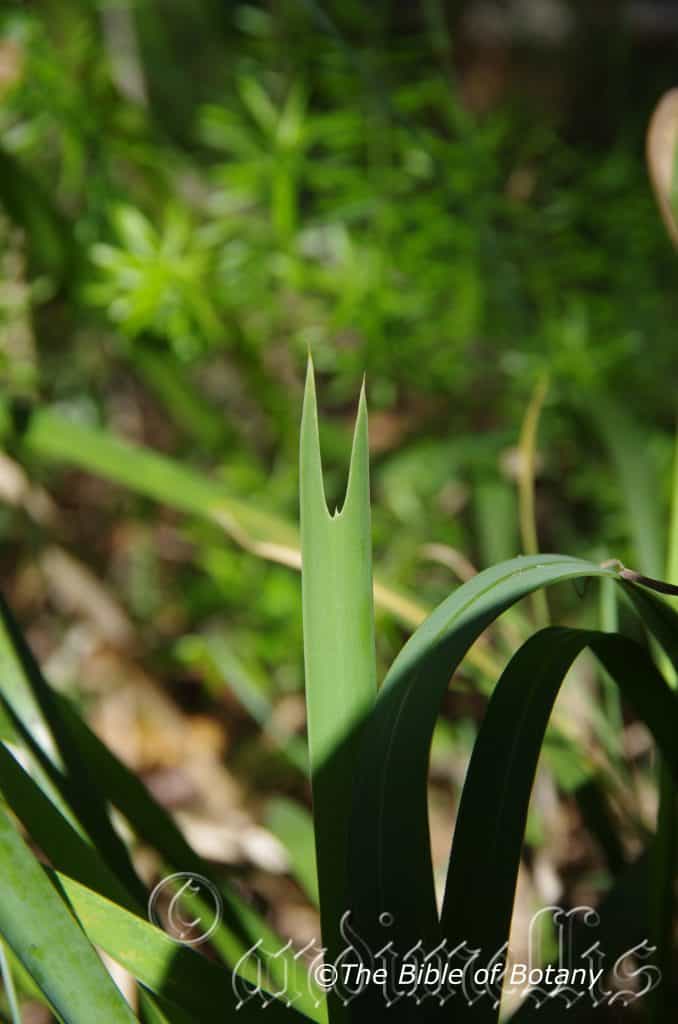
Yuraygir National Park NSW

Pillar Valley NSW
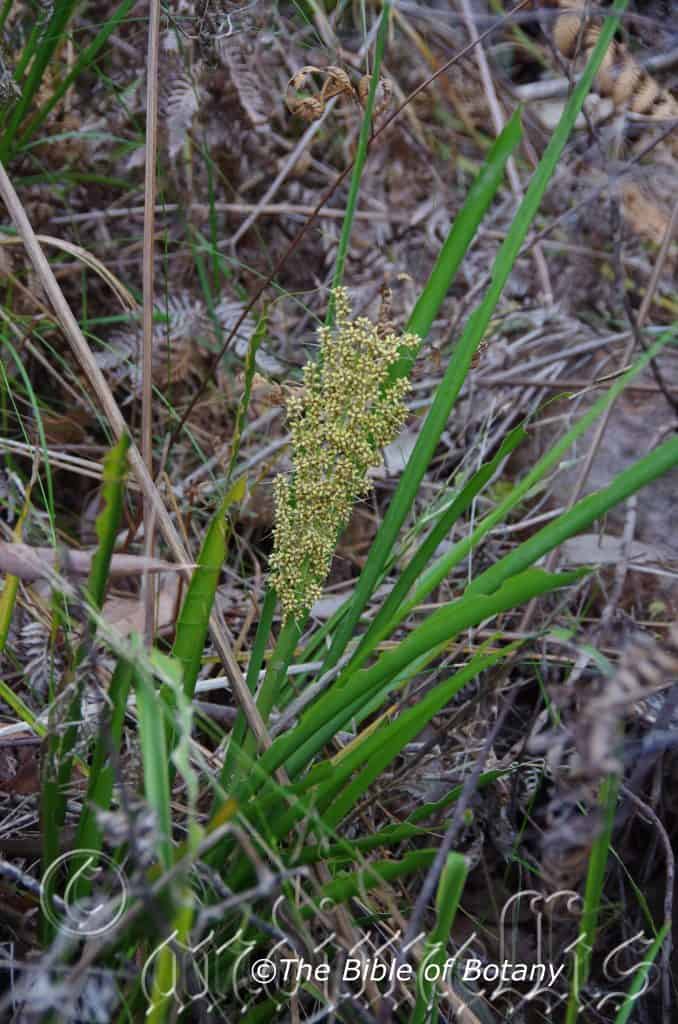
The Pinnacles NSW
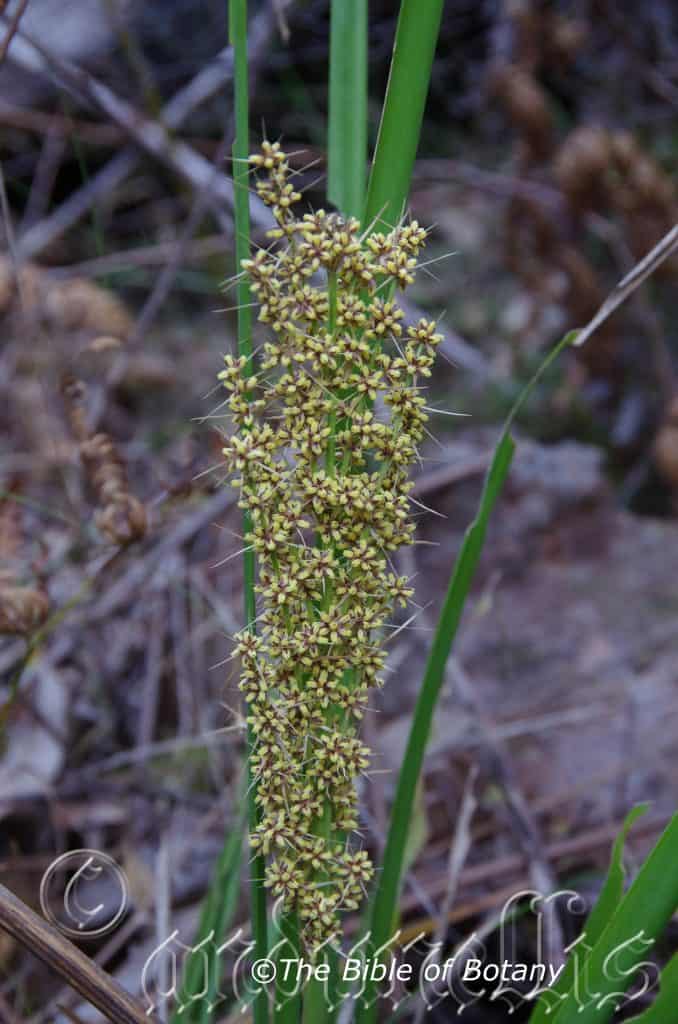
The Pinnacles NSW
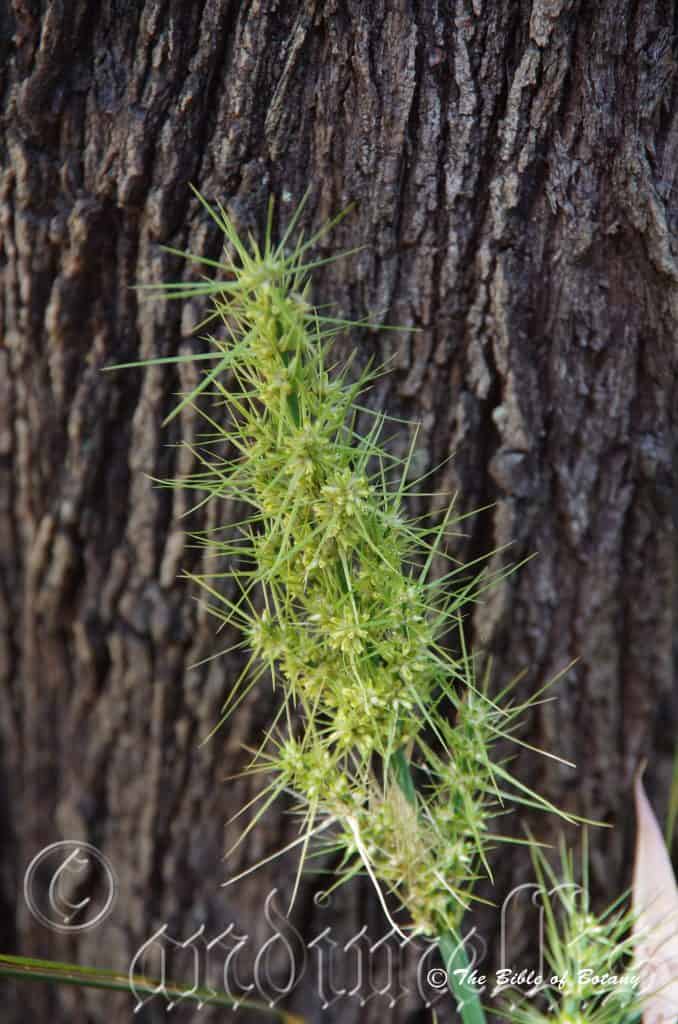
Mount Cootha Botanic Gardens Qld.
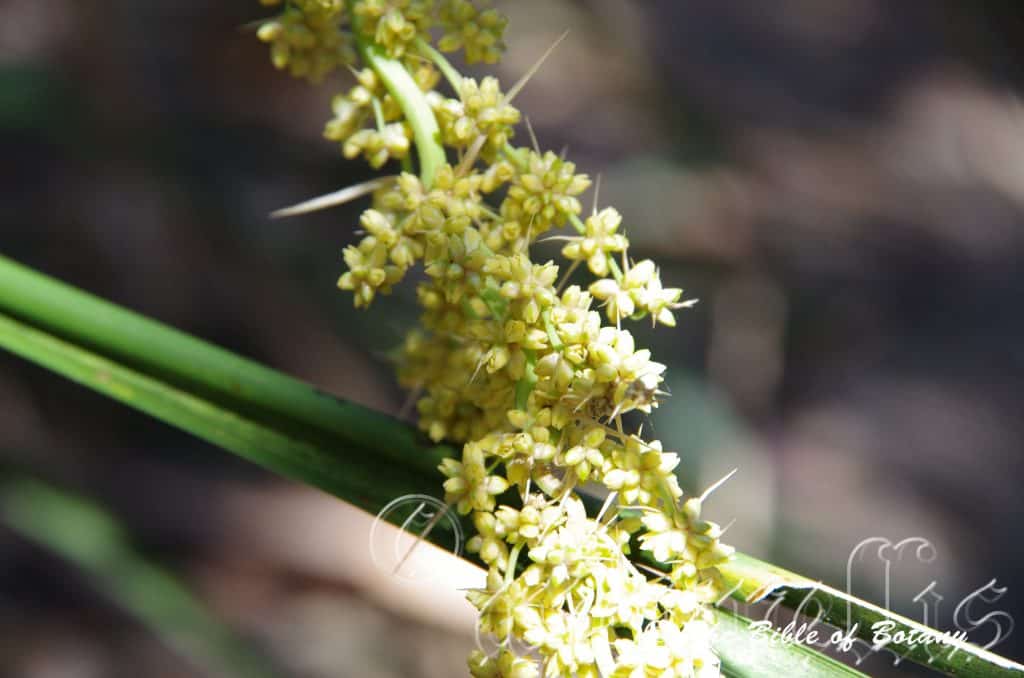
Mount Cootha Botanic Gardens Qld.

The Pinnacles NSW
Lomandra longifolia
Classification:
Unranked: Traceobionta
Division: Magnoliophyta
Class: Magnoliopsidas
Sub Class: Liliidalae
Order: Asparagales
Family: Laxmanniaceae
Genus: From Loma, which is Ancient Greek for on the edge or border and Andros, which is Ancient Greek for a man. It refers to a fringed ring around the anthers in the flowers.
Specie: From Longitia/Longus, which is Latin for long in length and Folium, which is Latin for foliage. It refers to leaves, which are long and strap like.
Sub species:
Common Name: Tall Mat Rush.
Distribution:
Lomandra longifolia is found from south of Cape York Peninsular in far north Queensland to southern Tasmania.
It is mainly found on the Western Slopes, on and east of the Great Dividing Range to the coast.
https://avh.ala.org.au/occurrences/search?taxa=Lomandra+longifolia#tab_mapView
Habitat Aspect Climate:
Lomandra longifolia prefer light dappled shade to full shade. It grows along creeks alluvial plains in most types of open forests, to tropical rainforests and temperate rainforests. The altitude ranges from 5 meters ASL to 1100 meters ASL
The temperatures range from minus 4 degrees in August to 38 degrees in January.
The rainfalls range from lows of 250mm to an average of 3000mm. In the lower rainfall areas the plants are always associated with permanent flowing water.
Soil Requirements:
Lomandra longifolia prefer to grow on poor to better quality deep sandy loams to medium clays or alluvial silts. The soils are derived from decomposed sandstone, granite, brown basalt, black basalt, shale, metamorphic rocks, alluvial flats or moist accumulated beach sands. The soils pH. ranges from 5.5pH to 7pH. It tolerates water logged soils and prefers seasonal water logged soils where the plants are partly submerged for short periods. Non saline soils to very saline soils are tolerated.
Height & Spread:
Wild Plants: 600mm to 1000mm by 700mm to 1100mm.
Characteristics:
Lomandra longifolia’s tufts are mid green. The plants are easily distinguished by the leaves being produced in a whorl from the base.
Lomandra longifolia’s long linear leaves measure 600mm to 1000mm in length by 6mm to 8mm in width. The base forms a brown, orange-brown or rarely white smooth sheath. The sheath is intact or on occasions partially splits while the apex is sinuate with 2 or 3 teeth. Where there are 3 teeth the central tooth extends beyond the sinus or is longer than the other 2 lateral teeth. The concolourous laminas are mid grass-green, semi glossy or dull and glabrous. The margins are entire. The mid vein is absent. There are 20 to 40 very fine longitudinal veins.
The inflorescence of Lomandra longifolia is unisexual and is born on a long flattened 80mm to 150mm peduncle. The spike is born singularly from the base of the leaf sheath. They measure 180mm to 250mm in length by 100mm to 150mmin diameter. Branchlets measure 70mm to 140mm in length and there are 2 to 4 per node.
Male flower spikes are much shorter than the female spikes. The bracts are clustered and measure 10mm to 20mm in length by 1.5mm to 2mm in width. It is slightly pungent to pungent. Individual flowers are clustered in whorls, sessile, and measure 3.5mm to 4mm in diameter. The flowers are either cylindrical or ellipsoidal. The petals on the male flowers measure 3mm to 3.5mm in length while the sepals are slightly shorter. The filaments measure 1mm and 1.5mm in length. The filaments are white while the anthers are yellow. The shorter 3 stamens are alternate to the inner tepals while the longer 3 are opposite the inner tepals.
The 4.5mm diameter female flowers have a 3 locular ovary which is surrounded by six dimorphic staminodes. The 3 locular stigmas are green while the sepals on both the male and female flowers are glossy, scarious purple or yellow and the petals are dull cream to dull yellow. The plants commence flowering when it is quite small with the flowers appearing from late August through to late November.
Lomandra longifolia’s fruit is a small globular to triangular capsule. The capsules measure 4mm to 5mm in length by 9mm to 12mm in diameter after they split. The capsules are surrounded by long spiny bracts measuring 10mm to 40mm in length. The pale green capsules turn straw yellow on ripening before drying and splitting. The style is persistent. Each locule husk spreads at right angles to reveal the straw coloured ovoid seeds. The creamy aril covers a fawn testa which has a deep brown spot on one end. They measure 5mm to 6mm in length by 3.5 to 4mm in diameter. The endosperm is very thin. The capsules are dehiscent over several weeks depending upon the weather. They first open from the base to the apex.
Confusing Species:
Lomandra longifolia’s leaf apex middle tip is more pronounced with a deeper and broader cleft. The leaves are broader.
Lomandra confertifolia subsp. pallida’s leaf apex middle tip is less pronounced with a very narrow and shallower cleft. The leaves are narrower.

Wildlife:
Lomandra longifolia’s wildlife includes the Southern Silver Ochre butterfly (Trapezites praxedes).
www.lepidoptera.butterflyhouse.com.au
Cultivation:
At first glance this species is easily confused with Lomandra hystrix however the leaf apexes are very different. Note the diagram. The apex on Lomandra histrix is deliberately drawn with a greater elongation to highlight the difference.
Lomandra longifolia makes an excellent rockery plant. They always look green and fresh especially where adequate ground moisture is retained whether it is grown in shade or full sun. It is very suitable on water logged acid soils. It is most suitable for small, medium and large gardens close to the coast in sub tropical gardens or tropical gardens and would be worthwhile trying in semi-arid zones. As garden subjects they will grow from 1000m to 1300mm by 1000mm to 1400mm wide. It is cold tolerant to temperatures at least as low as minus 5 degrees once established.
It is most suitable for use around shaded swimming pools, courtyards, besides pathways, shady rockeries, along sandy clay banks or along drive ways or adjacent to natural bush gardens. Mass plantings of 5 or more plants even in small areas; really do the plants justification especially when it is in fruit. Larger fish or frog ponds will benefit from Lomandra longifolia. When mass planting, the perfume from the male flowers is noticeable on warm still days.
Cut flowers last for long periods indoors as does the scent and they can be used in dried arrangements to great effect.
If it is placed around a pool, courtyards or other confined spaces then plant them in small groups or scatter plant them for a more informal natural look against walls to help soften them. Using rocks and small boulders can make the pool or any water feature appear like an oasis. The leaves and flowers can make a great start for the larger wallum, mangrove or swamp setting.
If companion plants are sought then the choice of plants to use either side is limited only by size of the area to be landscaped and the size of the other plants as they should be no more than 200mm in height to emphasize the Lomandra or plant them below trees for a natural bush setting.
It is great to break up horizontal lines along driveways. They can be used to great affect where a dry creek bed is the theme by using them to mark out the banks. They can be used to stabilize banks along creeks and streams or to help soak up water in wet areas.
Propagation:
Seeds: Lomandra longifolia seeds need to be treated for best results. Place the seeds in a small calico bag with clean, sharp sand. Now place the bag into the washing machine with the weekly wash.
Sow the treated seeds into a good quality seed raising mix with 30mm perlite. Cover the seeds with 5mm to 10mm of fine weed free mulch and keep moist. Place the tray in a warm sunny position. When the seedlings are 30mm to 50mm tall, prick them out and plant them into 50mm native tubes using a good organic mix.
Once the seedlings reach 100mm to 150mm in height they can be planted out into their permanent position.
Division: Division is a good method to grow small numbers of plants which mature very quickly.
1. Do not water before you start.
2. Cut back foliage to around 70mm to 100mm in length,
3. Use a garden fork or shovel to dig around the clump you want to divide (about 100mm to 150mm greater circumference than the bulbs),
4. Lift the whole of the root ball out of the ground,
5. Remove excess soil by shaking. If the soil is hard allow to sit in a container of water for 15 minutes to half an hour. Repeat the shaking in the water and hose off excess soil,
6. Once the roots can be seen clearly it is easier to pry and split the clump apart.
7. Leave a small number of clumps in each new division,
8. Replant in the prepared bed using half a hand full of blood and bone in the hole and mix,
9. Level off at the same level the bulbs were at the start.
10. Fertilize using seaweed, fish emulsion or organic chicken pellets soaked in water on an alternate basis. Fertilize every two months until the plants are established then twice annually in early September or March to maintain health, vitality and better flowering.
Further Comments from Readers:
“Hi reader, it seems you use The Bible of Botany a lot. That’s great as we have great pleasure in bringing it to you! It’s a little awkward for us to ask, but our first aim is to purchase land approximately 1,600 hectares to link several parcels of N.P. into one at The Pinnacles NSW Australia, but we need your help. We’re not salespeople. We’re amateur botanists who have dedicated over 30 years to saving the environment in a practical way. We depend on donations to reach our goal. If you donate just $5, the price of your coffee this Sunday, We can help to keep the planet alive in a real way and continue to bring you regular updates and features on Australian plants all in one Botanical Bible. Any support is greatly appreciated. Thank you.”
In the spirit of reconciliation we acknowledge the Bundjalung, Gumbaynggirr and Yaegl and all aboriginal nations throughout Australia and their connections to land, sea and community. We pay our respect to their Elders past, present and future for the pleasures we have gained.
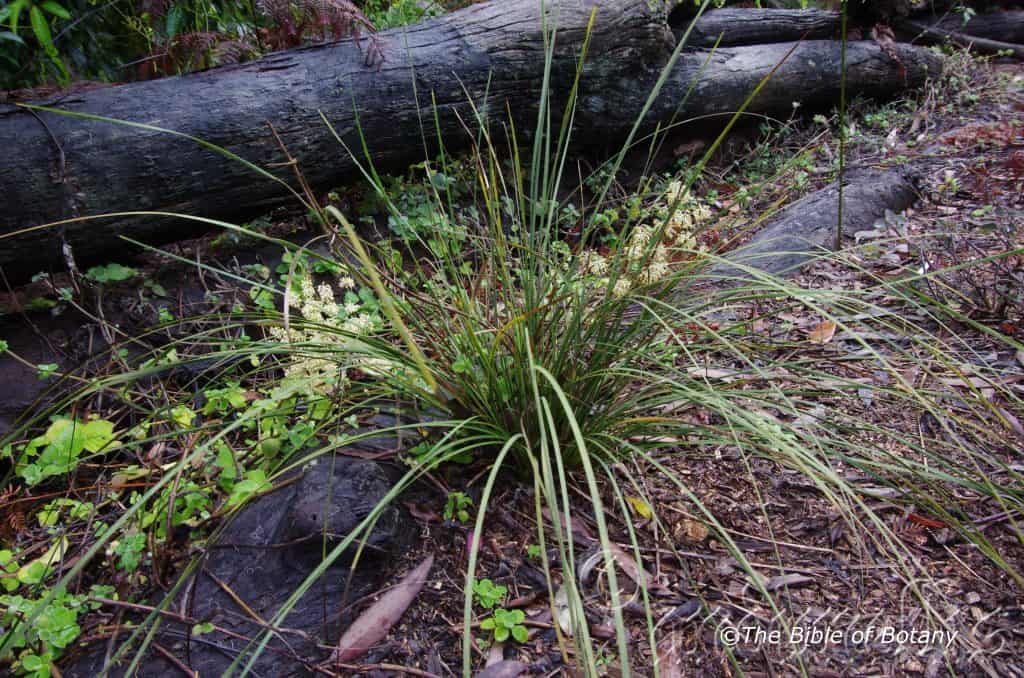
Author’s Garden The Pinnacles NSW

Author’s Garden The Pinnacles NSW
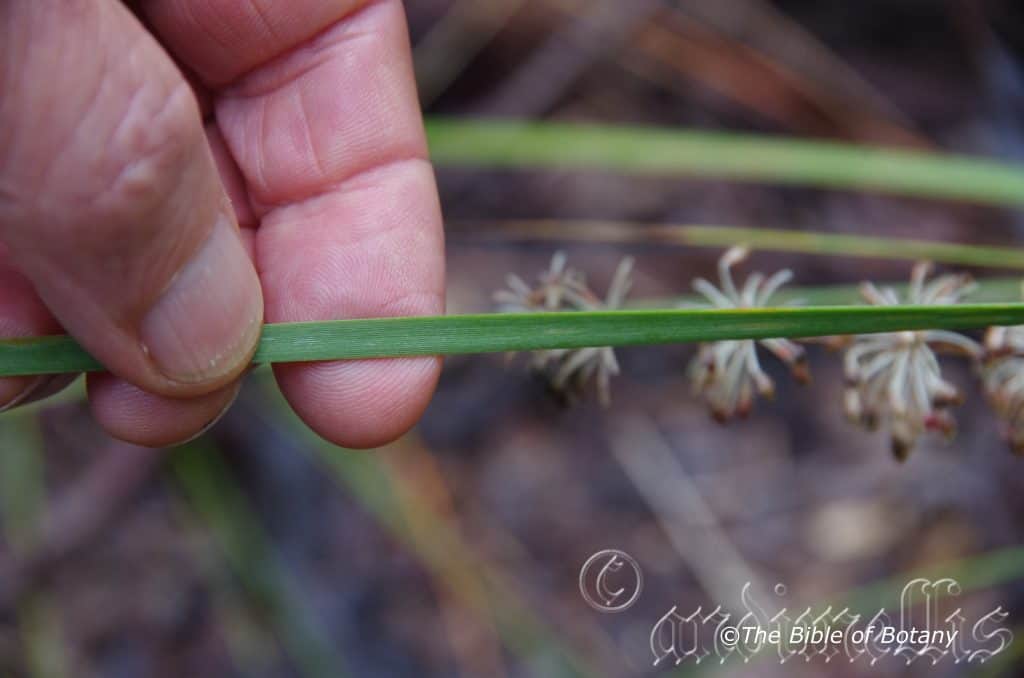
Author’s Garden The Pinnacles NSW

Pillar Valley NSW
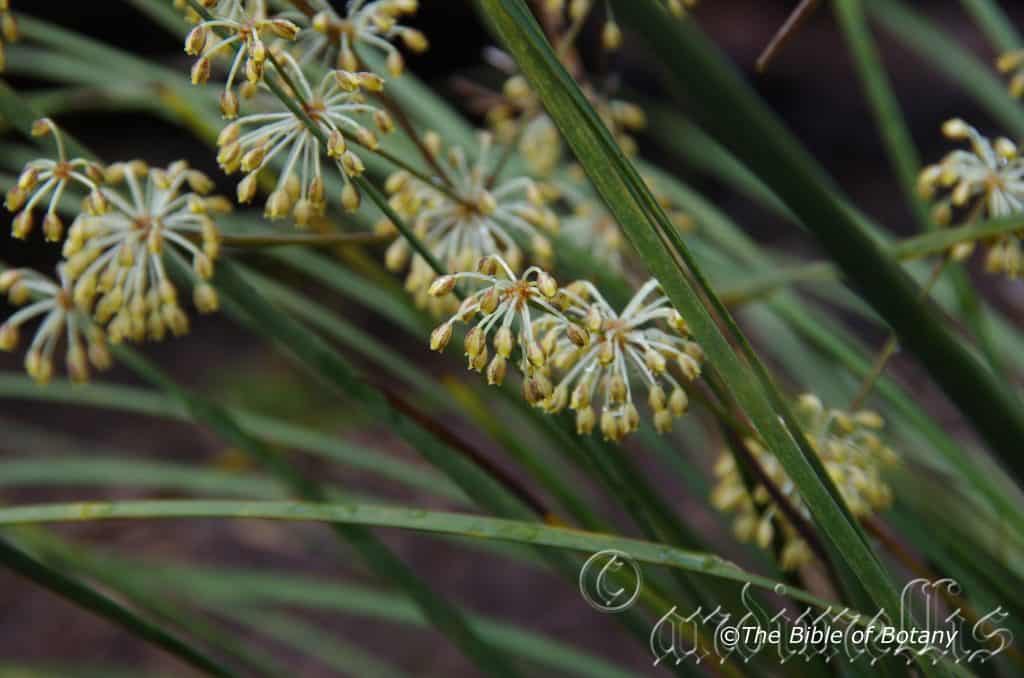
Author’s Garden The Pinnacles NSW
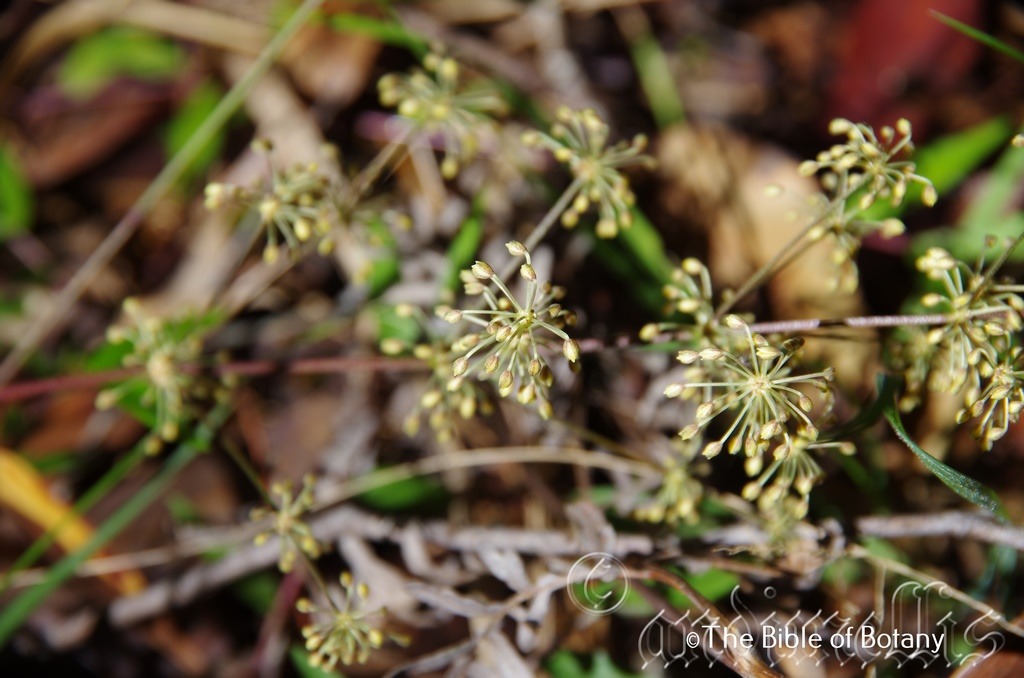
Male Flowers Fortis Creek National Park NSW
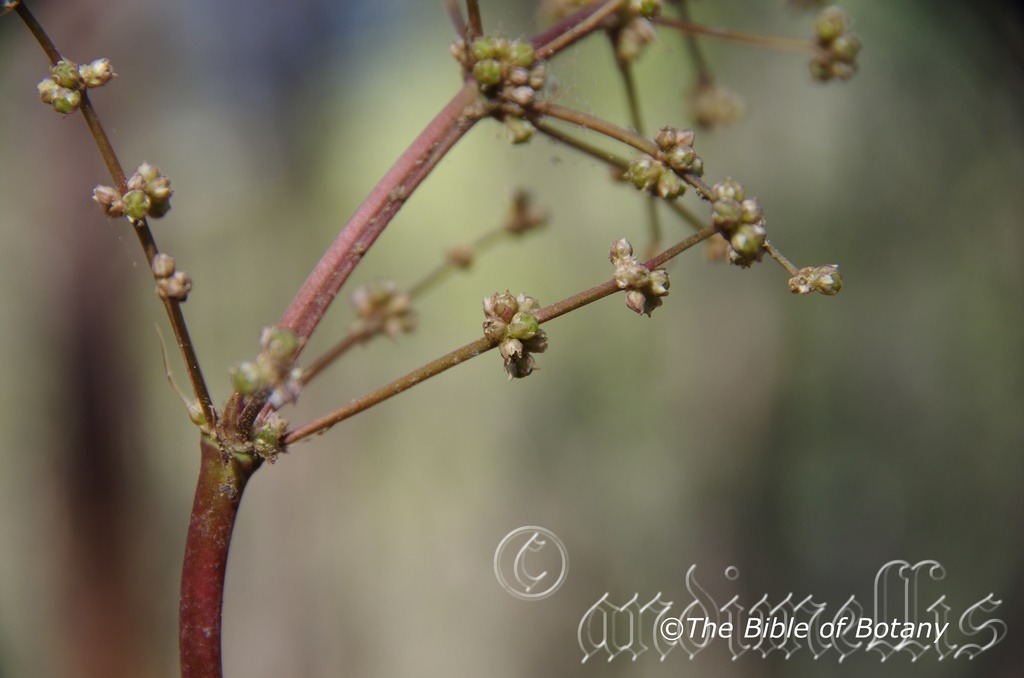
Fortis Creek National Park NSW
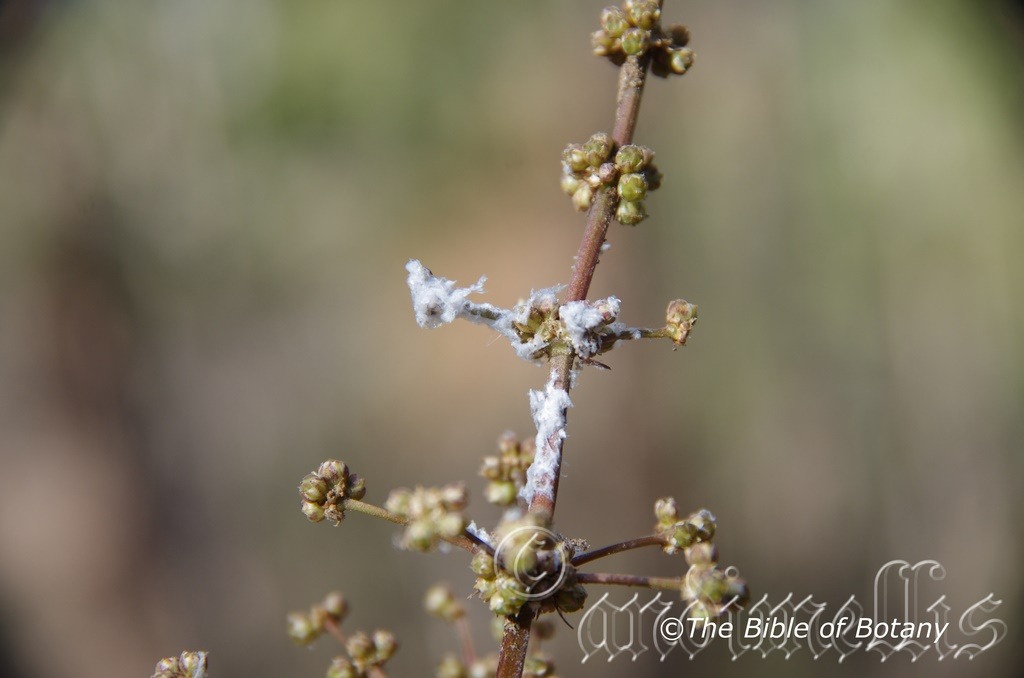
Fortis Creek National Park NSW
Lomandra multiflora
Classification:
Unranked: Traceobionta
Division: Magnoliophyta
Class: Magnoliopsidas
Sub Class: Liliidalae
Order: Asparagales
Family: Laxmanniaceae
Genus: From Loma, which is Ancient Greek for on the edge or border and Andros, which is Ancient Greek for a man. It refers to a fringed ring around the anthers in the flowers.
Specie: From Melior/Mála, which are Ancient Greek for many, much or a lot and Flora which is Latin for a flower or Flos, which is Roman for the goddess of flowers and Spring. It refers to plants, which bear large numbers of Flowers or many flowers from each spike.
Sub species:
Common Name: Mat Rush.
Distribution:
Lomandra multiflora is found in the eastern half of the Australian mainland. It becomes more common as it approaches the coast.
It is also found in the southern coastal areas of New Guinee.
https://avh.ala.org.au/occurrences/search?taxa=Lomandra+muultiflora#tab_mapView
Habitat Aspect Climate:
Lomandra multiflora prefers light dappled shade to full sun. It grows in riparian zones, ephemeral creeks, alluvial plains in most types of coastal or lowland rainforests, moist forests, moist open woodlands. The altitude ranges from 5 meters ASL to 1500 meters ASL
The temperatures range from minus 8 degrees in August to 46 degrees in January.
The rainfalls range from lows of 350mm to an average of 3200mm however the plants derive additional moisture through capillary action from water below the dry creek beds and marshes.
Soil Requirements:
Lomandra multiflora prefers to grow on deeper sandy loams to gravely sands and gravelly light clays. The soils are usually derived from decomposed sandstone and granites but can include brown basalt, black basalt, shale, or metamorphic rocks and shales. The soils pH. ranges from 4.5pH to 8pH. It tolerates seasonal water logged soils. Non saline soils to moderately saline soils are tolerated as are salt laden winds.
Height & Spread:
Wild Plants: 400mm to 850mm by 600mm to 900mm.
Characteristics:
Lomandra multiflora’s glabrous stems are mid green to 600mm in length.
Lomandra multiflora’s flat, slightly concavo, occasionally plano-convex or rarely terete leaves measure 250mm to 850mm in length by 1.5mm to 3mm in width. The sheath sheath margins entire or with little laceration, white, purplish or brown. The slightly discolourous or concolourous laminas are smooth, green, greyish green or rarely glaucous on the upper lamina, while the lower lamina maybe slightly paler and somewhat scabrid. The margins are entire. The mid vein is absent.
The apex and margins are entire.
The male inflorescence are 1 or 2 branched or rarely unbranched. The terete scape is shorter than the rachis, while the flower clusters are in whorls. The pedicels measure 3mm to 8mm in length and exceed the bracts at anthesis.
The female inflorescence are similar except they are unbranched, with the individual flowers being larger and are sessile. The flowers appear from September to November but following ideal conditions may be from May to December.
Lomandra multiflora’s fruits are small, globular to trigonous capsules.
The seeds are globose to ellipsoidal.

Wildlife:
Lomandra multiflora’s wildlife includes the butterflies, Trapezites eliena, Trapezites iacchus, Trapezites lutea, Trapezites maheta and Trapezites petalia despite the numbers damage is always superficial.
www.lepidoptera.butterflyhouse.com.au
Cultivation:
Few Lomandra species are seen in cultivation and Lomandra multiflora is one of those that should be more widely cultivated.
It makes an excellent small rockery plant especially in areas where light shade occurs. Its more open spreading habit allows better viewing of its flowers. It is very suitable on variable soils that can be very wet to very dry of a 12 month period. It is most suitable for small, medium and large gardens close to the coast in sub tropical gardens or tropical gardens and would be worthwhile trying in semi-arid zones. As a garden subject it will grow from 500m to 700mm by 800mm to 1400mm wide. It is cold tolerant to temperatures at least as low as minus 8 degrees once established. With this variation in mind plants should be sourced from local gene pools to ensure hardiness and compatibility to your area.
It is most suitable for use around swimming pools, courtyards, besides pathways, shady rockeries, along sandy clay banks or along drive ways or adjacent to natural bush gardens. Mass plantings of 5 or more plants even in small areas; really do the plants justification especially when it is in fruit. Larger fish or frog ponds will benefit from Lomandra spicata. When mass planting, the perfume from the male flowers is noticeable on warm still days. Cut flowers last for long periods indoors as does the scent and it can be used in dried flower arrangements to great effect.
If it is placed around a pool, courtyards or other confined spaces then plant them in small groups or scatter plant them for a more informal natural look against walls to help soften them. Using rocks and small boulders can make the pool or any water feature appear like an oasis. The leaves and flowers can make a great start for the larger wallum, mangrove or swamp setting.
If companion plants are sought then the choice of plants to use either side is limited only by size of the area to be landscaped and the size of the other plants as they should be no more than 200mm in height to emphasize the Lomandra or plant them below trees for a natural bush setting.
It is great to break up horizontal lines along driveways. They can be used to great affect where a dry creek bed is the theme by using them to mark out the banks. They can be used to stabilize banks along creeks and streams or to help soak up water in wet areas.
Propagation:
Seeds:
Lomandra multiflora seeds can be sown directly into a seed raising mix. Cover the seeds with 5mm to 10mm of fine weed free mulch and keep moist. Place the tray in a warm sunny position.
When the seedlings are 30mm to 50mm tall, prick them out and plant them into 50mm native tubes using a good organic mix.
Once the seedlings reach 100mm to 150mm in height they can be planted out into their permanent position.
Fertilize using seaweed, fish emulsion or organic chicken pellets soaked in water on an alternate basis. Fertilize every two months until the plants are established then twice annually in early September or March to maintain health, vitality and better flowering.
Division:
Division is a good method to grow small numbers of plants which mature very quickly.
1. Do not water before you start.
2. Cut back foliage to around 70mm to 100mm in length,
3. Use a garden fork or shovel to dig around the clump you want to divide (about 100mm to 150mm greater circumference than the bulbs),
4. Lift the whole of the root ball out of the ground,
5. Remove excess soil by shaking. If the soil is hard allow to sit in a container of water for 15 minutes to half an hour. Repeat the shaking in the water and hose off excess soil,
6. Once the roots can be seen clearly it is easier to pry and split the clump apart.
7. Leave a small number of clumps in each new division,
8. Replant in the prepared bed using half a hand full of blood and bone in the hole and mix,
9. Level off at the same level the bulbs were at the start.
10. Fertilize using seaweed, fish emulsion or organic chicken pellets soaked in water on an alternate basis. Fertilize every two months until the plants are established then twice annually in early September or March to maintain health, vitality and better flowering.
Further Comments from Readers:
“Hi reader, it seems you use The Bible of Botany a lot. That’s great as we have great pleasure in bringing it to you! It’s a little awkward for us to ask, but our first aim is to purchase land approximately 1,600 hectares to link several parcels of N.P. into one at The Pinnacles NSW Australia, but we need your help. We’re not salespeople. We’re amateur botanists who have dedicated over 30 years to saving the environment in a practical way. We depend on donations to reach our goal. If you donate just $5, the price of your coffee this Sunday, We can help to keep the planet alive in a real way and continue to bring you regular updates and features on Australian plants all in one Botanical Bible. Any support is greatly appreciated. Thank you.”
In the spirit of reconciliation we acknowledge the Bundjalung, Gumbaynggirr and Yaegl and all aboriginal nations throughout Australia and their connections to land, sea and community. We pay our respect to their Elders past, present and future for the pleasures we have gained.

NCBG Coffs Harbour NSW

NCBG Coffs Harbour NSW

Author’s Garden The Pinnacles NSW

NCBG Coffs Harbour NSW

NCBG Coffs Harbour NSW

Author’s Garden The Pinnacles NSW
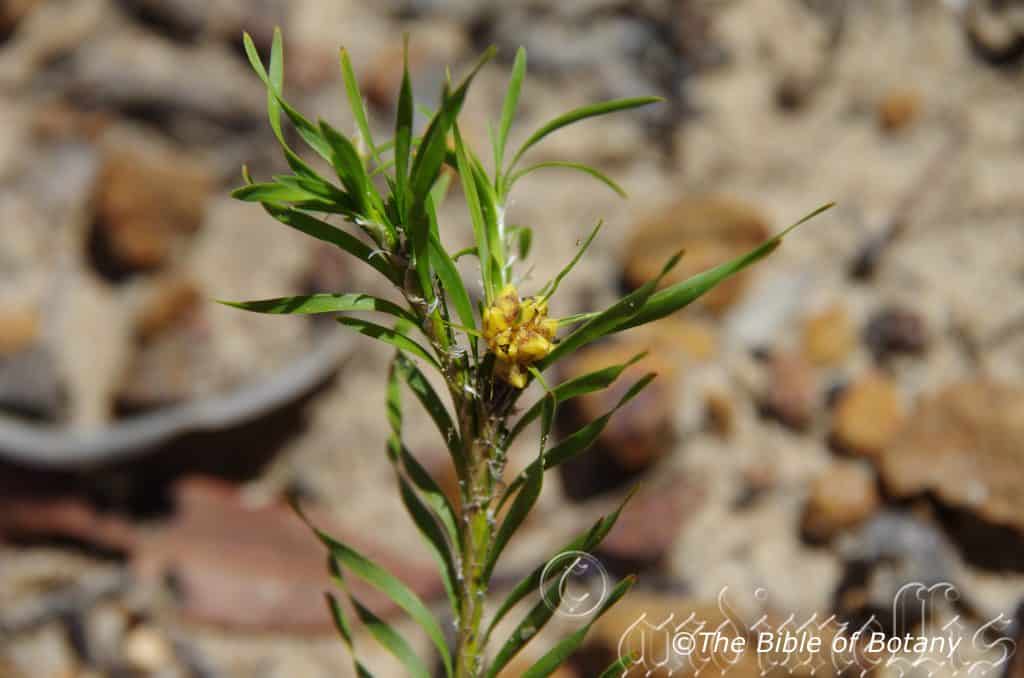
Author’s Garden The Pinnacles NSW

NCBG Coffs Harbour NSW
Lomandra obliqua
Classification:
Unranked: Traceobionta
Division: Magnoliophyta
Class: Magnoliopsidas
Sub Class: Liliidalae
Order: Asparagales
Family: Laxmanniaceae
Genus: From Loma, which is Ancient Greek for on the edge or border and Andros, which is Ancient Greek for a man. It refers to a fringed ring around the anthers in the flowers.
Specie: From Obliquus, which is Latin for a slant or to slant. It refers to the angles at the base of leaves, which are different; that is to have the bases either side of the midvein same leaf not the same size.
Sub species:
Common Name: Twisted Blue Mat Rush.
Distribution:
Lomandra obliqua is found south from west of Rockhampton to Noosa in Queensland and from Pyriformis Floral Reserve and the Hawkesbury sandstones south to Jervis Bay in New South Wales.
https://avh.ala.org.au/occurrences/search?taxa=Lomandra+obliqua#tab_mapView
Habitat Aspect Climate:
Lomandra obliqua prefers light dappled shade to full shade. It grows in shallow depressions in most types of open forests or heath lands. The altitude ranges from 5 meters ASL to 540 meters ASL
The temperatures range from minus 3 degrees in August to 38 degrees in January.
The rainfalls range from lows of 500mm to an average of 120mm however the plants derive additional moisture through capillary action from water lying deeper below the dry creek beds and marshes.
Soil Requirements:
Lomandra obliqua prefers to grow on skeletal sands, sandy loams to light gritty clays close to the parent rock. The soils are usually derived from decomposed sandstones or granites. The soils pH. ranges from 4.5pH to 6pH. It does not tolerate water logged soils however seasonal flooding where the plants are partly submerged for short periods. Non saline soils to moderately saline soils are tolerated.
Height & Spread:
Wild Plants: 150mm to 300mm by 200mm to 400mm.
Characteristics: The stems are mid green to 100mm in length. The plants are easily distinguished by the leaves being produced in a whorl around the extensively branched stems.
The long linear leaves measure 20mm to 40mm in length by 1mm to 2mm in width in the southern plants while the northern plants in Queensland show some dimorphism with leaves to 150mm in length by 1mm to 2mm in width. The base forms a white smooth sheath. The sheath is intact while the apex has an asymmetrical cuspidate tip which is slightly pungent. The twisted concolourous laminas are pale blue-green to green, dull and glabrous. The margins are entire. The mid vein is absent however the longitudinal veins are visible.
The inflorescence is unisexual and is born on a spike which is much shorter than the leaves near the terminal point. The spike is born singularly from the leaf sheath and measures 20mm to 100mm in length. The bracts are clustered beneath the flowers. The flowers are either cylindrical or ellipsoidal and are held on to by a 1mm to 1.5mm pedicle.
The male flowers are hidden amongst the leaves on short spikes and measure 30mm to 90mm in length. The cluster bracts are straw coloured and measure 20mm to 30mm in length. The perianth on the male flowers measures 2mm to 2.5mm in length while the female perianths measure 3mm to 5mm in length. The outer tepals on the male flowers measure 2mm to 3mm in length while the inner tepals are slightly shorter. The six stamens are attached to the inner tepals. The filaments measure 2mm to 3mm in length. The filaments are white while the anthers are cream. The female flowers are in globose heads which measure 6mm to 9mm in diameter. The female tepals measure 2.5mm to 3mm in length and has 6 staminodes. The shorter 3 staminodes are alternate to the inner tepals while the longer 3 are opposite the inner tepals. The 3 locular stigmas is green while the outer tepals on both the male flowers are semi glossy creamy purple to pale yellow and the inner tepals are dull cream to pale dull yellow while the female flowers are yellow. The plants commence flowering when it is quite small with the flowers appearing from late August to mid-November.
The fruits are small, globular to trigonous capsules.
The seeds are globose to ellipsoidal.

Wildlife:
Lomandra obliqua’s wildlife includes the Southern Silver Ochre butterfly (Trapezites praxedes).
www.lepidoptera.butterflyhouse.com.au
Cultivation:
Lomandra obliqua makes an excellent small rockery plant. They always look green and fresh especially where adequate ground moisture is retained whether it is grown in light shade or full sun. It is very suitable on sandy soils, medium clays and laterites. It is most suitable for small and medium gardens close to the coast in temperate, sub tropical, tropical or arid gardens. As garden subjects they will grow from 150m to 200mm in height by 300mm to 350mm in diameter. It is cold tolerant to temperatures at least as low as minus 5 degrees once established.
It is most suitable for use around swimming pools, courtyards, besides pathways, shady rockeries, along sandy clay banks or along drive ways or adjacent to natural bush gardens. Mass plantings of 7 or more plants even in small areas; really do the plants justification especially when it is in flower. Medium fish or frog ponds will benefit from Lomandra obliqua. When mass planting, the leaf colour is a real highlight contrasting brown red or cream rocks and paving bricks.
If it is placed around a pool, courtyards or other confined spaces then plant them in small groups or scatter plant them for a more informal natural look against walls to help soften them. Using rocks and small boulders can make the pool or any water feature appear like an oasis. The leaves and flowers can make a great start for the smaller heath or desert setting. When making a desert scene using Lomandra obliqua use either large rocks with few to many plants or in a sandy desert plant them sparingly with plantings becoming more densely planted adjacent to the water feature. Be careful not to over plant as they will look out of place and weedy.
They look good inner planted in small groups between taller Lomandra like Lomandra banksii provided plenty of space is made between the plants.
If companion plants are sought then the choice of plants to use either side is limited by size of the area to be landscaped and the size of the other plants as they should be no more than 100mm in height to emphasize the Lomandra. Use plants with different foliage shapes and colours. Use a mixture of plants and allow the glaucous narrow leaves of Lomandra oblique to dominate the scene. Sparse planting of all species is a necessity to achieve a desert scene as you want the plants as well as the rocks or sand to balance equally.
It is great to break up hard horizontal lines along narrow driveways. They can be used to great affect where a miniature dry creek bed is the theme by using them to mark out the banks. I have used this plant effectively in place of spinifex to attain the same affect but on a smaller scale.
Propagation:
Seeds: Lomandra obliqua seeds can be sown directly into a seed raising mix. Cover the seeds with 5mm to 10mm of fine weed free mulch and keep moist. Place the tray in a warm sunny position. When the seedlings are 30mm to 50mm tall, prick them out and plant them into 50mm native tubes using a good organic mix.
Once the seedlings reach 100mm to 150mm in height they can be planted out into their permanent position.
Fertilize using seaweed, fish emulsion or organic chicken pellets soaked in water on an alternate basis. Fertilize every two months until the plants are established then twice annually in early September or March to maintain health, vitality and better flowering.
Further Comments from Readers:
“Hi reader, it seems you use The Bible of Botany a lot. That’s great as we have great pleasure in bringing it to you! It’s a little awkward for us to ask, but our first aim is to purchase land approximately 1,600 hectares to link several parcels of N.P. into one at The Pinnacles NSW Australia, but we need your help. We’re not salespeople. We’re amateur botanists who have dedicated over 30 years to saving the environment in a practical way. We depend on donations to reach our goal. If you donate just $5, the price of your coffee this Sunday, We can help to keep the planet alive in a real way and continue to bring you regular updates and features on Australian plants all in one Botanical Bible. Any support is greatly appreciated. Thank you.”
In the spirit of reconciliation we acknowledge the Bundjalung, Gumbaynggirr and Yaegl and all aboriginal nations throughout Australia and their connections to land, sea and community. We pay our respect to their Elders past, present and future for the pleasures we have gained.
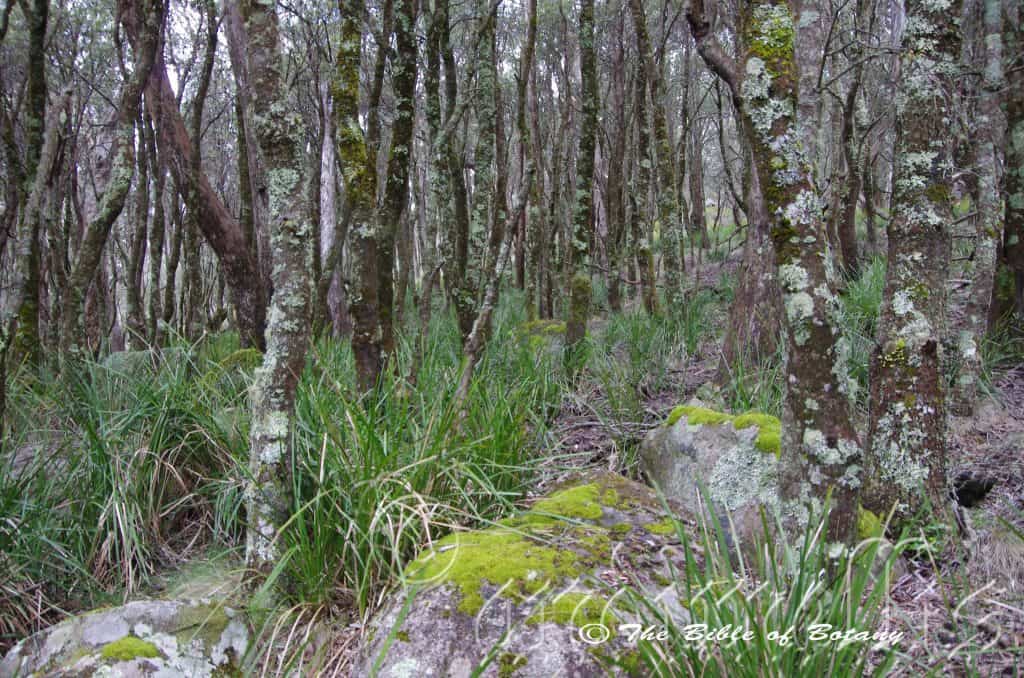
Cathedral Rocks National Park Ebor NSW

Cathedral Rocks National Park Ebor NSW

Cathedral Rocks National Park Ebor NSW
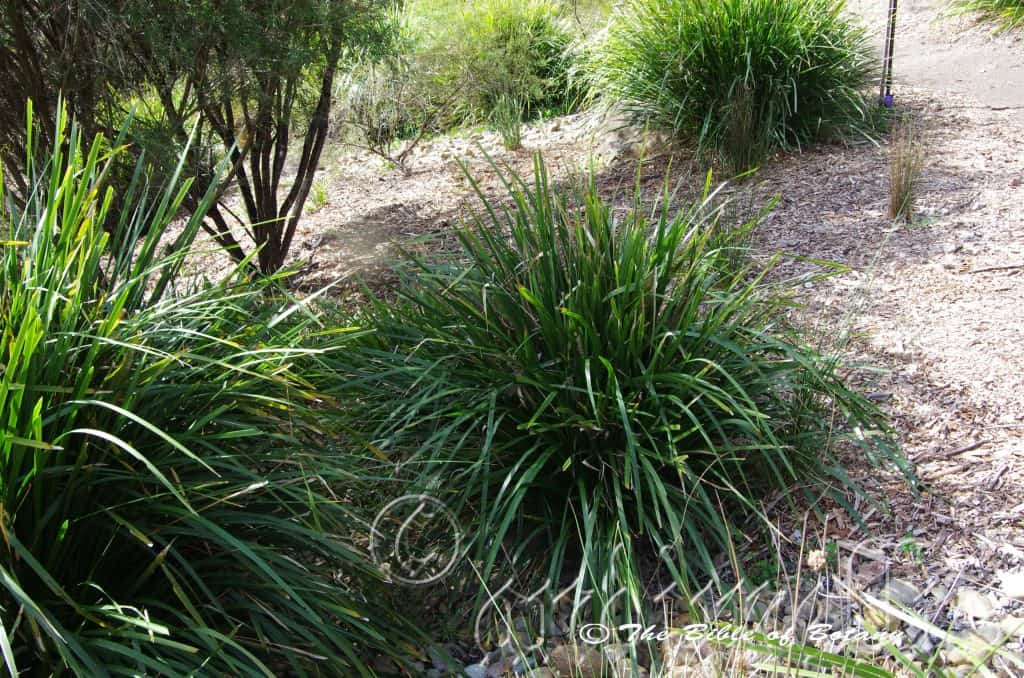
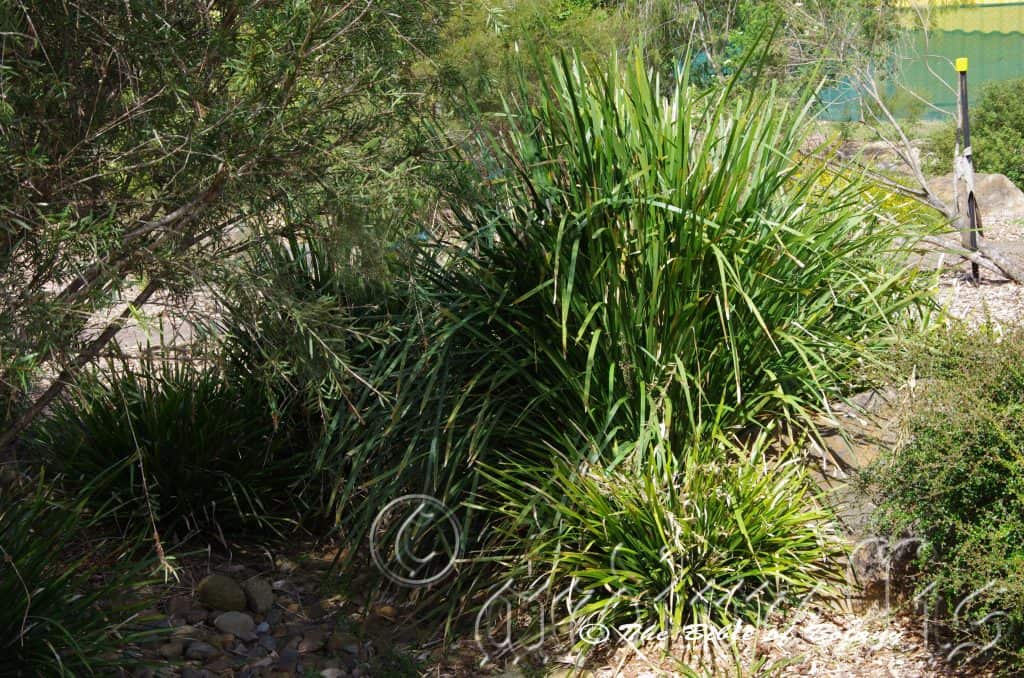
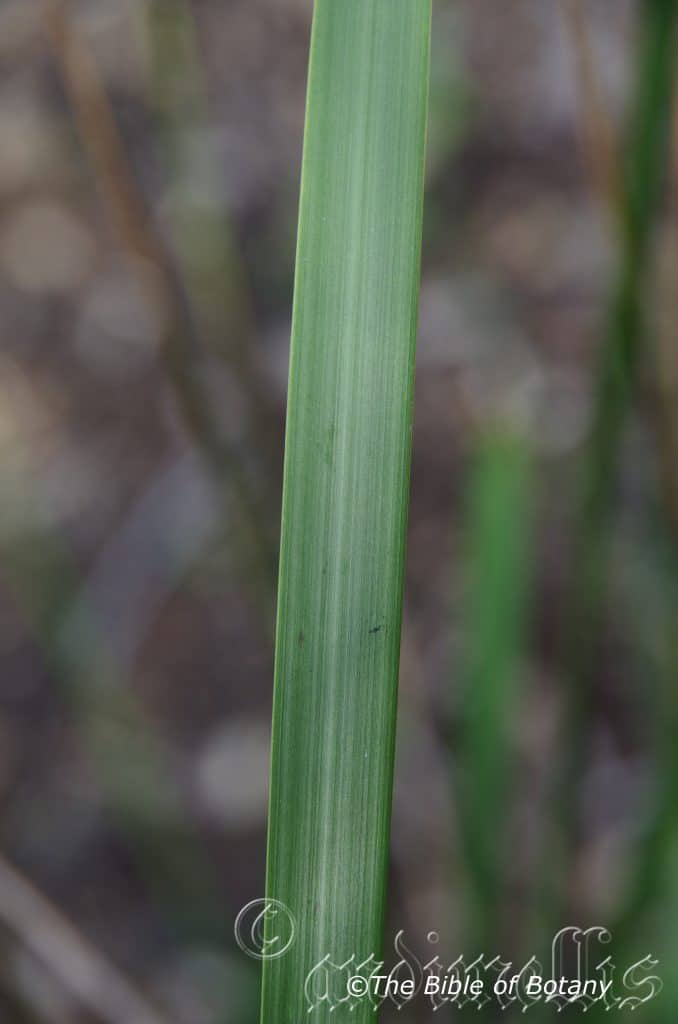
Cathedral Rocks National Park Ebor NSW

Cathedral Rocks National Park Ebor NSW
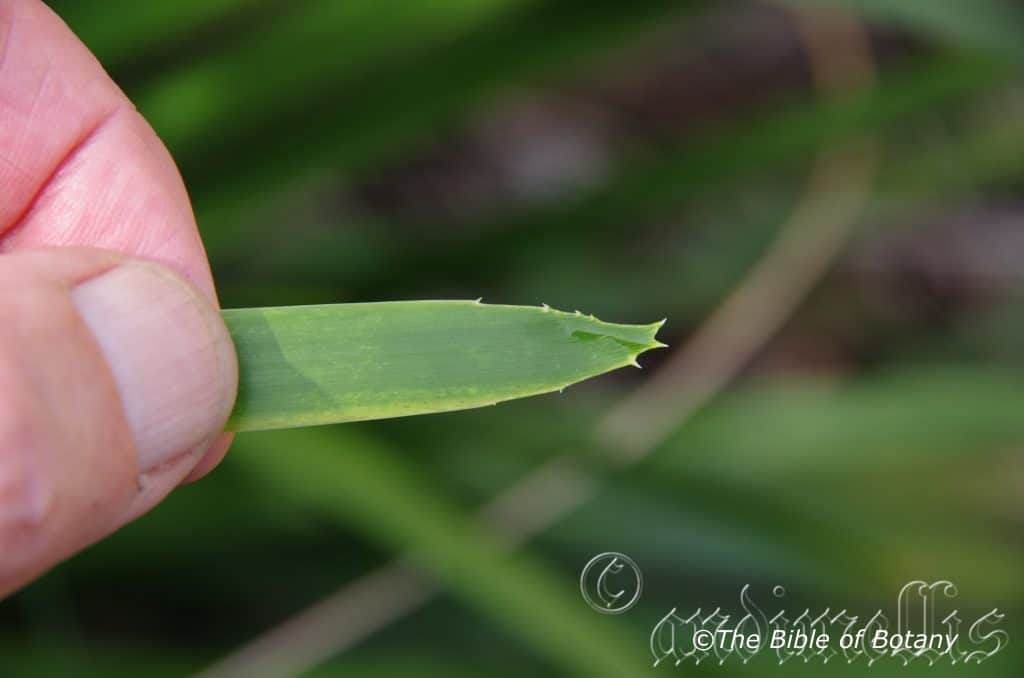
Cathedral Rocks National Park Ebor NSW


Point Lookout Ebor NSW
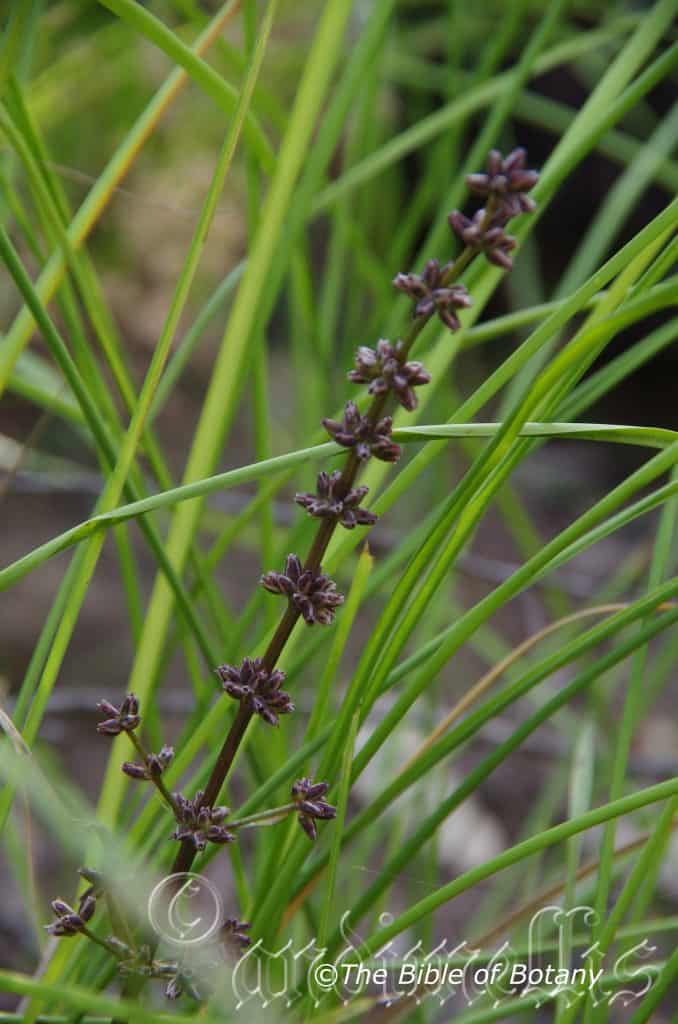
Mount Barney Qld.
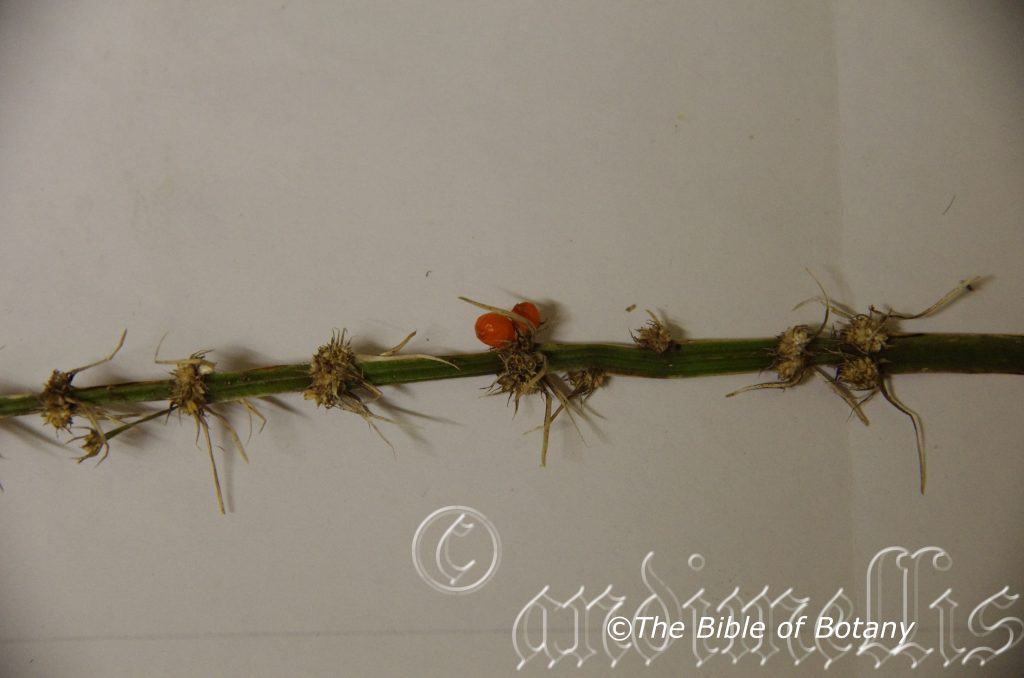
Point Lookout Ebor NSW
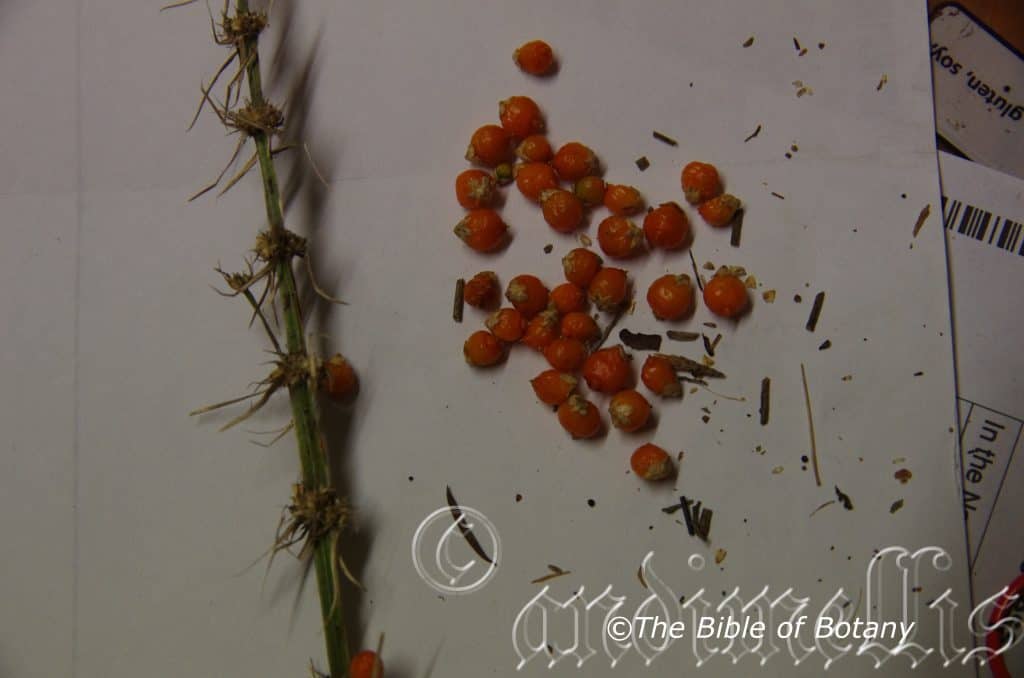
Point Lookout Ebor NSW
Lomandra spicata
Classification:
Unranked: Traceobionta
Division: Magnoliophyta
Class: Magnoliopsidas
Sub Class: Liliidalae
Order: Asparagales
Family: Laxmanniaceae
Genus: From Loma, which is Ancient Greek for on the edge or border and Andros, which is Ancient Greek for a man. It refers to a fringed ring around the anthers in the flowers.
Specie: From Spicatus, which is Latin for a spike. It refers to flowers, which are born on spikes.
Sub species:
Common Name: Mat Rush.
Distribution:
Lomandra spicata is found in 6 disjunct populations from south of Cardwell in Queensland to the sandstone cliffs west of Newcastle on Mount Royal in New South Wales.
https://avh.ala.org.au/occurrences/search?taxa=Lomandra+spicata#tab_mapView
Habitat Aspect Climate:
Lomandra spicata prefers light dappled shade to full shade. It grows along creeks alluvial plains in most types of coastal or lowland rainforests. The altitude ranges from 15 meters ASL to 1300 meters ASL
The temperatures range from minus 3 degrees in August to 38 degrees in January.
The rainfalls range from lows of 750mm to an average of 2800mm however the plants derive additional moisture through capillary action from water lying deeper below the dry creek beds and marshes.
Soil Requirements:
Lomandra spicata prefers to grow on better quality deeper loams to medium clays. The soils are usually derived from decomposed sandstone, brown basalt, black basalt, shale, or metamorphic rocks. The soils pH. ranges from 5pH to 6.5pH. It does not tolerate water logged soils. Non saline soils to moderately saline soils are tolerated.
Height & Spread:
Wild Plants: 400mm to 750mm by 700mm to 900mm.
Characteristics:
Lomandra spicata’s glabrous stems are mid green to 100mm in length.
Lomandra spicata’s long linear leaves measure 400mm to 800mm in length by 5mm to 12mm in width. The base forms a pastel brown to deep reddish-brown smooth sheath. The sheath is intact while the sheath remains intact while the apex is broad rounded with 3 small lateral teeth. The concolourous laminas are mid grass-green dull or semi glossy and glabrous. The margins are entire. The mid vein is absent.
The inflorescence of Lomandra spicata is unisexual and is born on a long flattened 80mm to 150mm peduncle. The male spikes are unbranched or if branched only near the base of the spike. The spike is at least twice as long as the rachis. The female spikes are unbranched. The flowers appear in whirls along the flattened rachis and spikes. The spikes are born singularly from the base of the leaf sheath. The rachis measure 350mm to 750mm in length by 28mm to 36mm in diameter. The long linear cluster bracts measure 5mm to 18mm in length.
The petals on the male flowers measure 3mm to 3.5mm in length while the sepals are slightly shorter. The filaments measure 1mm and 1.5mm in length. The filaments are white while the anthers are yellow. The 4.5mm to 5mm diameter female flowers have a 3 locular ovary which is surrounded by six dimorphic staminodes. The shorter 3 stamens are alternate to the inner tepals while the longer 3 are opposite the inner tepals. The 3 locular stigmas are green while the sepals on both the male and female flowers are glossy, scarious purple or yellow and the petals are dull cream to dull yellow. The plants commence flowering when it is quite small with the flowers appearing from late August through to late November.
Lomandra spicata’s fruits are small, globular to trigonous capsules.
The seeds are globose to ellipsoidal.

Wildlife:
Lomandra spicata’s wildlife is unknown to the author.
Cultivation:
At first glance this species is easily confused with Lomandra hystrix and Lomandra longifolia however the leaf apexes are very different. Note the diagram plus it is shorter than Lomandra hystrix and the leaves are narrower than both Lomandra hystrix and Lomandra longifolia.
Lomandra spicata makes an excellent rockery plant especially in areas where dense shade occurs. They always look green and fresh especially where adequate ground moisture is retained whether it is grown in shade or full sun. It is very suitable on water logged acid soils. It is most suitable for small, medium and large gardens close to the coast in sub tropical gardens or tropical gardens and would be worthwhile trying in semi-arid zones. As garden subjects they will grow from 1000m to 1300mm by 1000mm to 1400mm wide. It is cold tolerant to temperatures at least as low as minus 5 degrees once established.
It is most suitable for use around shaded swimming pools, courtyards, besides pathways, shady rockeries, along sandy clay banks or along drive ways or adjacent to natural bush gardens. Mass plantings of 5 or more plants even in small areas; really do the plants justification especially when it is in fruit. Larger fish or frog ponds will benefit from Lomandra spicata. When mass planting, the perfume from the male flowers is noticeable on warm still days. Cut flowers last for long periods indoors as does the scent and they can be used in dried arrangements to great effect.
If it is placed around a pool, courtyards or other confined spaces then plant them in small groups or scatter plant them for a more informal natural look against walls to help soften them. Using rocks and small boulders can make the pool or any water feature appear like an oasis. The leaves and flowers can make a great start for the larger wallum, mangrove or swamp setting.
If companion plants are sought then the choice of plants to use either side is limited only by size of the area to be landscaped and the size of the other plants as they should be no more than 200mm in height to emphasize the Lomandra or plant them below trees for a natural bush setting.
It is great to break up horizontal lines along driveways. They can be used to great affect where a dry creek bed is the theme by using them to mark out the banks. They can be used to stabilize banks along creeks and streams or to help soak up water in wet areas.
Propagation:
Seeds: Lomandra spicata seeds need to be treated for best results. Place the seeds in a small calico bag with clean, sharp sand. Now place the bag into the washing machine with the weekly wash.
Sow the treated seeds into a good quality seed raising mix with 30mm perlite. Cover the seeds with 5mm to 10mm of fine weed free mulch and keep moist. Place the tray in a warm sunny position. When the seedlings are 30mm to 50mm tall, prick them out and plant them into 50mm native tubes using a good organic mix.
Once the seedlings reach 100mm to 150mm in height they can be planted out into their permanent position.
Division: Division is a good method to grow small numbers of plants which mature very quickly.
1. Do not water before you start.
2. Cut back foliage to around 70mm to 100mm in length,
3. Use a garden fork or shovel to dig around the clump you want to divide (about 100mm to 150mm greater circumference than the bulbs),
4. Lift the whole of the root ball out of the ground,
5. Remove excess soil by shaking. If the soil is hard allow to sit in a container of water for 15 minutes to half an hour. Repeat the shaking in the water and hose off excess soil,
6. Once the roots can be seen clearly it is easier to pry and split the clump apart.
7. Leave a small number of clumps in each new division,
8. Replant in the prepared bed using half a hand full of blood and bone in the hole and mix,
9. Level off at the same level the bulbs were at the start.
10. Fertilize using seaweed, fish emulsion or organic chicken pellets soaked in water on an alternate basis. Fertilize every two months until the plants are established then twice annually in early September or March to maintain health, vitality and better flowering.
Further Comments from Readers:
“Hi reader, it seems you use The Bible of Botany a lot. That’s great as we have great pleasure in bringing it to you! It’s a little awkward for us to ask, but our first aim is to purchase land approximately 1,600 hectares to link several parcels of N.P. into one at The Pinnacles NSW Australia, but we need your help. We’re not salespeople. We’re amateur botanists who have dedicated over 30 years to saving the environment in a practical way. We depend on donations to reach our goal. If you donate just $5, the price of your coffee this Sunday, We can help to keep the planet alive in a real way and continue to bring you regular updates and features on Australian plants all in one Botanical Bible. Any support is greatly appreciated. Thank you.”
In the spirit of reconciliation we acknowledge the Bundjalung, Gumbaynggirr and Yaegl and all aboriginal nations throughout Australia and their connections to land, sea and community. We pay our respect to their Elders past, present and future for the pleasures we have gained.
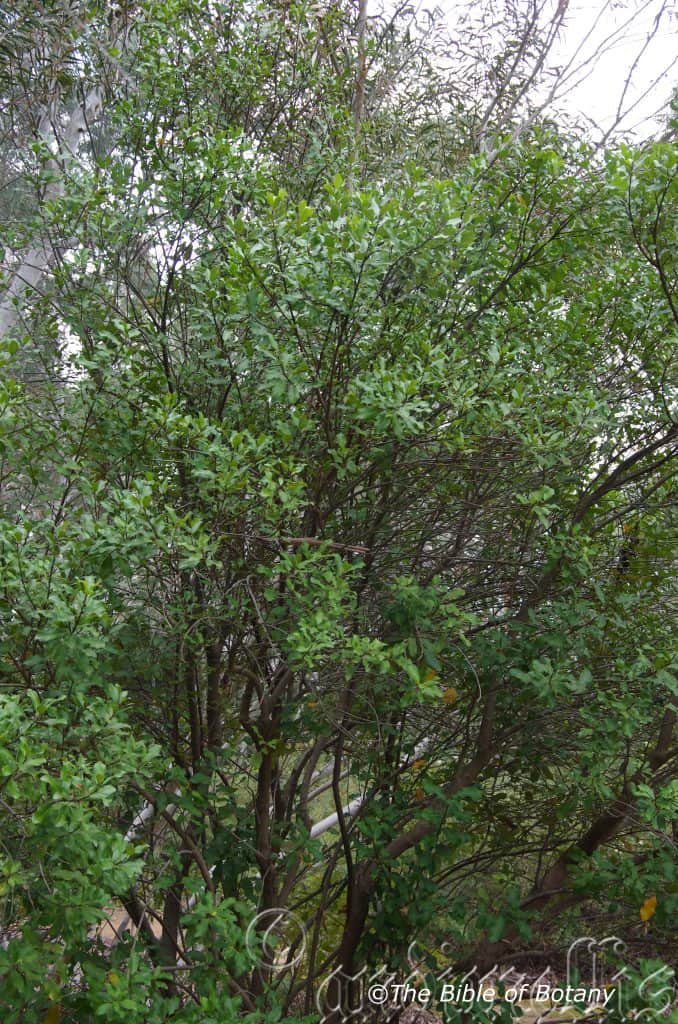
Canberra Botanic Gardens ACT
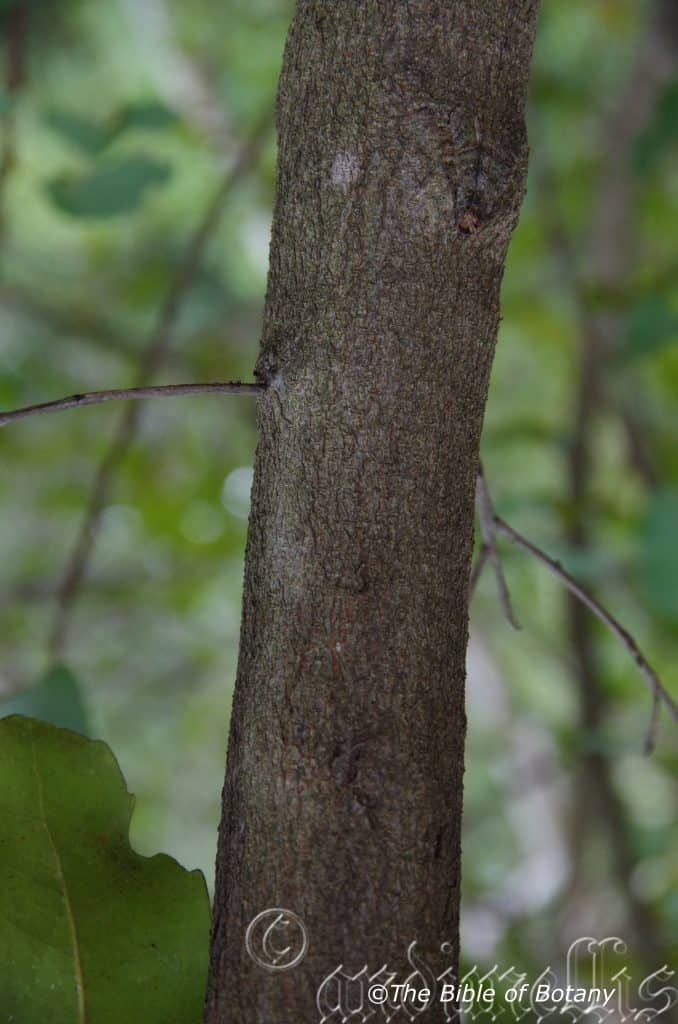
Canberra Botanic Gardens ACT
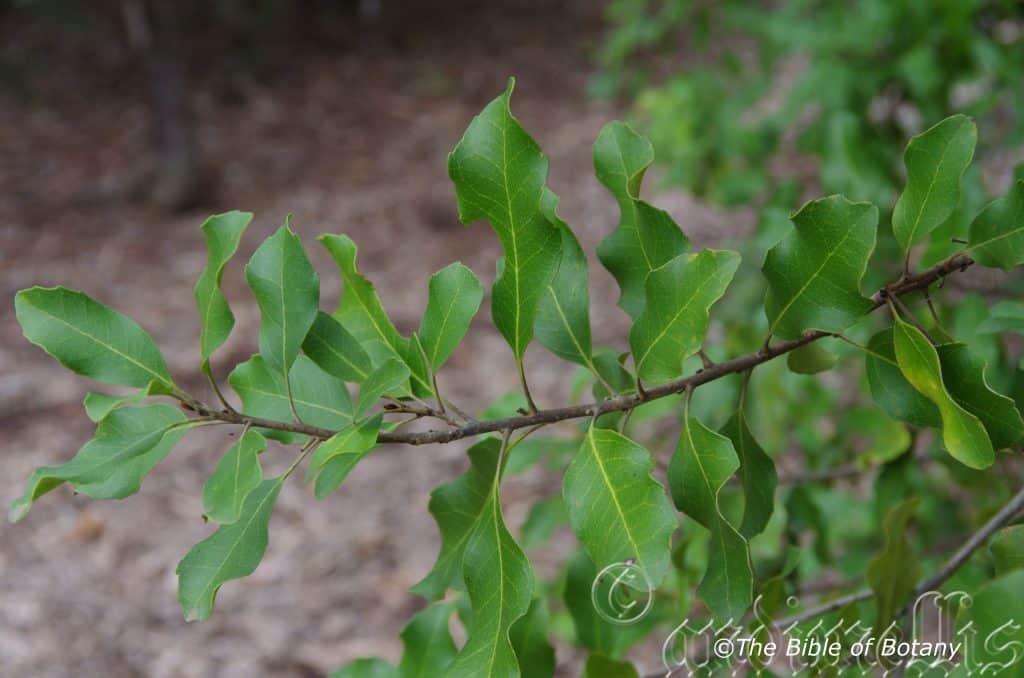
Canberra Botanic Gardens ACT
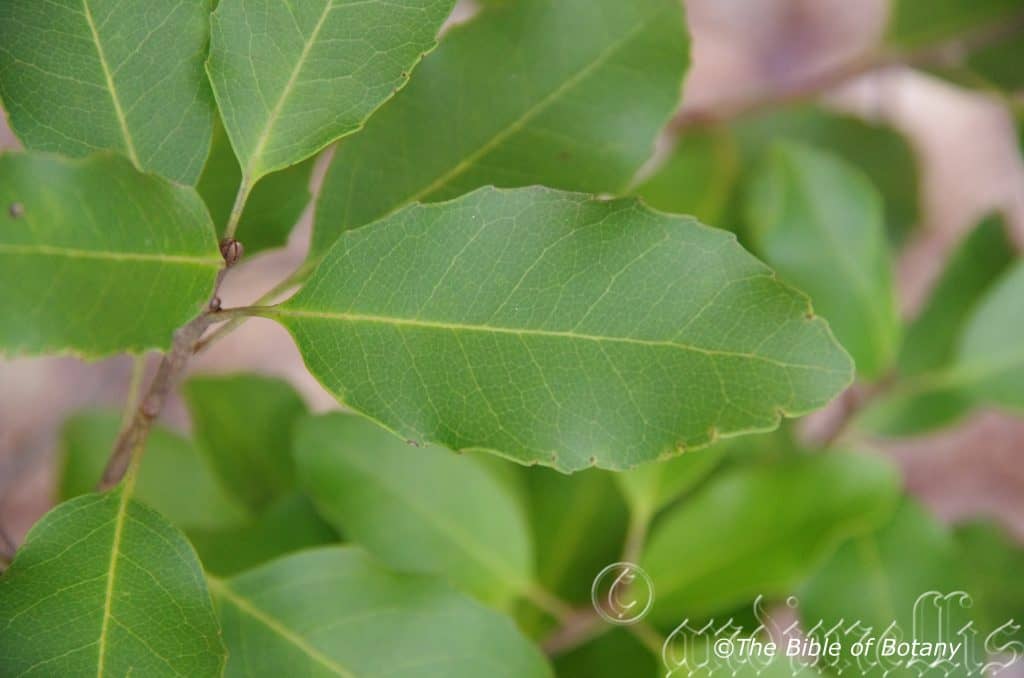
Canberra Botanic Gardens ACT
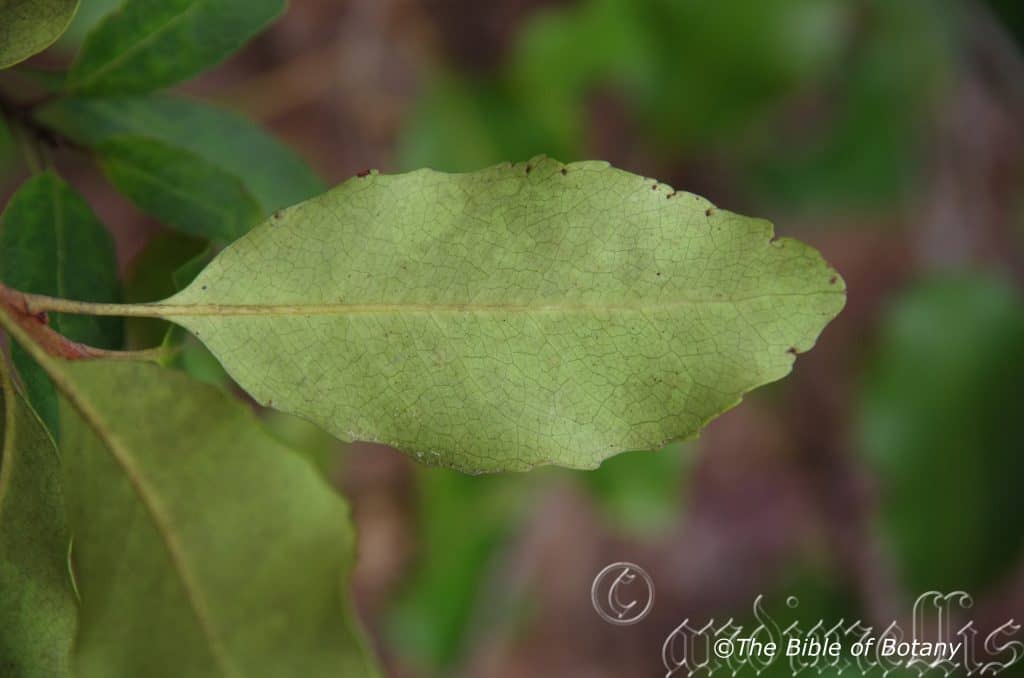
Canberra Botanic Gardens ACT

Canberra Botanic Gardens ACT
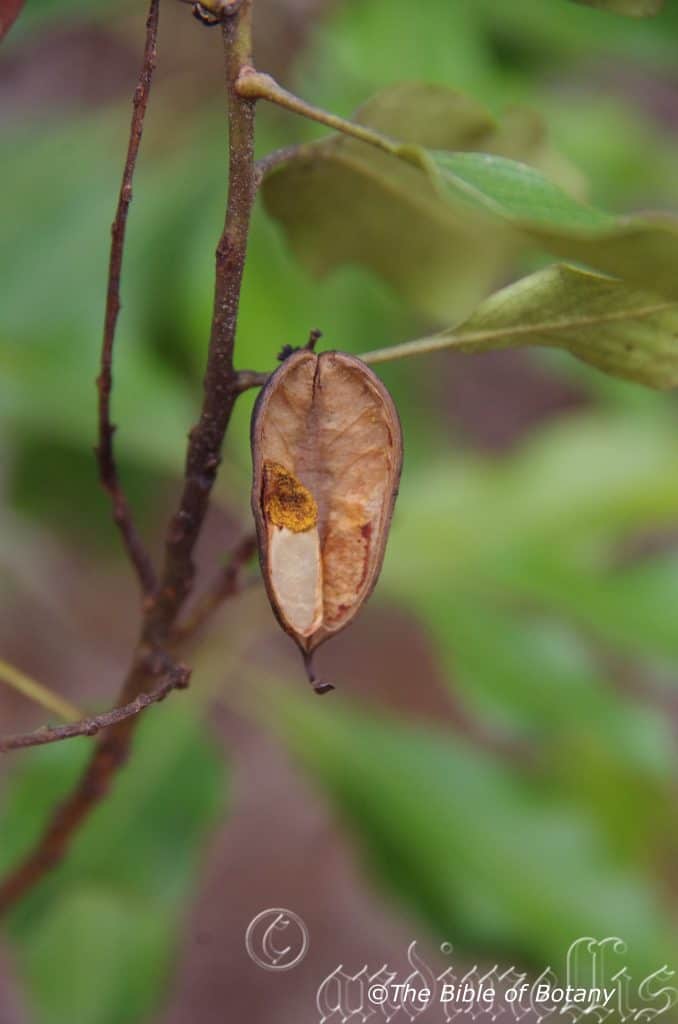
Canberra Botanic Gardens ACT
Lomatia arborescens
Classification:
Unranked: Eudicots
Order: Proteales
Family: Proteaceae
Genus: From Loma, which is Ancient Greek for an edge or border. It refers to a fringe along the edge of the wing on the seeds.
Specie: From Arborescent, which is Latin for a tree. It refers to plants, which are more tree like than other species in the genus.
Sub species:
Common Name: Tree Lomatia.
Distribution:
Lomatia arborescens is found in 2 distinct disjunct populations. The northern population is found in south eastern Queensland and north eastern New South Wales bounded by Cunningham’s Gap, the Acacia Plateau on the Macpherson Range, Whian Whian National Park and Springbrook.
The southern population is bounded by Mount Kaputar, the Liverpool Range, Carey’s peak on the Barrington Range and Robinson’s Knob west of Nambucca.
https://avh.ala.org.au/occurrences/search?taxa=Lomatia+arborescens#tab_mapView
Habitat Aspect Climate:
Lomatia arborescens prefers full sun to partial shade. It grows adjacent to cool temperate rainforests, cool subtropical rainforests and open woodlands at higher altitudes. The altitude ranges from 380 meters ASL to 1200 meters ASL
The temperatures range from minus 4 degrees in August to 38 degrees in January.
The rainfalls range from lows of 800mm to an average of 1950mm. All areas receive additional moisture through orographic precipitation.
Soil Requirements:
Lomatia arborescens prefers to grow on coarse sandy loams to medium gritty clays. The soils are derived from partially decomposed fatty granite or black basalts. The soils pH. ranges from 5.5pH to 7pH. It does not tolerate water logged soils. Non saline soils to slightly saline soils are tolerated.
Height & Spread:
Wild Plants: 3m to 10m by 4m to 6m.
Characteristics:
Lomatia arborescens grows as a medium tree with scabrous, mid grey-brown bark on the lower trunk and upper branches. The pale olive green branchlets are sparsely covered in fine rusty to rusty-brown puberulent hairs.
Lomatia arborescens’s alternate, ovate to lanceolate or oblong-elliptic leaves measure 30mm to 150mm in length by 15mm to 60mm in width. The petioles measure 10mm to 40mm in length. The bases are symmetrical or asymmetrical, cuneate, broad acute or narrow obtuse while the apexes are acute. The discolourous laminas are deep green to deep sea-green and glabrous on the upper laminas while the lower laminas are pale green to pale almost olive-green and dull. The laminas recurve strongly upwards from the mid vein to the margins while the margins are entire or crenate or coarsely toothed and at times undulate. The teeth are not pungent. The mid vein is strongly prominent on the lower lamina and is clearly visible on the upper lamina. The reticulate venation is slightly prominent on the lower lamina and is clearly visible from the upper lamina and is very slightly raised or flat on upper lamina.
The conflorescences of Lomatia arborescens are born on short loose racemes from the terminals or leaf axils. The racemes measure 80mm to 160mm in length by 20mm to 28mm in diameter. The racemes and pedicels are moderately covered in fine rusty to rusty-brown pulverulent hairs. The pedicels measure 5mm to 7.5mm in length. The pale cream, white to pastel green, glabrous perianths measure 5mm to 7mm in length by 1mm to 1.5mm in diameter. The 4 white, broad linear to oblong lobes with a spathulate strongly decurve to revolute apex and measure 5mm to 7mm in length by 1.5mm to 2mm in width. The lobes are free at anthesis.
There is 1 pale brown anther depressed into the flared apexes of the each perianth lobe and measure 0.8mm to 1mm in length. The stipitate pale lime-green pistil measures 3mm to 4mm in length while the white stipe measures 3mm to 4mm in length. The lateral circular pollen presenter is lime-green. The pastel lime-green ovary measures 1.3mm to 1.6mm in diameter. The flowers appear from October to February.
Lomatia arborescens’s fruits are ellipsoidal follicles. The follicles measure 25mm to 35mm in length by 12mm to 17mm in diameter. The grass-green follicles turn deep grey externally and smooth glabrous and fawnish-tan internally when ripe. The pistil is persistent on the ripe follicles. The obloidal-triangular flat grey-brown to black seeds have a thin chartaceous wing on one end and partially down one side.
The flat circular to oblong seeds measure 5mm to 9mm in length by 5mm to 8mm in width while the basal wing extends partially down one side and measures 15mm to 20mm in length by 6mm to 10.5mm in width. The seeds are often covered in a sulfurea-yellow powder.
Wildlife:
Lomatia arborescens’s flowers are fed upon by numerous nectar eating butterflies, native bees including Tetragonula carbonaria and the Blue banded bee Amegilla cingulata have both been seen foraging nectar from the flowers, native beetles and wasps.
Cultivation:
Lomatia arborescens should be cultivated further south where ever the exotic privets Ligustrum sinensis and Ligustrum lucidum are pests. It is suitable for small, medium and large gardens close to the coast in warm temperate, sub tropical or cool tropical gardens. As garden subjects they will grow from 8 meters to 10 meters in height by 4 meters to 6 meters in diameter when grown in the open. It is cold tolerant to temperatures at least as low as minus 5 degrees once established. It forms a beautiful well rounded canopy and will grow on poor soils even heavy clays given plenty of leaf mulch.
It would be particularly suitable for growing in riparian zones where restoration work is needed urgently especially where ever the exotic privets Ligustrum sinensis and Ligustrum lucidum are pests. I believe this species will outperform or at least perform equally well and compete with the two exotic pests. Pigeons eating the fruits are the main reason the exotic species has become a serious pest on farms. Mixed with Ligustrum australianum the pigeons will spread the seeds of Ligustrum australianum and the two will create enough competition to eventually help eliminate the exotic weeds.
It can be tip pruned if a large bushy shrub is required. It makes a good wildlife corridor because of their upright bushy growth habit and their abundance of flowers supportive of native insects.
It is best used as a small park tree, placed in the background or planted centrally as a small feature tree in small gardens surrounded by native shrubs. Placed at the rear of a bush garden their striking silhouette will draw your attention.
The trees make excellent accent trees in front of low set or 2 story commercial buildings, industrial sheds or school classrooms where they will break up hard rigid architectural lines and give warmth and breadth to the buildings. In front of high rise buildings they give balance and soften the structures. The trees are ideal for planting on nature strips because of their height and spread, neat appearance little maintenance and ability to grow on most soils with just a little extra moisture.
The flowering is erratic and is usually poor but in good seasons can be spectacular. A regular fertilizing regime with adequate moisture in drought years may see the trees perform better and more consistent in cultivation.
It is also very good bonsai plants or are very affective when highlighting the gnarled trunk.
Propagation:
Seeds: Lomatia arborescens seeds can be sown directly into a seed raising mix after roughing the sides with fine sandpaper to assist in germination. Cover the seeds with 15mm to 20mm of fine weed free mulch and keep moist. Place the tray in a warm sunny position. When the seedlings are 20mm to 30mm tall, prick them out and plant them into 50mm native tubes using a good organic mix.
Once the seedlings reach 100mm to 150mm in height they can be planted out into their permanent position.
Fertilize using seaweed, fish emulsion or organic chicken pellets soaked in water on an alternate basis. Fertilize every two months until the plants are established then twice annually in early September or March to maintain health, vitality and better flowering.
Further Comments from Readers:
“Hi reader, it seems you use The Bible of Botany a lot. That’s great as we have great pleasure in bringing it to you! It’s a little awkward for us to ask, but our first aim is to purchase land approximately 1,600 hectares to link several parcels of N.P. into one at The Pinnacles NSW Australia, but we need your help. We’re not salespeople. We’re amateur botanists who have dedicated over 30 years to saving the environment in a practical way. We depend on donations to reach our goal. If you donate just $5, the price of your coffee this Sunday, We can help to keep the planet alive in a real way and continue to bring you regular updates and features on Australian plants all in one Botanical Bible. Any support is greatly appreciated. Thank you.”
In the spirit of reconciliation we acknowledge the Bundjalung, Gumbaynggirr and Yaegl and all aboriginal nations throughout Australia and their connections to land, sea and community. We pay our respect to their Elders past, present and future for the pleasures we have gained.
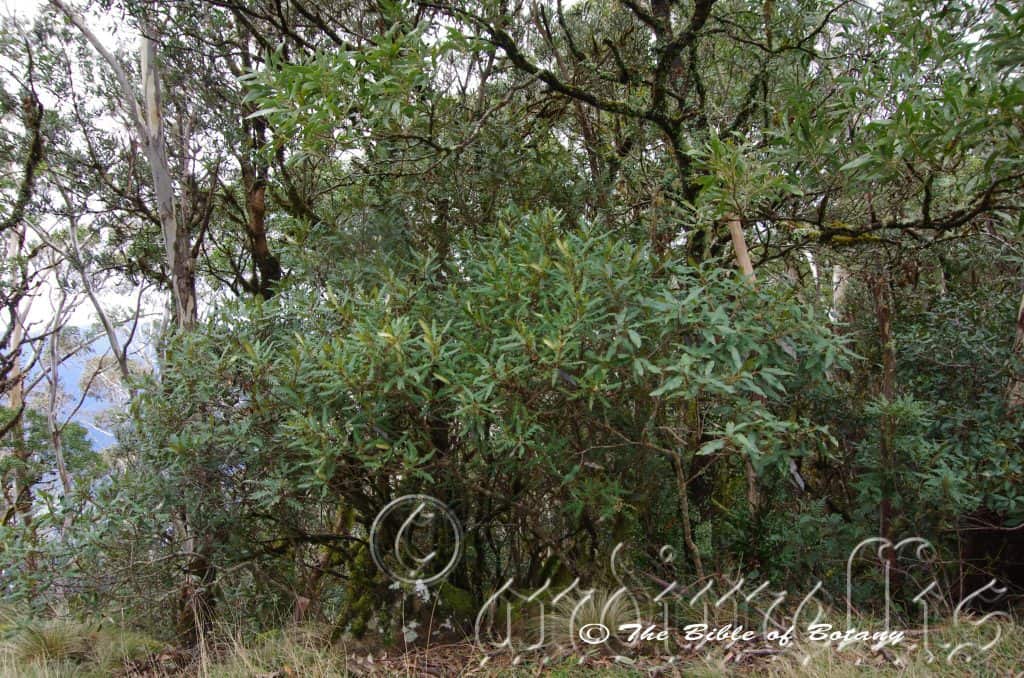
Point Lookout Ebor NSW

Point Lookout Ebor NSW
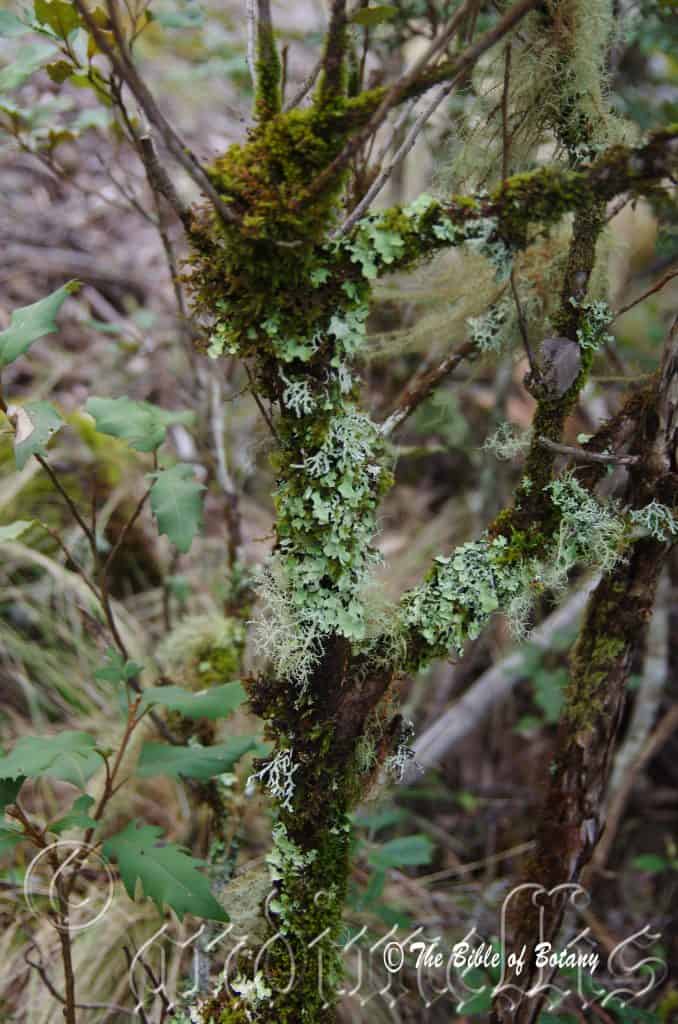
Point Lookout Ebor NSW
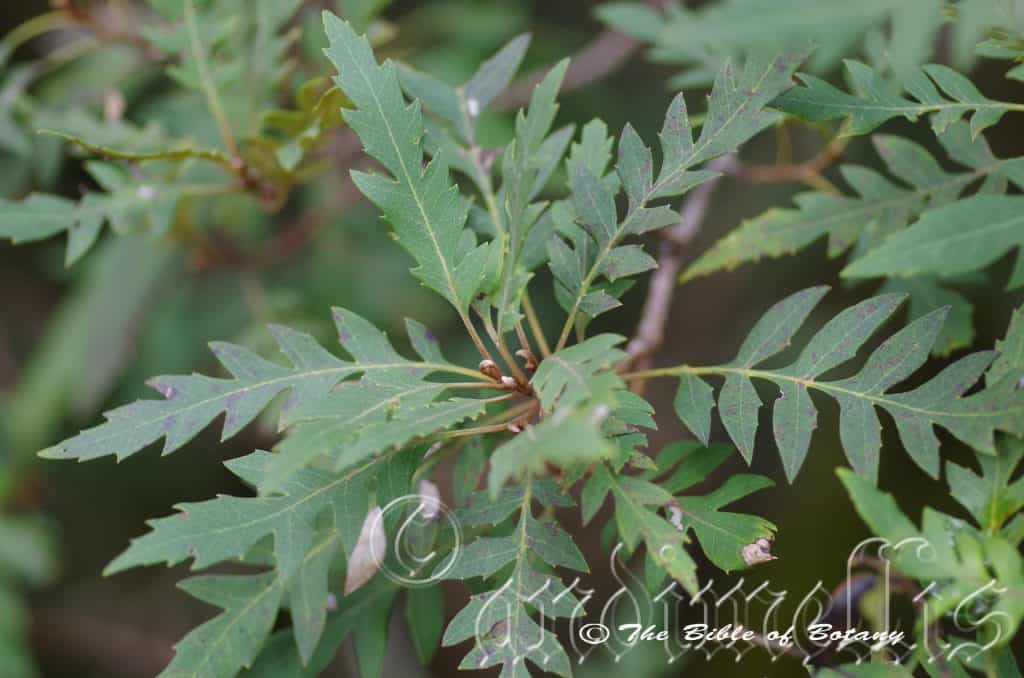
Point Lookout Ebor NSW
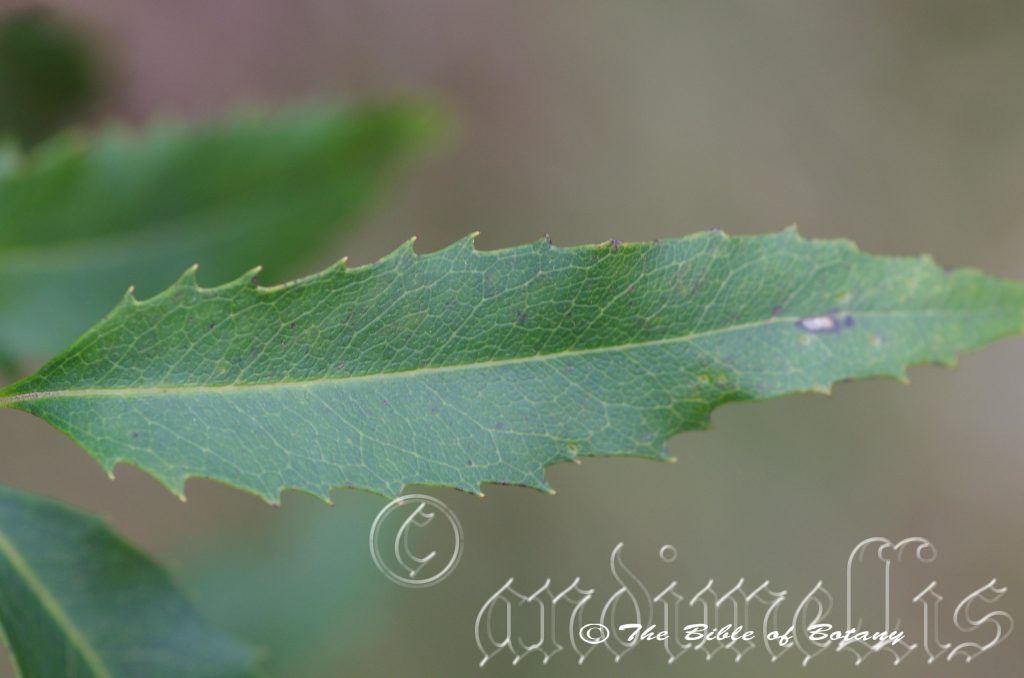
Point Lookout Ebor NSW
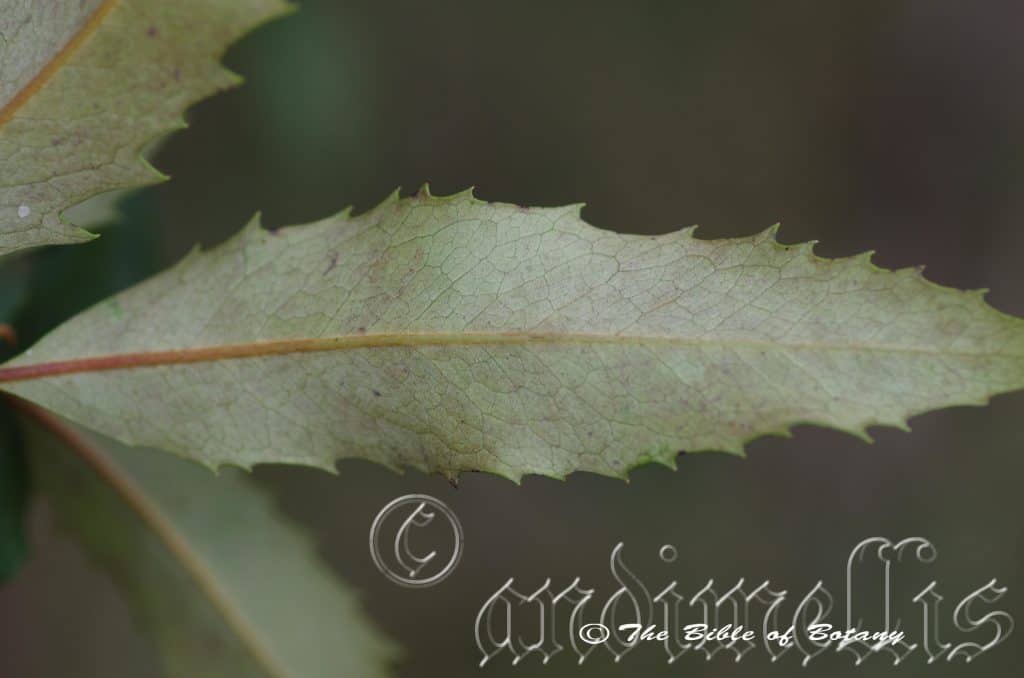
Point Lookout Ebor NSW

Point Lookout Ebor NSW
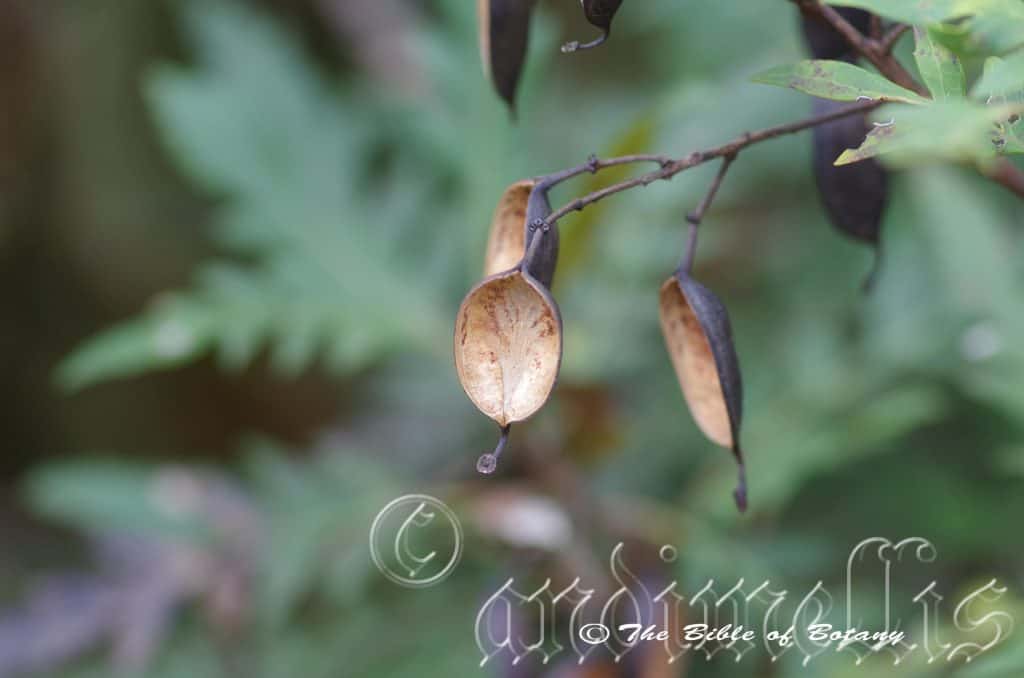
Point Lookout Ebor NSW
Lomatia fraseri
Classification:
Unranked: Eudicots
Order: Proteales
Family: Proteaceae
Sub Family: Grevilleodeae
Tribe: Embothrieae
Genus: From Loma, which is Ancient Greek for an edge or border. It refers to a fringe along the edge of the wing on the seeds.
Specie: Is named in honour of Charles Fraser; 1787-1831, who was an Australian botanist and horticulturalist who was sent to Brisbane to collect vegetable products of the land.
Sub species:
Common Name: Silky Lomatia or Tree Lomatia or Forest Lomatia.
Distribution:
Lomatia fraseri is found south from the upper Clarence River in New South Wales to Lavers Hill in southern Victoria on and east of the Great Dividing Range, with 3 disjunct populations in Victoria including at Stalwel, Warnambool and Portland. There is an isolated population on Fork Creek south of Hobart in Tasmania.
https://avh.ala.org.au/occurrences/search?taxa=Lomatia+fraseri#tab_mapView
Habitat Aspect Climate:
Lomatia fraseri prefers full sun to partial shade. It grows adjacent to drier rainforests or seasonal rainforests. The altitude ranges from 15 meters ASL to 1400 meters ASL
The temperatures range from minus 5 degrees in August to 38 degrees in January.
The rainfalls range from lows of 600mm to an average of 1600mm.
Soil Requirements:
Lomatia fraseri prefers to grow on sandy loams to light gritty clays. The soils are usually derived from decomposed granite or at times brown basalt, shale or sandstone. The soils pH. ranges from 4.5pH to 6.5pH. It does not tolerate water logged soils. Non saline soils to moderately saline soils are tolerated.
Height & Spread:
Wild Plants: 3m to 8m by 4m to 6m.
Characteristics:
Lomatia fraseri’s grows as a small tree with scabrous, mid grey-brown bark on the lower trunk and upper branches. The pale olive green to reddish maroon branchlets and new growth are densely covered in fine rusty to rusty-brown sericeous hairs.
Lomatia fraseri’s ovate to lanceolate to elliptic leaves measure 60mm to 125mm in length by 12mm to 35mm in width. The petioles measure 10mm to 20mm in length. The bases are symmetrical or asymmetrical, cuneate, broad acute or obtuse-truncate while the apexes are acute to acuminate. The discolourous coriaceous laminas are deep green to deep sea-green and glabrous on the upper laminas while the lower laminas are glaucous-green, pale yellow green and dull and are usually densely covered in brown sericeous hairs or at times rusty sericeous hairs. The laminas decurve slightly downwards from the mid vein to the margins while the margins are usually deeply to shallowly tooth and undulating, or at times entire or deeply pinnatisect and undulating. The teeth are sharp but not pungent. The mid vein is mid pinkish–red and strongly prominent on the lower lamina and is clearly visible on the upper lamina. The reticulate venation is slightly prominent on the lower lamina and is clearly visible from the upper lamina and is very slightly raised or flat on upper lamina.
The conflorescences of Lomatia fraseri are born on short loose racemes or semi paniculate from the terminals or leaf axils. The racemes measure 80mm to 120mm in length by 16mm to 20mm in diameter. The racemes and pedicels are moderately covered in fine rusty to rusty-brown pulverulent hairs. The pedicels measure 5mm to 7.5mm in length. The white perianths are densely covered in white pulverulent hairs and measure 7mm to 9mm in length. The 4 white, broad linear to oblong lobes with a spathulate strongly decurve to revolute apex and measure 7mm to 9mm in length by 2mm to 2.5mm in width. The lobes are free at anthesis.
There is 1 pastel yellow-green anther depressed into the flared apexes of the each perianth lobe and measure 0.8mm to 1mm in length. The stipitate pale lime-green pistil measures 3mm to 4mm in length while the white stipe measures 3mm to 4mm in length. The erect conical pollen presenter is lime-green. The pastel lime-green to pastel yellow-green ovary measures 1mm to 1.4mm in diameter. The flowers appear from October to February.
Lomatia fraseri’s are ellipsoidal follicles. The follicles measure 20mm to 30mm in length by 10mm to 15mm in diameter. The grass-green follicles turn deep grey externally and smooth glabrous and deep grey-brow internally when ripe. The pistil is persistent on the ripe follicles.
The obloidal-triangular flat grey-brown to black seeds have a thin chartaceous wing on one end and partially down one side. The flat circular to oblong seeds measure 4mm to 7mm in length by 4mm to 6.5mm in width while the basal wing extends partially down one side and measures 12mm to 15mm in length by 5mm to 9mm in width. The seeds are often covered in a sulphur-yellow powder.
Wildlife:
Lomatia fraseri’s flowers are fed upon by numerous nectar eating butterflies, native bees like Tetragonula carbonaria and the Blue banded bee Amegilla cingulata both of which have been seen foraging over the flowers wit native beetles and wasps.
Cultivation:
Lomatia fraseri should be cultivated further south in small, medium and large gardens close to the coast in warm temperate, sub tropical or cool tropical gardens. As garden subjects they will grow from 4 meters to 6 meters in height by 4 meters to 5 meters in diameter when grown in the open. It is cold tolerant to temperatures at least as low as minus 6 degrees once established. It forms a beautiful well rounded canopy and will grow on poor soils even heavy clays given plenty of leaf mulch.
It would be particularly suitable for growing in riparian zones where restoration work is needed urgently especially where ever the exotic privets Ligustrum sinensis and Ligustrum lucidum are pests. I believe this species will outperform or at least perform equally well and compete with the two exotic pests. Pigeons eating the fruits are the main reason the exotic species has become a serious pest on farms. Mixed with Ligustrum australianum the pigeons will spread the seeds of Ligustrum australianum and the two will create enough competition to eventually help eliminate the exotic weeds.
It can be tip pruned if a large bushy shrub is required. It makes a good wildlife corridor because of their upright bushy growth habit and their abundance of flowers supportive of native insects.
It is best used as a small park tree, placed in the background or planted centrally as a small feature tree in small gardens surrounded by native shrubs. Placed at the rear of a bush garden their striking silhouette will draw your attention.
The trees make excellent accent trees in front of low set or 2 story commercial buildings, industrial sheds or school classrooms where they will break up hard rigid architectural lines and give warmth and breadth to the buildings. In front of high rise buildings they give balance and soften the structures. The trees are ideal for planting on nature strips because of their height and spread, neat appearance little maintenance and ability to grow on most soils with just a little extra moisture.
The flowering is erratic and is usually poor but in good seasons can be spectacular. A regular fertilizing regime with adequate moisture in drought years may see the trees perform better and more consistent in cultivation.
It is also very good bonsai plants or are very affective when highlighting the gnarled trunk.
Propagation:
Seeds: Lomatia fraseri’s seeds can be sown directly into a seed raising mix after roughing the sides with fine sandpaper to assist in germination. Cover the seeds with 15mm to 20mm of fine weed free mulch and keep moist. Place the tray in a warm sunny position. When the seedlings are 20mm to 30mm tall, prick them out and plant them into 50mm native tubes using a good organic mix.
Once the seedlings reach 100mm to 150mm in height they can be planted out into their permanent position.
Fertilize using seaweed, fish emulsion or organic chicken pellets soaked in water on an alternate basis. Fertilize every two months until the plants are established then twice annually in early September or March to maintain health, vitality and better flowering.
Further Comments from Readers:
“Hi reader, it seems you use The Bible of Botany a lot. That’s great as we have great pleasure in bringing it to you! It’s a little awkward for us to ask, but our first aim is to purchase land approximately 1,600 hectares to link several parcels of N.P. into one at The Pinnacles NSW Australia, but we need your help. We’re not salespeople. We’re amateur botanists who have dedicated over 30 years to saving the environment in a practical way. We depend on donations to reach our goal. If you donate just $5, the price of your coffee this Sunday, We can help to keep the planet alive in a real way and continue to bring you regular updates and features on Australian plants all in one Botanical Bible. Any support is greatly appreciated. Thank you.”
In the spirit of reconciliation we acknowledge the Bundjalung, Gumbaynggirr and Yaegl and all aboriginal nations throughout Australia and their connections to land, sea and community. We pay our respect to their Elders past, present and future for the pleasures we have gained.

Authors Garden The Pinnacles NSW
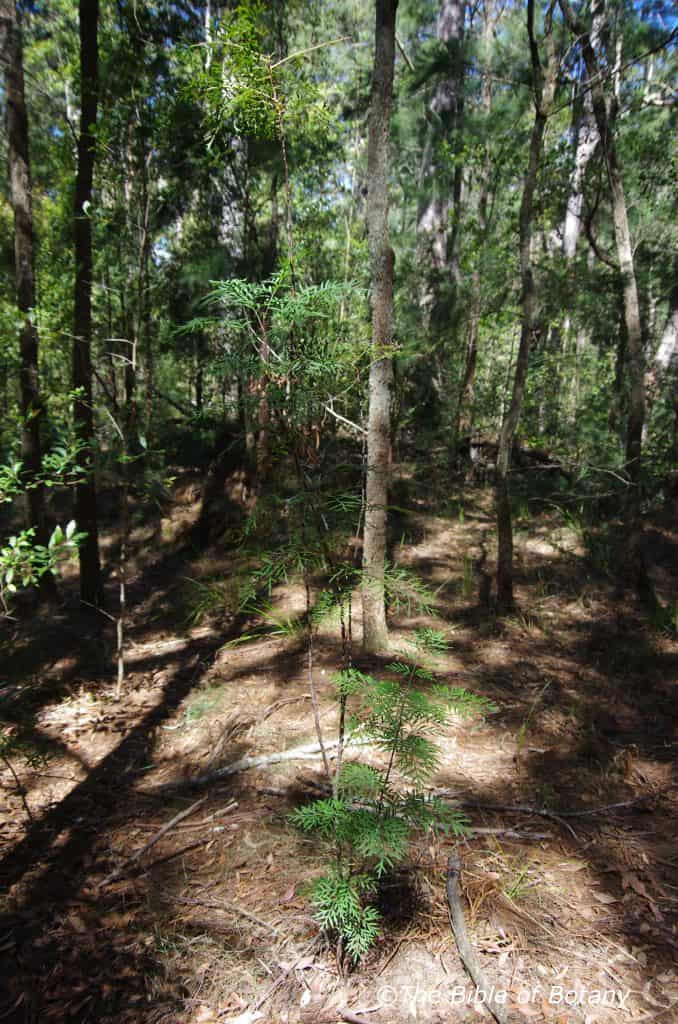
Washpool National Park NSW

Indigiscapes Capalaba Qld.
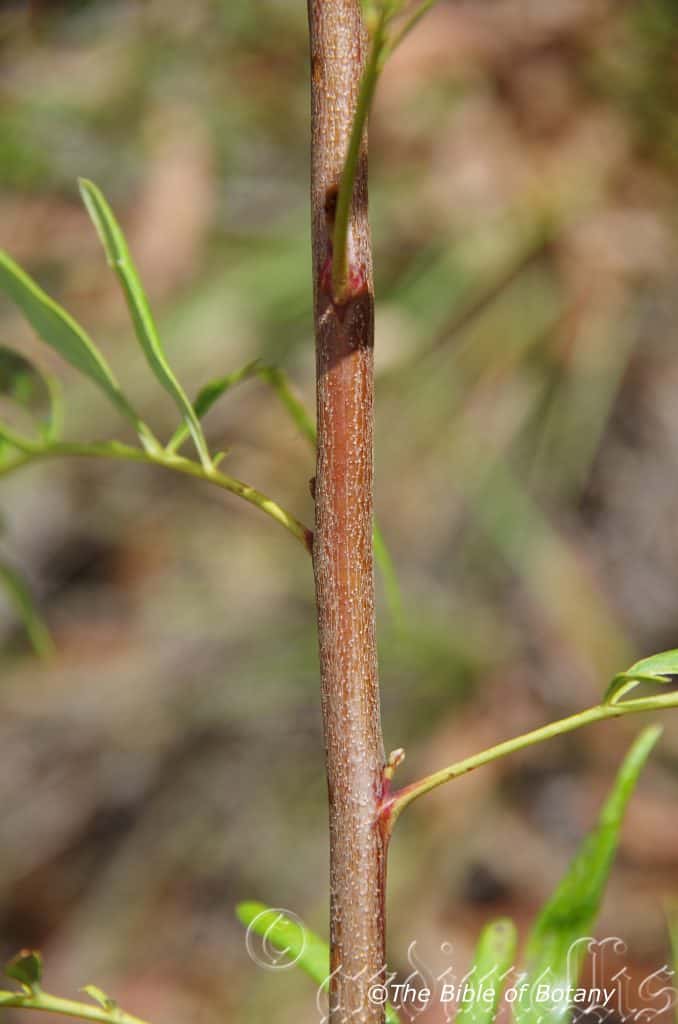
Authors Garden The Pinnacles NSW

Indigiscapes Capalaba Qld.
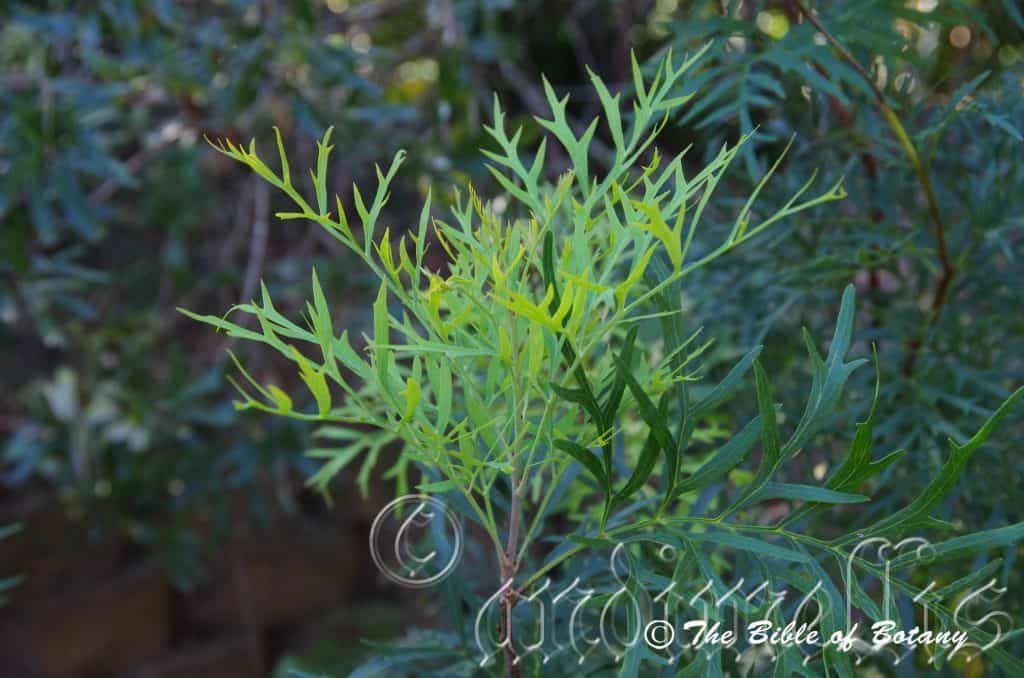
Indigiscapes Capalaba Qld.

Indigiscapes Capalaba Qld.
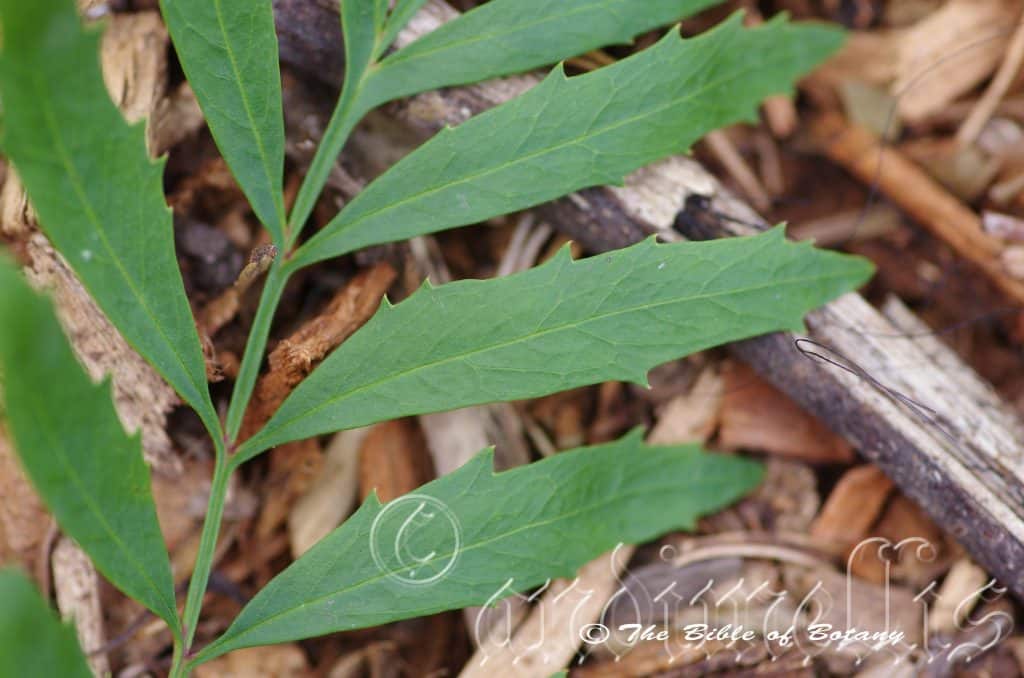
Rosser Park Benowa Qld.

Rosser Park Benowa Qld.
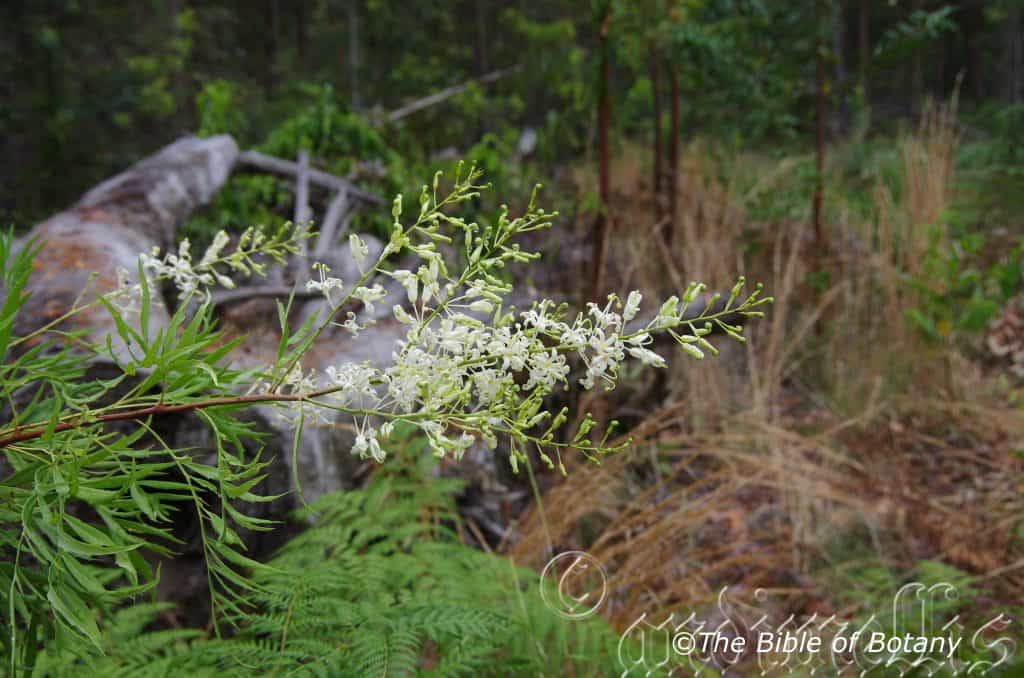
Authors Garden The Pinnacles NSW
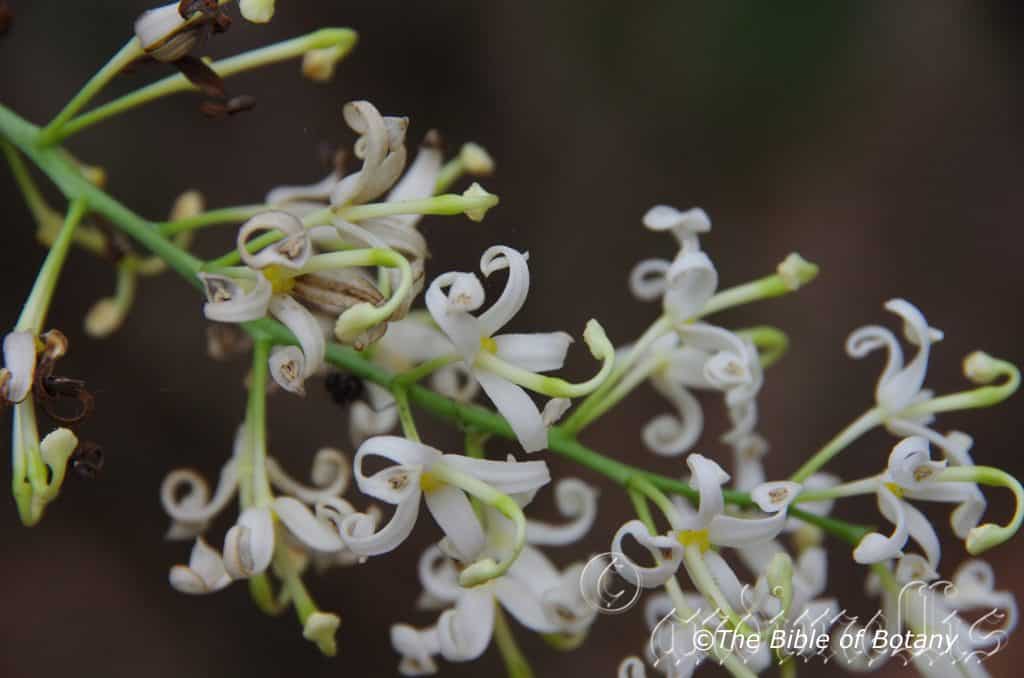
Authors Garden The Pinnacles NSW
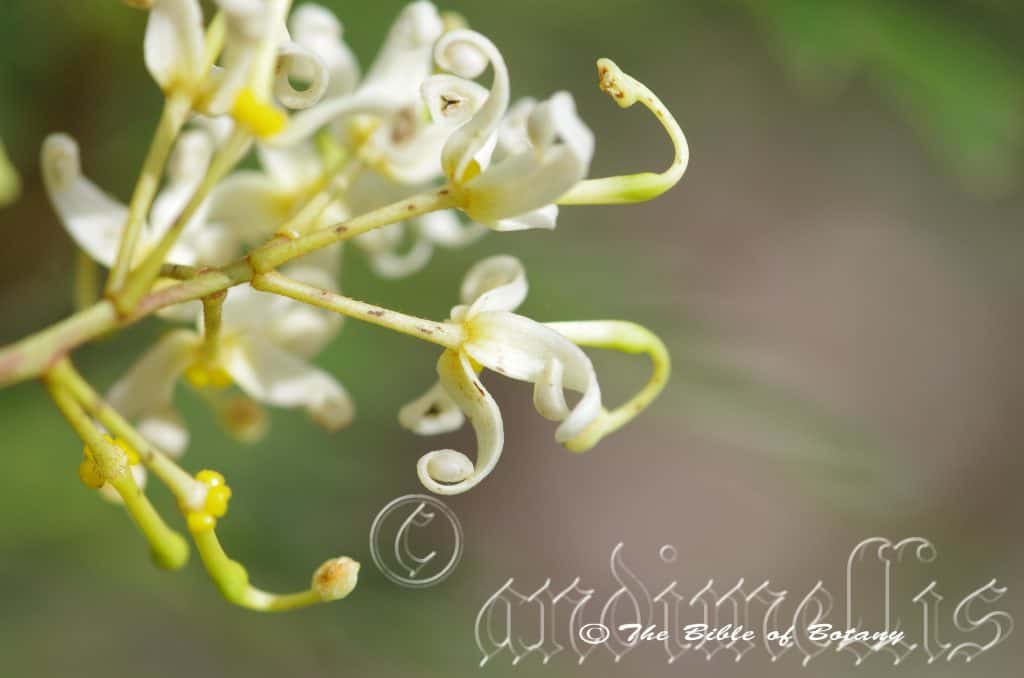
Rosser Park Benowa Qld.

Rosser Park Benowa Qld.

Authors Garden The Pinnacles NSW

Townsville Qld.
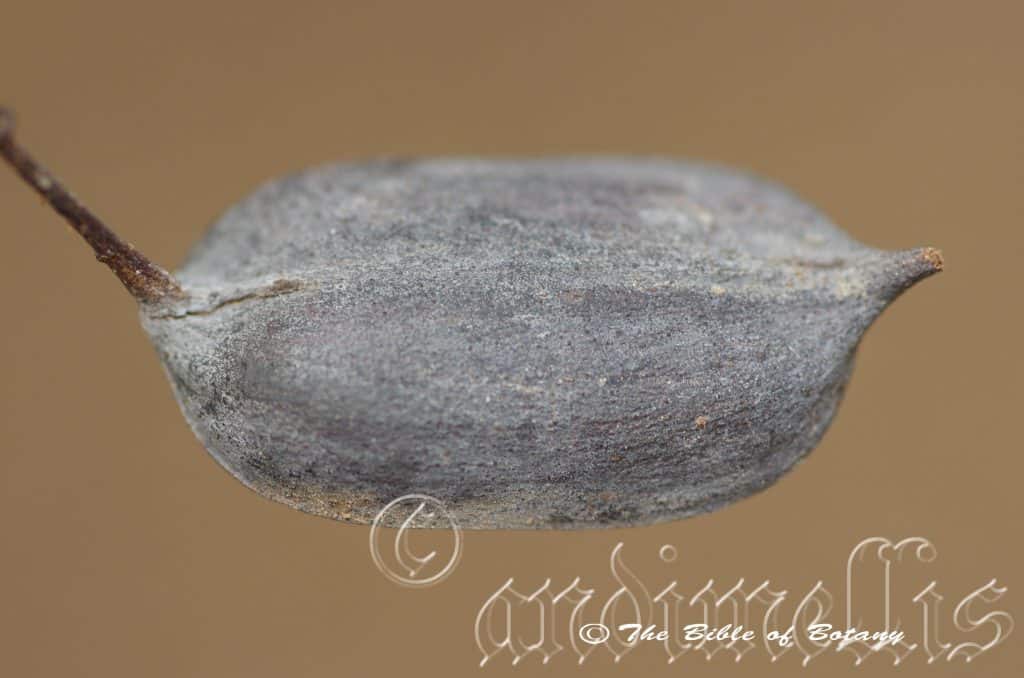
Rosser Park Benowa Qld.

Rosser Park Benowa Qld.
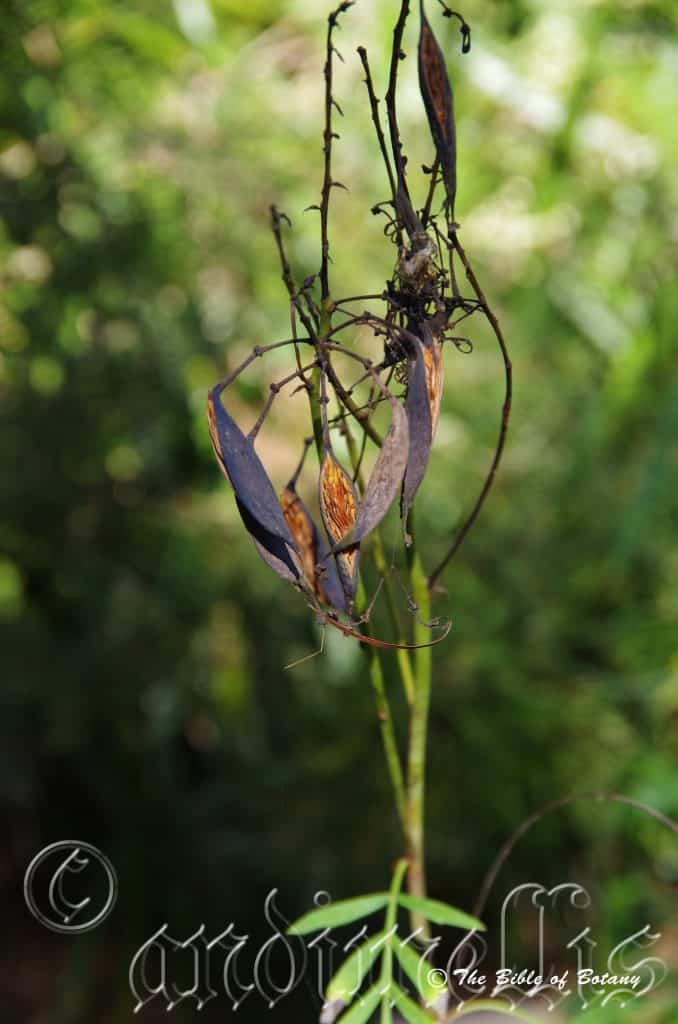
Yuraygir National Park NSW
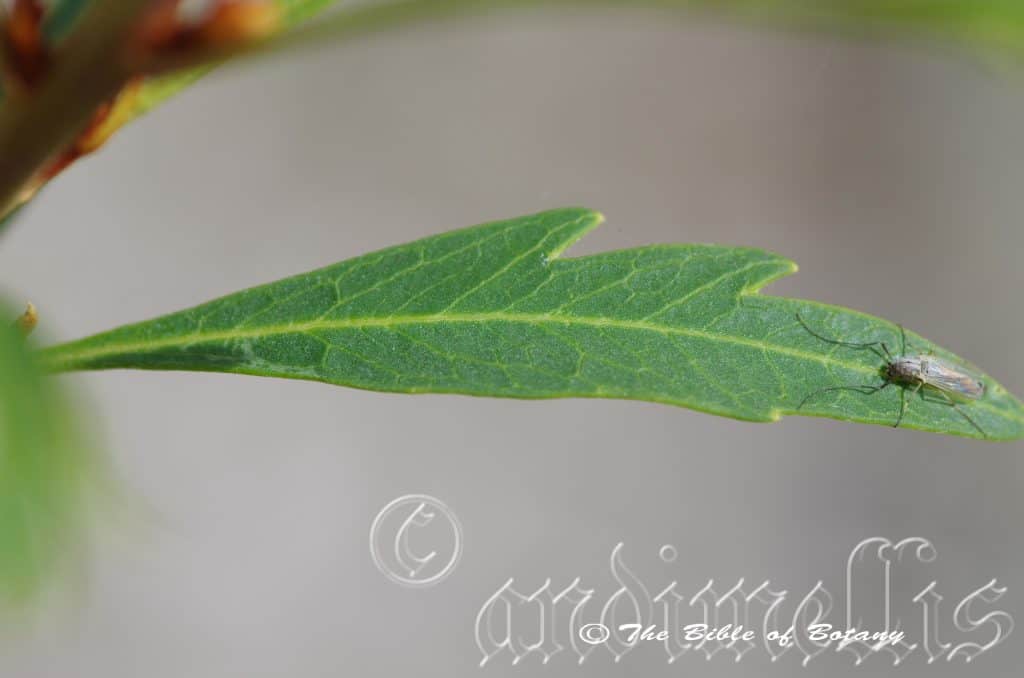
Rosser Park Benowa Qld.
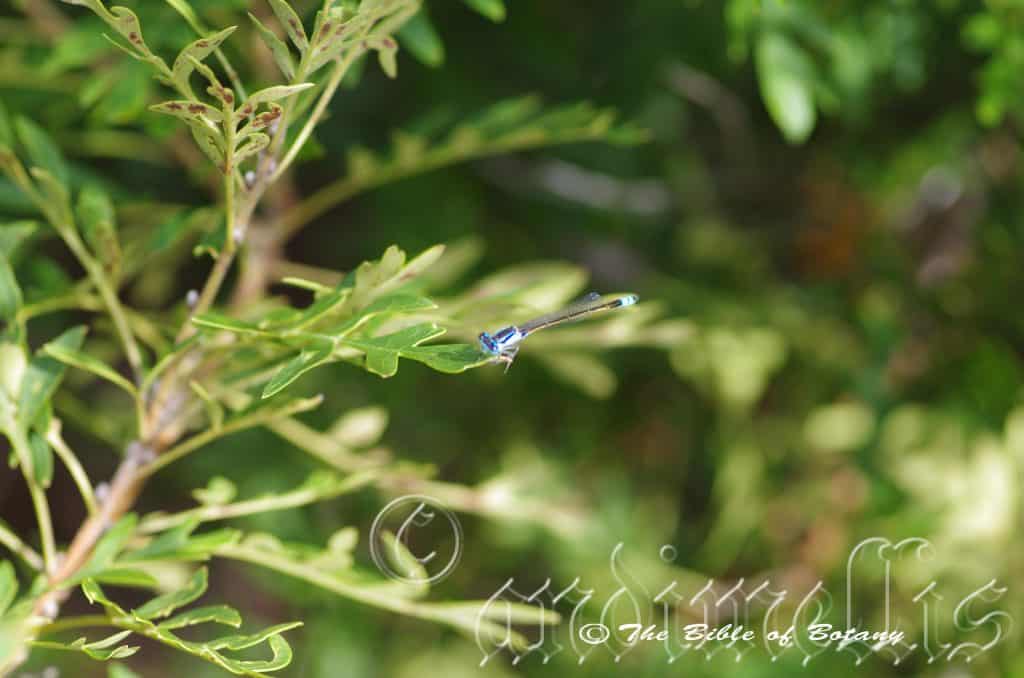
Rosser Park Benowa Qld.
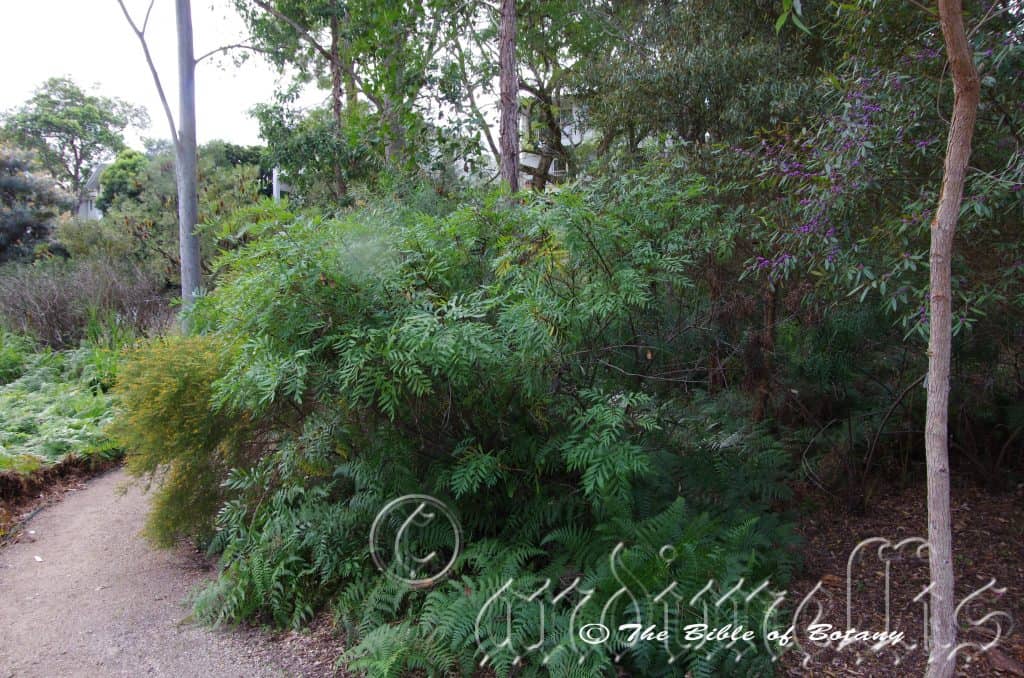
Rosser Park Benowa Qld.
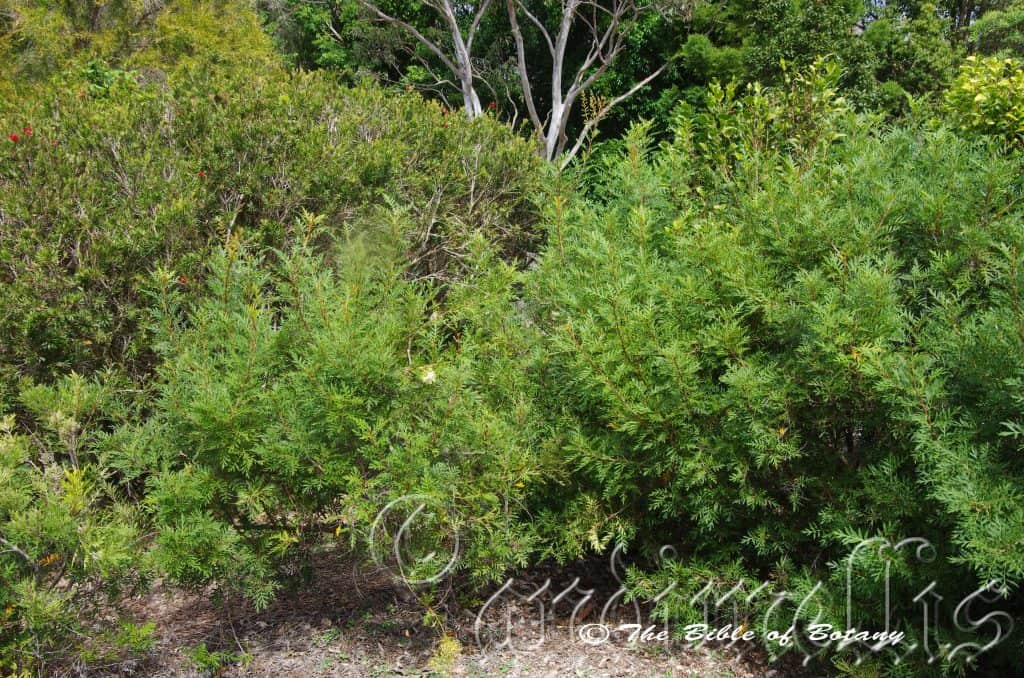

Rosser Park Benowa Qld.
Lomatia silaifolia
Classification:
Unranked: Eudicots
Order: Proteales
Family: Proteaceae
Sub Family: Grevilleodeae
Tribe: Embothrieae
Genus: From Loma, which is Ancient Greek for an edge or border. It refers to a fringe along the edge of the wing on the seeds.
Specie: Is named in honour of Charles Fraser; 1787-1831, who was an Australian botanist and horticulturalist who was sent to Brisbane to collect vegetable products of the land.
Sub species:
Common Name: Crinkle Bush, Fern-leaved Lomatia or Parsley Leaf Bush.
Distribution:
Lomatia silaifolia is found in 4 separate disjunct and isolated populations from far north Queensland to southern New South Wales. In the north it is found at Cape Sidmouth and Cairns central city on Cape York Peninsular and from Candlelight Mountain to Carnarvon Gorge National Park.
Its main distribution is south from Maryborough in south eastern Queensland including Moreton Island, Stradbroke, Russell and the Macleay group of Islands to Northangera Creek in the south eastern highlands of New South Wales. There is a disjunct population at Emu Creek near Widden. It is mainly found on the Western Slopes, on and east of the Great Dividing Range except for an area between Port Macquarie and Newcastle where it is only found along the coastal strip.
https://avh.ala.org.au/occurrences/search?taxa=Lomatia+silaifolia#tab_mapView
Habitat Aspect Climate:
Lomatia silaifolia prefers full sun to partial shade. It grows in taller heaths, moist sclerophyll forests, dry sclerophyll forests or Eucalyptus woodlands. The altitude ranges from 10 meters ASL to 1020 meters ASL
The temperatures range from minus 4 degrees in August to 38 degrees in January.
The rainfalls range from lows of 700mm to an average of 2000mm.
Soil Requirements:
Lomatia silaifolia prefers to grow on sandy loams to light gritty clays. The soils are usually derived from decomposed sandstones, granites, brown basalts, black basalts, metamorphic rocks, shales or accumulated peaty beach sands. The soils pH. ranges from 4.5pH to 7pH. It does not tolerate water logged soils however good soil moisture is usually prerequisite to its survival. Non saline soils to moderately saline soils are tolerated.
Height & Spread:
Wild Plants: 1m to 2m by 1.4m to 2.4m.
Characteristics:
Lomatia silaifolia’s grows as a medium shrub glabrous, mid grey-brown on the lower branchlets and upper branchlets. The pale olive green to reddish maroon branchlets and new growth are glabrous and often glaucous.
Lomatia silaifolia’s pinnate leaves are divided 1 to 4 times or are pinnatisect divided 1 to 4 times. The leaves measure 100mm to 350mm in length by 12mm to 35mm in width. The petioles measure 10mm to 20mm in length. The smallest segments are linear, oblanceolate to lanceolate or narrow triangular and measure 3mm to 20mm in length. The bases are symmetrical or asymmetrical and attenuate with the attenuation extending along the rachises while the apexes are acute to narrow acuminate or truncate with 1 to 3 teeth. The discolourous coriaceous laminas are deep green-grass to sea-green and glabrous on the upper laminas while the lower laminas are paler to pale glaucous-green. The laminas are flat to recurve slightly upwards from the mid vein to the margins and decurve gently downwards on the apical third while the margins are usually irregularly toothed. The teeth are sharp but not pungent. The mid vein is strongly prominent on the lower lamina and is clearly visible on the upper lamina. The reticulate venation is slightly prominent on the lower lamina and is prominent on the upper.
The conflorescences of Lomatia silaifolia are born on long loose racemes or panicles from the terminals and measure 200mm to 300mm in length by 100mm to 150mm in diameter. The pastel lime green to white pedicels measure 7mm to 11mm in length. The white, glabrous corollas measure 13mm to 18mm in length. The 4 white, glabrous lobes are linear to narrow oblong with a strongly decurve to revolute spathulate apex and measure 13mm to 18mm in length by 2mm to 3mm in width. The lobes are free at anthesis.
There is 1 deep chocolate obloidal to circular anther depressed into the flared apexes of the each perianth lobe and measure 0.8mm to 1mm in length or diameter. The stipitate pale lime-green to pastel yellow-green pistil measures 4mm to 5.5mm in length while the white stipe measures 5mm to 6mm in length. The erect conical pollen presenter is pastel lime-green. The pastel lime-green to pastel yellow-green ovary measures 2mm to 2.6mm in length by 1.2mm to 1.5mm in diameter. The flowers appear sporadically from November to April and at times as late as early June in favourable seasons.
Lomatia silaifolia’s fruits are ellipsoidal follicles. The follicles measure 30mm to 50mm in length by 5mm to 9mm in diameter. The olive-green drupes turn a deep grey-black to deep chocolate-brown externally and bright brownish-tan internally when ripe. The pistil is persistent on the ripe follicles.
The globose black seeds measure 4mm to 6mm in length by 4mm to 5.5mm in diameter while the basal wing extends partially down one side and measures 12mm to 15mm in length by 5mm to 9mm in width. The seeds are often covered in a sulphur-yellow powder.
Wildlife:
Lomatia silaifolia’s flowers are fed upon by numerous nectar eating butterflies, native bees like Tetragonula carbonaria and the Blue banded bee Amegilla cingulata both of which have been seen foraging over the flowers with native beetles and wasps.
Cultivation:
Lomatia silaifolia is suitable for small, medium and large gardens close to the coast in warm temperate, subtropical or cool tropical gardens. As garden subjects they will grow from 1.5 meters to 2 meters in height by 1.5 meters to 2.2 meters in diameter when grown in the open. It is cold tolerant to temperatures at least as low as minus 6 degrees once established. It forms a beautiful well rounded shrub yet open shrub and will grow on poor soils even heavy clays given plenty of leaf mulch.
The flowers themselves are generally long lasting and die back naturally as they contain small quantities of cyanide making them unpalatable to most pests.
It is particularly suitable for growing in riparian zones where restoration work is needed urgently and do particularly well in bush gardens where a lot of forest litter collects on the ground.
It can be tip pruned or cut back to almost ground level once established every 3 or 4 years to increase terminal growth and flower heads. It makes a good wildlife corridor shrub planted beneath trees that form an open canopy, and is suitable for wind breaks similar trees.
It is best used as a small park tree, placed in the background or planted centrally as a small feature tree in small gardens surrounded by native shrubs. Placed at the rear of a bush garden their striking silhouette will draw your attention.
The trees make excellent accent trees in front of low set or 2 story commercial buildings, industrial sheds or school classrooms where they will break up hard rigid architectural lines and give warmth and breadth to the buildings. In front of high rise buildings they give balance and soften the structures. The trees are ideal for planting on nature strips because of their height and spread, neat appearance little maintenance and ability to grow on most soils with just a little extra moisture.
The flowering is erratic and is usually poor but in good seasons can be spectacular. A regular fertilizing regime using a low phosphate fertilizer like the organic one we recommend with adequate moisture in drought years may see the trees perform better and more consistent in cultivation.
Propagation:
Seeds: Lomatia arborescens seeds can be sown directly into a seed raising mix after roughing the sides with fine sandpaper to assist in germination. Cover the seeds with 15mm to 20mm of fine weed free mulch and keep moist. Place the tray in a warm sunny position. When the seedlings are 20mm to 30mm tall, prick them out and plant them into 50mm native tubes using a good organic mix.
Once the seedlings reach 100mm to 150mm in height they can be planted out into their permanent position.
Fertilize using seaweed, fish emulsion or organic chicken pellets soaked in water on an alternate basis. Fertilize every two months until the plants are established then twice annually in early September or March to maintain health, vitality and better flowering.
Further Comments from Readers:
“Hi reader, it seems you use The Bible of Botany a lot. That’s great as we have great pleasure in bringing it to you! It’s a little awkward for us to ask, but our first aim is to purchase land approximately 1,600 hectares to link several parcels of N.P. into one at The Pinnacles NSW Australia, but we need your help. We’re not salespeople. We’re amateur botanists who have dedicated over 30 years to saving the environment in a practical way. We depend on donations to reach our goal. If you donate just $5, the price of your coffee this Sunday, We can help to keep the planet alive in a real way and continue to bring you regular updates and features on Australian plants all in one Botanical Bible. Any support is greatly appreciated. Thank you.”
In the spirit of reconciliation we acknowledge the Bundjalung, Gumbaynggirr and Yaegl and all aboriginal nations throughout Australia and their connections to land, sea and community. We pay our respect to their Elders past, present and future for the pleasures we have gained.
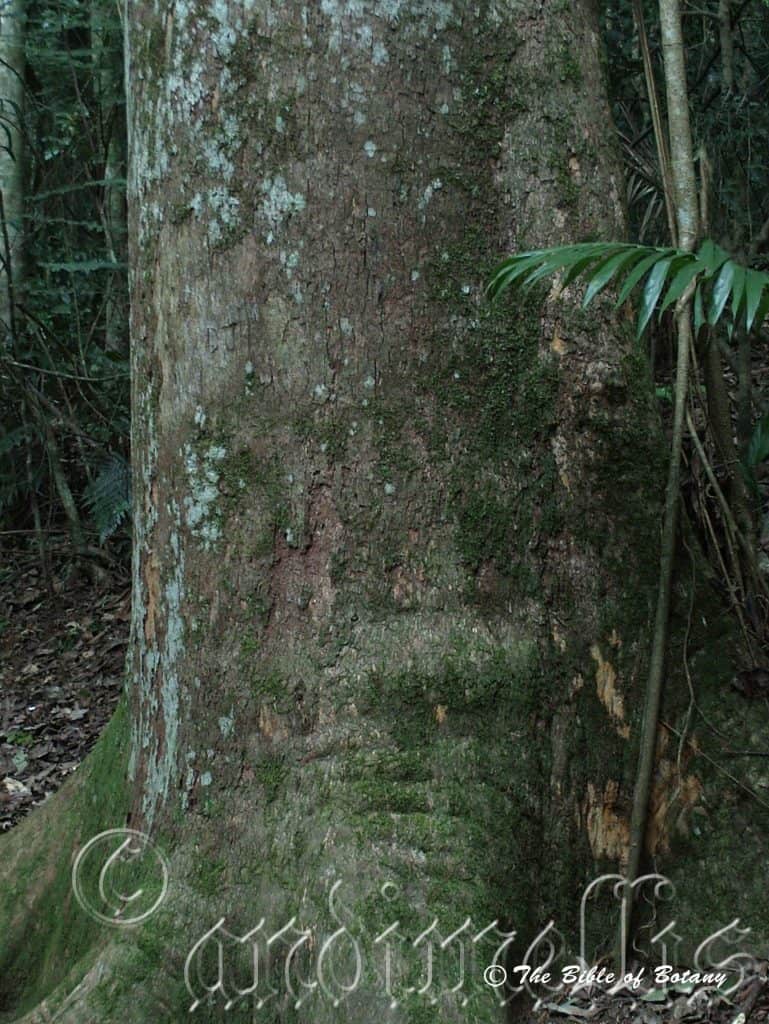
Mount Glorious National Park Qld.
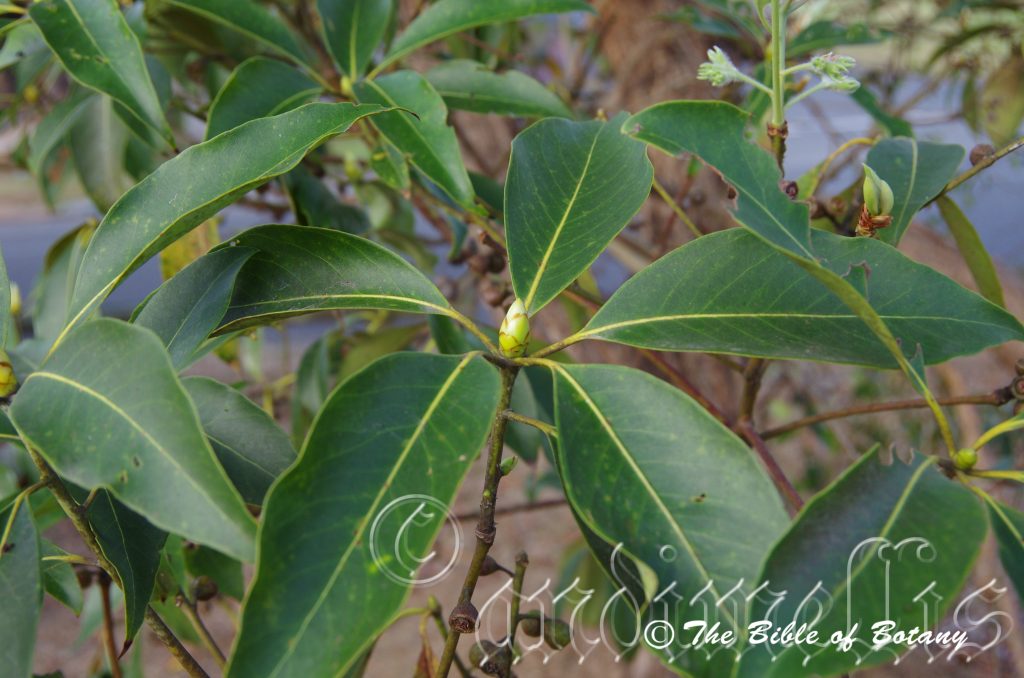
Norman Park Qld.

Kedron Brook Qld.

Norman Park Qld.
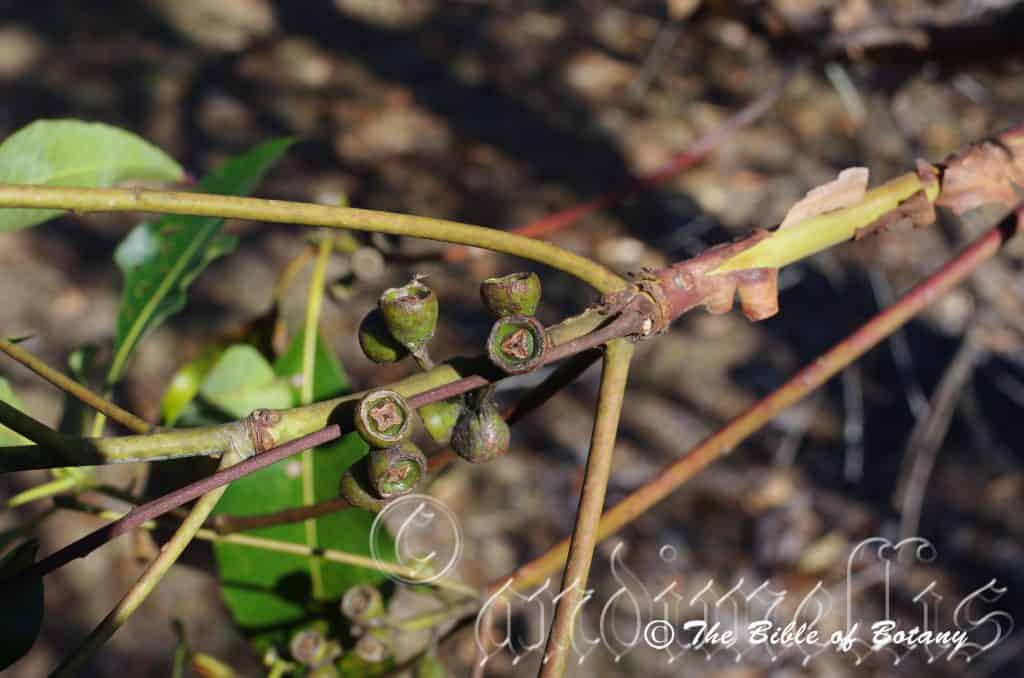
Norman Park Qld.
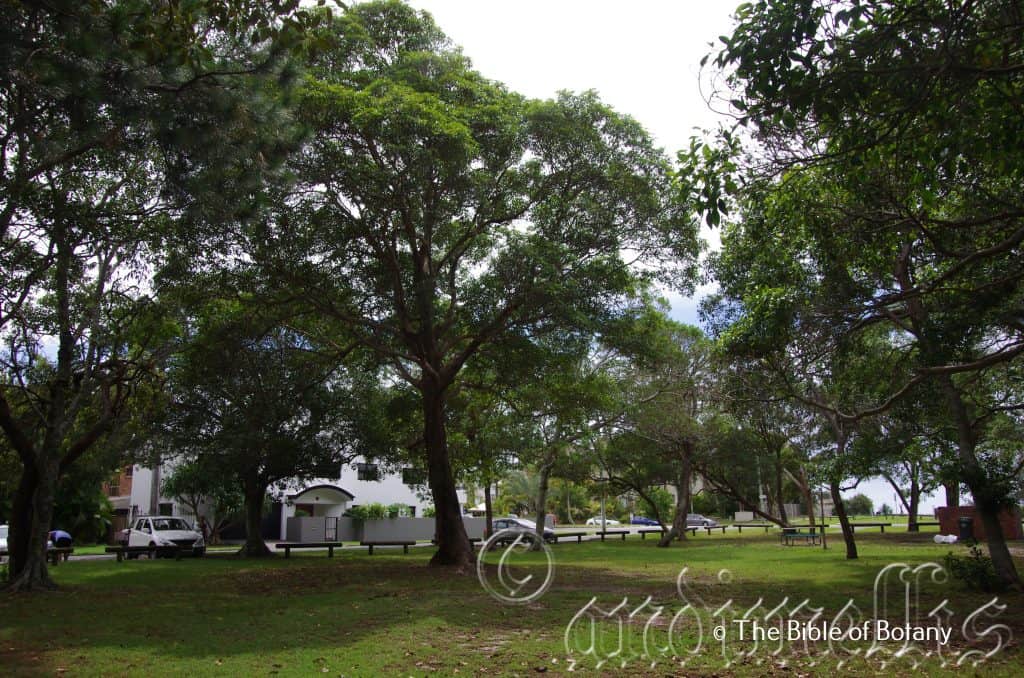
Currumbin Qld.

Norman Park Qld.
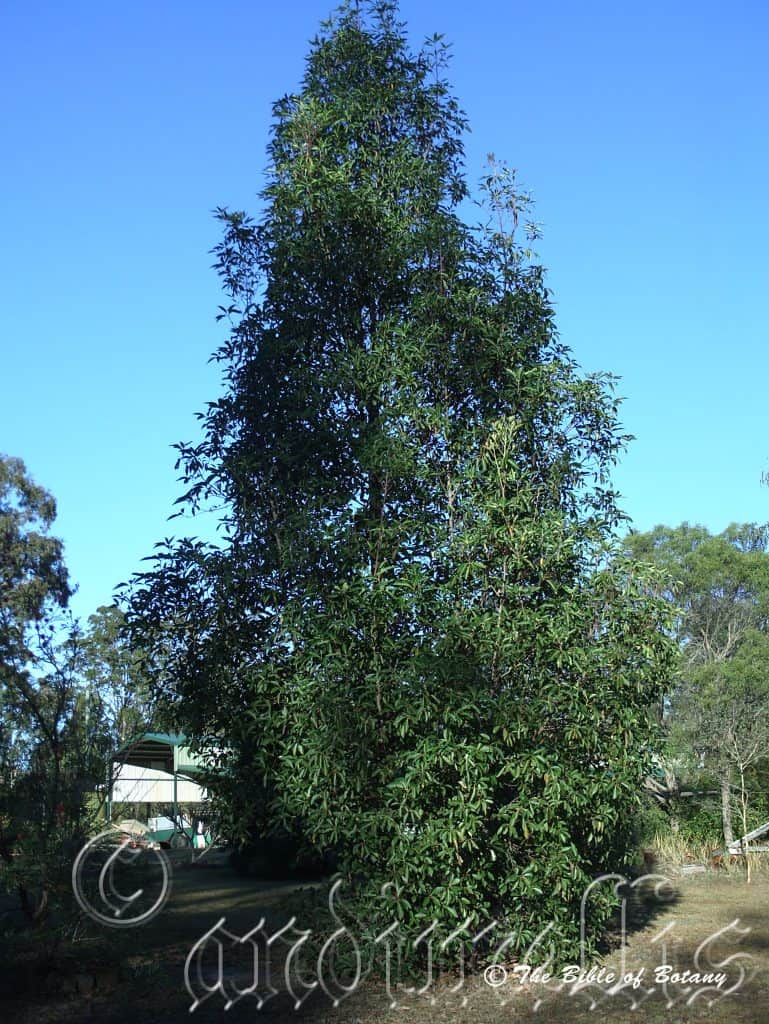
Lophostemon confertus
Classification:
Unranked: Eudicots
Class?Rosids
Order: Myrtales
Family: Myrtaceae
Sub Family: Myrtoideae
Tribe: Lophostemoneae
Genus: From Lophos, which is Ancient Greek for a crest and Stêma, which is Ancient Greek for the male reproductive organs in a flower the stamens. It refers to stamens, which resemble a crest.
Specie: From Confertus which is Latin for crowding together. It refers to leaves, which are more or less crowded closer to the apexes of the branchlets.
Sub species:
Common Name: Brush Box.
Distribution:
Lophostemon confertus is found south from Innisfail in far north Queensland to Sydney in central coastal New South Wales.
https://avh.ala.org.au/occurrences/search?taxa=Lophostemon+confertus#tab_mapView
Habitat Aspect Climate:
Lophostemon confertus prefers light dappled shade to full shade when young to full sun as they mature. It grows in wet Eucalyptus forests along creek beds, well developed coastal rainforests, mountain forests and littoral rainforests. The altitude ranges from 110 meters ASL to 850 meters ASL
The temperatures range from minus 3 degrees in August to 38 degrees in January.
The rainfalls range from lows of 700mm to an average of 3000mm however the plants derive additional moisture through capillary action from water lying deeper below the dry creek beds and marshes.
Soil Requirements:
Lophostemon confertus prefers to grow on better quality deep sandy loams to medium clays. The soils are usually derived from decomposed brown basalt, black basalt, shale or metamorphic rocks or at times better quality sandstones and granites. The soils pH. ranges from 4.5pH to 7pH. It does not tolerate water logged soils. Non saline soils to moderately saline soils are tolerated.
Height & Spread:
Wild Plants: 25m to 55m by 12m to 16m.
Characteristics:
Lophostemon confertus’s bark is tight, rough and brown on the lower trunk. The upper trunk and branches are glabrous pale pink to pale grey-pink with a persistent bark. The older branchlets can be a deep orange–red to deep burgundy. The branchlets are pale grey green to deep green. Young shoots exude a small amount of translucent white latex when damaged.
Lophostemon confertus’s leaves are in crowded whorls of 3 to 5.The broad elliptical, to ovate or broad lanceolate leaves measure 75mm to 165mm in length by 25mm to 45mm in width. The base is cuneate while the apex is long tapering to narrowly acute. The discolourous laminas are grey-green to deep sea-green while the lower lamina is paler. The new shoots are sparsely covered in white to pale grey sericeous hairs. The margins are entire and curve slightly upwards at towards the edges. The mid vein is prominent on the lower lamina and is distinctly visible on the upper lamina being a lime green to yellow green. The petioles measure 22mm to 28mm in length.
The inflorescence of Lophostemon confertus are born on small cymes from the caduceous scales between the leaf nodes. There are 3 to 7 flowers to a rachis measure 20mm to 22mm in diameter. The green hypanthium measure 6mm to 8mm in length prior to opening. The caduceous pale green to creamy green linear sepals measure 3mm to 7mm in length. The rachis measures 10mm to 12mm long while the pedicles measure 5mm to 6mm in length. The 5 glabrous white, orbicular petals measure 7mm to 9mm in length by 6mm to 9mm in width.
The 5 white staminal fascicles measure 10mm to 18mm in length and are born at the base of the petals. There 70 to 80 stamens per fascicle measure 1.5mm to 2mm in length. The filaments are white with a white or cream anther. The white style and stigma measure 2mm to 4mm in length. The sweetly scented flowers appear from October to December.
Lophostemon confertus’s fruit is a broad turbinate to hemispherical gum nut. The 3 ocular gum nuts measure 8mm to 14mm in diameter at the rim. The grey-green capsules are covered in white waxy lenticels and turn grey on ripening. The 3 valves are not exerted. The rusty brown linear seeds are mixed with chaff and measure 2mm to 3mm in length.
Wildlife:
The flowers are fed upon by numerous small butterflies, native bees, native beetles, wasps and flies. The yellow belly sugar glider is particularly fond of the flowers and nectar as is the greater sugar glider.
Cultivation:
Lophostemon confertus are beautiful erect bushy small trees in temperate Australia which are suitable for small to medium size gardens. In the sub tropics it is large trees which are only suitable for very large gardens or parks. As garden subjects it grows from 6 meters to 8 meters in height by 4 meters to 5 meters in diameter when grown in the open in cool temperate areas where as in the tropics it exceeds 30 meters in height by 10 meters to 12 meters in diameter when grown in the open. It is cold tolerant to temperatures at least as low as minus 4 degrees once established.
They can be lightly tip pruned if a smaller bushier tree is required or to produce more lateral branches and a windswept heath like plant. If it is pruned to form a heath like growth lead shoots must be trimmed on a regular basis. This is only practical where it is grown on very rocky sites with poor shallow sandy loams or accumulated beach sands are present.
Lophostemon confertus is best suited as a specimen tree on deeper friable loams or used as the base for a large rainforest garden. It is quick growing in moisture retentive soils. It is not suitable in high wind areas particularly if they have been fertilized or are growing on shallow soils over rock. This will cause quick growth making the trees top heavy and susceptible to be being blown over. The upper branches are suitable for some small orchids like Dendrobium aemulum.
Lophostemon confertus make very good hardy bonsai plants. I have seen trees with trunks of 100mm standing only 500mm in height.
Propagation:
Seeds: Lophostemon confertus seeds can be sown directly into a seed raising mix after roughing the sides with fine sandpaper to assist in germination. Cover the seeds with 15mm to 20mm of fine weed free mulch and keep moist. Place the tray in a warm sunny position. When the seedlings are 20mm to 30mm tall, prick them out and plant them into 50mm native tubes using a good organic mix.
Once the seedlings reach 100mm to 150mm in height they can be planted out into their permanent position.
Fertilize using seaweed, fish emulsion or organic chicken pellets soaked in water on an alternate basis. Fertilize every two months until the plants are established then twice annually in early September or March to maintain health, vitality and better flowering.
Further Comments from Readers:
“Hi reader, it seems you use The Bible of Botany a lot. That’s great as we have great pleasure in bringing it to you! It’s a little awkward for us to ask, but our first aim is to purchase land approximately 1,600 hectares to link several parcels of N.P. into one at The Pinnacles NSW Australia, but we need your help. We’re not salespeople. We’re amateur botanists who have dedicated over 30 years to saving the environment in a practical way. We depend on donations to reach our goal. If you donate just $5, the price of your coffee this Sunday, We can help to keep the planet alive in a real way and continue to bring you regular updates and features on Australian plants all in one Botanical Bible. Any support is greatly appreciated. Thank you.”
In the spirit of reconciliation we acknowledge the Bundjalung, Gumbaynggirr and Yaegl and all aboriginal nations throughout Australia and their connections to land, sea and community. We pay our respect to their Elders past, present and future for the pleasures we have gained.
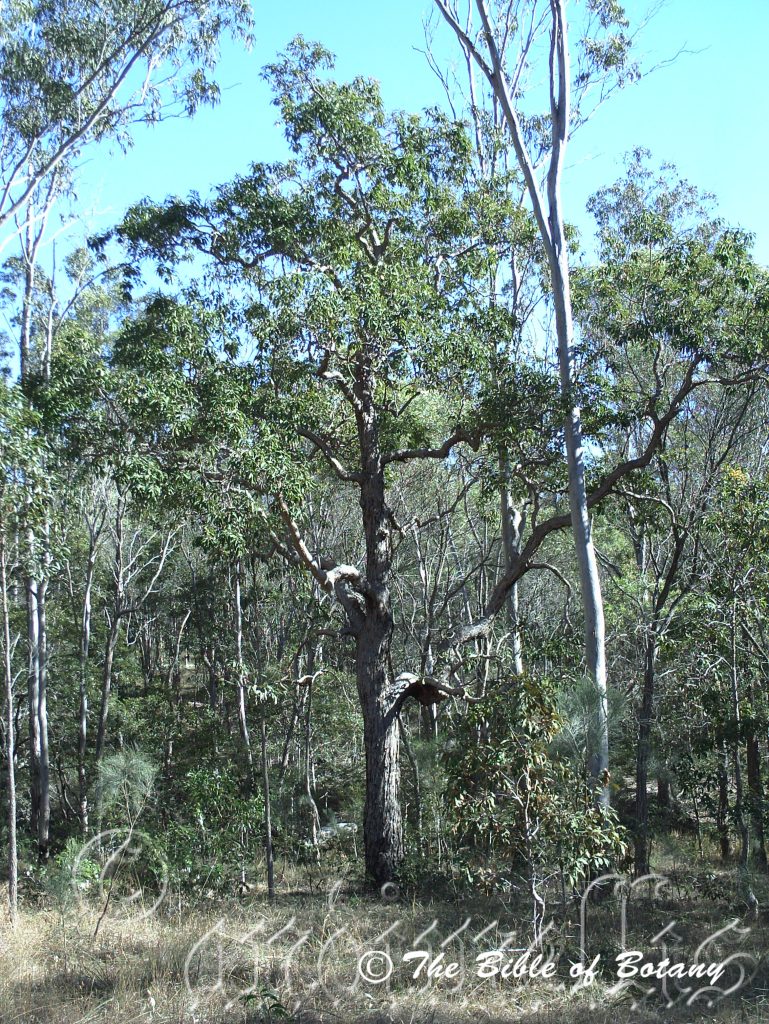

Ramournie Rural Fire Service shed NSW

Greening Australia Norman Park Qld.
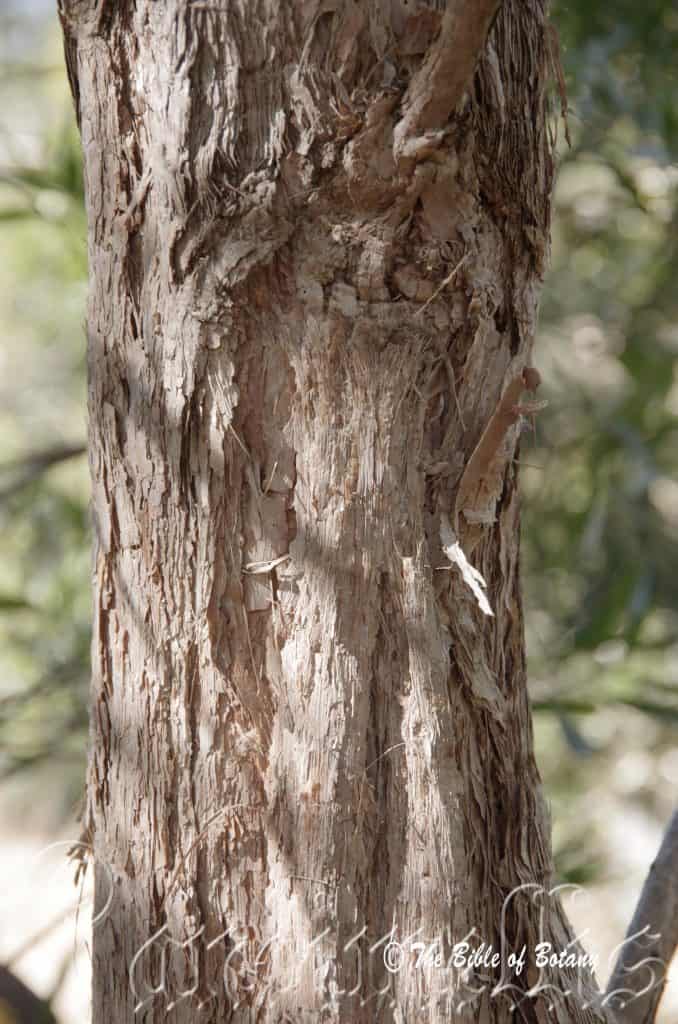
Nana Glen NSW
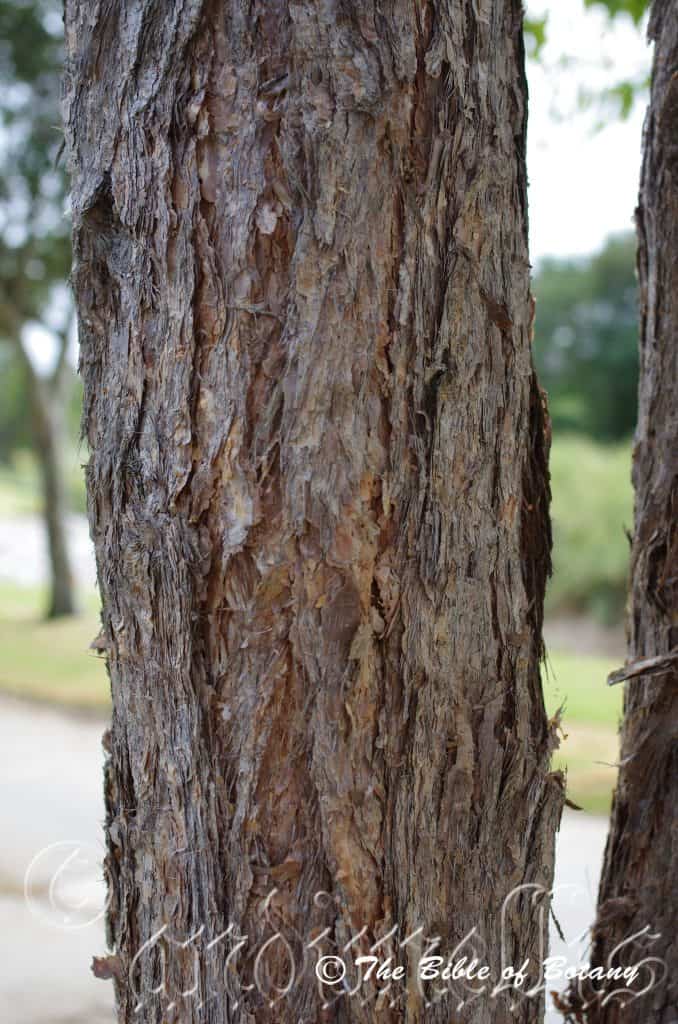
Greening Australia Norman Park Qld.

Ramournie Rural Fire Service shed NSW
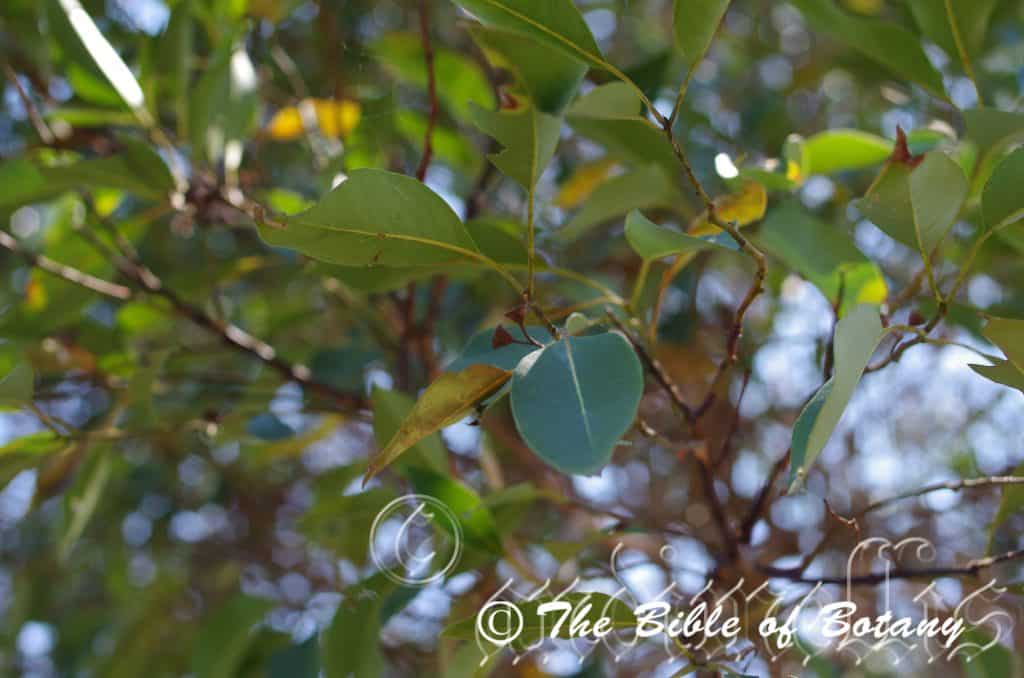
Wynumm Foreshore Qld
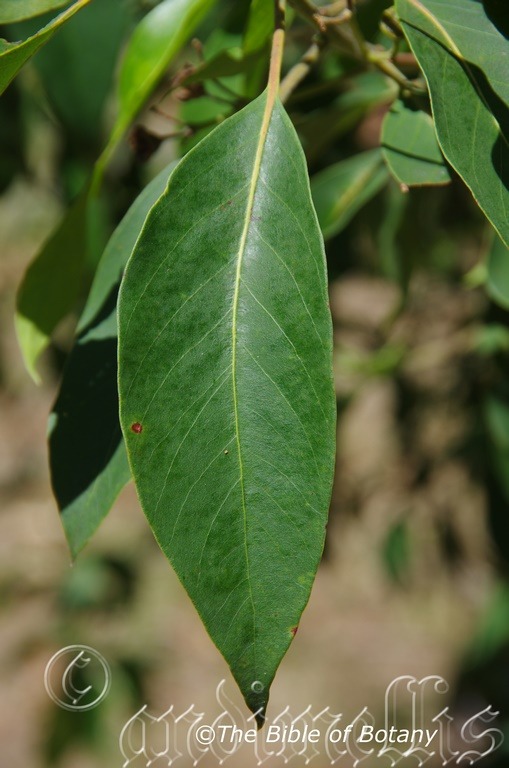
Ramournie Rural Fire Service shed NSW
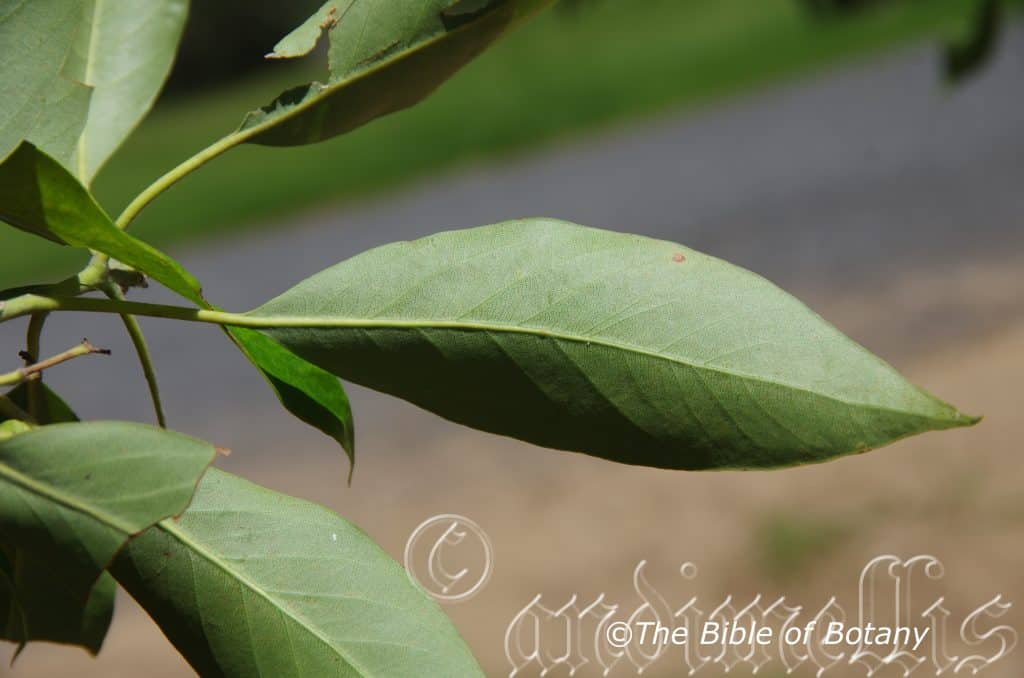
Ramournie Rural Fire Service shed NSW

Gympie Qld.

Ramournie Rural Fire Service shed NSW

Wynumm Qld.
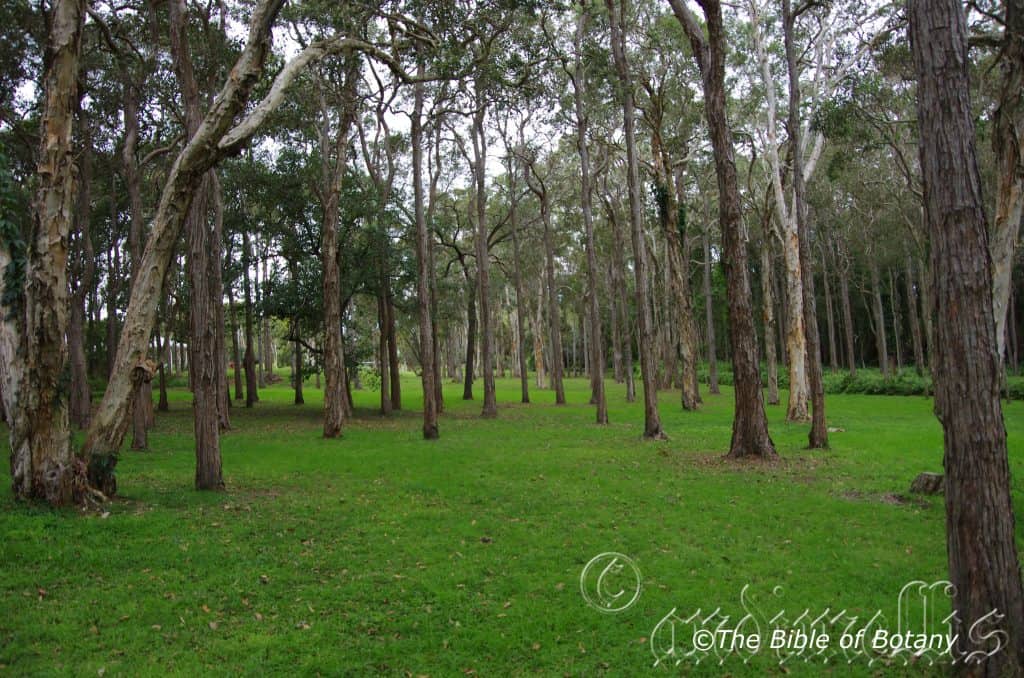
Lophostemon suaveolens with Melaleuca quinquenervia Capalaba Qld.
Lophostemon suaveolens
Classification:
Unranked: Magnoliophyta
Class?Magnoliopsida
Order: Myrtales
Family: Myrtaceae
Sub Family: Myrtoideae
Tribe: Lophostemoneae
Genus: From Lophos, which is Ancient Greek for a crest and Stêma, which is Ancient Greek for the male reproductive organs in a flower the stamens. It refers to stamens, which resemble a crest.
Specie: From Suavis, which is Latin/French for sweetly scented. It refers to flowers, or at times the fruits, which have a delightfully non overpowering sweet scent.
Sub species:
Common Name: Swamp mahogany or Swamp Turpentine.
Distribution:
Lophostemon suaveolens is found in many disjunct populations south from the to tip of Cape York Peninsular and the Torres Straight Islands in far north Queensland to the Bellinger River in northern New South Wales. It is found on the Western Slopes on and east of the Great Dividing Range.
https://avh.ala.org.au/occurrences/search?taxa=Lophostemon+suaveolens#tab_mapView
Habitat Aspect Climate:
Lophostemon suaveolens prefers light dappled shade to full shade when young to full sun as it matures. It grows in wet Eucalyptus forests along creek beds, adjacent to coastal rainforests or adjacent to Melaleuca swamps. The most favoured sites are those where swamps form periodically. The altitude ranges from 611 meters ASL to 640 meters ASL
The temperatures range from minus 2 degrees in August to 38 degrees in January.
The rainfalls range from lows of 900mm to an average of 3000mm however the plants derive additional moisture through capillary action from water lying deeper below the dry creek beds and marshes.
Soil Requirements:
Lophostemon suaveolens prefers to grow on better quality deep loams to medium clays. The soils are usually derived from decomposed brown basalt, black basalt, shale, metamorphic rocks or at times alluvial flats, accumulated peaty sands or grey podsolic soils. The soils pH. ranges from 4.5pH to 6.5pH. It tolerates water logged soils and prefers seasonal water logged soils where the plants are partly submerged for short periods. Non saline soils to moderately saline soils are tolerated.
Height & Spread:
Wild Plants: 12m to 20m by 8m to 12m.
Characteristics:
Lophostemon suaveolens’s bark is loose, fibrous persistent and red-brown to pink-brown on the trunk through to the larger branches. The thick bark will compress between the fingers when pinched. The older branchlets are deep green to deep maroon. The branchlets are green to deep green. The branches and upper trunk are often twisted giving a beautiful gnarled appearance to the tree.
Lophostemon suaveolens’s leaves are in whorls of 3 to 5.The elliptical, to elliptical-ovate leaves measure 70mm to 150mm in length by 40mm to 50mm in width. The bases are cuneate to round while the apexes are obtuse-acute to shortly acuminate. The concolourous or discolourous laminas are dull pale green to deep green or even deep sea green while the lower lamina is paler. The new shoots are moderately covered in soft, white sericeous hairs. The margins are entire, flat or curve slightly upwards at towards the edges. The mid vein is prominent on the lower lamina and is distinctly visible on the upper lamina. The petiole measures 10mm to 20mm in length. Laminas often have a purplish tinge and turn orange or red prior to falling. The leaves emit a slight Pelargonium scent when crushed.
The inflorescence of Lophostemon suaveolens are born on small cymes from the caduceous scales between the leaf nodes. The rachis measures 10mm to 12mm long while the pedicles measure 5mm to 6mm in length. There are 3 to 7 flowers per cyme which measure 20mm to 22mm in diameter. The green hypanthium measure 6mm to 8mm in length prior to opening. The pale green to creamy green, linear sepals measure 1mm to 1.5mm in length. The 5 white, orbicular petals measure 4mm to 5mm in length by 4mm to 5mm wide and are glabrous.
The 5 white staminal fascicles are born opposite the petals and measure 3mm to 5mm in length and are born at the base of the petals. There are 30 to 50 stamens on a fascicle. The filament is white with a fawn or pale cream anther. The white pistil measure 2mm to 3mm in length. The beautiful sweetly scented flowers appear from October to December.
Lophostemon suaveolens’s fruit is a hemispherical gum nut. The 3 ocular gum nuts measure 5mm to 8mm in diameter at the rim. The pale green capsules turn grey on ripening. The valves are not exerted. The rusty brown seeds are mixed with chaff and measure 1.5mm to 2mm in length.
Wildlife:
The flowers are fed upon by numerous small butterflies, native bees, native beetles, wasps and flies.
The ring tail possum Pseudocheirus peregrinus and brush tail possums Trichosurus vulpecula are particularly fond of the flowers and nectar as is the greater sugar glider Petauroides volans.
Cultivation:
Lophostemon suaveolens are beautiful gnarled, twisted bushy small trees in temperate Australia which are suitable for small to medium size gardens. In the sub tropics it is larger but still only a medium size tree which is suitable for small and medium size gardens or parks. As garden subjects they will grow from 5 meters to 7 meters in height by 4 meters to 5 meters in diameter when grown in the open in temperate areas but may exceed 10 meters in sub tropical or tropical gardens. It is cold tolerant to temperatures at least as low as minus 5 degrees once established. They can be lightly tip pruned if a smaller bushier tree is required or to produce more lateral branches and a heath like plant. If it is pruned to form a heath like growth lead shoots must be trimmed on a regular basis.
Lophostemon suaveolens was the first tree that I fell in love with for landscaping purposes. The trunk, the bark, the beautifully scented flowers ease of growing on all soil types really does make it a landscapers dream. To make them the center of attraction a little persuasion on shaping the branches may be necessary early on but don’t be too aggressive as they will abort the branch for stronger growth elsewhere.
Lophostemon suaveolens is best suited as a specimen tree on deeper friable loams. It is quick growing in moisture retentive soils. It is not suitable in high wind areas particularly if they have been fertilized or are growing on shallow soils over rock. This will cause quick growth making the trees top heavy and susceptible to be being blown over or branches breaking which will tear the bark and scar the tree. However once established there is little risk of them succumbing to the wind. Despite the gnarled appearance the trees are remarkably flexible in strong winds even as specimen trees once established. When it is being cultivated don’t overcrowd them as you want the spiralling red-brown or pink-brown bark and the twisted trunk and branches on full display as these are the trees strongest features. Three planted in a group will achieve the desired effect in around 10 years.
It is well suited to wet, water logged poor acidic soils. They can be used as a feature tree in small groups planted with wide spacing with formal gardens below to highlight the gnarled affect or used with mixed low growing shrubs equally well give an effect of age and toughness. Do not use other tall trees in close vicinity as they will distract the attention and do not enhance the qualities you are after. They look surprising good with Hibbertia scandens growing around the base or any of the small Personas which again have bright green leaves. Hibbertia scandens gives a great clean green contrast on the ground where as a single Parsonsia climbing up the tree with its cascading branches high up amongst the branches just adds to the hard life the tree exudes.
These trees would make ideal bonsai plants yet I have never seen them used in this capacity. The closely related Lophostemon confertus has been used as bonsai plant for many years.
It is a tree with real character and old ones can be photographed for hours from different angles and positions with different lights to silhouettes which all creating stupendous visual pleasure.
Propagation:
Seeds: Lophostemon suaveolens seeds can be sown directly into a seed raising mix after roughing the sides with fine sandpaper to assist in germination. Cover the seeds with 15mm to 20mm of fine weed free mulch and keep moist. Place the tray in a warm sunny position and keep moist. When the seedlings are 20mm to 30mm tall, prick them out and plant them into 50mm native tubes using a good organic mix.
Once the seedlings reach 100mm to 150mm in height they can be planted out into their permanent position.
Fertilize using seaweed, fish emulsion or organic chicken pellets soaked in water on an alternate basis. Fertilize every two months until the plants are established then twice annually in early September or March to maintain health, vitality and better flowering.
Further Comments from Readers:
“Hi reader, it seems you use The Bible of Botany a lot. That’s great as we have great pleasure in bringing it to you! It’s a little awkward for us to ask, but our first aim is to purchase land approximately 1,600 hectares to link several parcels of N.P. into one at The Pinnacles NSW Australia, but we need your help. We’re not salespeople. We’re amateur botanists who have dedicated over 30 years to saving the environment in a practical way. We depend on donations to reach our goal. If you donate just $5, the price of your coffee this Sunday, We can help to keep the planet alive in a real way and continue to bring you regular updates and features on Australian plants all in one Botanical Bible. Any support is greatly appreciated. Thank you.”
In the spirit of reconciliation we acknowledge the Bundjalung, Gumbaynggirr and Yaegl and all aboriginal nations throughout Australia and their connections to land, sea and community. We pay our respect to their Elders past, present and future for the pleasures we have gained.
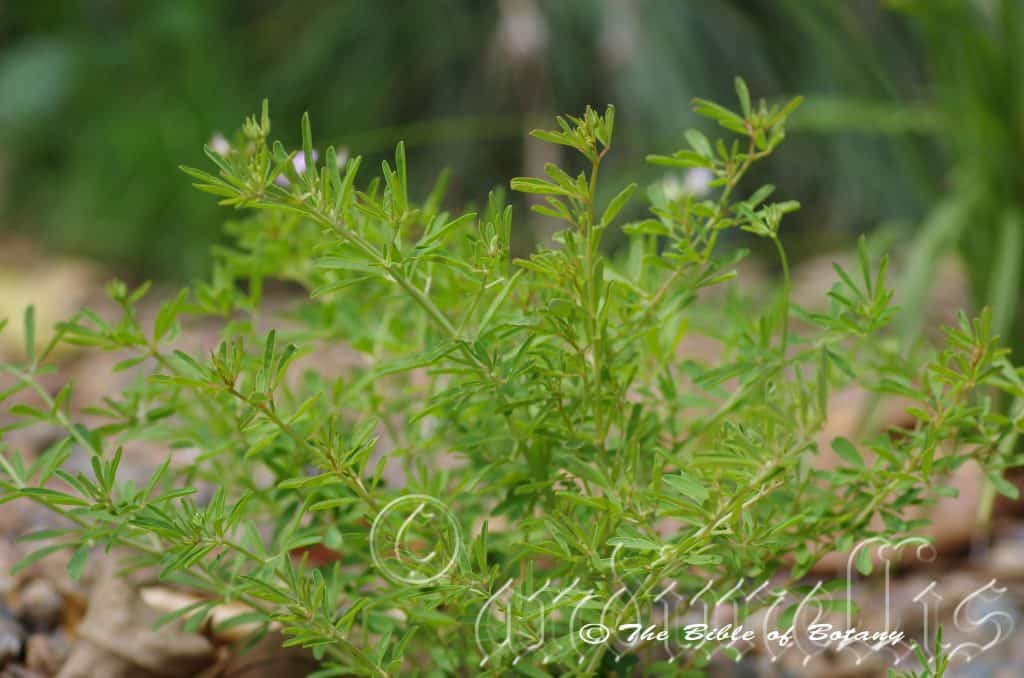
Mount Stuart Townsville Qld.
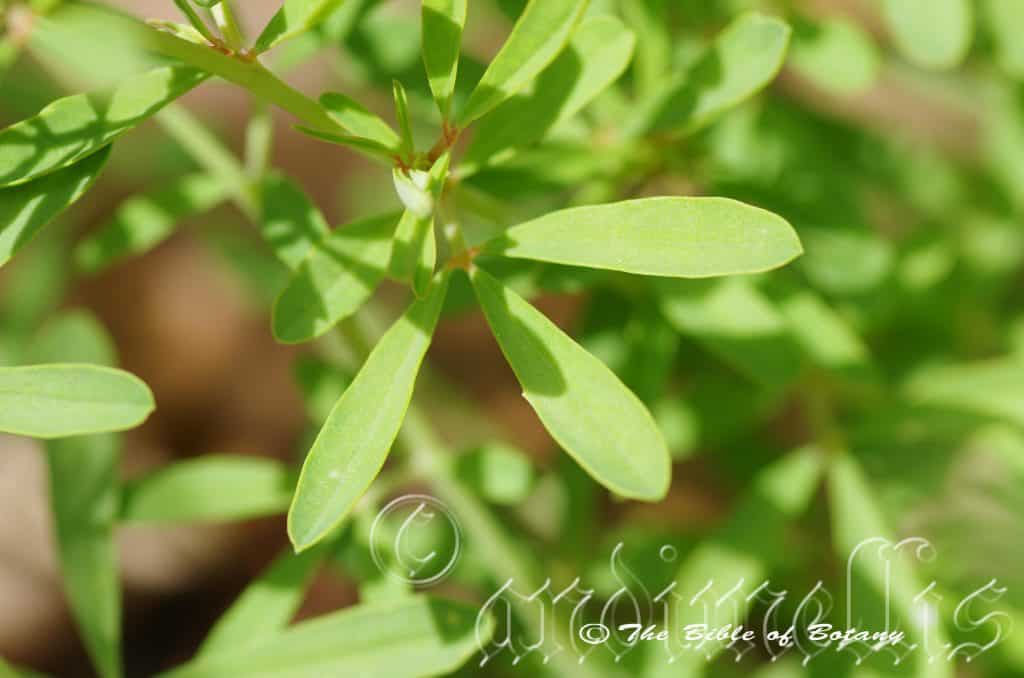
Mount Stuart Townsville Qld.

Mount Stuart Townsville Qld.
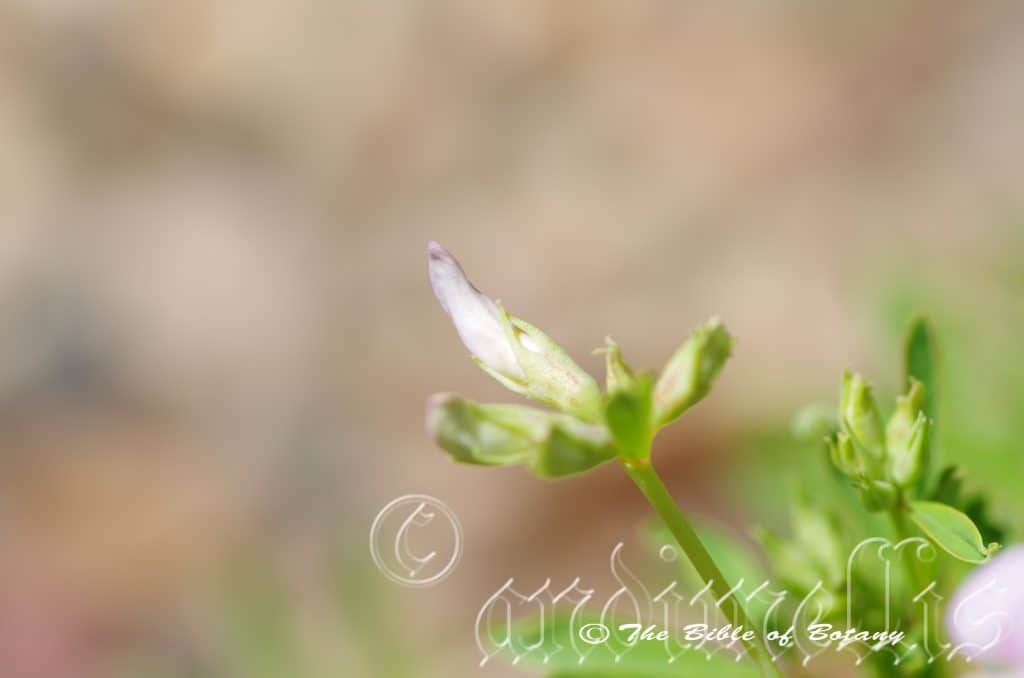
Mount Stuart Townsville Qld.

Mount Stuart Townsville Qld.

Mount Stuart Townsville Qld.
Lotus australis
Classification:
Unranked: Eudicots
Class?Rosids
Order: Fabales
Family: Fabaceae
Genus: From Lotos, which is Ancient Greek for the traditional name for legumes and Folium, which is Latin for foliage. It refers to leaves, which are typical of the legume family.
Specie: From Terra Australis, which is Latin for land of the south and Anum/Ensis, which is Latin for to originate from. It refers to plants, which were first discovered from the land down under.
Sub species:
Common Name: Australian Trefoil.
Distribution:
Lotus australis is found in throughout most of Australia except the true deserts and the central northern districts. It is a common species on the eastern side of the Western Plains and Western Slopes of Queensland and New South Wales.
https://avh.ala.org.au/occurrences/search?taxa=Lotus+australis#tab_mapView
Habitat Aspect Climate:
Lotus australis prefers light dappled shade to full sun. It grows in dry Eucalyptus forests, adjacent to the coast, in open mallee country and open Acacia stands. The altitude ranges from 10 meters ASL to 1200 meters ASL
The temperatures range from minus 4 degrees in August to 44 degrees in January.
The rainfalls range from lows of 250mm to an average of 1300mm however the plants in eastern Tasmania are found in rainfall areas as high as 2000mm per annum.
Soil Requirements:
Lotus australis prefers to grow on average quality to better quality deep sandy loams to light fatty clays. The soils are usually derived from decomposed red sandstones or at times alluvial flats especially on the western plains and inland and accumulated peaty sands or rarely grey podsolic soils. The soils pH. ranges from 4.5pH to 6.5pH. It does not tolerate water logged. Non saline soils to moderately saline soils are tolerated.
Height & Spread:
Wild Plants: 300mm to 600mm by 300mm to 500mm.
Characteristics:
Lotus australis’s is an erect to semi ascending perennial herb. Its stems and branchlets are pale bluish-green to mid bluish-green and are usually very sparsely covered in soft, white hirsute hairs or are rarely glabrous.
Lotus australis’s leaves have five leaflets. The oblanceolate to broad linear or rarely ovate leaves, measure 10mm to 45mm in length by 20mm to 45mm in width. The lower pair is very slightly shorter and narrower than the upper three. The petiole and rachis are flattened with a concave upper surface, pale bluish-green to mid bluish-green and are usually very sparsely covered in soft, white hirsute hairs or are rarely glabrous. The petiolules are usually very sparsely covered in soft, white pilose hairs or are rarely glabrous. The petiolules are usually pinkish-red to reddish purple or at times pale bluish-green to mid bluish-green and glabrous. The petioles are sessile to 0.5mm in length while the rachis measures 8mm to 12mm in length and the petiolules sessile to 2mm in length for the basal pair while the apical three measure 1.5mm to 2mm. Laminas often have a purplish tinge and turn orange or red prior to falling.
The bases taper to the petiolules while the apexes are mucronate to apiculate. The discolourous laminas are pale bluish-green to mid bluish-green and glabrous on the upper laminas while the lower laminas are paler. The laminas recurve slightly upwards from the mid vein to the margins and at the apex or decurve slightly downwards at the apex. The margins are entire or may have 1 to 5 small triangular irregularly spaced teeth. The obtuse mid vein is slightly prominent on the lower lamina and is faintly visible on the upper lamina.
The inflorescence of Lotus australis are born on small umbels of 3 to 8 usually 5 individual flowers from the leaf axils. The peduncle and pedicels are pale bluish-green to mid bluish-green and glabrous. The peduncle measures 20mm to 100mm long while the pedicles measure 3mm to 6mm in length. The pale bluish-green to pale grass-green calyxes are sparsely to moderately covered in reddish striations and are usually sparsely covered in long, soft, white hirsute hairs or are rarely glabrous. The calyxes measure 6mm to 11mm in length including the long narrow triangular lobes which measure 3mm to 6mm in length. The usually pink or at times white or purple corolla measures 10mm to 20mm in length.
The orbicular standard has an emarginate apex and measures 8mm to 16mm in height by 9mm to 18mm in width.
The oblong wing petals are paler than the standard and measure 5mm to 10mm in length by 3mm to 5mm in width.
The oblong keel petals are deeper in colour especially near the apexes than the standard and measure 9mm to 18mm in length by 4mm to 6mm in width.
The white stamens and bright yellow anthers measure 6mm to 12mm in length. The style measures 6mm to 12mm in length.
Pod terete, 30–50 mm long, 2–3 mm diam., ± straight; seeds 15-many, brown, smooth. The flowers appear throughout the year but are often very prolific from September to early December.
Lotus australis’s fruit is a hemispherical gum nut. The 3 ocular gum nuts measure 5mm to 8mm in diameter at the rim. The pale green capsules turn grey on ripening. The valves are not exerted. The rusty brown seeds are mixed with chaff and measure 1.5mm to 2mm in length.
Wildlife:
Lotus australis wildlife is unknown to the author however bees are probably not attracted to the plants in large numbers due to the presence of cyanogenic glucoside in the foliage. Plants that I have seen have never suffered from insect damage which may in fact indicate a quality that would make it beneficial as an insect deterrent to surrounding more susceptible plants.
Cultivation:
Lotus australis is a beautiful small bushy shrub for all sunny open garden situations and adapts perfectly to horticulture. As garden subjects it grows from 0.4 meters to 0.6 meters in height by 0.4 meters to 0.5 meters in diameter when grown in the open position. It is cold tolerant to temperatures at least as low as minus 4 degrees once established. It can be lightly tip pruned in the early stages to help promote bushiness.
Lotus australis is best suited deeper friable loams in open warm to hot positions and treated as a short term perennial shrub. It is very fast growing where a little additional water can be supplied and a native fertilizer is applied after it has been planted out.
Natives that are selected to highlight Lotus australis should not be overpowering so eliminate large flowering deep reds and oranges for more subdued creams or white. Grey foliage forms will lift Lotus australis as would be the careful arrangement of deeper coloured foliages provided the plants are smaller. Various Goodenia species and Hibbertia species planted as ground covers are acceptable.
It can be very useful on the northern side or north western side of sheds where hot suns prevail during the summer months.
Do not use close compact heath scenes as it detests overcrowding losing its complete appeal shape with the tendency to drop leaves, stems and abort flowering.
Propagation:
Seeds: Lotus australis seeds must be treated by placing the seeds in hot which is off the boil and allow them to stand for 4 to 8 hours. Roughing the sides of the seeds with fine sandpaper to assist in germination is another method for a small number of seeds.
Sow the freshly treated seeds into a seed raising mix. Cover the seeds with 15mm to 20mm of fine weed free mulch and keep moist. Place the tray in a warm sunny position and keep moist. When the seedlings are 20mm to 30mm tall, prick them out and plant them into 50mm native tubes using a good organic mix.
Once the seedlings reach 100mm to 150mm in height nip the growing shoots out and plant them into their permanent position.
Fertilize using seaweed, fish emulsion or organic chicken pellets soaked in water on an alternate basis. Fertilize every month until the plants are established then again in late winter the following season to maintain health, vitality and better flowering.
Further Comments from Readers:
“Hi reader, it seems you use The Bible of Botany a lot. That’s great as we have great pleasure in bringing it to you! It’s a little awkward for us to ask, but our first aim is to purchase land approximately 1,600 hectares to link several parcels of N.P. into one at The Pinnacles NSW Australia, but we need your help. We’re not salespeople. We’re amateur botanists who have dedicated over 30 years to saving the environment in a practical way. We depend on donations to reach our goal. If you donate just $5, the price of your coffee this Sunday, We can help to keep the planet alive in a real way and continue to bring you regular updates and features on Australian plants all in one Botanical Bible. Any support is greatly appreciated.
Thank you.” In the spirit of reconciliation we acknowledge the Bundjalung, Gumbaynggirr and Yaegl and all aboriginal nations throughout Australia and their connections to land, sea and community. We pay our respect to their Elders past, present and future for the pleasures we have gained.
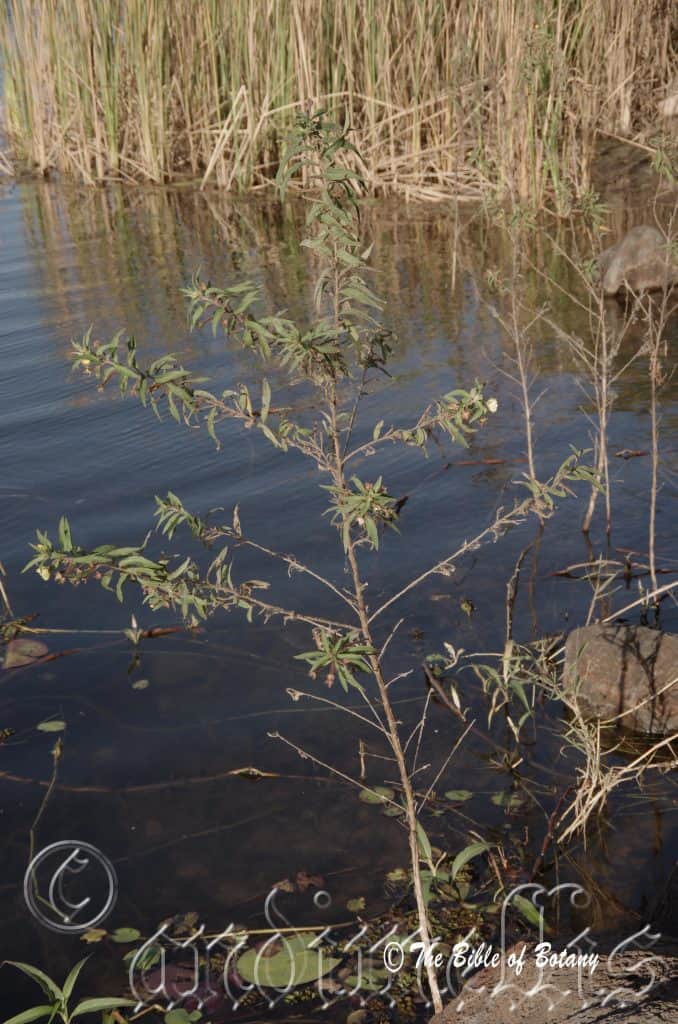
Ross River Condon Qld.
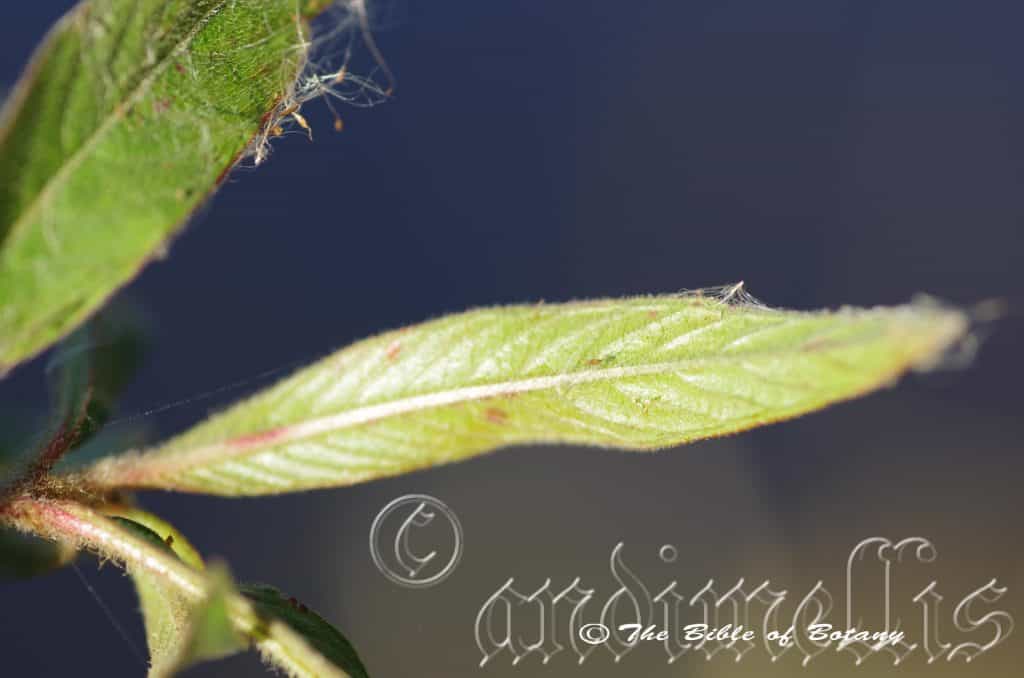
Ross River Condon Qld.
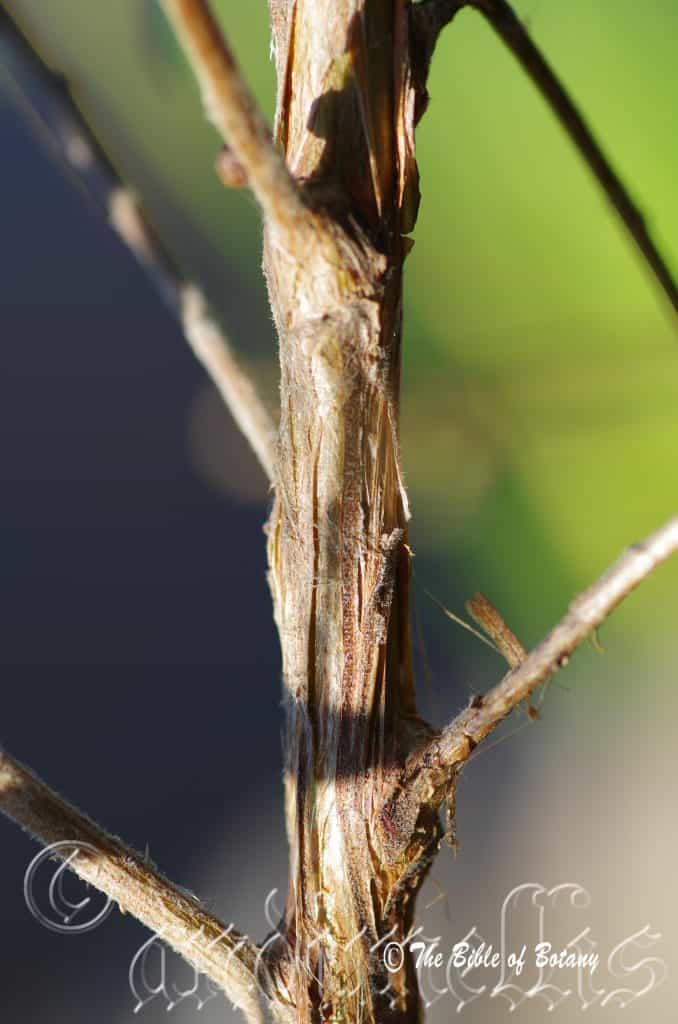
Ross River Condon Qld.
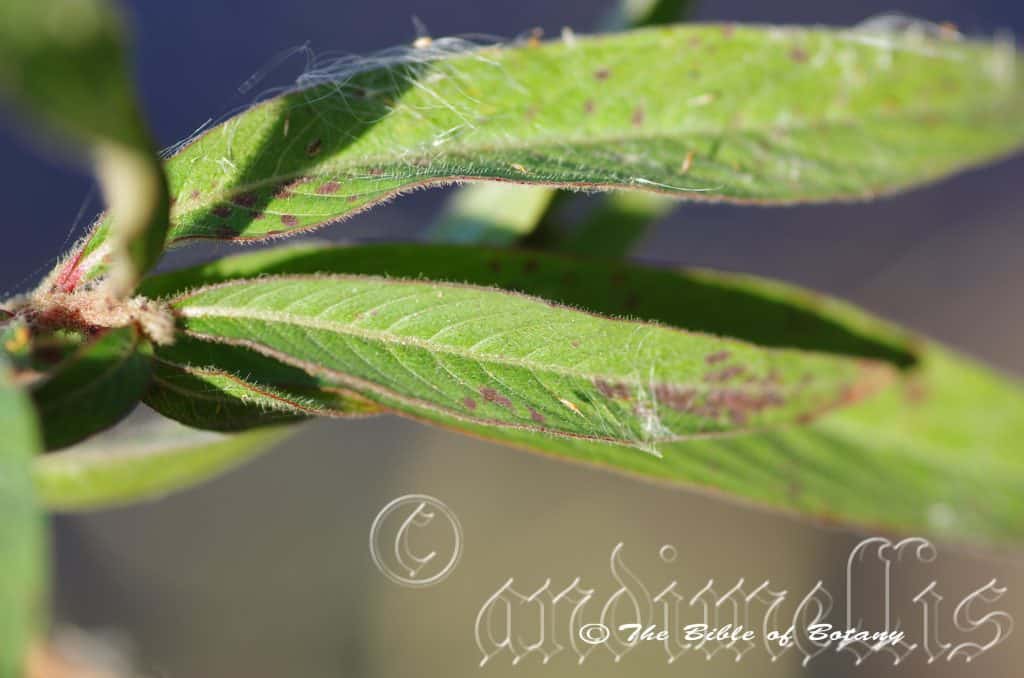
Ross River Condon Qld.
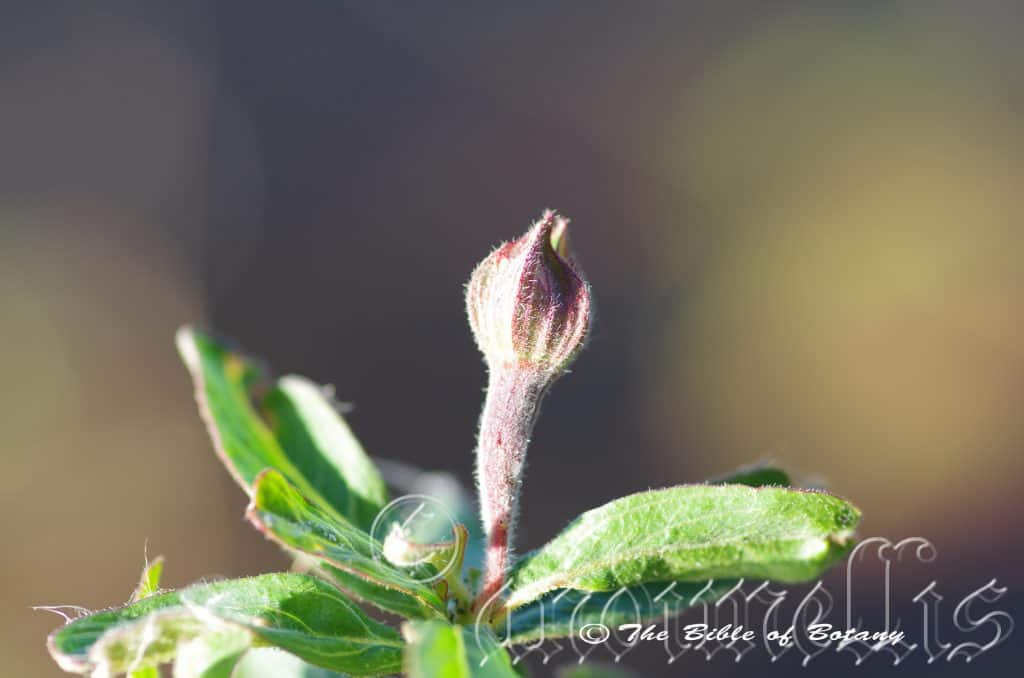
Ross River Condon Qld.

Ross River Condon Qld.
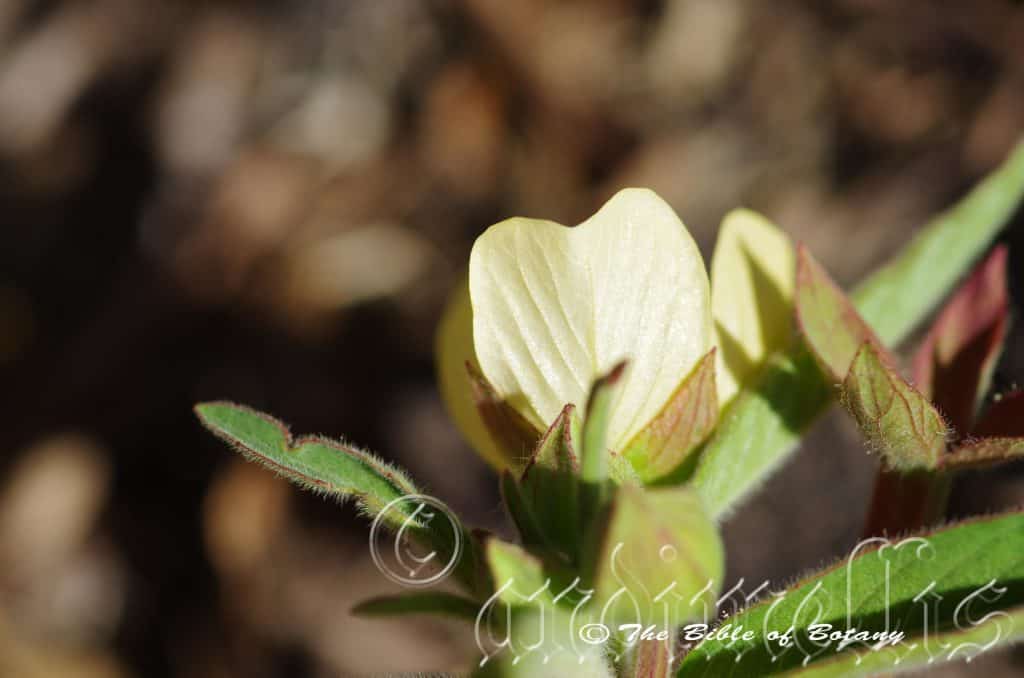
Ross River Condon Qld.
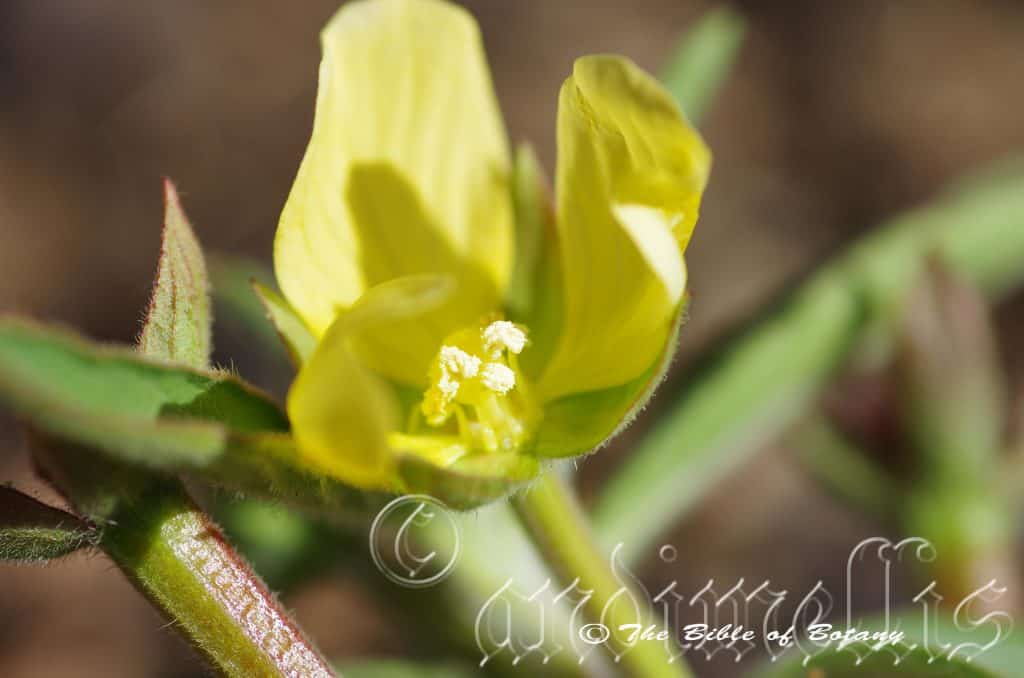
Ross River Condon Qld.

Ross River Condon Qld.
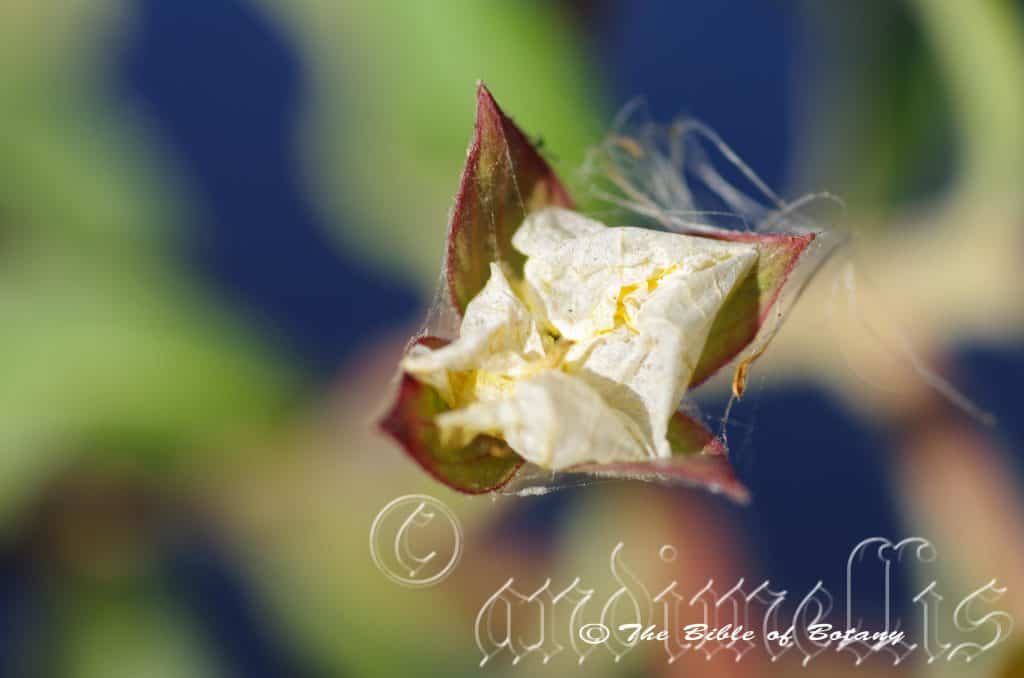
Ross River Condon Qld.
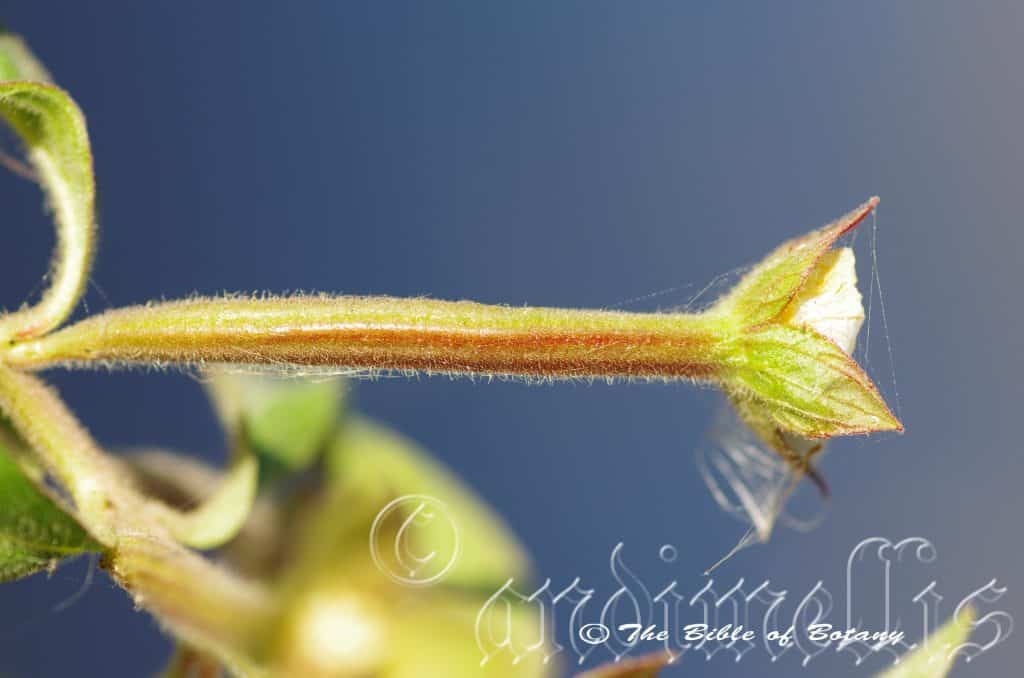
Ross River Condon Qld.
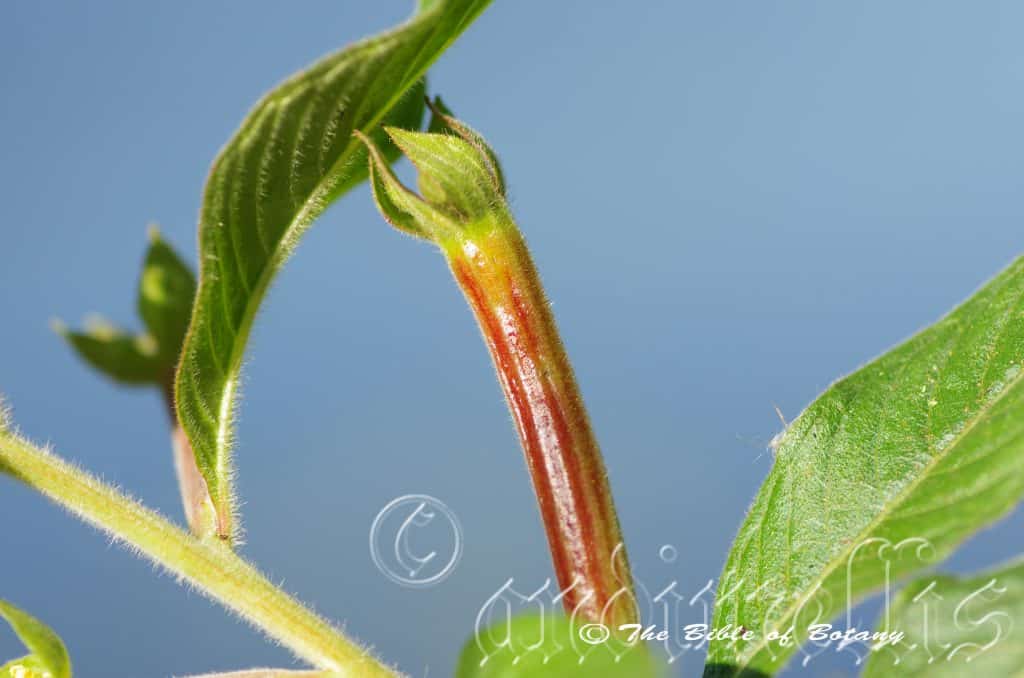
Ross River Condon Qld.
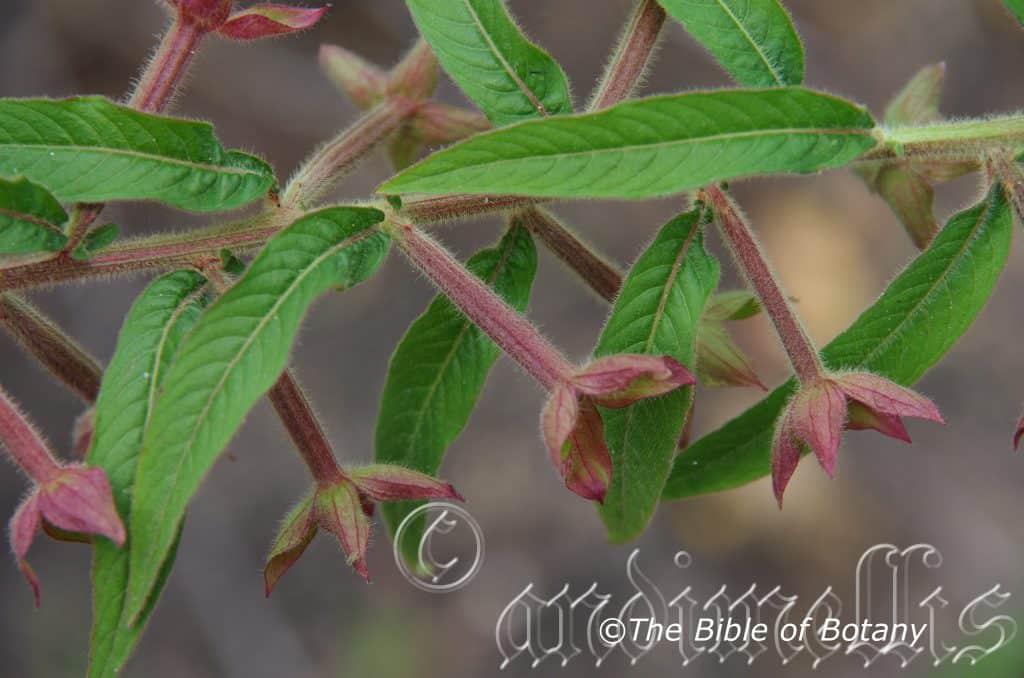
Big Crystal Creek Paluma Range Qld.
Ludwigia octovalvis
Classification:
Unranked: Eudicots
Unranked: Rosids
Order: Myrtales
Family: Onagraceae
Genus: Is named in honour of Christian Ludwig; 1709-1773, who was an English botanist and author who specialized in plants of North Africa.
Specie: From Okt?, which is Ancient Greek or later Oct?, which is Latin for eight and Valvae, which is Latin for a door leaf. It refers to a fruit having eight separate compartments.
Sub species:
Common Name: Willow Primrose.
Distribution:
Ludwigia octovalvis is widespread in the northern third of Australia north of a line from Beagle Bay and Dampier Peninsular on the central western coast of Western Australia to Toormina on the north coast of New South Wales. It is found further south of this line on the Macdonnell Ranges in the Northern Territory.
In the east it is found in the Macquarie Marshes and in an area bounded by Kooba to Willbriggie and Colleambally around Griffith in New South Wales.
https://avh.ala.org.au/occurrences/search?taxa=Ludwigia+octovalvis#tab_mapView
Habitat:
Ludwigia octovalvis prefers light dappled shade to full sun. It grows in wet Eucalyptus forests along creek beds, adjacent to coastal rainforests or adjacent to heath swamps. The most favoured sites are those where good ground water is assured. The altitude ranges from 5 meters ASL to 820 meters ASL.
The temperatures range from minus 2 degrees in August to 44 degrees in January and February.
The rainfalls range from lows of 150mm to an average of 3000mm however the plants derive most of their moisture through capillary action from water lying close to the surface below the ground and from nearby swamps, marshes drainage lines creeks, streams and rivers.
Soil Requirements:
Ludwigia octovalvis prefers better quality deep sandy loams to heavy clays. The soils are usually derived from decomposed sandstone, granites, brown basalt, black basalt, shale or metamorphic rocks, alluvial flats, accumulated peaty sands and grey podsolic soils. The soils pH. ranges from 4.5pH to 7pH. It tolerates water logged soils but prefers seasonal water logged soils or continuously wet ground. Non saline soils to moderately saline soils are tolerated.
Height & Spread:
Wild Plants: 2m to 4m by 2m to 3m.
Characteristics:
Ludwigia octovalvis is an herbaceous long lived perennial with olive-grey to olive-green, glabrous semi glossy with longitudinal thin, chartaceous flakes on the main stem to the larger branching stems. The grass-green tinged red or purplish red stems are usually covered in long white hirsute hairs or at times are almost glabrous. The stems root readily from the nodes where they come in contact with the soil or water.
The alternate leaves are linear, lanceolate to ovate leaves measure 100mm to 150mm in length by 10mm to 40mm in width. The petiole measures 0mm to 20mm in length. The bases are cuneate to cuneate-rounded while the apexes are obtuse-acute. The discolourous laminas are mid green to deep green and sparsely covered in white hirsute hairs on the upper laminas while the lower laminas are paler and sparsely to moderately covered in white hirsute hairs. The laminas recurve upwards from the mid vein to the margins and decurve downwards on the apical 50mm to 80mm of the leaf’s length while the margins are entire and slightly undulating. The mid vein is prominent on the lower lamina and is distinctly visible on the upper lamina. The petiole measures 0mm to 20mm in length.
The inflorescence are born solitary from the leaf nodes. The flowers measure 24mm to 46mm in diameter. The pedicles measure 0mm to 1mm in length. When present the setaceous bracteoles are at the base of the ovary or near the apex of the pedicel. The 4 broad lanceolate to elliptical sepals are grass-green, orange-red to reddish and sparsely covered in long white hirsute hairs externally while internally it is grass-green, orange-red to reddish and glabrous. The sepals measure 7mm to 12mm in length. The 4 bright yellow, broad obovate petals margins are deeply emarginate. The glabrous petals measure 10mm to 20mm in length by 8mm to 22mm in width.
The 8 bright yellow divaricate stamens are born at the base of the stigma and measure 1.5mm to 2.5mm in length. The yellow pistil measure 5mm to 7mm in length while the stigma measures 2.5mm to 4mm in diameter. The flowers appear from December to August.
The fruits are elongated terete 8 valve capsules. The pale green capsules are tinged reddish-purple and turn off white to pale grey when ripe. The sepals are persistent on the ripe fruits. The immature capsules are glossy to dull and are moderately to densely covered in soft, white short and long hirsute and tomentose hairs. The small creamy seeds are in several longitudinal rows within each capsule. The capsules measure 20mm to 45mm in length by 2.5mm to 5mm in diameter.
Wildlife:
Ludwigia octovalvis’s wildlife is unknown to the author.
Cultivation:
Ludwigia octovalvis are beautiful hirsute quick growing perennial shrubs for warm temperate, subtropical and tropical regions in Australia. It is suitable for small to medium size gardens. As a garden subject it will grow from 2 meters to 3 meters in height by 1 meters to 2.5 meters in diameter when grown in the open. It is cold tolerant to temperatures at least as low as minus 1 degree once established but should be treated as frost tender. It can be tip pruned if a smaller bushier shrub is required or to produce more lateral branches and to promote more flowering. If it is pruned to form a heath like growth lead shoots must be trimmed on a regular basis to encourage horizontal growth.
It is very quick growing in moisture retentive soils so offers a new garden the chance to have colour and foliage in a very short period of time. It is well suited to wet, water logged, poor acidic soils sandy loams to heavy silts.
Try it around or in depressions where water lies or is a seasonal problem. Here it will thrive and reach its maximum potential in the first year.
Propagation:
Seeds: Ludwigia octovalvis seeds can be sown directly into a seed raising mix after roughing the sides with fine sandpaper to assist in germination. Cover the seeds with 15mm to 20mm of fine weed free mulch and keep moist. Place the tray in a warm sunny position and keep moist. When the seedlings are 20mm to 30mm tall, prick them out and plant them into 50mm native tubes using a good organic mix.
Once the seedlings reach 100mm to 150mm in height they can be planted out into their permanent position.
Fertilize using seaweed, fish emulsion or organic chicken pellets soaked in water on an alternate basis. Fertilize every two months until the plants are established then twice annually in early September or March to maintain health, vitality and better flowering.
Further Comments from Readers:
“Hi reader, it seems you use The Bible of Botany a lot. That’s great as we have great pleasure in bringing it to you! It’s a little awkward for us to ask, but our first aim is to purchase land approximately 1,600 hectares to link several parcels of N.P. into one at The Pinnacles NSW Australia, but we need your help. We’re not salespeople. We’re amateur botanists who have dedicated over 30 years to saving the environment in a practical way. We depend on donations to reach our goal. If you donate just $5, the price of your coffee this Sunday, We can help to keep the planet alive in a real way and continue to bring you regular updates and features on Australian plants all in one Botanical Bible. Any support is greatly appreciated. Thank you.”
In the spirit of reconciliation we acknowledge the Bundjalung, Gumbaynggirr and Yaegl and all aboriginal nations throughout Australia and their connections to land, sea and community. We pay our respect to their Elders past, present and future for the pleasures we have gained.
Ludwigia peploides
Classification:
Unranked: Eudicots
Unranked: Rosids
Order: Myrtales
Family: Onagraceae
Genus: Is named in honour of Christian Ludwig; 1709-1773, who was an English botanist and author who specialized in plants of North Africa.
Specie: From Phibalee, which is Ancient Greek for a kind of myrtle and Eîdos/Oides, which is Ancient Greek for alike or similar to. It refers to the appearance of the shrubs especially the leaves, which resemble some of the myrtles of Europe.
Sub species: Ludwigia peploides subsp. montevidensis. From Montevideo, which is Latinized from the Uraguayan district and Anum/Ensis, which is Latin for to originate from. It refers to the original species being found in Uruguay. It is the only sub specie found in Australia.
Common Name: Water Primrose.
Distribution:
Ludwigia peploides subsp. montevidensis is found at Oenpelli and Humpty Doo in the Northern Territory.
In the east it is found south and east of a line between the Lockhart River and the Kownayama Aboriginal Reserve, Clear Water Lagoon, Mount Isa, Boulia in northern Queensland to The Eleanor in far north eastern South Australia, then south east to Narromine in central New South Wales, then south west to Little Lake Hattah, Hattah Lakes National Park in Victoria, where it follows the Murray river down to Lake Alexandrina and across to Adelaide in south eastern South Australia.
https://avh.ala.org.au/occurrences/search?taxa=Ludwigia+peploides#tab_mapView
Habitat Aspect Climate:
Ludwigia peploides prefers light dappled shade to full sun. It grows in and along creeks, springs around lakes, billabongs and swamps including seasonal swamps lakes and billabongs. It often establishes itself in ephemeral pools regions around permanent water and spreads into and over the deeper water. The altitude ranges from 2 meters ASL to 640 meters ASL
The temperatures range from minus 2 degrees in August to 38 degrees in January.
The rainfalls range from lows of 100mm to an average of 2600mm however the plants derive all their moisture needs by growing in water on muddy flats or across the surface of the water.
Soil Requirements:
Ludwigia peploides prefers to grow on better quality deep loams to medium clays. The soils are usually derived from decomposed, sandstones, granites, brown basalt, black basalt, shale, metamorphic rocks, alluvial flats accumulated peaty sands or grey podsolic soils. The soils pH. ranges from 4.5pH to 7pH. It tolerates water logged soils and prefers permanent water to grow in or on, seasonal water holes or where the plants are partly submerged for extended periods. Non saline soils to moderately saline soils are tolerated.
Height & Spread:
Wild Plants: 0.1m to 0.2m by 1.5m to 3m.
Characteristics:
Ludwigia peploides’s is a herbaceous long lived perennial with olive-grey to olive-green, glabrous semi glossy or covered in white villous hairs. The new growth and apex stems are grass-green tinged red or purplish red stems are usually covered in long white villous hairs on aerial sections and glabrous on submerged sections. The stems root readily from the nodes where they come in contact with the soil or water. The plants produce pneumatophores on the submerged sections.
The alternate leaves are oblanceolate to obovate and measure 10mm to 100mm in length by 4mm to 30mm in width. The petioles are glabrous or sparsely covered in white villous hairs on emergent leaves and measure 2mm to 30mm in length. The bases are tapering while the apexes are tapering obtuse to acuminate. The concolourous laminas are mid green to deep green and glabrous or often with a row of villous hairs extending along the midvein on the lower lamina on emergent leaves. The laminas are flat or recurve slightly upwards from the mid vein to the margins while the margins are entire. The mid vein is prominent on the lower lamina and is distinctly visible on the upper lamina.
The inflorescence are born solitary from the leaf nodes. The flowers measure 24mm to 46mm in diameter. The pedicles measure 0mm to 1mm in length. The narrow triangular bracteoles are at themed point of the ovary. The usually 4 or at times 5 or 6 narrow lanceolate to narrow triangular sepals are grass-green and sparsely covered in long white villous hairs externally and are glabrous internally. The sepals measure 5mm to 11mm in length. The 4 bright yellow, broad obovate petals margins are deeply emarginate. The glabrous petals measure 10mm to 20mm in length by 10mm to 24mm in width.
The 10 divaricate to erect stamens are born at the base of the stigma. The bright yellow stout filaments measure 2mm to 3.5mm in length while the pale yellow basifixed anthers measure 1.5mm to 2mm in diameter. The yellow pistil measure 5mm to 7mm in length while the stigma measures 2mm to 3mm in diameter. The flowers appear from November to April.
The fruits are elongated terete 10 ribbed capsules. The pale green capsules turn off white to pale grey when ripe. The sepals are persistent at the apex of the on the ripe fruits. The small creamy seeds are in several longitudinal rows within each capsule. The capsules measure 10mm to 30mm in length by 2mm to 4mm in diameter. The seeds in a single longitudinal row in each carpel and are embedded in endocarp.
Wildlife:
Ludwigia peploides’s wildlife is unknown to the author.
Cultivation:
Ludwigia peploides are beautiful quick growing perennial shrubs for warm temperate, subtropical and tropical wet regions in Australia. It is suitable for medium to large size gardens. As garden subjects they will grow from 0.15 meters to 0.2 meters in height by 2 meters to 3 meters in diameter when grown in the open over water. It is cold tolerant to temperatures to minus 1 degree once established but should be treated as frost tender. They can be pruned if a smaller bushier shrub is required or to produce more lateral branches and a heath like plant.
It is very quick growing in moisture retentive soils so offers a new garden the chance to have colour and foliage in a very short period of time. It is well suited to wet, water logged poor acidic soils sandy loams to heavy clays.
It is not suitable in high wind areas particularly if they have been fertilized or are growing on shallow soils over rock. This will cause quick growth making the shrubs top heavy and susceptible to be being blown over or branches breaking which will tear the bark and scar the tree.
Propagation:
Seeds: The seeds can be sown directly into a seed raising mix after roughing the sides with fine sandpaper to assist in germination. Cover the seeds with 15mm to 20mm of fine weed free mulch and keep moist. Place the tray in a warm sunny position and keep moist. When the seedlings are 20mm to 30mm tall, prick them out and plant them into 50mm native tubes using a good organic mix.
Once the seedlings reach 100mm to 150mm in height they can be planted out into their permanent position.
Fertilize using seaweed, fish emulsion or organic chicken pellets soaked in water on an alternate basis. Fertilize every two months until the plants are established then twice annually in early September or March to maintain health, vitality and better flowering.
Further Comments from Readers:
“Hi reader, it seems you use The Bible of Botany a lot. That’s great as we have great pleasure in bringing it to you! It’s a little awkward for us to ask, but our first aim is to purchase land approximately 1,600 hectares to link several parcels of N.P. into one at The Pinnacles NSW Australia, but we need your help. We’re not salespeople. We’re amateur botanists who have dedicated over 30 years to saving the environment in a practical way. We depend on donations to reach our goal. If you donate just $5, the price of your coffee this Sunday, We can help to keep the planet alive in a real way and continue to bring you regular updates and features on Australian plants all in one Botanical Bible. Any support is greatly appreciated. Thank you.”
In the spirit of reconciliation we acknowledge the Bundjalung, Gumbaynggirr and Yaegl and all aboriginal nations throughout Australia and their connections to land, sea and community. We pay our respect to their Elders past, present and future for the pleasures we have gained.
Luffa aegyptiaca
Classification:
Unranked: Eudicots
Unranked: Rosids
Order: Cucurbitales
Family: Cucurbitaceae
Genus: From Lufah, which is Latinized from the Arabic word for the luffa fruit or vegetable sponge. It refers to the horticultural melon luffa.
Specie: From Aegyptiakos, which is Ancient Greek or Aegytiacus, which is Latinized for Egyptian. It refers to plants, which were first discovered in Egypt.
Variety: Luffa aegyptiaca var. leiocarpa. From Leîos, which is Ancient Greek or Leio, which is Latin for smooth or glabrous and Karpós, which is Ancient Greek for a fruit. It refers to the fruits, which are somewhat smooth and glossy.
Variety: Luffa aegyptiaca var. peramara. The latest information states that this variety does not appear in Australia.
Common Name: Sponge Gourd, Vegetable Sponge, Vegetable Strainer or Luffa.
Distribution:
Luffa aegyptiaca var. leiocarpa is found north in a line from the Keep River National Park to Groote Eylandt in the Northern Territory and along Bluey Creek further south near the Queensland border.
On the east coast it is found south from the Torres Straight Islands, Cape York Peninsular to the Pioneer River in Mackay with a disjunct population further south on the Fitzroy River around Rockhampton. There is also an isolated population on the Montara waterholes in far south western Queensland.
It is also found east from the Phillipines, Malaysia, Timor, Indonesia, Papua, New Guinee and many of the Island Nations east of New Guinee.
https://avh.ala.org.au/occurrences/search?taxa=Luffa+aegyptiaca#tab_mapView
Habitat Aspect Climate:
Luffa aegyptiaca prefers light dappled shade to full sun. It grows in moist open forests, riparian lines, vine thickets, monsoonal forests and moist gallery forest especially along drainage lines or near low flow seepages. The altitude ranges from 2 meters ASL to 300 meters ASL.
The temperatures range from 5 degrees in August to 40 degrees in January.
The rainfalls range from lows of 800mm to an average of 3200mm except for the isolated population at the Montara waterholes where the rainfall varies from lows of 160mm to an average of 220mm per annum.
Soil Requirements:
Luffa aegyptiaca prefers to grow on sandy loams to medium clays or light silts to heavy silts. The soils are derived from decomposed sandstone, granite, shale, brown basalt, black basalt or metamorphic rocks which are usually laid down as alluvial deposits or at times accumulated beach. The soils pH. ranges from 4.5pH to 7pH. It tolerates water logged soils to very wet soils. Non saline soils to moderately saline soils are tolerated.
Height & Spread:
Wild Plants: 6m to 10m by 6m to 10m.
Characteristics:
Luffa aegyptiaca’s is an annual or short lived perennial climbing creeper with slender stems. The stems are mid green and measure 5 meters to 8 meters in length by 15mm to 20mm in diameter near the base. The plants single undivided tendrils are at 90 degrees to the leaf axils and on the apical side.
The palmatifid or palmate lobed leaves measure 100mm to 250mm in length by 110mm to 260mm in width. The petioles are grooved on the upper surface and measure 40mm to 135mm in length. The bases are palmate-cordate while the apexes are acute. The usually 5 or at times 3 or 7 lobes are usually shallowly divided or at times deeply divided. The discolourous laminas are mid grey-green to deep grey-green, dull and covered in white puberulent hairs on the upper laminas are slightly glaucous-green to mid blue-green and sparsely covered in white puberulent hairs and oil glands. The laminas recurve slightly upwards from the base and main palmate veins to the margins while the margins are entire. The main palmate veins and lateral veins are prominent on the lower lamina and are faintly visible from the upper lamina. The tendrils are 3 to 5 branched and are at 90 degrees to the leaf axils.
The monoecious inflorescences are born from the leaf axils.
The male flowers are in bracteate racemes that measure 100mm to 250mm in length. The mid grey-green hypanthium measures 2mm to 4mm in length while the 5 mid grey-green narrow triangular calyx lobes measure 4mm to 7mm in length. The bright yellow lacerate petals measure 10mm to 20mm in length. The stamens are attached to the base of the hypanthium. The yellow filaments are densely covered in yellow hirsute hairs.
The female flowers are born solitary on sort pedicels. The pedicels are sparsely covered in white puberulent hairs and measure 3mm to 4mm in length. There are 5 staminodes attached at the base of the hypanthium opposite the nectaries. The ovaries are sparsely covered in white puberulent hairs and short spinose spines. The ovaries measure 8mm to 12mm in length. The styles are covered in yellow pubescent hairs while the 3 stigmas are deep yellow. The flowers appear throughout the year in the tropics and during the warmer months in the southern populations.
The fruits are ellipsoidal gourds. The gourds measure 600mm to 1000mm in length by 35mm to 45mm in diameter. The deep green gourds hang down and turn yellow-green when ripe. They develop a large pore at the apex. The outer shell is thin and brittle while the inner cavity is very fibrous except for a longitudinal cavity down the centre which facilitates the shedding of seeds. The numerous, flat, pale grey-brown to fawnish-grey, obloidal seeds measure 9mm to 10mm in length by 6mm to 7mm in width and 3mm to 4mm in depth.
Wildlife:
Luffa aegyptiaca flowers are very attractive to all our native bees for both the pollen and nectar.
Cultivation:
Luffa aegyptiaca makes an excellent fast growing, vigorous annual vine that requires a strong trellis to grow on. It prefers a rich soil in a sunny frost free environment to grow to its full potential and yield good crops. It is an excellent crop for organic growers who already have a good fertile soil. It is most suitable for medium and large gardens close to the coast in sub tropical gardens or tropical gardens and would be worthwhile trying in semi-arid zones where good quality water is available. As garden subjects they will grow from 4 meters to 5 meters in height by 8 meters to 12 meters in width on a trellis. It is frost sensitive so frosts must be avoided at all costs and they need 280 to 320 frost free days a year to yield their maximum potential.
The young immature fruits are tender and cooked and taste similar to zucchinis but are smoother and less sweet. The stem tops, young leaves and flower buds can be steamed as vegetables while the seeds can be roasted with garlic or chili and eaten like peanuts.
The other use is as a substitute for kitchen and bathroom sponges. For a sponge the luffa need to be fully ripened on the vine until the stems are yellow and begin to turn brown. After harvesting they should be allowed to dry for at least an extra two weeks until the skin hardens. Shake the seeds out then crush the thin brittle skin and peel away.
Propagation:
Seeds: Luffa aegyptiaca seeds need to be soaked in warm to tepid water for 24 hours prior to sowing. The freshly treated seeds can be sown directly into a 50mm tubes with good quality seed raising mix. Cover the seeds with 5mm to 10mm of fine weed free mulch and keep moist. Place the tray in a warm sunny position. When the seedlings reach the 1st or 2nd true leaf stage and as the first roots appear at the bottom of the trays they can be planted out into their permanent positions. Do not delay as the plants will set back badly if they become root bound.
Fertilize using seaweed, fish emulsion or organic chicken pellets soaked in water on an alternate basis. Fertilize every two months until the plants are established then twice annually in early September or March to maintain health, vitality and better flowering.
Further Comments from Readers:
“Hi reader, it seems you use The Bible of Botany a lot. That’s great as we have great pleasure in bringing it to you! It’s a little awkward for us to ask, but our first aim is to purchase land approximately 1,600 hectares to link several parcels of N.P. into one at The Pinnacles NSW Australia, but we need your help. We’re not salespeople. We’re amateur botanists who have dedicated over 30 years to saving the environment in a practical way. We depend on donations to reach our goal. If you donate just $5, the price of your coffee this Sunday, We can help to keep the planet alive in a real way and continue to bring you regular updates and features on Australian plants all in one Botanical Bible. Any support is greatly appreciated. Thank you.”
In the spirit of reconciliation we acknowledge the Bundjalung, Gumbaynggirr and Yaegl and all aboriginal nations throughout Australia and their connections to land, sea and community. We pay our respect to their Elders past, present and future for the pleasures we have gained.
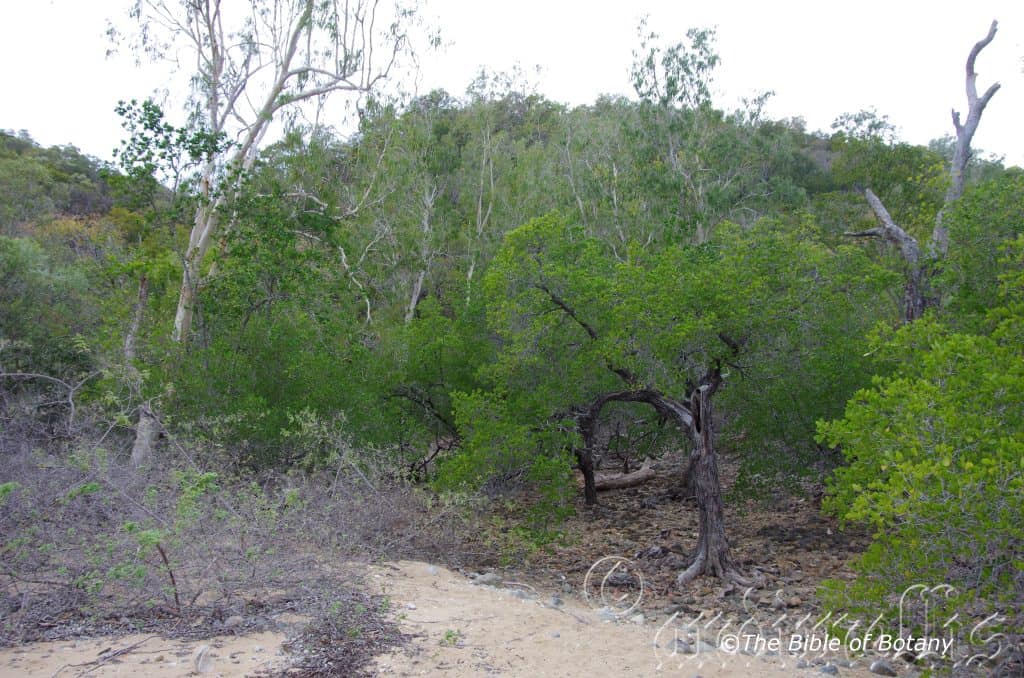
Magnetic Island Qld.
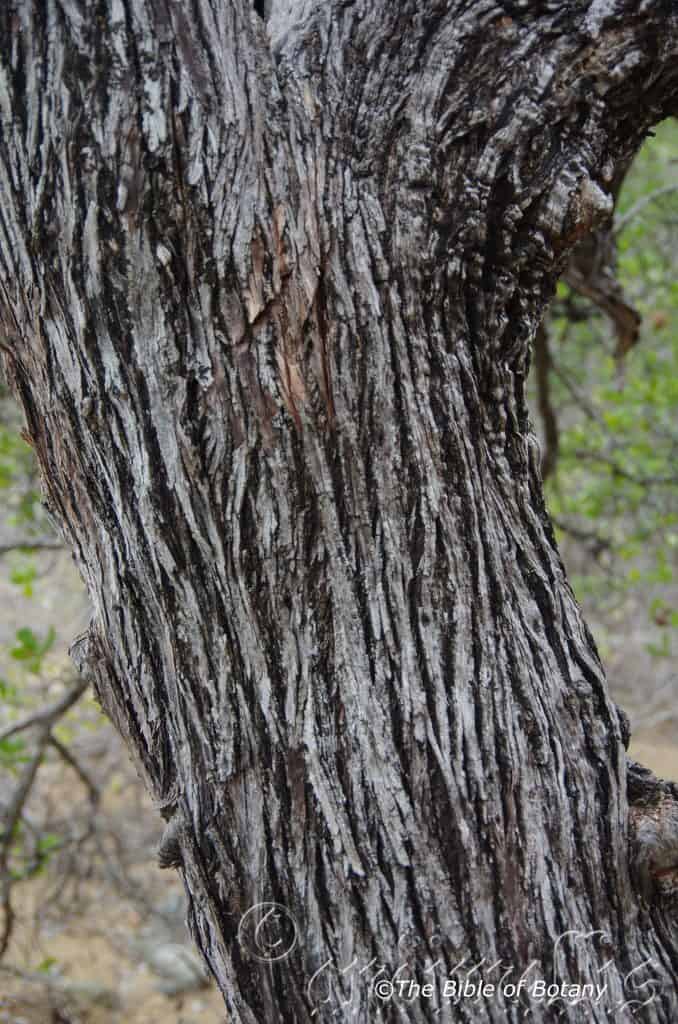
Magnetic Island Qld.
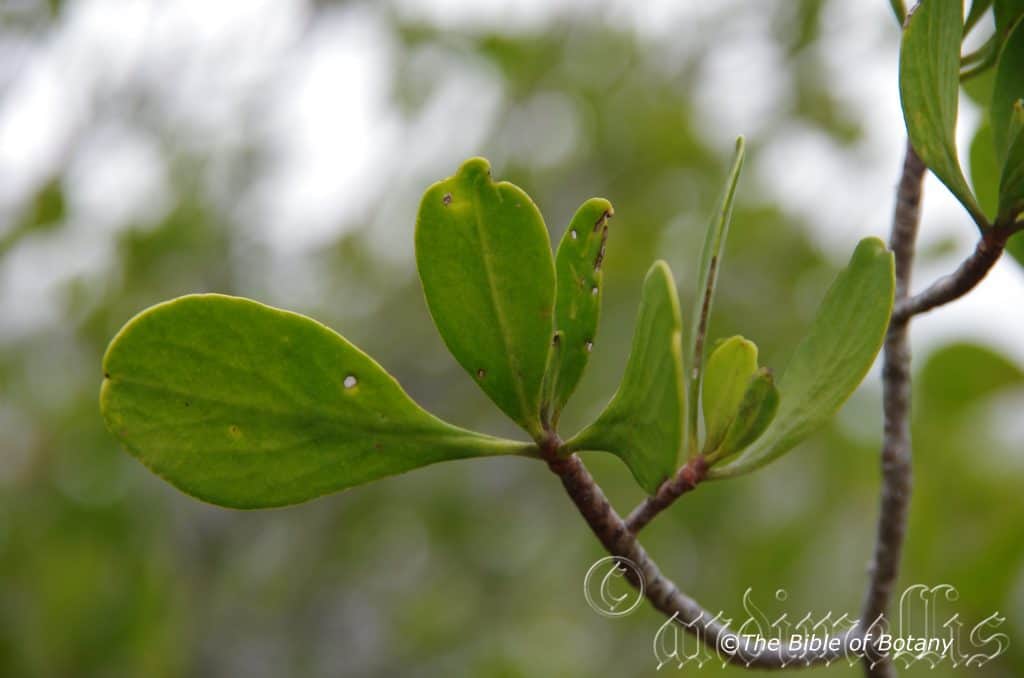
Magnetic Island Qld.

Magnetic Island Qld.
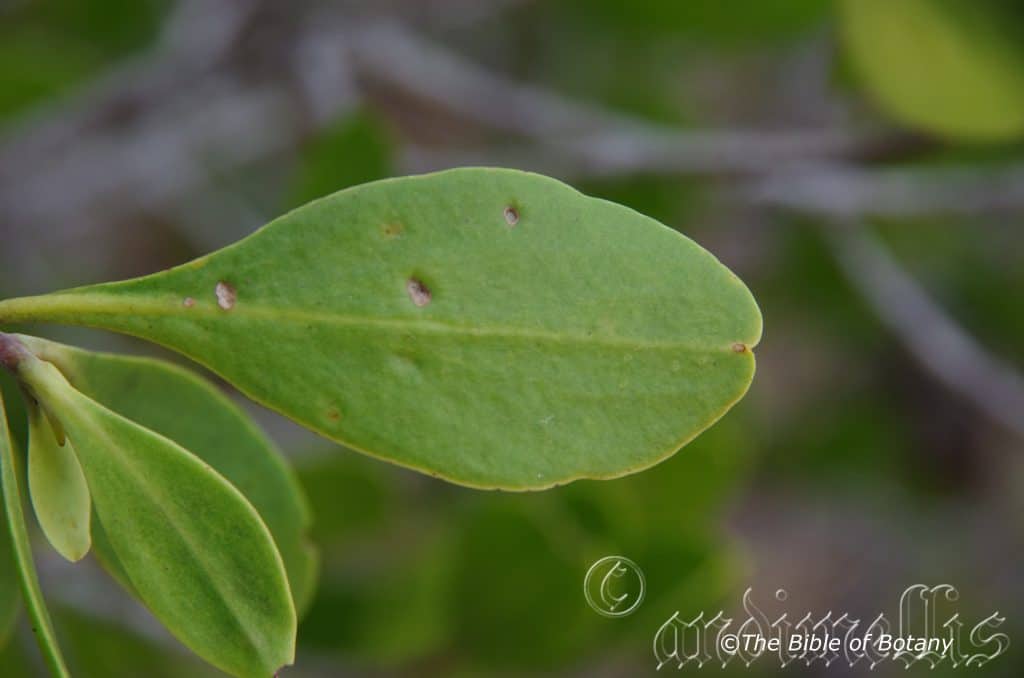
Magnetic Island Qld.
Lumnitzera racemosa
Classification:
Phylum: Eudicots
Class: Rosids
Order: Myrtales
Family: Combretaceae
Genus: is named in honour of István Lumnitzer; 1750–1806, who was a Hungarian botanist.
Specie: From Rháx, which is Ancient Greek, or later Rac?m?sa, which is Latin for a bunch of grapes. It refers to plants, which bear flowers and fruits that resemble a bunch of grapes.
Sub species:
Common Name: White Flowered Black Mangrove.
Distribution:
Lumnitzera racemosa is around and close to the coast from Dampier Creek In central coastal Western Australia to Canaipa Passage in far south eastern coastal Queensland.
It is also found on the east coast of Africa through the Middle East Guangdong, Guangxi, Fangcheng, Hepu, Hainan, Taiwan, Bangladesh, Cambodia, India, Indonesia, Ryukyu Islands in Japan, S Korea, East Timor, Indonesia, the southern coast of New Guinee and many of the Island Nations further to the east.
https://avh.ala.org.au/occurrences/search?taxa=Lumnitzera+racemosa#tab_mapView
Habitat Aspect Climate:
Lumnitzera racemosa prefers light dappled shade to full shade. It grows as an understory shrub in well-developed low land rainforests. The altitude ranges from 5 meters ASL to 300 meters ASL.
The temperatures range from 5 degrees in August to 38 degrees in January.
The rainfalls range from lows of 1600mm to an average of 3200mm.
Soil Requirements:
Lumnitzera racemosa prefers to grow on sandy loams to medium clays, light silts to heavy estuarine silts or accumulated sands. The soils pH. ranges from 4.5pH to 8pH. It does not tolerate water logged soils but often is inundated for periods on a regular basis. Non moderately saline soils to very saline soils are tolerated as are salt laden winds.
Height & Spread:
Wild Plants: 5m to 9m by 5m to 6m.
Characteristics:
The deep grey-brown to deep grey trunk of Lumnitzera racemosa is rather stout at 0.33meters in diameter at breast height. The bark is deeply, longitudinally furrowed, while the branches are coarsely rough to the small limbs. The juvenile stems are reddish-yellow and smooth.
Lumnitzera racemosa has spatulate to oblanceolate or obovate leaves that measure 35mm to 70mm in length by 10mm to 25mm in width. The thick, reddish-yellow, terete petioles are glabrous and measure 8mm to 18mm in length. The bases are cuneate, while the apexes are obtuse, usually with a retuse tip. The discolourous, coriaceous laminas are mid green to greenish-yellow and glabrous on the upper laminas while the lower laminas are paler. The laminas flat. The margins are entire. The terete mid vein is strongly prominent on both laminas especially on the basal half, while the 3 or 4 pairs of lateral veins are prominent on the upper lamina and are obscurely visible on the lower lamina.
The fragrant, axillary inflorescences measure 20mm to 60mm in length. The pale greenish-yellow calyx tubs measure 7mm to 10mm in length. The bracteoles measure 1mm to 1.5mm in length, while the elliptical lobes measure 1mm to 2.5mm in length. The apexes are obtuse or shortly mucronate. The white petals are elliptic, with obtuse apexes and measure 4.5mm to 5.5mm in length. The 5 or 10 stamens measure 4mm to 5.5mm in length, while the basifixed anthers are spherical. The erect Style measures 4mm to 5mm in length. The flowers appear from August to April.
The ellipsoid to ovoid, slightly compressed on one side green fruits, turn blackish-brown when ripe. They measure 10mm to 20mm in length by 5mm to 8mm in width. There are usually 2 or at times 3 smooth longitudinal ridges.
Wildlife:
Lumnitzera racemosa’s wildlife is unknown to the author.
Cultivation:
Lumnitzera racemosa makes an excellent fast growing, vigorous shrub or small tree for those sunny, exposed areas around the house especially those adjacent to the coast. It is suitable for small, medium and large gardens in warm temperate, subtropical or tropical gardens. As a garden subject it will probably grow from 4 meters to 5 meters in height by 4 meter to 5 meters in diameter when grown in an open shady position as a shrub or 8 meters to 10 meters in height by 4 meter to 5 meters in diameter as a small tree with an upper canopy. It is not cold tolerant to temperatures and minimum winter temperatures should be maintained above 4 degrees even when established.
Mangroves world-wide and this species is no exception are under severe threat from coastal development. As it grows on the landward edge of the mangrove area, it is more threatened by rising sea levels than are other species because it may be unable to move further inland. There is a decline in populations of this species due to habitat loss and timber harvesting, but at this stage it is a common species of mangrove with a very wide range which is why it has not been placed on an endangered list at the present time.
Propagation:
Seeds: Lumnitzera racemosa seeds can be sown directly into 75mm native tubes.
Once the seedlings reach 100mm to 150mm in height they can be planted out into their permanent position.
Fertilize using seaweed, fish emulsion or organic chicken pellets soaked in water on an alternate basis. Fertilize every two months until the plants are established then twice annually in early September or March to maintain health, vitality and better flowering.
Further Comments from Readers:
“Hi reader, it seems you use The Bible of Botany a lot. That’s great as we have great pleasure in bringing it to you! It’s a little awkward for us to ask, but our first aim is to purchase land approximately 1,600 hectares to link several parcels of N.P. into one at The Pinnacles NSW Australia, but we need your help. We’re not salespeople. We’re amateur botanists who have dedicated over 30 years to saving the environment in a practical way. We depend on donations to reach our goal. If you donate just $5, the price of your coffee this Sunday, We can help to keep the planet alive in a real way and continue to bring you regular updates and features on Australian plants all in one Botanical Bible. Any support is greatly appreciated. Thank you.”
In the spirit of reconciliation we acknowledge the Bundjalung, Gumbaynggirr and Yaegl and all aboriginal nations throughout Australia and their connections to land, sea and community. We pay our respect to their Elders past, present and future for the pleasures we have gained.
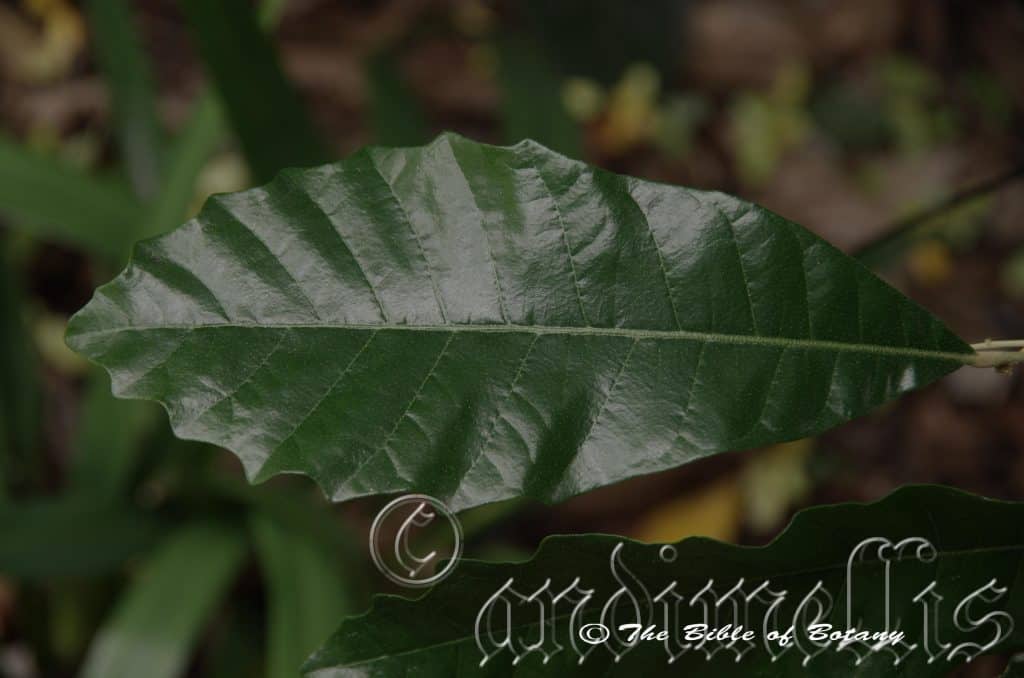
Townsville Qld.

Townsville Qld.
Lunasia amara
Classification:
Phylum: Charophyta
Class: Equisetopsida
Order: Sapindales
Family: Rutaceae
Genus: From Luna, which is Latin for the moon. It refers to leaves, which are very glossy and are reflective like the moon.
Specie: From Amara, which is Latin for to be bitter to the taste buds. It refers to structures or organs, which are bitter to eat.
Sub species: Lunasia amara subsp. amara. From Amara, which is Latin for to be bitter to the taste buds. It refers to structures or organs, which are bitter to eat. It is the only subsp. found in Australia
Common Name:
Distribution:
Lunasia amara subsp. amara is found south from the Iron Range to the McIlwraith range on Cape York Peninsular in far north eastern coastal Queensland. There is also a disjunct population south of Cairns.
It is also found east from the Philippines, Borneo and eastern Java eastward to south-eastern New Guinea.
https://avh.ala.org.au/occurrences/search?taxa=Lunasia+amara#tab_mapView
Habitat Aspect Climate:
Lunasia amara prefers light dappled shade to full shade. It grows as an understory shrub in well-developed low land rainforests. The altitude ranges from 5 meters ASL to 300 meters ASL.
The temperatures range from 5 degrees in August to 38 degrees in January.
The rainfalls range from lows of 1600mm to an average of 3200mm.
Soil Requirements:
Lunasia amara prefers to grow on sandy loams to medium clays or light silts to heavy silts. The soils are usually derived from decomposed sandstone, granite, shale, brown basalt, black basalt, metamorphic rocks, accumulated peaty beach sands or alluvial deposits. The soils pH. ranges from 4.5pH to 7pH. It does not tolerate water logged soils. Non saline soils to moderately saline soils are tolerated.
Height & Spread:
Wild Plants: 2m to 3m by 2m to 4m.
Characteristics:
Lunasia amara stems are mid brown to olive-brown and scabrous.
The branchlets are densely covered in white to fawn stellate hairs and or scales.
The elliptical to narrow obovate leaves measure 220mm to 550mm in length by 75mm to 130mm in width. The petioles are grooved or channelled on the upper surface and are densely covered in white to fawn stellate hairs and or scales. The petioles measure 10mm to 15mm in length. The asymmetrical bases are tapered or cuneate or tapered and cuneate while the apexes are acute. The discolourous laminas are mid green to deep green, glossy and glabrous on the upper laminas while the lower laminas are paler, dull and sparsely covered in white to fawn sessile stellate hairs and or scales especially along the mid vein. The laminas are covered in numerous large oil dots. The laminas gently arch upwards then down again from the base to the mid vein and then decurve downwards on the apical third. The laminas are weakly to moderately areolate and are slightly to moderately undulating. The margins are coarsely toothed or finely lobed on the apical half to apical third. The obtuse mid vein and 22 to 30 lateral veins are strongly prominent on the lower lamina while the tertiary reticulate veins are faintly to slightly prominent on the lower lamina.
The monoecious inflorescences are born in small clusters along a raceme or spike from the leaf axis. The individual flowers measure 4.5mm to 8mm in length by 3mm to 6mm in diameter. The peduncle, rachis and pedicels are densely covered in white to fawn sessile stellate hairs and or scales. The peduncle measures 7mm to 10mm in length while the rachis measures 8mm to 12mm in length and the common pedicel measures 0mm to 2mm in length.
The male flowers are sessile. The 3 sepals measure less than 1mm in length while the 3 pastel greenish petals measure 1mm to 1.5mm in length. The pale greenish filaments and pale ochre anthers are opposite the petals and measure 1mm to 1.2mm in length.
The female flowers are pedicellata. The 3 sepals measure 1mm to 1.2m in length while the petals measure 2mm to 2.5mm in length. The carpels are densely covered in white to fawn sessile stellate hairs and or scales externally and are glabrous internally. The flowers appear throughout the year in the tropics and during the warmer months in the southern populations.
Lunasia amara fruits are compressed ellipsoidal follicles with 2 distinct apical beaks. The follicles measure 6mm to 15mm in length by 5mm to 10mm in width while the beaks measure 4mm to 5mm in length. The blue-green follicles turn mid brown when ripe. The outer shell of the follicle is thin and brittle. There are 3 ovoidal seeds.
Wildlife:
Lunasia amara’s wildlife is unknown to the author.
Cultivation:
Lunasia amara makes an excellent fast growing, vigorous shrub for those dark shady areas around the house. It is suitable for small, medium and large gardens close to the coast or high in the mountains in warm temperate, sub tropical or tropical gardens. As garden subjects it will probably grow from 3 meters to 3.5 meters in height by 3 meter to 3.5 meters in diameter when grown in an open shady position. It is not cold tolerant to temperatures and minimum winter temperatures should be maintained above 4 degrees even when established.
It can be tip pruned if a smaller bushier shrub is required in the earlier stages of growth. Light tip pruning on a regular basis will encourage a bushier shrub which will produce more flowers in the following spring.
It is at its best when used as an understory shrub in warm moist rainforest gardens where there is plenty of ground light and moisture to keep the gloss in the leaves. Surrounded by vertical growing native shrubs with deep red or deep purple foliage it really does make for great talking points. Here I immediately think ofCordyline petiolaris, Cordyline terminalis, Graptophyllum excelsum and Graptophyllum illicifolium.
The plants would make excellent tub specimens for the patio, veranda shaded court yard or indoors as long as moisture and humidity could be maintained. If these are not met I believe the plants would abort its foliage rather quickly.
Propagation:
Seeds: Lunasia amara seeds need to be soaked in warm to tepid water for 24 hours prior to sowing. Cover the seeds with 15mm to 20mm of fine weed free mulch and keep moist. Place the tray in a warm shaded position and keep moist. When the seedlings are 20mm to 30mm tall, prick them out and plant them into 50mm native tubes using a good organic mix.
Once the seedlings reach 100mm to 150mm in height they can be planted out into their permanent position.
Fertilize using seaweed, fish emulsion or organic chicken pellets soaked in water on an alternate basis. Fertilize every two months until the plants are established then twice annually in early September or March to maintain health, vitality and better flowering.
Further Comments from Readers:
“Hi reader, it seems you use The Bible of Botany a lot. That’s great as we have great pleasure in bringing it to you! It’s a little awkward for us to ask, but our first aim is to purchase land approximately 1,600 hectares to link several parcels of N.P. into one at The Pinnacles NSW Australia, but we need your help. We’re not salespeople. We’re amateur botanists who have dedicated over 30 years to saving the environment in a practical way. We depend on donations to reach our goal. If you donate just $5, the price of your coffee this Sunday, We can help to keep the planet alive in a real way and continue to bring you regular updates and features on Australian plants all in one Botanical Bible. Any support is greatly appreciated. Thank you.”
In the spirit of reconciliation we acknowledge the Bundjalung, Gumbaynggirr and Yaegl and all aboriginal nations throughout Australia and their connections to land, sea and community. We pay our respect to their Elders past, present and future for the pleasures we have gained.
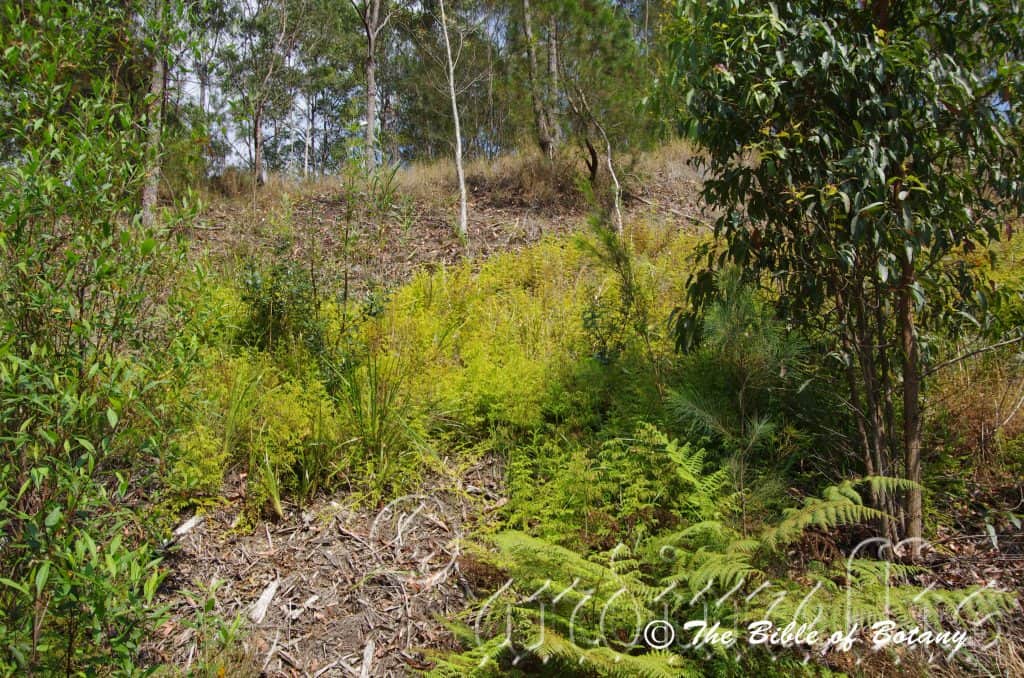
Nana Glen to Glenreagh NSW

Nana Glen to Glenreagh NSW

Nana Glen to Glenreagh NSW

Nana Glen to Glenreagh NSW

Nana Glen to Glenreagh NSW

Nana Glen to Glenreagh NSW

Nana Glen to Glenreagh NSW
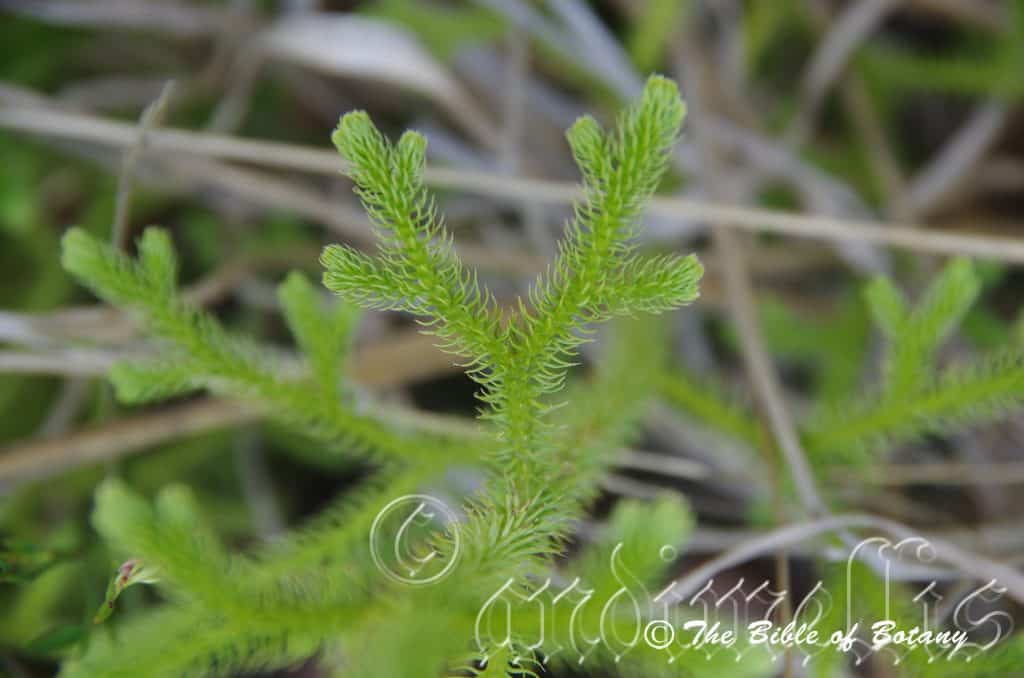
Nana Glen to Glenreagh NSW


Nana Glen to Glenreagh NSW
Lycopodiella cernua
Division: Lycopodiophyta
Classification:
Class: Lycopodiopsida
Order: Lycopodiales
Family: Lycopodiaceae
Genus: From Lykos, which is Ancient Greek for a wolf and Pous, which is Ancient Greek or Pedi, which is Latin for a foot or feet and Ella which is Ancient Greek/Latin for the feminine form of petite, fine or diminitive. It refers to the sporangia having the appearance of a small or petite wolf’s paw.
Specie: From Cernuum, which is Latin for facing downwards. It refers to structures or organs usually the flowers, which face down towards the soil.
Sub specie:
Common Name: Scrambling Club Moss.
Distribution
Lycopodiella cernua is found east from the Kimberley range in far north western, Western Australia to in the northern Territory.
In the east it is found Gladstone in south eastern Queensland to Wilson’s Promontory in southern Victoria. There is an outlying population from Innisfail north to Cairns. It is mainly found on and east of the Great Dividing Range to the coast.
It is also found on King Island in Bass Straight.
https://avh.ala.org.au/occurrences/search?taxa=Lycopodiella+cernua#tab_mapView
Habitat Aspect Climate:
Lycopodiella cernua prefers light shade to medium dappled sun under trees. It grows on moisture retentive soils adjacent to or in mountain rainforests or littoral rainforests where there is a break in the canopy. It is also found growing on cliffs where there is seepage and adjacent to swamps where seepage is noticeable. The altitude ranges from 30 meters ASL to 1050 meters ASL
The temperatures range from 3 degrees in August to 38 degrees in January.
The rainfalls range from lows of 600mm to an average of 3200mm however the plants derive additional moisture through capillary action from water lying deeper below the dry creek beds and marshes.
Soil Requirements:
Lycopodiella cernua prefers to grow on better quality deep loams to medium clays that have high leaf litter content or barren gritty clays. The soils are usually derived from decomposed sandstone, shale, metamorphic rocks or rarely accumulated peaty sands. The soils pH. ranges from 5pH to 6.pH. It tolerates water logged soils and are found near permanent seepages. Non saline soils to moderately saline soils are tolerated.
Height & Spread:
Wild Plants:100mm to 500mm by 500mm to 1000mm.
Characteristics:
Lycopodiella cernua has a long, thin, stout, creeping stem which root from the leaf nodes. The stems grow across the surface of the ground. The aerial stems are stout, thin, erect and extensively branched.
Lycopodiella cernua is an unusual club moss in that it has a preference to growing on the ground in wet areas. The linear to awl shaped leaves are crowded along the stems and measure 2mm to 5.5mm in length by 0.5mm to 1mm in width. It is ascending or recurved and strongly keeled. The concolourous laminas are pale lemon-green. The margins are entire.
The sessile strobilus carrying the spore is located at the apexes of the erect branches and is numerous. The strongly pendant strobilus are on special terminal branches. The oblong stromboli measure 10mm to 12mm in length by 1.5mm to 2mm in diameter. The sporophylls are shorter than the leaves and are minutely toothed.
Wildlife:
Lycopodiella cernua’s wildlife is unknown to the author.
Cultivation:
This is a magnificent small club moss that is very difficult to grow. It is suitable for bright courtyards or in the garden where moist bright conditions prevail. When the sterile and fertile strobilus are on display together the rich lemon-green colour of the strobilus and leaves are refreshing to look at. The areas for cultivation should mimic their natural surroundings as close as possible to have any success. They would make ideal plants in small bog gardens around sunny pools in warm temperate, sub tropical and tropical gardens.
Propagation:
Spores: Lycopodiella cernua is not easy to grow so expect many failures but once success has been made the rewards are great in admiration and the plants will self-propagate without any further to do without becoming rampant. The site must be well prepared and have some sought of seepage or moisture guarantee. I have not been successful at transplanting or potting on with this species.
All ferns that are declared rare, vulnerable or endangered are protected by Federal and State Laws and must not be removed from the wild unless you are a land developer, mining company or main Roads department etc. This includes bulbs, roots, leaves and flowers. No part of any plant can be removed from Federal, State or Local Government land without the prior permission of the authority and this includes the spore.
Most people are put off at the thought of growing ferns from spore. Like all plants that produce their offspring from seed or spore the methods are basically the same. Remember nature has been doing this for millions of years and has been very successful. I have had excellent results growing over 200 different species of Australian ferns so don’t be afraid. Give it a go.
Step 1. Select spore from the fern fronds. Wait until the fern is just starting to release its spore. Rinse the fronds under clean running water and dry. This is to wash off any other spores from rogue ferns that may have settled onto the fronds. (There is nothing worse than having common brake or common soft bracken contaminating a prized tree fern or epiphyte.)
Step 2. Place the dry fronds in a clean brown paper bag and keep them in a cool dark place like the linen closet for about a week to ten days before you are ready to sow the spore. The exception to this rule applies to ferns, which produce green spores. These must be sown immediately that they are released. Todea Barbara is a good example of a fern, which produces green spore.
Step 3. Take a large ice cream container, a small ice cream container and a clean clear plastic bag large enough to seal the large ice cream container and three or four milk bottle tops.
Step 4. Punch or drill 6 to 10 5mm holes in the bottom of the small ice cream container.
Step 5. Wash both containers, tops and plastic bag so that they are very clean and sterile.
Step 6. Use a clean fine seed raising mi. We used 30mm fine sand, 30mm peat and 30mm perlite and 10mm vermiculite. We used crushed basalt, crusher dust and peat in a 50:50 ratio for epiphytes. Moisten the mix enough that water does not run out when the mix is squeezed between the fingers.
Step 7. Place the moisten mix (Enough to half fill the small ice cream container) in the microwave oven with a large glass of water for 7 or 8 minutes, until the water is boiling. Allow them to cool in the oven. You will need the water later so do not tip it out.
Step 8. Take the brown paper bag out of the linen closet. Shake the bag and remove the fronds. You should have a yellow, brown, black or rarely greenish brown or ochre powder or very fine, small round pin head size spore depending on the specie involved.
Step 9. Remove the mixture from the oven once it has cooled and place it in the small ice cream container and level.
Step 10. Sprinkle the spore sparsely over the mixture in the small ice cream container.
Step 11. Place the milk bottle tops in the large ice cream container with the flat surface facing down. Place the small ice cream container in the large ice cream container so that it is sitting on the milk bottle tops.
Step 12. Remove the water from the microwave and pour it into the larger ice cream container so there is 25mm to 30mm of water in the bottom.
Step 13. Place the ice cream containers in the plastic bag and seal. Step 14. Place the contents and bag in a warm shady place preferably 50mm to 70mm shade depending on the specie. Shade houses and some window sills are ideal.
Step 15. The surface should turn green within a week to two weeks.
The prothallus will then develop. From the prthalus the first true fronds will appear. Wait until the ferns are 20mm to 35mm in height before you attempt to transplant them. Once they are ready open the bag up slightly and allow the air to flow around the little ferns. Every 3 to 5 days open the bag a little further so the ferns get use to their new environment. Allow them a week to two weeks to harden off before you transplant them following the removal of the plastic bag. Carefully prick them out into 50mm standard squat tubes as you would any seedling.
Do not try to transplant them as single plants as they are still a little delicate still.
Once the smaller ones again reach 50mm to 70mm you may wish to divide the stronger and hardier individual plants into smaller clumps in 100mm squat pots.
Step 16. We fertilized with seaweed, fish emulsion or organic chicken pellets soaked in water on an alternate basis until established. Fertilize every two months for one year even when in the ground.
Alternativly remove the tips of the plants where the strobilus are and place them in an open sterile mix of equal parts of peat moss perlite and vermiculite and course washed sand.
Once they reach 50mm to 60mm you may start to separate the strongest ones and again do not move them far from their original position. After a few weeks the ferns will grow stronger. Once the fronds reach 80mm plant them into their permanent positions. If mass planting space the ferns at 400mm centers. Good Luck and if successful please let me and our readers know.
Fertilize using seaweed, fish emulsion or organic chicken pellets soaked in water on an alternate basis. Fertilize every two months until the plants are established then twice annually in early September or March to maintain health and vitality.
Further Comments from Readers:
“Hi reader, it seems you use The Bible of Botany a lot. That’s great as we have great pleasure in bringing it to you! It’s a little awkward for us to ask, but our first aim is to purchase land approximately 1,600 hectares to link several parcels of N.P. into one at The Pinnacles NSW Australia, but we need your help. We’re not salespeople. We’re amateur botanists who have dedicated over 30 years to saving the environment in a practical way. We depend on donations to reach our goal. If you donate just $5, the price of your coffee this Sunday, We can help to keep the planet alive in a real way and continue to bring you regular updates and features on Australian plants all in one Botanical Bible. Any support is greatly appreciated. Thank you.”
In the spirit of reconciliation we acknowledge the Bundjalung, Gumbaynggirr and Yaegl and all aboriginal nations throughout Australia and their connections to land, sea and community. We pay our respect to their Elders past, present and future for the pleasures we have gained.
Lycopodiella lateralis
Classification:
Division: Lycopodiophyta
Class: Lycopodiopsida
Order: Lycopodiales
Family: Lycopodiaceae
Genus: From Lykos, which is Ancient Greek for a wolf and Pous, which is Ancient Greek or Pedi, which is Latin for a foot or feet and Ella which is Ancient Greek/Latin for the feminine form of petite, fine or diminitive. It refers to the sporangia having the appearance of a small or petite wolf’s paw.
Specie: From Lateralis, which is Latin for the side. It usually refers to the flowers, which are produced from side shoots.
Sub specie:
Common Name: Slender Club Moss.
Distribution
Lycopodiella lateralis is found in several disjunct populations south from Thornton peaks and Rockingham Range near Cardwell in far north east Queensland, Upper Kroombit Creek then south from Fraser Island in central coastal Queensland south to the Grampians and the Glenelg River in south western Victoria.
In South Australia it is found from Adelaide Hills south to Victor Harbour and the western end of Kangaroo Island.
It is found on King Island and the Flinders Island group in Bass Straight and most the lowland areas of mainland Tasmania.
https://avh.ala.org.au/occurrences/search?taxa=Lycopodiella+lateralis#tab_mapView
Habitat Aspect Climate:
Lycopodiella lateralis prefers medium shade to light dappled sunlight. It grows on wet soils adjacent to and in mountain rainforests, littoral rainforests where there is a break in the canopy. It is also found growing on cliffs where there is seepage, adjacent to swamps and wet open woodland heaths. The altitude ranges from 10 meters ASL to 1450 meters ASL.
The temperatures range from minus 3 degrees in August to 38 degrees in January.
The rainfalls range from lows of 600mm to an average of 3200mm however the plants derive most their moisture through capillary action from water lying just below the dry creek beds and marshes.
Soil Requirements:
Lycopodiella lateralis prefers better quality deep loams to medium clays that have high leaf litter content or barren gritty clays. The soils are usually derived from decomposed sandstone, shale, metamorphic rocks or rarely accumulated peaty sands. The soils pH. ranges from 5pH to 6.pH. It does not tolerate water logged soils however the soils are always moist and are found near permanent seepages. Non saline soils to moderately saline soils are tolerated.
Height & Spread:
Wild Plants:100mm to 500mm by 500mm to 1000mm.
Characteristics:
Lycopodiella lateralis main stems are subterranean, thick with many creeping branches. The aerial stems are weak, erect or ascending usually branch only once or twice. The aerial stems measure 100mm to 500mm in height.
Lycopodiella lateralis is an unusual club moss in that it has a preference to growing on the ground in wet areas. The narrow lanceolate leaves are appressed and crowded along the stems. The bases are truncate while the apexes are narrow acute. The leaves measure 4mm to 6.5mm in length by 1mm to 1.5mm in width. The concolourous laminas are bright lemon-green to bright lime-green and glabrous. The margins are entire.
The sessile strobilus are scattered along the aerial stems and are born laterally or from the terminals on short branchlets. The strobilus measure 10mm to 15mm in length. The golden-yellow sporophylls are broad-ovate, abruptly pointed with jagged margins.
Wildlife:
Lycopodiella lateralis’s wildlife is unknown to the author.
Cultivation:
Lycopodiella lateralis is a magnificent small club moss that is very difficult to grow. It is suitable for bright courtyards or in the garden where moist bright conditions prevail. When the sterile and fertile strobilus are on display together the rich lemon-green colour of the strobilus and leaves are refreshing to look at. The areas for cultivation should mimic their natural surroundings as close as possible to have any success. They would make ideal plants in small bog gardens around sunny pools in warm temperate, sub tropical and tropical gardens.
Propagation:
Spores: Lycopodiella cernua is not easy to grow so expect many failures but once success has been made the rewards are great in admiration and the plants will self-propagate without any further to do without becoming rampant. The site must be well prepared and have some sought of seepage or moisture guarantee. I have not been successful at transplanting or potting on with this species.
All ferns that are declared rare, vulnerable or endangered are protected by Federal and State Laws and must not be removed from the wild unless you are a land developer, mining company or main Roads department etc. This includes bulbs, roots, leaves and flowers. No part of any plant can be removed from Federal, State or Local Government land without the prior permission of the authority and this includes the spore.
Most people are put off at the thought of growing ferns from spore. Like all plants that produce their offspring from seed or spore the methods are basically the same. Remember nature has been doing this for millions of years and has been very successful. I have had excellent results growing over 200 different species of Australian ferns so don’t be afraid. Give it a go.
Step 1. Select spore from the fern fronds. Wait until the fern is just starting to release its spore. Rinse the fronds under clean running water and dry. This is to wash off any other spores from rogue ferns that may have settled onto the fronds. (There is nothing worse than having common brake or common soft bracken contaminating a prized tree fern or epiphyte.)
Step 2. Place the dry fronds in a clean brown paper bag and keep them in a cool dark place like the linen closet for about a week to ten days before you are ready to sow the spore. The exception to this rule applies to ferns, which produce green spores. These must be sown immediately that they are released. Todea Barbara is a good example of a fern, which produces green spore.
Step 3. Take a large ice cream container, a small ice cream container and a clean clear plastic bag large enough to seal the large ice cream container and three or four milk bottle tops.
Step 4. Punch or drill 6 to 10 5mm holes in the bottom of the small ice cream container.
Step 5. Wash both containers, tops and plastic bag so that they are very clean and sterile.
Step 6. Use a clean fine seed raising mi. We used 30mm fine sand, 30mm peat and 30mm perlite and 10mm vermiculite. We used crushed basalt, crusher dust and peat in a 50:50 ratio for epiphytes. Moisten the mix enough that water does not run out when the mix is squeezed between the fingers.
Step 7. Place the moisten mix (Enough to half fill the small ice cream container) in the microwave oven with a large glass of water for 7 or 8 minutes, until the water is boiling. Allow them to cool in the oven. You will need the water later so do not tip it out.
Step 8. Take the brown paper bag out of the linen closet. Shake the bag and remove the fronds. You should have a yellow, brown, black or rarely greenish brown or ochre powder or very fine, small round pin head size spore depending on the specie involved.
Step 9. Remove the mixture from the oven once it has cooled and place it in the small ice cream container and level.
Step 10. Sprinkle the spore sparsely over the mixture in the small ice cream container.
Step 11. Place the milk bottle tops in the large ice cream container with the flat surface facing down. Place the small ice cream container in the large ice cream container so that it is sitting on the milk bottle tops.
Step 12. Remove the water from the microwave and pour it into the larger ice cream container so there is 25mm to 30mm of water in the bottom.
Step 13. Place the ice cream containers in the plastic bag and seal. Step 14. Place the contents and bag in a warm shady place preferably 50mm to 70mm shade depending on the specie. Shade houses and some window sills are ideal.
Step 15. The surface should turn green within a week to two weeks.
The prothallus will then develop. From the prthalus the first true fronds will appear. Wait until the ferns are 20mm to 35mm in height before you attempt to transplant them. Once they are ready open the bag up slightly and allow the air to flow around the little ferns. Every 3 to 5 days open the bag a little further so the ferns get use to their new environment. Allow them a week to two weeks to harden off before you transplant them following the removal of the plastic bag. Carefully prick them out into 50mm standard squat tubes as you would any seedling.
Do not try to transplant them as single plants as they are still a little delicate still.
Once the smaller ones again reach 50mm to 70mm you may wish to divide the stronger and hardier individual plants into smaller clumps in 100mm squat pots.
Step 16. We fertilized with seaweed, fish emulsion or organic chicken pellets soaked in water on an alternate basis until established. Fertilize every two months for one year even when in the ground.
Alternativly remove the tips of the plants where the strobilus are and place them in an open sterile mix of equal parts of peat moss perlite and vermiculite and course washed sand.
Once they reach 50mm to 60mm you may start to separate the strongest ones and again do not move them far from their original position. After a few weeks the ferns will grow stronger. Once the fronds reach 80mm plant them into their permanent positions. If mass planting space the ferns at 400mm centers. Good Luck and if successful please let me and our readers know.
Fertilize using seaweed, fish emulsion or organic chicken pellets soaked in water on an alternate basis. Fertilize every two months until the plants are established then twice annually in early September or March to maintain health and vitality.
Further Comments from Readers:
“Hi reader, it seems you use The Bible of Botany a lot. That’s great as we have great pleasure in bringing it to you! It’s a little awkward for us to ask, but our first aim is to purchase land approximately 1,600 hectares to link several parcels of N.P. into one at The Pinnacles NSW Australia, but we need your help. We’re not salespeople. We’re amateur botanists who have dedicated over 30 years to saving the environment in a practical way. We depend on donations to reach our goal. If you donate just $5, the price of your coffee this Sunday, We can help to keep the planet alive in a real way and continue to bring you regular updates and features on Australian plants all in one Botanical Bible. Any support is greatly appreciated. Thank you.”
In the spirit of reconciliation we acknowledge the Bundjalung, Gumbaynggirr and Yaegl and all aboriginal nations throughout Australia and their connections to land, sea and community. We pay our respect to their Elders past, present and future for the pleasures we have gained.
Lycopodiella serpentina
Classification:
Division: Lycopodiophyta
Class: Lycopodiopsida
Order: Lycopodiales
Family: Lycopodiaceae
Genus: From Lykos, which is Ancient Greek for a wolf and Pous, which is Ancient Greek or Pedi, which is Latin for a foot or feet and Ella which is Ancient Greek/Latin for the feminine form of petite, fine or diminitive. It refers to the sporangia having the appearance of a small or petite wolf’s paw.
Specie: From Serpere, which is Latin for to creep like a snake. It refers to plants, which are repent and crawl along the ground or through the mulch like a snake.
Sub specie:
Common Name: Bog Club Moss.
Distribution
Lycopodiella serpentina is found along the coastal strip in several widely disjunct populations from the Swan River to Thistle Cove in south western coastal Western Australia.
In the east it is found south from the tip of Cape York Peninsular in far north Queensland to Lake Alexandrina in southern South Australia.
It is also found on the Bass Straight Islands and most of mainland Tasmania.
https://avh.ala.org.au/occurrences/search?taxa=Lycopodiella+serpentina#tab_mapView
Habitat Aspect Climate:
Lycopodiella serpentina prefers medium shade to light dappled sunlight. It grows on wet open woodlands open forests and rainforest openings on creek meanders, stream meanders, billabongs, heaths or marshes. The altitude ranges from 30 meters ASL to 1050 meters ASL
The temperatures range from 3 degrees in August to 38 degrees in January.
The rainfalls range from lows of 600mm to an average of 3200mm however the plants derive additional moisture through capillary action from water lying deeper below the dry creek beds and marshes.
Soil Requirements:
Lycopodiella serpentina prefers to grow on better quality deep loams to medium clays that have high leaf litter content or barren gritty clays. The soils are usually derived from decomposed sandstone, shale, metamorphic rocks or rarely accumulated peaty sands. The soils pH. ranges from 5pH to 6.pH. It does not tolerate water logged soils however the soils are always moist and are found near permanent seepages. Non saline soils to moderately saline soils are tolerated.
Height & Spread:
Wild Plants:100mm to 150mm by 500mm to 1000mm.
Characteristics:
Lycopodiella serpentina main stems are short, dichotomous, and thick with many creeping branches along the soil surface. The stems are covered with leaves and bear numerous filiform rootlets form the leaf nodes. The erect aerial stems are disjunct, rigid, and unbranched. The aerial stems measure 100mm to 150mm in height.
The linear-triangular to narrow lanceolate leaves of Lycopodiella serpentina are spirally arranged, imbricate and curve upwards. The leaves measure 3mm to 4.5mm in length by 0.5mm to 1mm in width. The concolourous leaves are pale green often tinged orange.
Lycopodiella serpentina’s strobiliferous branchlets are erect, unbranched and measure 30mm to 80mm in length. The erect strobilus are born solitary from the terminals. They measure usually 10mm to 25mm in length but have been recorded at 80mm in length. The ovate sporophylls are imbricate, spreading at maturity. They apexes are acuminate while the margins are sparsely covered in white ciliate hairs.
Species variation:
There is some variation in form with a collection made from far north eastern Queensland and one from Stradbroke Island where the strobilus apices have continued to grow out as vegetative shoots which in turn have terminated in secondary strobilus. Australian National Botanic gardens Herbarium Collection.
Wildlife:
Lycopodiella serpentina’s is unknown to the author.
Cultivation:
Lycopodiella serpentina is a magnificent small club moss that is very difficult to grow. It is suitable for bright courtyards or in the garden where moist bright conditions prevail. When the sterile and fertile strobilus are on display together the rich lemon-green colour of the strobilus and leaves are refreshing to look at. The areas for cultivation should mimic their natural surroundings as close as possible to have any success. They would make ideal plants in small bog gardens around sunny pools in warm temperate, subtropical and tropical gardens.
Propagation:
Spores: Lycopodiella serpentina is not easy to grow so expect many failures but once success has been made the rewards are great in admiration and the plants will self-propagate without any further to do without becoming rampant. The site must be well prepared and have some sought of seepage or moisture guarantee. I have not been successful at transplanting or potting on with this species.
All ferns that are declared rare, vulnerable or endangered are protected by Federal and State Laws and must not be removed from the wild unless you are a land developer, mining company or main Roads department etc. This includes bulbs, roots, leaves and flowers. No part of any plant can be removed from Federal, State or Local Government land without the prior permission of the authority and this includes the spore.
Most people are put off at the thought of growing ferns from spore. Like all plants that produce their offspring from seed or spore the methods are basically the same. Remember nature has been doing this for millions of years and has been very successful. I have had excellent results growing over 200 different species of Australian ferns so don’t be afraid. Give it a go.
Step 1. Select spore from the fern fronds. Wait until the fern is just starting to release its spore. Rinse the fronds under clean running water and dry. This is to wash off any other spores from rogue ferns that may have settled onto the fronds. (There is nothing worse than having common brake or common soft bracken contaminating a prized tree fern or epiphyte.)
Step 2. Place the dry fronds in a clean brown paper bag and keep them in a cool dark place like the linen closet for about a week to ten days before you are ready to sow the spore. The exception to this rule applies to ferns, which produce green spores. These must be sown immediately that they are released. Todea Barbara is a good example of a fern, which produces green spore.
Step 3. Take a large ice cream container, a small ice cream container and a clean clear plastic bag large enough to seal the large ice cream container and three or four milk bottle tops.
Step 4. Punch or drill 6 to 10 5mm holes in the bottom of the small ice cream container.
Step 5. Wash both containers, tops and plastic bag so that they are very clean and sterile.
Step 6. Use a clean fine seed raising mi. We used 30mm fine sand, 30mm peat and 30mm perlite and 10mm vermiculite. We used crushed basalt, crusher dust and peat in a 50:50 ratio for epiphytes. Moisten the mix enough that water does not run out when the mix is squeezed between the fingers.
Step 7. Place the moisten mix (Enough to half fill the small ice cream container) in the microwave oven with a large glass of water for 7 or 8 minutes, until the water is boiling. Allow them to cool in the oven. You will need the water later so do not tip it out.
Step 8. Take the brown paper bag out of the linen closet. Shake the bag and remove the fronds. You should have a yellow, brown, black or rarely greenish brown or ochre powder or very fine, small round pin head size spore depending on the specie involved.
Step 9. Remove the mixture from the oven once it has cooled and place it in the small ice cream container and level.
Step 10. Sprinkle the spore sparsely over the mixture in the small ice cream container.
Step 11. Place the milk bottle tops in the large ice cream container with the flat surface facing down. Place the small ice cream container in the large ice cream container so that it is sitting on the milk bottle tops.
Step 12. Remove the water from the microwave and pour it into the larger ice cream container so there is 25mm to 30mm of water in the bottom.
Step 13. Place the ice cream containers in the plastic bag and seal. Step 14. Place the contents and bag in a warm shady place preferably 50mm to 70mm shade depending on the specie. Shade houses and some window sills are ideal.
Step 15. The surface should turn green within a week to two weeks.
The prothallus will then develop. From the prthalus the first true fronds will appear. Wait until the ferns are 20mm to 35mm in height before you attempt to transplant them. Once they are ready open the bag up slightly and allow the air to flow around the little ferns. Every 3 to 5 days open the bag a little further so the ferns get use to their new environment. Allow them a week to two weeks to harden off before you transplant them following the removal of the plastic bag. Carefully prick them out into 50mm standard squat tubes as you would any seedling.
Do not try to transplant them as single plants as they are still a little delicate still.
Once the smaller ones again reach 50mm to 70mm you may wish to divide the stronger and hardier individual plants into smaller clumps in 100mm squat pots.
Step 16. We fertilized with seaweed, fish emulsion or organic chicken pellets soaked in water on an alternate basis until established. Fertilize every two months for one year even when in the ground.
Alternativly remove the tips of the plants where the strobilus are and place them in an open sterile mix of equal parts of peat moss perlite and vermiculite and course washed sand.
Once they reach 50mm to 60mm you may start to separate the strongest ones and again do not move them far from their original position. After a few weeks the ferns will grow stronger. Once the fronds reach 80mm plant them into their permanent positions. If mass planting space the ferns at 400mm centers. Good Luck and if successful please let me and our readers know.
Fertilize using seaweed, fish emulsion or organic chicken pellets soaked in water on an alternate basis. Fertilize every two months until the plants are established then twice annually in early September or March to maintain health and vitality.
Further Comments from Readers:
“Hi reader, it seems you use The Bible of Botany a lot. That’s great as we have great pleasure in bringing it to you! It’s a little awkward for us to ask, but our first aim is to purchase land approximately 1,600 hectares to link several parcels of N.P. into one at The Pinnacles NSW Australia, but we need your help. We’re not salespeople. We’re amateur botanists who have dedicated over 30 years to saving the environment in a practical way. We depend on donations to reach our goal. If you donate just $5, the price of your coffee this Sunday, We can help to keep the planet alive in a real way and continue to bring you regular updates and features on Australian plants all in one Botanical Bible. Any support is greatly appreciated. Thank you.”
In the spirit of reconciliation we acknowledge the Bundjalung, Gumbaynggirr and Yaegl and all aboriginal nations throughout Australia and their connections to land, sea and community. We pay our respect to their Elders past, present and future for the pleasures we have gained.
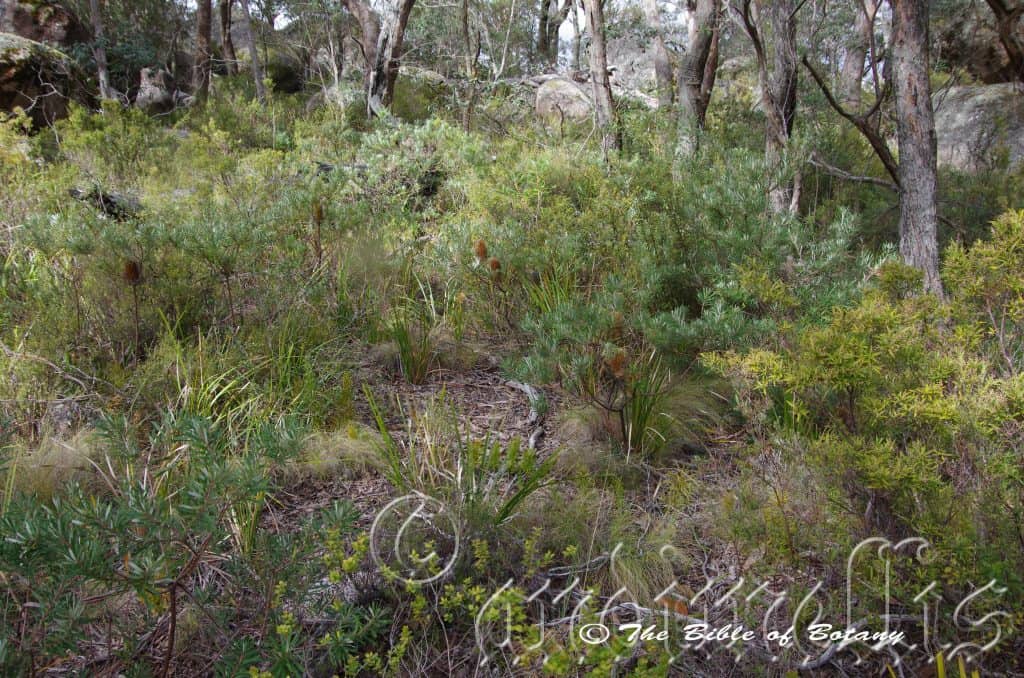
Cathedral Rocks National Park NSW

Cathedral Rocks National Park NSW
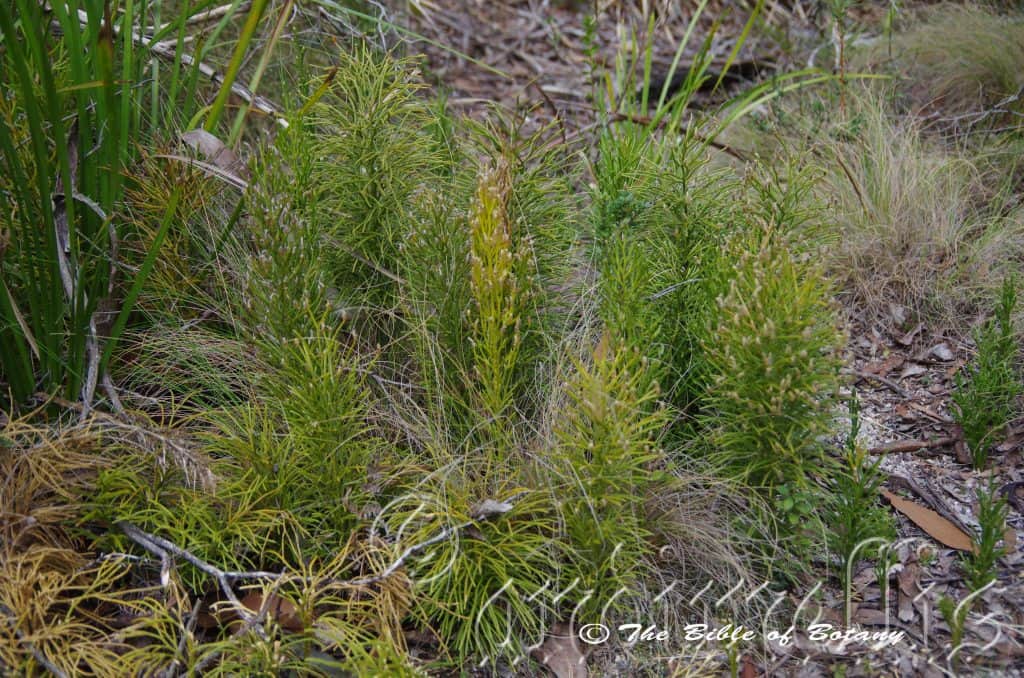
Cathedral Rocks National Park NSW

Cathedral Rocks National Park NSW

Cathedral Rocks National Park NSW
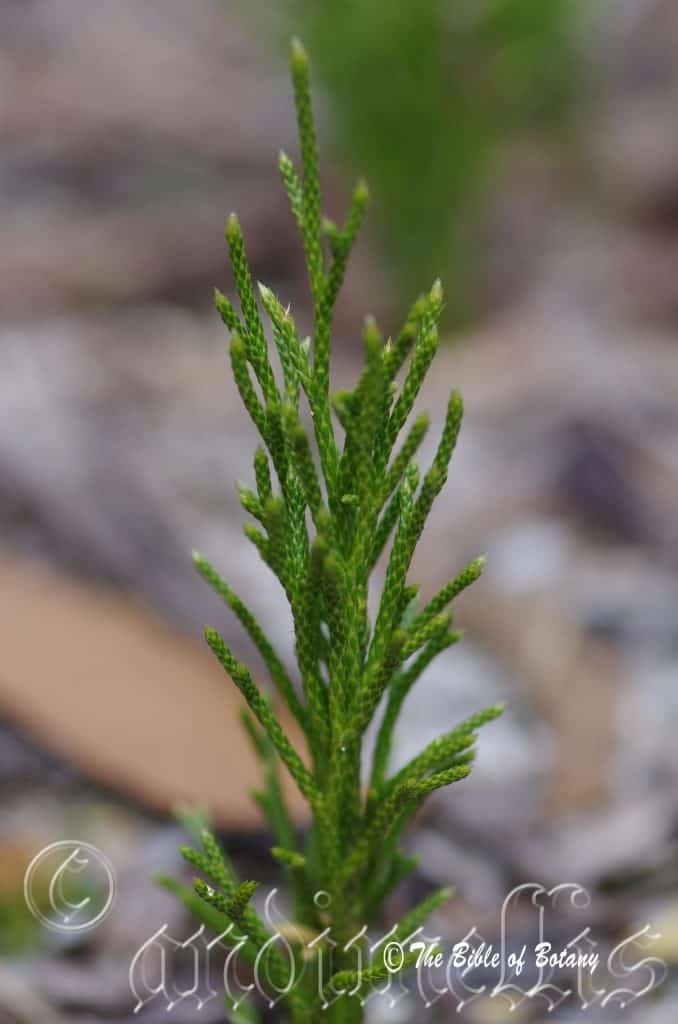
Cathedral Rocks National Park NSW
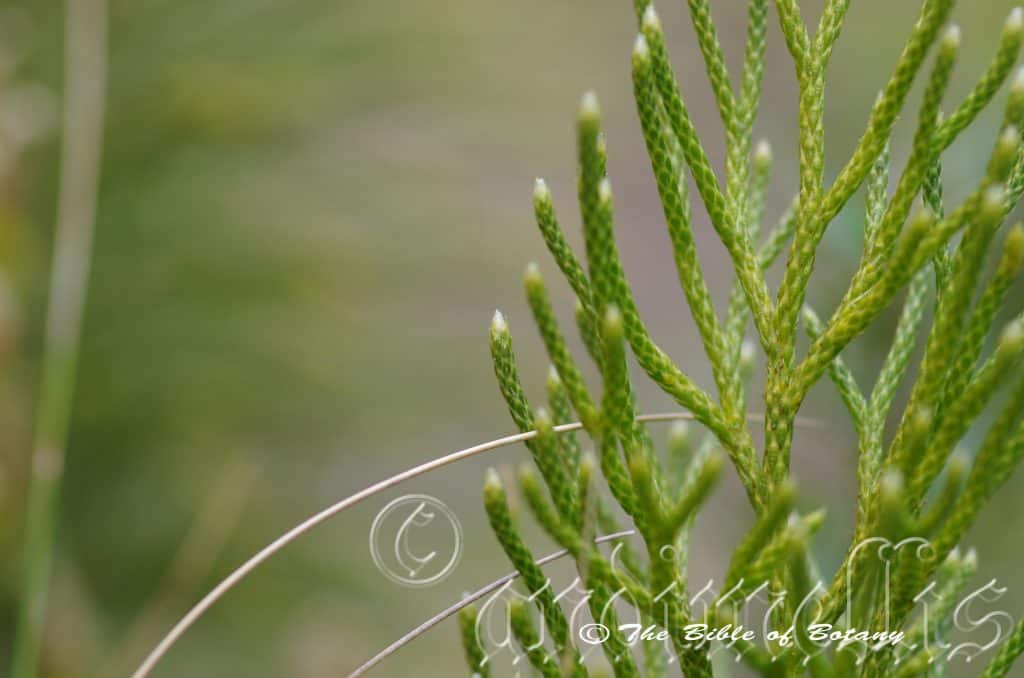
Cathedral Rocks National Park NSW
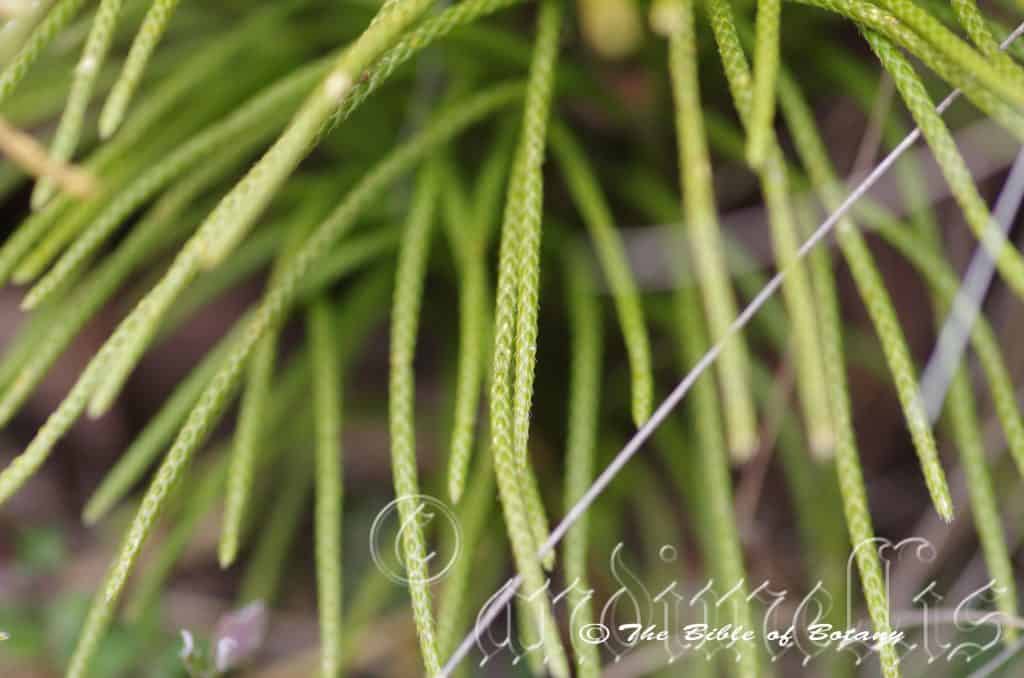
Cathedral Rocks National Park NSW

Cathedral Rocks National Park NSW
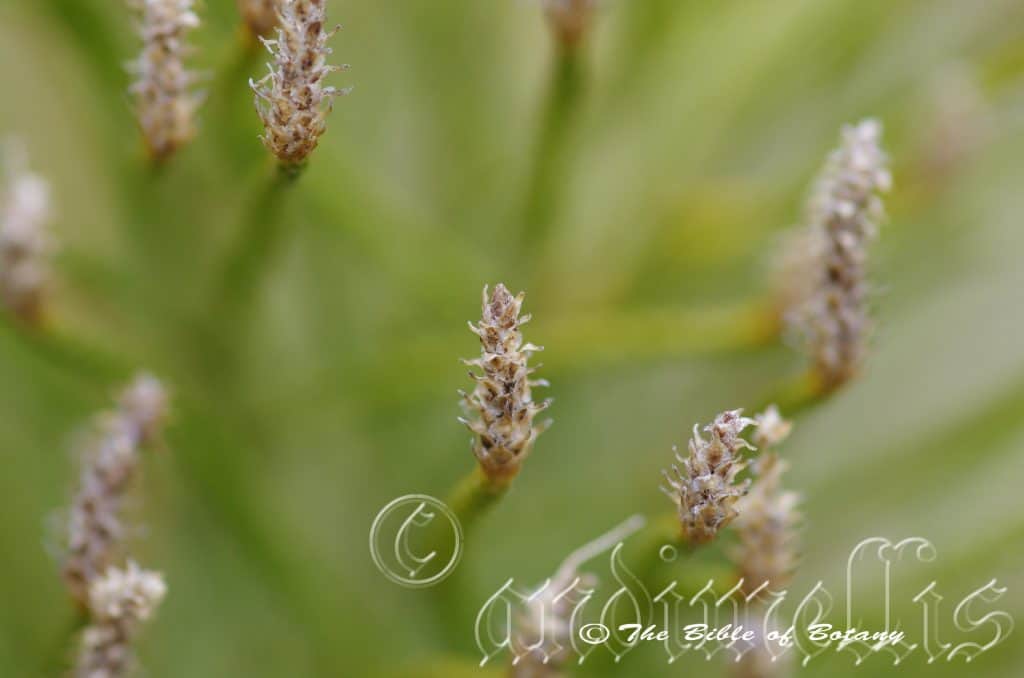
Cathedral Rocks National Park NSW
Lycopodium deuterodensum
Classification:
Division: Lycopodiophyta
Class: Lycopodiopsida
Order: Lycopodiales
Family: Lycopodiaceae
Genus: From Lykos, which is Ancient Greek for a wolf and Pous, which is Ancient Greek or Pedi, which is Latin for a foot or feet. It refers to the sporangia or terminal shoots which have the appearance of a wolf’s paw.
Specie: From Deuta, which is Ancient Greek for second or secondary and Densum which is Latin for dense. It refers to the stems, which are somewhat denser or more crowded and yet still not second to any other species in the genus or only second to one other species in the genus.
Sub specie:
Common Name:
Distribution
Lycopodium deuterodensum is found in several disjunct and isolated populations close to the coast and nearby ranges. In Western Australia it is found in the eastern Kimberley at Cabbage Tree Creek and Niji falls south of Darwin in the Northern Territory.
On the east coast it is found near the Twin Falls and Mount Finlay to Mount Bowen ridge on Hinchenbrook Island on Cape York Peninsular in far north eastern Queensland.
In the south it is found south from Springbrook on the Macpherson Ranges in far south east Queensland to the Grampians in western Victoria.
It is found on the Bass Straight Islands and mainland Tasmania.
It is not found on the alps in southern New South Wales, Victoria or Tasmania.
https://avh.ala.org.au/occurrences/search?taxa=Lycopodium+deuterodensum#tab_mapView
Habitat Aspect Climate:
Lycopodium deuterodensum prefers medium shade to light dappled sunlight. It grows on moist open forests, moist closed forests, adjacent to rainforests and monsoonal rainforests. The altitude ranges from 30 meters ASL to 780 meters ASL
The temperatures range from 3 degrees in August to 38 degrees in January.
The rainfalls range from lows of 600mm to an average of 3200mm however the plants derive additional moisture through capillary action from water lying just below the ground.
Soil Requirements:
Lycopodium deuterodensum prefers better quality deep sands, sandy loams to medium sandy silts that have high leaf litter content. The soils are usually derived from decomposed sandstones or granites. The soils pH. ranges from 5pH to 6pH. It does not tolerate water logged soils however the soils are always moist and are often found near permanent seepages and drainage lines. Non saline soils to moderately saline soils are tolerated.
Height & Spread:
Wild Plants:0.3mm to 1m by 0.5m to 2m.
Characteristics:
Lycopodium deuterodensum main stems are long, subterranean, and thick with few creeping branches and a few reduced leaves. The erect aerial stems are rigid, and strongly branched. The aerial stems measure 400mm to 1000mm in height.
The linear-triangular to narrow lanceolate leaves of Lycopodium deuterodensum are scattered on the basal half of the stem and crowded on the apical half. The dimorphic leaves are usually on separate plants or at times occur together on the same plant. It is densely, imbricate leaves are appressed, narrow triangular and measure 1mm to 2.5mm in length by 0.5mm to 1mm in width near the base. The second form has spreading leaves that measure 2.5mm to 4mm in length by 0.5mm to 1mm in width.
The sessile strobiliferous branchlets are erect, unbranched and measure 10mm to 20mm in length. The erect strobilus are born solitary from the terminals. The broad ovate sporophylls are imbricate, spreading at maturity and glabrous. They apexes are acute.
Wildlife:
Lycopodium deuterodensum wildlife is unknown to the author.
Cultivation:
Lycopodium deuterodensum is a magnificent small club moss that is very difficult to grow. It is suitable for bright courtyards or in the garden where moist bright conditions prevail. When the sterile and fertile strobilus are on display together the rich lemon-green colour of the strobilus and leaves are refreshing to look at. The areas for cultivation should mimic their natural surroundings as close as possible to have any success. They would make ideal plants in small bog gardens around sunny pools in warm temperate, sub tropical and tropical gardens.
Propagation:
Spores: Lycopodium deuterodensum is not easy to grow so expect many failures but once success has been made the rewards are great in admiration and the plants will self-propagate without any further to do without becoming rampant. The site must be well prepared and have some sought of seepage or moisture guarantee. I have not been successful at transplanting or potting on with this species.
All ferns that are declared rare, vulnerable or endangered are protected by Federal and State Laws and must not be removed from the wild unless you are a land developer, mining company or main Roads department etc. This includes bulbs, roots, leaves and flowers. No part of any plant can be removed from Federal, State or Local Government land without the prior permission of the authority and this includes the spore.
Most people are put off at the thought of growing ferns from spore. Like all plants that produce their offspring from seed or spore the methods are basically the same. Remember nature has been doing this for millions of years and has been very successful. I have had excellent results growing over 200 different species of Australian ferns so don’t be afraid. Give it a go.
Step 1. Select spore from the fern fronds. Wait until the fern is just starting to release its spore. Rinse the fronds under clean running water and dry. This is to wash off any other spores from rogue ferns that may have settled onto the fronds. (There is nothing worse than having common brake or common soft bracken contaminating a prized tree fern or epiphyte.)
Step 2. Place the dry fronds in a clean brown paper bag and keep them in a cool dark place like the linen closet for about a week to ten days before you are ready to sow the spore. The exception to this rule applies to ferns, which produce green spores. These must be sown immediately that they are released. Todea Barbara is a good example of a fern, which produces green spore.
Step 3. Take a large ice cream container, a small ice cream container and a clean clear plastic bag large enough to seal the large ice cream container and three or four milk bottle tops.
Step 4. Punch or drill 6 to 10 5mm holes in the bottom of the small ice cream container.
Step 5. Wash both containers, tops and plastic bag so that they are very clean and sterile.
Step 6. Use a clean fine seed raising mi. We used 30mm fine sand, 30mm peat and 30mm perlite and 10mm vermiculite. We used crushed basalt, crusher dust and peat in a 50:50 ratio for epiphytes. Moisten the mix enough that water does not run out when the mix is squeezed between the fingers.
Step 7. Place the moisten mix (Enough to half fill the small ice cream container) in the microwave oven with a large glass of water for 7 or 8 minutes, until the water is boiling. Allow them to cool in the oven. You will need the water later so do not tip it out.
Step 8. Take the brown paper bag out of the linen closet. Shake the bag and remove the fronds. You should have a yellow, brown, black or rarely greenish brown or ochre powder or very fine, small round pin head size spore depending on the specie involved.
Step 9. Remove the mixture from the oven once it has cooled and place it in the small ice cream container and level.
Step 10. Sprinkle the spore sparsely over the mixture in the small ice cream container.
Step 11. Place the milk bottle tops in the large ice cream container with the flat surface facing down. Place the small ice cream container in the large ice cream container so that it is sitting on the milk bottle tops.
Step 12. Remove the water from the microwave and pour it into the larger ice cream container so there is 25mm to 30mm of water in the bottom.
Step 13. Place the ice cream containers in the plastic bag and seal. Step 14. Place the contents and bag in a warm shady place preferably 50mm to 70mm shade depending on the specie. Shade houses and some window sills are ideal.
Step 15. The surface should turn green within a week to two weeks.
The prothallus will then develop. From the prthalus the first true fronds will appear. Wait until the ferns are 20mm to 35mm in height before you attempt to transplant them. Once they are ready open the bag up slightly and allow the air to flow around the little ferns. Every 3 to 5 days open the bag a little further so the ferns get use to their new environment. Allow them a week to two weeks to harden off before you transplant them following the removal of the plastic bag. Carefully prick them out into 50mm standard squat tubes as you would any seedling.
Do not try to transplant them as single plants as they are still a little delicate still.
Once the smaller ones again reach 50mm to 70mm you may wish to divide the stronger and hardier individual plants into smaller clumps in 100mm squat pots.
Step 16. We fertilized with seaweed, fish emulsion or organic chicken pellets soaked in water on an alternate basis until established. Fertilize every two months for one year even when in the ground.
Alternativly remove the tips of the plants where the strobilus are and place them in an open sterile mix of equal parts of peat moss perlite and vermiculite and course washed sand.
Once they reach 50mm to 60mm you may start to separate the strongest ones and again do not move them far from their original position. After a few weeks the ferns will grow stronger. Once the fronds reach 80mm plant them into their permanent positions. If mass planting space the ferns at 400mm centers. Good Luck and if successful please let me and our readers know.
Fertilize using seaweed, fish emulsion or organic chicken pellets soaked in water on an alternate basis. Fertilize every two months until the plants are established then twice annually in early September or March to maintain health and vitality.
Further Comments from Readers:
“Hi reader, it seems you use The Bible of Botany a lot. That’s great as we have great pleasure in bringing it to you! It’s a little awkward for us to ask, but our first aim is to purchase land approximately 1,600 hectares to link several parcels of N.P. into one at The Pinnacles NSW Australia, but we need your help. We’re not salespeople. We’re amateur botanists who have dedicated over 30 years to saving the environment in a practical way. We depend on donations to reach our goal. If you donate just $5, the price of your coffee this Sunday, We can help to keep the planet alive in a real way and continue to bring you regular updates and features on Australian plants all in one Botanical Bible. Any support is greatly appreciated. Thank you.”
In the spirit of reconciliation we acknowledge the Bundjalung, Gumbaynggirr and Yaegl and all aboriginal nations throughout Australia and their connections to land, sea and community. We pay our respect to their Elders past, present and future for the pleasures we have gained.
Lycopus australis
Classification:
Unranked: Eudicots
Unranked: Asterids
Order: Lamiales
Family: Lamiaceae
Genus: From Lykos, which is Ancient Greek for a wolf and Pous, which is Ancient Greek or Pedi, which is Latin for a foot or feet. It refers to the flower buds in the axis looking somewhat like a wolf’s paw.
Specie: From Terra Australis, which is Latin for land of the south. It refers to plants, which were first discovered from the land down under.
Sub species:
Common Name: Native gipsywort or Australian Gipsywort.
Distribution:
Lycopus australis is found south from Curtis Bay in central coastal Queensland to Mount Gambier in south eastern South Australia Blanchetown in southern South Australia including Kangaroo Island. It is also found south from Adelaide to Deep Creek on southern Eyre-Yorke Peninsular and across to Lake Alexandrina north to Ngautngaut Conservation Park. On the east coast it is mainly found on the western side and eastern side of the Great Dividing Range.
In Tasmania it is found from near Devonport on the north coast through the centre, south to the upper reaches of the Derwent Valley with a further population on Shanty’s Lagoon on the north east coast.
https://avh.ala.org.au/occurrences/search?taxa=Lycopus+australis#tab_mapView
Habitat Aspect Climate:
Lycopus australis prefers light dappled shade to full sun. It usually grows in open Eucalyptus forests, cool subtropical rainforests, and warm temperate rainforests in wet areas, along soakage lines, shallow depressions, creeks, streams, and wallums and in swamps. It is often found establishing itself on wet disturbed ground. The altitude ranges from 2 meters ASL to 1060 meters ASL.
The temperatures range from minus 4 degrees in August to 38 degrees in January.
The rainfalls range from lows of 500mm to an average of 2000mm.
Soil Requirements:
Lycopus australis prefers to grow on sandy loams to medium clays or light silts to heavy silts. The soils are derived from decomposed sandstone, granite, shale, brown basalt, black basalt, metamorphic rocks which are usually laid down as alluvial silts or at times accumulated beach. The soils pH. ranges from 4.5pH to 7pH. It tolerates water logged soils to very wet soils. Non saline soils to moderately saline soils are tolerated.
Height & Spread:
Wild Plants: 0.9m to 1.5m by 0.6m to 1m.
Characteristics:
Lycopus australis is an erect perennial with deep green stems that branch from an underground rhizome. The rhizomes are usually unbranched.
The lanceolate to narrow elliptic leaves measure 40mm to 150mm in length by 8mm to 25mm in width. The bases are tapering attenuate while the apexes are acute. The concolourous laminas are mid grass-green to deep grass-green, dull and glabrous. The laminas are flat or recurve slightly upwards from the mid vein to the margins while the margins are coarsely toothed. The mid vein is strongly prominent on the lower lamina while the lateral veins are slightly prominent on the lower lamina and are sunken on the upper lamina. The nodes and veins are sparsely covered in long white tomentose hairs.
The inflorescences are born solitary or in small clusters from the leaf axils. The 5 narrow triangular, grass-green calyxes measure 3.5mm to 5.5mm in length including the 1.6mm to 2.5mm long lobes. The white corollas often have pinkish-purple markings near the throat and measure 4.5mm to 5.5mm in length including the four 2mm to 2.5mm erect obtuse lobes.
The white stamens are exserted to just above the corolla tube. The white pistil is exserted and measures 5mm to 6mm in length style and stigma are white. The flowers appear from December to April.
The fruits are chartaceous capsules which are surrounded by the persistent calyx lobes.
Wildlife:
Lycopus australis is unknown to the author.
Cultivation:
Lycopus australis make good moist semi shaded or sunny bank stabilizing plants. It always looks green and fresh especially where adequate ground moisture is retained irrespective of the type of soil. It is very suitable on water logged acid soils. It is most suitable for small, medium and large gardens close to the coast in sub tropical gardens or tropical gardens and would be worthwhile trying in semi-arid zones provided water is not a problem. As garden subjects they will grow from 1000m to 1200mm by 500mm to 800mm wide.
It is suitable for low lying areas in the garden where water accumulates and along drainage lines adjacent to natural bush gardens or leading into a small rainforest. Mass plantings of 5 or more plants even in small areas; really do the plants justification.
If companion plants are sought then the choice of plants to use either side is limited only by size of the area to be landscaped and the size of the other plants as they should be no more than 200mm in height and have a horizontal growth habit to emphasize Lycopus australis’s vertical lines.
It is great to break up horizontal lines along driveways. They can be used to great affect where a dry creek bed is the theme by using them to mark out the banks. They can be used to stabilize banks along creeks and streams or to help soak up water in wet areas.
Be careful not to over plant an area as it will start to look weedy but can be used to great affect placed in a heath garden with all small shrubs and annuals as the tall feature or vertical shrub in the background.
Propagation:
Seeds: Lycopus australis seeds can be sown directly into a seed raising mix. Cover the seeds with 5mm to 10mm of fine weed free mulch and keep moist. Place the tray in a warm sunny position. When the seedlings are 30mm to 50mm tall, prick them out and plant them into 50mm native tubes using a good organic mix.
Once the seedlings reach 100mm to 150mm in height they can be planted out into their permanent position.
Fertilize using seaweed, fish emulsion or organic chicken pellets soaked in water on an alternate basis. Fertilize every two months until the plants are established then twice annually in early September or March to maintain health, vitality and better flowering.
Further Comments from Readers:
“Hi reader, it seems you use The Bible of Botany a lot. That’s great as we have great pleasure in bringing it to you! It’s a little awkward for us to ask, but our first aim is to purchase land approximately 1,600 hectares to link several parcels of N.P. into one at The Pinnacles NSW Australia, but we need your help. We’re not salespeople. We’re amateur botanists who have dedicated over 30 years to saving the environment in a practical way. We depend on donations to reach our goal. If you donate just $5, the price of your coffee this Sunday, We can help to keep the planet alive in a real way and continue to bring you regular updates and features on Australian plants all in one Botanical Bible. Any support is greatly appreciated. Thank you.”
In the spirit of reconciliation we acknowledge the Bundjalung, Gumbaynggirr and Yaegl and all aboriginal nations throughout Australia and their connections to land, sea and community. We pay our respect to their Elders past, present and future for the pleasures we have gained.
Lygodium japonicum
Classification:
Division: Pteriodophyta
Class: Pteridospida
Order: Schizaeales
Family: Lygodiaceae
Genus: From Lygodes, which is Ancient Greek for twisting or willowy. It refers to the long thin rachis of the fronds, which twist from every node. Note: What appears to be a stem with several lateral fronds is actually a single frond originating from a, tuft near the surface of the ground. The fronds have been measured at over 15 meters on some of the tropical plants.
Specie: From Japanese, which is Latinized for Japan. It refers to plants, which were first discovered in Japan.
Sub specie:
Common Name: Climbing Fern.
Distribution
Lygodium japonicum is restricted to a small area around Darwin in the Northern Territory. It may also be found in Western Australia in the far northern tip in the monsoonal forests.
It is native to eastern Asia, including Taiwan, Japan, south east China Korea, India, Thailand, Vietnam, Phillipines, Malaysia, Indonesia, Timor, New Guinee and many of the smaller Island Nations.
https://avh.ala.org.au/occurrences/search?taxa=Lygodium+japonicum#tab_mapView
Habitat Aspect Climate:
Lygodium japonicum prefers full shade to filtered light or even dappled light is favoured by this climbing fern. It grows in monsoonal forests close to the coast. The altitude ranges from 10meters ASL to 40 meters ASL
The temperatures range from minus 14 degrees in August to 38 degrees in January.
The rainfalls range from lows of 1300mm to an average of 1728mm however the plants derive additional moisture through capillary action from water lying deeper below the dry creek beds and marshes.
Soil Requirements:
Lygodium japonicum prefers better quality sandy loams to medium sharp clays over heavy clays. The soils are usually derived from decomposed sandstones. The soils pH. ranges from 5.5pH to 7pH. It tolerates water logged soils and prefers seasonal water logged soils where the plants are partly submerged for short periods. Non saline soils to moderately saline soils are tolerated.
Height & Spread:
Wild Plants: 10m x 30m to 2m x 15m.
Characteristics:
Lygodium japonicum main stems are long and wiry. The main rachis measure 25m to 30m in length by 1mm to 5mm in diameter. It is subterete with ridged margins on the flattened side. The stems are black at the base becoming blue-green to green towards the apex. The rachis is covered in puberulent Lateral branches are spaced evenly along the main stem. The plants climb by means of a clockwise twining action.
Lygodium japonicum secondary pinnae (These look like the main pinnae but remember the main rachis is many meters in length.) are broadly lanceolate to lanceolate triangular and measure 100mm to 170mm in length by 70mm to 100mm in width. The petioles measure 2.5mm to 8mm in length reducing in length as they approach the terminal pinnae.
The sterile leaflets are palmately lobed with the terminal lobe being the longest. The terminal lobes measure 40mm to 125mm in length by 10mm to 30mm wide near the base. The base is truncate while the apex is obtuse. The margin is finely crenate while the laminas are concolourous and a pale blue-green and covered in white puberulent hairs. The sporangenous lobes measure 1mm to 1.5mm in length.
The fertile tertiary pinnules are ovate to triangular or even slightly hastate and measure 30mm to 80mm in length by 2.5mm to 8mm in width near the base. The base is truncate while the apex is obtuse. The ovoid sporangia are located along the lobed margins. The lobes measure 3mm to 4mm in length. The concolourous laminas are pale blue-green.
Wildlife:
Lygodium japonicum’s fronds are eaten by the pale blue moth, Austromusotima camptozonale.
http://lepidoptera.butterflyhouse.com.au/muso/camptozonale.html
Cultivation:
Lygodium japonicum is a magnificent climbing fern for a wet areas in semi shade in small to large gardens in warm temperate, sub tropical and tropical zones. It is suitable for bright courtyards or in the garden where moist bright conditions prevail. They can handle temperatures as low as 3 degrees. In the garden given plenty of light the ferns growth can be limited to the size, particularly its height to the height of the trellis.
Lygodium japonicum is an excellent basket plant when planted in a good mix where consistent watering is not a problem. Drip fed plants on timers respond excellently growing quickly, filling the basket.
Lygodium japonicum will establish themselves from small plants and will reach their full potential in around 3 to 6 years. There only requirement is a humid microclimate. In the garden in cool spots it will handle full sun without burning provided they do not dry out. Plants that do dry out can be fully rejuvenated very quickly by cutting back hard and soaking the ground with our recommended fertilizing program.
It makes an ideal plants in small gardens around pools or ponds where it can be given room to display their fronds. Trellis’s or old stumps can be used that are 2 to 3 square meters are ideal.
Propagation:
Spores: Lygodium japonicum is easy to grow so expect it to be a problem if you are trying to grow other ferns. The spore is very dominant. All fern fronds collected from other specie will need to be washed methodically if this plant is grown in the vicinity of other ferns.
All ferns that are declared rare, vulnerable or endangered are protected by Federal and State Laws and must not be removed from the wild unless you are a land developer, mining company or main Roads department etc. This includes bulbs, roots, leaves and flowers. No part of any plant can be removed from Federal, State or Local Government land without the prior permission of the authority and this includes the spore.
Most people are put off at the thought of growing ferns from spore. Like all plants that produce their offspring from seed or spore the methods are basically the same. Remember nature has been doing this for millions of years and has been very successful. I have had excellent results growing over 200 different species of Australian ferns so don’t be afraid. Give it a go.
Step 1. Select spore from the fern fronds. Wait until the fern is just starting to release its spore. Rinse the fronds under clean running water and dry. This is to wash off any other spores from rogue ferns that may have settled onto the fronds. (There is nothing worse than having common brake or common soft bracken contaminating a prized tree fern or epiphyte.)
Step 2. Place the dry fronds in a clean brown paper bag and keep them in a cool dark place like the linen closet for about a week to ten days before you are ready to sow the spore. The exception to this rule applies to ferns, which produce green spores. These must be sown immediately that they are released. Todea Barbara is a good example of a fern, which produces green spore.
Step 3. Take a large ice cream container, a small ice cream container and a clean clear plastic bag large enough to seal the large ice cream container and three or four milk bottle tops.
Step 4. Punch or drill 6 to 10 5mm holes in the bottom of the small ice cream container.
Step 5. Wash both containers, tops and plastic bag so that they are very clean and sterile.
Step 6. Use a clean fine seed raising mi. We used 30mm fine sand, 30mm peat and 30mm perlite and 10mm vermiculite. We used crushed basalt, crusher dust and peat in a 50:50 ratio for epiphytes. Moisten the mix enough that water does not run out when the mix is squeezed between the fingers.
Step 7. Place the moisten mix (Enough to half fill the small ice cream container) in the microwave oven with a large glass of water for 7 or 8 minutes, until the water is boiling. Allow them to cool in the oven. You will need the water later so do not tip it out.
Step 8. Take the brown paper bag out of the linen closet. Shake the bag and remove the fronds. You should have a yellow, brown, black or rarely greenish brown or ochre powder or very fine, small round pin head size spore depending on the specie involved.
Step 9. Remove the mixture from the oven once it has cooled and place it in the small ice cream container and level.
Step 10. Sprinkle the spore sparsely over the mixture in the small ice cream container.
Step 11. Place the milk bottle tops in the large ice cream container with the flat surface facing down. Place the small ice cream container in the large ice cream container so that it is sitting on the milk bottle tops.
Step 12. Remove the water from the microwave and pour it into the larger ice cream container so there is 25mm to 30mm of water in the bottom.
Step 13. Place the ice cream containers in the plastic bag and seal. Step 14. Place the contents and bag in a warm shady place preferably 50mm to 70mm shade depending on the specie. Shade houses and some window sills are ideal.
Step 15. The surface should turn green within a week to two weeks. The prothallus will then develop. From the prthalus the first true fronds will appear. Wait until the ferns are 20mm to 35mm in height before you attempt to transplant them. Once they are ready open the bag up slightly and allow the air to flow around the little ferns. Every 3 to 5 days open the bag a little further so the ferns get use to their new environment. Allow them a week to two weeks to harden off before you transplant them following the removal of the plastic bag. Carefully prick them out into 50mm standard squat tubes as you would any seedling.
Do not try to transplant them as single plants as they are still a little delicate still.
Once the smaller ones again reach 50mm to 70mm you may wish to divide the stronger and hardier individual plants into smaller clumps in 100mm squat pots.
Step 16. We fertilized with seaweed, fish emulsion or organic chicken pellets soaked in water on an alternate basis until established. Fertilize every two months for one year even when in the ground.
Further Comments from Readers:
“Hi reader, it seems you use The Bible of Botany a lot. That’s great as we have great pleasure in bringing it to you! It’s a little awkward for us to ask, but our first aim is to purchase land approximately 1,600 hectares to link several parcels of N.P. into one at The Pinnacles NSW Australia, but we need your help. We’re not salespeople. We’re amateur botanists who have dedicated over 30 years to saving the environment in a practical way. We depend on donations to reach our goal. If you donate just $5, the price of your coffee this Sunday, We can help to keep the planet alive in a real way and continue to bring you regular updates and features on Australian plants all in one Botanical Bible. Any support is greatly appreciated. Thank you.”
In the spirit of reconciliation we acknowledge the Bundjalung, Gumbaynggirr and Yaegl and all aboriginal nations throughout Australia and their connections to land, sea and community. We pay our respect to their Elders past, present and future for the pleasures we have gained.

Capalaba Qld.

Capalaba Qld.
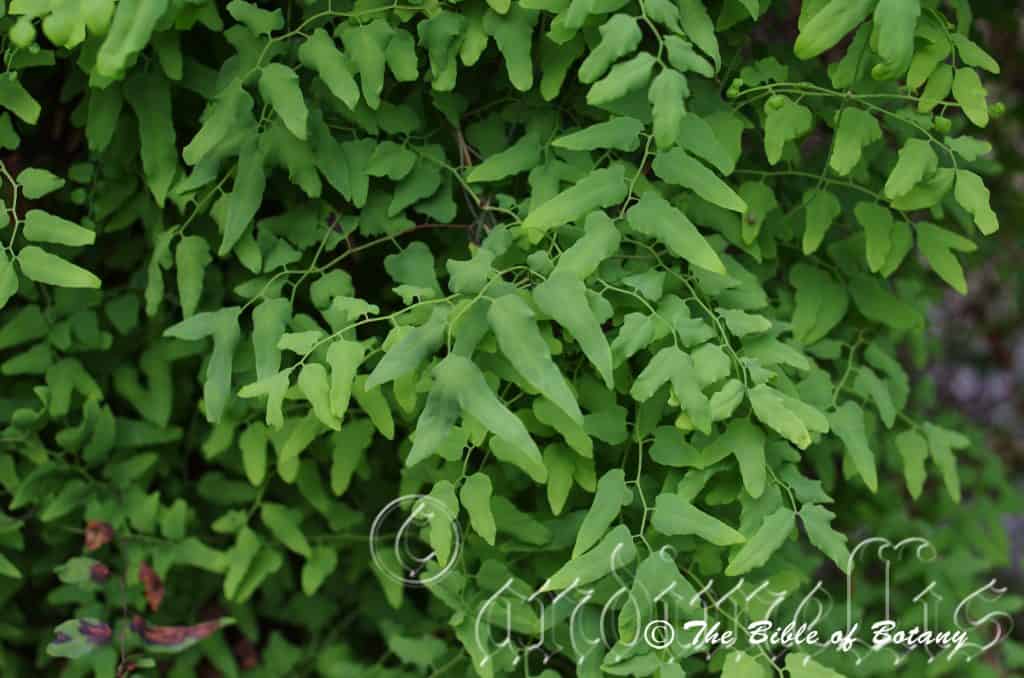
Capalaba Qld.
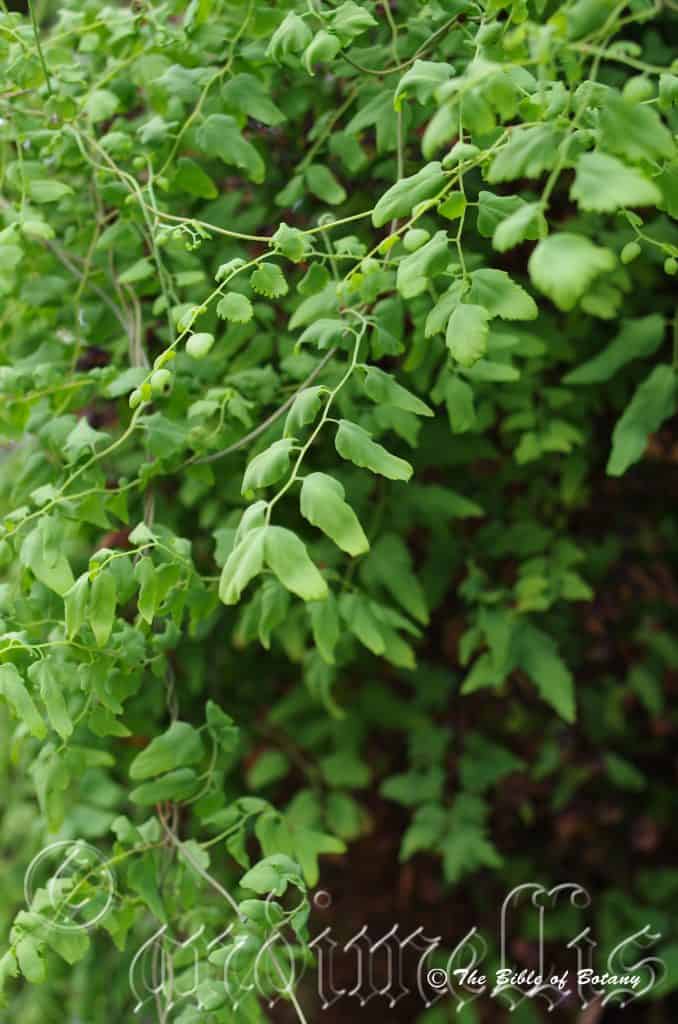
Capalaba Qld.
Lygodium microphyllum
Classification:
Division: Pteriodophyta
Class: Pteridospida
Order: Schizaeales
Family: Lygodiaceae
Genus: From Lygodes, which is Ancient Greek for twisting or willowy. It refers to the long thin rachis of the fronds, which twist from every node. Note: What appears to be a stem with several lateral fronds is actually a single frond originating from a, tuft near the surface of the ground. The fronds have been measured at over 15 meters on some of the tropical plants.
Specie: From Mikrós, which is Ancient Greek for small or very small and Phullon/Phýllon, which is Ancient Greek for a leaf. It refers fronds, leaves or phyllodes, which are the smallest when compared to other species in the genus.
Sub specie:
Common Name: Small Leaf Climbing Fern.
Distribution
Lygodium microphyllum is found north and east from Broom on the coast and the Kimberley Range to the Ord River in Western Australia and in the northern section of the Northern Territory’s west coast to Boodjamulla National Park (Home Hill) in far north western Queensland.
In the east it is found south from Cape York Peninsular to Innisfail on the eastern side of the Great Dividing Range in far north Queensland and from Rockhampton and Bundaberg south to Coffs Harbour in coastal New South Wales.
https://avh.ala.org.au/occurrences/search?taxa=Lygodium+microphyllum#tab_mapView
Habitat Aspect Climate:
Lygodium microphyllum prefers full shade to filtered light or even dappled light is favoured by this climbing fern. It is most commonly found growing in littoral rainforests or mountain forests close to the coast in shallow depressions or in coastal Melaleuca swamps. The altitude ranges from 5 meters ASL to 1100 meters ASL
The temperatures range from 0 degrees in August to 38 degrees in January.
The rainfalls range from lows of 800mm to an average of 3200mm however the plants derive additional moisture through capillary action from water lying deeper below the dry creek beds and marshes.
Soil Requirements:
Lygodium microphylum prefers to grow on better quality sandy loams or light sandy clays to medium silts or at times heavy silts. The soils are usually derived from decomposed sandstones, granites, brown basalts, black basalts, shales, metamorphic rocks, alluvial flats or accumulated peaty sands. The soils pH. ranges from 4.5pH to 7pH. It tolerates water logged soils and prefers seasonal water logged soils where the plants are partly submerged for short periods. Non saline soils to moderately saline soils are tolerated.
Height & Spread:
Wild Plants: 12m x 15m to 3mm x 5mm.
Characteristics:
Lygodium microphyllum main stems are long and wiry. They can measure 22m to 25m in length by 0.5mm to 2.5mm in diameter. The stems are black at the base becoming blue-green to green towards the apex. Lateral branches are spaced evenly along the main stem. The secondary rachis measures 130mm to 180mm in length and are blue-green to green. The juvenile and green rachis are glabrous to sparsely covered in white pubescent hairs.. The plants climb by means of a clockwise twining action.
Lygodium microphyllum 4 to 11 pinnules are alternate. The secondary rachis measures 110mm to 150mm. The petioles measure 5mm to 8mm in length decreasing in length as they approach the terminal pinnules. The ovate sterile pinnules measure 20mm to 50mm in length by 10mm to 22mm wide near the base. The base is truncated, hastate while the apex is obtuse. The margin is finely crenate while the concolourous laminas are and a pale blue-green. The fertile pinnules measure 12mm to 15mm in length by 10mm to 12mm in width. The ovoid sporangia are located along the lobed margins. The lobes measure 1mm to 4mm in length.
Wildlife:
Lygodium microphyllum’s fronds are eaten by the pale blue moth, Austromusotima camptozonale. The moth is under investigation in California to help control Lygodium microphyllum as it is classed as a noxious weed in that state.
http://lepidoptera.butterflyhouse.com.au/muso/camptozonale.html
Cultivation:
Lygodium microphyllum is a magnificent climbing fern for a wet area in semi shade in small to large gardens in warm temperate, sub tropical and tropical zones. It is suitable for bright courtyards or in the garden where moist bright conditions prevail. They can handle temperatures down to at least minus 4 degrees with very little burning
Lygodium microphyllum is an excellent basket plant when planted in a good mix where consistent watering is not a problem. Drip fed plants on a timer respond very well.
Lygodium microphyllum will establish themselves from small plants and will reach their full potential in around 3 to 4 years. There only requirement is a humid microclimate. In the garden in cool spots they will handle full sun without burning provided they do not dry out. Plants that do dry out can be fully rejuvenated very quickly by cutting back hard and soaking the ground with our recommended fertilizing program.
It makes an ideal plants in small gardens around pools or ponds where it can be given room to display its fronds. Trellis’s or old stumps can be used that are 2 to 3 square meters are ideal.
Propagation:
Spores: Lygodium microphyllum is easy to grow so expect it to be a problem if you are trying to grow other ferns. The spore is very dominant. All fern fronds collected from other specie will need to be washed methodically if this plant is grown in the vicinity of other ferns.
All ferns that are declared rare, vulnerable or endangered are protected by Federal and State Laws and must not be removed from the wild unless you are a land developer, mining company or main Roads department etc. This includes bulbs, roots, leaves and flowers. No part of any plant can be removed from Federal, State or Local Government land without the prior permission of the authority and this includes the spore.
Most people are put off at the thought of growing ferns from spore. Like all plants that produce their offspring from seed or spore the methods are basically the same. Remember nature has been doing this for millions of years and has been very successful. I have had excellent results growing over 200 different species of Australian ferns so don’t be afraid. Give it a go.
Step 1. Select spore from the fern fronds. Wait until the fern is just starting to release its spore. Rinse the fronds under clean running water and dry. This is to wash off any other spores from rogue ferns that may have settled onto the fronds. (There is nothing worse than having common brake or common soft bracken contaminating a prized tree fern or epiphyte.)
Step 2. Place the dry fronds in a clean brown paper bag and keep them in a cool dark place like the linen closet for about a week to ten days before you are ready to sow the spore. The exception to this rule applies to ferns, which produce green spores. These must be sown immediately that they are released. Todea Barbara is a good example of a fern, which produces green spore.
Step 3. Take a large ice cream container, a small ice cream container and a clean clear plastic bag large enough to seal the large ice cream container and three or four milk bottle tops.
Step 4. Punch or drill 6 to 10 5mm holes in the bottom of the small ice cream container.
Step 5. Wash both containers, tops and plastic bag so that they are very clean and sterile.
Step 6. Use a clean fine seed raising mi. We used 30mm fine sand, 30mm peat and 30mm perlite and 10mm vermiculite. We used crushed basalt, crusher dust and peat in a 50:50 ratio for epiphytes. Moisten the mix enough that water does not run out when the mix is squeezed between the fingers.
Step 7. Place the moisten mix (Enough to half fill the small ice cream container) in the microwave oven with a large glass of water for 7 or 8 minutes, until the water is boiling. Allow them to cool in the oven. You will need the water later so do not tip it out.
Step 8. Take the brown paper bag out of the linen closet. Shake the bag and remove the fronds. You should have a yellow, brown, black or rarely greenish brown or ochre powder or very fine, small round pin head size spore depending on the specie involved.
Step 9. Remove the mixture from the oven once it has cooled and place it in the small ice cream container and level.
Step 10. Sprinkle the spore sparsely over the mixture in the small ice cream container.
Step 11. Place the milk bottle tops in the large ice cream container with the flat surface facing down. Place the small ice cream container in the large ice cream container so that it is sitting on the milk bottle tops.
Step 12. Remove the water from the microwave and pour it into the larger ice cream container so there is 25mm to 30mm of water in the bottom.
Step 13. Place the ice cream containers in the plastic bag and seal. Step 14. Place the contents and bag in a warm shady place preferably 50mm to 70mm shade depending on the specie. Shade houses and some window sills are ideal.
Step 15. The surface should turn green within a week to two weeks. The prothallus will then develop. From the prthalus the first true fronds will appear. Wait until the ferns are 20mm to 35mm in height before you attempt to transplant them. Once they are ready open the bag up slightly and allow the air to flow around the little ferns. Every 3 to 5 days open the bag a little further so the ferns get use to their new environment. Allow them a week to two weeks to harden off before you transplant them following the removal of the plastic bag. Carefully prick them out into 50mm standard squat tubes as you would any seedling.
Do not try to transplant them as single plants as they are still a little delicate still.
Once the smaller ones again reach 50mm to 70mm you may wish to divide the stronger and hardier individual plants into smaller clumps in 100mm squat pots.
Step 16. We fertilized with seaweed, fish emulsion or organic chicken pellets soaked in water on an alternate basis until established. Fertilize every two months for one year even when in the ground.
Further Comments from Readers:
“Hi reader, it seems you use The Bible of Botany a lot. That’s great as we have great pleasure in bringing it to you! It’s a little awkward for us to ask, but our first aim is to purchase land approximately 1,600 hectares to link several parcels of N.P. into one at The Pinnacles NSW Australia, but we need your help. We’re not salespeople. We’re amateur botanists who have dedicated over 30 years to saving the environment in a practical way. We depend on donations to reach our goal. If you donate just $5, the price of your coffee this Sunday, We can help to keep the planet alive in a real way and continue to bring you regular updates and features on Australian plants all in one Botanical Bible. Any support is greatly appreciated. Thank you.”
In the spirit of reconciliation we acknowledge the Bundjalung, Gumbaynggirr and Yaegl and all aboriginal nations throughout Australia and their connections to land, sea and community. We pay our respect to their Elders past, present and future for the pleasures we have gained.
Lyperanthus suaveolens
Classification:
Unranked: Monocots
Order: Asparagales
Family: Orcidaceae
Sub Family: Orcidoideae
Tribe: Diurideae
Genus: From Lyperos, which is Ancient Greek for mourning and ántha/ánthos, which are Ancient Greek for the male reproductive part of the flower or the flower. It refers to the fact that in the type species flowers turns black after anthesis or the blooms finish flowering and die.
Specie: From Suavis, which is Latin/French for sweetly scented. It refers to flowers, or at times the fruits, which have a delightfully non overpowering sweet scent.
Sub specie:
Common Name:
Distribution:
Lyperanthus suaveolens is found south from the Maryborough in central eastern Queensland to Bellarine Peninsula in southern Victoria. It is mainly found on the western slopes close to the Great Dividing Range and on the eastern side to the coast on the with an isolated population on the Cobar Peneplain and in Carnarvon National Park.
In Tasmania it is found from Bridport on the North east coast along the coast and adjacent ranges to Schooner Hill and Port Davey on the south west coast.
https://avh.ala.org.au/occurrences/search?taxa=Lyperanthus+suaveolens#tab_mapView
Habitat Aspect Climate:
Lyperanthus suaveolens prefers medium shade to dappled shade. It grows as an understory terrestrial orchid in open moist schlerophyll forests, in closed woodlands, woodland heaths or coastal heaths. Its altitude ranges from 5 meters ASL to 1020 meters ASL.
The temperatures range from minus 3 degrees in August to 36 degrees in January.
The rainfall ranges from lows of 500mm to 2000mm average per annum.
Soil Requirements:
Lyperanthus suaveolens prefers poor to better quality peaty sands, sandy loams to light gritty fatty sandy loams. The soils are usually derived from decomposed sandstone over sandstone, granite sands or accumulated peaty sands behind the back dunes or at times light sandy alluviums. The soils pH ranges from 5pH to 6.5pH are preferred where the water can drain freely. It does not tolerate water logged soils. Non saline soils to slightly saline soils are tolerated.
Height & Spread:
Wild Plants: 0.18m to 0.44m by 0.03m to 0.05m.
Characteristics:
Lyperanthus suaveolens grows as a slender terrestrial orchid.
It has a single, erect broad linear, linear to narrow lanceolate leaf. The leaves measure 120mm to 260mm in length by 10mm to 20mm in width. The bases are clasping while the apexes are acute or obtuse. The discolourous, coriaceous leaves are deep green and glabrous on the upper laminas while the lower laminas are paler or greenish white. The laminas are flat while the margins are narrowly reflexed.
The inflorescences is a long stiff, erect spike. The spikes usually have 2 to 8 individual flowers. The erect spikes measure 200mm to 450mm in length. The ovary which appears to be part of the pedicel is slightly swollen at the base. The 1 to 3 loose, linear stem bracts measure 25mm to 35mm in length. The yellowish-brown, brown, deep reddish-brown or maroon-brown flowers measure 50mm to 60mm in length by 25mm to 30mm in width. The large lanceolate bracts are reddish-brown to maroon-brown externally and are greenish tinged reddish internally. The bract measures 14mm to 18mm in length by 5mm to 8mm in width.
The dorsal sepal is broad lanceolate with an acuminate apex while the margins are entire and glabrous. The deep blackish-maroon dorsal sepal is incurved closely over the column. The narrow lanceolate dorsal sepal measures 17mm to 22mm in length by 5mm to 8mm in width.
The linear, lateral sepals are deep reddish-maroon to burgundy, glabrous, with acute apexes. The decline to decline inward curving lateral sepals are incurved with entire margins and measure 15mm to 20mm in length by 2.5mm to 3mm in width.
The linear lateral petals are deep reddish-maroon to burgundy, glabrous, with acute apexes. The erect to erect spreading lateral petals are incurved with entire margins and measure 15mm to 20mm in length by 2.5mm to 3mm in width.
The gently decurving oblong labellum is trilobed and measures 9mm to 11mm in length by 0.9mm to 1.1mm in width. The erect basal section is white both externally and internally and glabrous. The 2 short erect entire columns embrace the 2 deep maroon-burgundy lateral lobes. The labellum is yellow and decurves downwards onto itself and is covered in clear papillose lumps. The lamina calli is sessile, rounded or flat and overlapping, covering most of the upper surface. The pastel green to pale green column is tubular and measures 5mm to 7mm in length. The acute whitish anther has 4 pollinia. The flowers appear from August to November and are sweetly scented in warm humid conditions.
The ellipsoidal capsules are nodding and turn pale grey-brown when ripe.
Wildlife:
Lyperanthus suaveolens’s wildlife is unknown to the author.
Cultivation:
Lyperanthus suaveolens is an unusual terrestrial orchid to grow in the garden. If you are lucky enough to have them growing it is worthwhile preserving with in situation. The best method to establish a colony is to mark the area with stakes where the plants are known to occur. Use local mulch to lightly top dress the area on an annual basis.
Orchid enthusiasts have found this orchid to be less temperamental than most ground orchids to keep in the bush house. Lyperanthus suaveolens can be grown in pots in a freely draining, sandy mix with organic matter incorporated. It requires good air circulation in a protected position beneath 30mm to 50mm shade cloth during the growing period from mid-winter to late summer. During the growing period the plants must be kept moist not wet at all times. After the leaves have died back to the tuber, the pots should be allowed to dry out completely and not watered until the following July.
Propagation:
Seeds: Lyperanthus suaveolens seeds require treatment before sowing. Really Orchid seeds are meant for professionals with time, equipment and space. However if you wish to persevere then here are the basics and you are learning from an amateur. Once the orchids are large enough to handle treat them similarly to other ground orchids.
1. Obtain relevant materials
The first step in growing orchid from seed will be sourcing and having at the ready all materials that will be required in the propagation process.
This includes all of the following:
Unripe orchid seed capsule. If there are 2 capsules secure the second capsule immediately after the first capsule splits or if only one capsule as soon as it changes colour.
Orchid gelling medium with agar which can be purchased from an orchid society or a specialist nursery.
Distilled water
Cooking pot
Spoon
Oven-safe glass or polypropylene containers with lids
Sealable bags
Clean, sterilized cutting board
Rubber gloves
Paper towels
Tweezers or forceps
70 percent ethanol
Bleach
Scalpel or sharp knife
Planting pot
Orchid compost
Length of wire metal
Plastic spray bottle.
deep petri dishes or sterile jars.
2. Prepare agar medium
The agar medium is a special orchid gelling mixture that distilled water will be added to distilled water.
To prepare the medium, mix equal parts of orchid gelling medium with distilled water in a cooking pot.
Place the pot on a stove and bring the mixture to boil for while stirring continuously for two minutes.
Pour the mixture into the petri dishes glass or propylene containers while ensuring not to fill the containers above 20 percent of their volume.
Loosely replace the lids to the containers. Sterilize the containers by heating them up in a microwave oven for between 2 to 3 minutes.
Spray 70 percent ethanol into a sealable bag to create a sterile environment. Transfer the heated containers into the sealable bag.
Allow the containers to cool a bit before tightening their lids and then sealing the bag. Leave the containers to stand for a few days until the mixture solidifies.
3. Prepare seed capsule and work surface
Place an open pot of water on a stove and bring to boil. Place the cutting board in the oven and sterilize.
Put on rubber gloves and sterilize the forceps, and scalpel with 70 percent ethanol.
Insert the seed capsule into a bowel filled with bleach for about fifteen minutes.
Sterilize seed capsule again with 70 percent ethanol and place on grill.
Using the sterilized scalpel, cut open the seed capsule to reveal the seeds. Using a scalpel or sharp knife, scrape out the seeds from the capsule unto an ethanol soaked paper towel.
4. Flasking of the seed
Take out the petri dishes or glass jars containers holding the agar medium. Over the steam, open up the containers and transfer seeds from the ethanol soaked paper towel into the individual containers using the sterilized forceps.
The amount of seeds will determine the number of containers required. Replace the lid of the containers and place them on a window sill that receives indirect sunlight.
5. Wait and exercise patience
All that can be done at this point is to wait until the seeds germinate. The amount of time that this might take varies and is dependent on the particular species.
Generally, the time can range from a few months to a few years. During this period of waiting, ensure the containers are free from contamination to ensure that germination is not disrupted.
6. Emergence of protocorms
Protocorms are tuber-shaped bodies with rhizoids that are produced by the young seedlings of various orchids. Protocorms represent the embryonic form of the orchid plant.
Their emergence after the period of waiting at an affirmation that everything in the propagation process is on track.
7. Transflask orchid seedlings is done after they have developed roots
Upon the emergence of the protocorms, consistently observe the growth of the seedlings. At the point when the seedlings appear to overcrowd the flask, transflasking should be carried out, typically within 30 and 60 days.
* This is done by removing individual seedlings using sterilized tweezers from the original containers and placing them in new containers also filled, in a proportion similar to the original, with agar medium. 6 to 8 in a standard petri dish or 1or 2 to a test tube
8. Transplant seedlings into planting pots
On the presumption that there are no disruptions to the plant growth, the seedlings will eventually outgrow the containers.
At this point, they are to be transplanted into planting pots. A good rule of thumb to determine when they are ready to be transplanted is when the seedlings have developed roots that have grown up to the length of one-quarter of an inch.
To transplant, prepare a planting pot or other container for receiving the seedling by majorly filling it up with coarse fir bark and possibly some slightly moist orchid compost mixture containing perlite, fine charcoal, redwood bark shavings, etc.
To extract the seedlings, submerge the containers in warm water to help loosen the agar gel.
Once the agar medium is softened, twist a piece of metal to form a loop and in turn, use it to carefully pull out the seedlings from the container. It is best done if the agar and seedling can be removed together.
The seedlings can be further rinsed in lukewarm water to remove any excess agar mixture still stuck to them.
Following this, the seedlings can now be planted into the prepared pot with at least 50mm of space between each individual seedling.
9. Positioning the orchid
The seedling once fully transplanted should be placed in a location that is warm with good indirect sun light.
Slowly position the pots into an area that closely assimilates the conditions it will be growing under.
The choice as to whether the plant should be exposed to full sun or in direct sunlight will be dependent on the particular orchid specie.
10. Subsequent care of the plant
After the first week, the seedling can be misted several times a day and watered just once a week.
A guide in watering the plant will be using the dryness of the fir back that is, water the plant until the fir back is completely moistened and wait till it has completely dried out before watering again.
Do not fertilize until the seedlings have fully established themselves.
Further Comments from Readers:
“Hi reader, it seems you use The Bible of Botany a lot. That’s great as we have great pleasure in bringing it to you! It’s a little awkward for us to ask, but our first aim is to purchase land approximately 1,600 hectares to link several parcels of N.P. into one at The Pinnacles NSW Australia, but we need your help. We’re not salespeople. We’re amateur botanists who have dedicated over 30 years to saving the environment in a practical way. We depend on donations to reach our goal. If you donate just $5, the price of your coffee this Sunday, We can help to keep the planet alive in a real way and continue to bring you regular updates and features on Australian plants all in one Botanical Bible. Any support is greatly appreciated. Thank you.”
In the spirit of reconciliation we acknowledge the Bundjalung, Gumbaynggirr and Yaegl and all aboriginal nations throughout Australia and their connections to land, sea and community. We pay our respect to their Elders past, present and future for the pleasures we have gained.
Lysimachia japonica
Classification:
Unranked: Eudicots
Unranked: Asterids
Order: Ericales
Family: Myrsinaceae
Genus: Is named in honour of King Lysimachos; 360BC-281BC, who was the Greek successor of Alexander the Great. It refers to plants, which were fed to his livestock to calm them down.
Specie: From Japanese, which is Latinized for Japan. It refers to plants, which were first discovered in Japan.
Sub species:
Common Name: Creeping Loosestrife
Distribution:
Lysimachia japonica is found south from Taroom and Kyogle in far north eastern New South Wales to Gloucester and further south from Tilba Tilba to Jellat in southern New South Wales.
It is also found around Lake Tyers near Orbost in north eastern Victoria. On the east coast it is mainly found on the Western Slopes on and east of the Great Dividing Range.
https://avh.ala.org.au/occurrences/search?taxa=Lysimachia+japonica#tab_mapView
Habitat Aspect Climate:
Lysimachia japonica prefers light dappled shade to full sun. It usually grows on the margins of rainforest, in moist Eucalyptus forests along creeks and stream banks near swamps, moist heaths or natural shallow depressions. The northern population’s altitude ranges from 60 meters ASL to 380 meters ASL while the 2 southern populations altitude ranges from 2 meters ASL to 10 meters ASL.
The temperatures range from 0 degrees in August to 38 degrees in January.
The rainfalls range from lows of 550mm to an average of 2000mm.
Soil Requirements:
Lysimachia japonica prefers to grow on sandy loams to medium clays or light to heavy silts. The soils are usually derived from better quality decomposed granites or alluvial silts. The soils pH. ranges from 5.5pH to 6.5pH. It tolerates water logged soils to very wet soils. Non saline soils to moderately saline soils are tolerated.
Height & Spread:
Wild Plants: 0.1m to 0.18m by 0.5m to 1m.
Characteristics:
Lysimachia japonica is a trailing stoloniferous stems are mid green, reddish or reddish-purple. The stems root easily from the lower nodes especially after prolonged wet weather. The internodes measure 120mm to 180mm in length and are covered in retrorse, segmented pilose, hyaline hairs.
The opposite ovate to broad ovate or spathulate leaves measure 8mm to 17mm in length by 5mm to 15mm in width. The petioles are sparsely to moderately covered in hyaline segmented hirsute hairs and measure 2mm to 10mm in length. The bases are rounded to truncate attenuate while the apexes are broad acute, acuminate or obtuse. The discolourous laminas are mid grass-green to deep green, semi glossy or dull and sparsely covered in hyaline segmented hirsute hairs on the upper laminas while the lower laminas are paler and moderately covered in hyaline segmented hirsute hairs and red or reddish-purple glandular dots. The laminas are flat or recurve slightly from the mid vein to the margins and are straight or gently decurve on the apical half. The margins are entire. The mid vein is absent. There are 12 to 20 very fine longitudinal veins.
The inflorescences are born solitary or very rarely in pairs from the leaf axils. The petioles are sparsely to moderately covered in hyaline segmented hirsute hairs and measure 1.5mm to 5mm in length. The flowers measure 5mm to 8mm in diameter. The 5 lanceolate sepals sparsely to moderately covered in hyaline segmented hirsute hairs and deep reddish-purple spots. The sepals measure 4mm to 7mm in length. The 5 bright yellow broad lanceolate to broad elliptical petals are glabrous and measure 3.5mm to 6mm in length
The 5 glabrous filaments are yellow and measure 3mm to 3.5mm in length while the yellow obloidal anthers are dorsifixed with a truncate base and obtuse apex. The yellow pistil measures 3.5mm to 4mm in length. The dome ovary is yellow-green and measures 1.2mm to 1.4mm in length and 1.2mm to 1.4mm in diameter.
The fruits are small globose to sub globose capsules. The pale green capsules turn pale grey when ripe and are sparsely to moderately covered in minute pubescent hairs around the apex. The calyx is persistent. The capsules measure 2mm to 4.2mm in length by 1mm to 2.4mm in diameter. The capsules dehiscent from the apex into 5 separate valves. Each valve contains many minute black orbicular seeds.
Wildlife:
Lysimachia japonica’s wildlife is unknown to the author.
Cultivation:
Lysimachia japonica make excellent bog rockery or wet bank stabilizing plants. It always look green and fresh especially where adequate ground moisture is retained whether it is grown in shade or full sun. It is very suitable on water logged acid soils. It is most suitable for small and medium gardens close to the coast in temperate, sub tropical gardens or tropical gardens. As a garden subject it will grow from 0.05m to 0.15m by 1m to 1.2m wide. It is cold tolerant to temperatures at least as low as 0 degrees once established but resent prolonged cold winters.
It does well around shaded swimming pools, courtyards, besides pathways, shady rockeries, along sandy clay banks or along drive ways or adjacent to natural bush gardens. Mass plantings of 5 or more plants even in small areas; really do the plants justification especially when it is in flower. Small fish or frog ponds will benefit from Lysimachia japonica trailing stoloniferous stems especially when planted between widely spaced vertical rushes like small Juncea specie.
It looks particularly good when planted courtyards or other confined spaces against low walls or poked between rocks, boulders or logs. Using rocks and small boulders can make the pool or a water feature appear like an oasis while placed amongst stepping stones and paving bricks add another dimension. The leaves and flowers can make a great start for the larger wallum, mangrove or swamp setting when planted at the edge, in front or in a small opening. Here they could be planted beneath a bench or garden seat to give the feeling that you are being immersed in nature
If companion plants are sought then the choice of plants to use either side is limited only by size of the area to be landscaped and the size of the other plants as they should be no more than 300mm in height to and stepping up in size as you move back from the front. This will emphasize Lysimachia japonica breadth and lack of height making the garden look larger.
It will break up horizontal lines along driveway but make them look flat so mix it taller annuals or perennials and use reds and blues to give additional height. They can be used to great affect where a dry creek bed is the theme by using them to mark out the banks provided there banks are moist to wet. They can be used to stabilize banks along creeks and streams or to help soak up water in wet areas.
Propagation:
Seeds: Lysimachia japonica seeds can be sown directly into a seed raising mix. Cover the seeds with 5mm to 10mm of fine weed free mulch and keep moist. Place the tray in a warm sunny position. When the seedlings are 30mm to 50mm tall, prick them out and plant them into 50mm native tubes using a good organic mix.
Once the seedlings reach 100mm to 150mm in height they can be planted out into their permanent position.
Cuttings: Use 50mm to 70mm long herbaceous cuttings taken from October to early April or later if you are in a frost free area. Vigorously growing plants of the form you desire should be used when growing from cuttings. Remove the leaves from the lower one-third to one-half of the stem being careful not to tear the stem. A rooting hormone is not required as the cuttings strike easily and within a couple of weeks. Place the cuttings in a warm semi shaded position preferably under 50mm shade cloth.
Fertilize using seaweed, fish emulsion or organic chicken pellets soaked in water on an alternate basis. Fertilize every two months until the plants are established then twice annually in early September or March to maintain health, vitality and better flowering.
Further Comments from Readers:
“Hi reader, it seems you use The Bible of Botany a lot. That’s great as we have great pleasure in bringing it to you! It’s a little awkward for us to ask, but our first aim is to purchase land approximately 1,600 hectares to link several parcels of N.P. into one at The Pinnacles NSW Australia, but we need your help. We’re not salespeople. We’re amateur botanists who have dedicated over 30 years to saving the environment in a practical way. We depend on donations to reach our goal. If you donate just $5, the price of your coffee this Sunday, We can help to keep the planet alive in a real way and continue to bring you regular updates and features on Australian plants all in one Botanical Bible. Any support is greatly appreciated. Thank you.”
In the spirit of reconciliation we acknowledge the Bundjalung, Gumbaynggirr and Yaegl and all aboriginal nations throughout Australia and their connections to land, sea and community. We pay our respect to their Elders past, present and future for the pleasures we have gained.
Lythrum hyssopifolia
Classification:
Unranked: Eudicots
Unranked: Asterids
Order: Myrtales
Family: Lythraceae
Genus: From Lysism, which is Ancient Greek for to gore and to bleed or to be bloodied. It probably refers to its use in ancient times to assist in stopping bleeding of wounds. This is also notated as a use in Ancient Chinese herbal medicine doctrines.
Specie: From Hyssopus, which is Ancient Greek for an ancient herb and Folium, which is Latin for foliage. It refers to a leaves, which closely resemble the leaves of the Hyssopus genus that was named by Dioscorides.
Sub species:
Common Name: Hyssop Loosestrife.
Distribution:
Lythrum hyssopifolia is basically found south of a line from Mount Narryer Station in Western Australia to Mount Surprise and the Burdekin River in north eastern Queensland including the Bass Straight Islands and Tasmania along with Lord Howe Island and Norfolk Island. It is not found in the true deserts.
https://avh.ala.org.au/occurrences/search?taxa=Lythrum+hyssopifolia#tab_mapView
Habitat Aspect Climate:
Lythrum hyssopifolia prefers light dappled shade to full sun. It usually grows in moist open Eucalyptus forests, open woodlands along creeks, stream banks, especially seasonal creeks, gully banks near swamps, moist heaths or natural shallow depressions in arid areas. The altitude ranges from 3 meters ASL to 1500 meters ASL.
The temperatures range from 0 degrees in August to 40 degrees in January.
The rainfalls range from lows of 250mm to an average of 2400mm.
Soil Requirements:
Lythrum hyssopifolia prefers to grow on sandy loams to heavy clays or light to heavy silts. The soils are usually derived from better quality decomposed sandstones, granites brown basalts, black basalts, alluvial silts. The soils pH. ranges from 5pH to 7pH. It tolerates seasonal water logged soils that are free draining. Non saline soils to very saline soils are tolerated.
Height & Spread:
Wild Plants: 0.2m to 0.5m by 0.4m to 0.8m.
Characteristics:
Lythrum hyssopifolia grows as a procumbent or ascending annual with fleshy to succulent, glabrous stems. The stems are mid olive-green tinged pink or red, to pinkish-red.
The usually alternate or at times opposite linear to linear-lanceolate leaves measure 5mm to 25mm in length by 2mm to 6mm in width. The bases are tapering obtuse while the apexes are acute to broad acute or obtuse. The discolourous laminas are mid grass-green to deep grey-green, semi glossy or dull and glabrous on the upper laminas while the lower laminas are paler and dull. The laminas decurve gently from the mid vein to the margins almost revolute while the margins are entire. The mid vein is slightly prominent on the lower lamina and is not visible from the upper lamina.
The inflorescences are born solitary from the leaf axils. The pedicels measure 0.2mm to 0.4mm in length. The flowers are homostylous meaning all the stamens and pistils in every flower are exactly the same size. The hypanthium is measure 3mm in length. The usually 6 sepals are narrow triangular, membranous and measure 1mm to 1.5mm in length. The usually 6 pink, mauve to purple petals are paler near the base are obovate to elliptic and measure 1mm to 2mm in length. The usually 6 adjacent stamens measure 0.8mm in length. The flowers appear from September to April.
the fruits are small globose capsules. The capsules dehisce through 2 or 4 apical valves and measure 3mm to 4mm in length by 0.6mm to 1mm in diameter at the apex. The pale green tinged reddish, fleshy capsules turn reddish-grey when ripe.
Wildlife:
Lythrum hyssopifolia wildlife is unknown to the author.
Cultivation:
Lythrum hyssopifolia makes an excellent small rockery or fill in plant. They always look green and fresh especially where adequate ground moisture is retained whether it is grown in partial shade or full sun. It grows just as well on water problem, acid soils or dry slightly alkaline soils. It is most suitable for small and medium gardens close to the coast in cool temperate, sub tropical, tropical gardens and in semi-arid zones. As garden subjects they will grow from 0.1 meter to 0.25mm by 120mm to 250mm in diameter. It is cold tolerant to temperatures at least as low as minus 5 degrees once established.
It is most suitable for use around swimming pools, courtyards, besides pathways, shady rockeries, along sandy clay banks or along drive ways or adjacent to natural bush gardens. Mass plantings of 15 or more plants; even in small areas, really do the plants justification especially when it is in flower. Larger fish or frog ponds will benefit from Lythrum hyssopifolia bright pink flowers and prostrate growth. This can be greatly personified by planting small Juncea to the side or rear.
It looks particularly good when planted courtyards or other confined spaces against low walls or poked between rocks, boulders or logs. Using rocks and small boulders can make the pool or a water feature appear like an oasis while placed amongst stepping stones and paving bricks add another dimension. The leaves and flowers can make a great start for a small or medium wallum, mangrove or swamp setting when planted at the edge, in front or in a small opening. Here they could be planted beneath a bench or garden seat to give the feeling that you are being immersed in nature
If companion plants are sought then the choice of plants to use either side is limited only by size of the area to be landscaped and the size of the other plants as they should be no more than 300mm in height to and stepping up in size as you move back from the front.
Try mix plantings of Lythrum hyssopifolia with similar size plants with different leaf textures and flower colour and form for brilliance. Hibbertia linariifolia, Lysimachia japonica, Viola betonicifolia, Lechenaultia formosa and Lechenaultia biloba are a few that come to mind with vivid colour and texture.
Propagation:
Seeds: Lythrum hyssopifolia seeds can be sown directly into a seed raising mix. Cover the seeds with 5mm to 10mm of fine weed free mulch and keep moist. Place the tray in a warm sunny position. When the seedlings are 30mm to 50mm tall, prick them out and plant them into 50mm native tubes using a good organic mix.
Once the seedlings reach 100mm to 150mm in height they can be planted out into their permanent position.
Cuttings: Use 50mm to 70mm long herbaceous cuttings taken from October to early April or later if you are in a frost free area. Remove half the leaves from the bottom section being careful not to tear the bark.
1 Prepare the cutting mix by adding one third sharp clean river sand, one third peat and one third perlite. These ingredients are sterilize,
2 Select good material from non diseased plants,
3 Select semi green stems for cuttings. Look for a stem with two or three nodes,
4 Place the cutting on a flat, hard surface, and make a clean cut down one side of the cutting at the base for 10mm with a sharp sterile knife or razor blade. – This scarification of the node will increase the chances of roots emerging from this spot. Now remove all but one or two the leaves, leaving the apex leaves in tact. If the leaves are very large in proportion to the stem, cut off the apical halves.
5 Fill a saucer with water, and place a little medium strength rooting hormone into another container like a milk bottle top. Dip the node end of the cutting into the water and then into the rooting hormone. Tap off any excess hormone,
6 Use a small dipple stick or old pencil to poke a hole into the soilless potting mix. Ensure the hole is slightly larger than the stem diameter and be careful not to wipe the rooting hormone off the cuttings base, place the cuttings in a pattern ensuring the cuttings are not touching each other,
7 I like to place the pots in Plastic bags to help maintain temperature and moisture. Place in a semi shaded place like under 50mm shade cloth.
8 When the cuttings have struck, open the bag to allow air circulation for a few days to a week,
9 Once hardened off remove the cuttings from the bag and allow to further hardening for a few more days,
10 Transplant into a good potting mix to grow on.
Fertilize using seaweed, fish emulsion or organic chicken pellets soaked in water on an alternate basis. Fertilize every two months until the plants are established then twice annually in early September or March to maintain health, vitality and better flowering.
Further Comments from Readers:
“Hi reader, it seems you use The Bible of Botany a lot. That’s great as we have great pleasure in bringing it to you! It’s a little awkward for us to ask, but our first aim is to purchase land approximately 1,600 hectares to link several parcels of N.P. into one at The Pinnacles NSW Australia, but we need your help. We’re not salespeople. We’re amateur botanists who have dedicated over 30 years to saving the environment in a practical way. We depend on donations to reach our goal. If you donate just $5, the price of your coffee this Sunday, We can help to keep the planet alive in a real way and continue to bring you regular updates and features on Australian plants all in one Botanical Bible. Any support is greatly appreciated. Thank you.”
In the spirit of reconciliation we acknowledge the Bundjalung, Gumbaynggirr and Yaegl and all aboriginal nations throughout Australia and their connections to land, sea and community. We pay our respect to their Elders past, present and future for the pleasures we have gained.
Lythrum salicaria
Classification:
Unranked: Eudicots
Unranked: Asterids
Order: Myrtales
Family: Lythraceae
Genus: From Lysism, which is Ancient Greek for to gore and to bleed or to be bloodied. It probably refers to its use in ancient times to assist in stopping bleeding of wounds. This is also notated in Ancient Chinese herbal doctrines.
Specie: From Salix, which is Latin for the weeping willow and Caria, which is Latin for like or similar to. It may refer to the habitat being similar to that of the weeping willow as both prefer wet areas while the leaves of some species also resemble those of the weeping willow trees.
Sub specie: Lythrum salicari var. genuinum. From Genu?num, which is Latin for innate, natural, native or genuine or authentic. It often refers to plants, which are genuinely related to the species by showing all the normal characteristics of the species.
Sub specie: Lythrum salicaria var. glabrum. From Glabrum, which is Latin for glabrous or smooth and hairless. It refers to structures and organs, which have no scales or hairs and are glabrous compared to other sub species in the genus.
Sub specie: Lythrum salicaria var. gracilior. From Gracilis, which is Latin for slender. It refers to plants, which have an overall slender and graceful appearance.
Sub specie: Lythrum salicaria var. intermedium. From Inter/Intra, which is Latin for between or among and Mésos, which is Ancient Greek or Medium, which is Latin for half way or in a middle position. It refers to a characteristic which has a position somewhere in the middle.
Sub specie: Lythrum salicaria var. tomentosum. From T?ment?sum, which is Latin for to be covered in long down. It refers to plants, which have hairs that are longer, softer, wavier or more matted than the other sub species.
Sub specie: Lythrum salicaria var. vulgare. From Vulgarus, which is Latin for the common people. It refers to plants, which are very common in their habitat.
Common Name: Purple loosestrife.
Distribution:
The mapping of the individual varieties has not been completed at this stage.
Lythrum salicaria has a single population in Western Australia on the upper reaches of the Ord River near Halls Creek.
In South Australia it is found near Mount Marron and south from Mount Searle to Moro Gorge and from Adelaide to Lake Alexandrina then north along the Murray River to Berri.
In the east it is found south from Coolum Creek and Kilkivan in southern Queensland to Lake Macintyre near Millicent in south eastern South Australia. There are 3 disjunct populations further north in the Cungenella, Taroom and Abercorn districts.
In Tasmania it is found on the eastern half of the Island from the Kimberley Warm Springs in the north to Port Arthur on the south east coast.
https://avh.ala.org.au/occurrences/search?taxa=Lythrum+salicaria#tab_mapView
Habitat Aspect Climate:
Lythrum salicaria prefer light dappled shade to full sun. It usually grows in moist Eucalyptus forests, moist open woodlands along creeks and stream banks near swamps, moist heaths or natural shallow depressions. The altitude ranges from 10 meters ASL to 1200 meters ASL.
The temperatures range from minus 5 degrees in August to 40 degrees in January.
The rainfalls range from lows of 150mm to an average of 2100mm.
Soil Requirements:
Lythrum salicaria prefers to grow on sandy loams to medium clays and light to heavy silts. The soils are usually derived from better quality decomposed sandstones, granites, brown basalts, black basalts as alluvial deposits. The soils pH. ranges from 5pH to 7pH. It tolerates seasonal water logged soils that are free draining. Non saline soils to moderately saline soils are tolerated.
Height & Spread:
Wild Plants: 0.5m to 1m by 0.3m to 0.8m.
Characteristics:
Lythrum salicaria is a large rhizomatous perennial with erect stems. The stems are covered in white pulverulent hairs.
The leaves are usually opposite or at times in whirls of 3 and are narrow ovate to lanceolate. The leaves measure 17mm to 70mm in length by 3mm to 12mm in width. The bases are cordate to auriculate or at times rounded and clasping while the apexes are acute. The discolourous laminas are mid green to deep green, semi glossy or dull and covered in sparsely covered in white puberulent hairs on the upper laminas while the lower laminas are paler, dull and moderately covered in white puberulent hairs. The laminas are flat and straight or recurve slightly from the mid vein to the margins and decurve downwards from the base to the apex or only on the apical half while the margins are entire. The mid vein is strongly prominent while the lateral veins are slightly prominent on the lower lamina and are clearly visible from the upper lamina.
The inflorescences are born clusters from the leaf axils. The leaves reduce in size along the flowering spike. The flowers are heterostylous with 3 different forms. The hypanthia measure 4mm to 5mm in length. The calyx and 5 or 6 lobes are deep green or deep maroon-red, narrow triangular, membranous and measure 5mm to 7.5mm including the 2mm to 2.5mm lobes. The 5 or 6 deep pink to purple petals are obovate and measure 7mm to 10mm in length.
The 12 stamens are variable in length as is the pistil from flower to flower even in the same cluster.
The fruits are small globose capsules. The capsules dehisce through 2 valves. The pale green tinged reddish, fleshy capsules turn reddish-grey when ripe.
Wildlife:
Lythrum salicaria‘s wildlife is unknown to the author.
Cultivation:
Lythrum salicaria makes an excellent medium to large rockery or bank stabilizer plants. It always looks green and fresh especially where adequate ground moisture is retained whether it is grown in shade or full sun. It is very suitable on moist acid soils in small, medium and large gardens close to the coast in sub tropical gardens or tropical gardens. It would be worthwhile trying in semi-arid zones where adequate water can be guaranteed. As garden subjects it grows from 0.8 meters to 1 meter by 0.5 meters to 0.8 meters in diameter.
It is most suitable for use around swimming pools, courtyards, besides pathways, shady rockeries, along sandy clay banks or along drive ways or adjacent to natural bush gardens. Mass plantings of 15 or more plants; even in small areas, really do the plants justification especially when it is in flower. Larger fish or frog ponds will benefit from Lythrum salicaria bright purple flowers and narrow erect growth. This can be greatly personified by planting small yellow or white flowering plants in the foreground or to the sides.
It looks particularly startling when planted in courtyards or other confined spaces against low walls. Using rocks and small boulders can make the pool or a water feature appear like an oasis while placed amongst stepping stones and paving bricks add another dimension. The leaves and flowers can make a great start for a medium to large wallum, mangrove or swamp setting when planted at the edge, in front or in small openings to the rear. Here they could be planted next to a bench or garden seats to give the feeling that you are being immersed in nature.
If companion plants are sought then the choice of plants to use either side is limited only by size of the area to be landscaped and the size of the other plants as they should be no more than 300mm in height to and stepping up in size as you move back from the front. This will emphasize Lythrum salicaria breadth and lack of height making the garden look larger.
Try mix plantings of Lythrum salicaria with similar size plants with different leaf textures and flower colour and form for brilliance. Hibbertia linariifolia, Lysimachia japonica, Actinotus helianthi, Leptospermum polygalifolia var. cardwell and Eriostemon myoporoides are a few that come to mind with vivid colour and texture.
Propagation:
Seeds: Lythrum salicaria seeds can be sown directly into a seed raising mix. Cover the seeds with 5mm to 10mm of fine weed free mulch and keep moist. Place the tray in a warm sunny position. When the seedlings are 30mm to 50mm tall, prick them out and plant them into 50mm native tubes using a good organic mix.
Once the seedlings reach 100mm to 150mm in height they can be planted out into their permanent position.
Cuttings: Use 70mm to 100mm long semi hardwood cuttings prepared from partially mature wood of the current season’s growth, just after a flush of growth. Take the cuttings at any time of the year if you are in a frost free area. Take the cuttings when wood is reasonably firm and the leaves of mature size. Remove half the leaves from the bottom section being careful not to tear the bark. Take a 10mm slice off the bark from the bottom of the cutting on one side. Use a weak rooting hormone, dip the cutting in and place the cutting in a moist sterile seed raising mix using a dipple stick. When the cuttings have obviously struck and have developed good roots treat them as for seedlings.
Further Comments from Readers:
“Hi reader, it seems you use The Bible of Botany a lot. That’s great as we have great pleasure in bringing it to you! It’s a little awkward for us to ask, but our first aim is to purchase land approximately 1,600 hectares to link several parcels of N.P. into one at The Pinnacles NSW Australia, but we need your help. We’re not salespeople. We’re amateur botanists who have dedicated over 30 years to saving the environment in a practical way. We depend on donations to reach our goal. If you donate just $5, the price of your coffee this Sunday, We can help to keep the planet alive in a real way and continue to bring you regular updates and features on Australian plants all in one Botanical Bible. Any support is greatly appreciated. Thank you.”
In the spirit of reconciliation we acknowledge the Bundjalung, Gumbaynggirr and Yaegl and all aboriginal nations throughout Australia and their connections to land, sea and community. We pay our respect to their Elders past, present and future for the pleasures we have gained.